My most current blog entry:
Entries in Castle (21)
The Outer Hebrides
 Sunday, June 7, 2020 at 6:44PM
Sunday, June 7, 2020 at 6:44PM
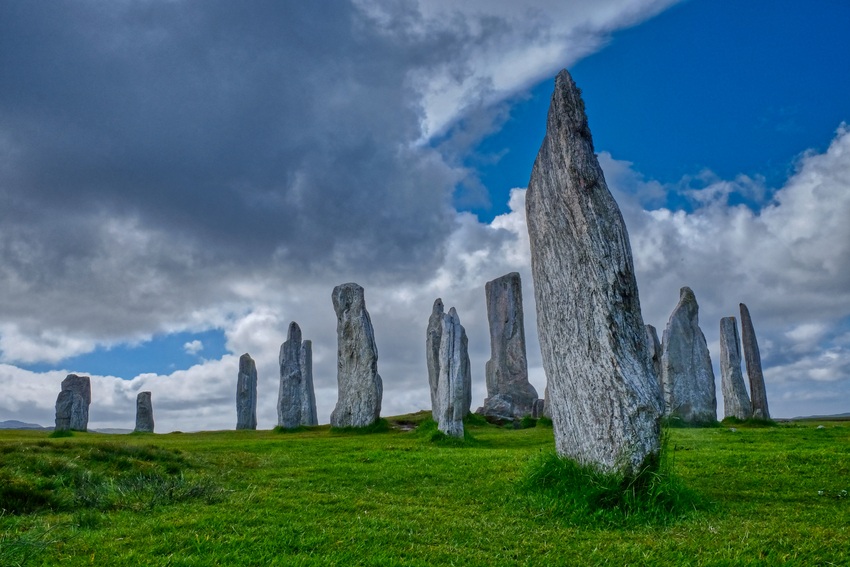 The Outer Hebrides are filled with archeological wonders!
The Outer Hebrides are filled with archeological wonders!
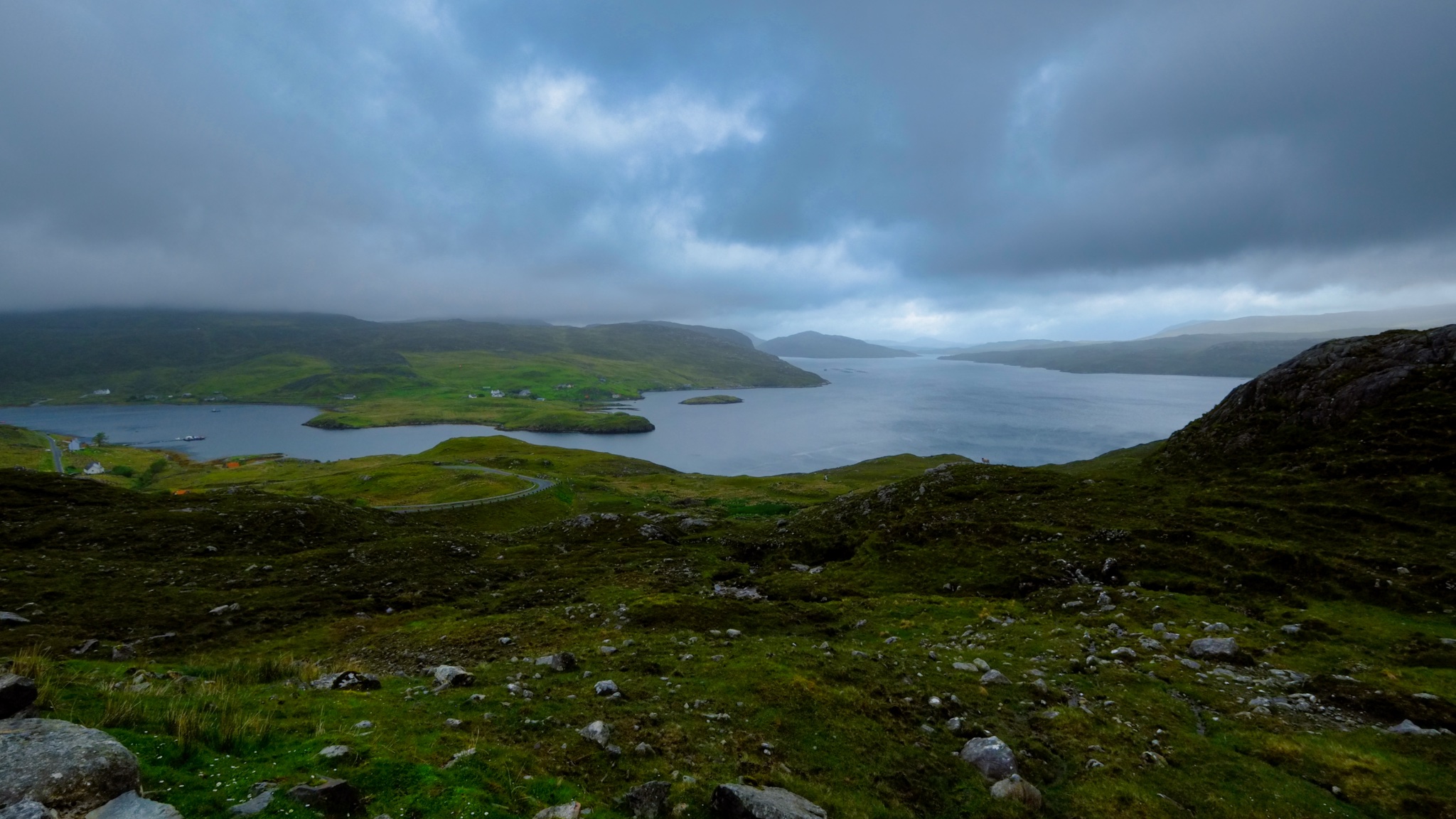
Magnificent views around every corner of the winding single track roads!
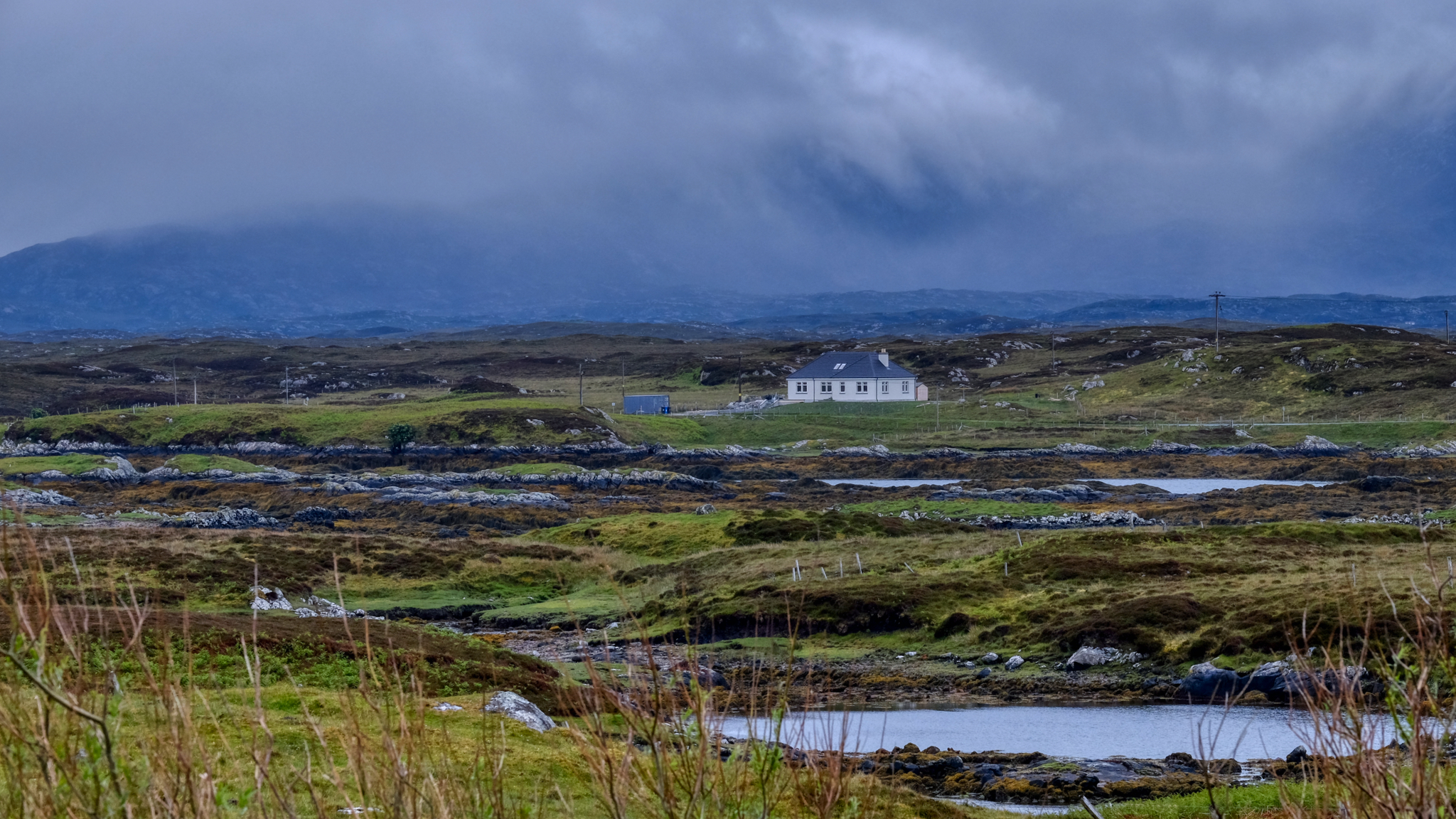 Otherworldly scenes . . .
Otherworldly scenes . . .
-----------------------------------------------------
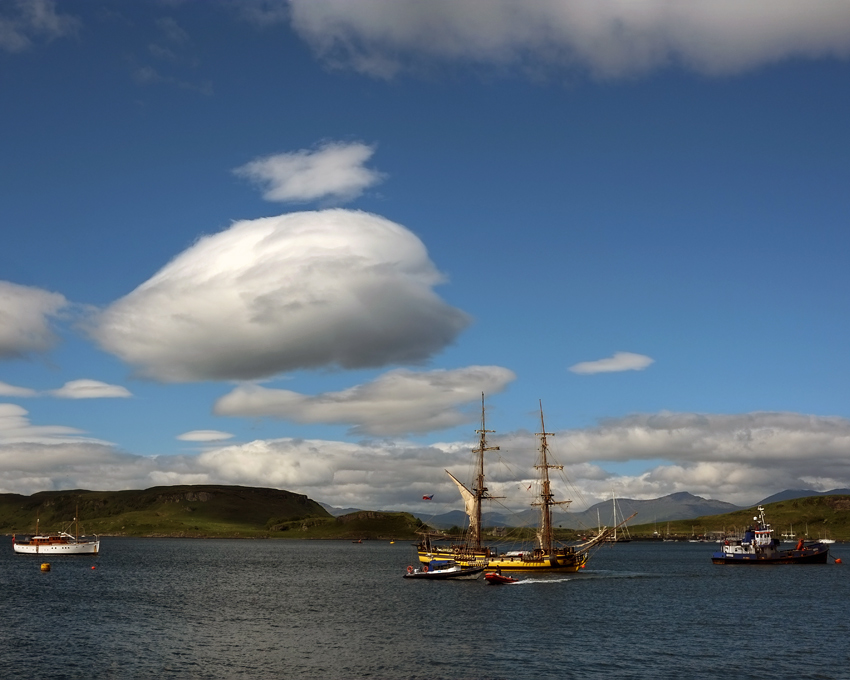
Our journey from the mainland of Scotland began on a fine late June day in Oban harbour.
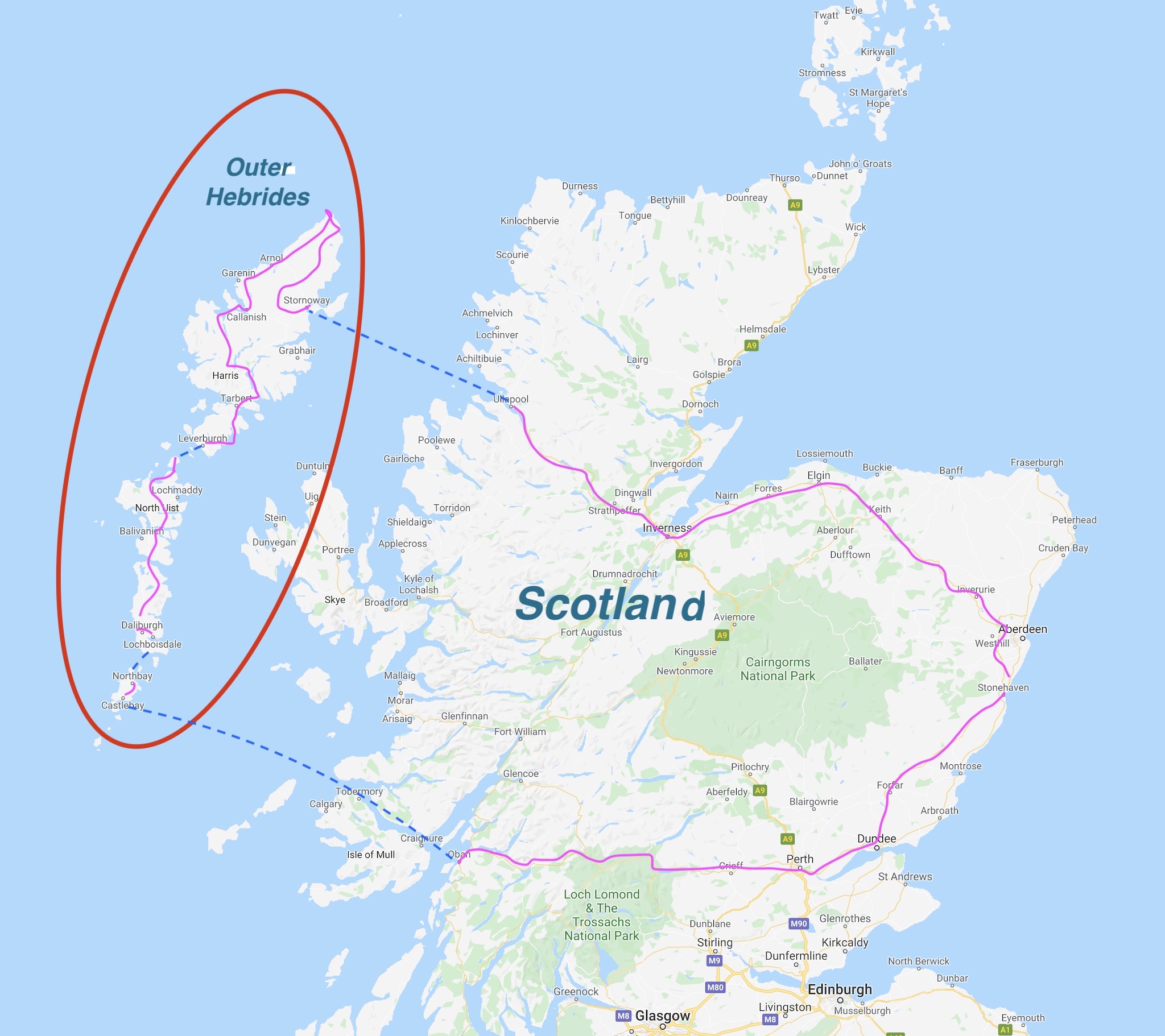 Our 10-day road and ferry trip began at our [then] home in Aberdeen, on the east coast. We spent six of those wonderful days out on the one-lane roads and ferry crossings of the Outer Hebrides.
Our 10-day road and ferry trip began at our [then] home in Aberdeen, on the east coast. We spent six of those wonderful days out on the one-lane roads and ferry crossings of the Outer Hebrides.
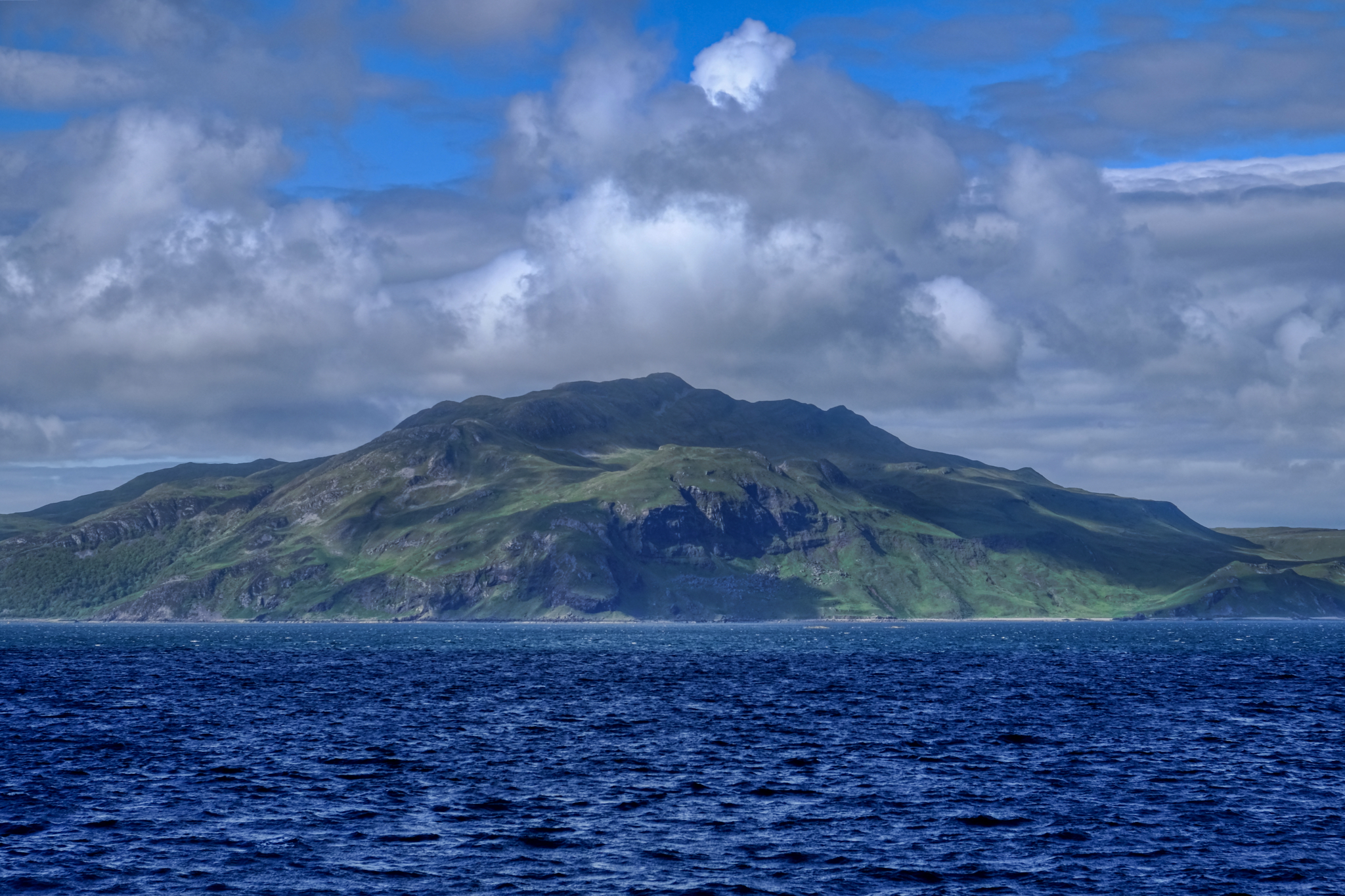
The ferry out of Oban passes through a straight with views of the Isle of Mull on one side.
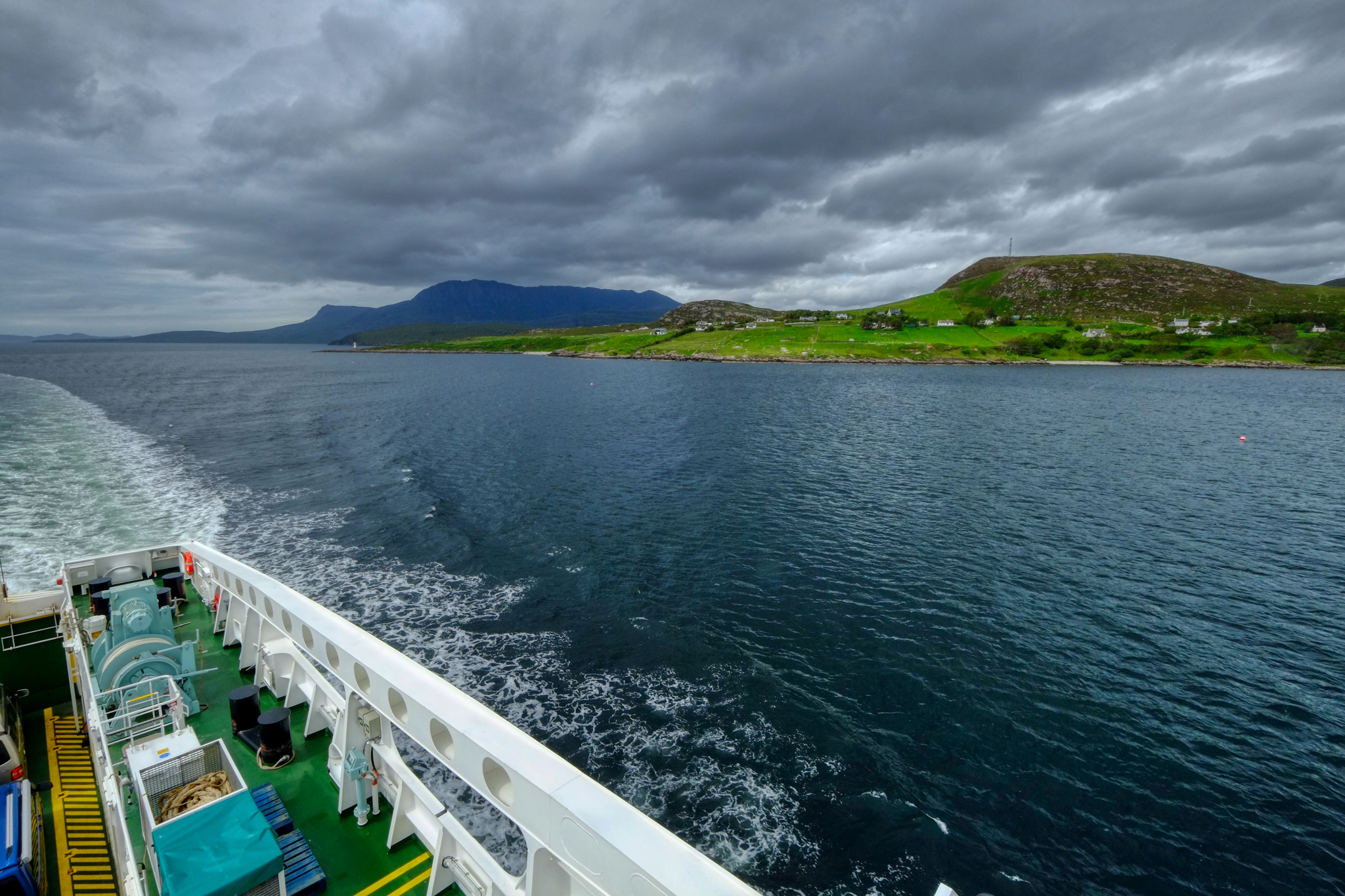 It was a gorgeous 4 hour and 45 minute ferry trip . . . it is important to book your ferry well in advance in the summer months, including the small inter-island ferries out in the Outer Hebrides.
It was a gorgeous 4 hour and 45 minute ferry trip . . . it is important to book your ferry well in advance in the summer months, including the small inter-island ferries out in the Outer Hebrides.
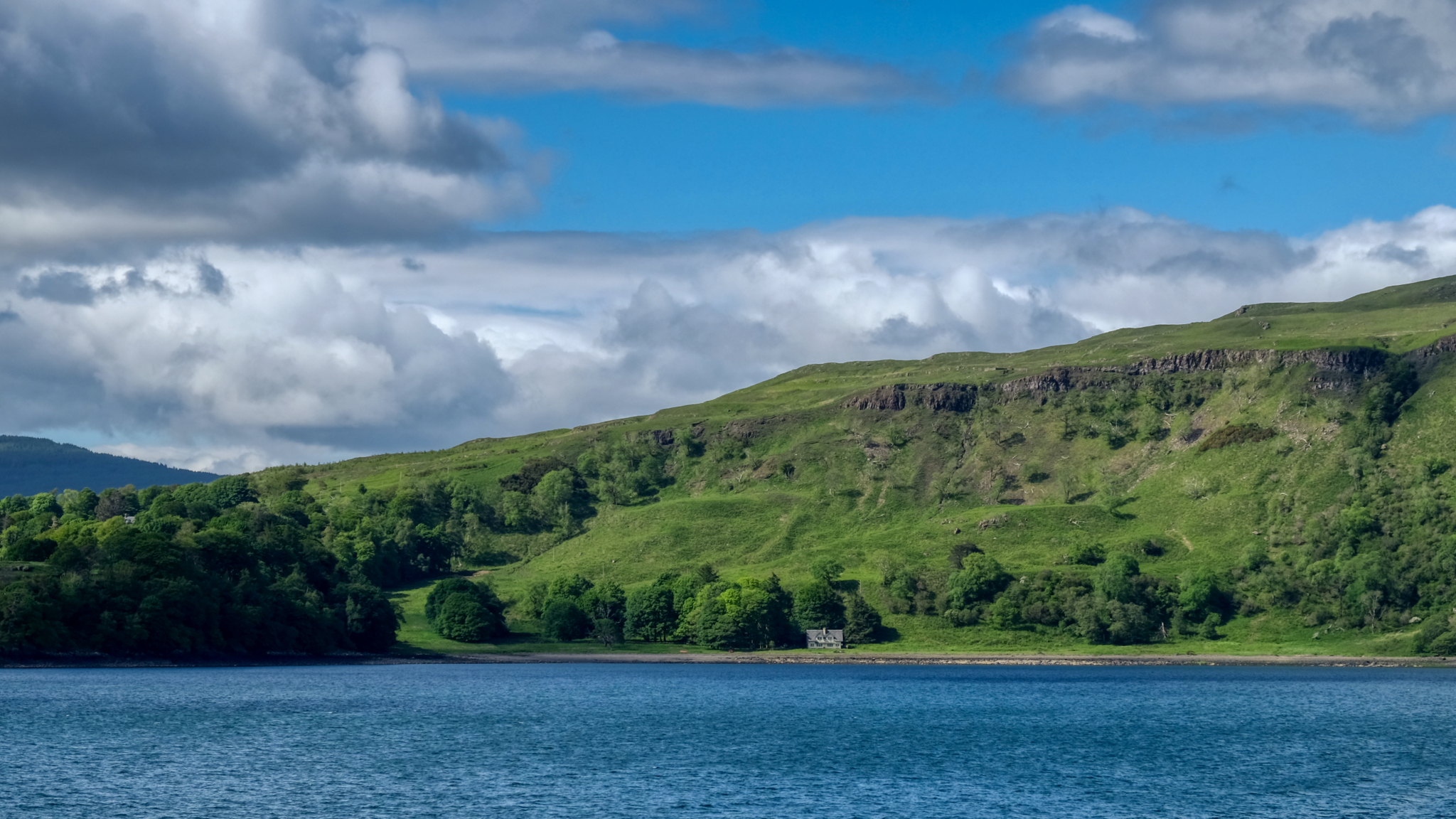 Yes, I would live here . . . .
Yes, I would live here . . . .
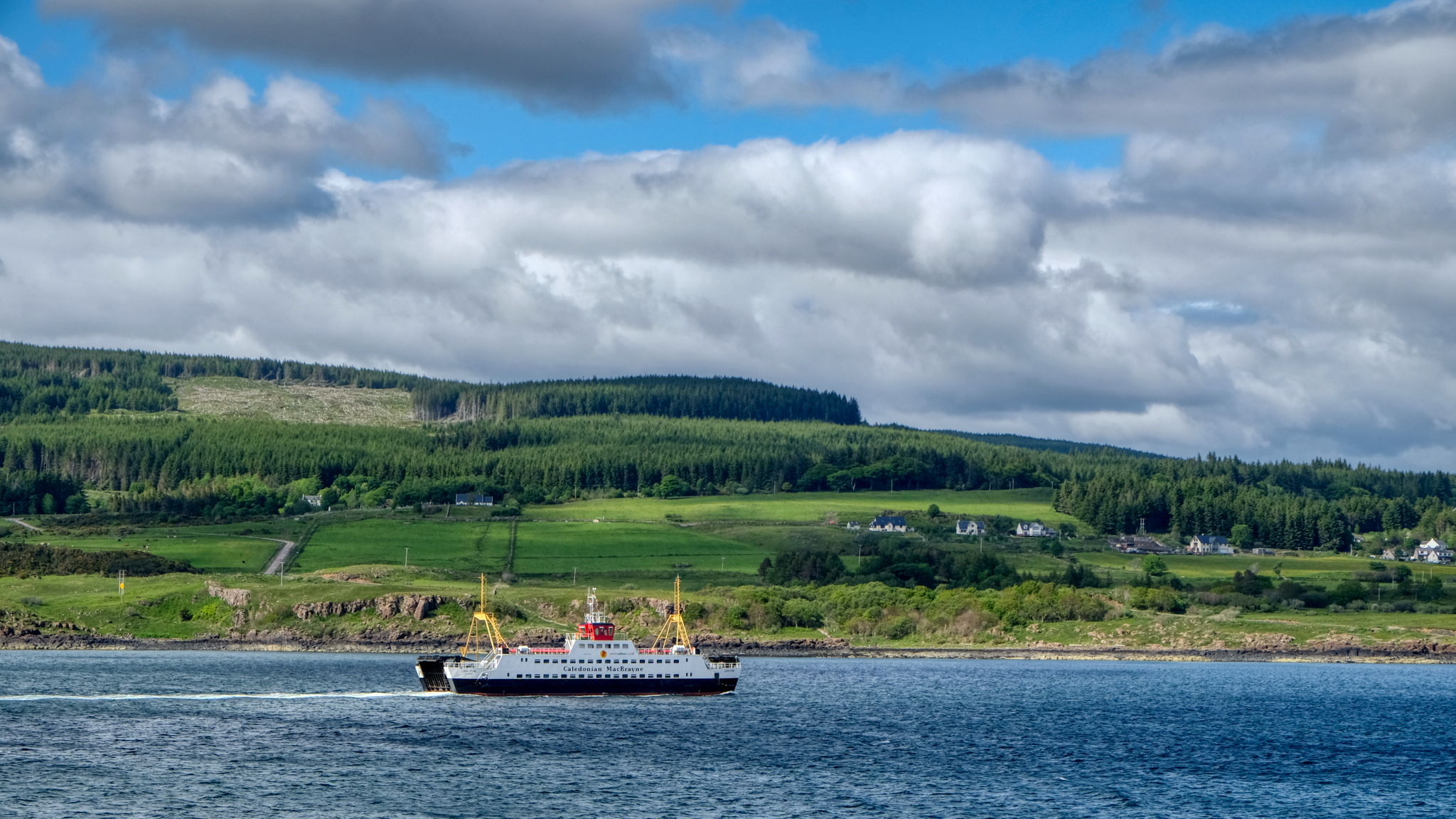 With so many islands off the west coast of Scotland, there are many small ferry routes.
With so many islands off the west coast of Scotland, there are many small ferry routes.
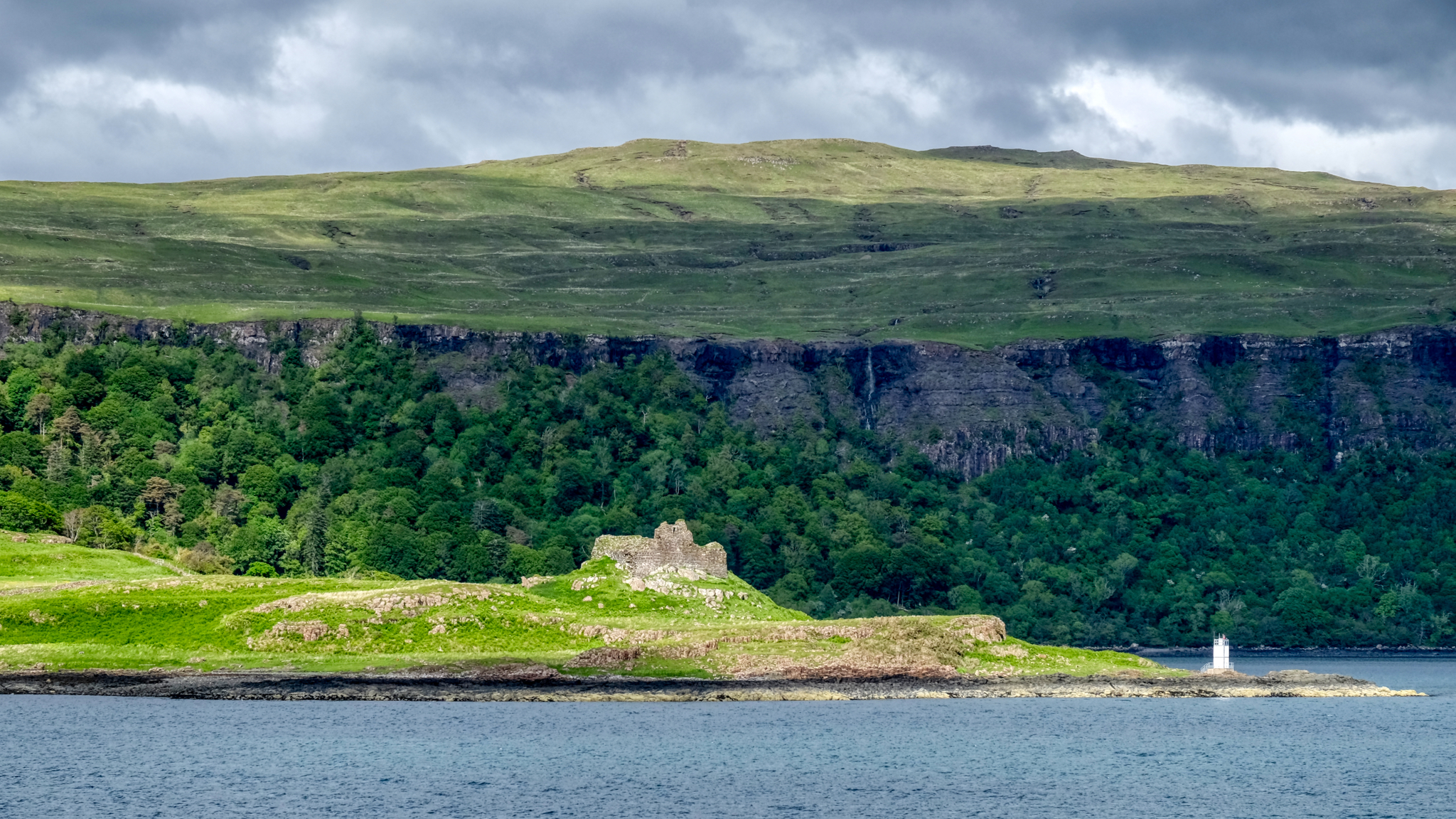 History is everywhere along our route. Castle ruins seem to dot the landscape.
History is everywhere along our route. Castle ruins seem to dot the landscape.
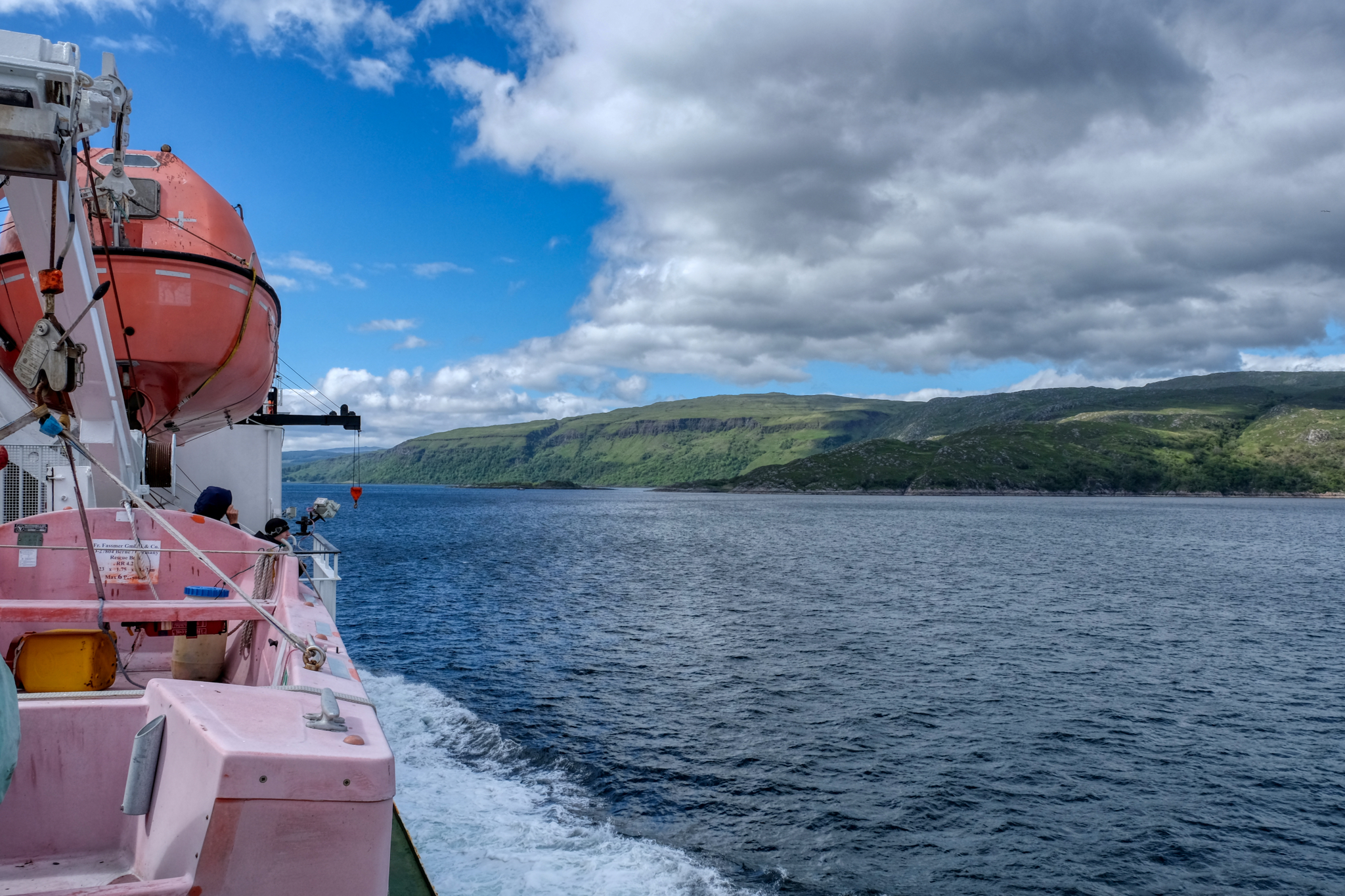 Such a relaxing way to travel.
Such a relaxing way to travel.
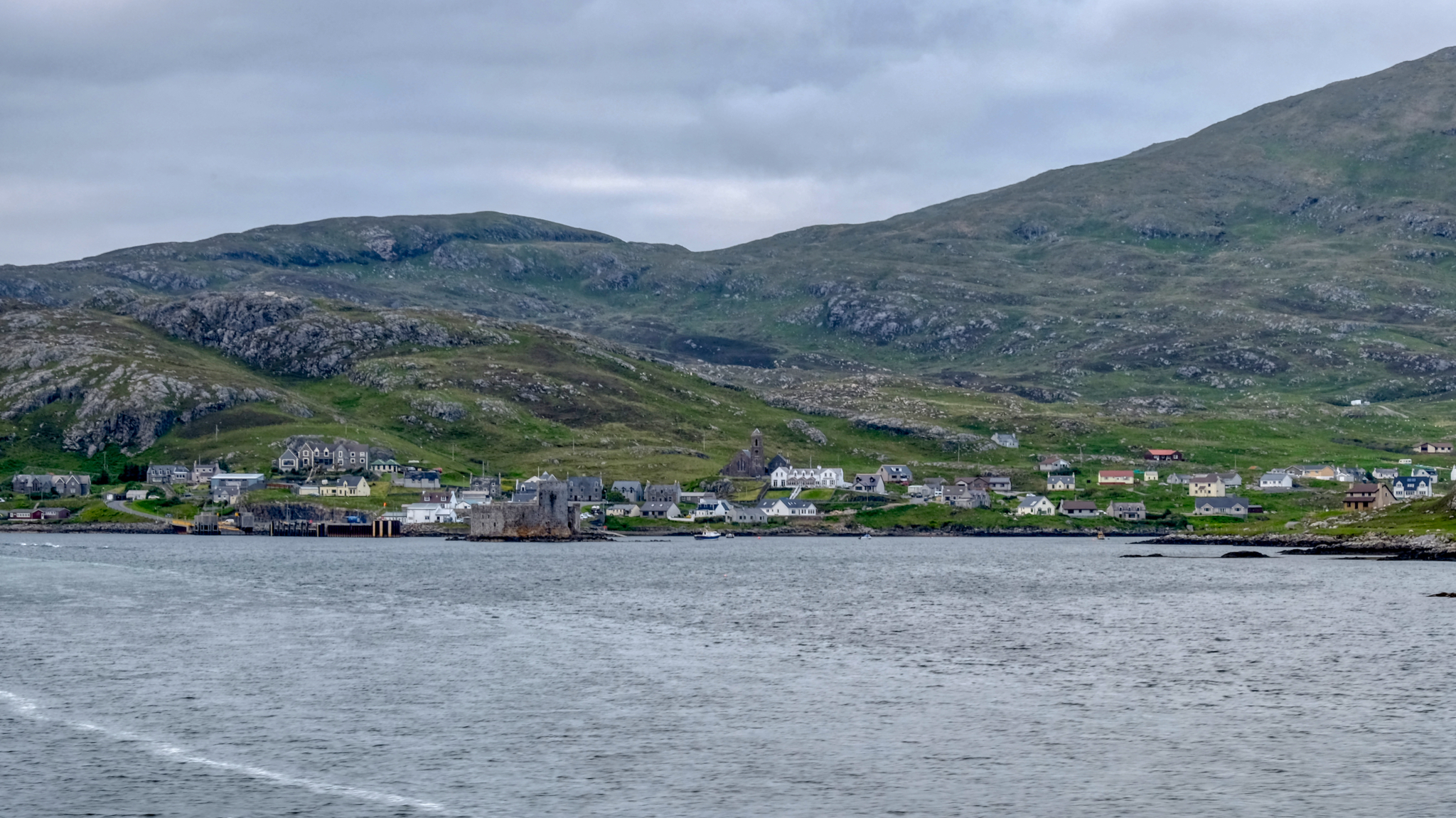 Time passed quickly and we found ourselves nearing Castlebay, the southernmost port on the Outer Hebrides, the Isle of Barra.
Time passed quickly and we found ourselves nearing Castlebay, the southernmost port on the Outer Hebrides, the Isle of Barra.
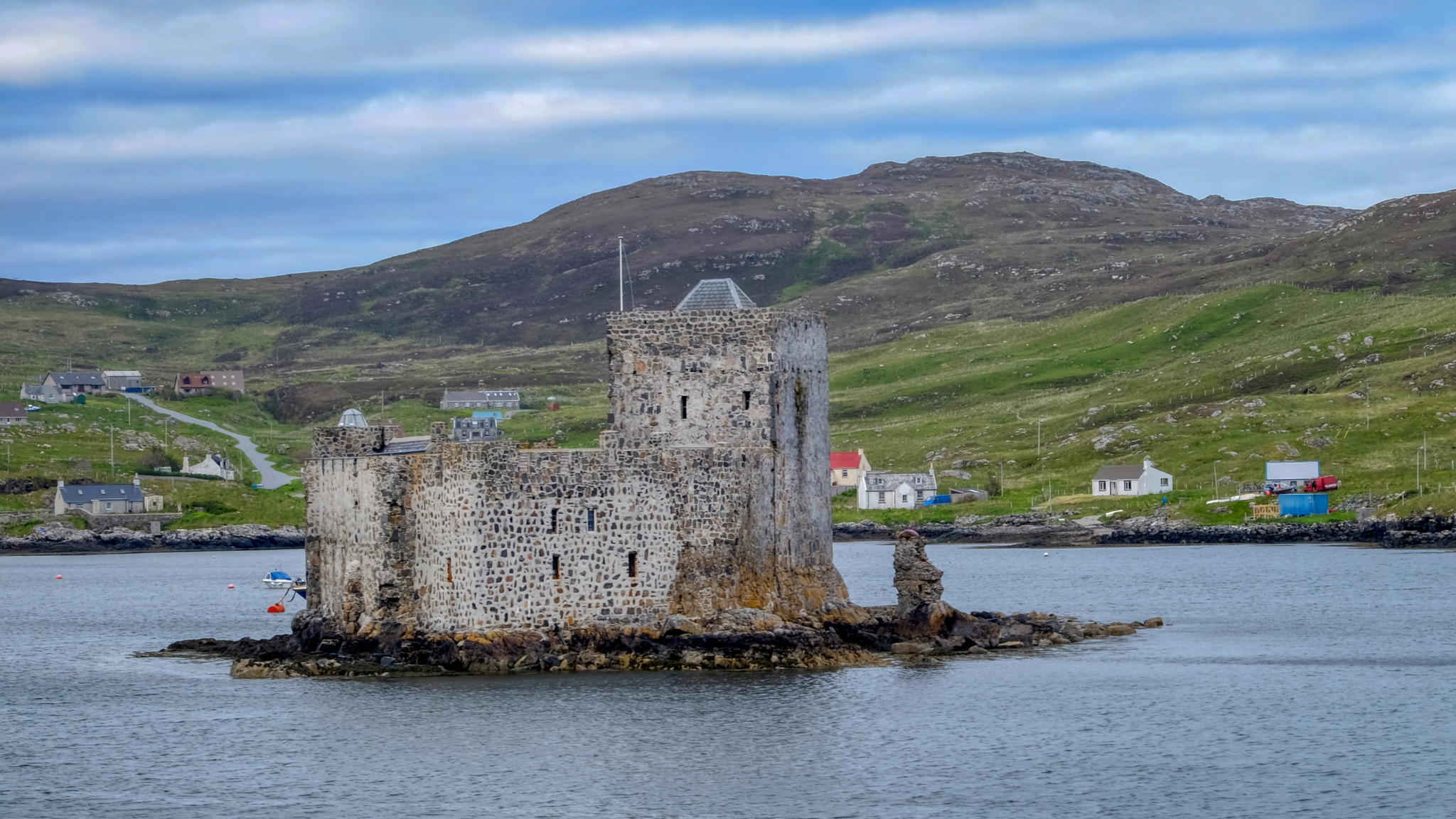 This castle sits in the bay of Castlebay . . . perhaps having something to do with the naming of the town . . . perhaps.
This castle sits in the bay of Castlebay . . . perhaps having something to do with the naming of the town . . . perhaps.
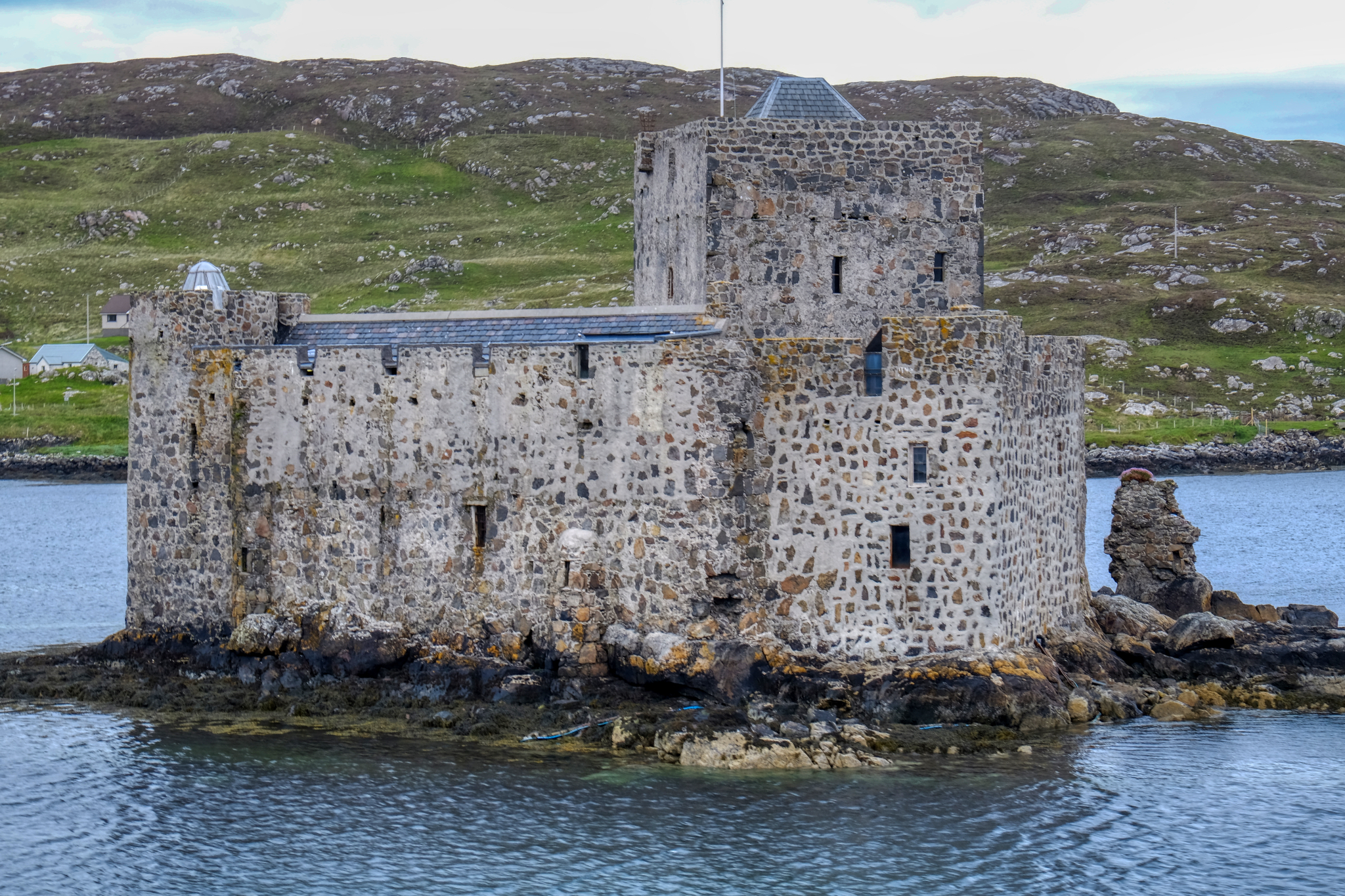 The castle in the bay of Castlebay is Kisimul Castle, dating from the late 16th century. It is now leased to Historic Scotland Trust by the Clan MacNeil for 1 pound a year. It is a castle with an interesting history (see link).
The castle in the bay of Castlebay is Kisimul Castle, dating from the late 16th century. It is now leased to Historic Scotland Trust by the Clan MacNeil for 1 pound a year. It is a castle with an interesting history (see link).
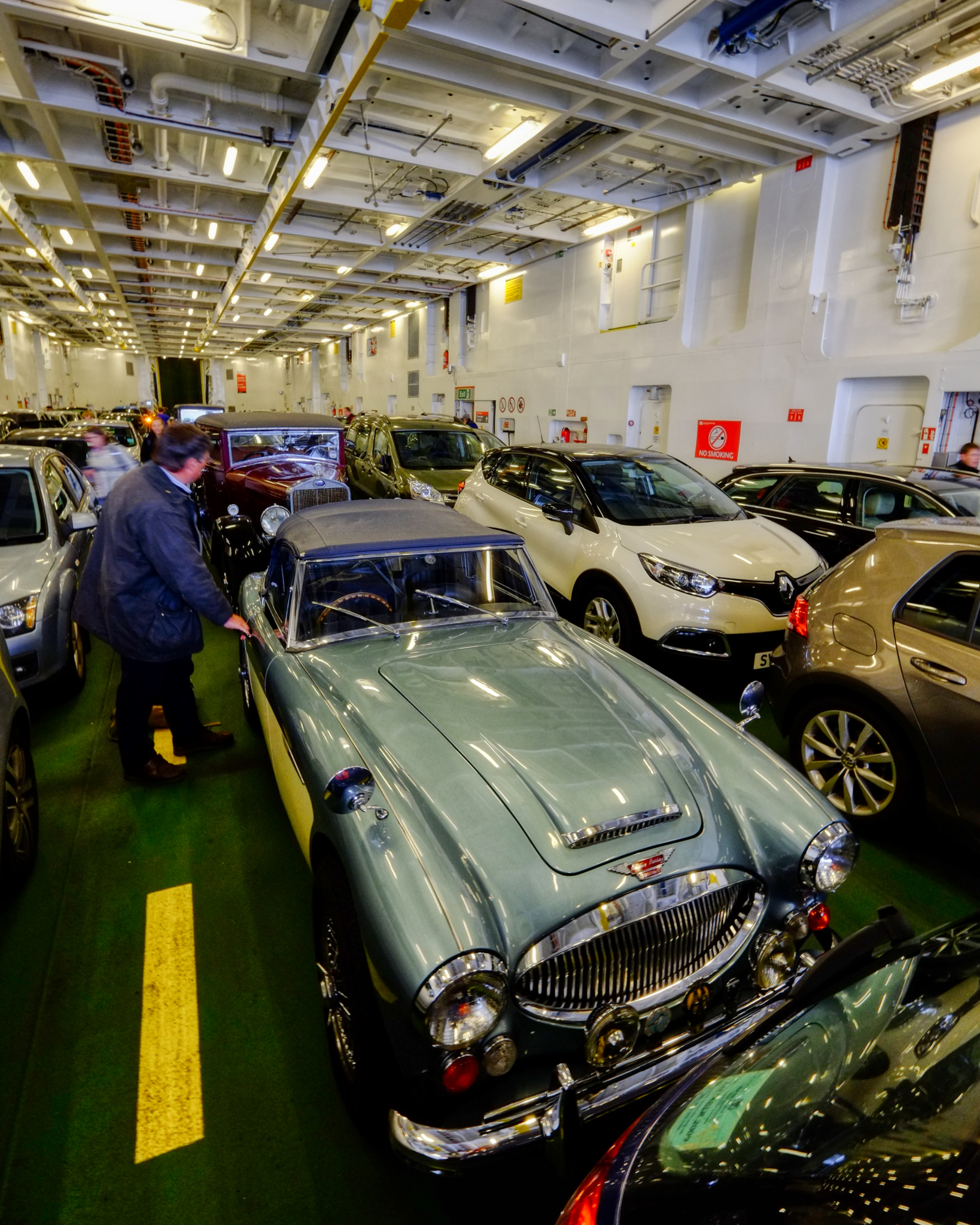
We were called to the car deck just before docking in Castlebay . . . what a surprise to see several antique and collector cars there (they must have loaded after we did). Perhaps there was a collector car rally . . . or they were returning from one.
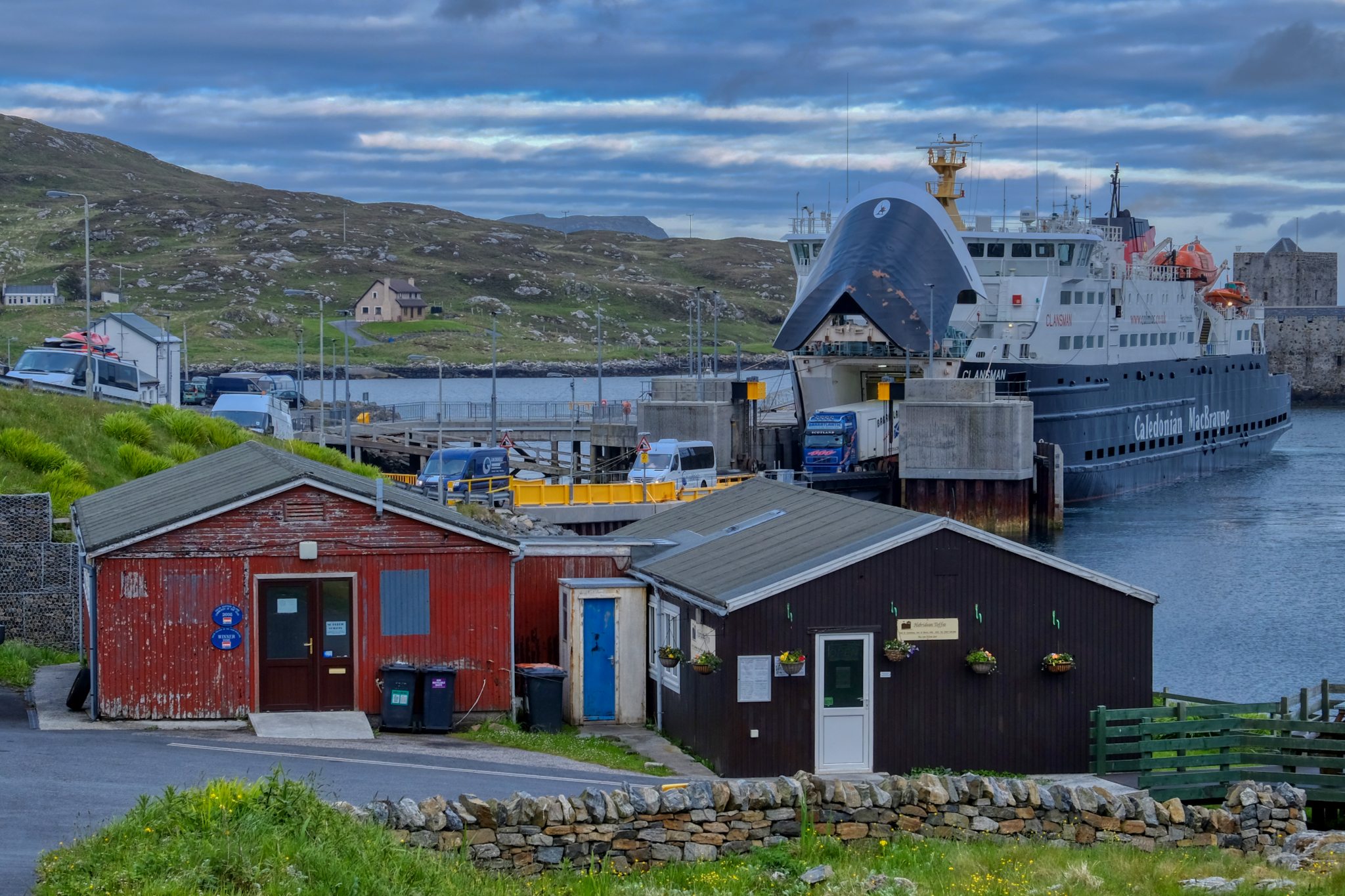 We drove off the ferry and turned, stopped to take a look at where we had come from.
We drove off the ferry and turned, stopped to take a look at where we had come from.
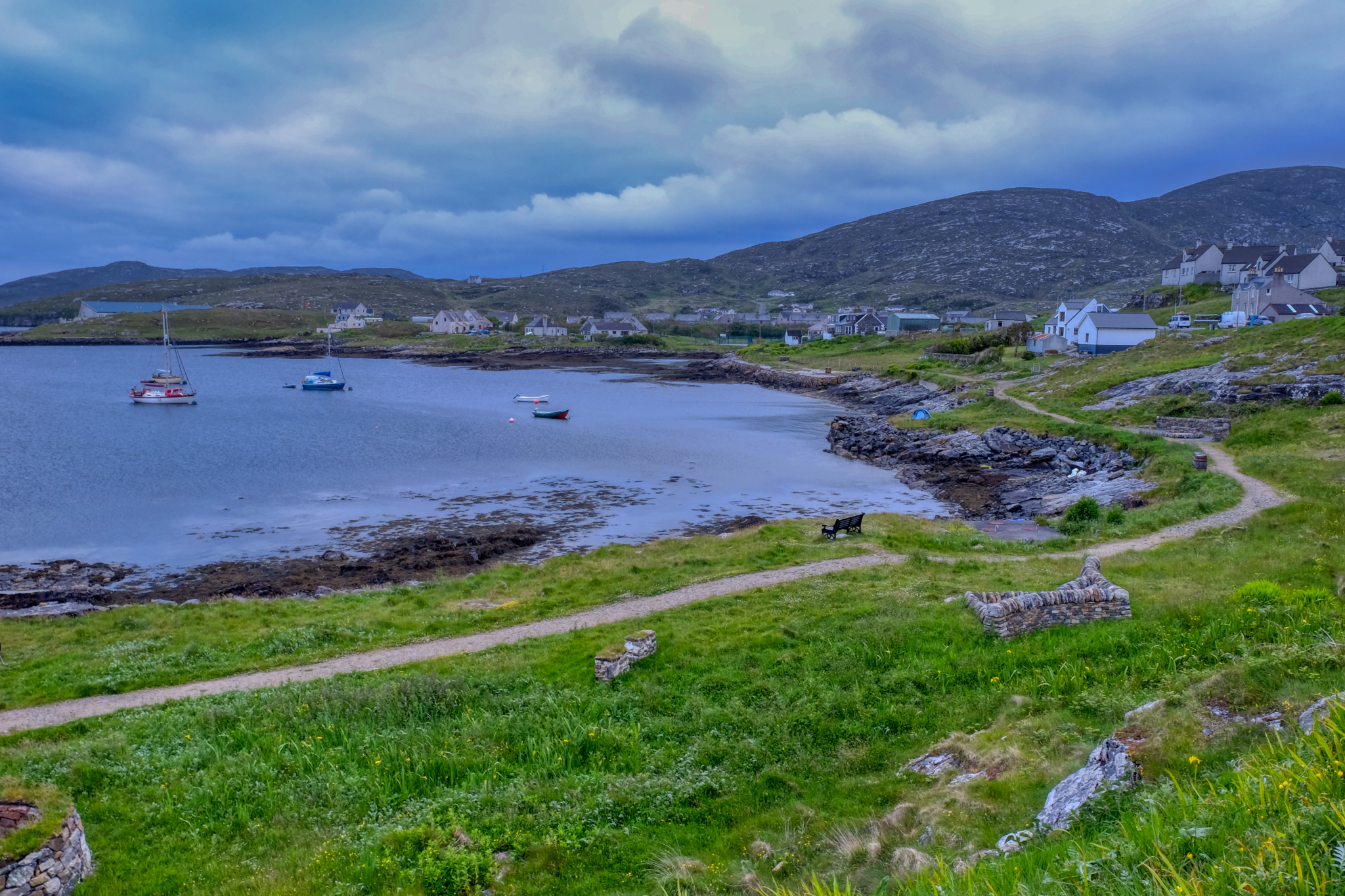 Castlebay has an 'End of the World' feeling of remoteness about it like no other place I have ever been.
Castlebay has an 'End of the World' feeling of remoteness about it like no other place I have ever been.
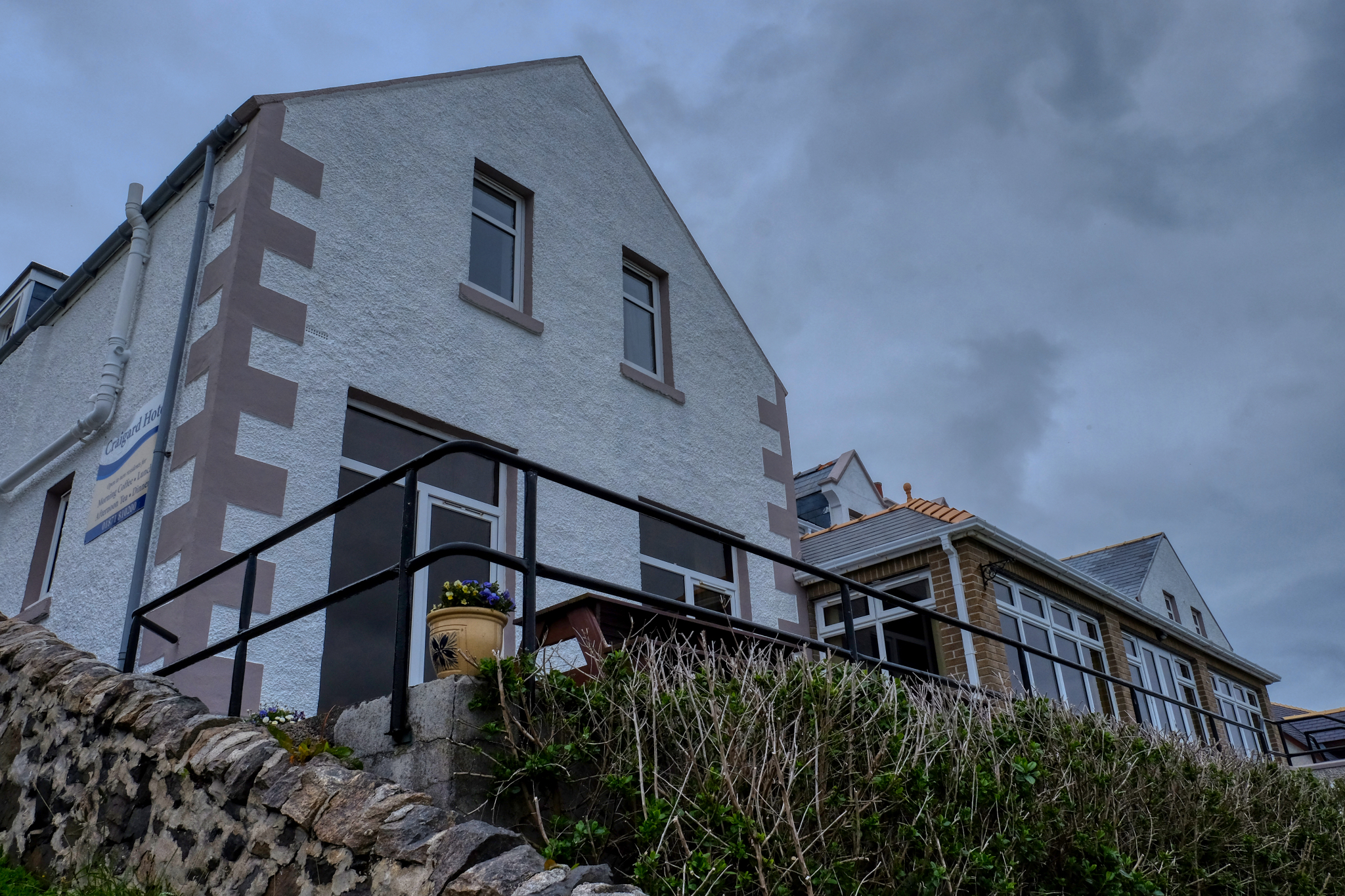 We found our old hotel (it wasn't too difficult!) and checked in.
We found our old hotel (it wasn't too difficult!) and checked in.
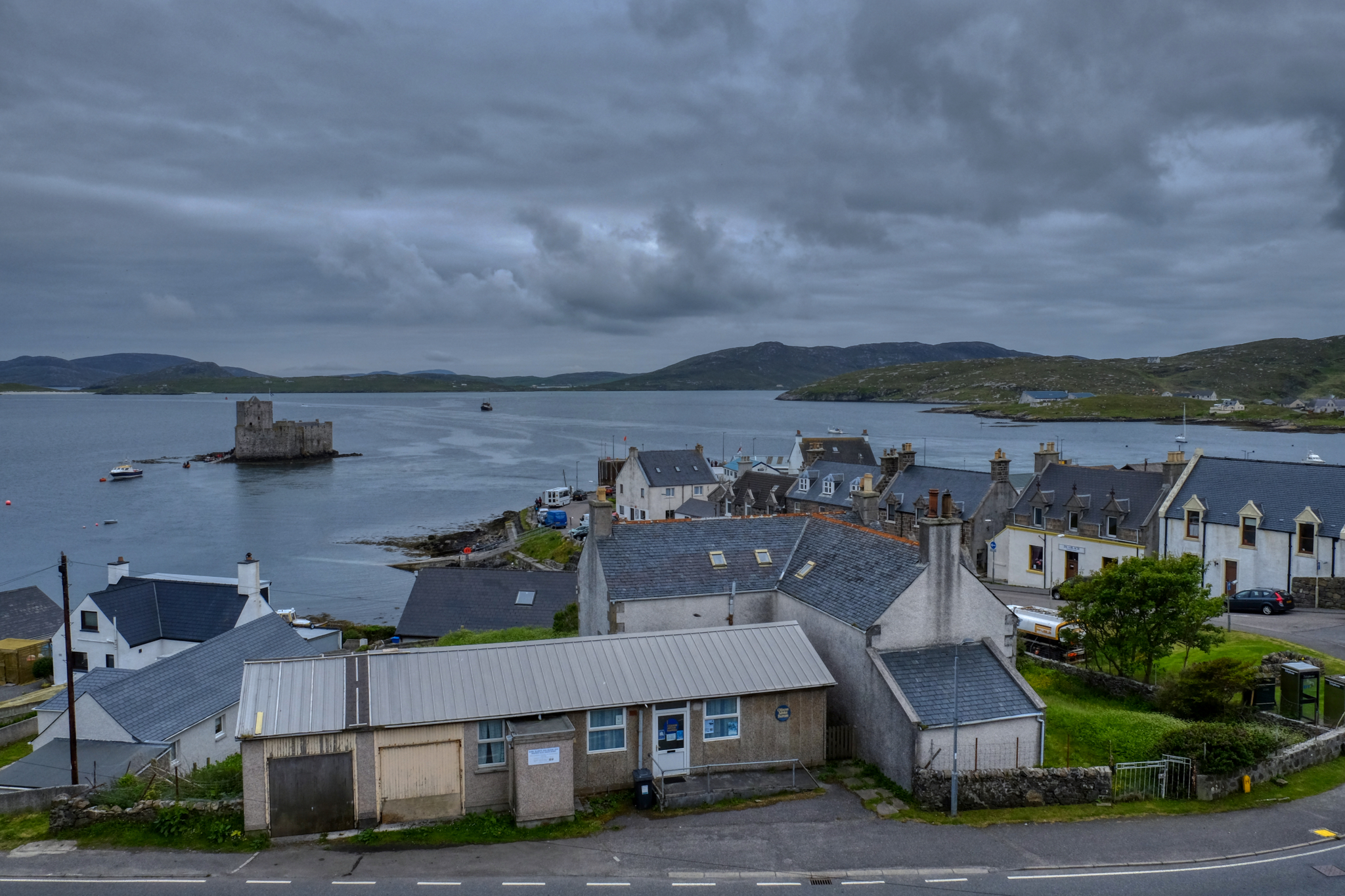 The view of Castlebay from our hotel room. Very nice.
The view of Castlebay from our hotel room. Very nice.
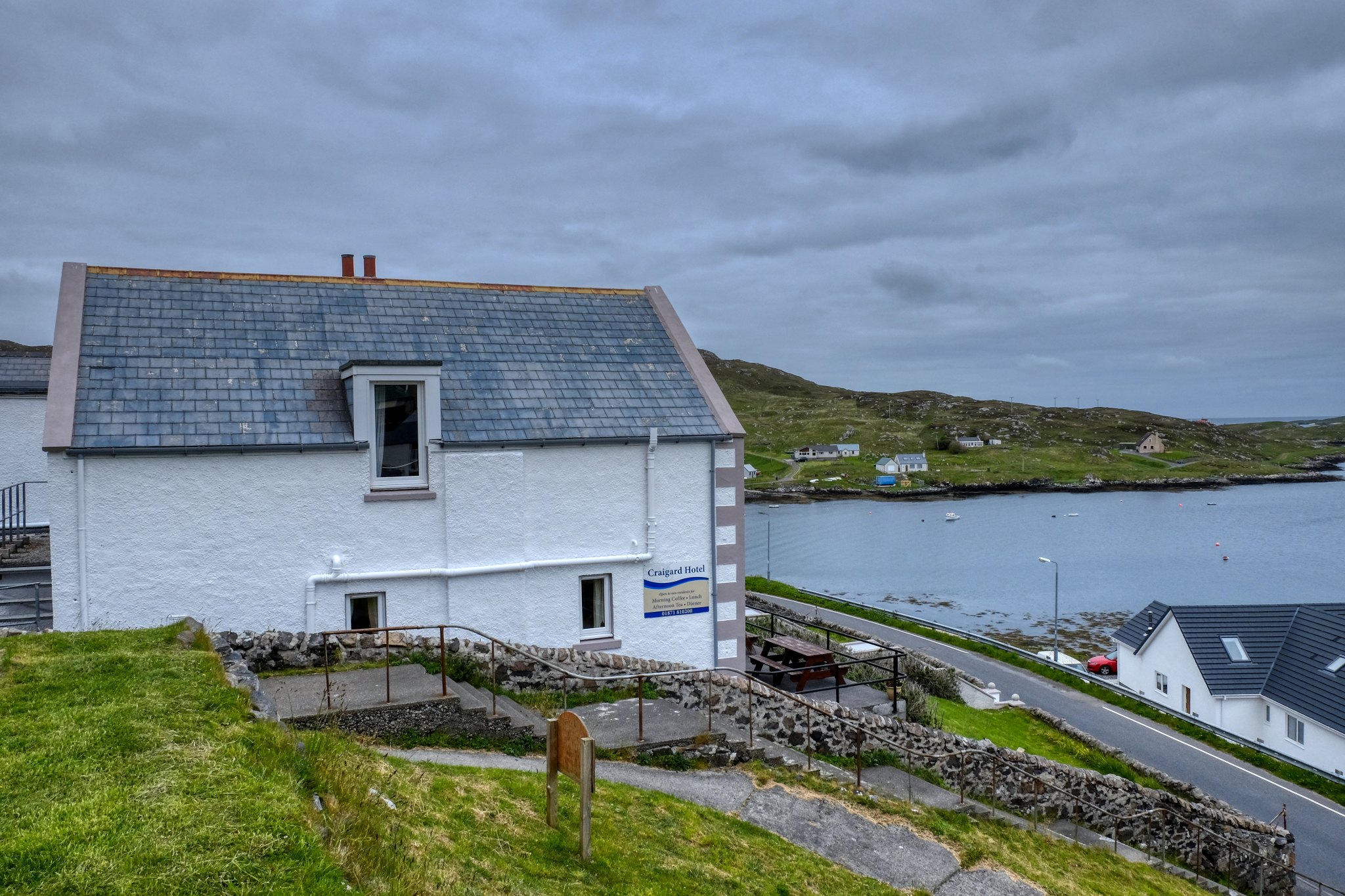 The sun stays up very late in June this far north. I took a walk from our Craigard Hotel at 10:30pm.
The sun stays up very late in June this far north. I took a walk from our Craigard Hotel at 10:30pm.
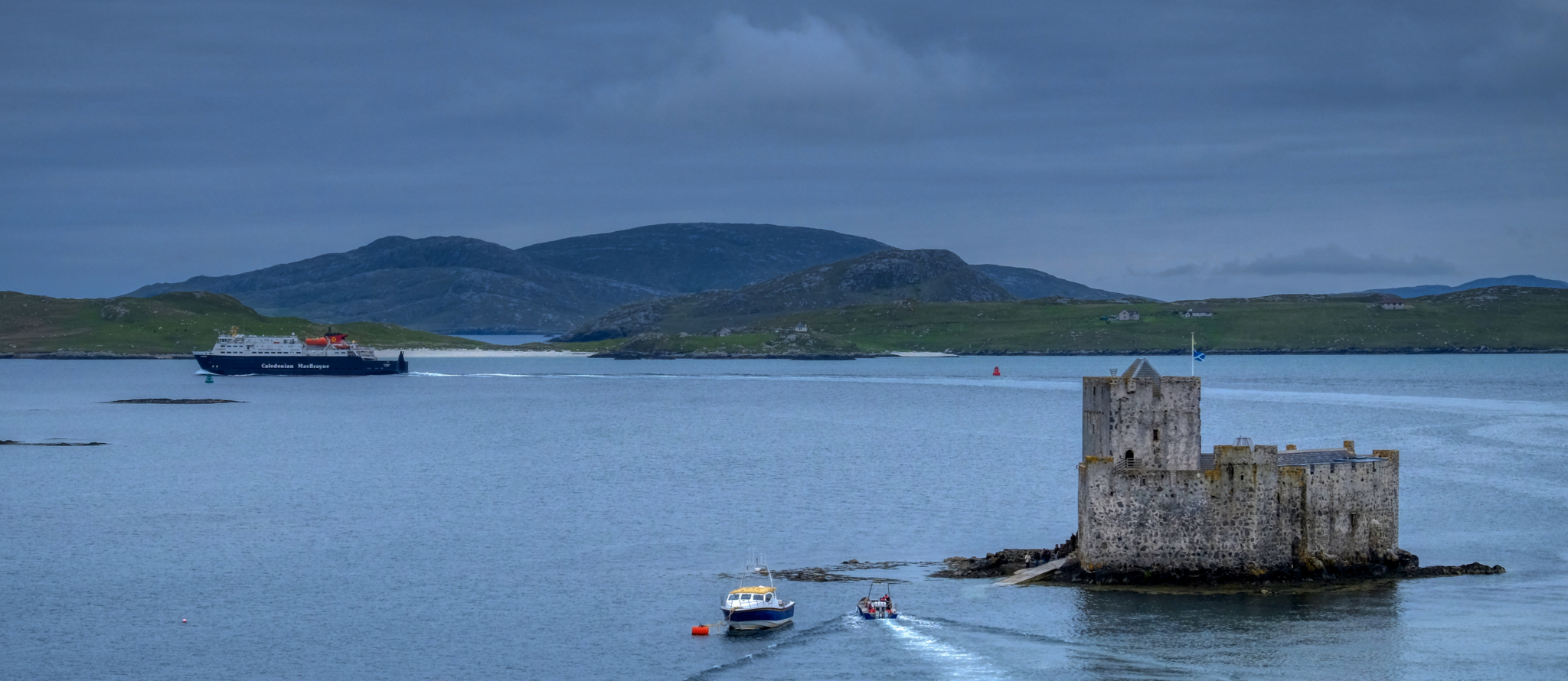 From the hill behind our hotel I saw our ferry, reloaded, making its return voyage to Oban.
From the hill behind our hotel I saw our ferry, reloaded, making its return voyage to Oban.
 I sat in the evening gloom and watched the ferry pass out of sight.
I sat in the evening gloom and watched the ferry pass out of sight.
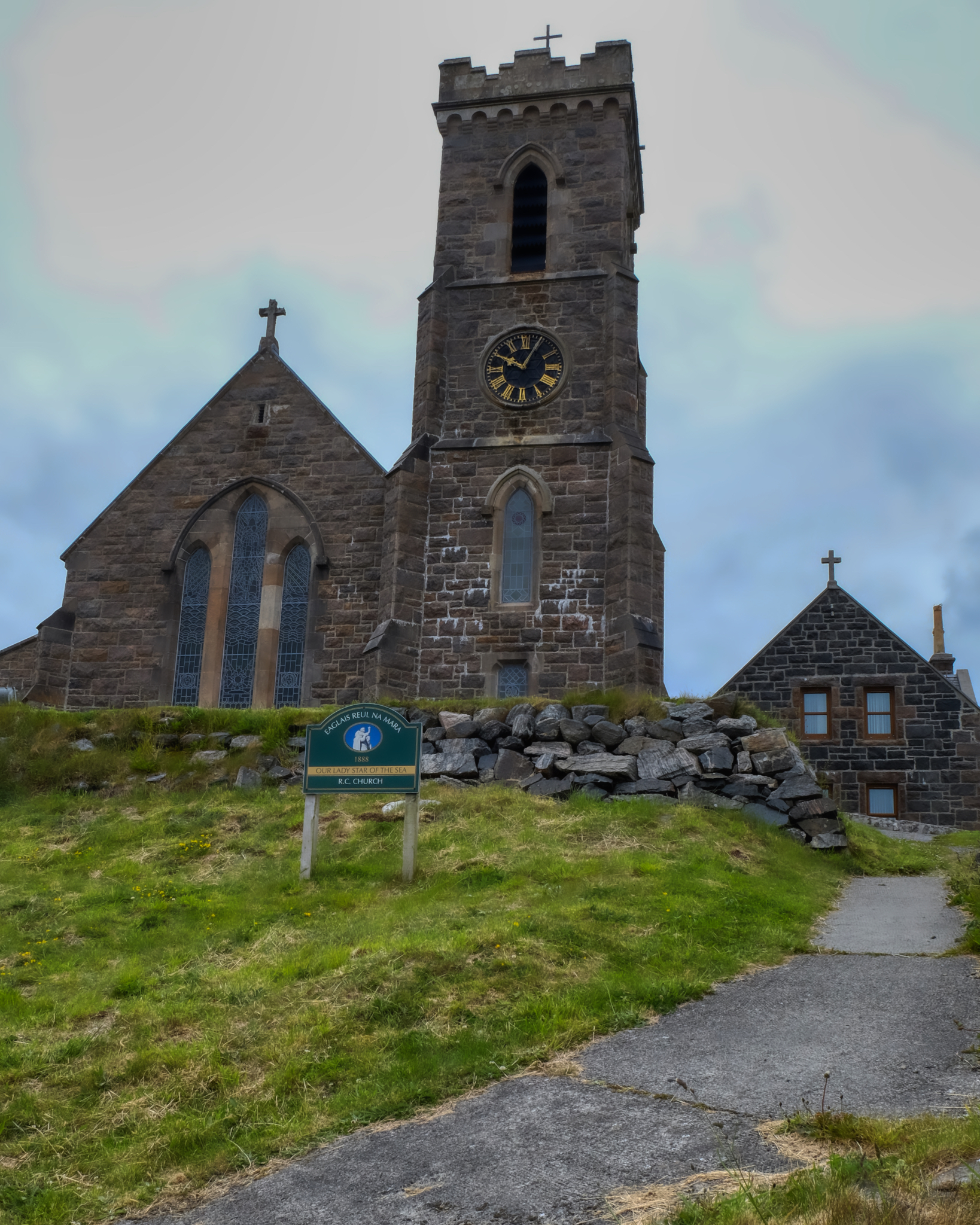 An old church, Our Lady of the Sea, behind our hotel.
An old church, Our Lady of the Sea, behind our hotel.
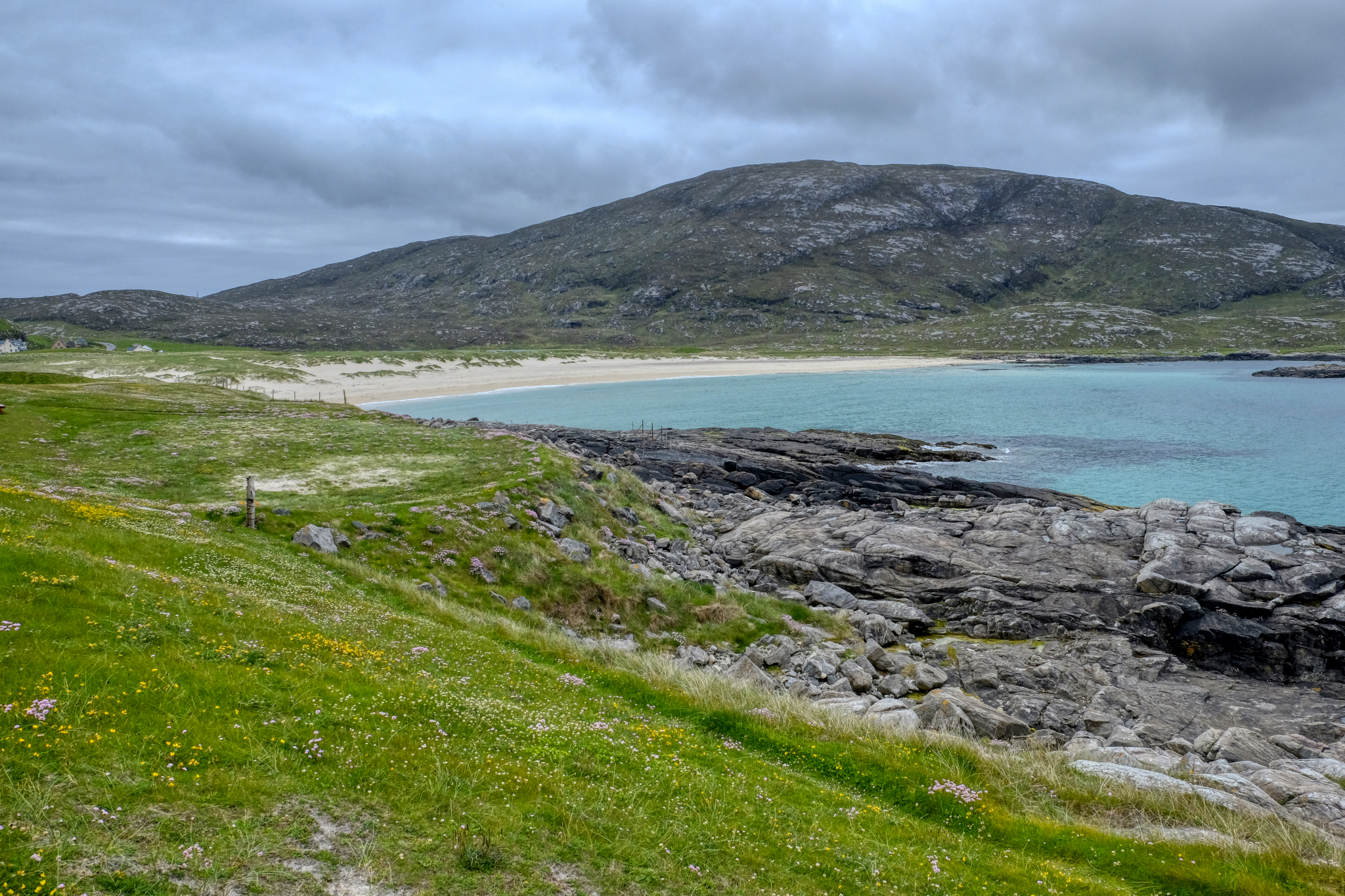 And off we drove up the west coast of the Isle of Barra. Magnificent bay views, white sand and aqua waters.
And off we drove up the west coast of the Isle of Barra. Magnificent bay views, white sand and aqua waters.
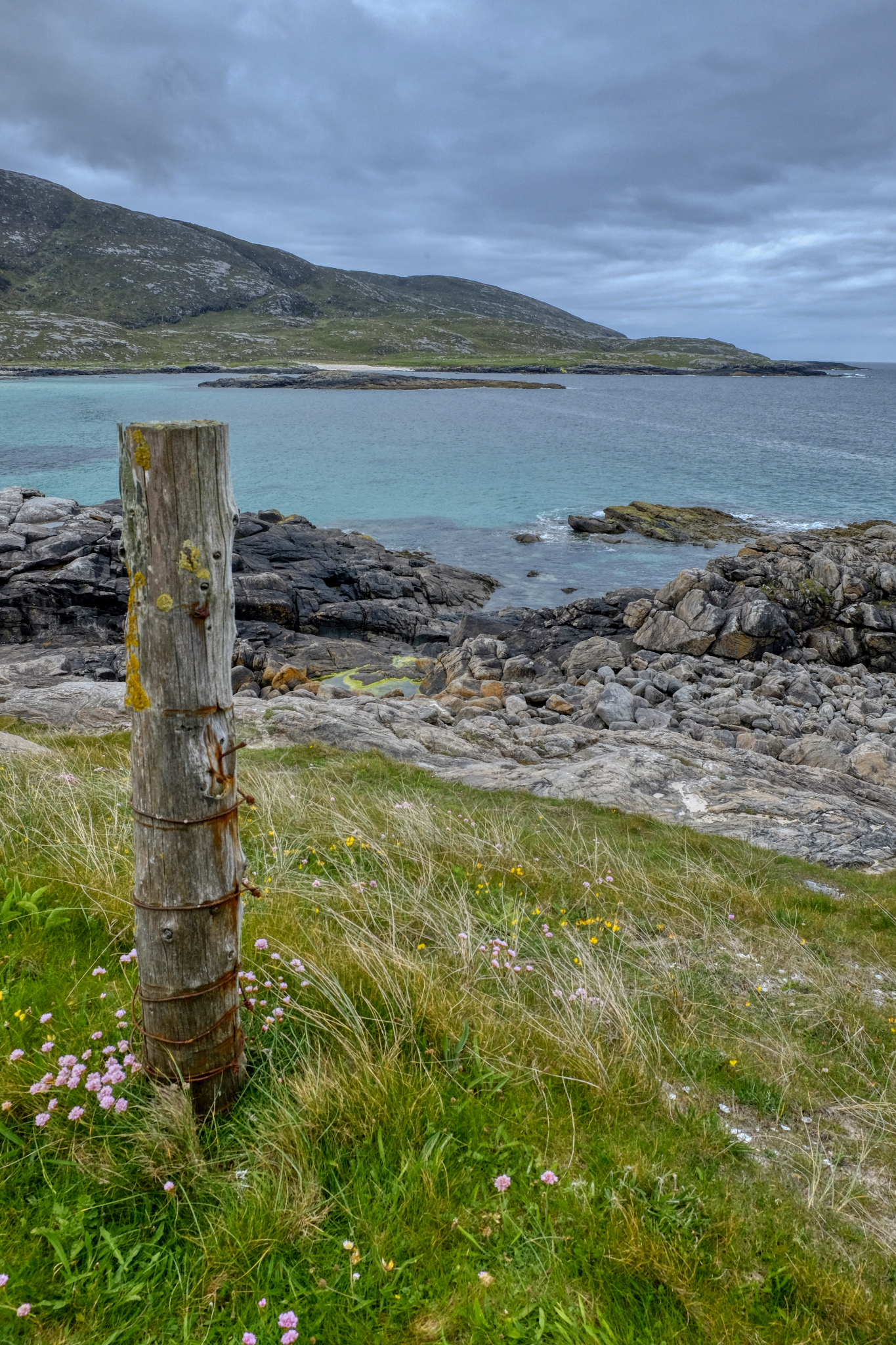 Such a pleasant place.
Such a pleasant place.
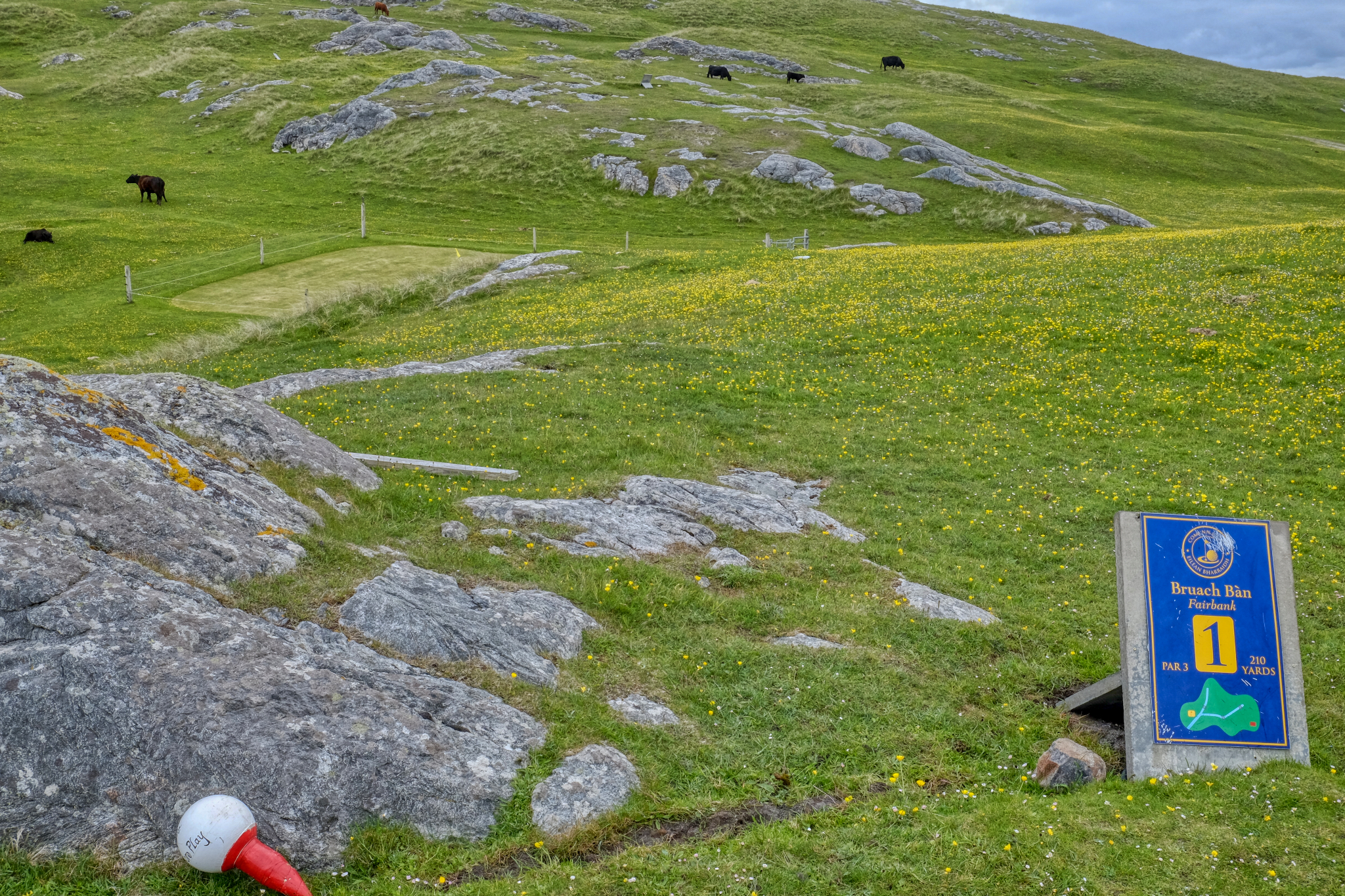 My wife is an avid golfer, so of course we stopped in at the amazing Barra Golf Course.
My wife is an avid golfer, so of course we stopped in at the amazing Barra Golf Course.
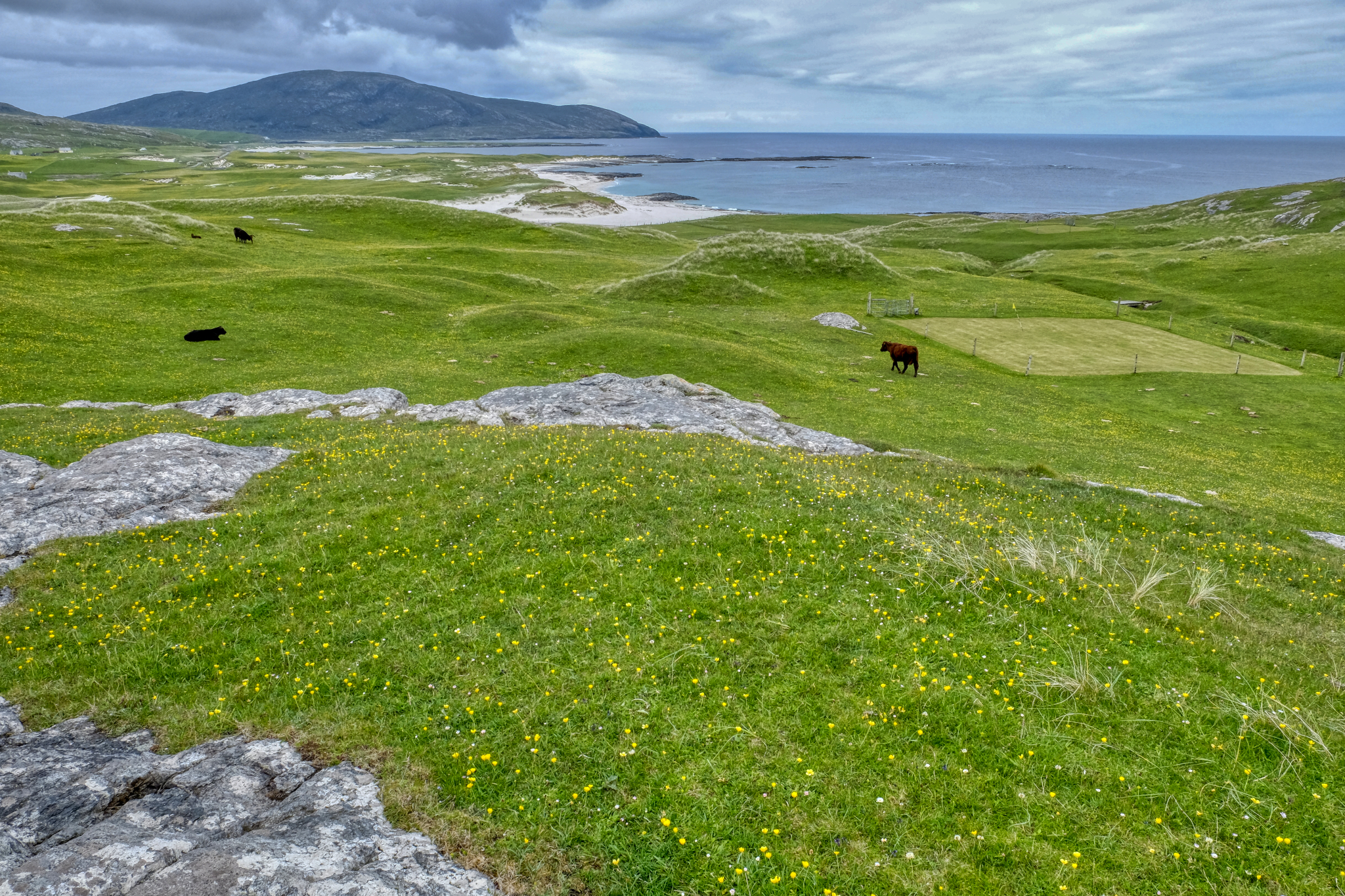 Small yellow wild flowers, the sea, cows, and a fenced off putting green (to keep the cow paddies from becoming a 'green hazard'!!!). Lovely.
Small yellow wild flowers, the sea, cows, and a fenced off putting green (to keep the cow paddies from becoming a 'green hazard'!!!). Lovely.
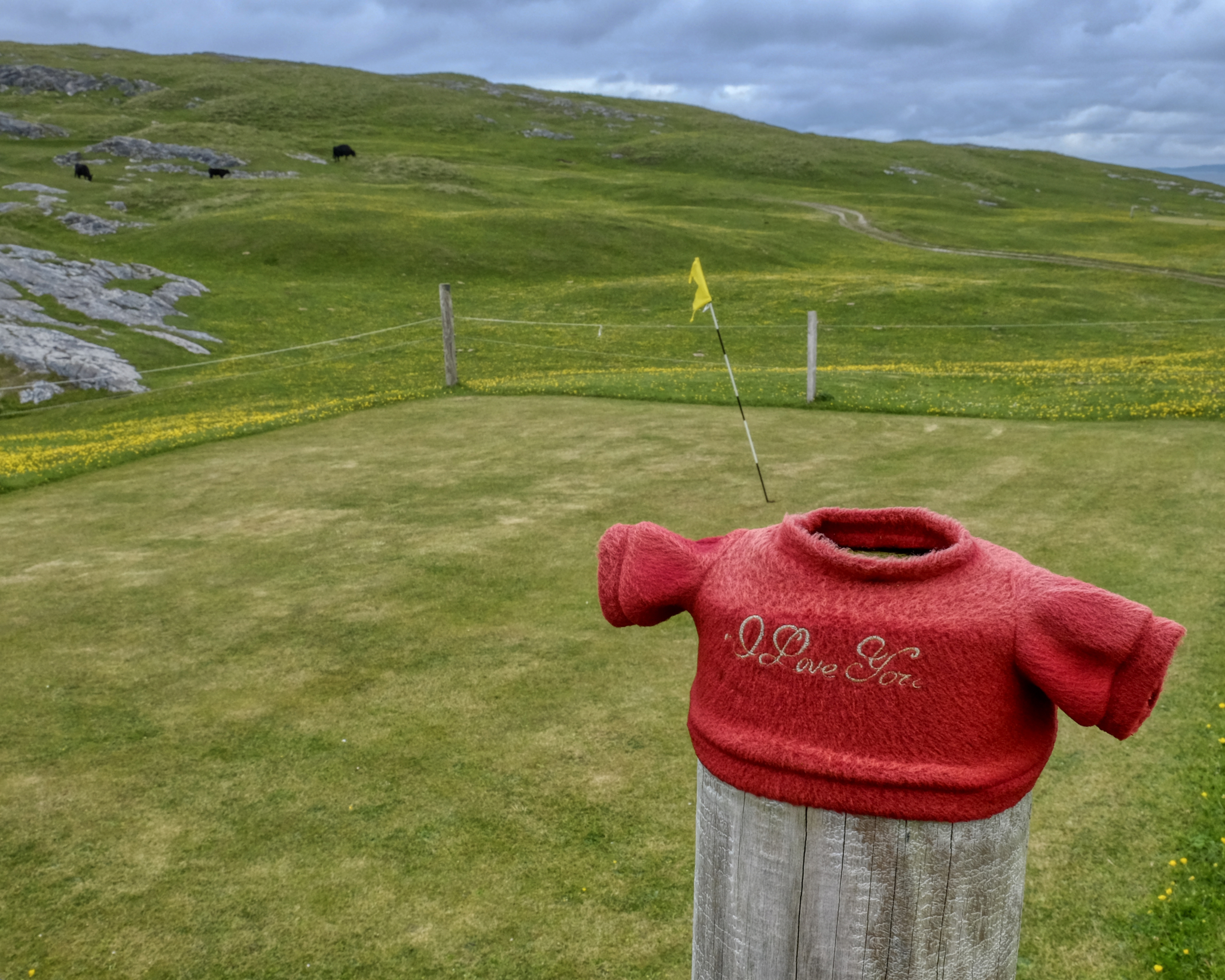 Cute . . .
Cute . . .
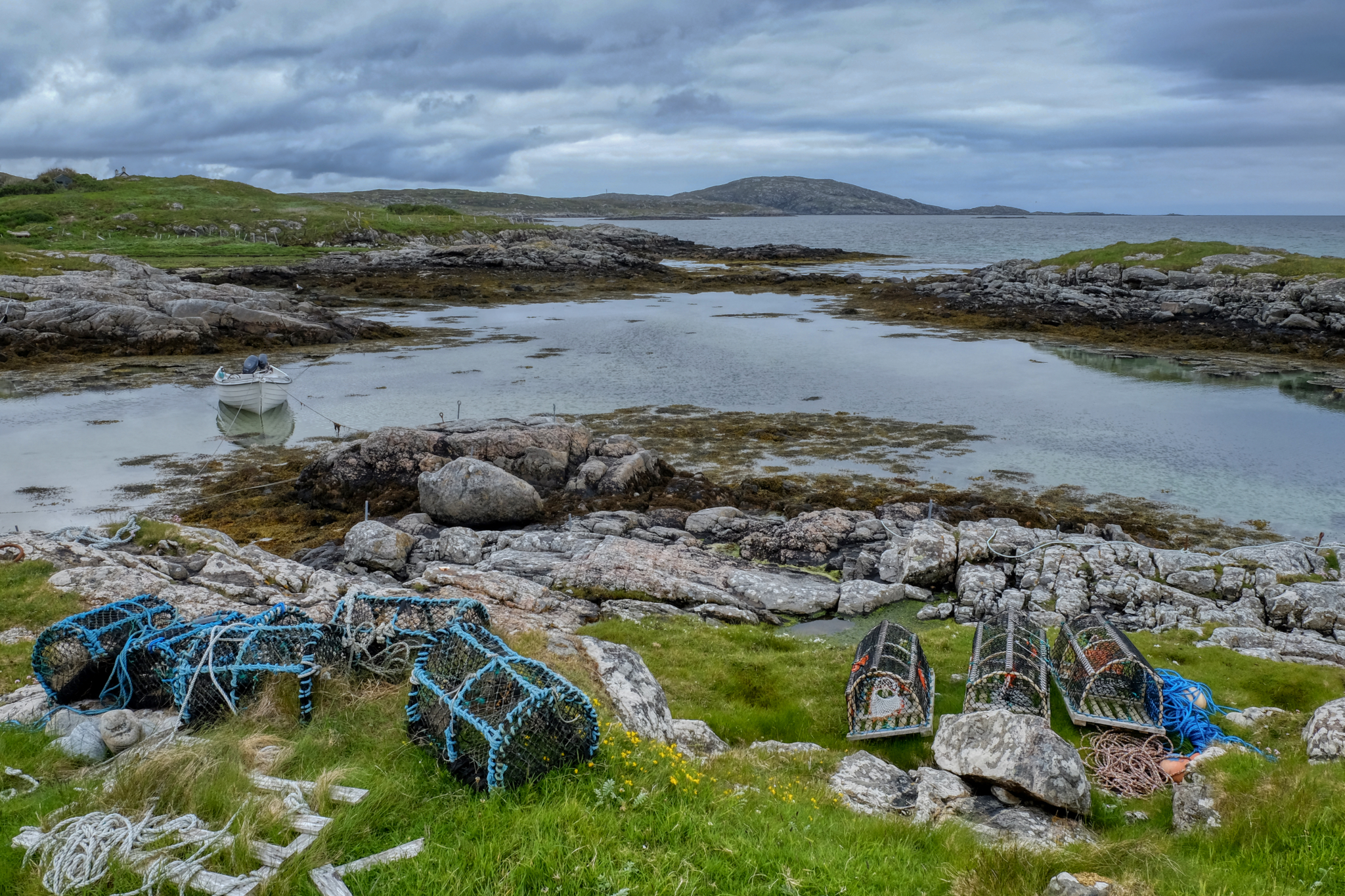 Lobster/Crab pots along a rocky cove. The scenery constantly changes.
Lobster/Crab pots along a rocky cove. The scenery constantly changes.
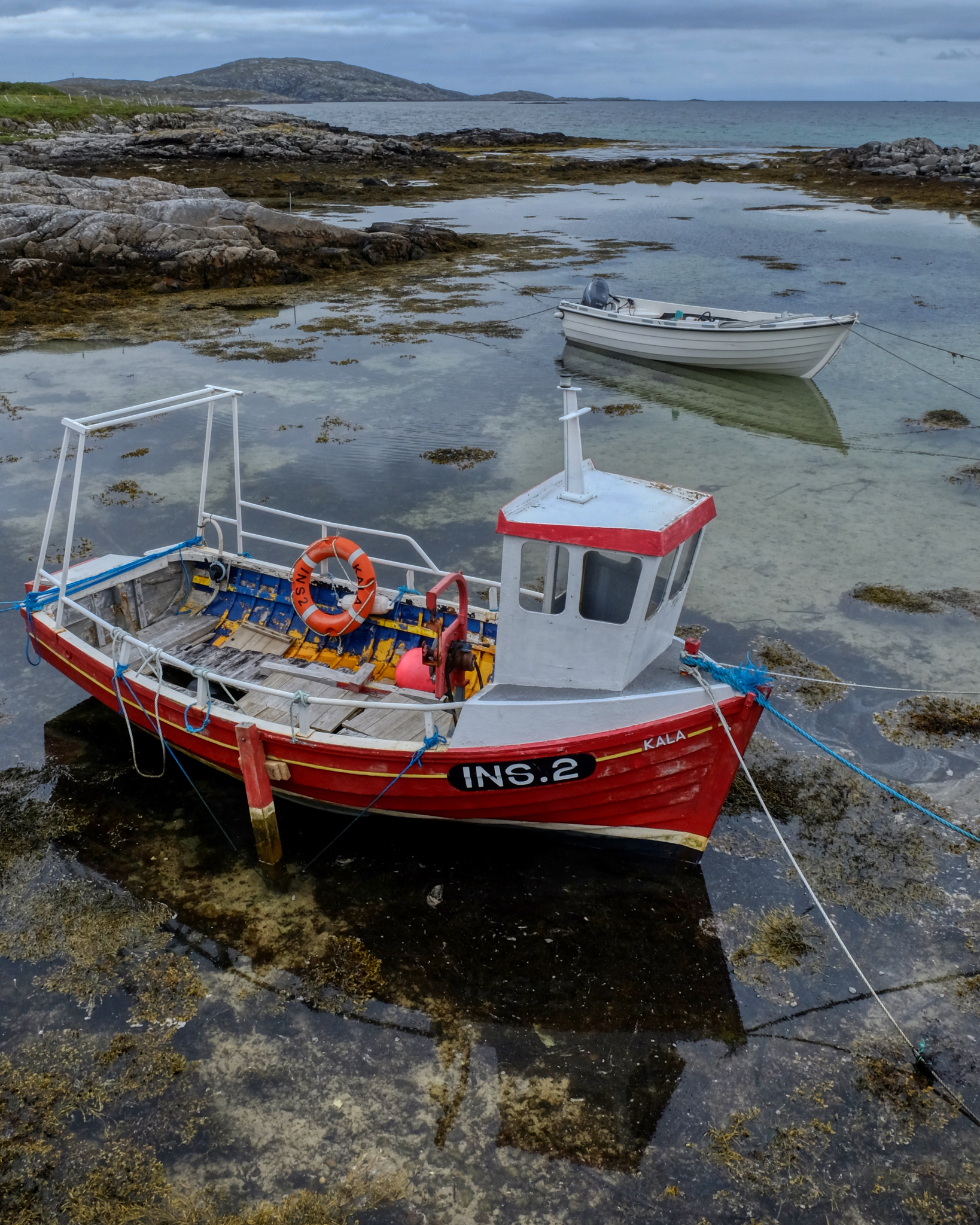 Gorgeous scenes of island life, so connected to the sea.
Gorgeous scenes of island life, so connected to the sea.
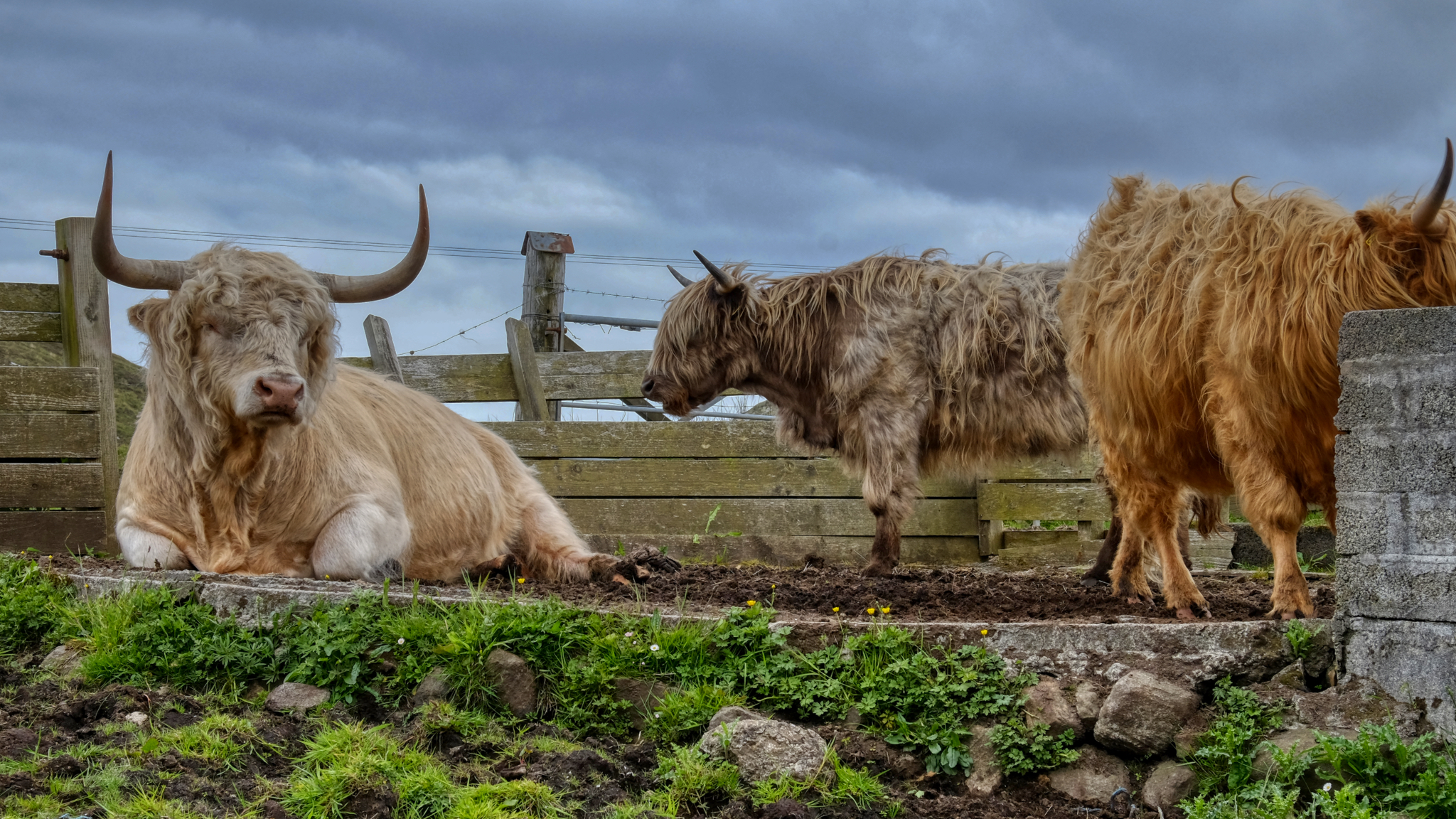 We met these fine fellows along the road. Highland cows.
We met these fine fellows along the road. Highland cows.
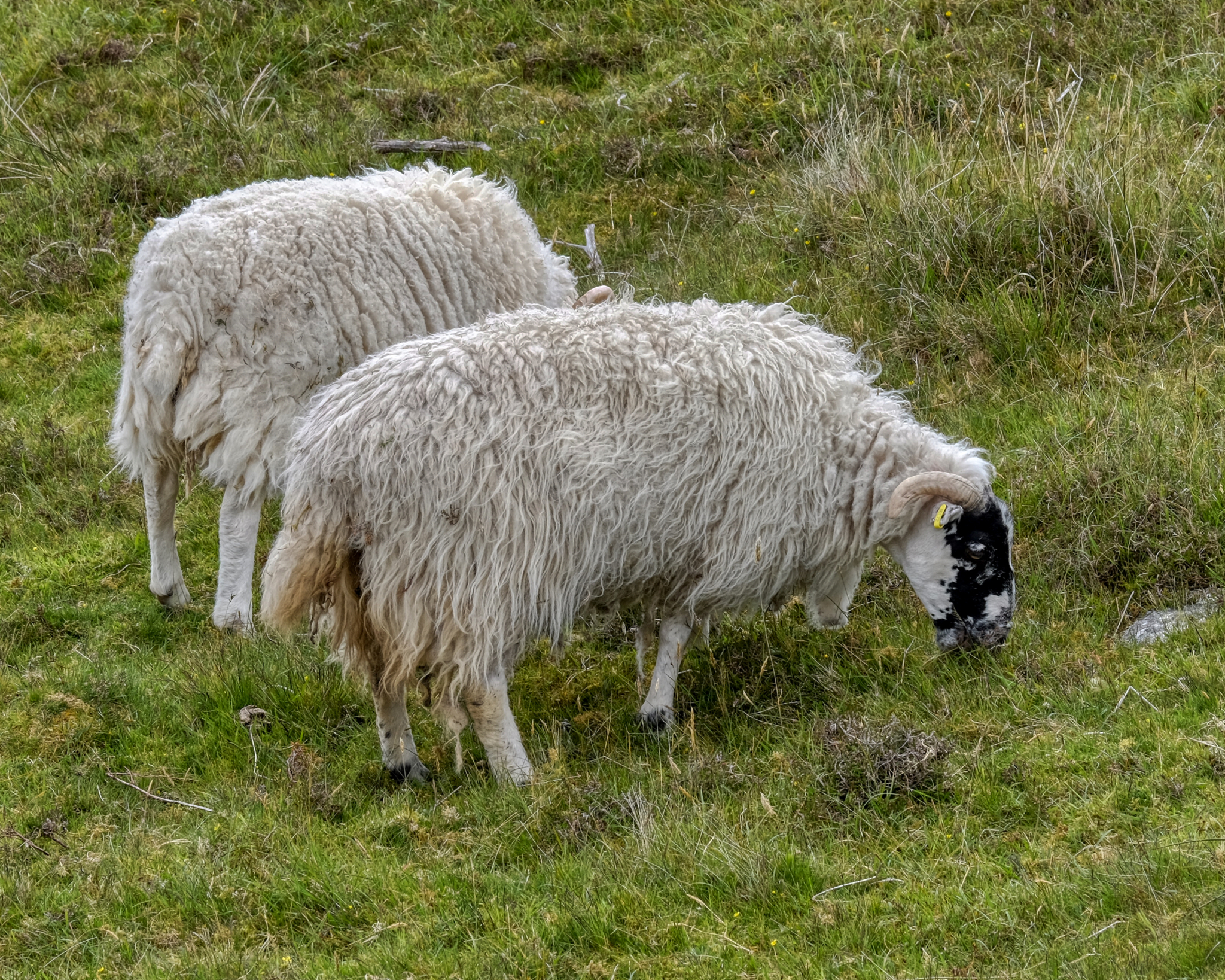 The ever-present wet sheep. We joked that all of the wool from the Outer Hebrides is already 'pre-washed.'
The ever-present wet sheep. We joked that all of the wool from the Outer Hebrides is already 'pre-washed.'
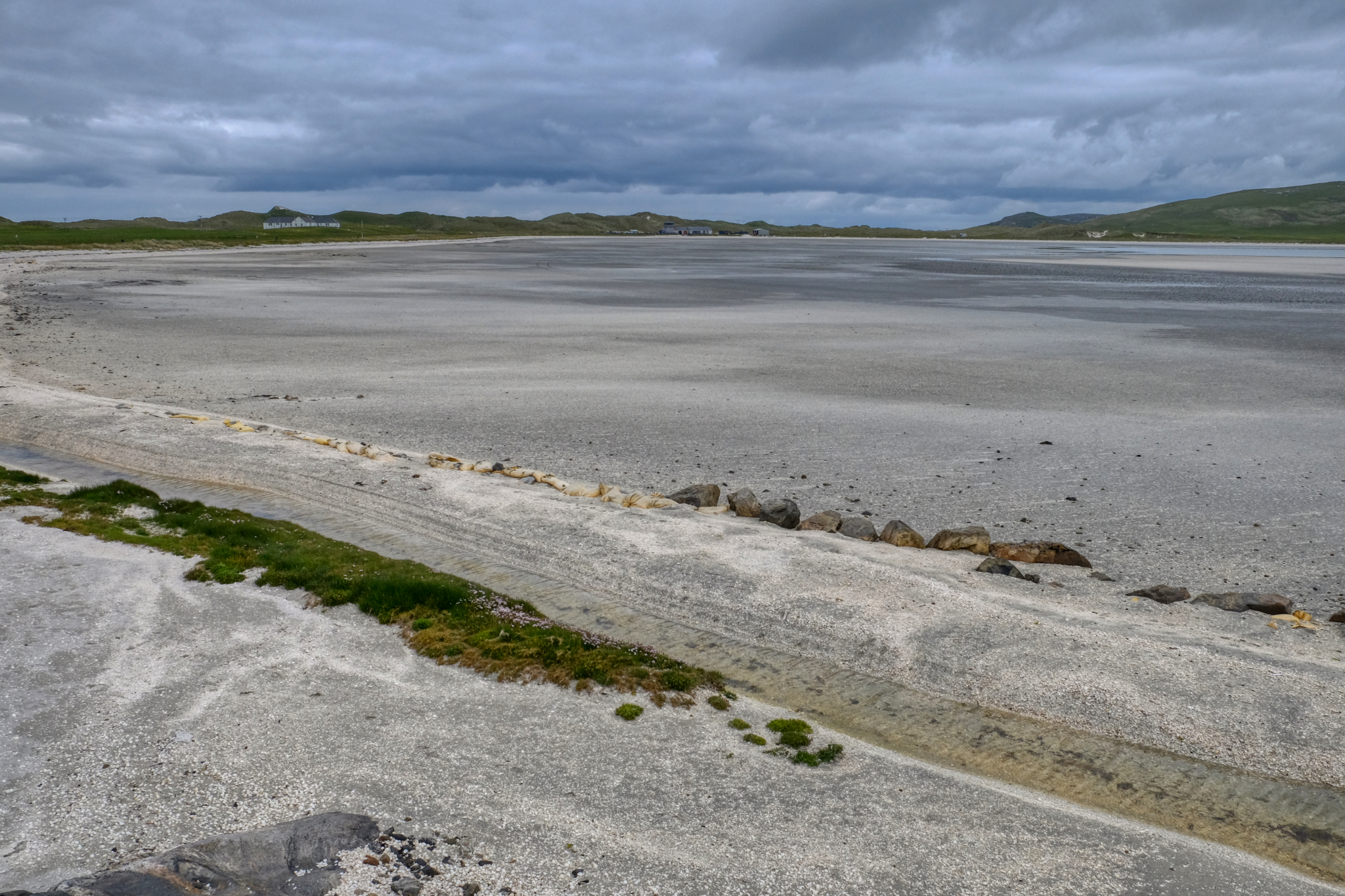 A vast stretch of the white sandy beach of a bay at low tide. Barra Airport in the background.
A vast stretch of the white sandy beach of a bay at low tide. Barra Airport in the background.
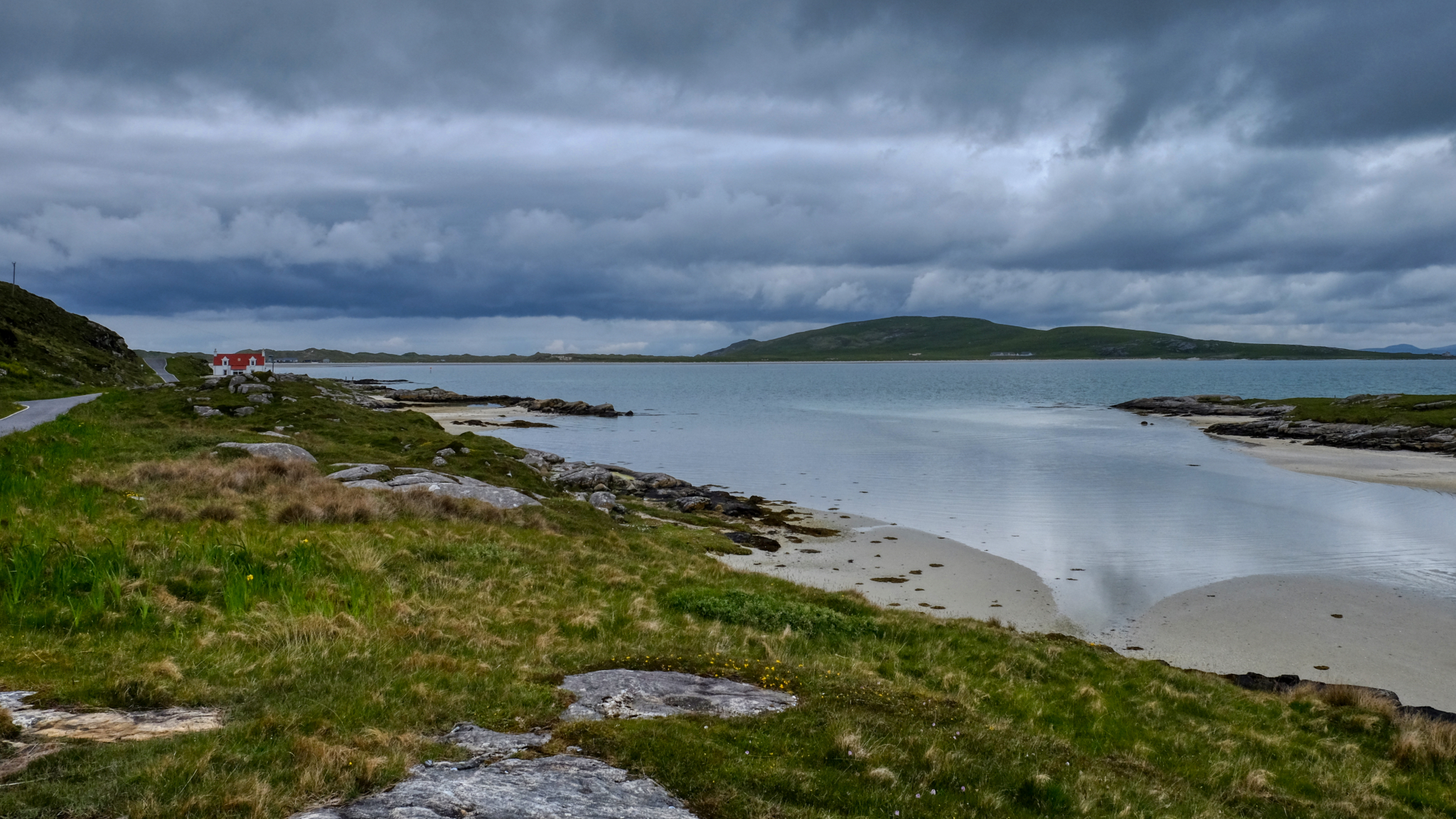 The sight of the small airport drew our attention and we drove along the bay to take a better look.
The sight of the small airport drew our attention and we drove along the bay to take a better look.
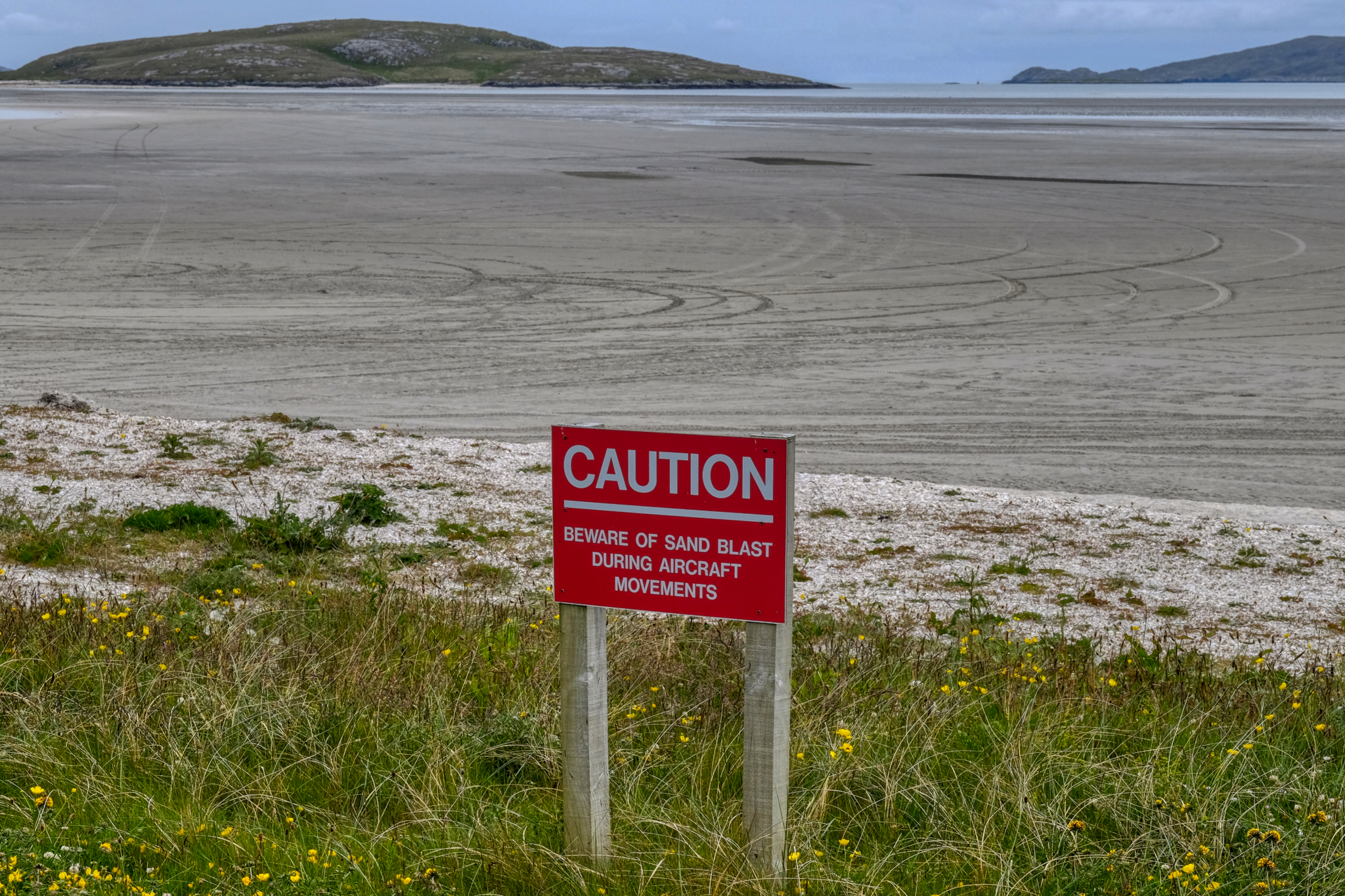 Barra Airport is the only airport in the world with regularly scheduled flights that use a sand beach for a landing strip!
Barra Airport is the only airport in the world with regularly scheduled flights that use a sand beach for a landing strip!
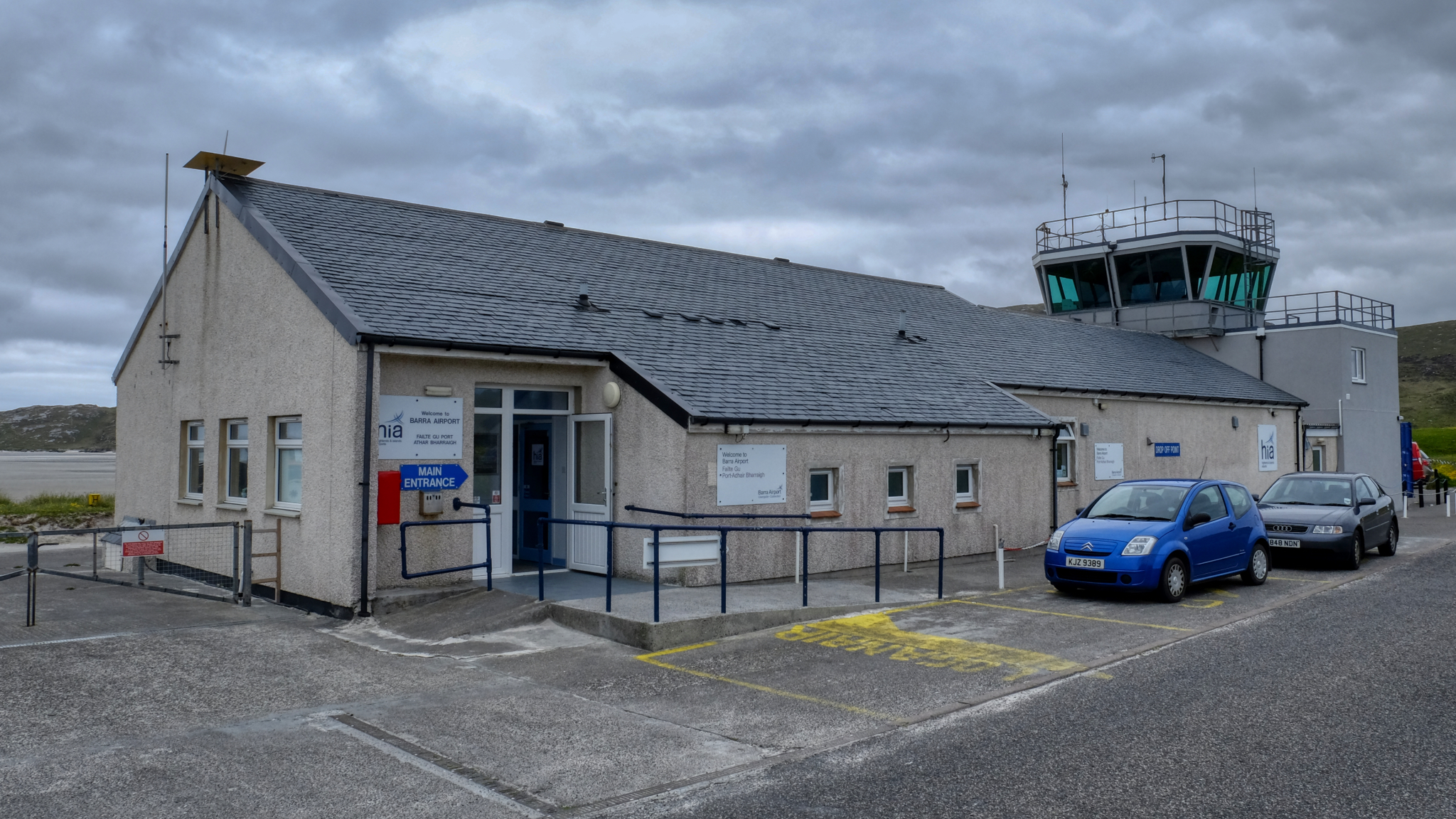 We went in the Barra Airport Terminal . . . for a cup of coffee and a snack. While we were there many people started to show up. There was a plane expected any minute. We stayed to see the big event!
We went in the Barra Airport Terminal . . . for a cup of coffee and a snack. While we were there many people started to show up. There was a plane expected any minute. We stayed to see the big event!
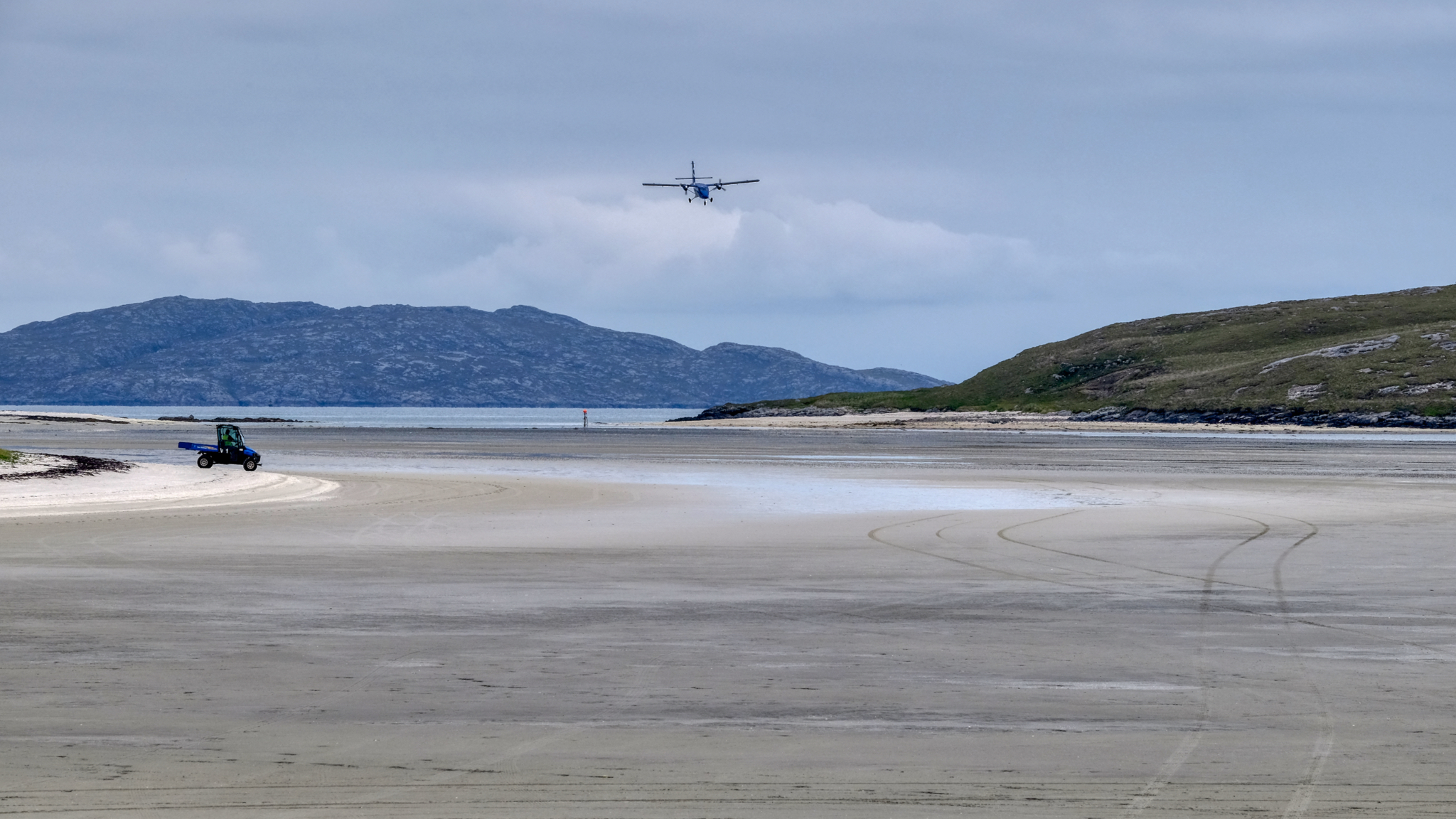 Someone called out, "There it is" . . . and we all turned to look at the airplane approaching from a distance.
Someone called out, "There it is" . . . and we all turned to look at the airplane approaching from a distance.
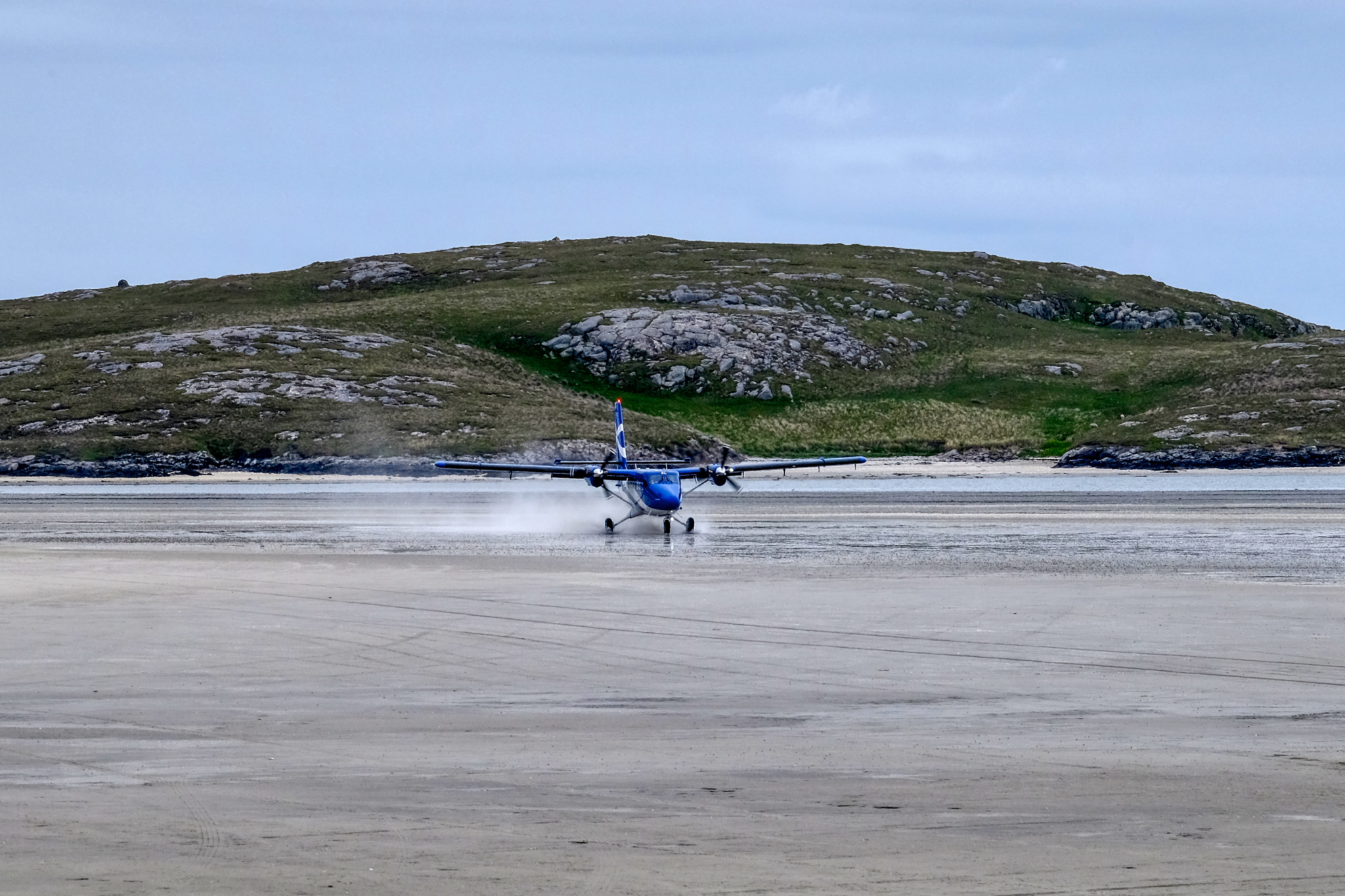 Landing on the wet beach . . .
Landing on the wet beach . . .
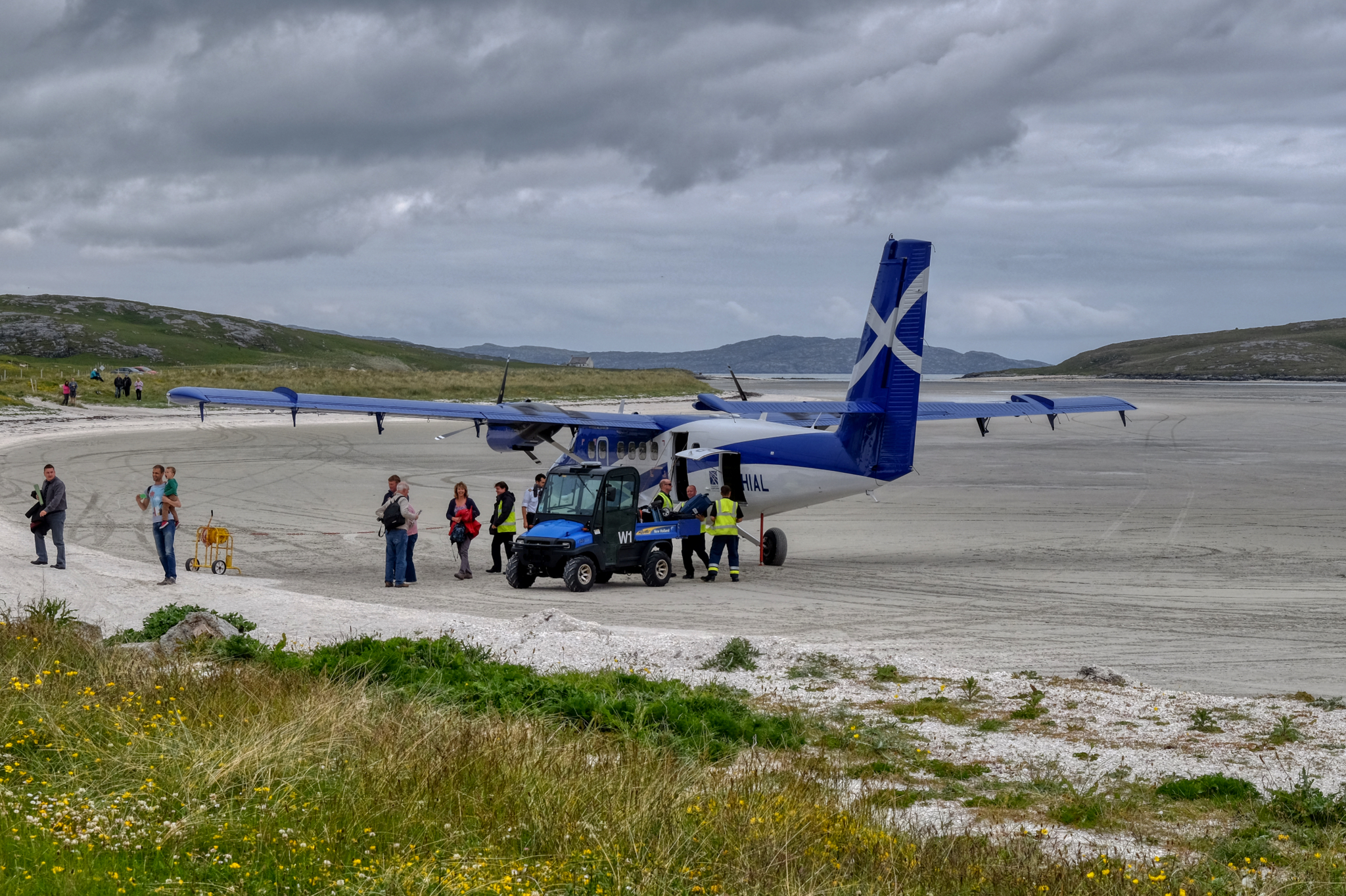 The passengers disembarked onto a sandy runway . . . as they have been doing since 1936. The only destination from this airport is Glasgow.
The passengers disembarked onto a sandy runway . . . as they have been doing since 1936. The only destination from this airport is Glasgow.
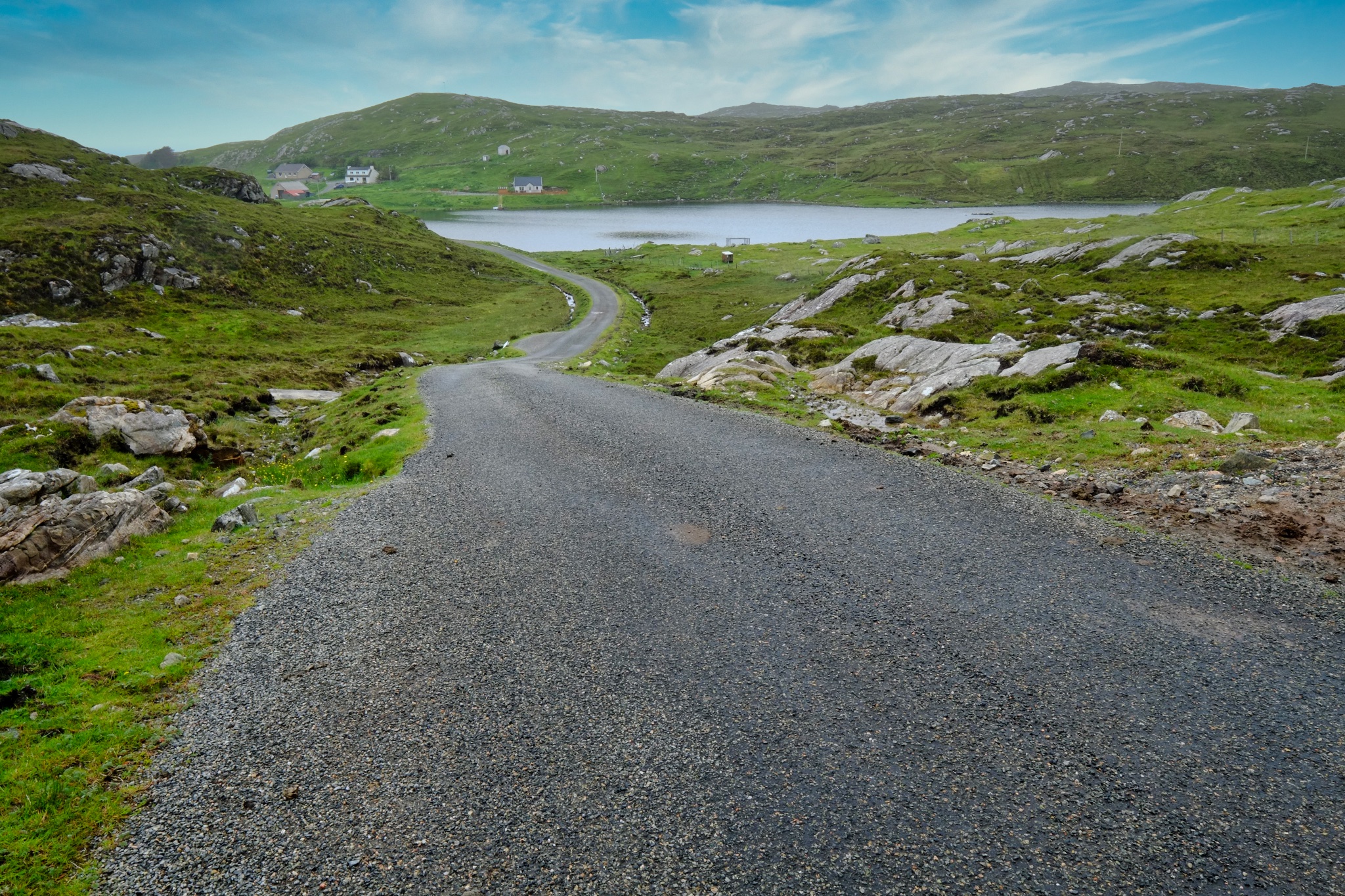 And onward we drove north on these marvelous one lane roads.
And onward we drove north on these marvelous one lane roads.
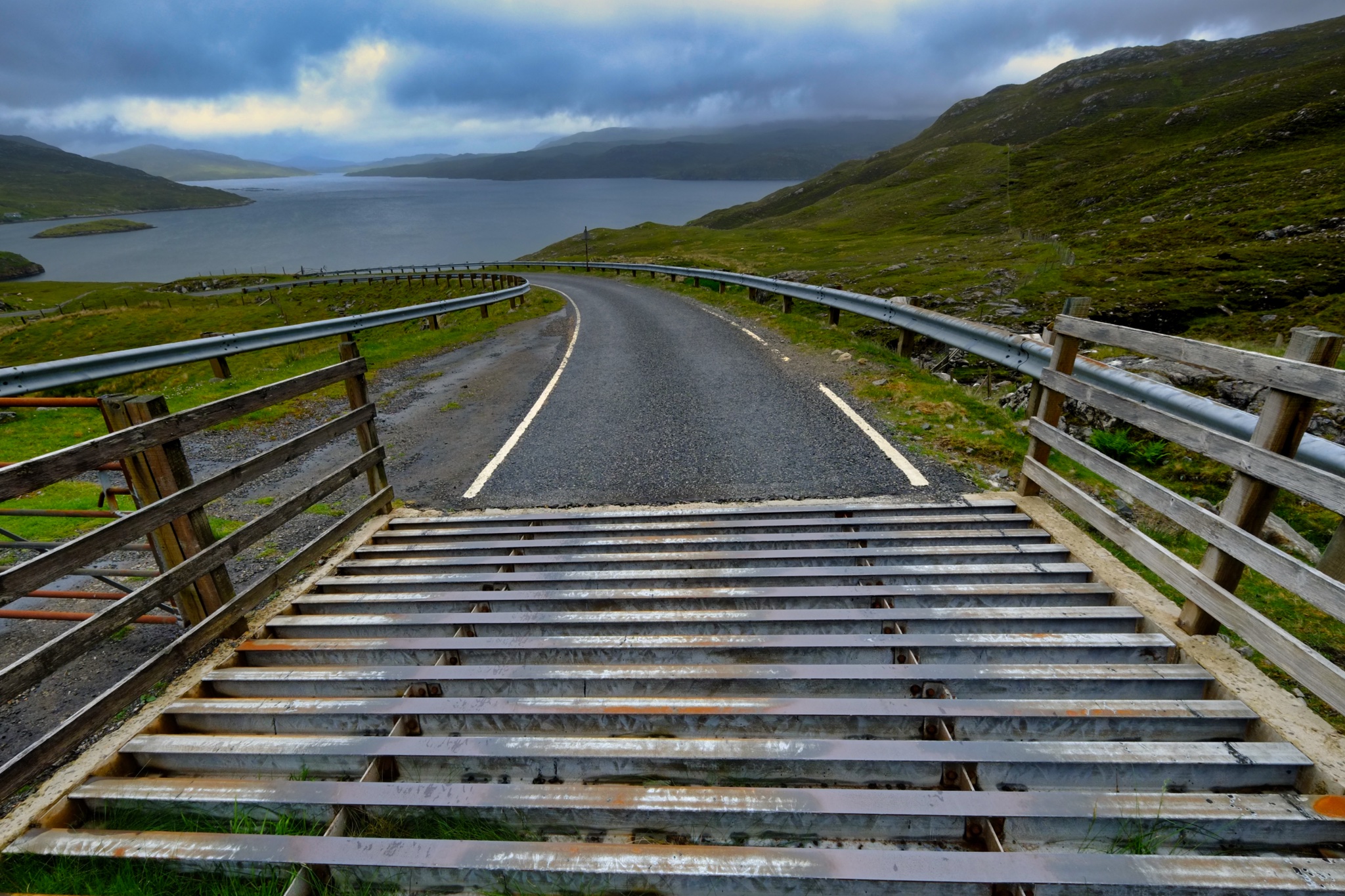 With sheep and Highland cows grazing everywhere, we encountered many of these 'cattle guards.'
With sheep and Highland cows grazing everywhere, we encountered many of these 'cattle guards.'
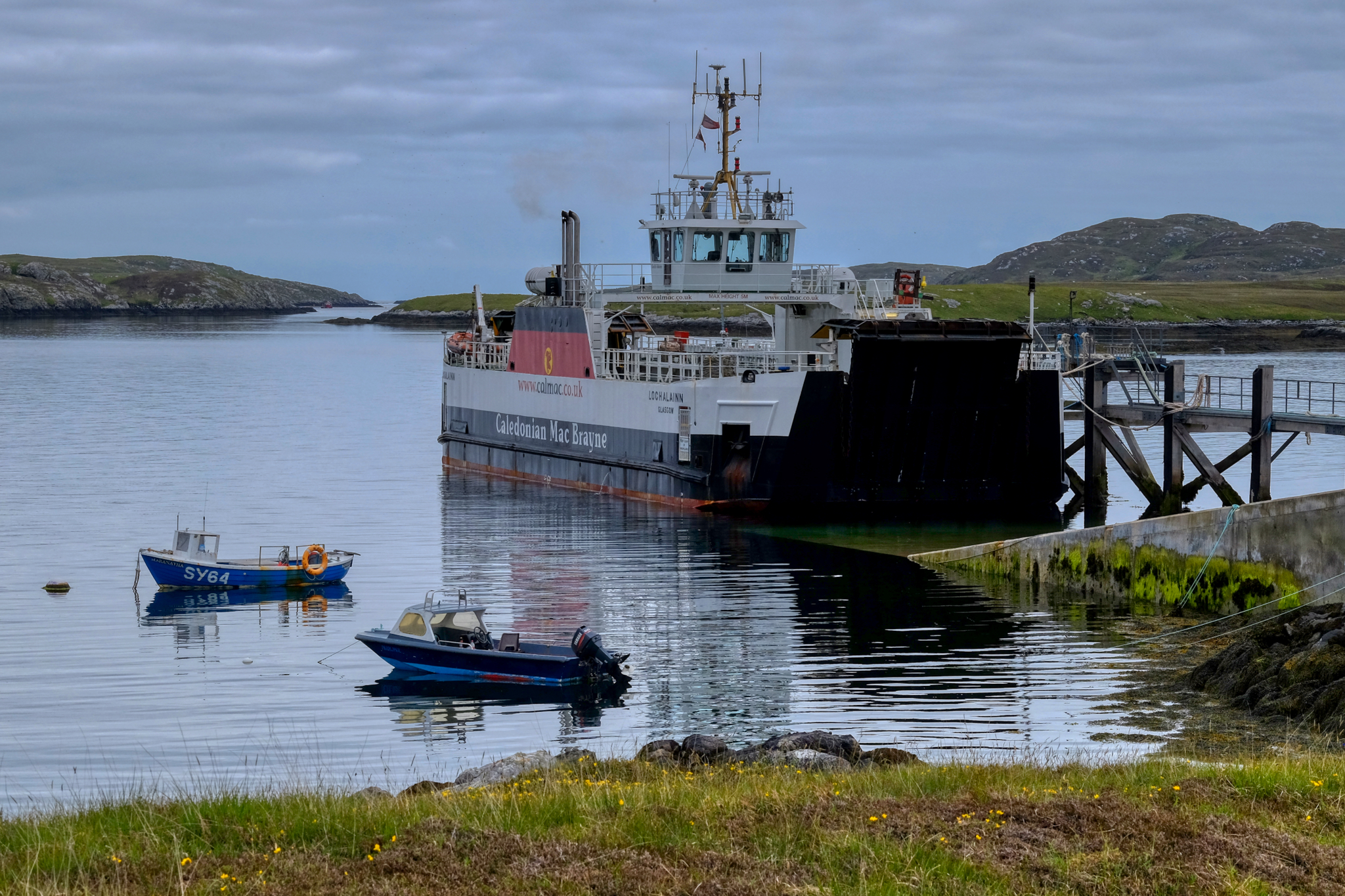 At the northern tip of Barra Island we reached the Ardmhor to Eriskay ferry. There are 5 round trips a day, each carrying only 18 vehicles. With only 90 possible places on this ferry to drive north up through the length of the Outer Hebrides, it is important to book in advance. We had.
At the northern tip of Barra Island we reached the Ardmhor to Eriskay ferry. There are 5 round trips a day, each carrying only 18 vehicles. With only 90 possible places on this ferry to drive north up through the length of the Outer Hebrides, it is important to book in advance. We had.
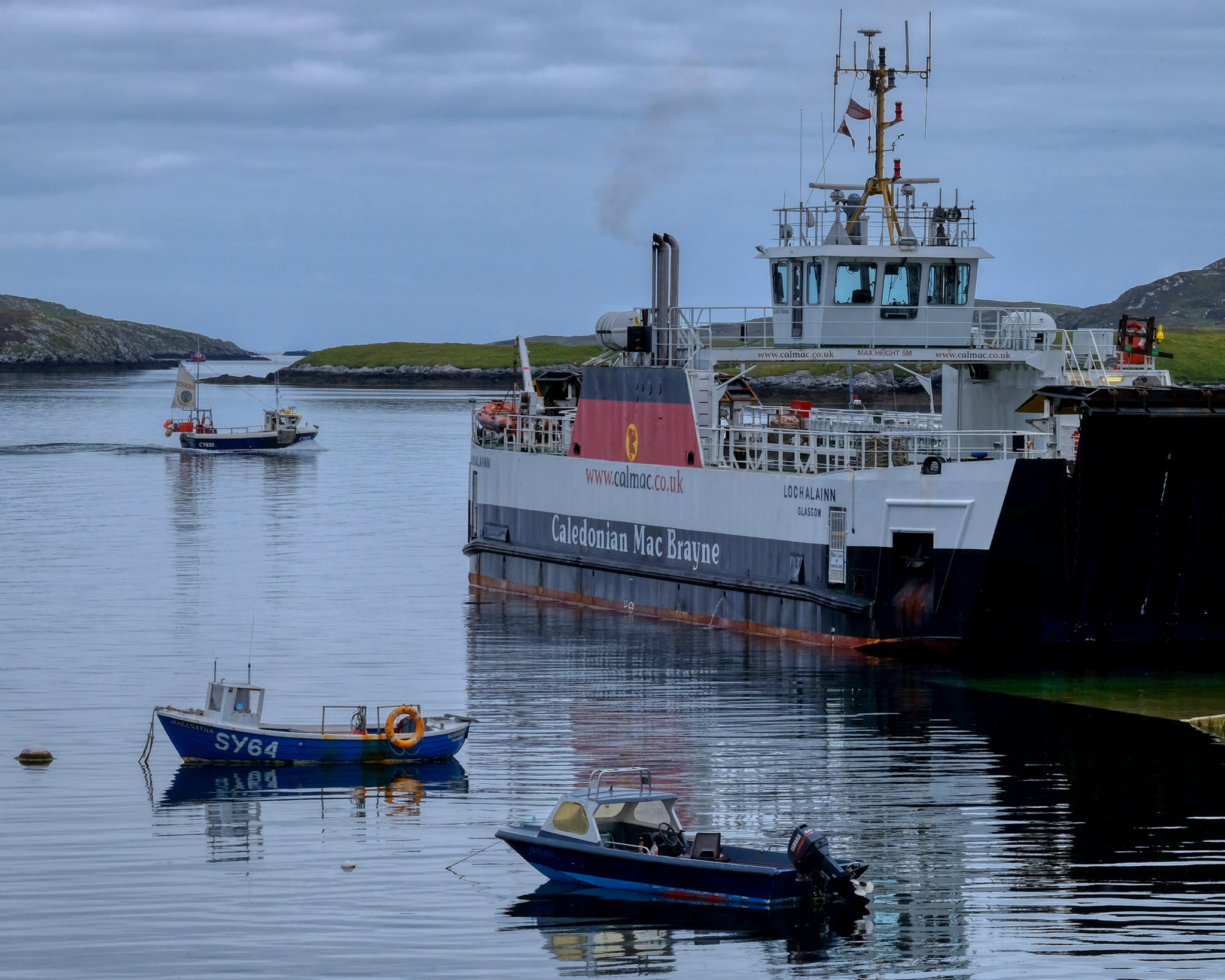 We arrived at the ferry terminal a little early . . . which allowed me some time to explore the area.
We arrived at the ferry terminal a little early . . . which allowed me some time to explore the area.
 Such a remote and fascinating place.
Such a remote and fascinating place.
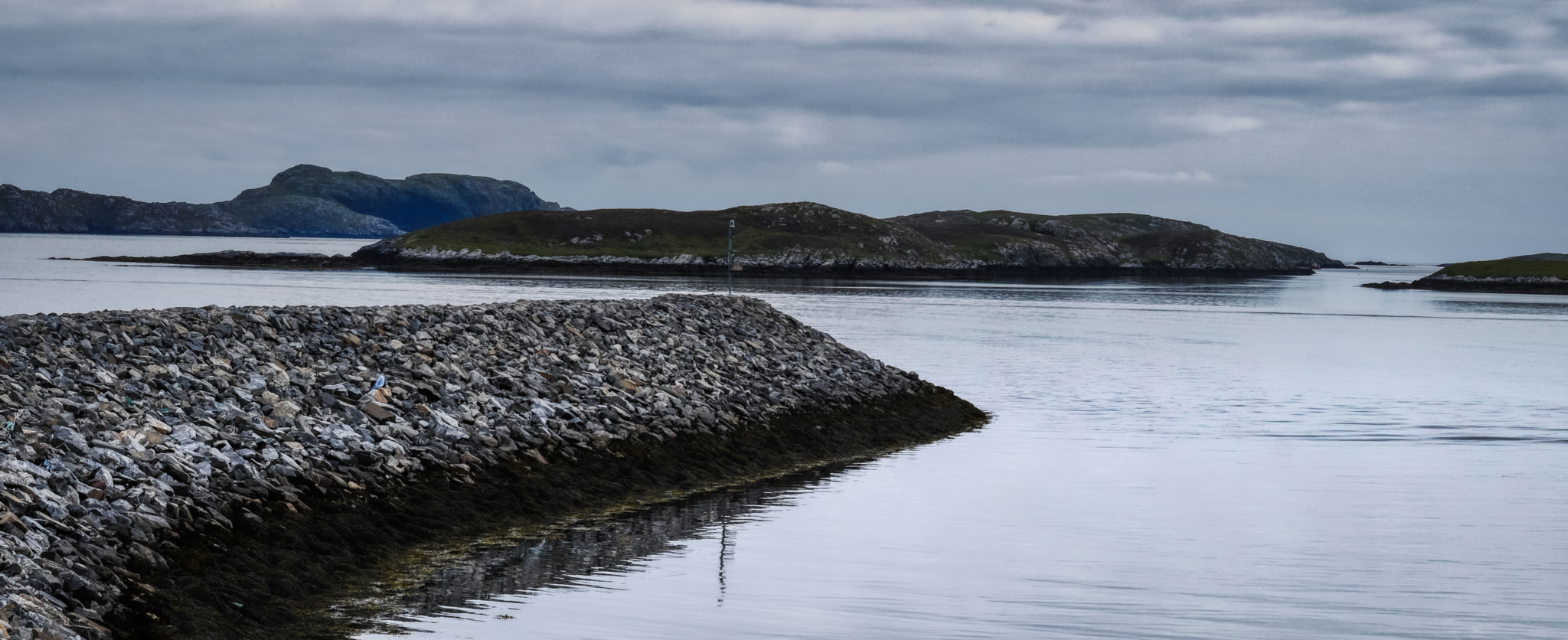 The sea always framed by outcrops of stone islands . . .
The sea always framed by outcrops of stone islands . . .
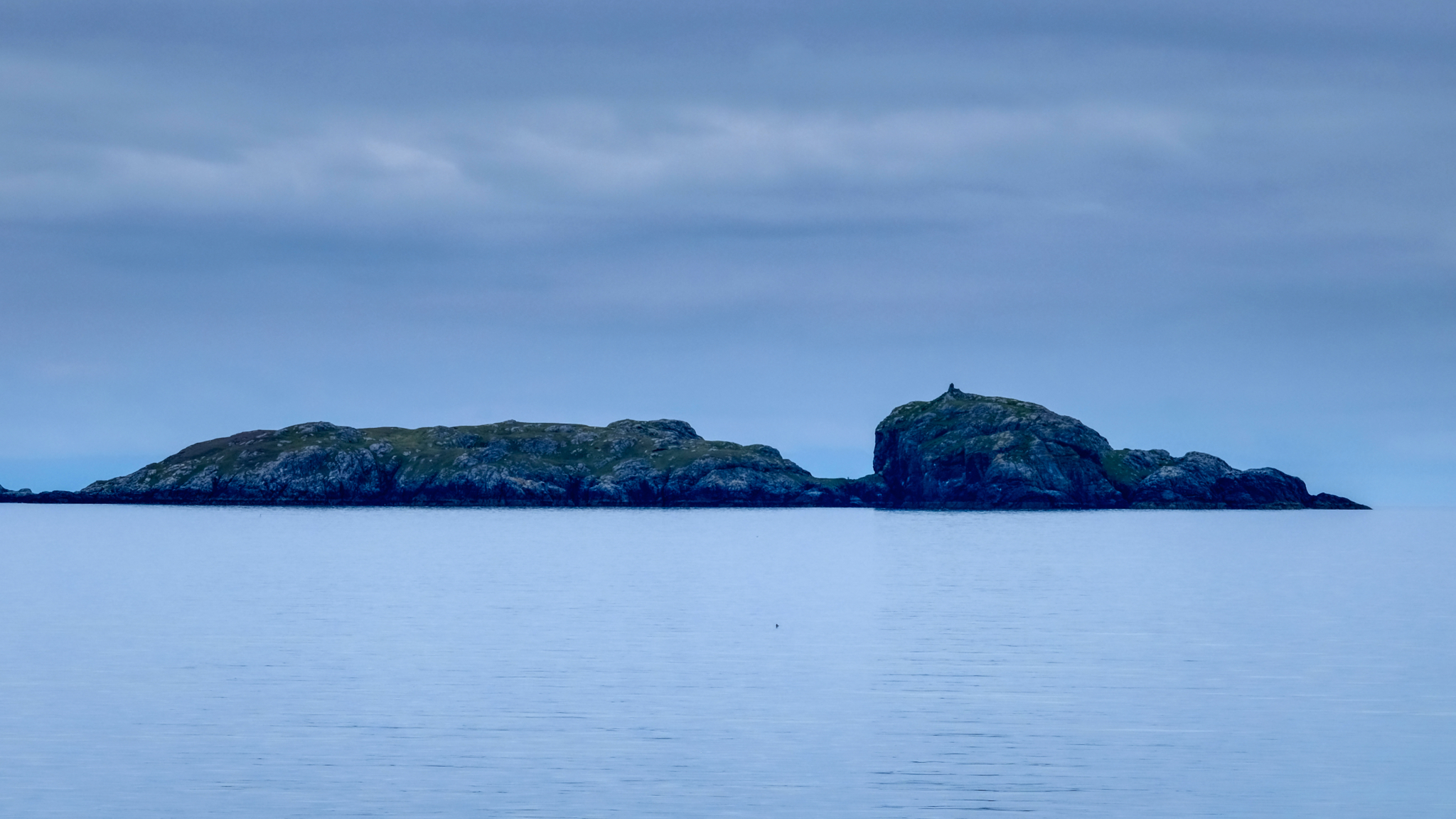 The passage between Barra Island and Eriskay Island was eerily mystical . . .
The passage between Barra Island and Eriskay Island was eerily mystical . . .
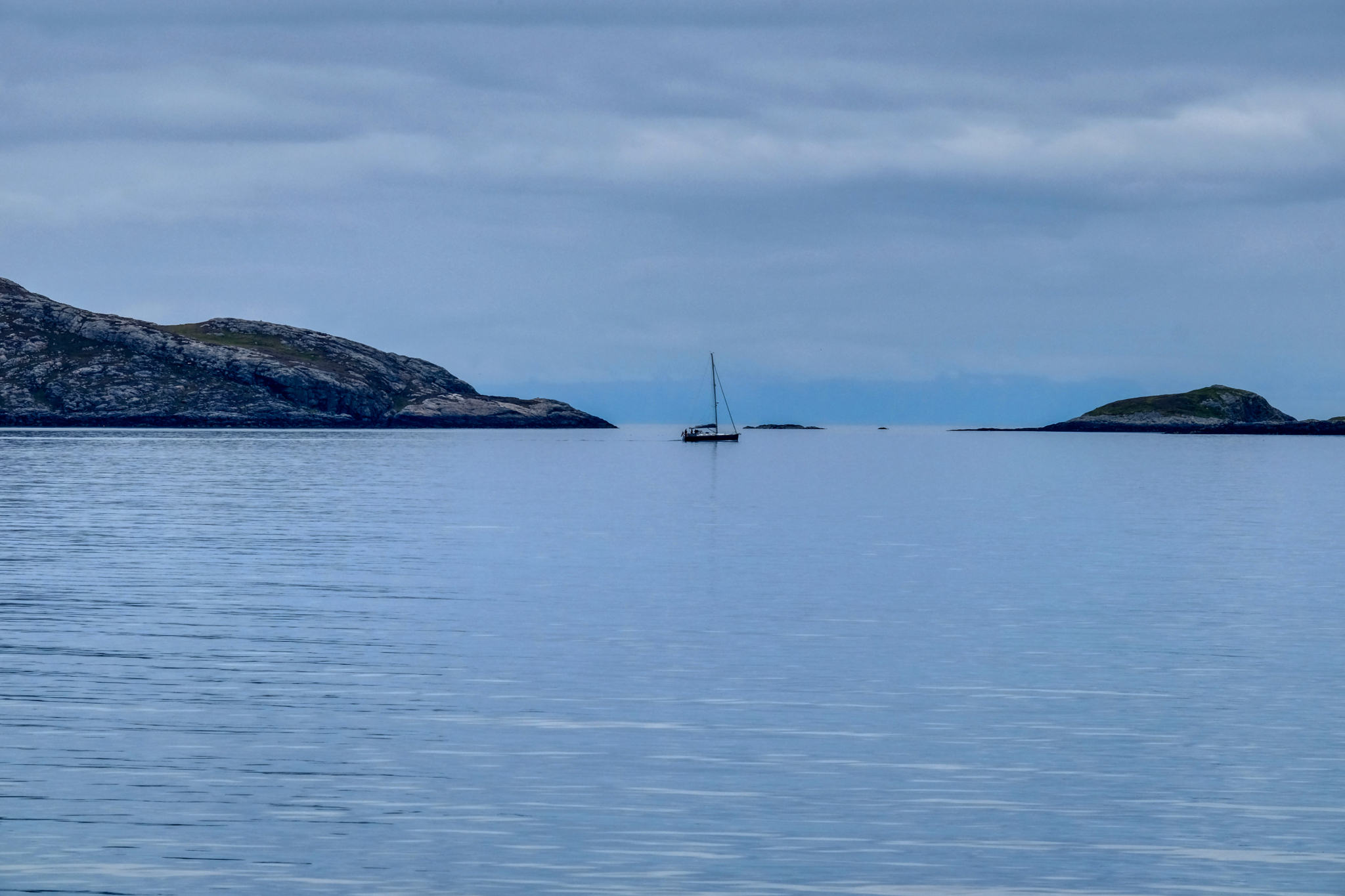 My memory of the passage was of the total silence . . . hardly a sound beyond the quiet thumping of the ferry diesel at work. Calm. Remote.
My memory of the passage was of the total silence . . . hardly a sound beyond the quiet thumping of the ferry diesel at work. Calm. Remote.
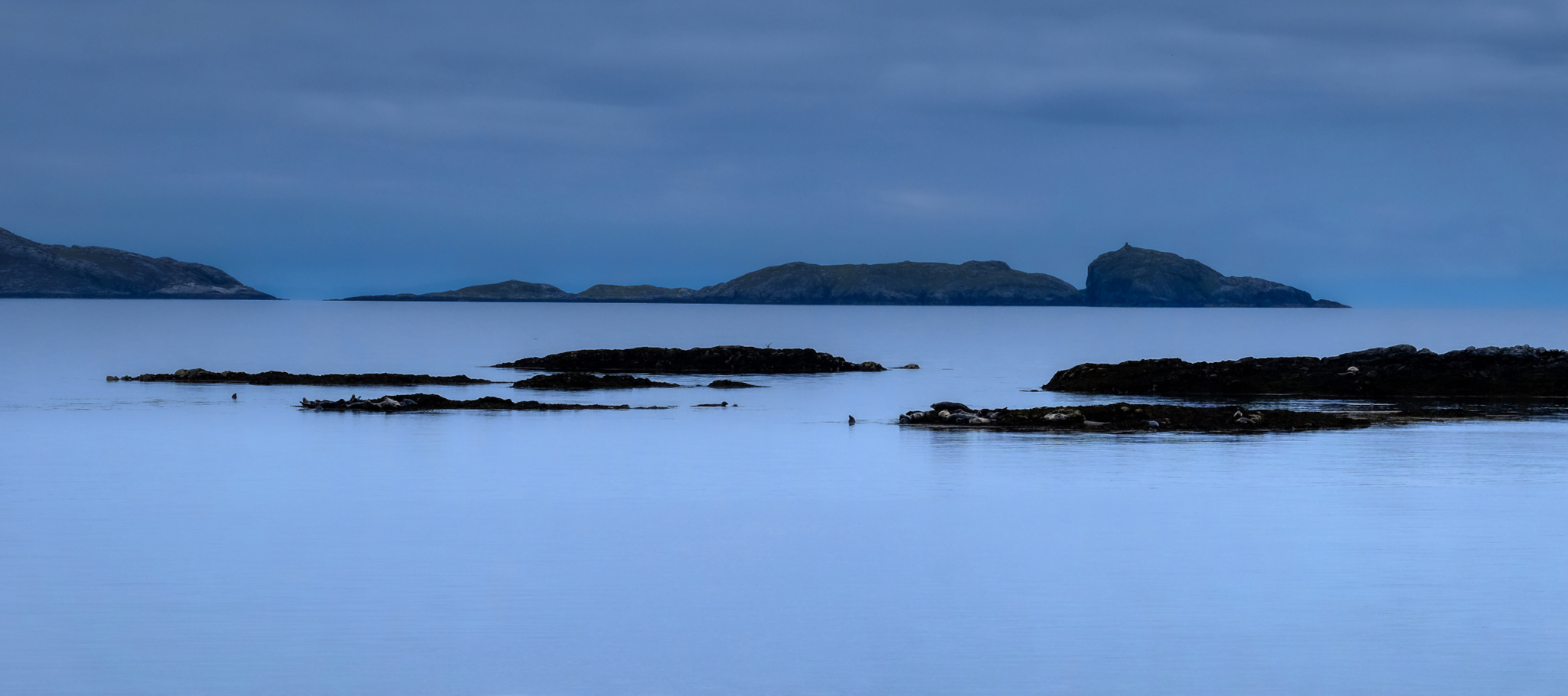 There was a bit of commotion among my fellow passengers. Someone remarked, "Look. Seals." And there they were.
There was a bit of commotion among my fellow passengers. Someone remarked, "Look. Seals." And there they were.
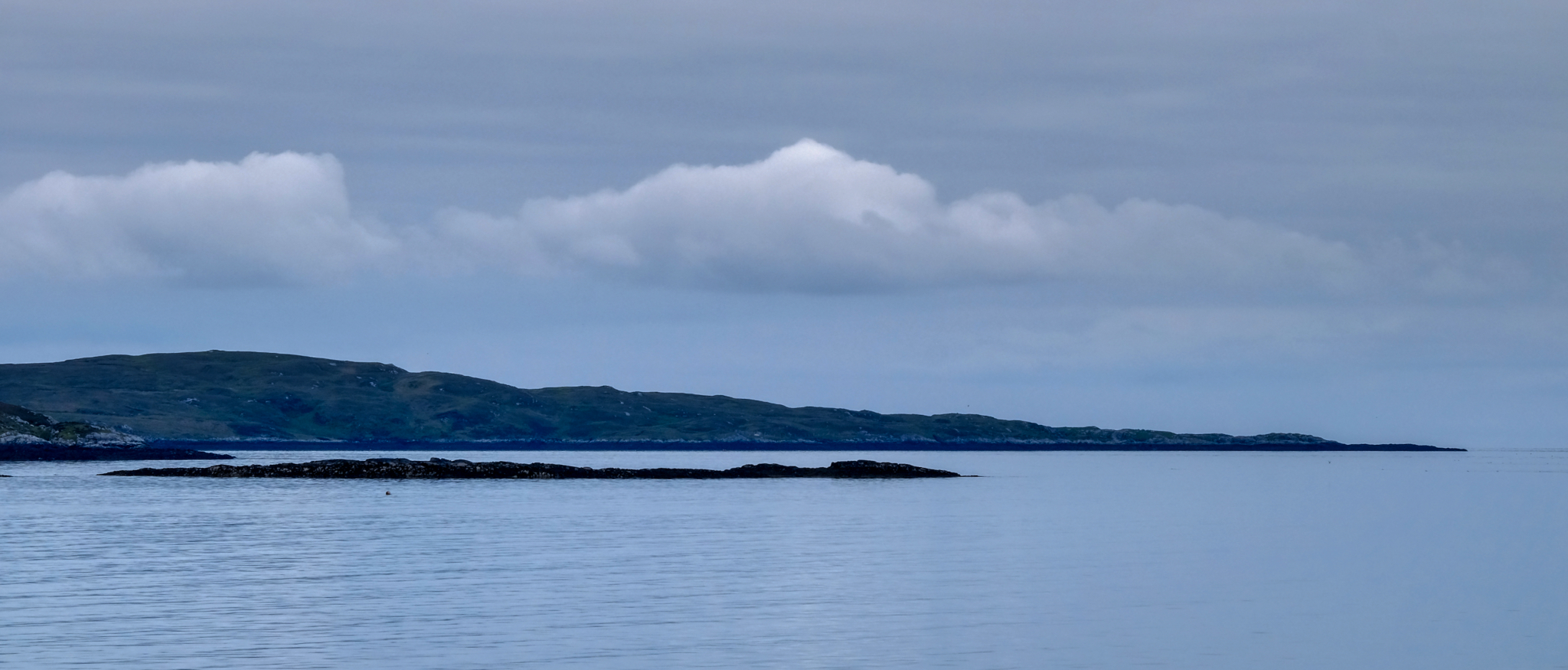 A strange, captivating, natural beauty.
A strange, captivating, natural beauty.
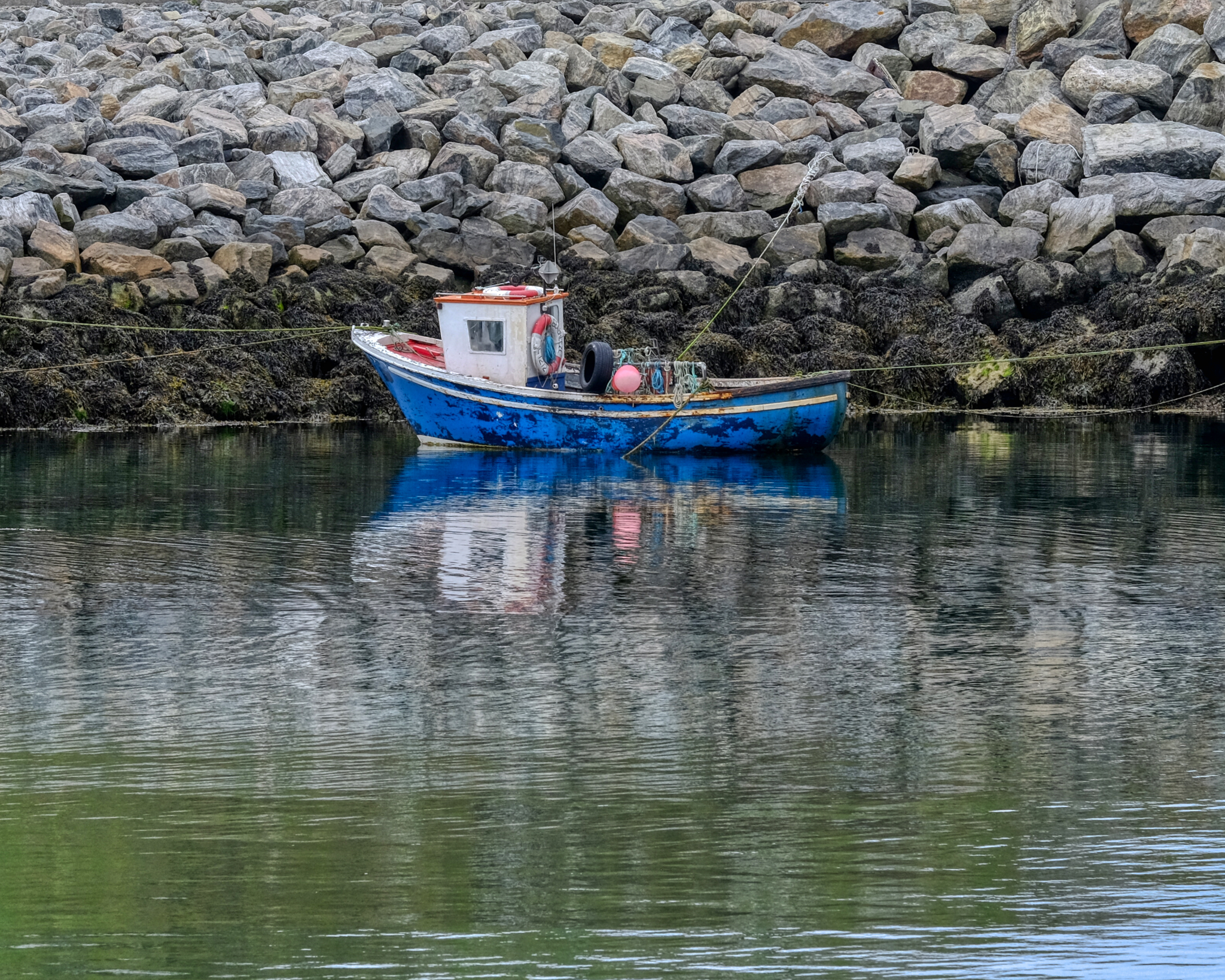 Arriving on the Isle of Eriskay.
Arriving on the Isle of Eriskay.
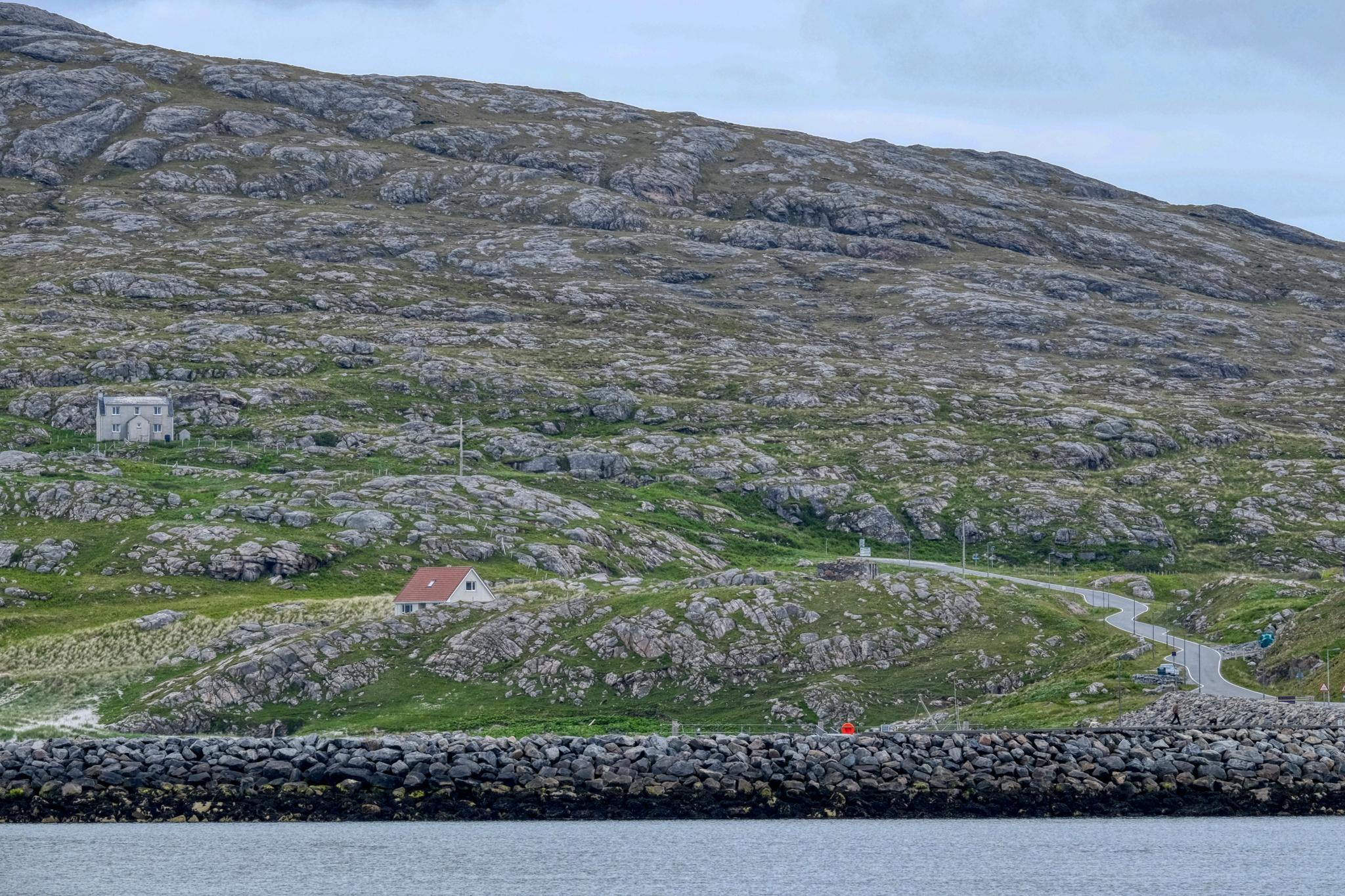 Rocky, barren hillside . . . and the one-lane road that will take us further up the Outer Hebrides chain of islands.
Rocky, barren hillside . . . and the one-lane road that will take us further up the Outer Hebrides chain of islands.
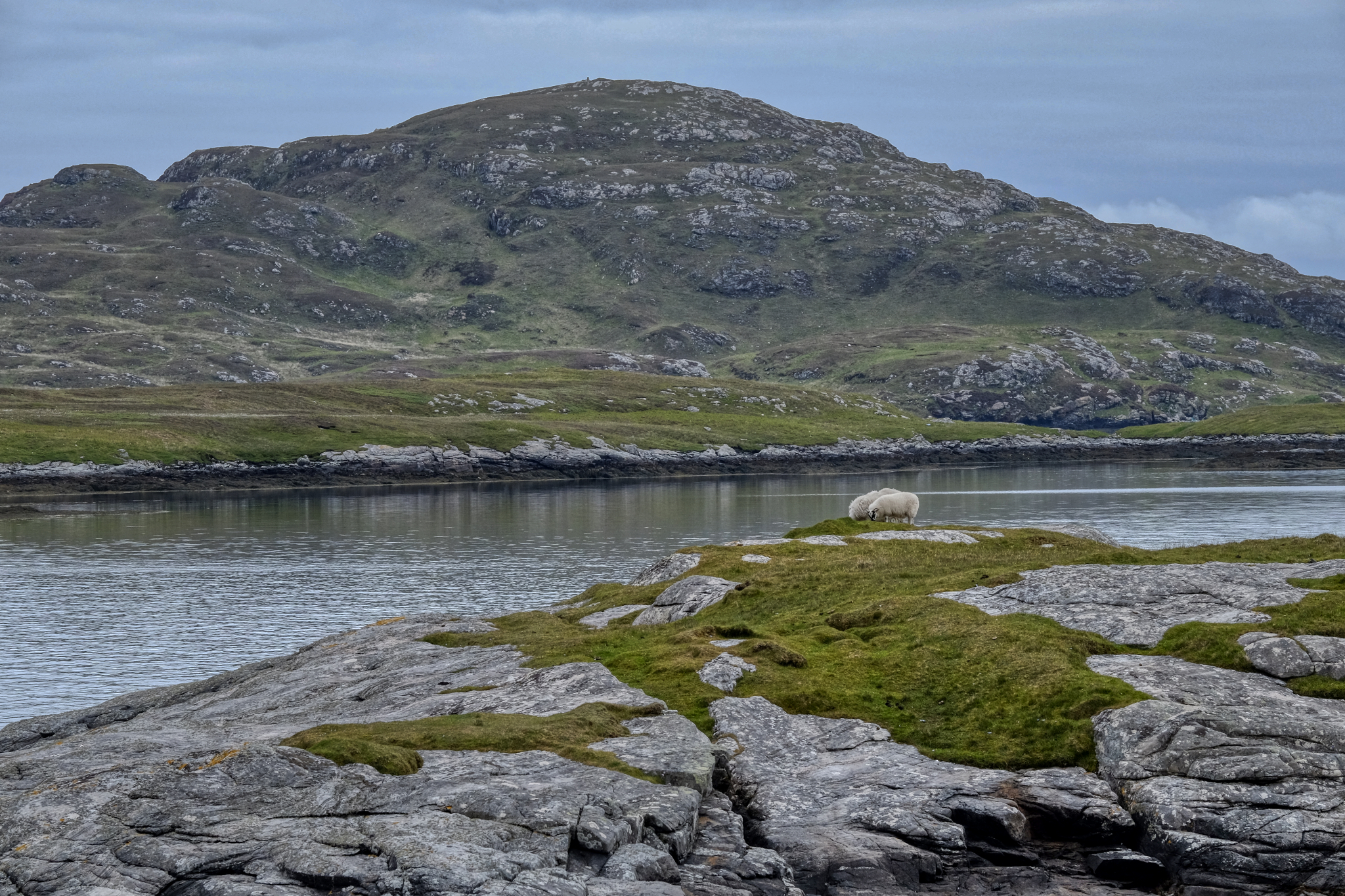 We quickly crossed Eriskay Island and drove up and across a causeway to South Uist Island.
We quickly crossed Eriskay Island and drove up and across a causeway to South Uist Island.
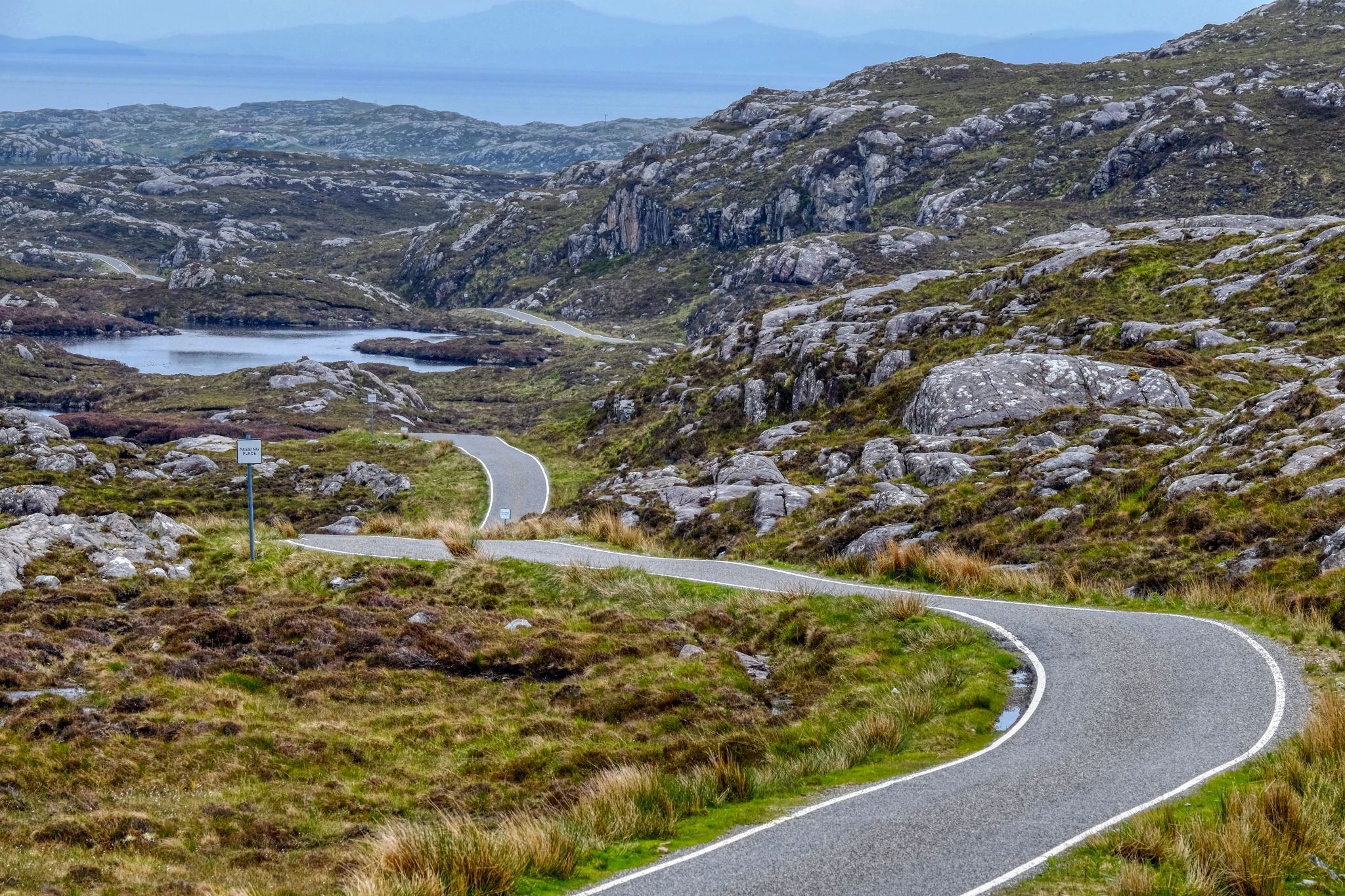 I absolutely loved driving on these narrow, winding, one-lane roads through this unique topography.
I absolutely loved driving on these narrow, winding, one-lane roads through this unique topography.
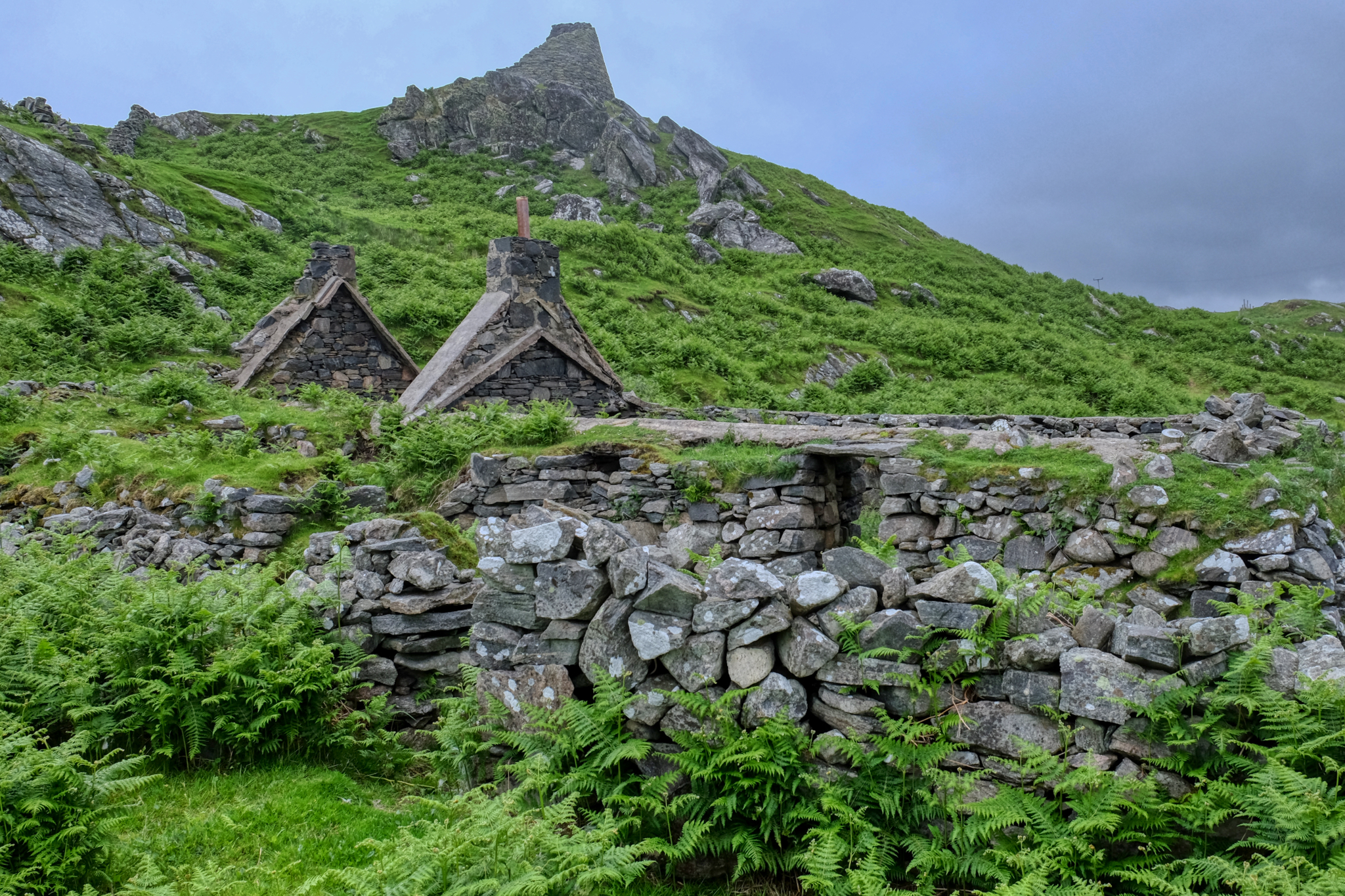 The remains of an old stone crofters house . . . and a stone tower on the hilltop.
The remains of an old stone crofters house . . . and a stone tower on the hilltop.
 Midsummer flowers, grey skies, dilapidated stone ruins . . . . The Isle of Lewis.
Midsummer flowers, grey skies, dilapidated stone ruins . . . . The Isle of Lewis.
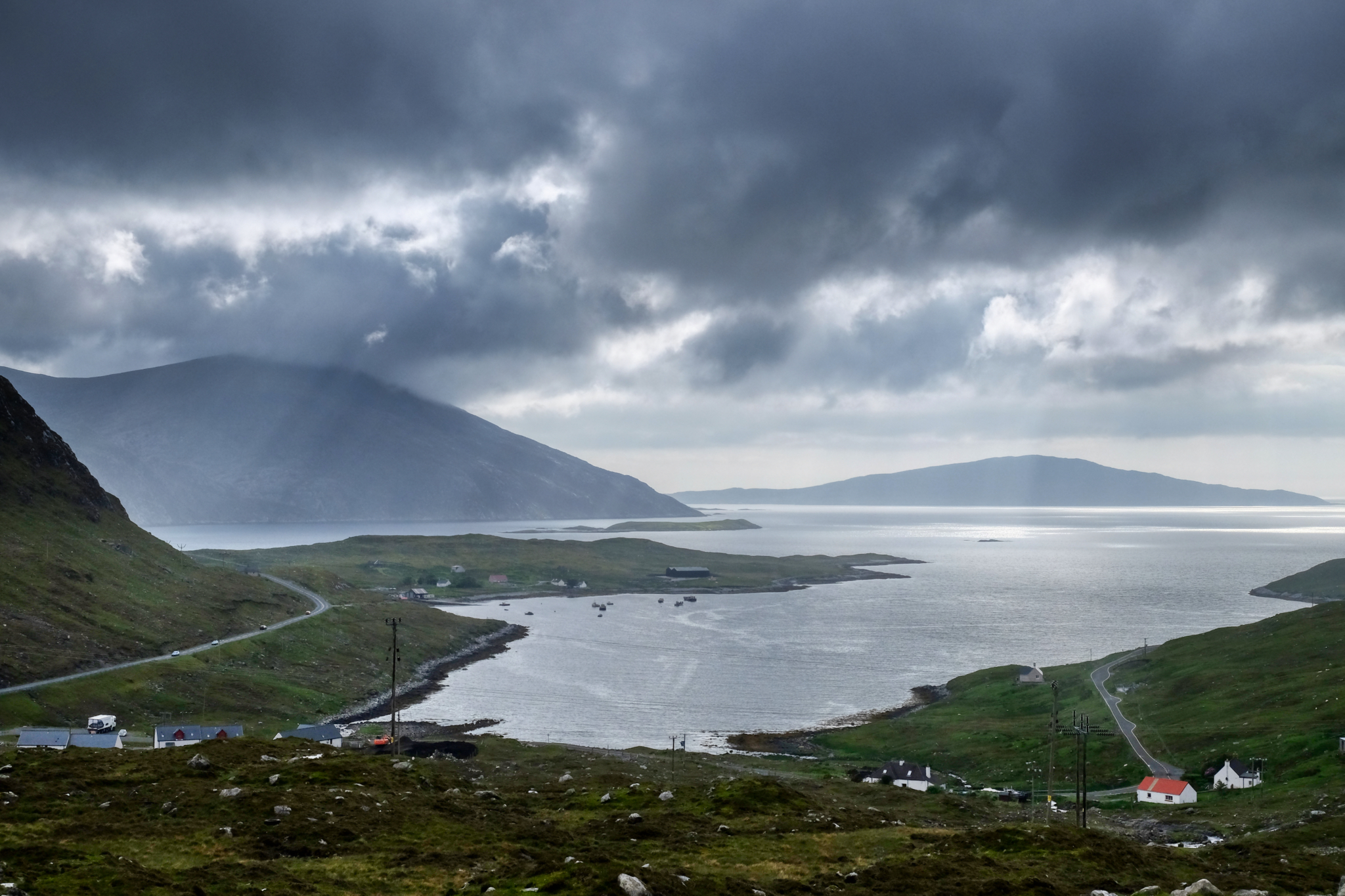 In and around mountain passes, sudden grand views out across the bays to the outlying islands. Magnificent scenery. Like no other place I have ever been.
In and around mountain passes, sudden grand views out across the bays to the outlying islands. Magnificent scenery. Like no other place I have ever been.
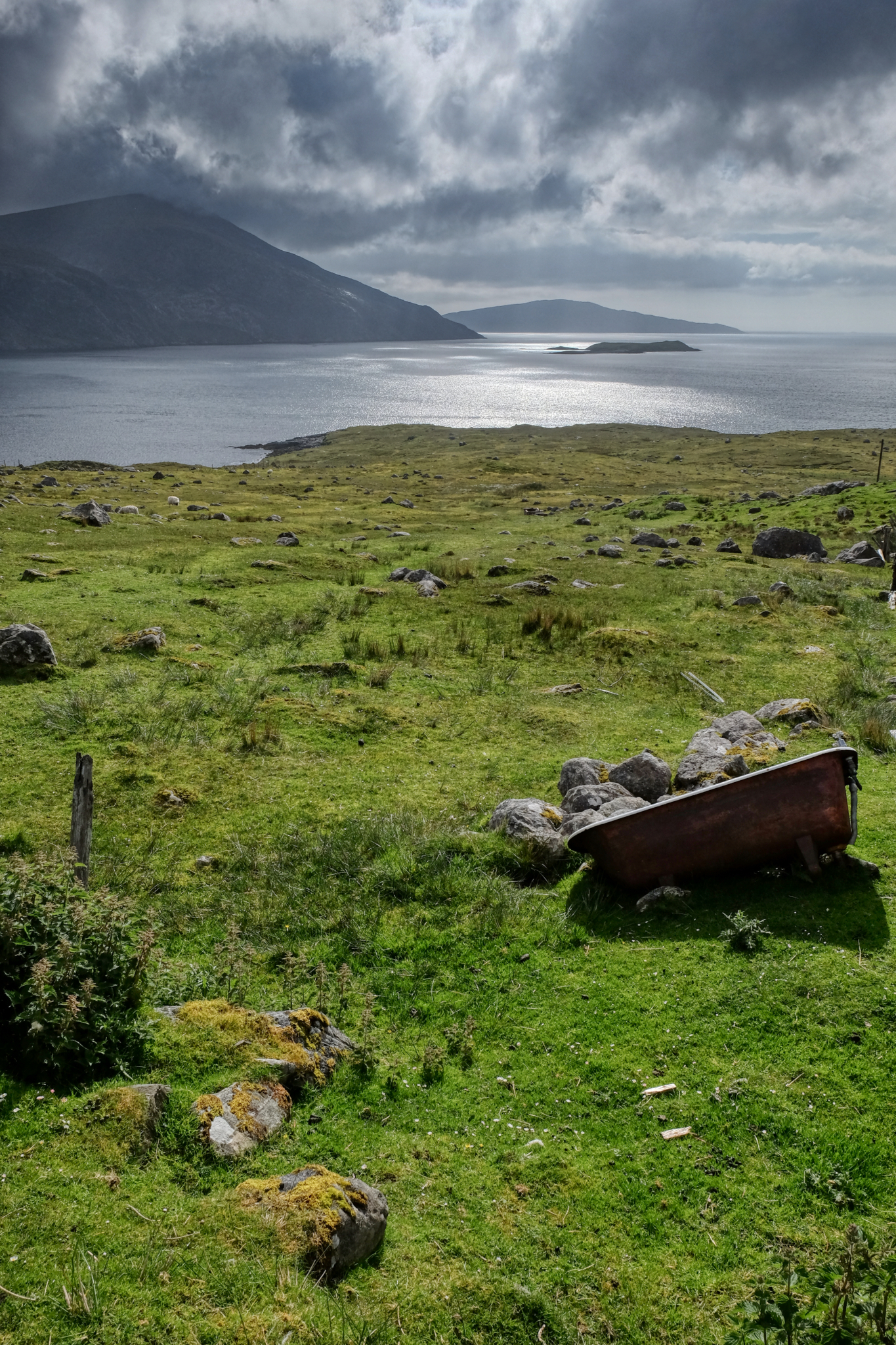 Grand views like no place else.
Grand views like no place else.
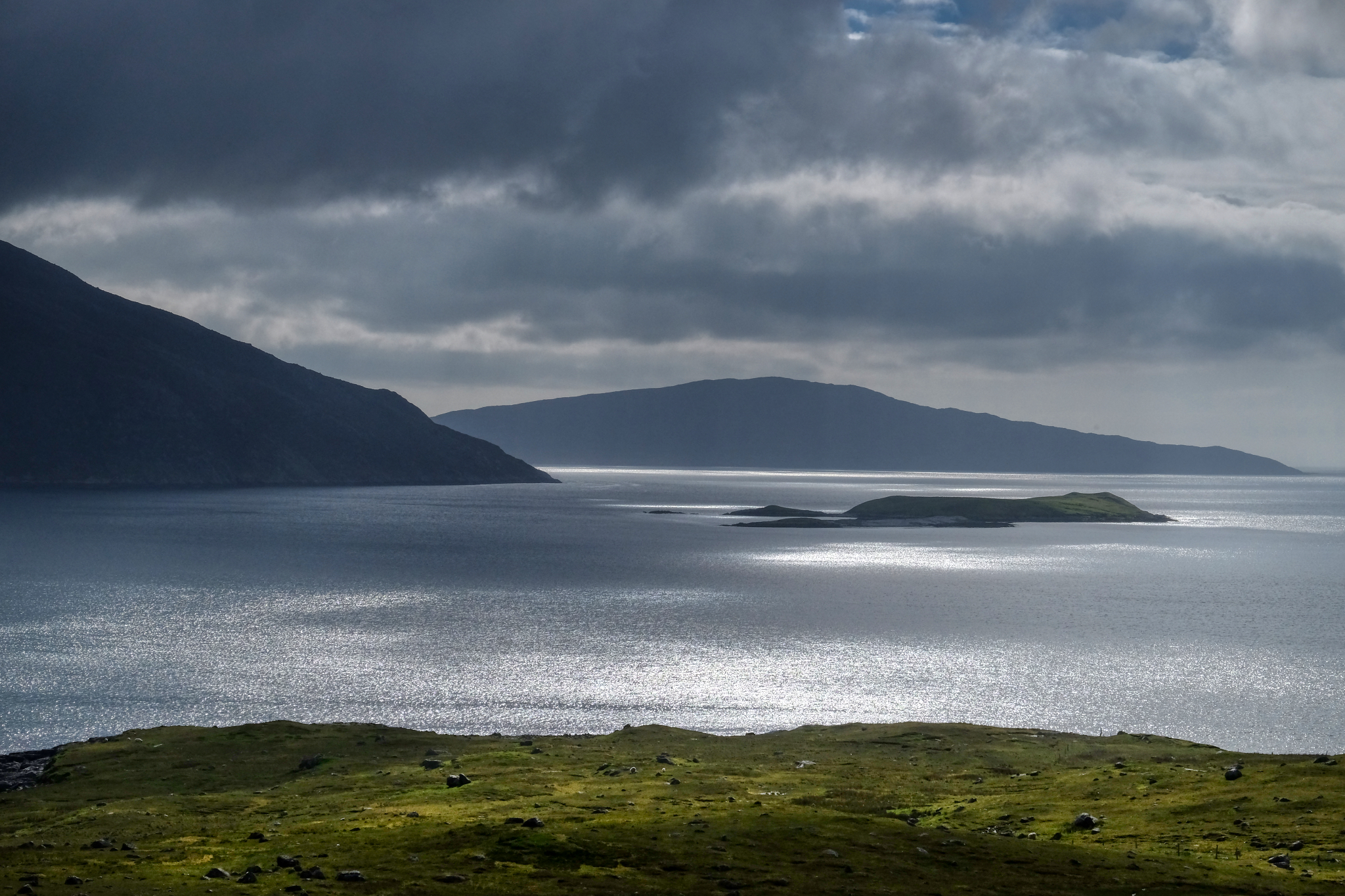 Patches of light on the sea . . .
Patches of light on the sea . . .
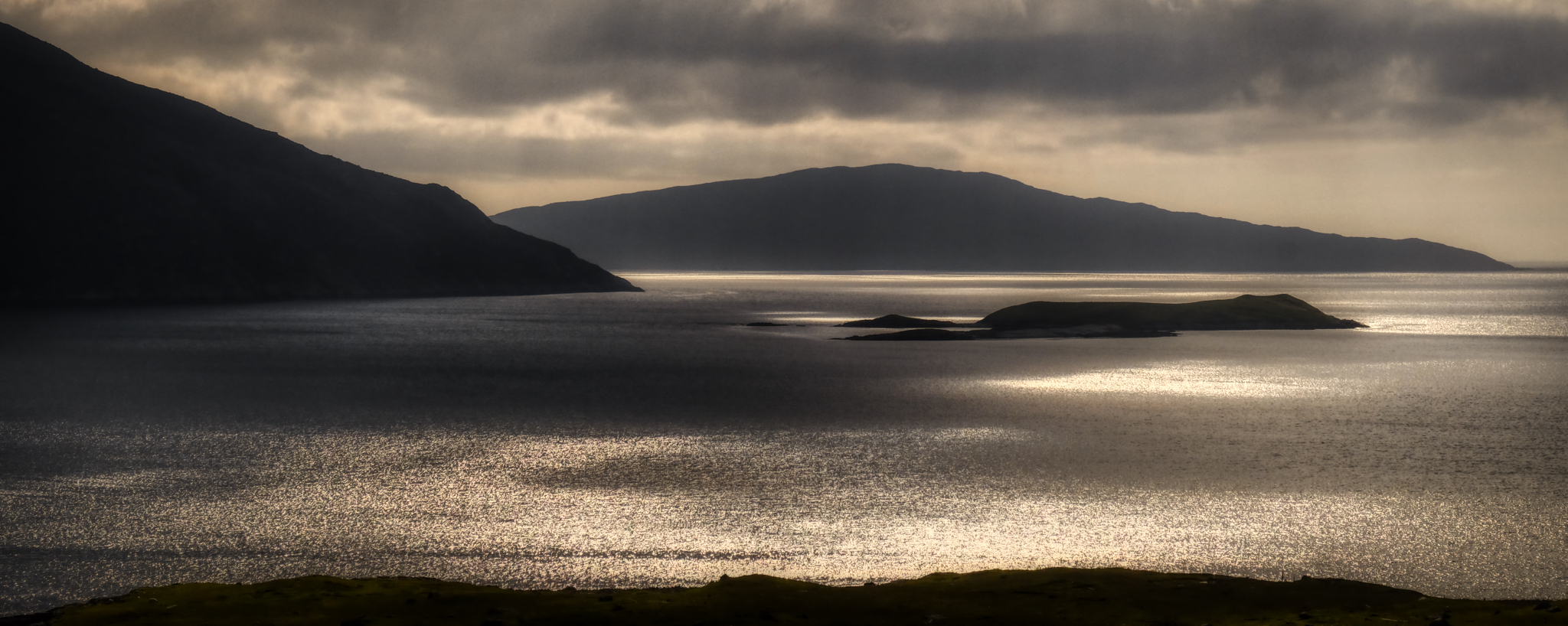 I am not usually partial to added photo 'artsy' technique, but this scene seemed to demand a sepia tone. Amazing.
I am not usually partial to added photo 'artsy' technique, but this scene seemed to demand a sepia tone. Amazing.
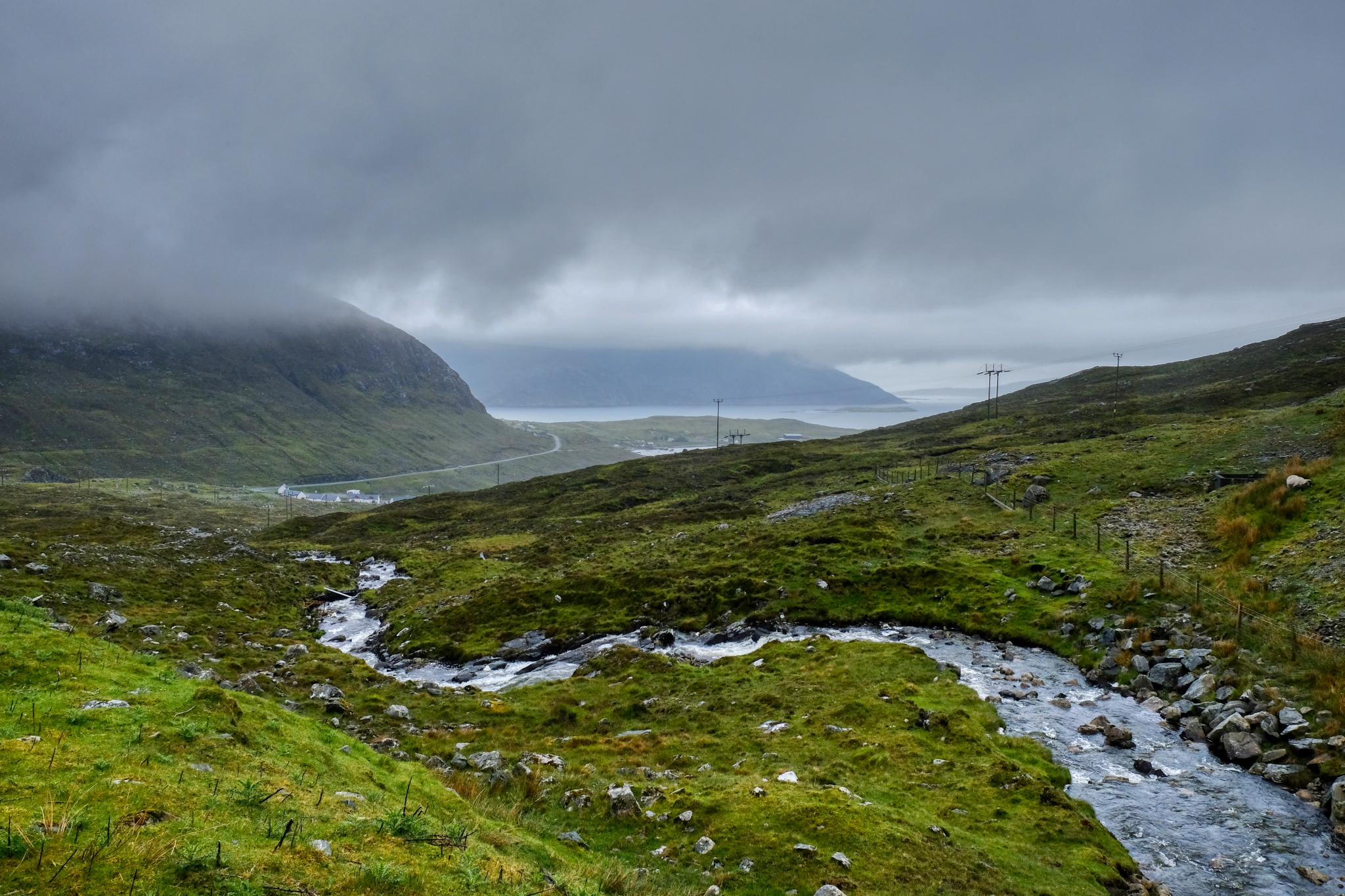 Driving up the small winding road along side a rushing stream . . . .
Driving up the small winding road along side a rushing stream . . . .
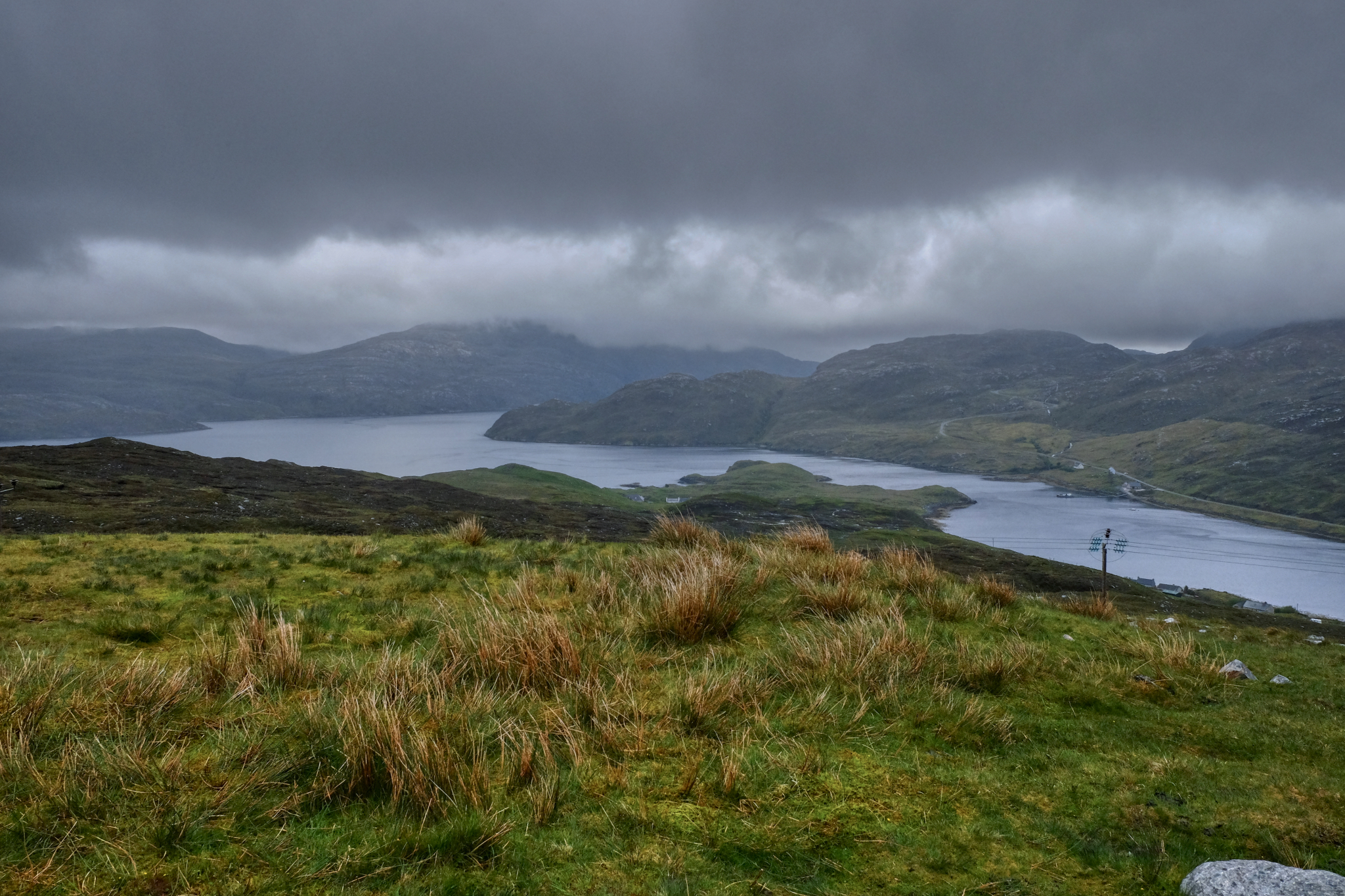 And around the bend at the hilltop . . . another magnificent view of a picturesque inlet . . . in the rain.
And around the bend at the hilltop . . . another magnificent view of a picturesque inlet . . . in the rain.
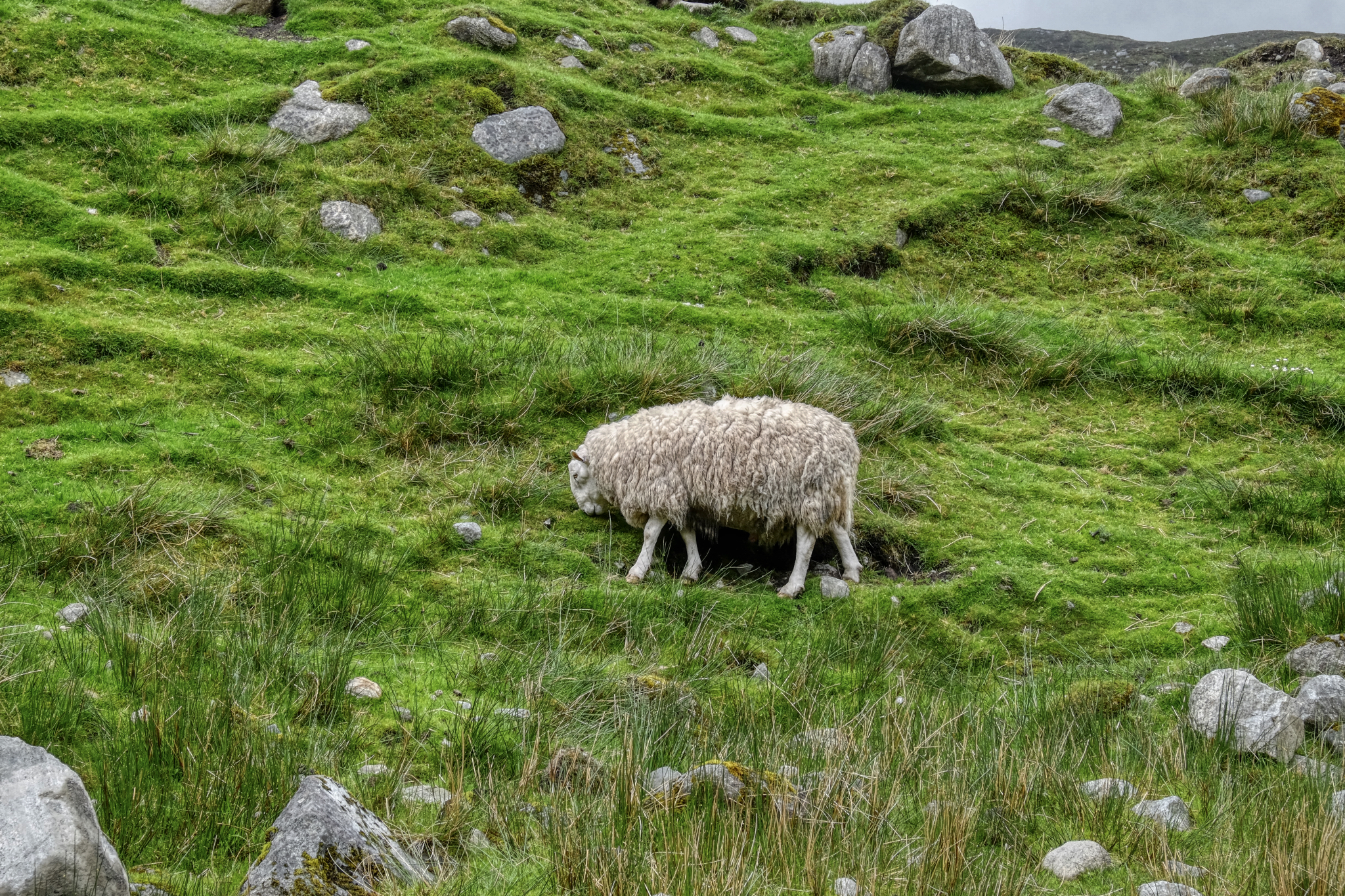 Wet sheep . . . everywhere . . .
Wet sheep . . . everywhere . . .
 Wild Hebridean stream running down out of the rugged hills.
Wild Hebridean stream running down out of the rugged hills.
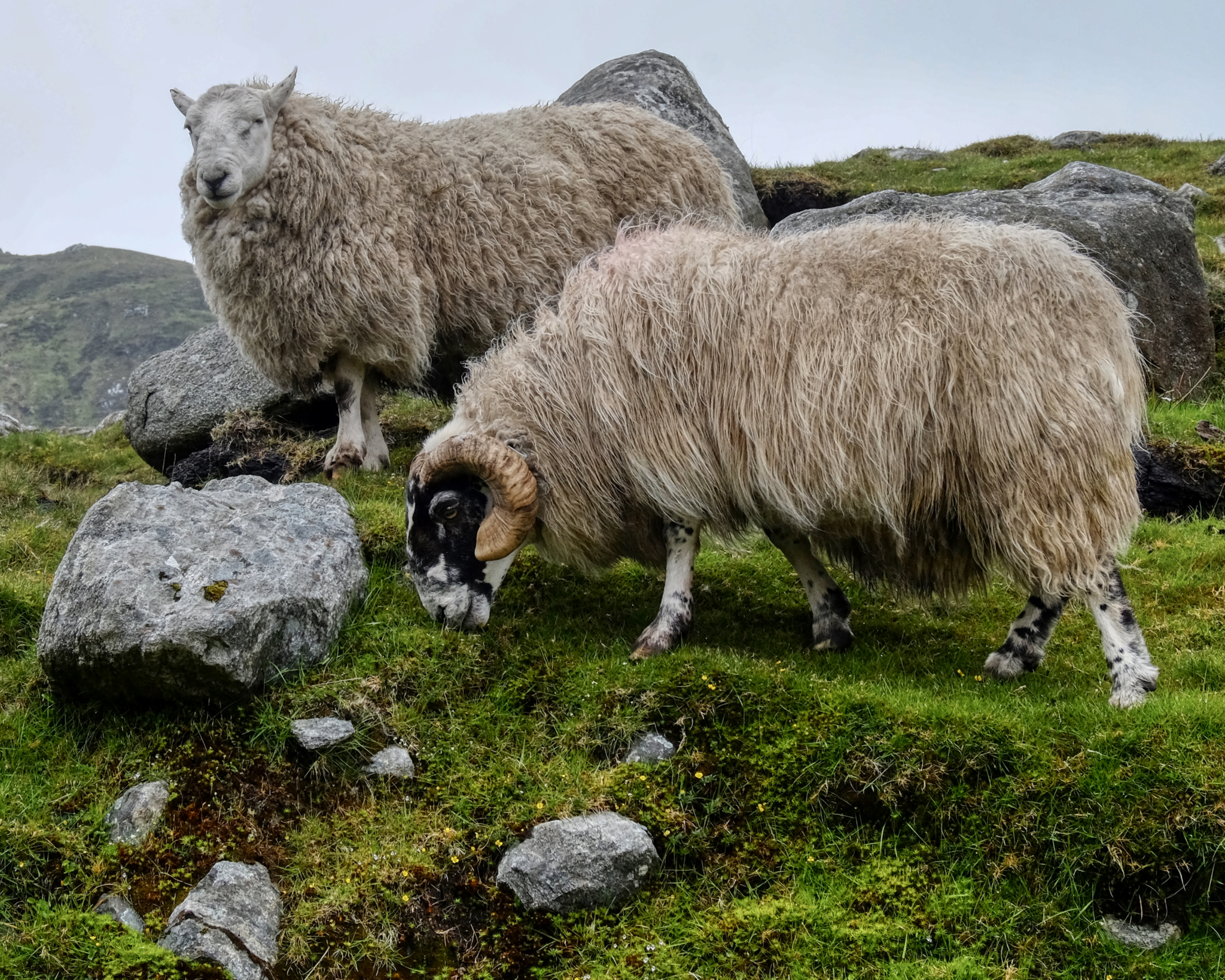 Portrait of two wet sheep. Why not?
Portrait of two wet sheep. Why not?
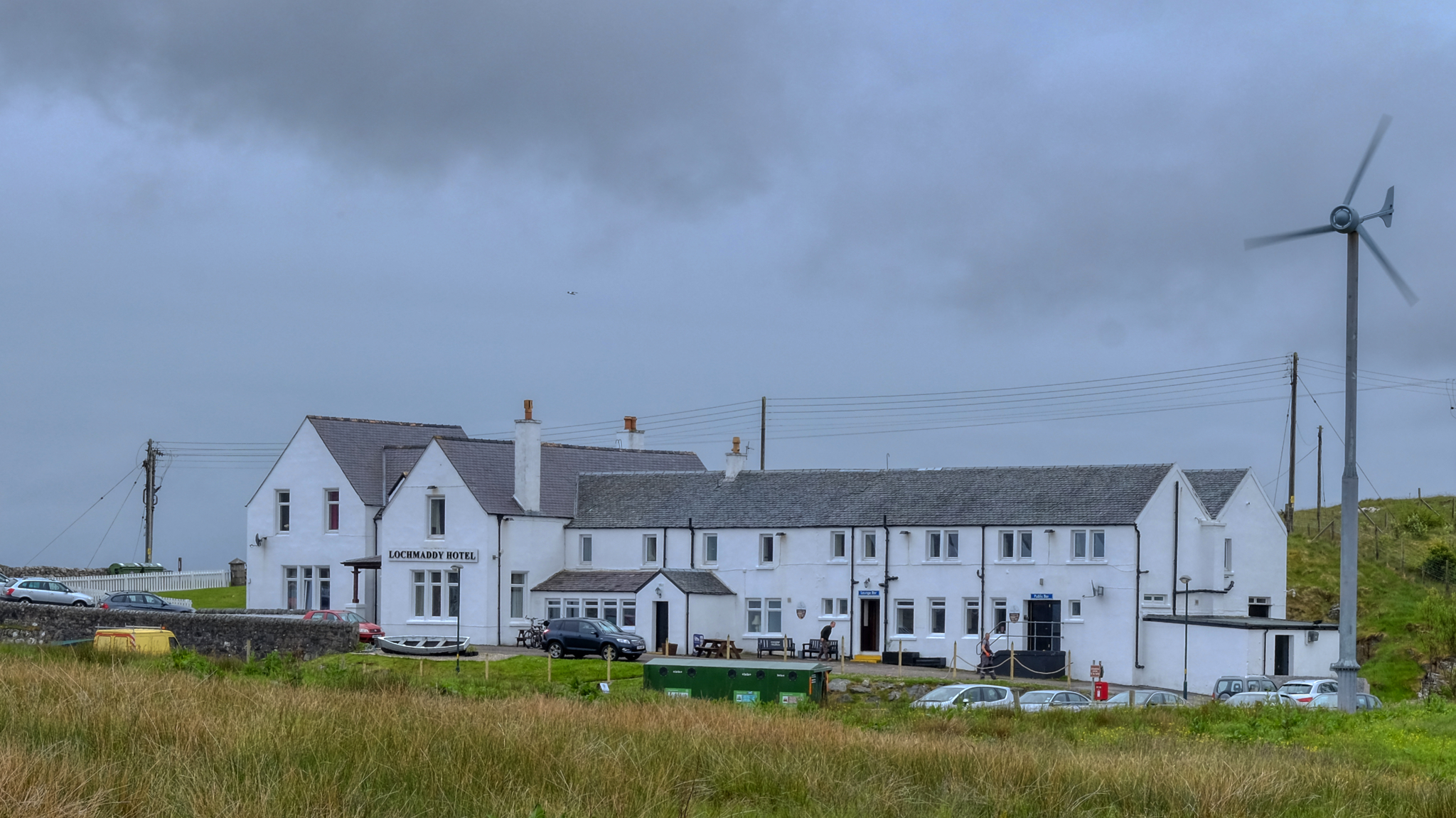 We spent one night at the charming and remote Lochmaddy Hotel on North Uist Island.
We spent one night at the charming and remote Lochmaddy Hotel on North Uist Island.
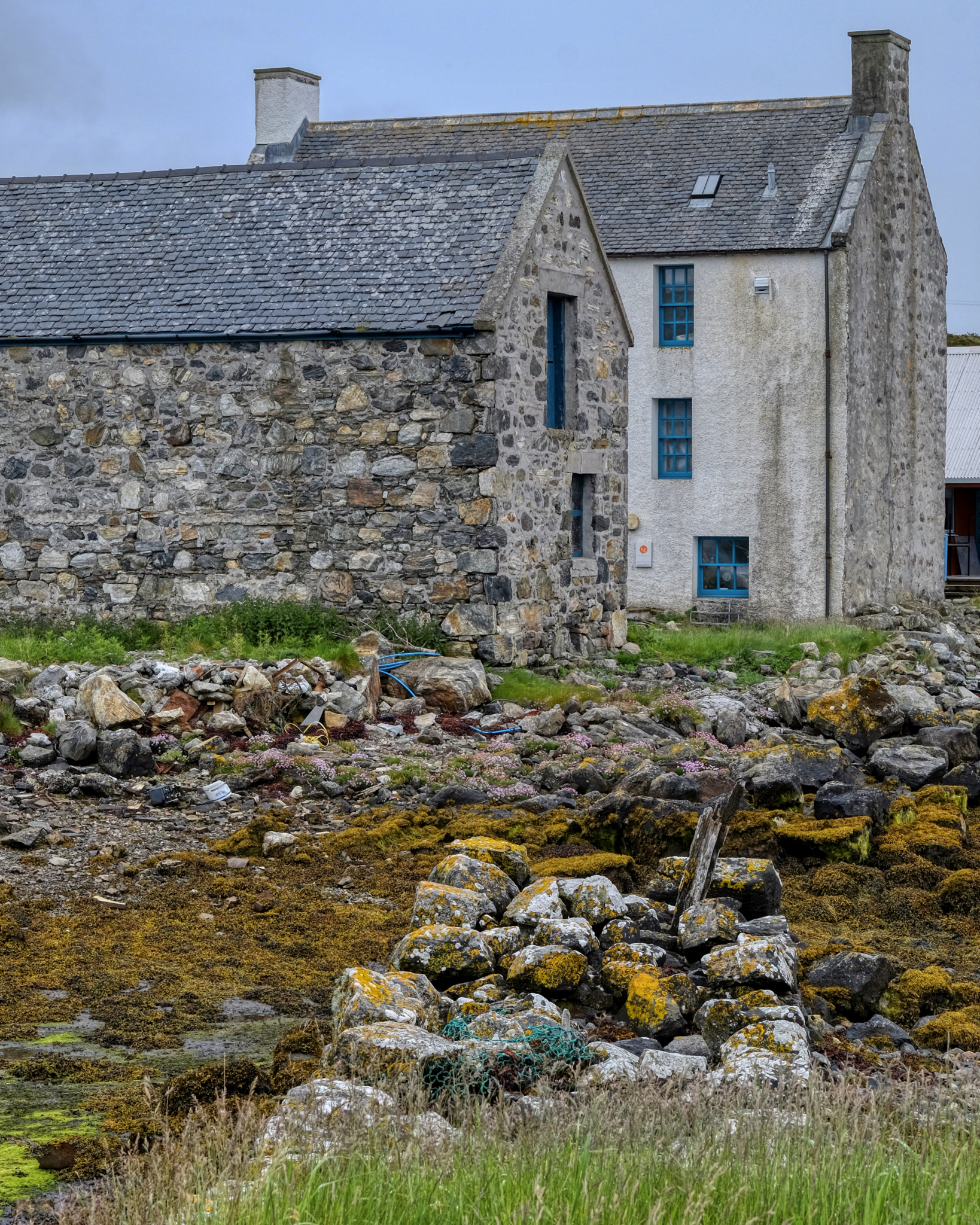 Out along the rocky bay.
Out along the rocky bay.
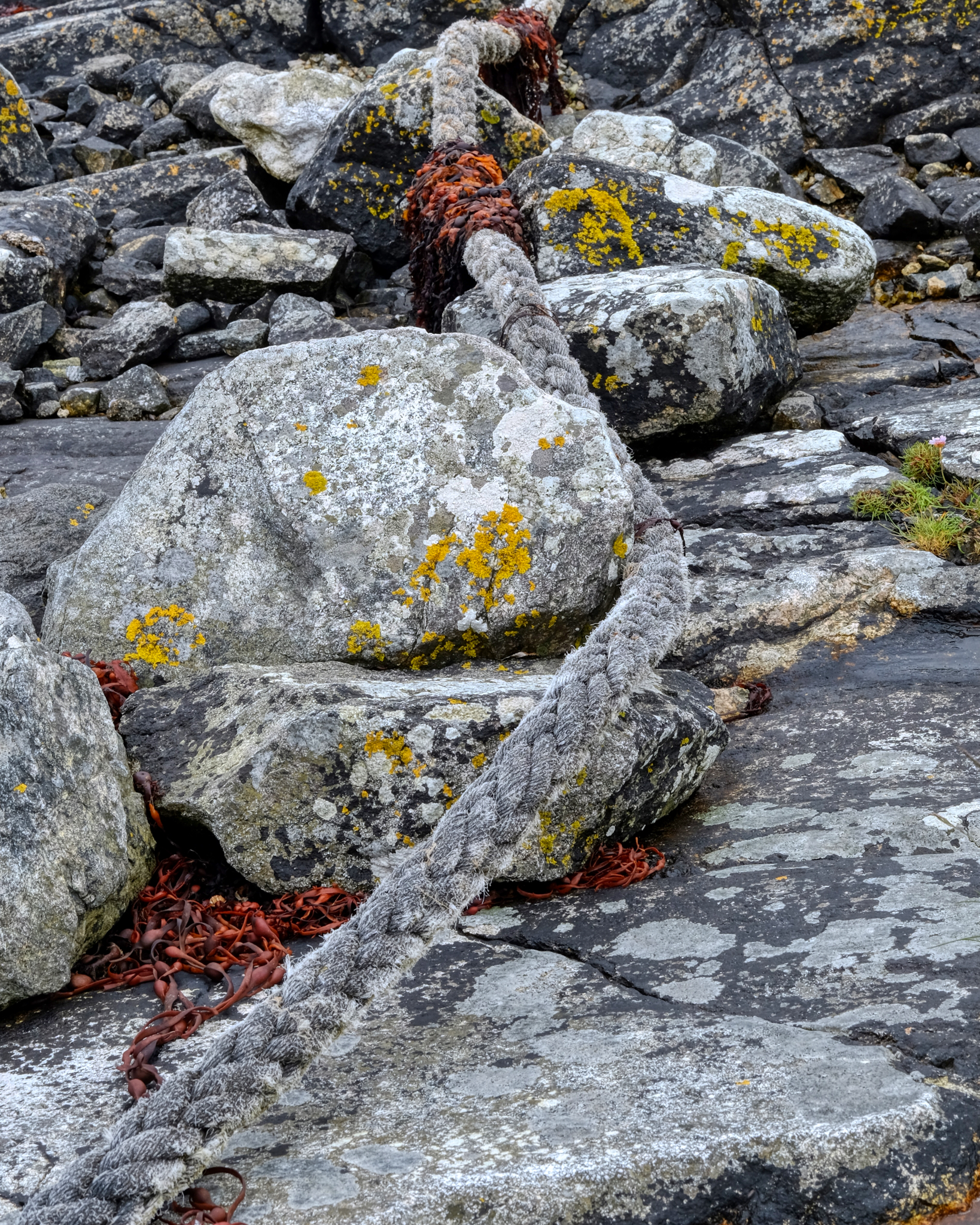 Rope mooring and stones.
Rope mooring and stones.
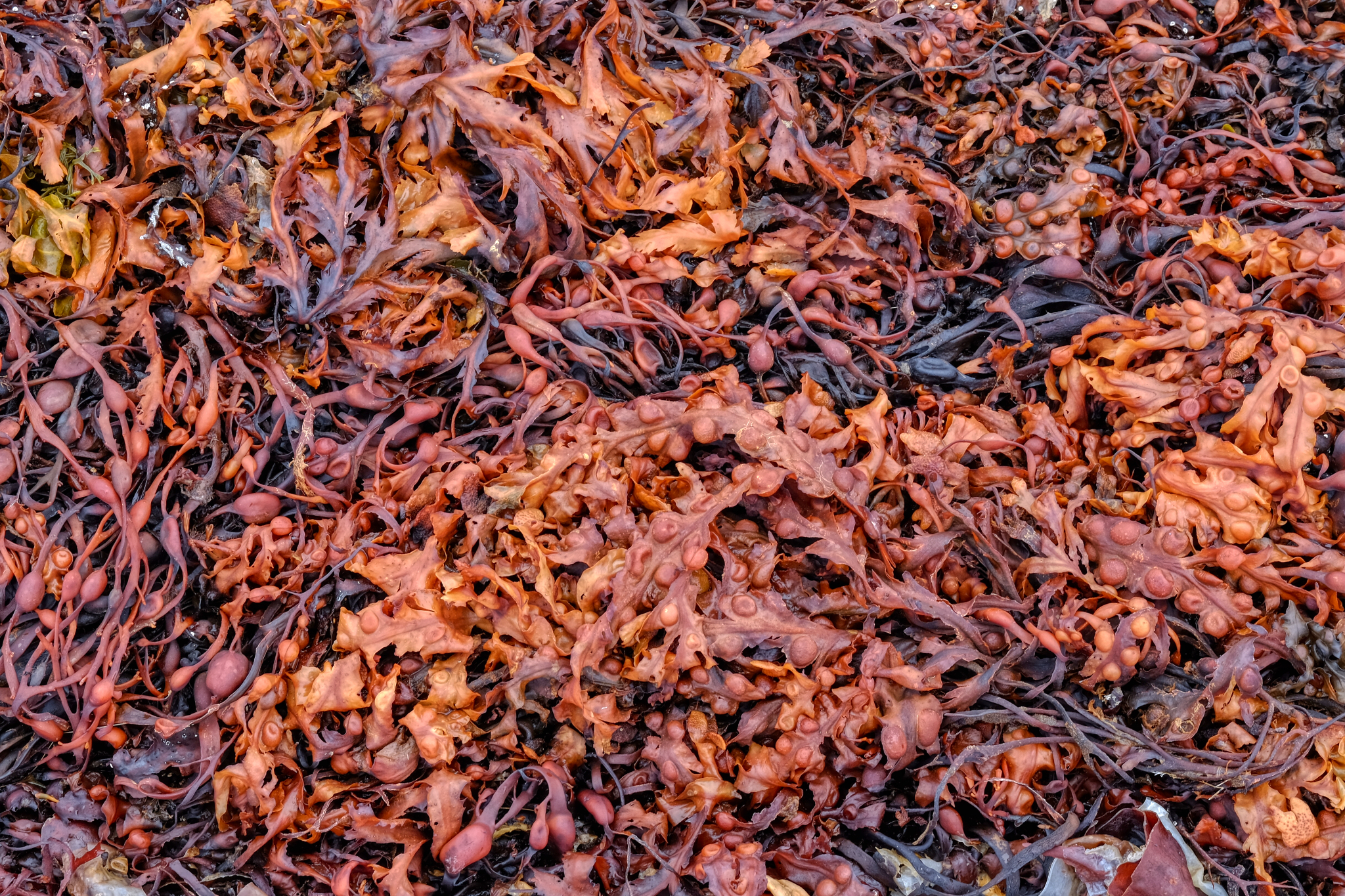 Incredibly fascinating seaweed in a North Uist bay.
Incredibly fascinating seaweed in a North Uist bay.
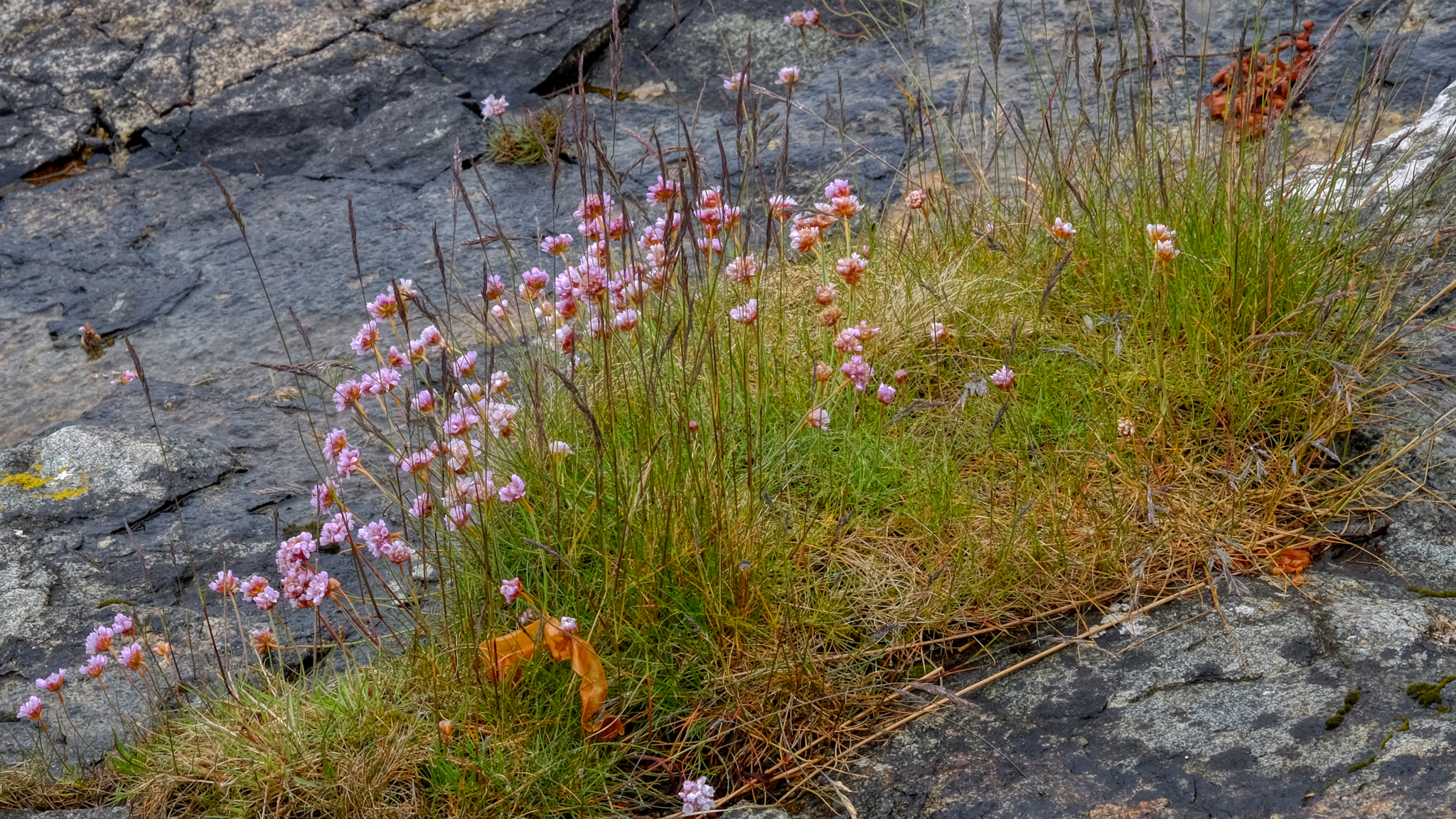 Wild flowers growing in the stony shore.
Wild flowers growing in the stony shore.
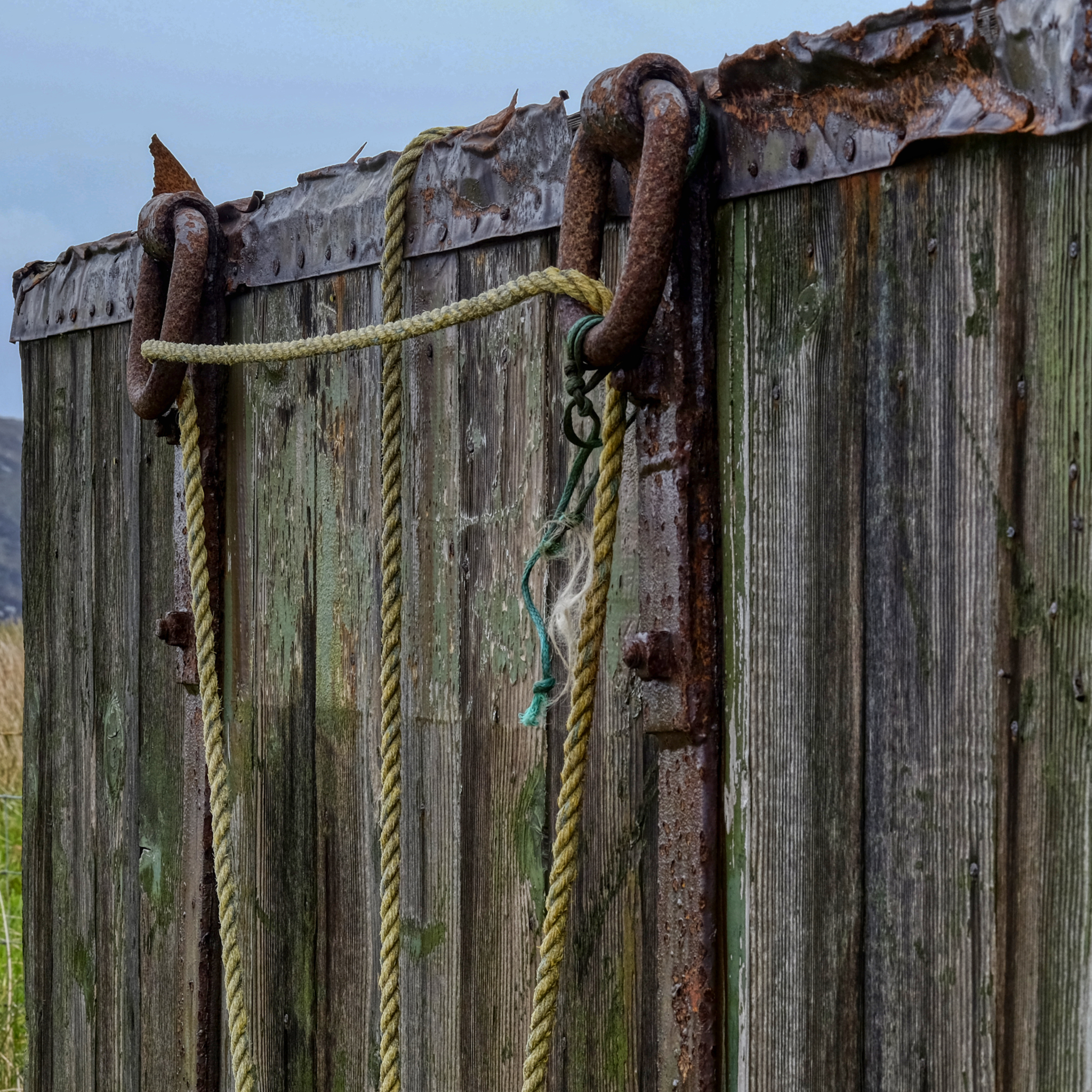 Leftover signs of fishermen long gone.
Leftover signs of fishermen long gone.
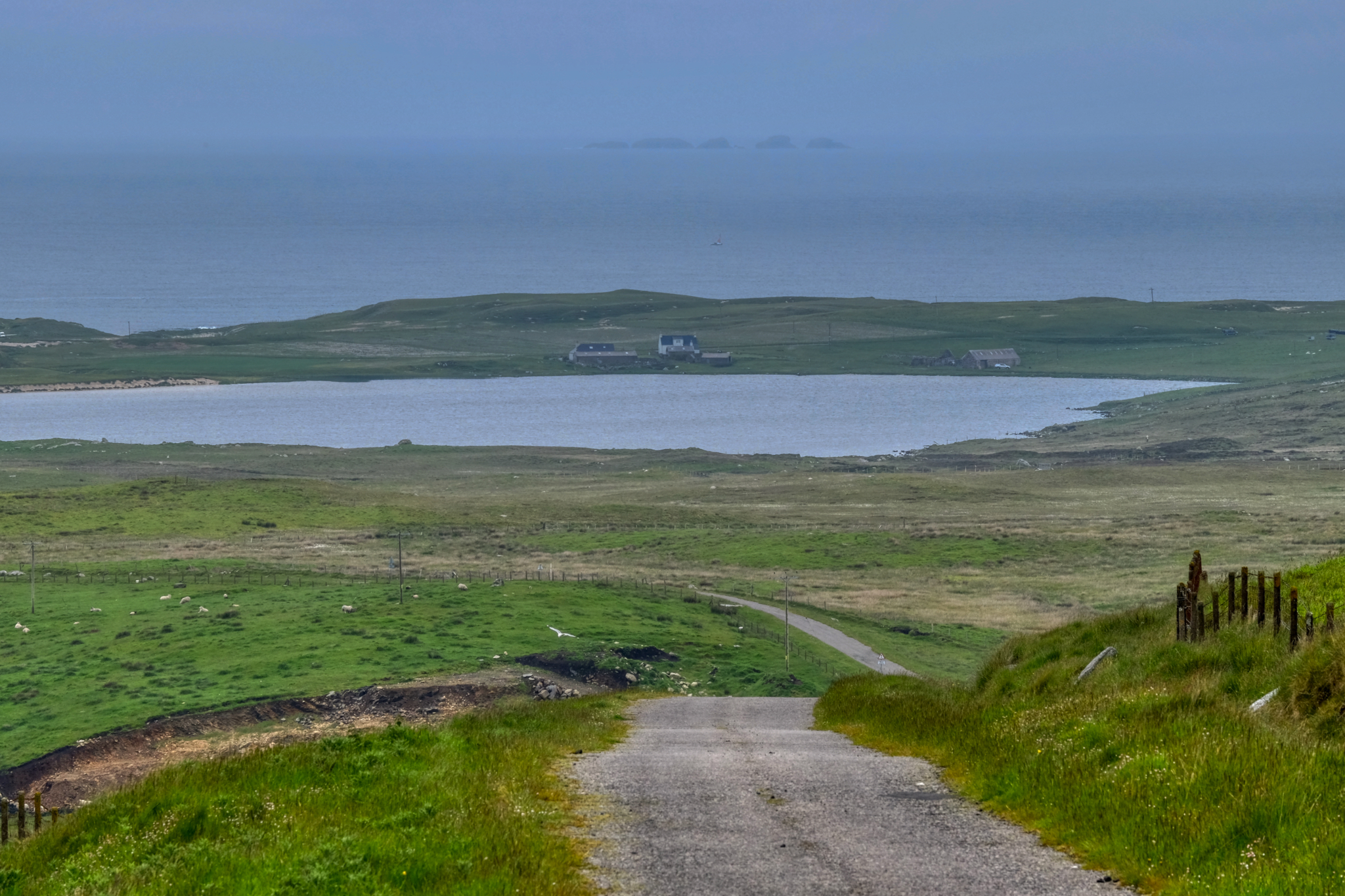 Off we went in the morning mist on the tiny roads . . .
Off we went in the morning mist on the tiny roads . . .
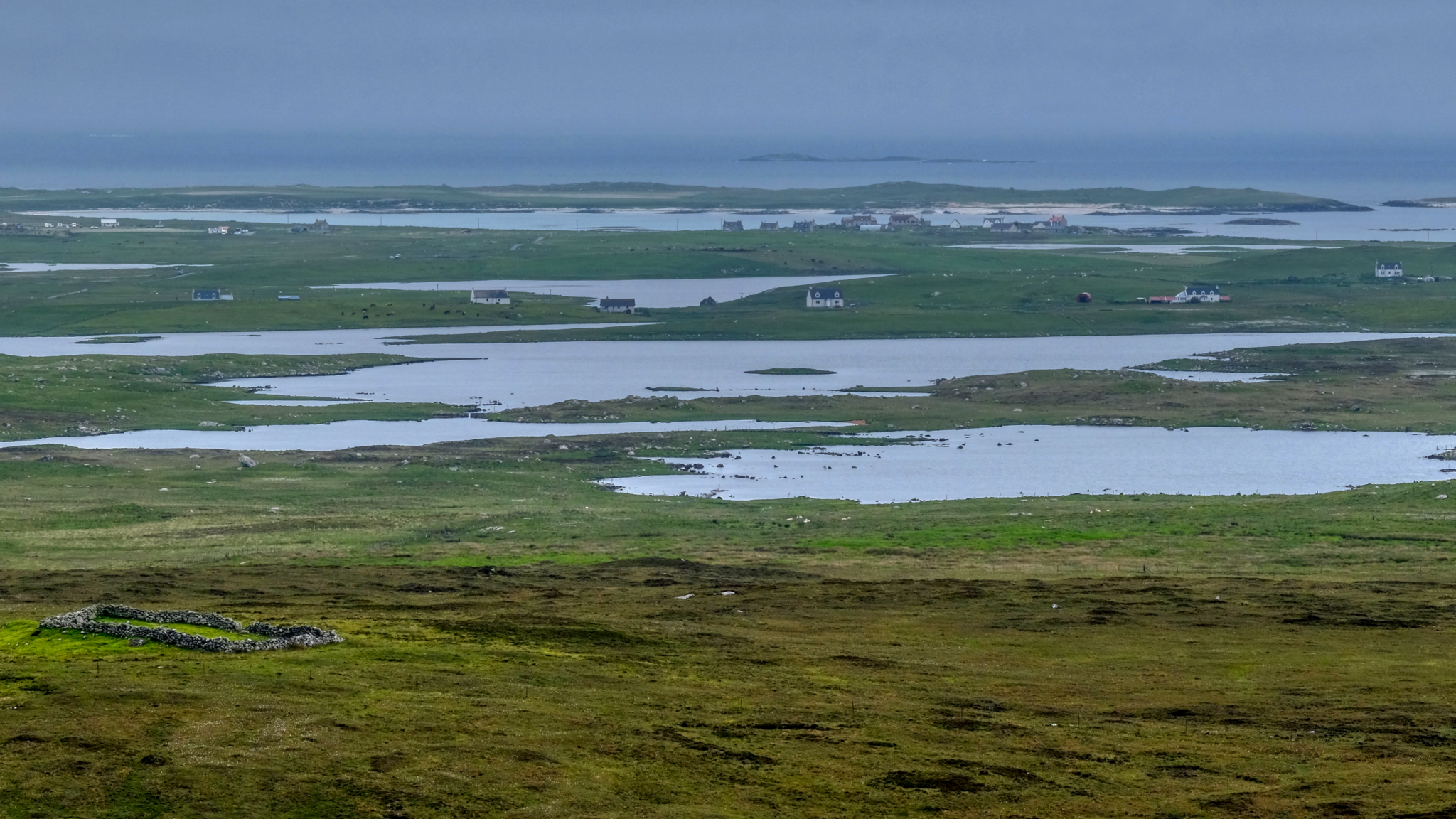 A most unusual landscape. I have never seen anything like it. Fantastically beautiful. I always have a compunction to think I would love to live in one of those houses . . . but stop myself by thinking there would be nothing for me to do there.
A most unusual landscape. I have never seen anything like it. Fantastically beautiful. I always have a compunction to think I would love to live in one of those houses . . . but stop myself by thinking there would be nothing for me to do there.
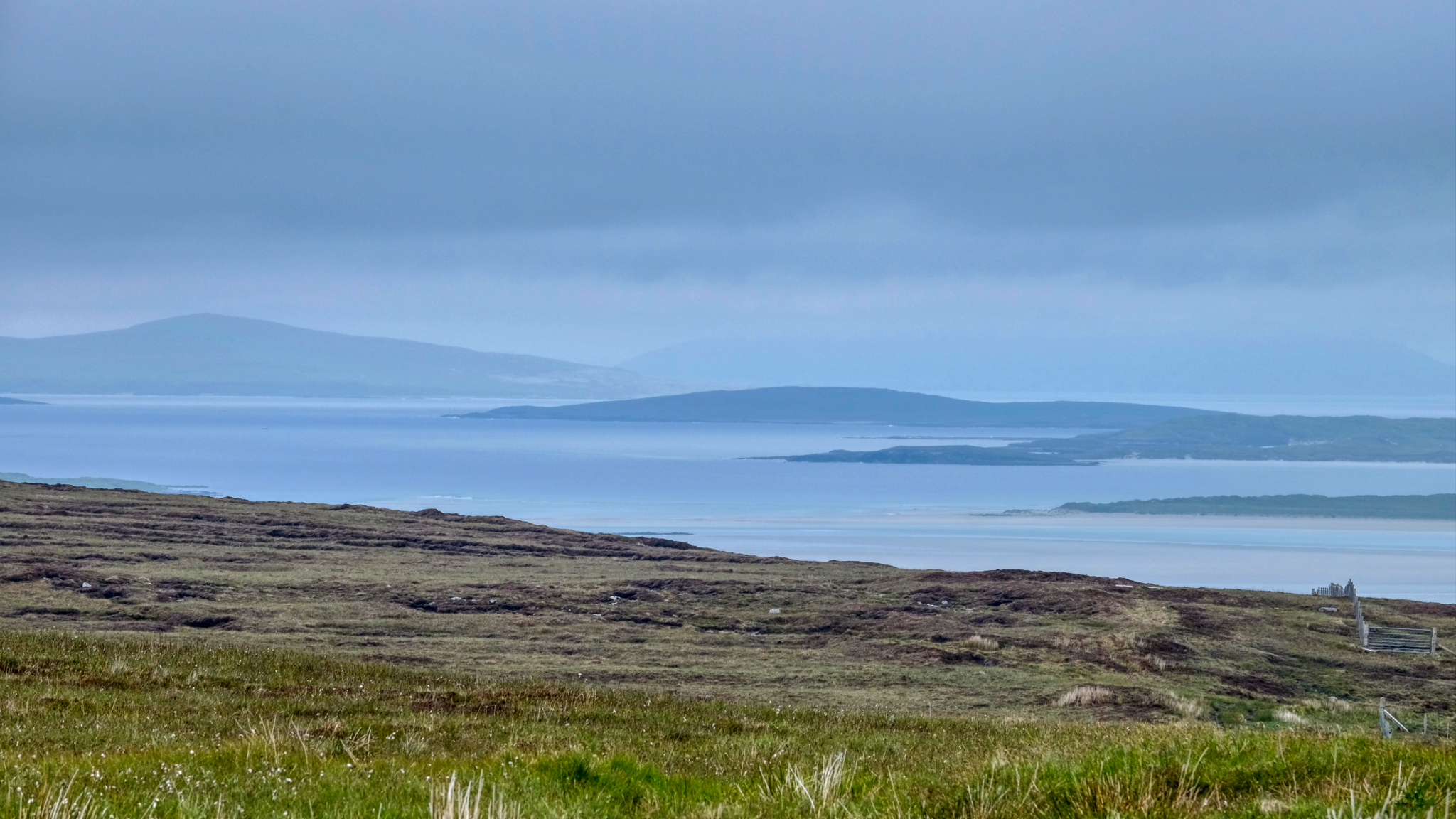 We learned there was a good restaurant out in these soggywet landscapes.
We learned there was a good restaurant out in these soggywet landscapes.
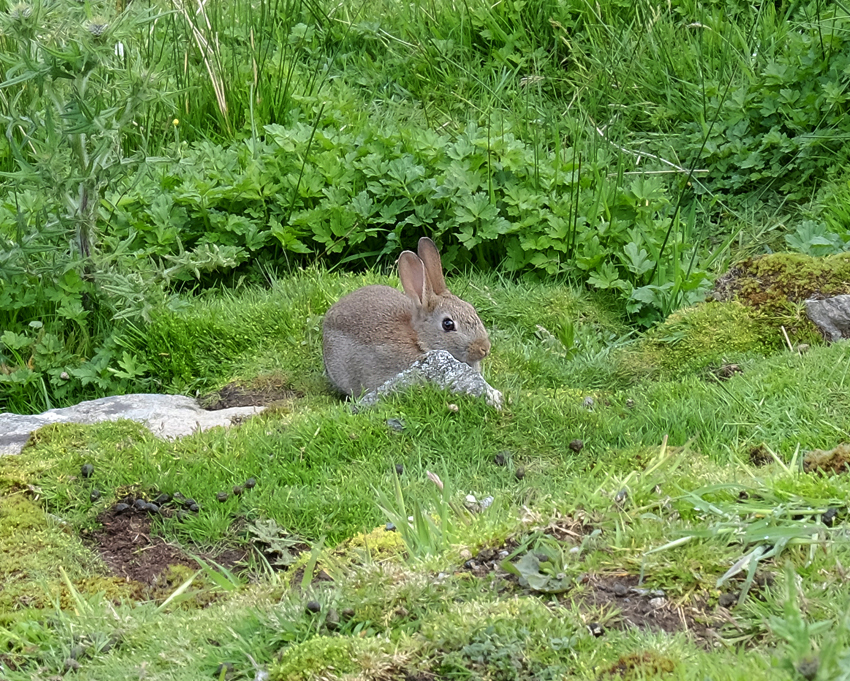 More Hebridean wildlife!
More Hebridean wildlife!
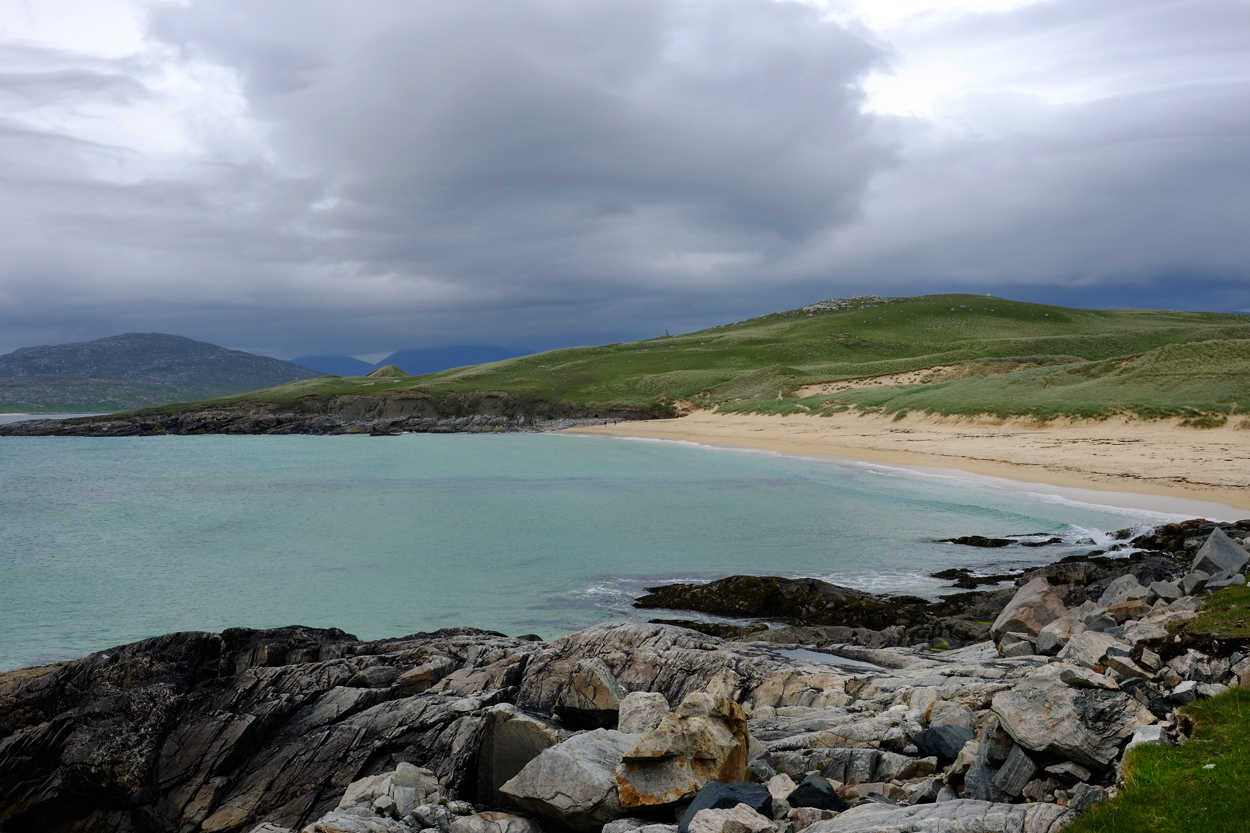 And here and there, around a bend, a sudden, almost tropical, turquoise sea and white sandy beach. Marvelous.
And here and there, around a bend, a sudden, almost tropical, turquoise sea and white sandy beach. Marvelous.
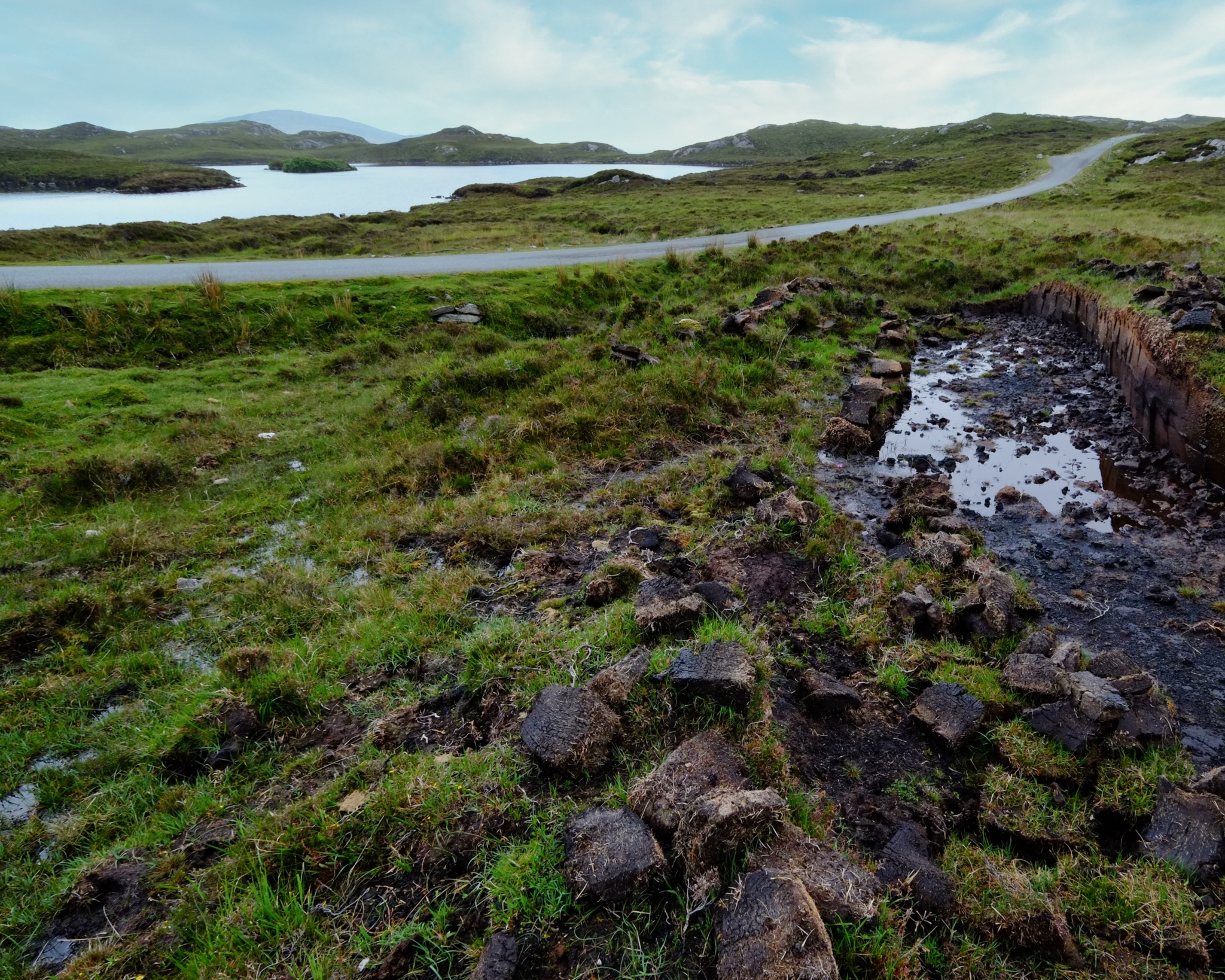 And around another bend a vale with deep cut peat harvesting in progress.
And around another bend a vale with deep cut peat harvesting in progress.
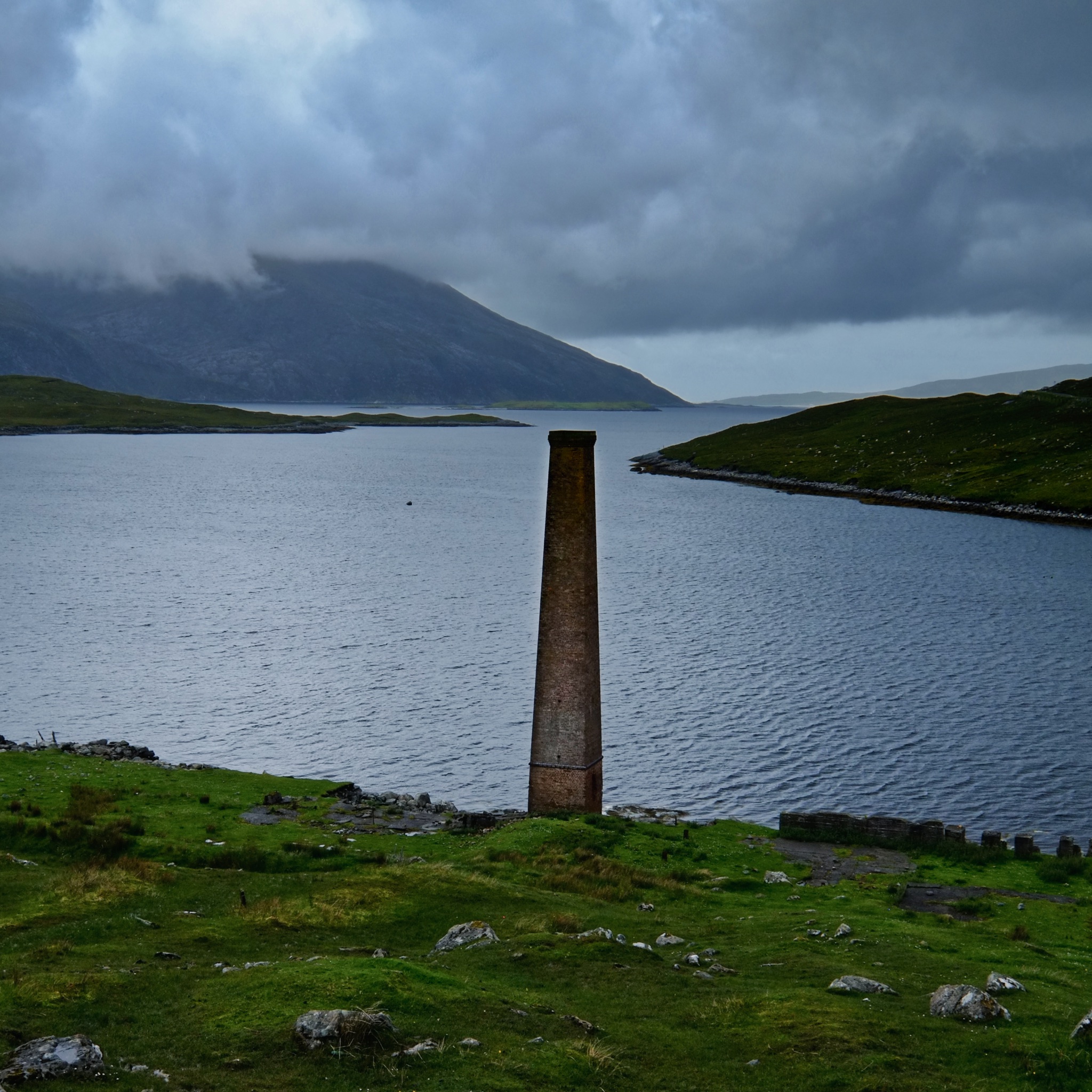 A tall smokestack . . . a monument to some previous industrial endeavor . . . all the way out here.
A tall smokestack . . . a monument to some previous industrial endeavor . . . all the way out here.
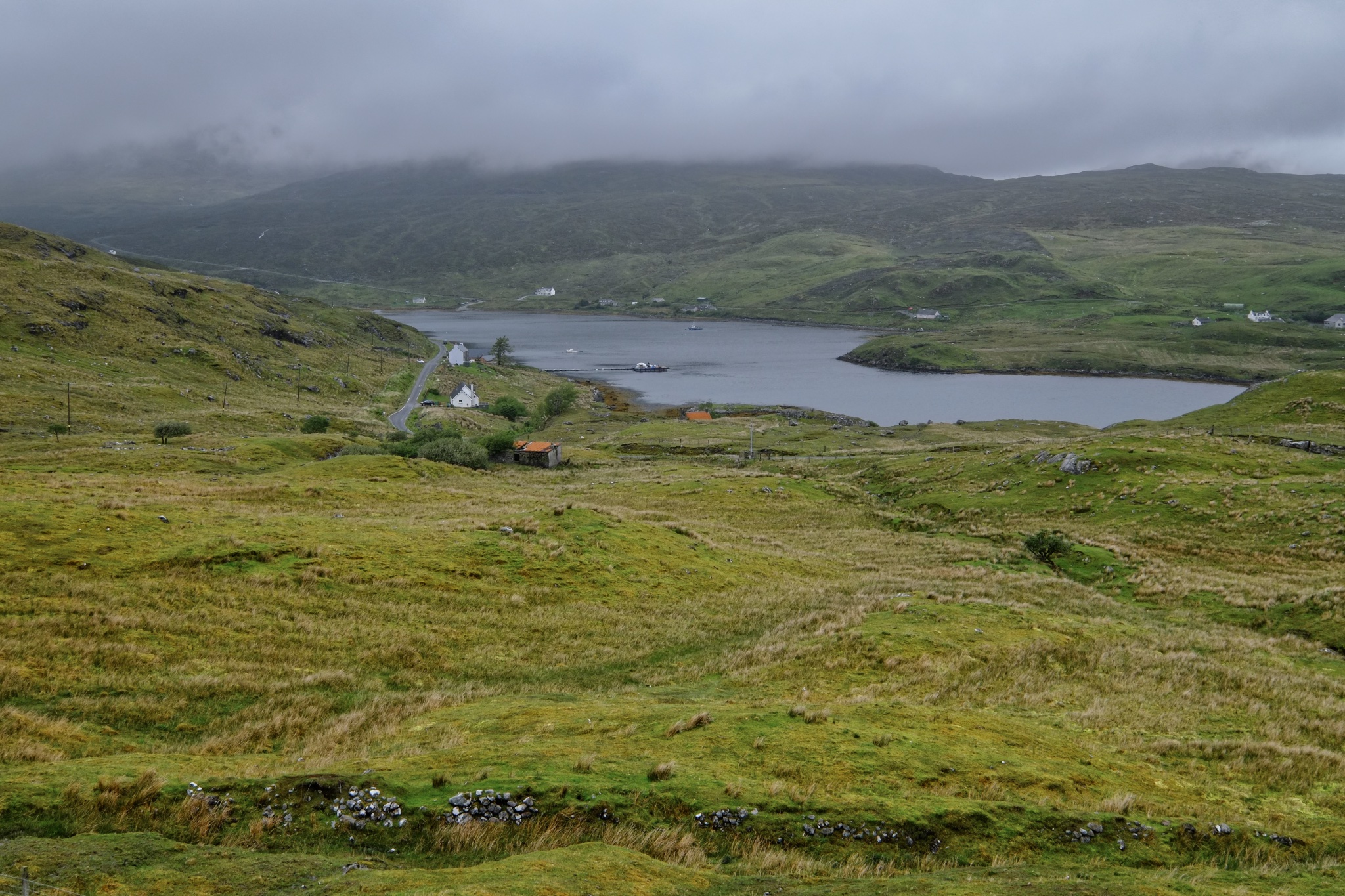 Driving the single track road in and out of the strange hills . . . always a new view . . . sometimes of a narrow bay dotted with small houses, a pier, and a fishing boat.
Driving the single track road in and out of the strange hills . . . always a new view . . . sometimes of a narrow bay dotted with small houses, a pier, and a fishing boat.
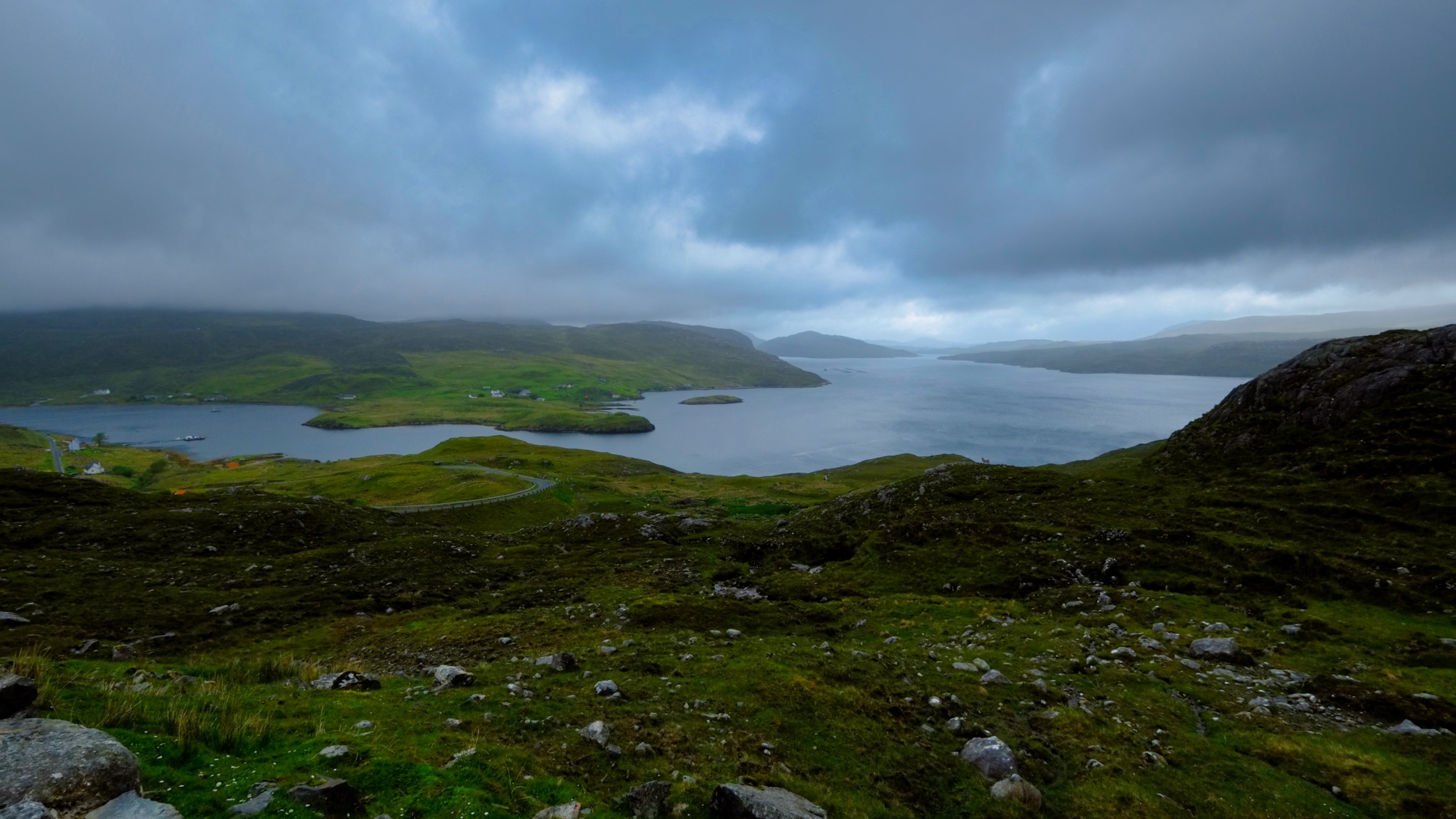 These views! The gloom!
These views! The gloom!
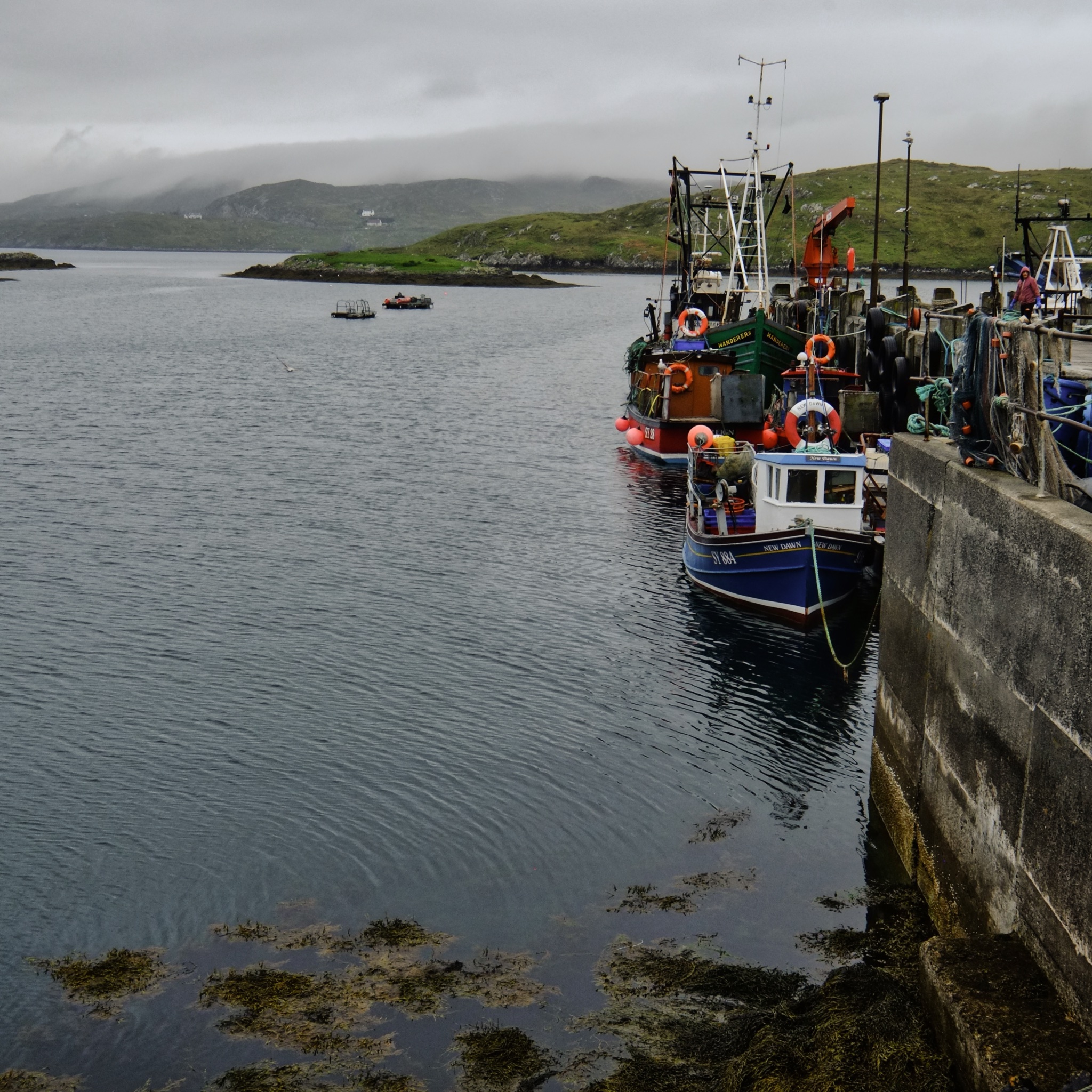 We rounded a bend in the road and arrived at a tiny fishing village, Scalpay.
We rounded a bend in the road and arrived at a tiny fishing village, Scalpay.
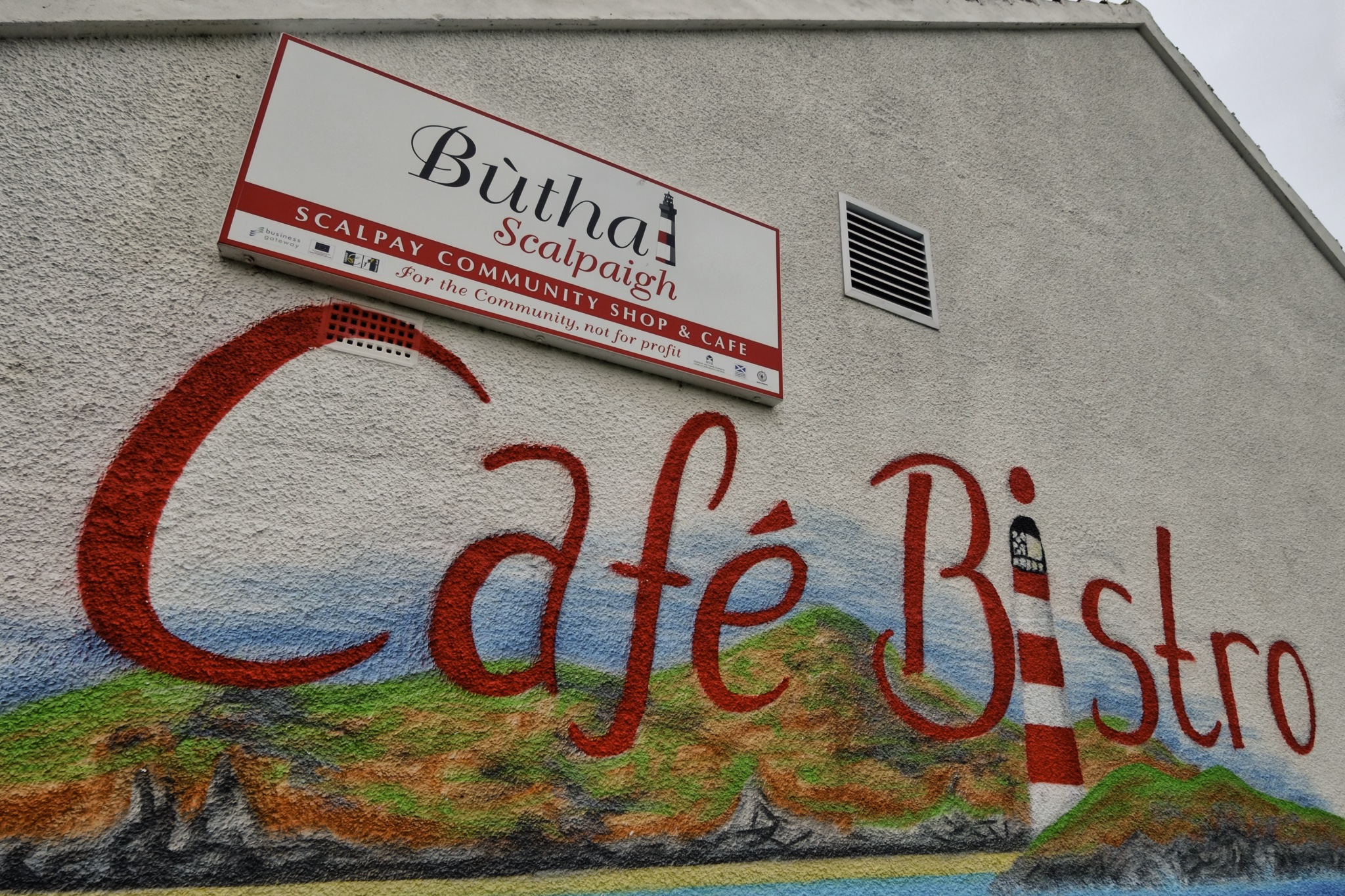
"The island used to have more than 10 shops over 30 years ago but due to lack of people and work, the last shop closed in 2007. There also used to be a salmon factory, which was a major local employer from 2001 until its closure in 2005. In the spring of 2009, local newspapers reported that the factory was to reopen as a net washing facility to support the local fish farming industry. In 2012, the Scalpay community bought and opened a community shop/café, Buth Scalpaigh." We had a delicious lunch here with friendly service . . , soup, rolls, and fried fish.
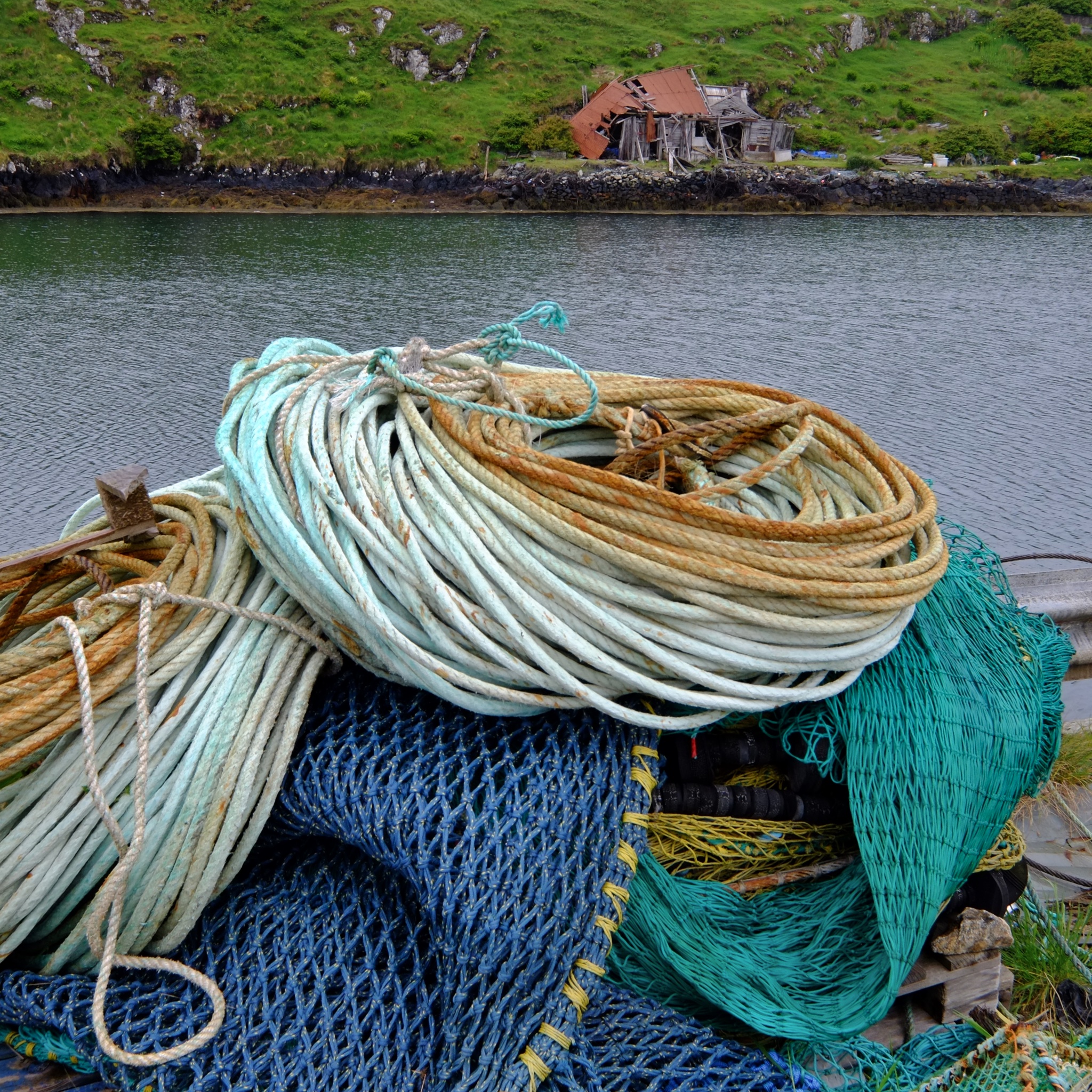 Some fishing activity survives these remote places along the craggy inlets of the Outer Hebrides.
Some fishing activity survives these remote places along the craggy inlets of the Outer Hebrides.
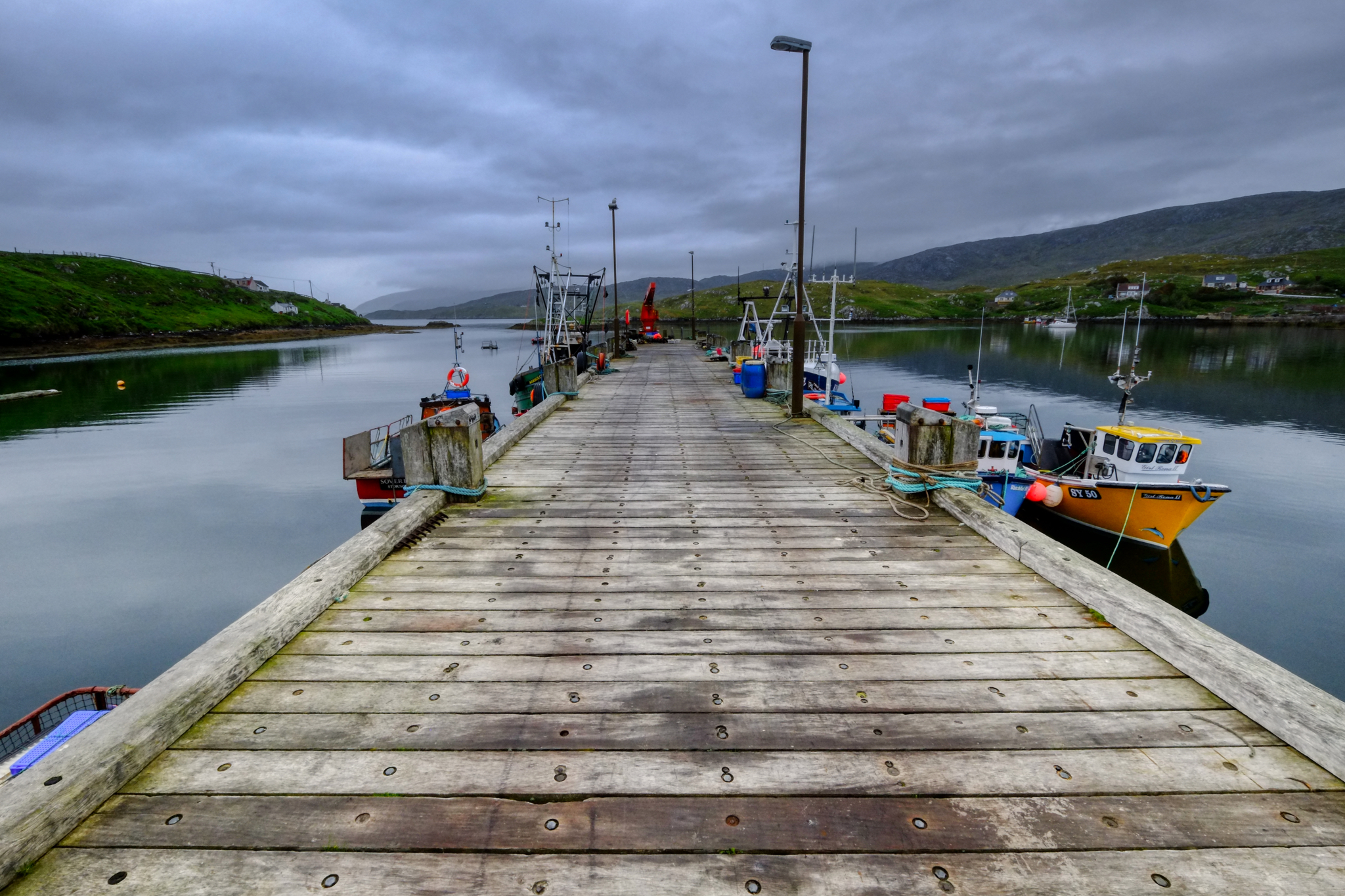 People have to eat and people have to make a living.
People have to eat and people have to make a living.
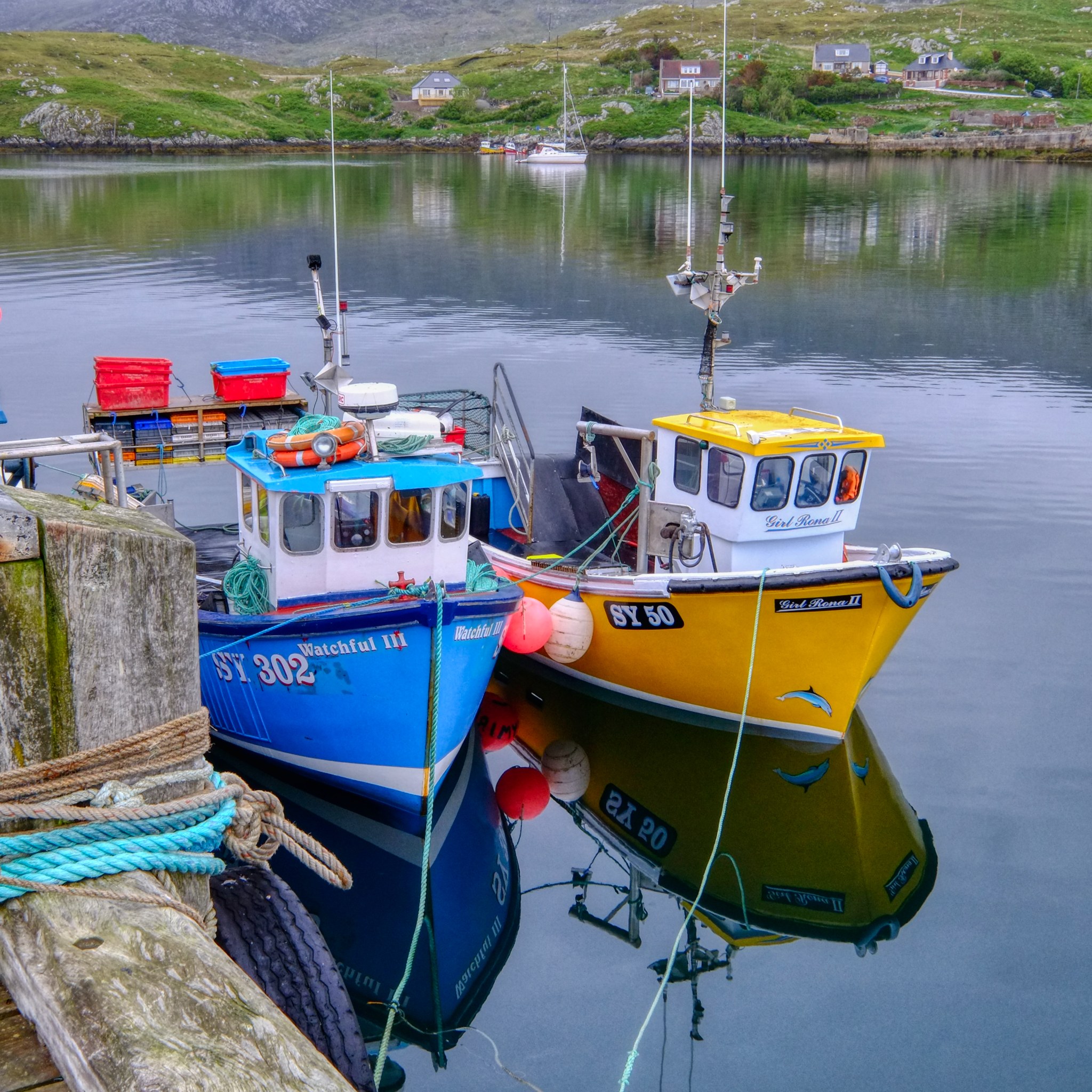 Picturesque little fishing boats.
Picturesque little fishing boats.
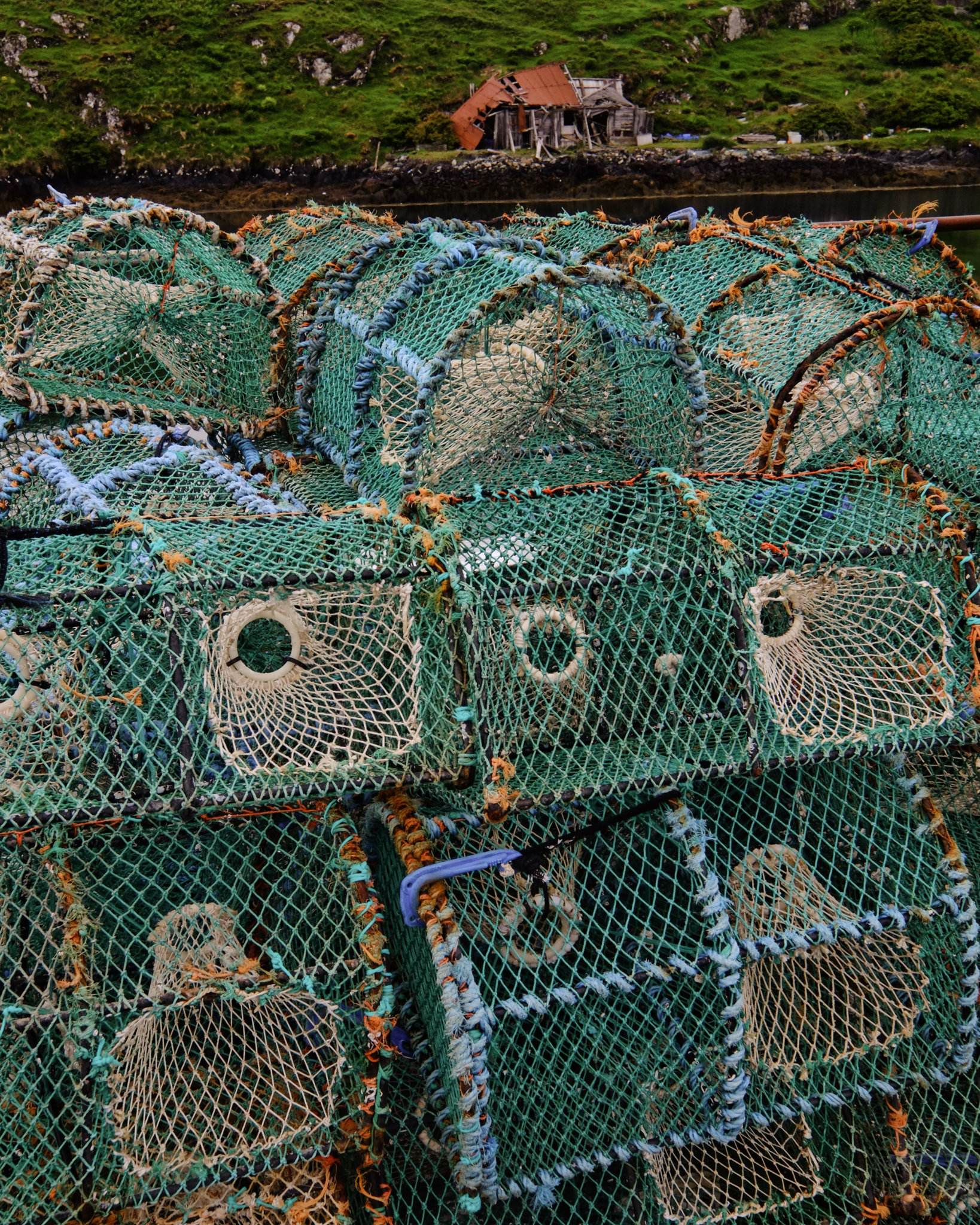 Crab or lobster pots . . .
Crab or lobster pots . . .
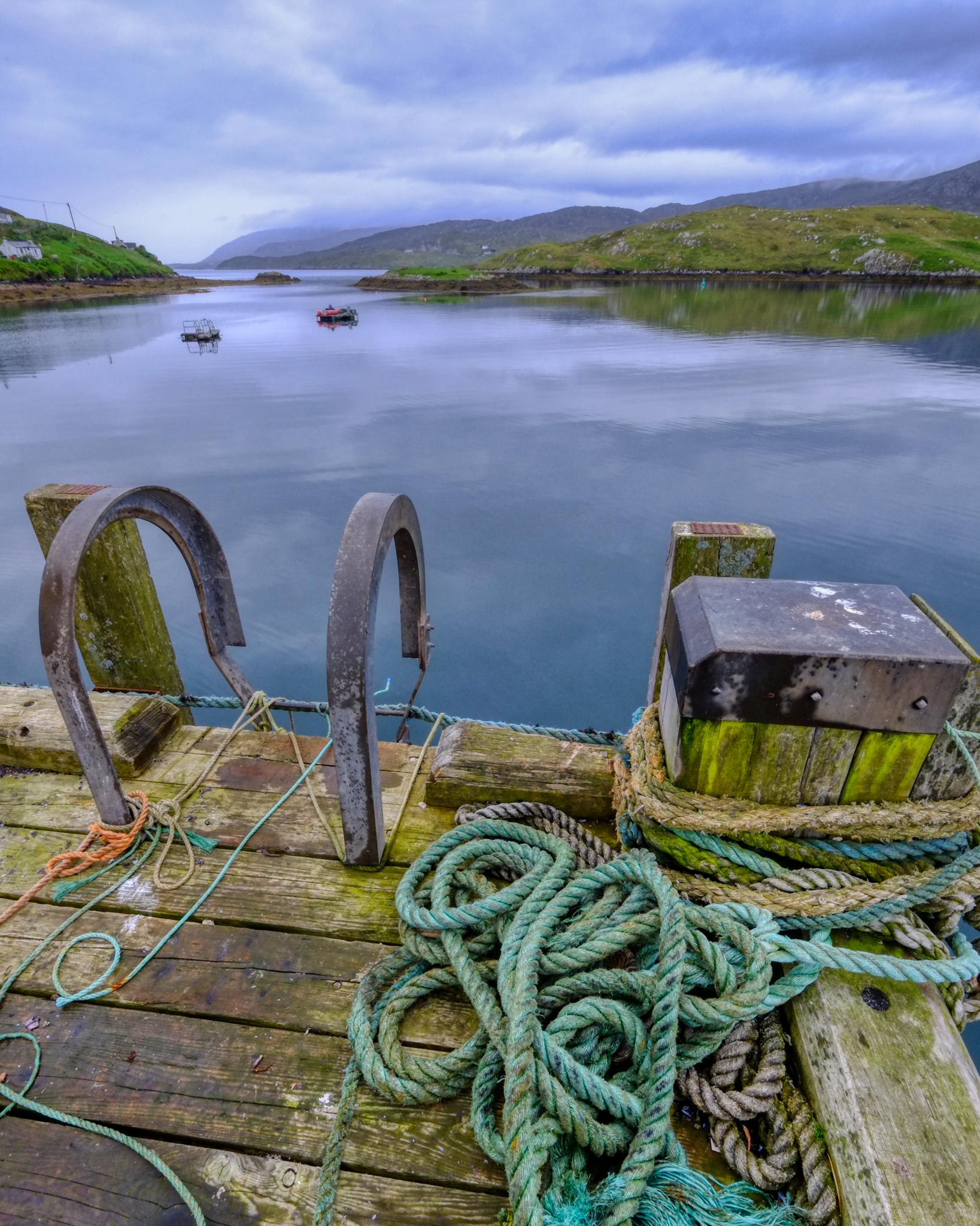 We drove North up into the Isles of Lewis and Harris.
We drove North up into the Isles of Lewis and Harris.
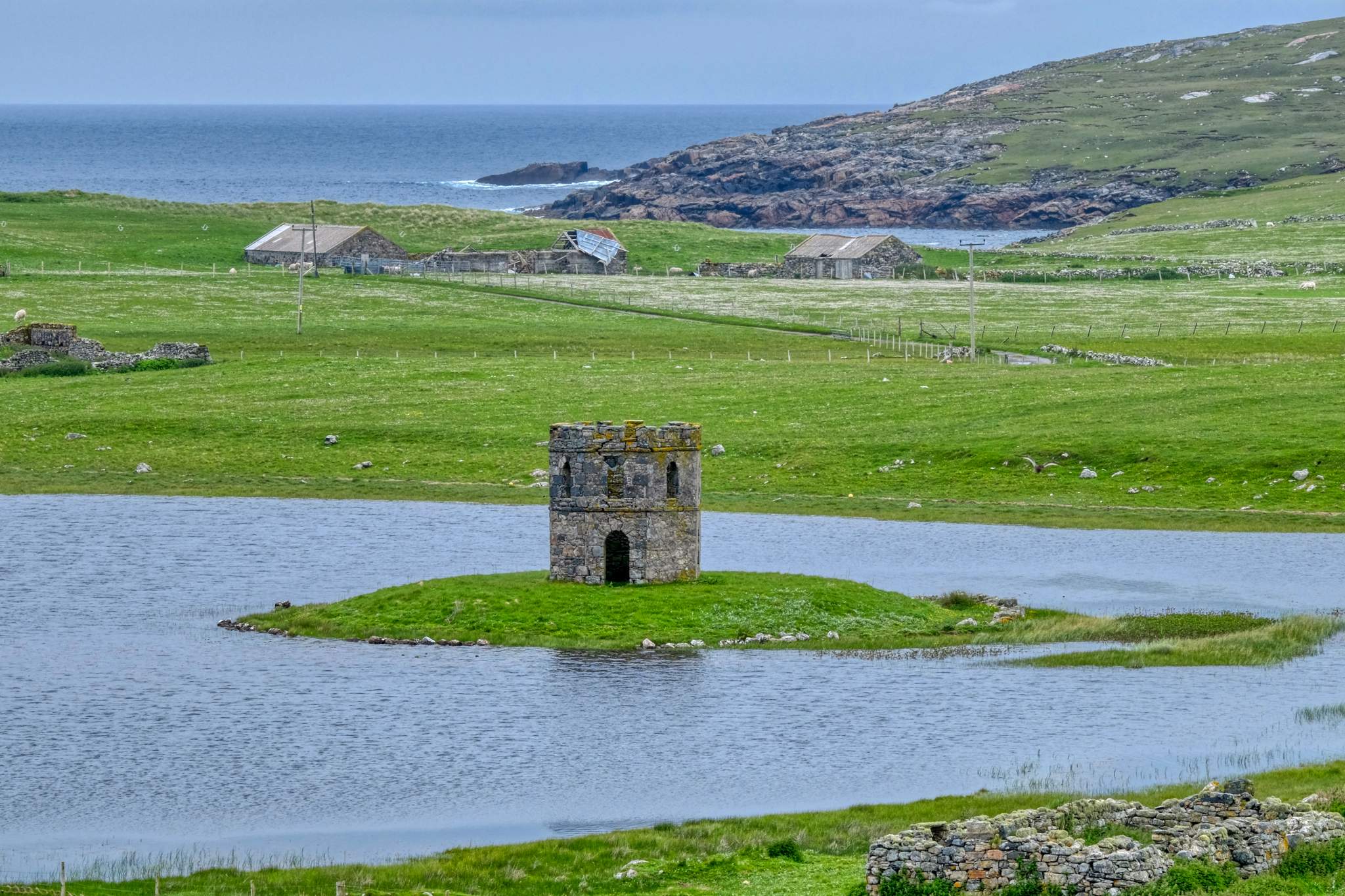 An old tower keep on a crofters place.
An old tower keep on a crofters place.
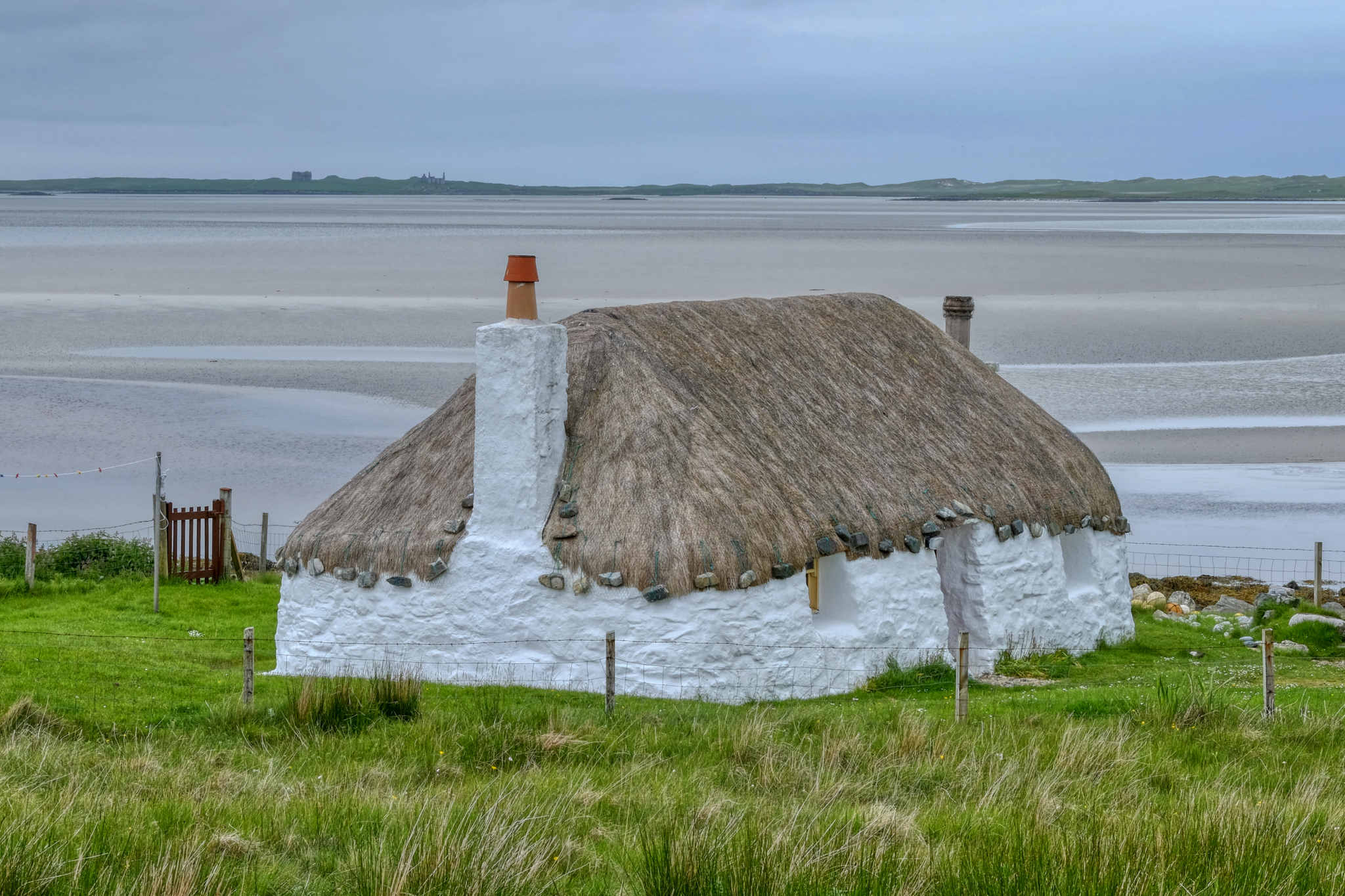 An old whitewash, thatched-roof cottage on the dandy bay. Charming.
An old whitewash, thatched-roof cottage on the dandy bay. Charming.
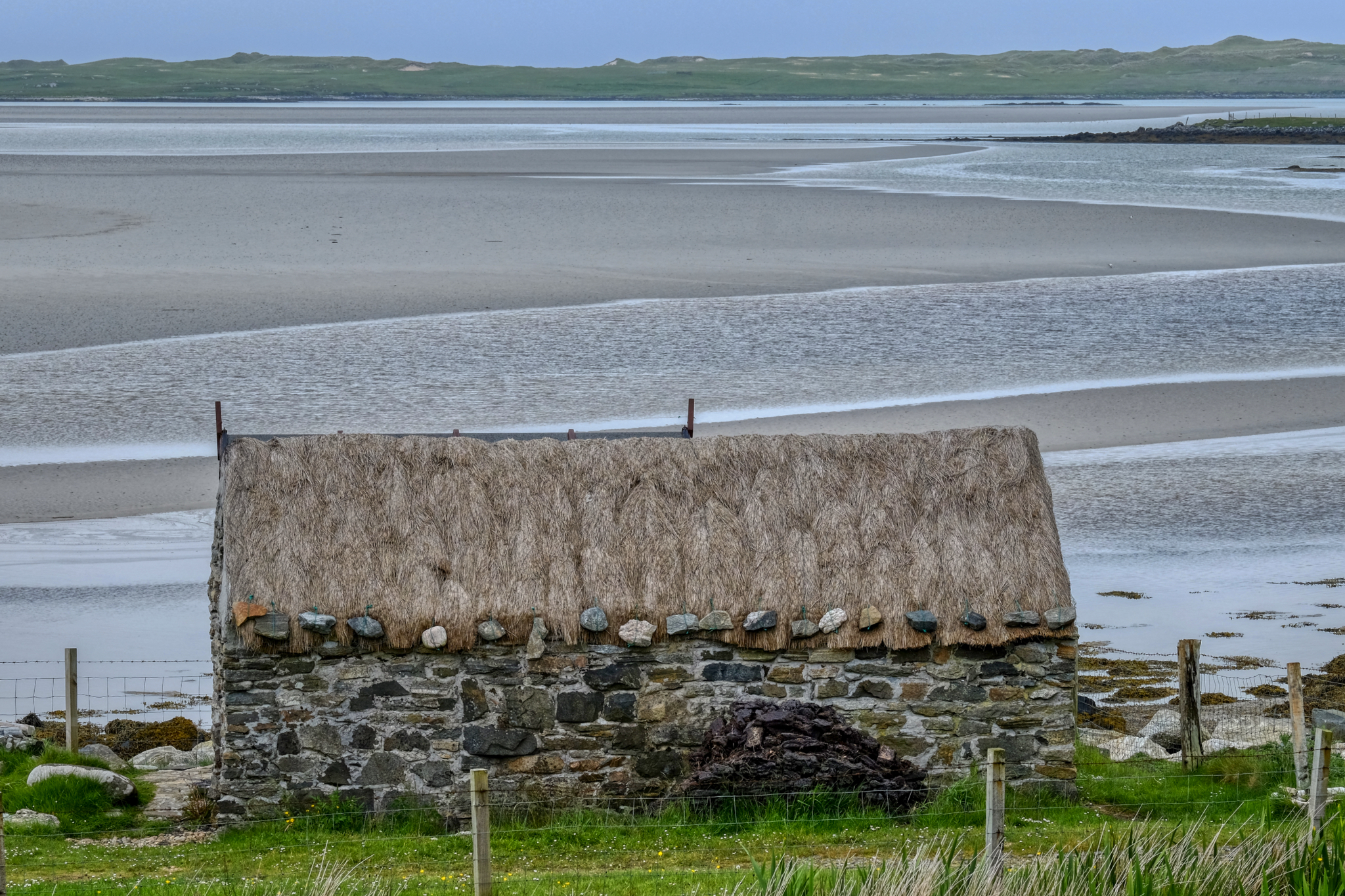 A lovely old crofter's stone barn.
A lovely old crofter's stone barn.
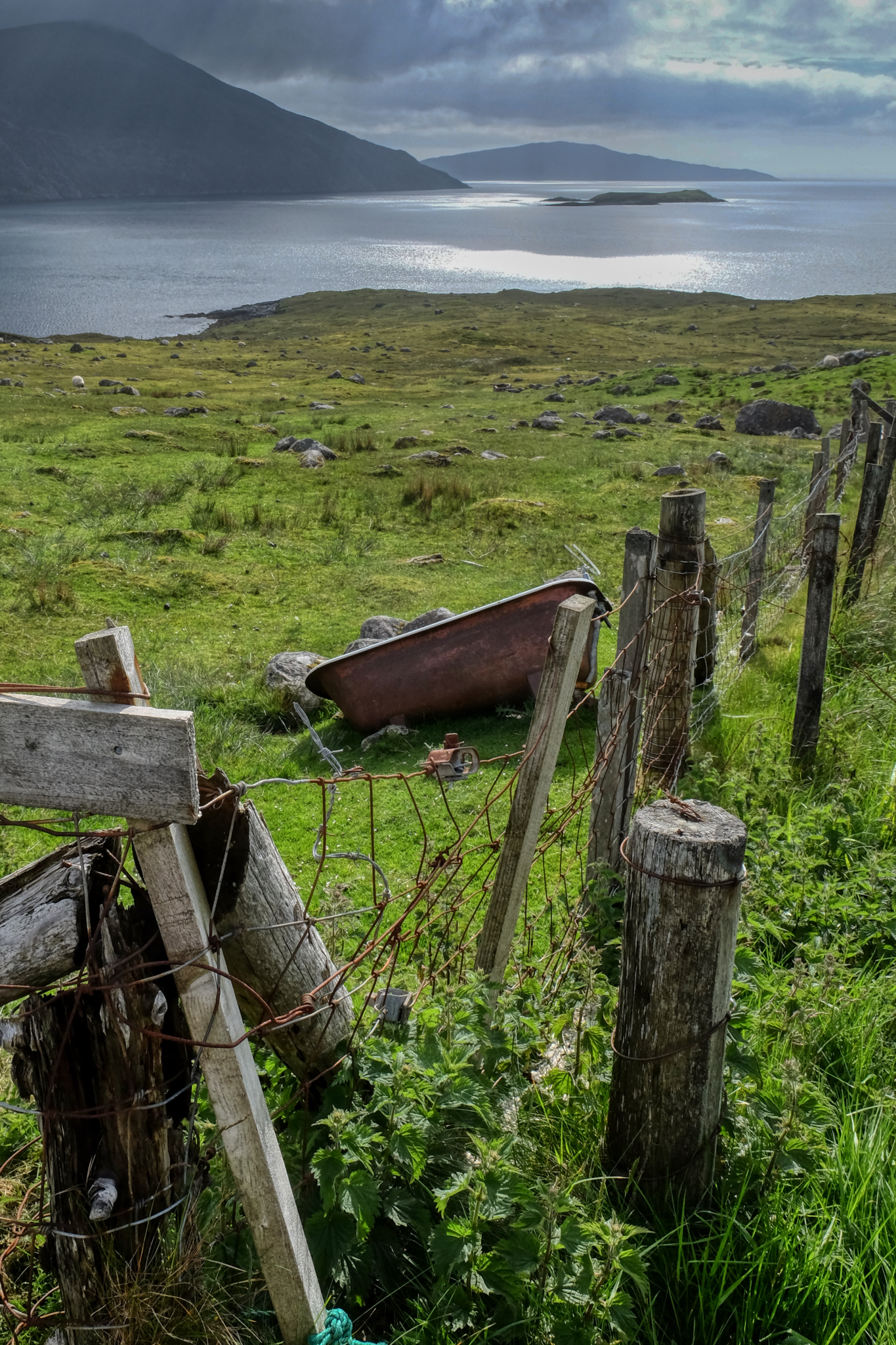 The views! Literally around every bend in the road . . . so many stunning landscapes!
The views! Literally around every bend in the road . . . so many stunning landscapes!
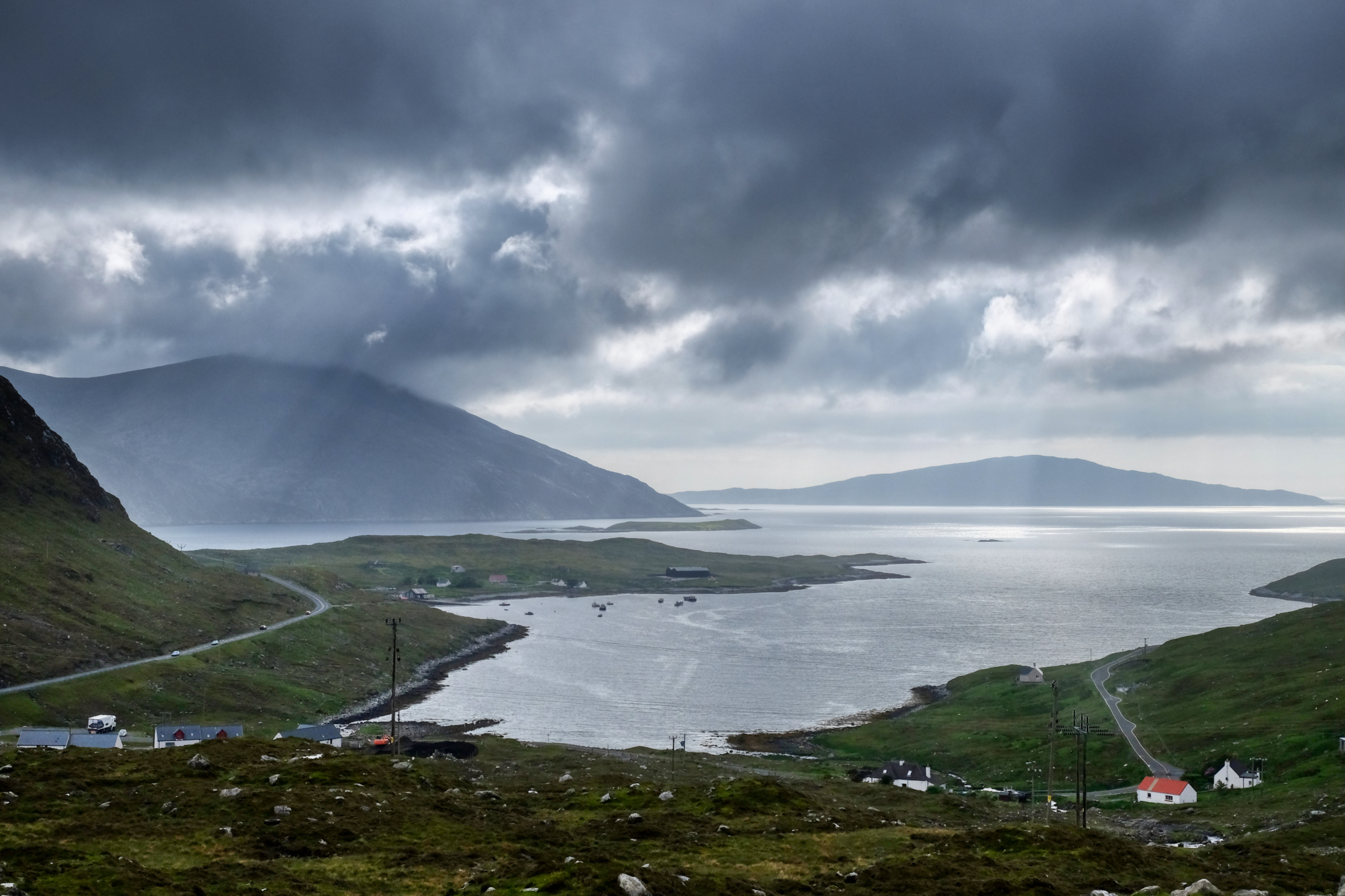 Mountains, light, sea, sky.
Mountains, light, sea, sky.
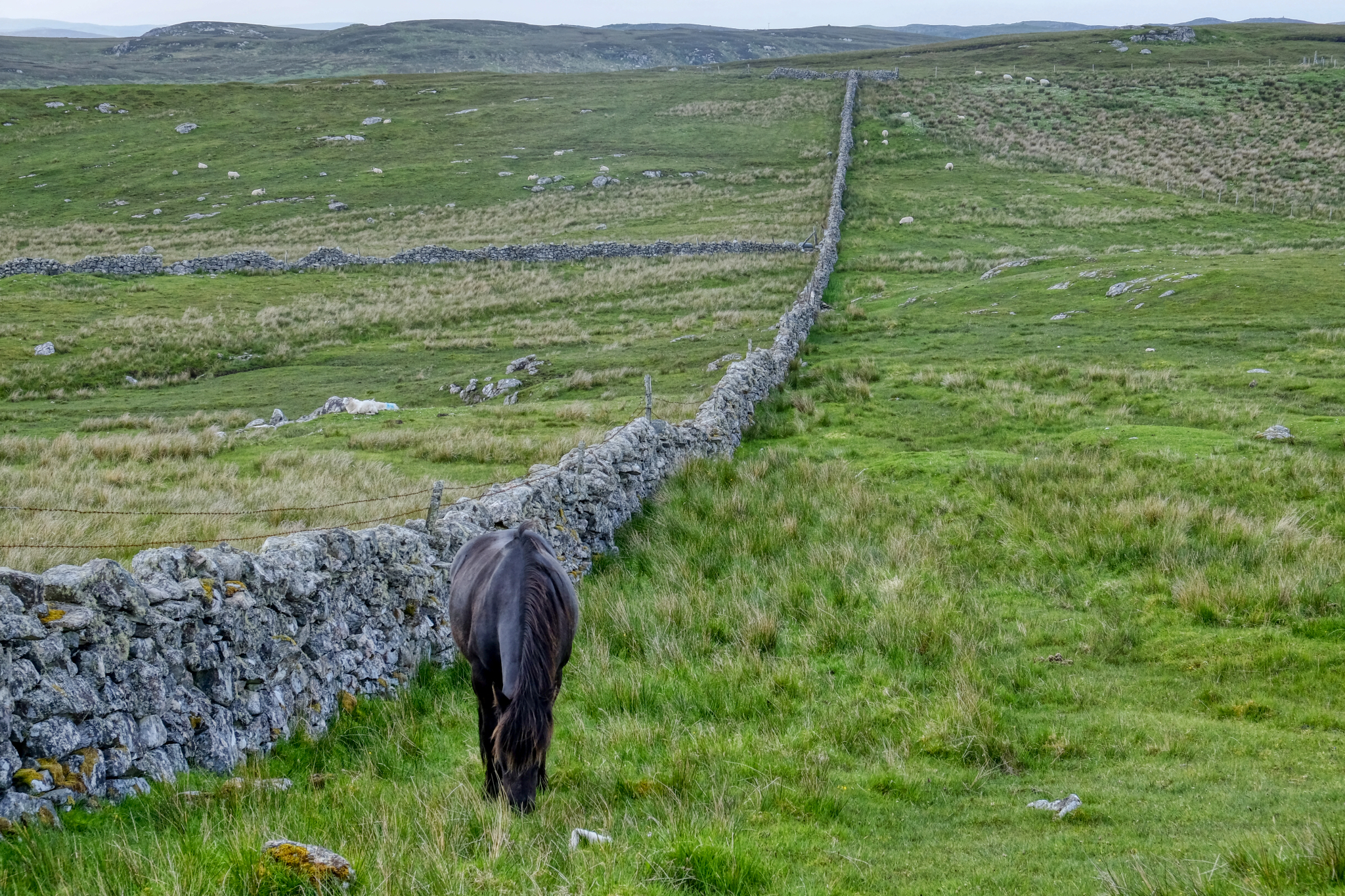 We diverted west, following a sign to Gearrannan Black House Village.
We diverted west, following a sign to Gearrannan Black House Village.
Gearrannan Black House Village
The Black House Village was a well-preserved museum of old thatched stone houses.
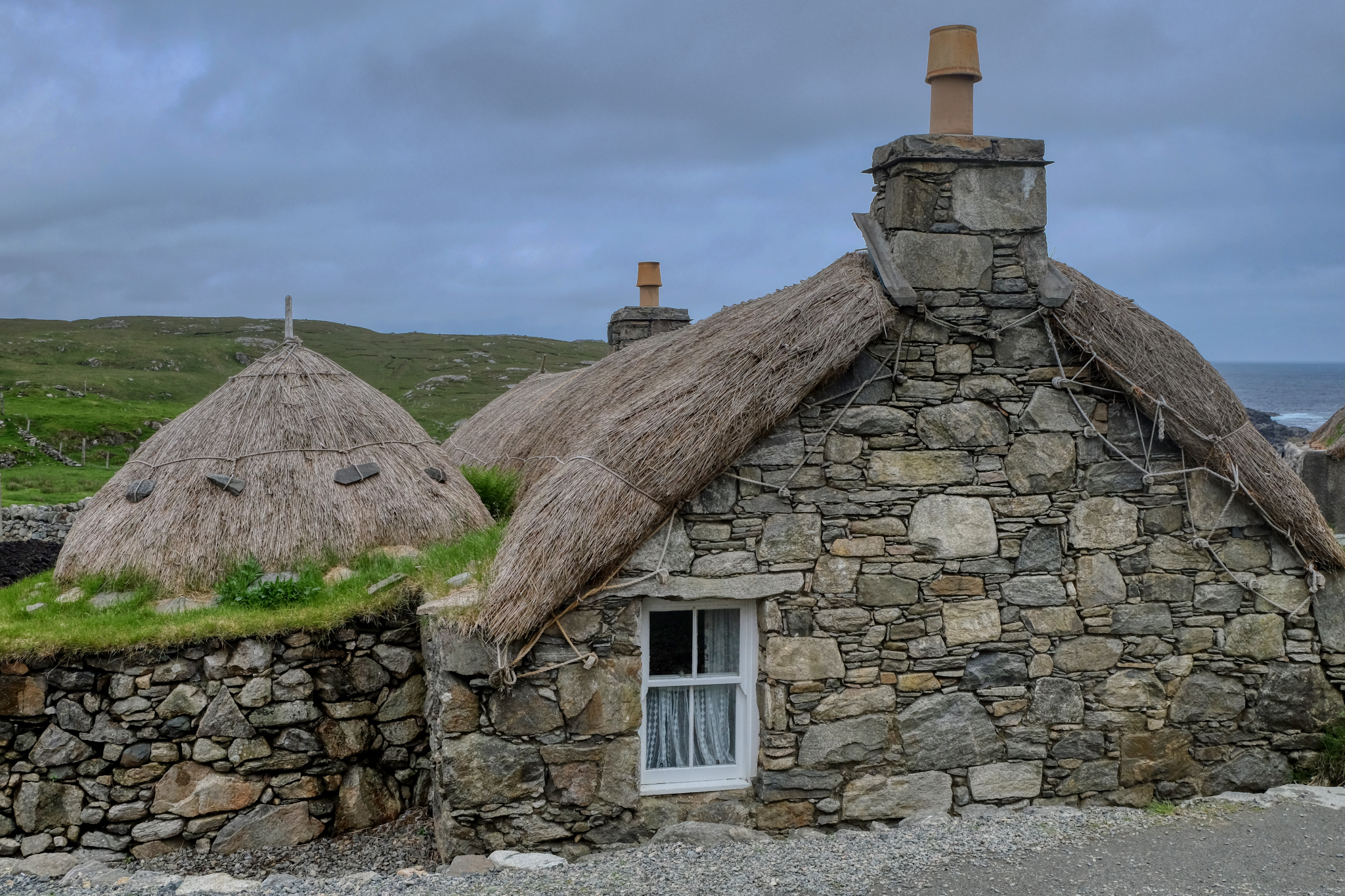 The houses here are all occupied . . . one is even a bed and breakfast . . . if we had only known!!!
The houses here are all occupied . . . one is even a bed and breakfast . . . if we had only known!!!
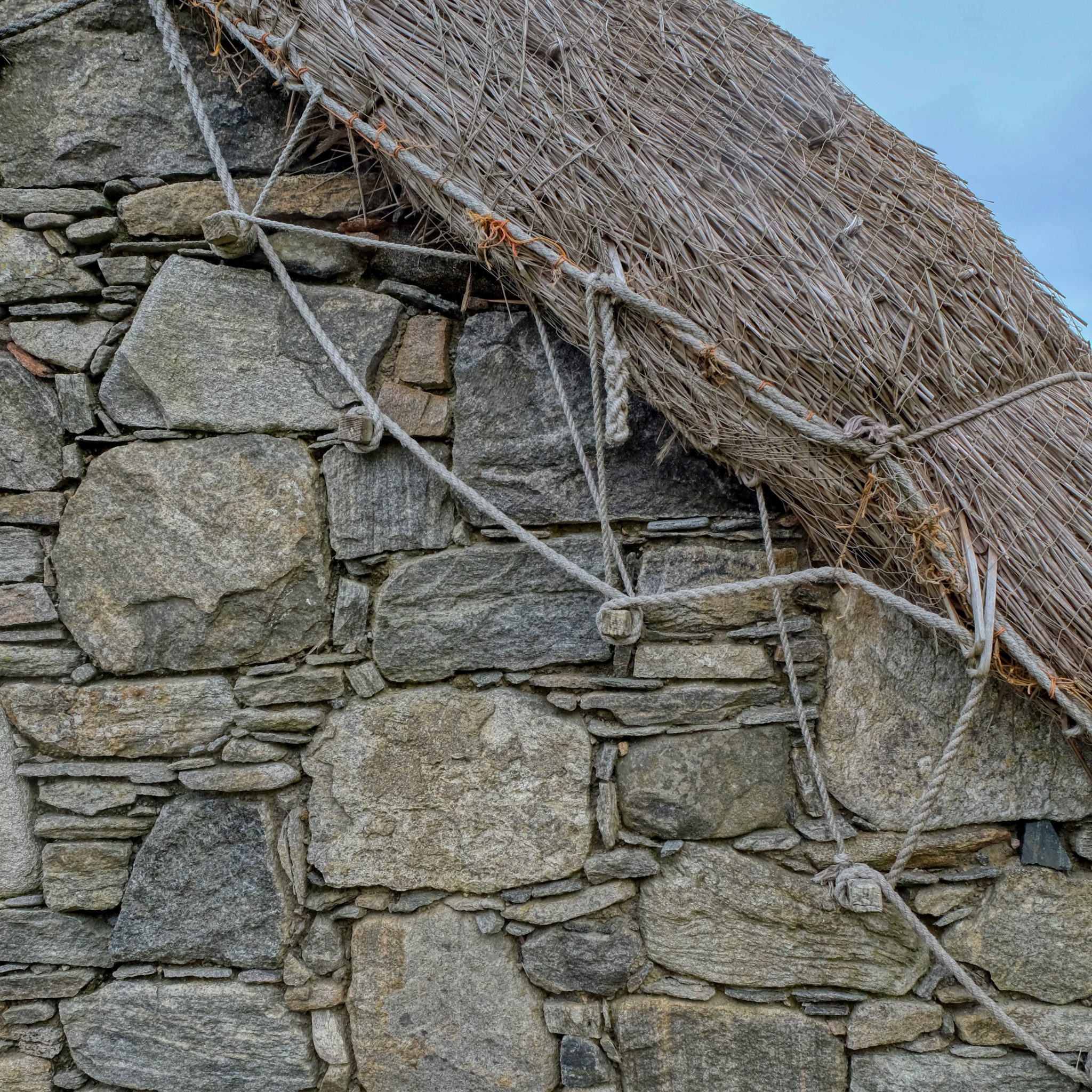 Beautifully detailed construction craft.
Beautifully detailed construction craft.
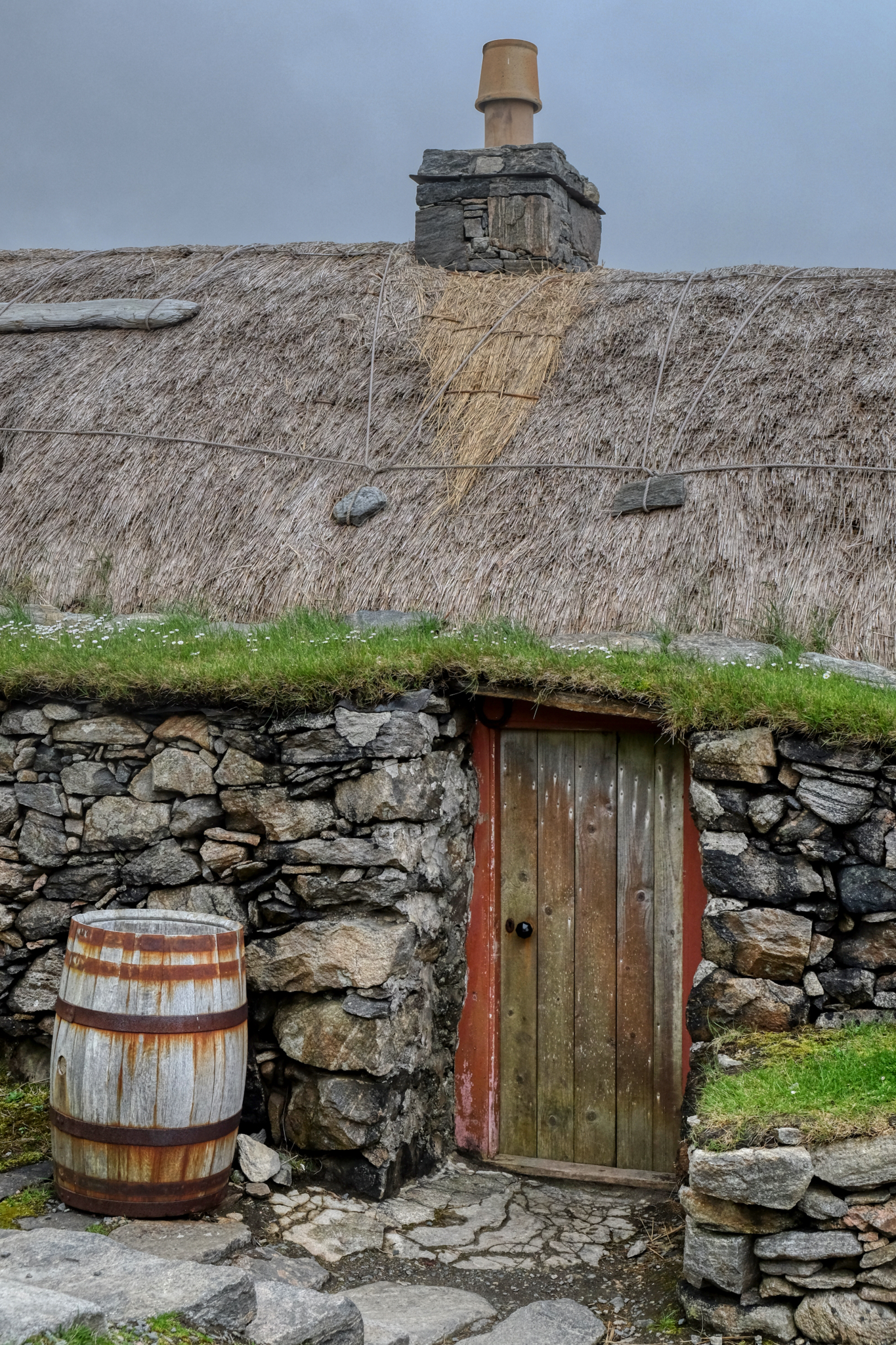 An unbelievably picturesque place.
An unbelievably picturesque place.
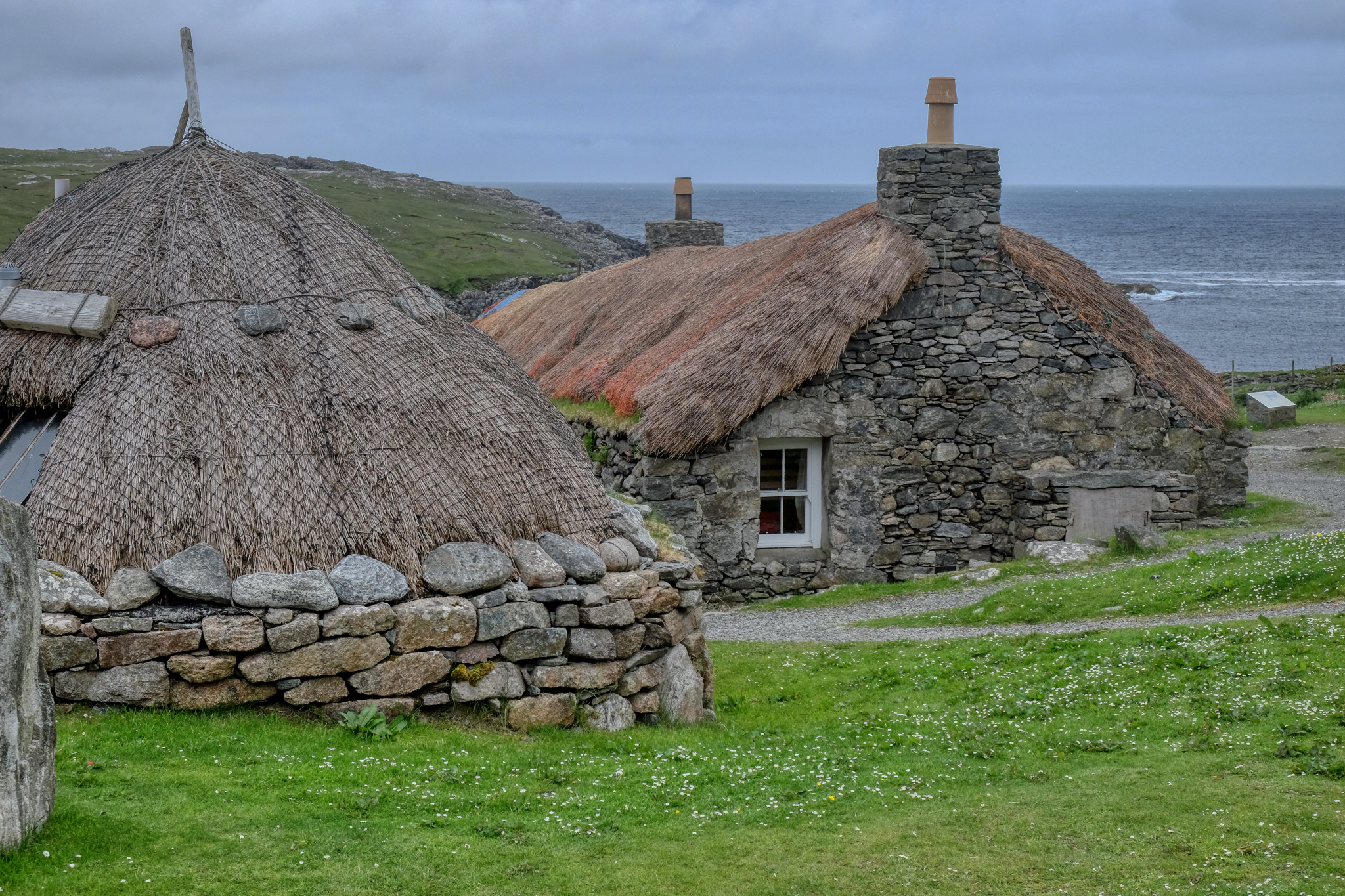 The village served as fishermen's cottages on a small bay.
The village served as fishermen's cottages on a small bay.
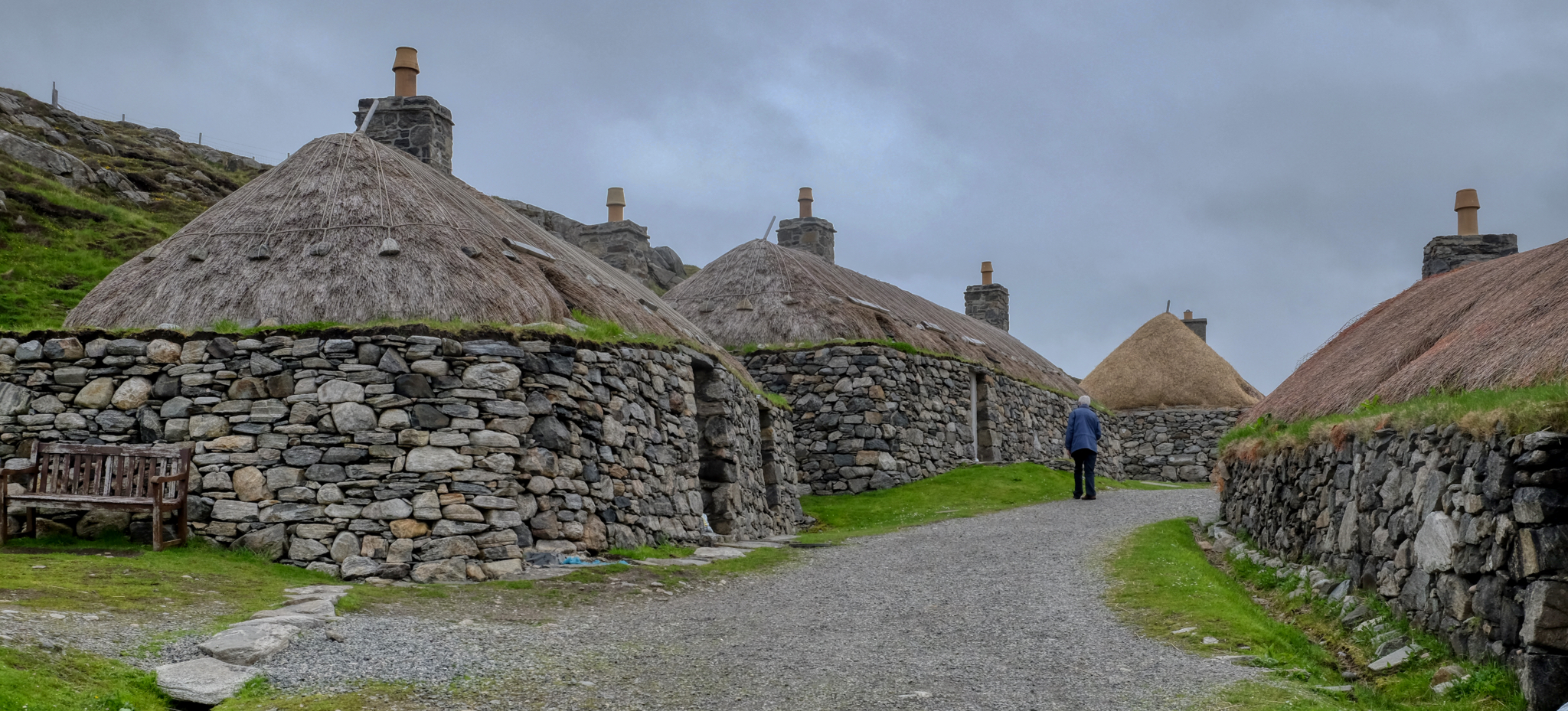 We strolled around this wonderful place for hours.
We strolled around this wonderful place for hours.
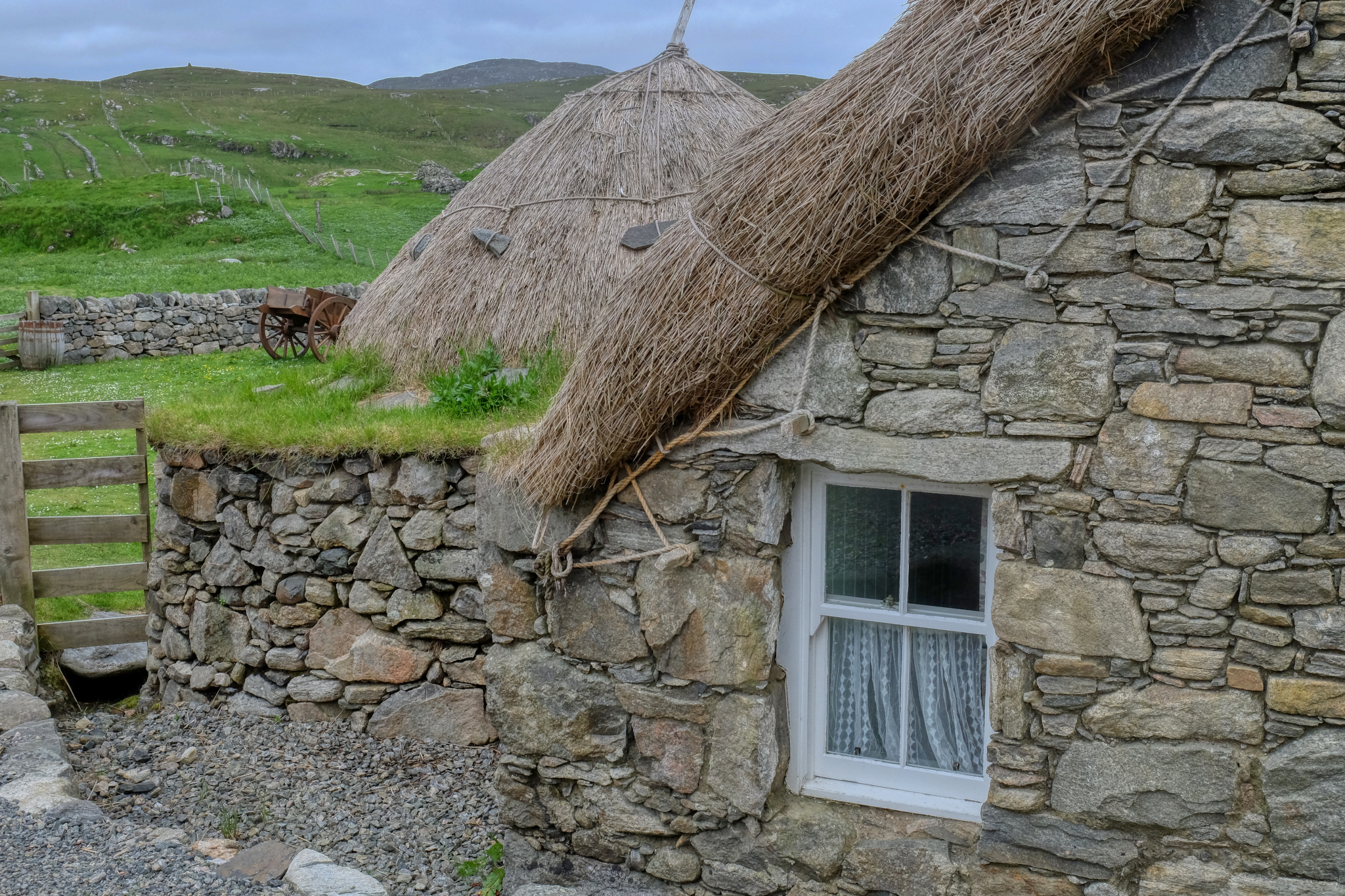 I have to confess: I took over 100 photos here . . . I couldn't help myself, I was overcome by the charming beauty.
I have to confess: I took over 100 photos here . . . I couldn't help myself, I was overcome by the charming beauty.
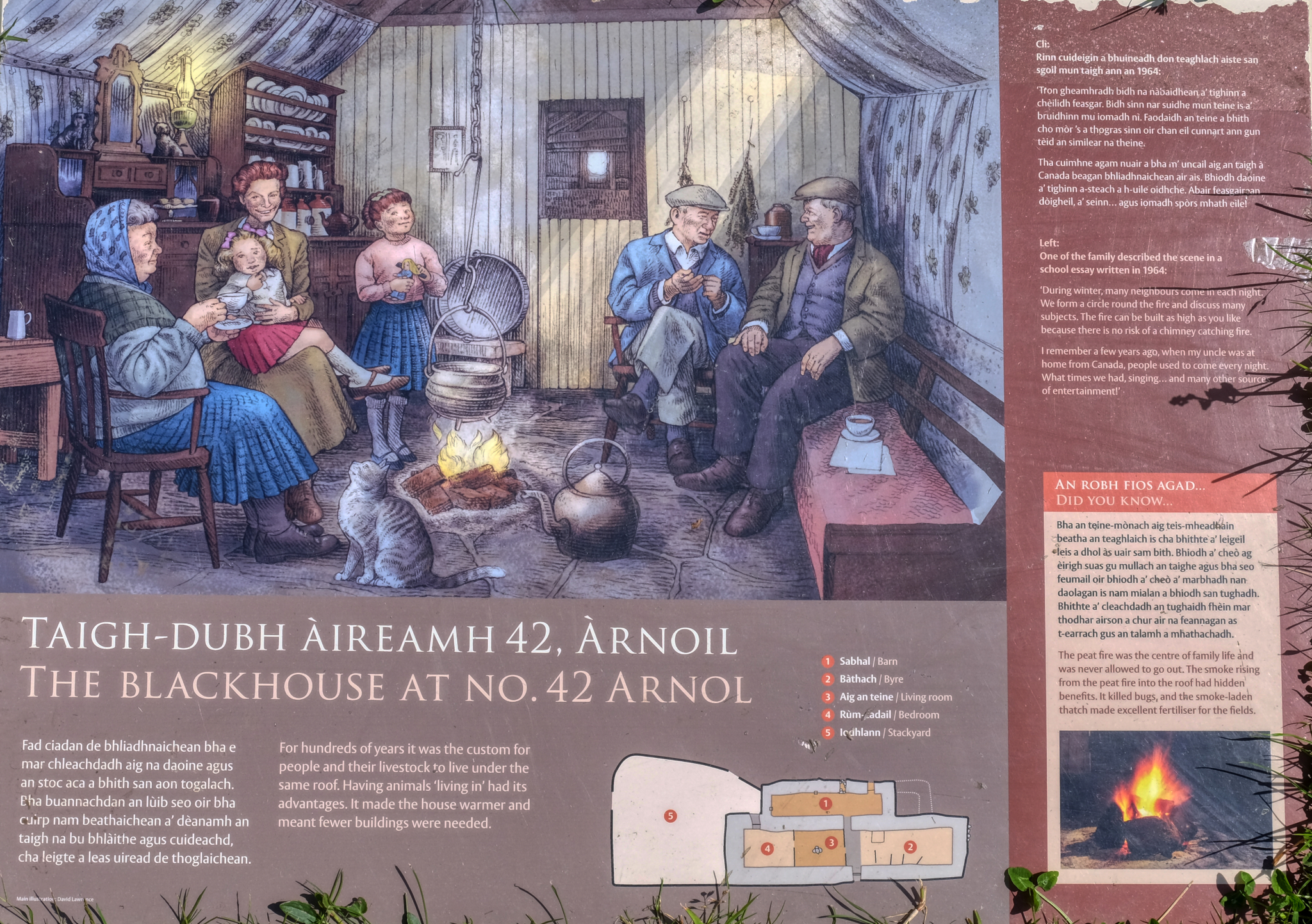 An historical marker on one of the black houses. Fascinating.
An historical marker on one of the black houses. Fascinating.
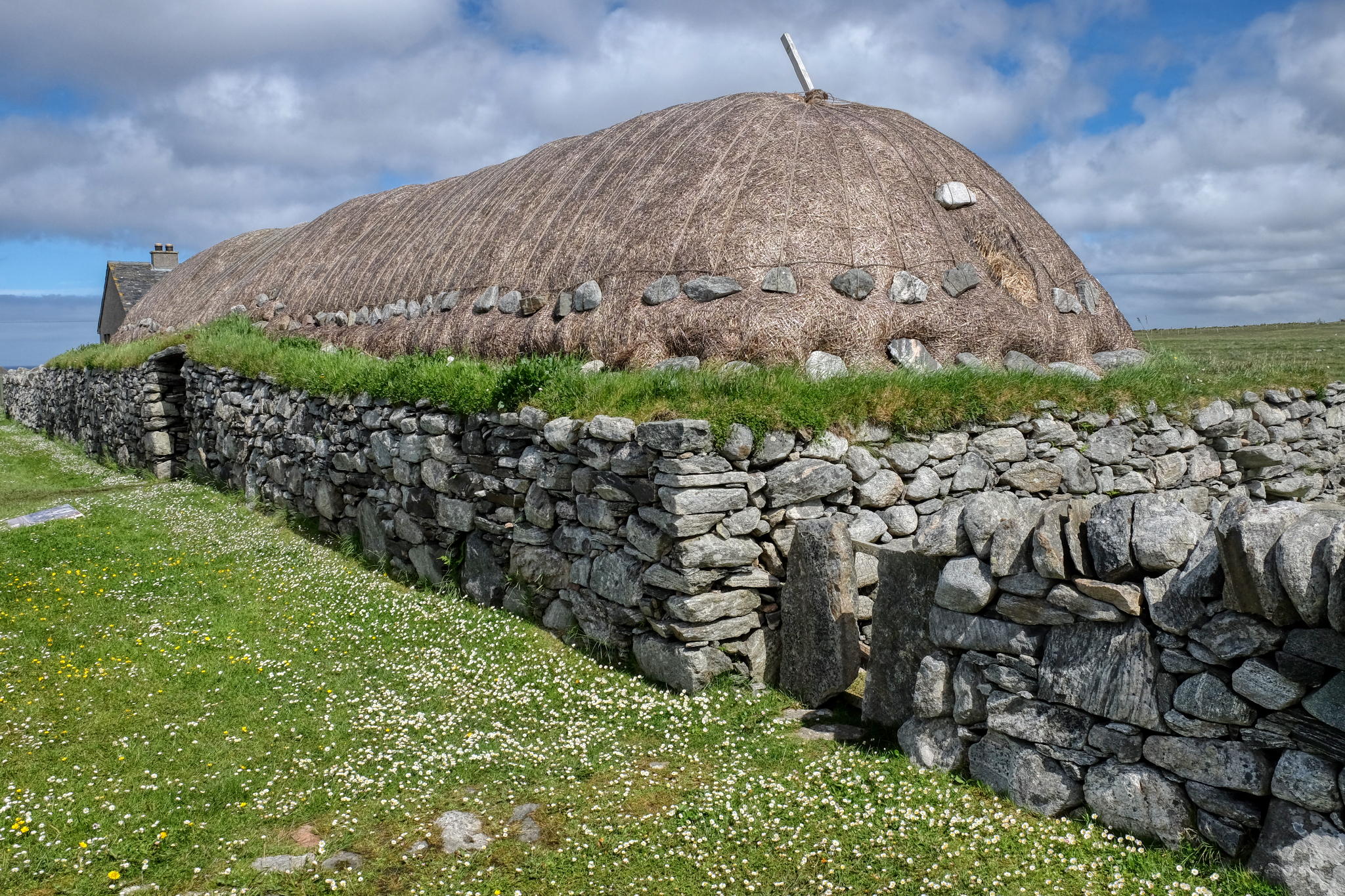 Out along the seaside west coast road of the Isle of Harris. A crofters barn, freshly thatched . . . and still in use.
Out along the seaside west coast road of the Isle of Harris. A crofters barn, freshly thatched . . . and still in use.
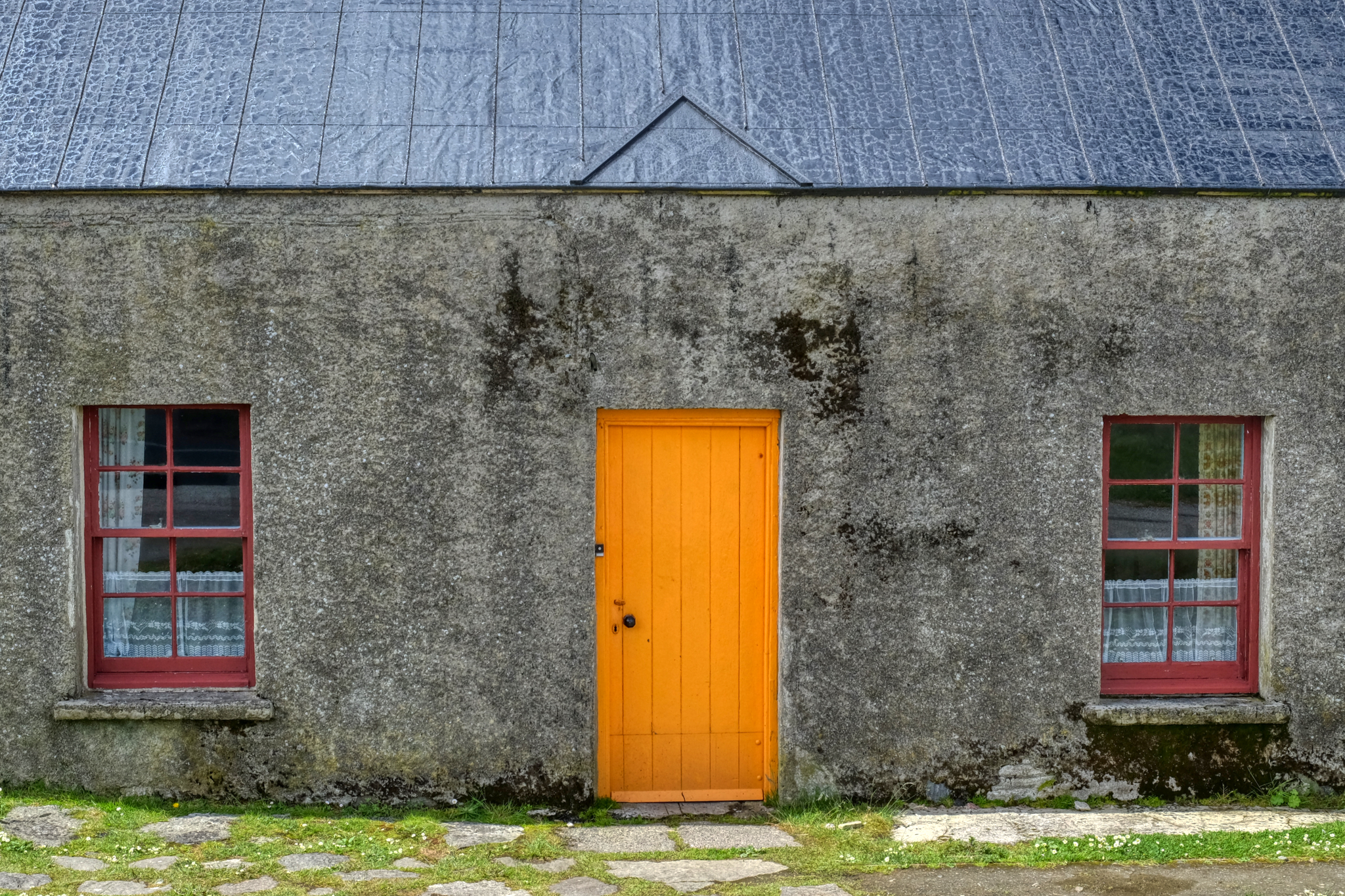 The houses here are very simple and austere . . . almost no decoration at all.
The houses here are very simple and austere . . . almost no decoration at all.
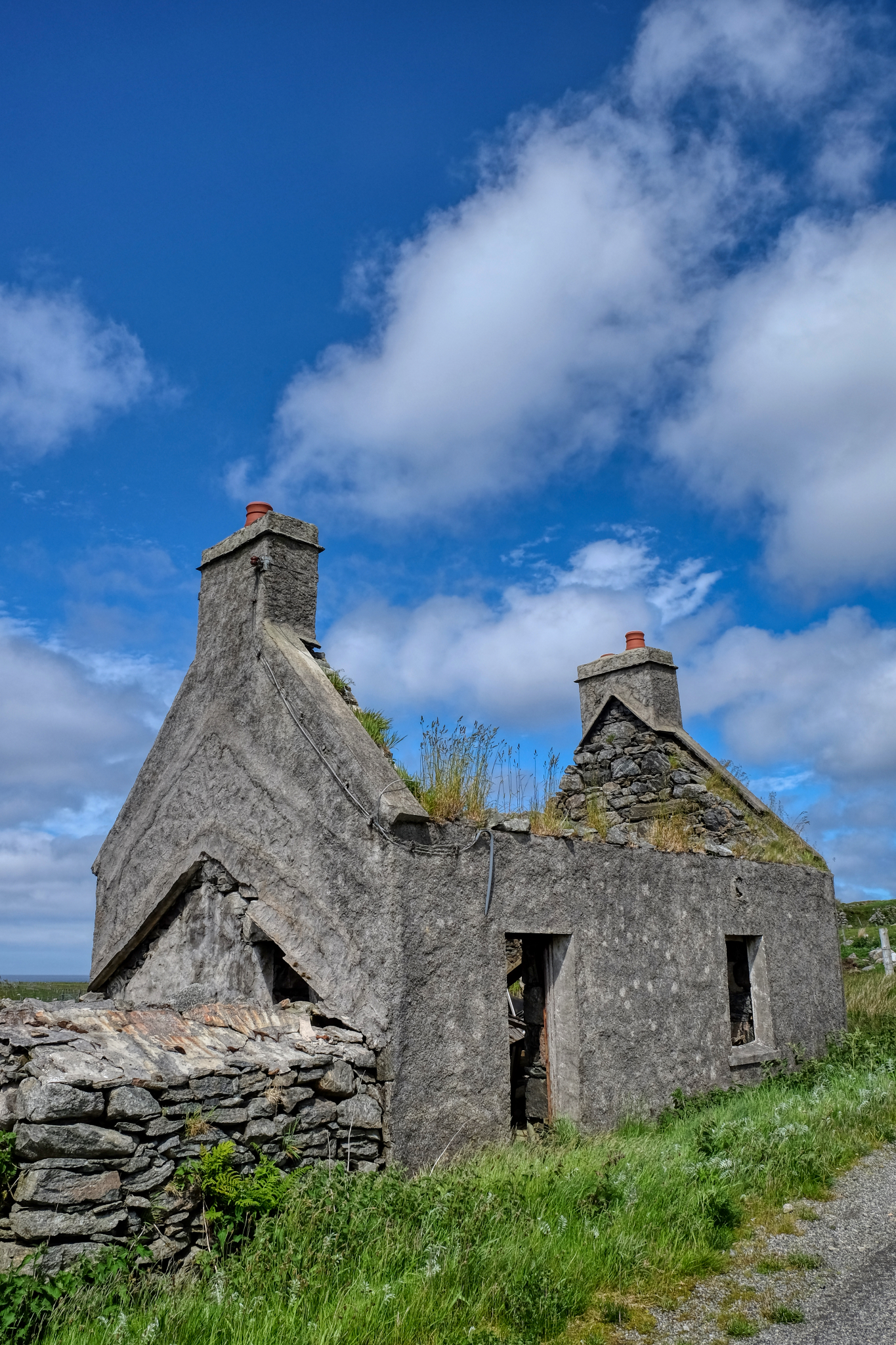 There are many abandoned houses in the west of these islands. There has been a steady drop in population as younger people move to towns and cities on the mainland of Scotland for jobs. However, some of the old houses are being restored by pensioners from as far away as London.
There are many abandoned houses in the west of these islands. There has been a steady drop in population as younger people move to towns and cities on the mainland of Scotland for jobs. However, some of the old houses are being restored by pensioners from as far away as London.
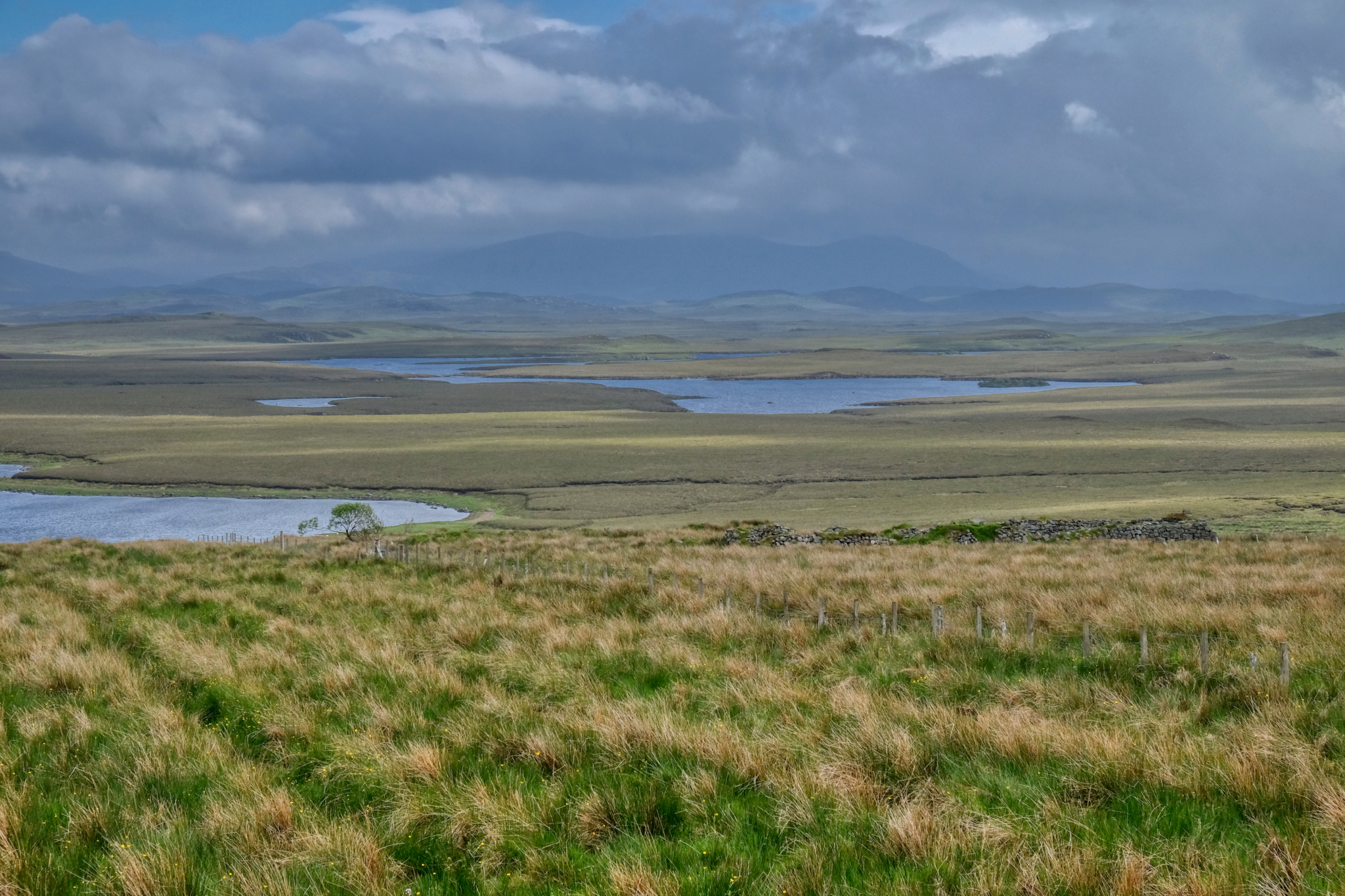 And on and on we went . . . north to see an amazing landmark . . .
And on and on we went . . . north to see an amazing landmark . . .
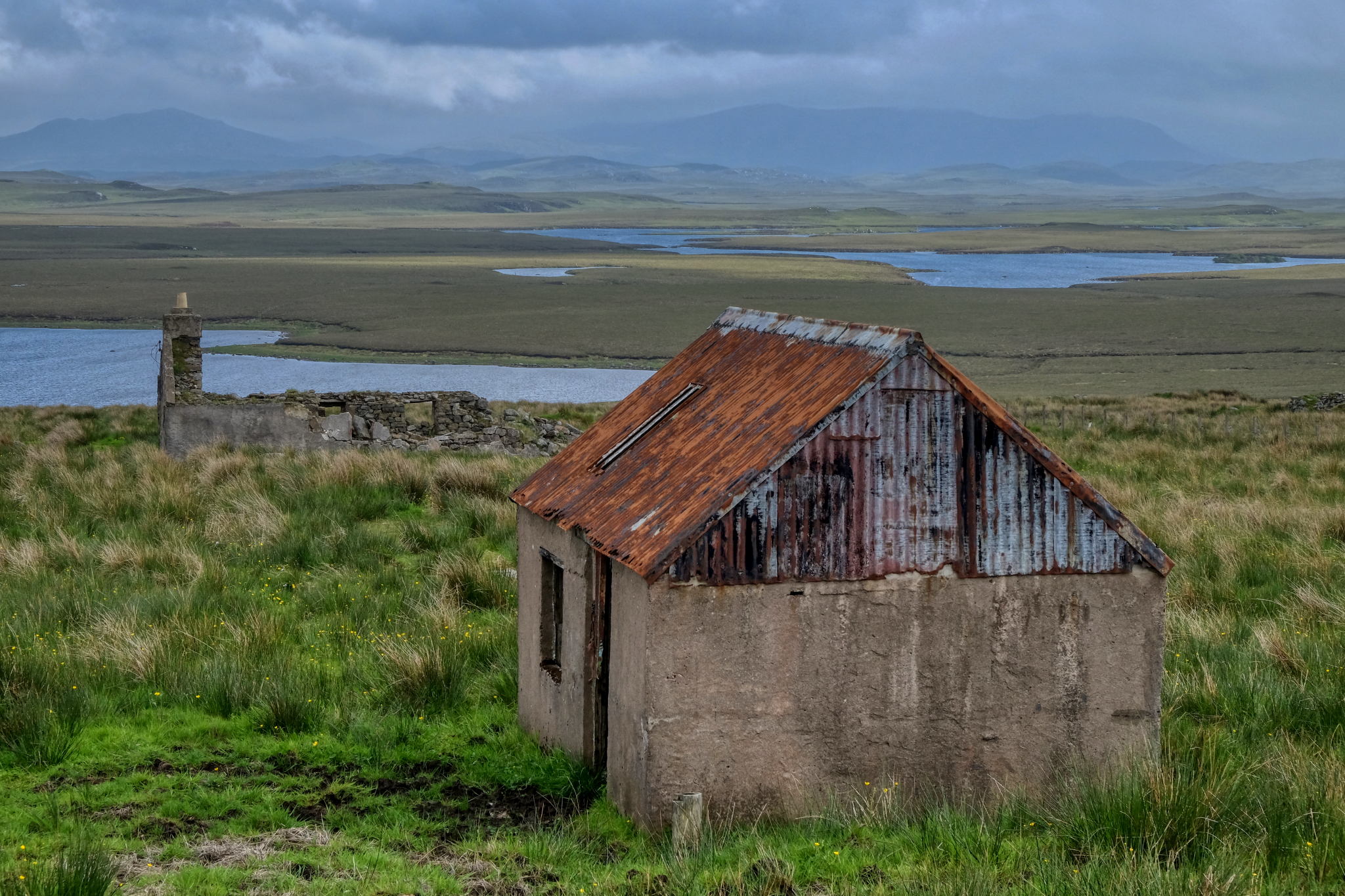 Out on a remote stretch of the north of the Isle of Lewis, more abandoned crofters cottages.
Out on a remote stretch of the north of the Isle of Lewis, more abandoned crofters cottages.
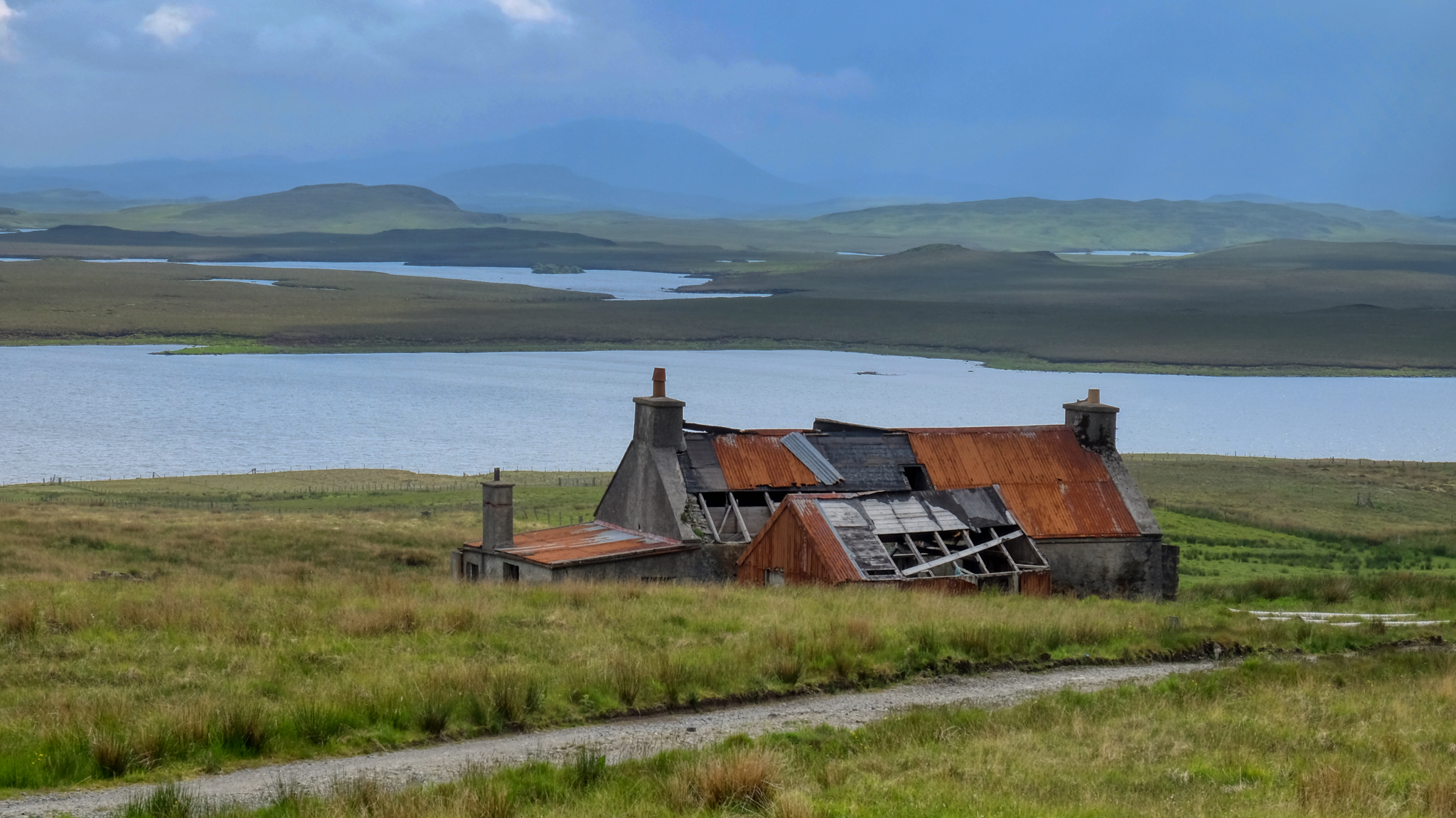 The views became more fantastical, otherworldly.
The views became more fantastical, otherworldly.
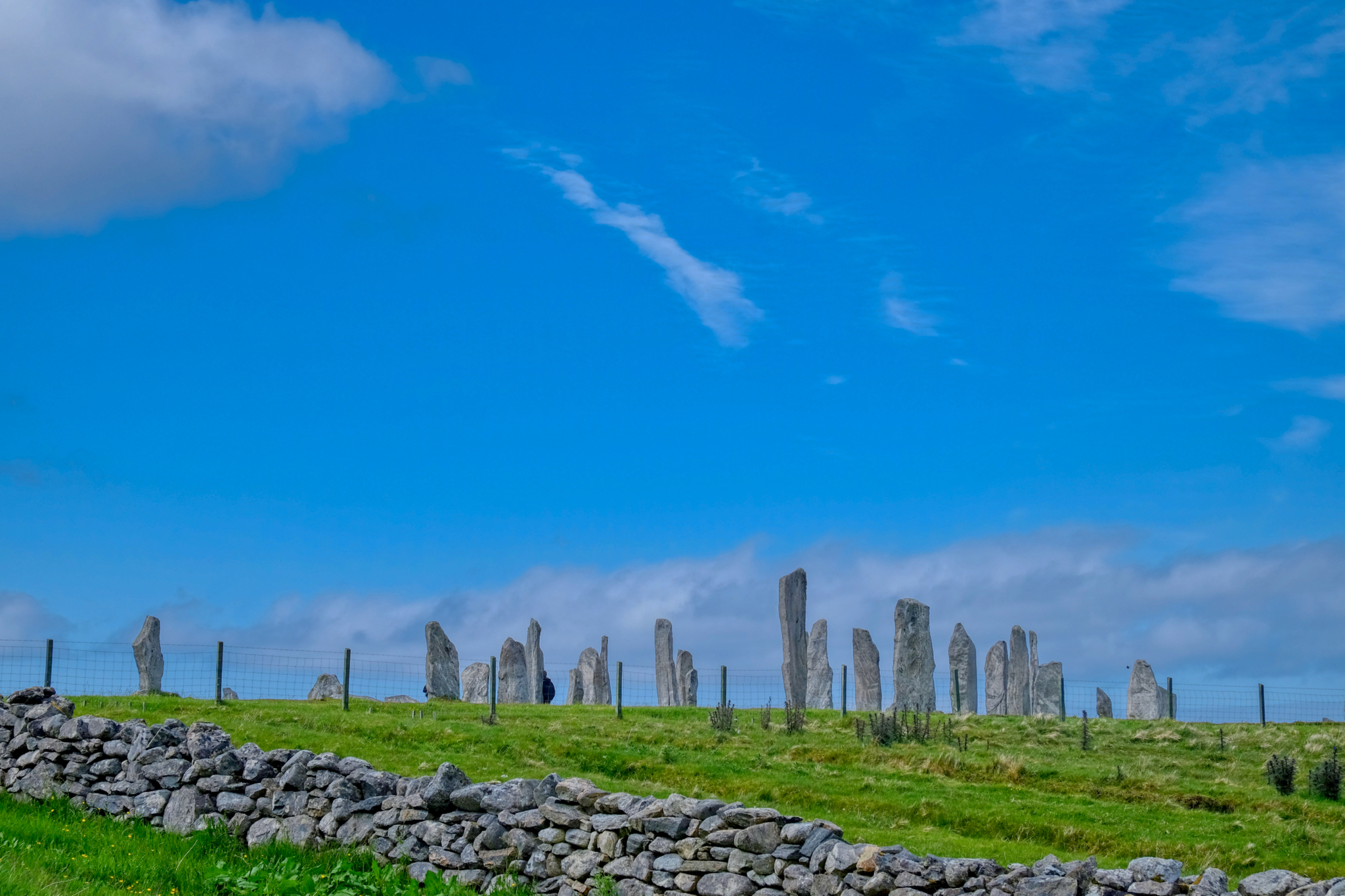 At last we had arrived at our destination: The Callanish Standing Stones!
At last we had arrived at our destination: The Callanish Standing Stones!
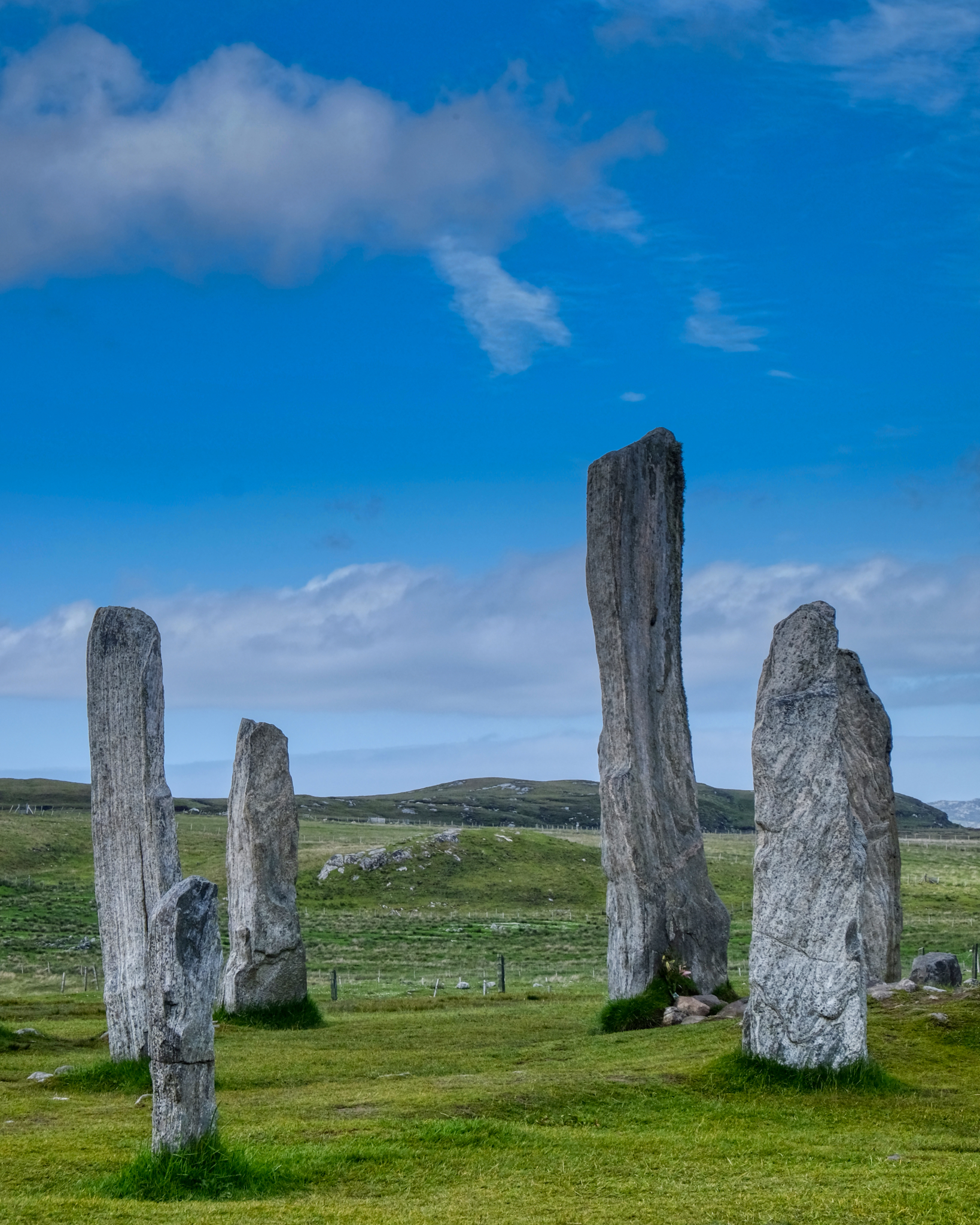 I have been to Stonehenge, but these were far more magnificent!
I have been to Stonehenge, but these were far more magnificent!
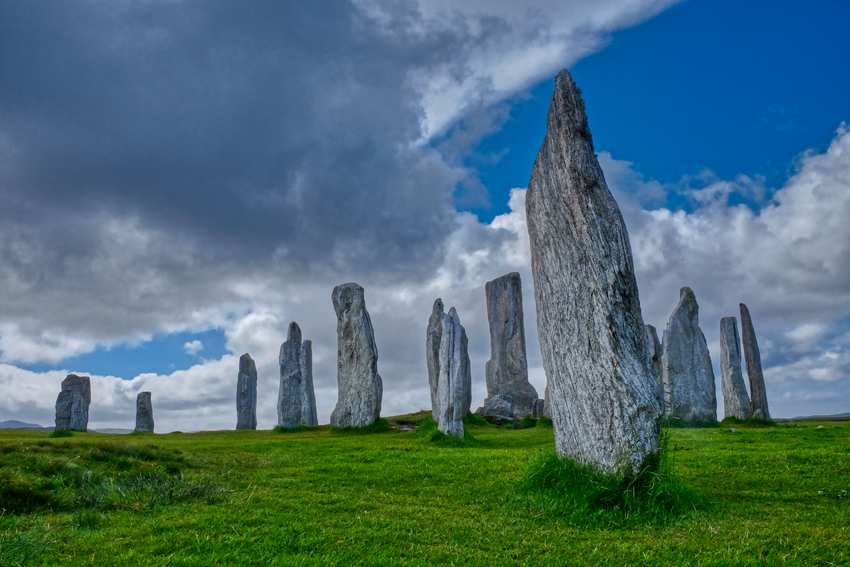
"The first traces of human activity are indicated by a broad ditch (no longer visible above ground) which appears to have belonged to some structure or enclosure. This may have been ritual, but could instead have been domestic. In the centuries around 3000 BC, however, the site was turned over to agriculture, which obliterated most of the earlier traces. After this, the site was allowed to grass over for a time." - Callanish Standing Stones
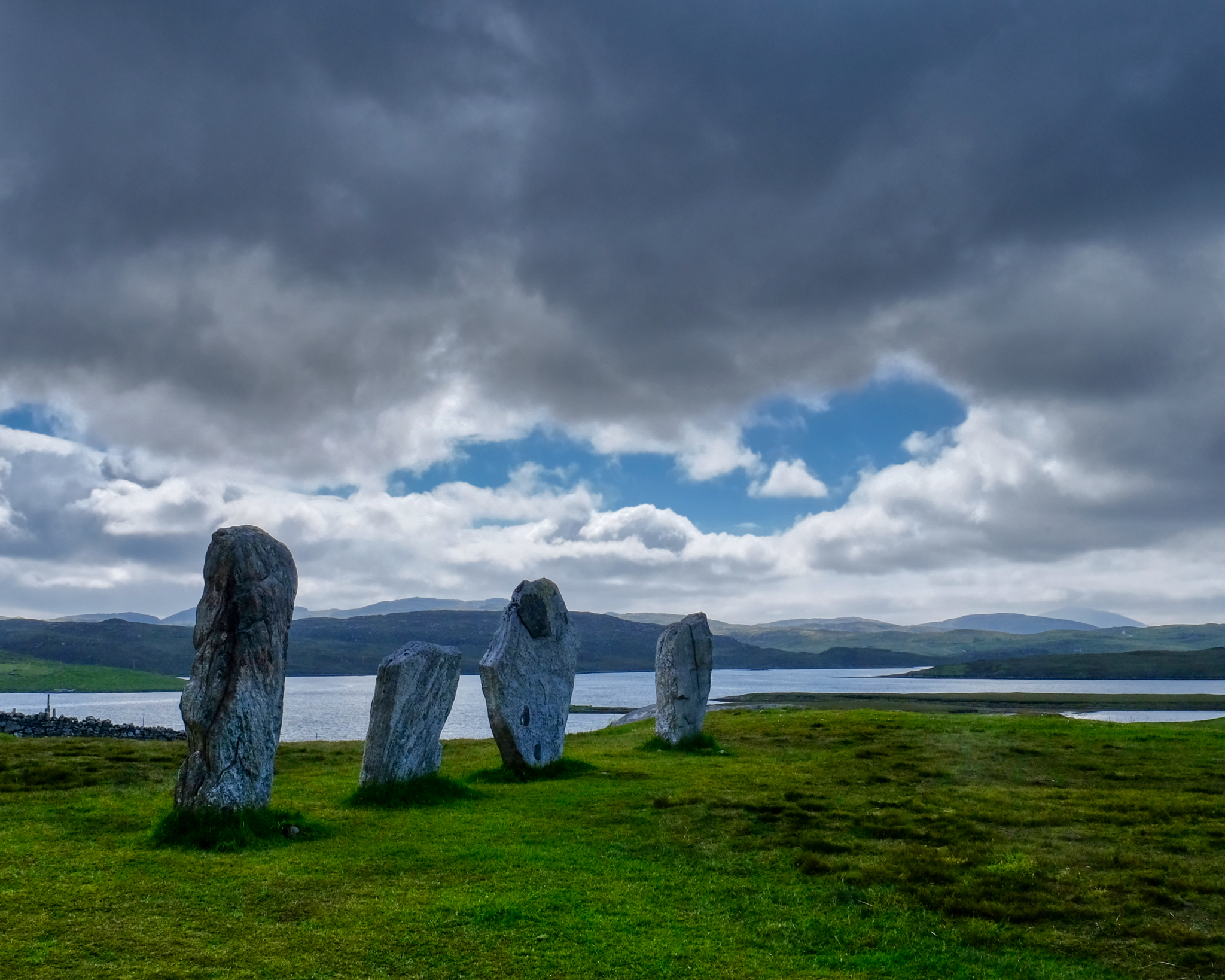 The stones sit on a hill with awesome views.
The stones sit on a hill with awesome views.
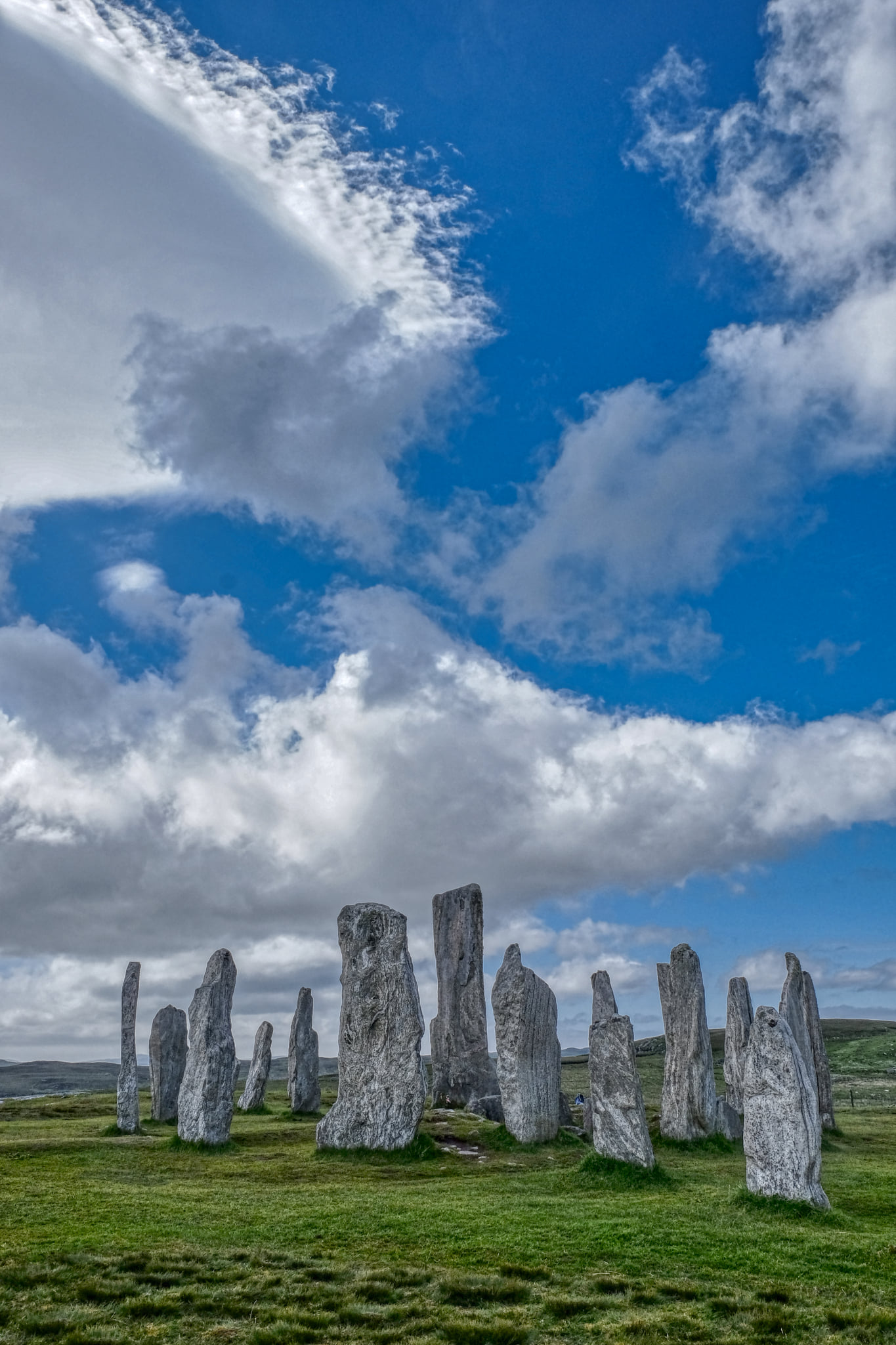 Under a stunning, ever-changing sky . . . the sun popping through now and again.
Under a stunning, ever-changing sky . . . the sun popping through now and again.
 Magic.
Magic.
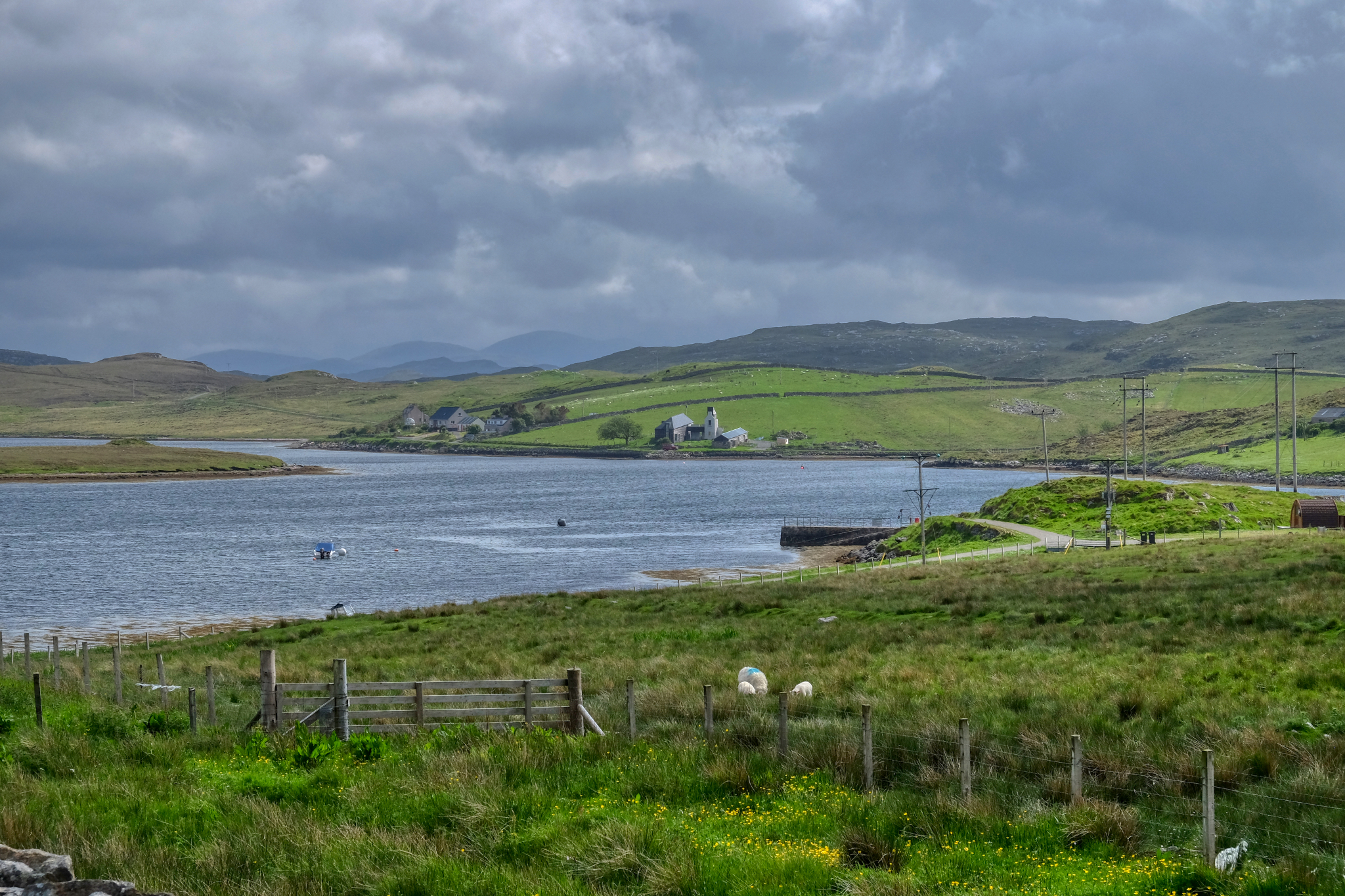 A view from the standing stones. Imagine living in a farm like this . . . in this place.
A view from the standing stones. Imagine living in a farm like this . . . in this place.
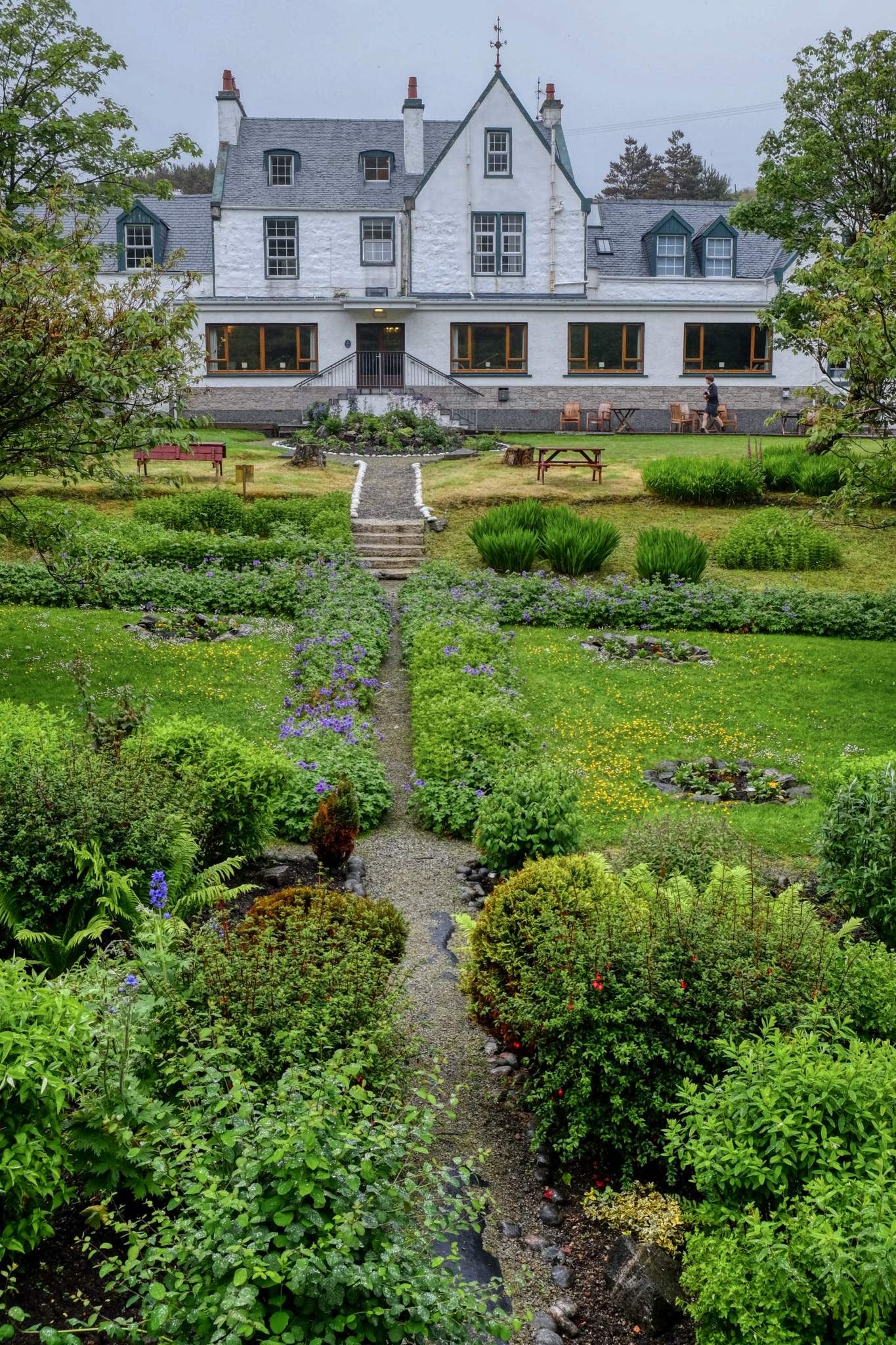 We stayed a lovely evening at the Harris Hotel, Isle of Lewis and Harris.
We stayed a lovely evening at the Harris Hotel, Isle of Lewis and Harris.
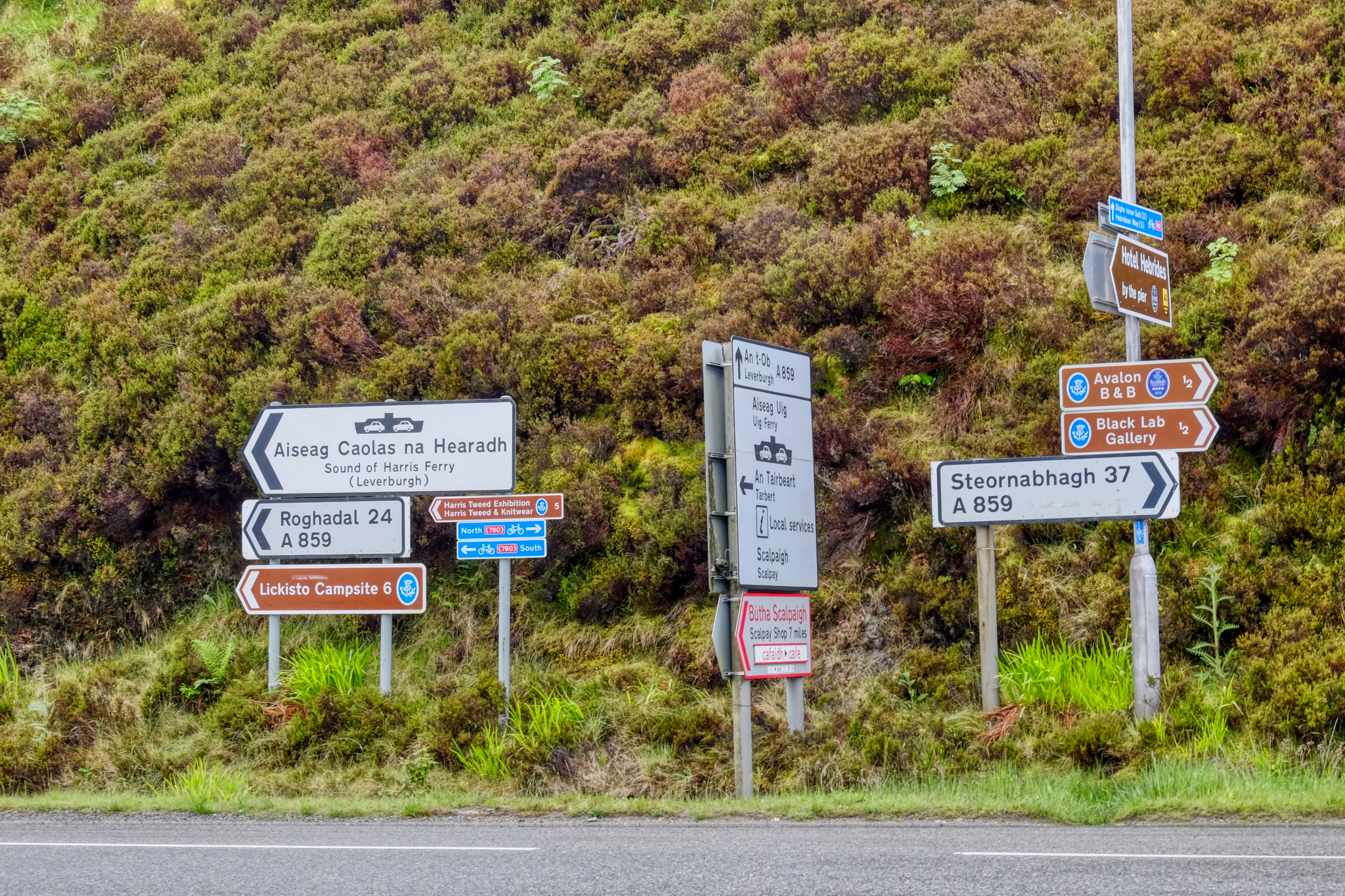 Ah! Harris tweed that way!
Ah! Harris tweed that way!
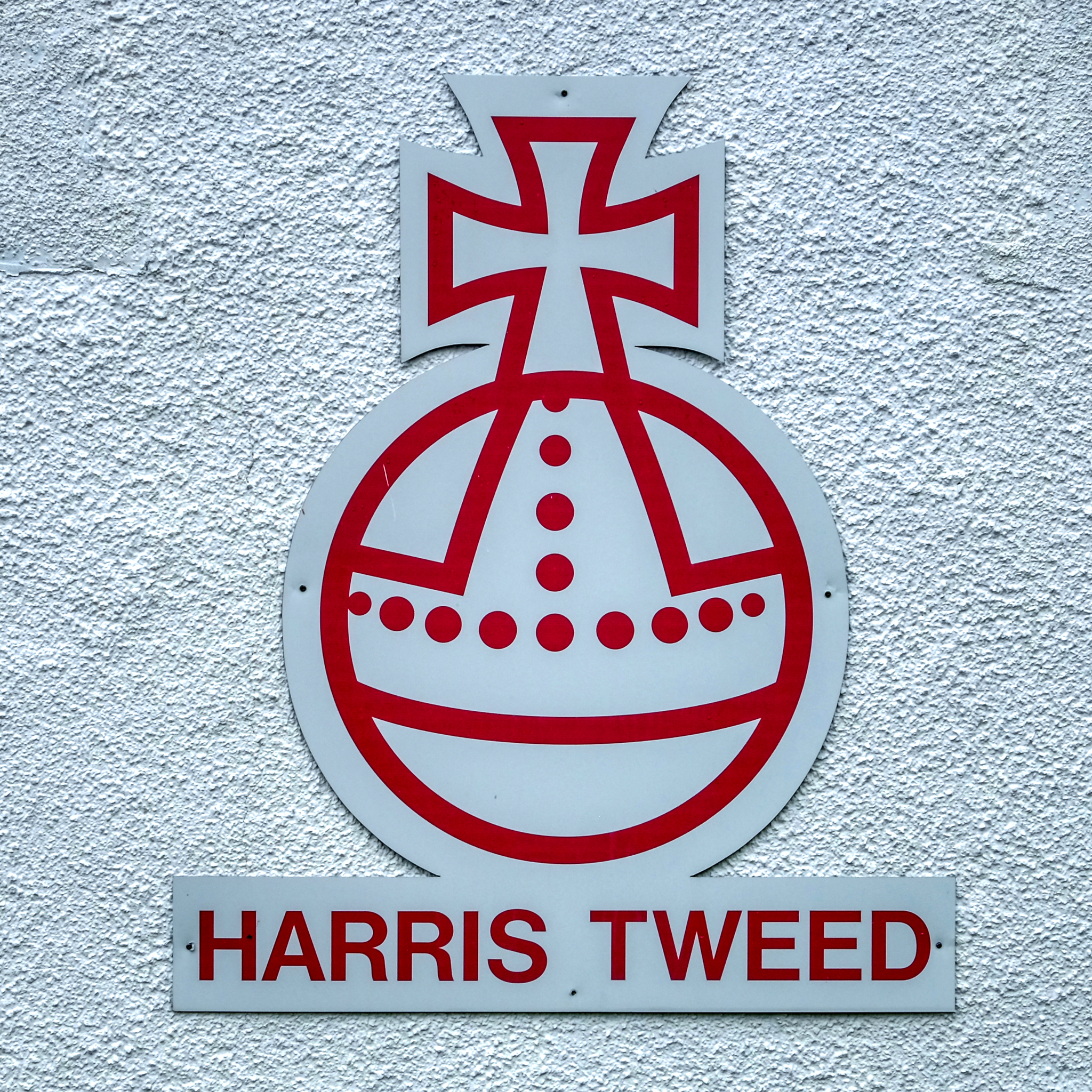 Only tweed that has been woven on the Isle of Harris can be called Harris tweed. It is famous all over the world.
Only tweed that has been woven on the Isle of Harris can be called Harris tweed. It is famous all over the world.
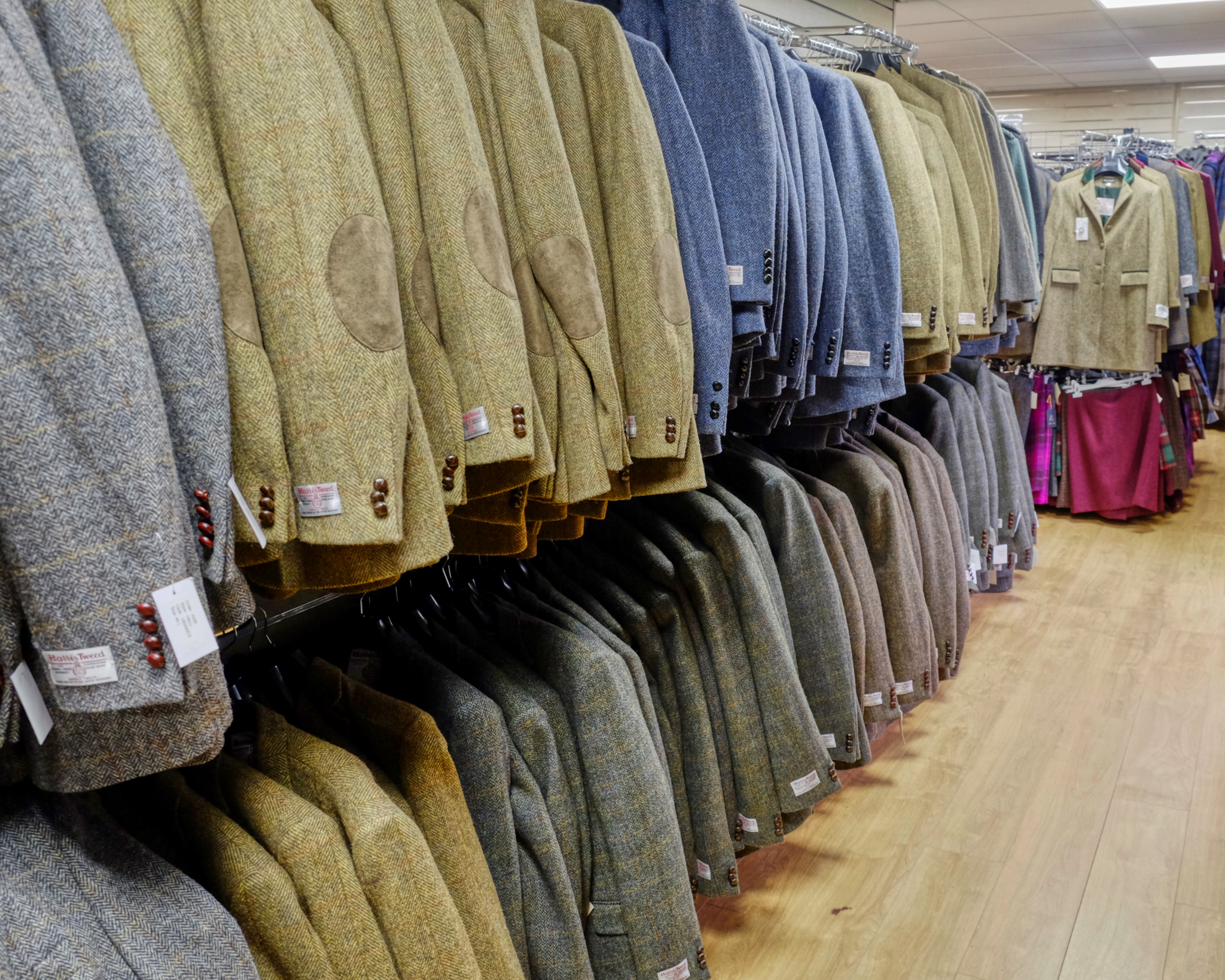 When I lived in London many years ago, I had a very nice Harris tweed sport coat. I tried several of these on . . . but they felt too old fashioned . . . and professorial.
When I lived in London many years ago, I had a very nice Harris tweed sport coat. I tried several of these on . . . but they felt too old fashioned . . . and professorial.
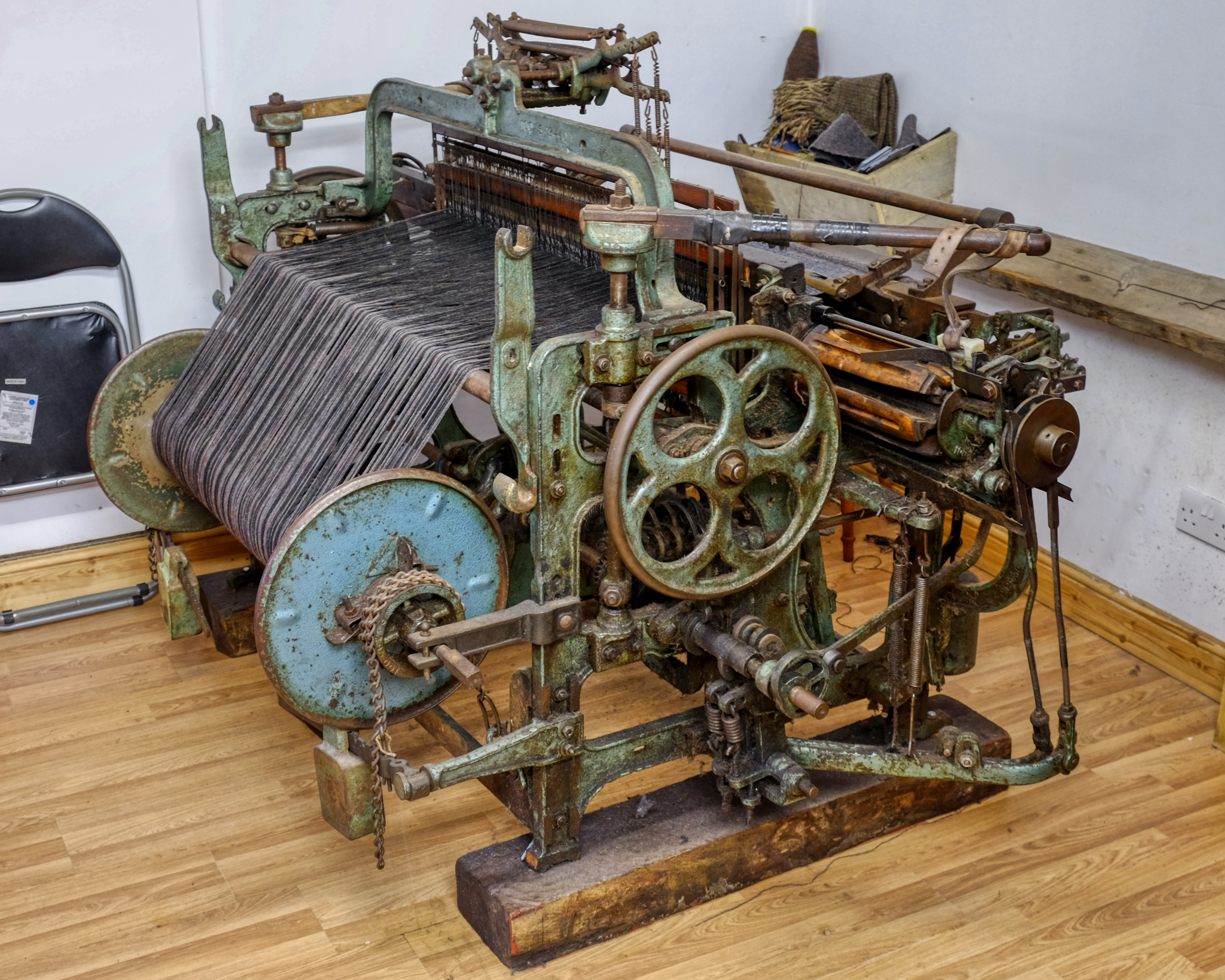 The winter nights on the Outer Hebrides are long, dark, cold, and windy. Local residents have spent the dark months weaving the distinctive tweed the island is famous for on these looms.
The winter nights on the Outer Hebrides are long, dark, cold, and windy. Local residents have spent the dark months weaving the distinctive tweed the island is famous for on these looms.
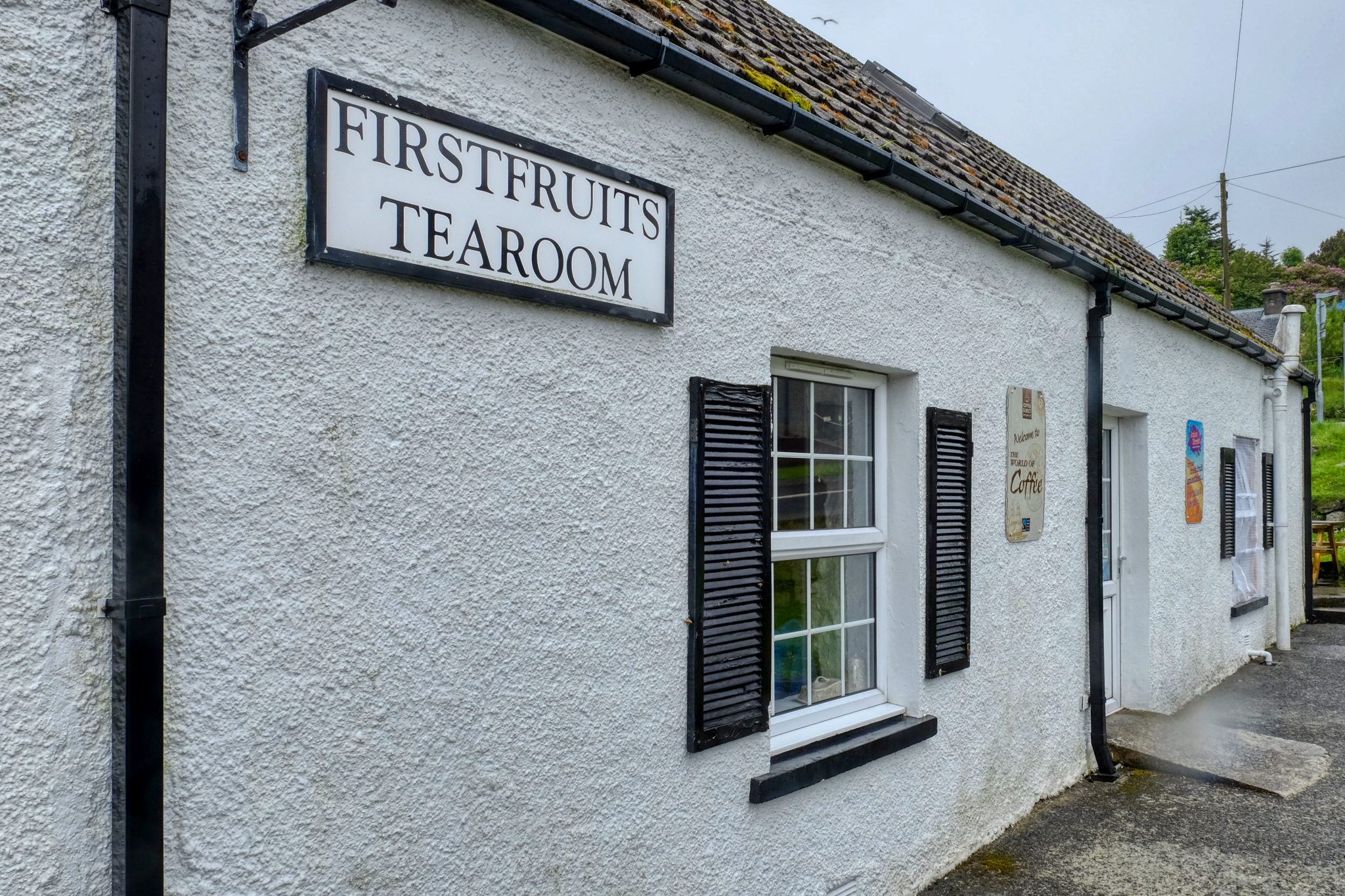 We eagerly explored the few small villages out on the islands. A nice cup of coffee and scones was very welcome.
We eagerly explored the few small villages out on the islands. A nice cup of coffee and scones was very welcome.
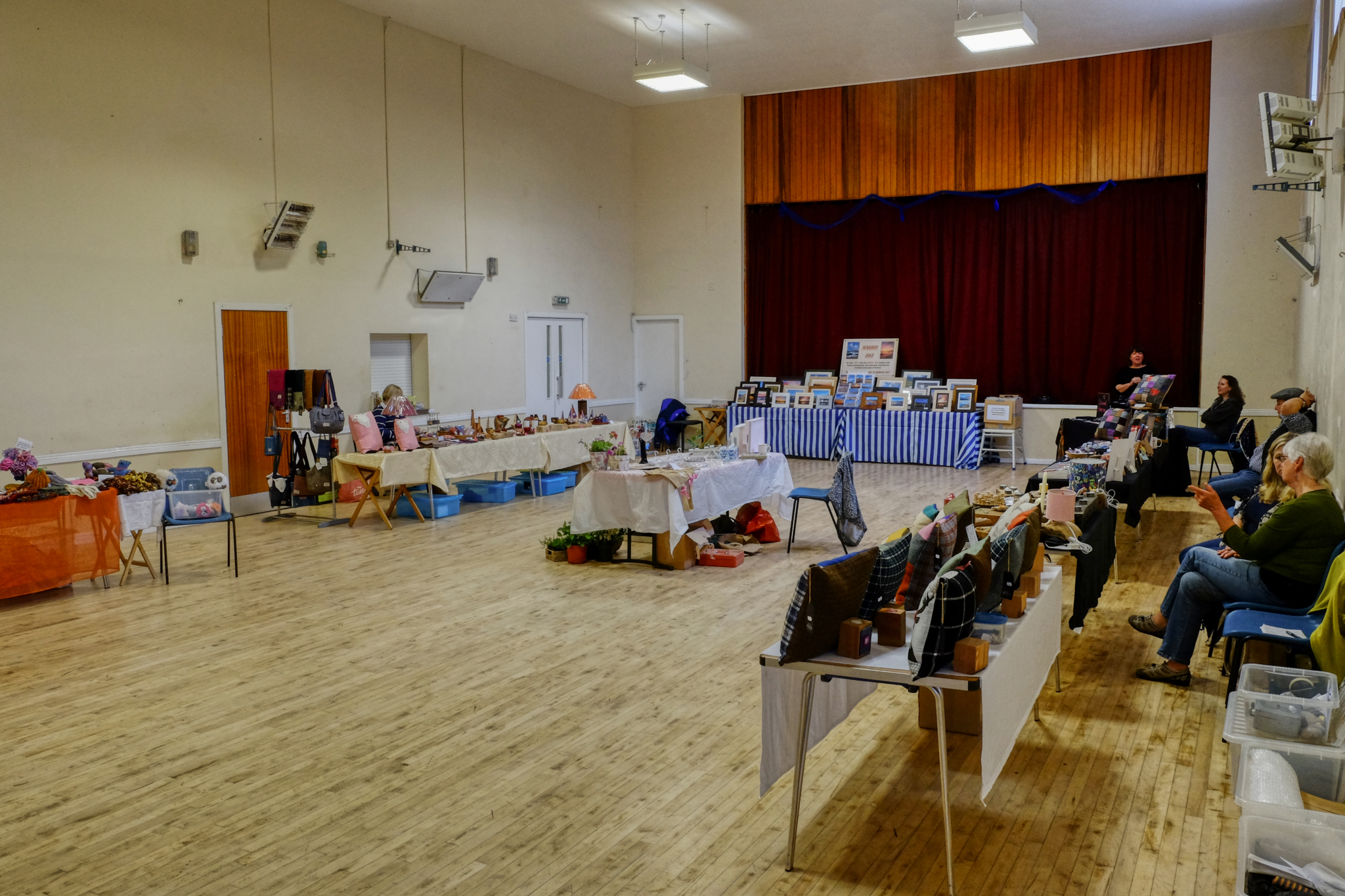 We always stop whenever we see a "craft sale" sign. You never know what amazing things you might find . . . and we have found and purchased many fantastic things on our world travels in these kinds of places . . . but not at this place. We always try to buy something, but could not find a thing we wanted here. Sorry ladies.
We always stop whenever we see a "craft sale" sign. You never know what amazing things you might find . . . and we have found and purchased many fantastic things on our world travels in these kinds of places . . . but not at this place. We always try to buy something, but could not find a thing we wanted here. Sorry ladies.
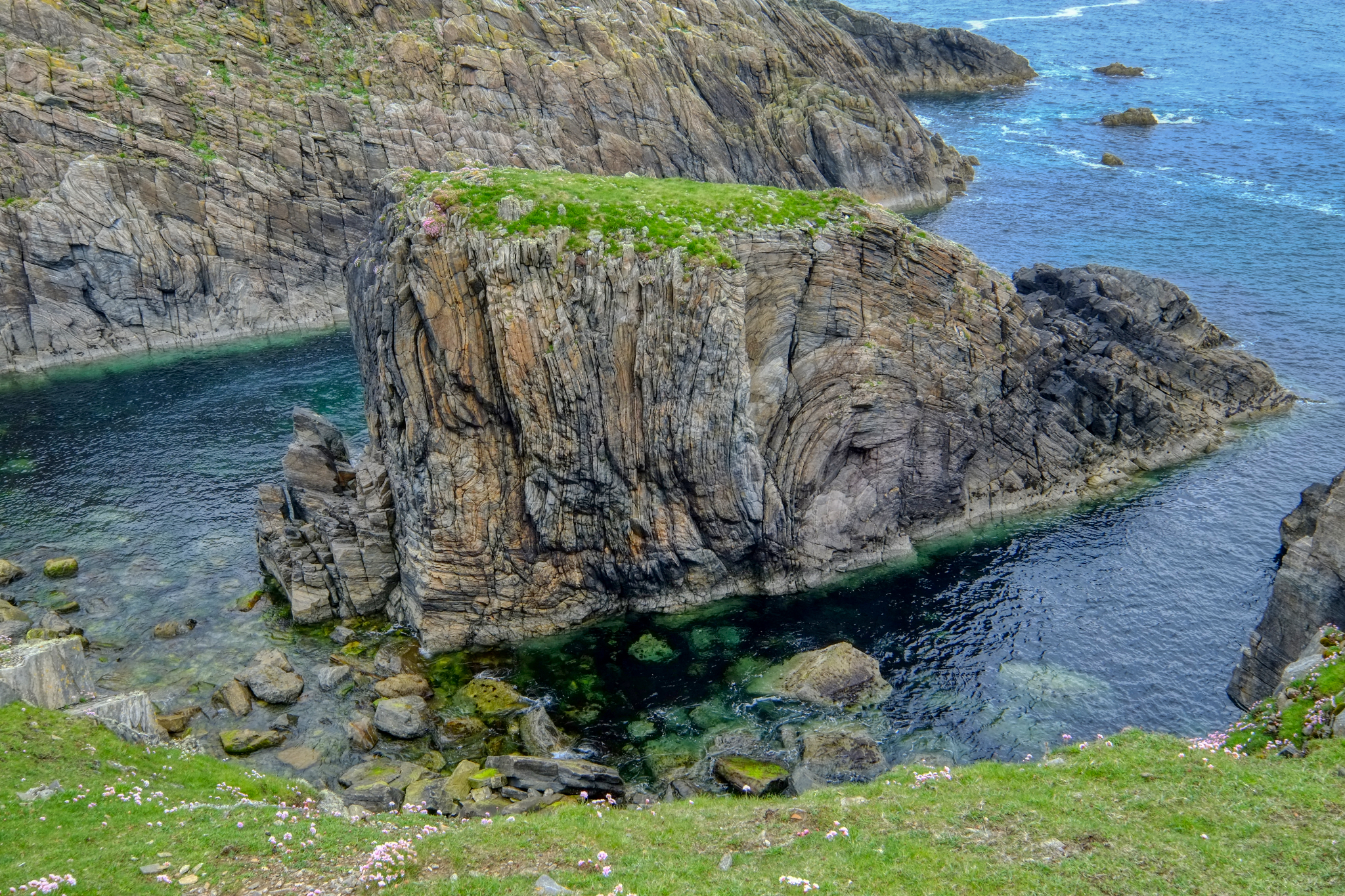
After five days on the small roads, we eventually made it to the very tip top of the chain of islands that make up the Outer Hebrides. And we were not disappointed!
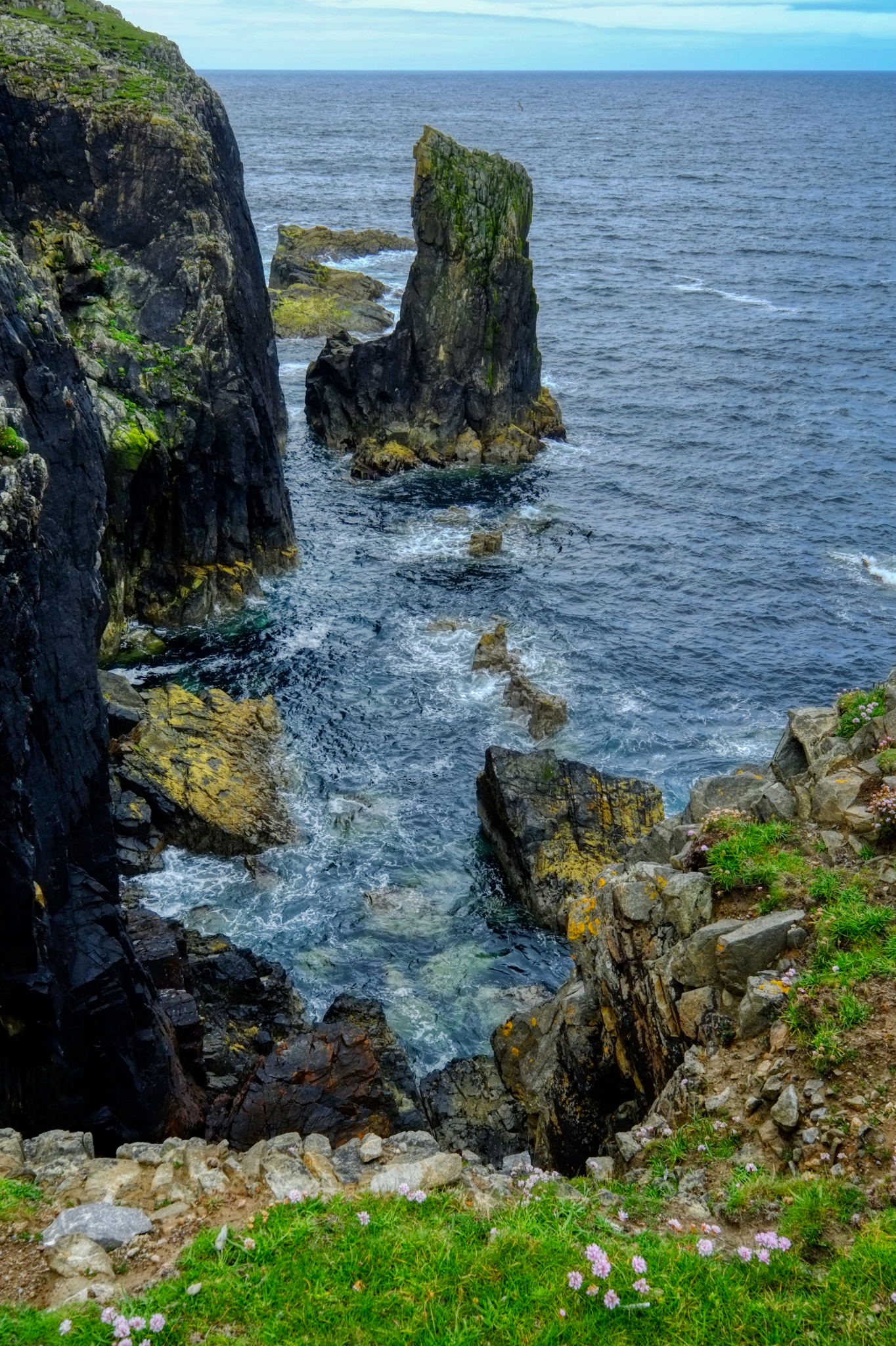 Fantastic cliff top views at the northernmost tip of the Hebrides.
Fantastic cliff top views at the northernmost tip of the Hebrides.
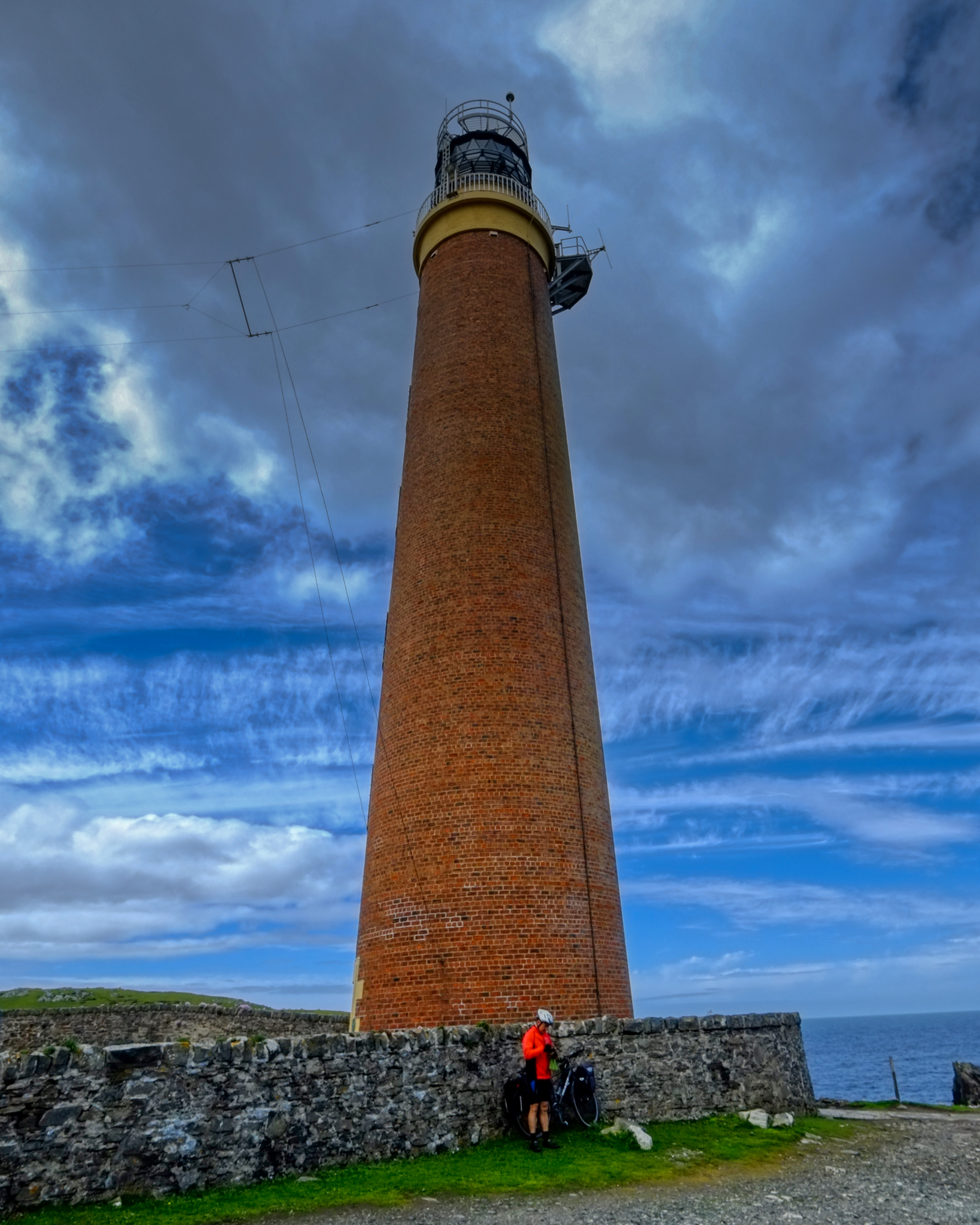 A lighthouse sits at the tip of the Isle of Lewis and Harris. This man rode his bicycle all the way from his home in London, England. He was going to turn around here and ride back down the east coast to get home.
A lighthouse sits at the tip of the Isle of Lewis and Harris. This man rode his bicycle all the way from his home in London, England. He was going to turn around here and ride back down the east coast to get home.
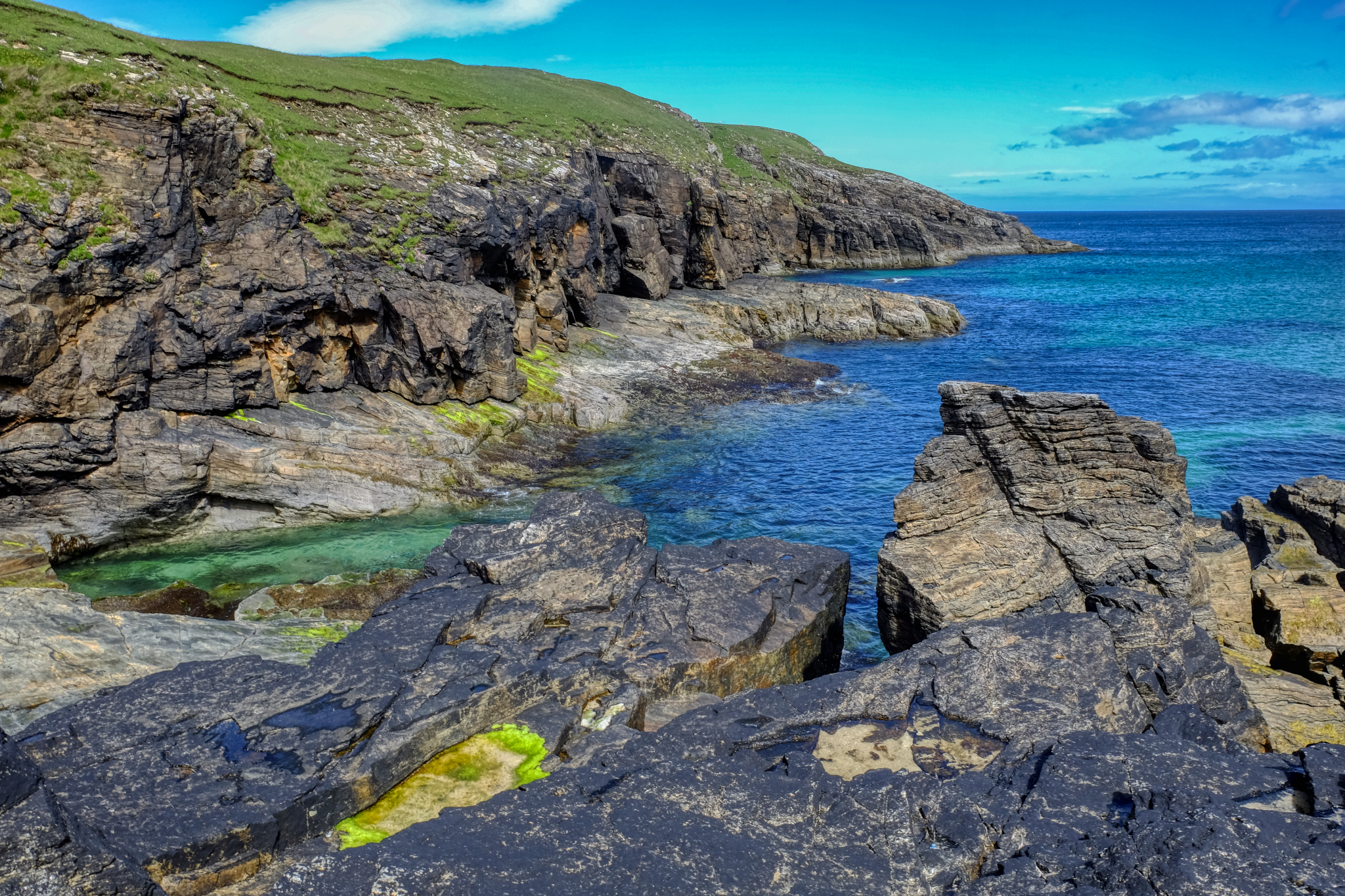 We drove back along the north coast as much as possible toward Stornaway and our ferry back to the mainland of Scotland.
We drove back along the north coast as much as possible toward Stornaway and our ferry back to the mainland of Scotland.
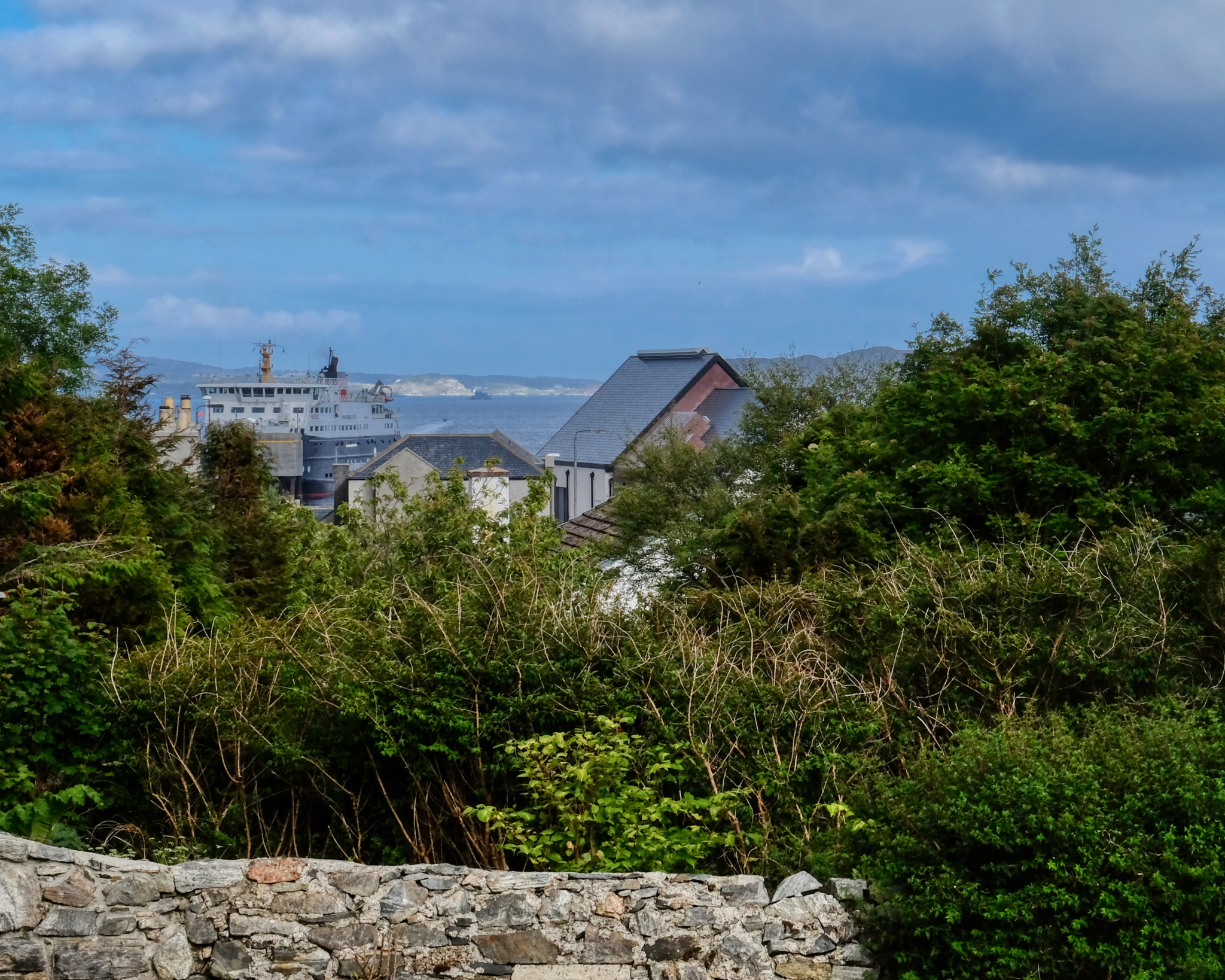 In Stornoway with our waiting ferry . . . but not until morning of the next day.
In Stornoway with our waiting ferry . . . but not until morning of the next day.
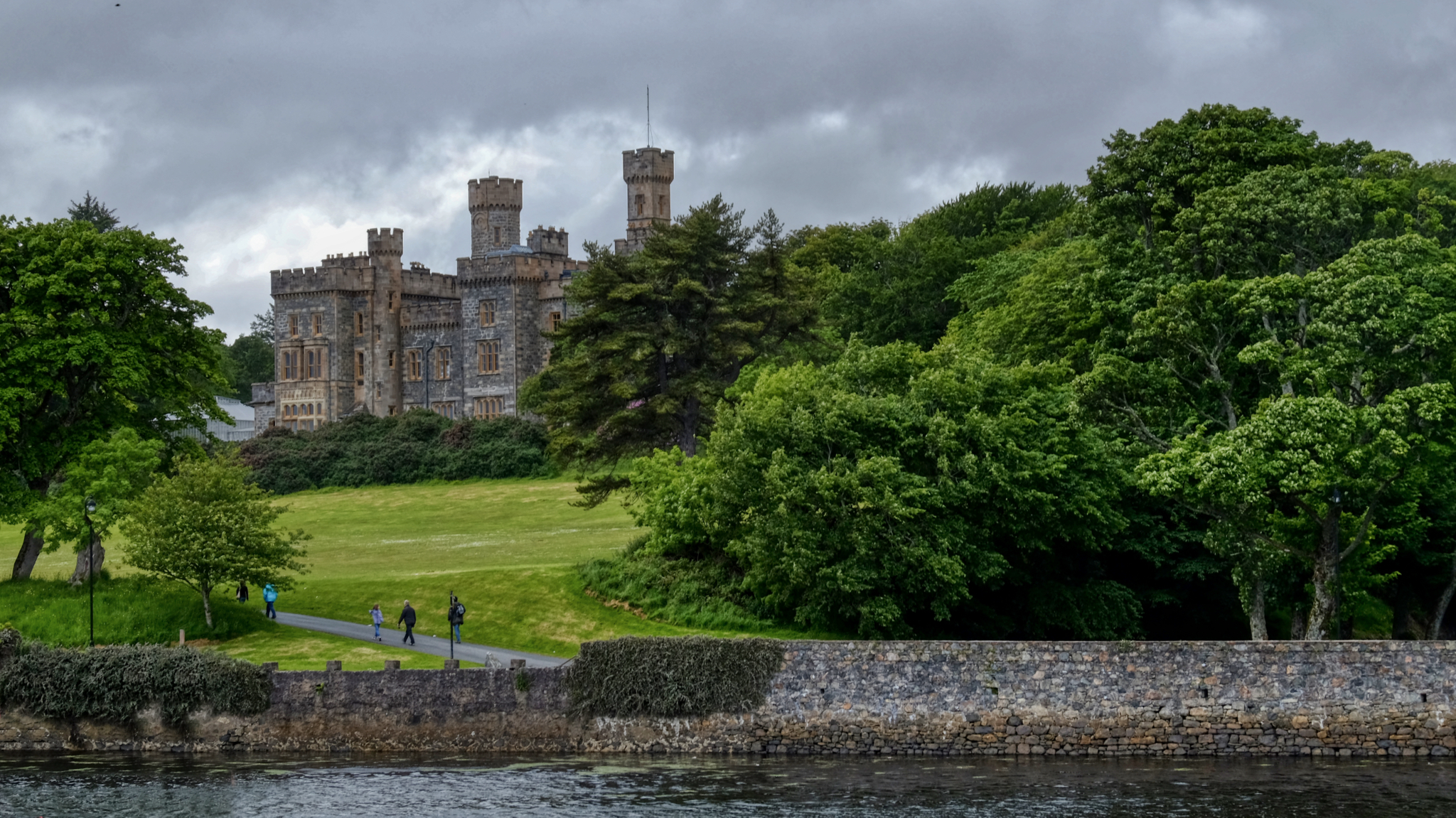 Lews Castle on Stornoway yacht harbour.
Lews Castle on Stornoway yacht harbour.
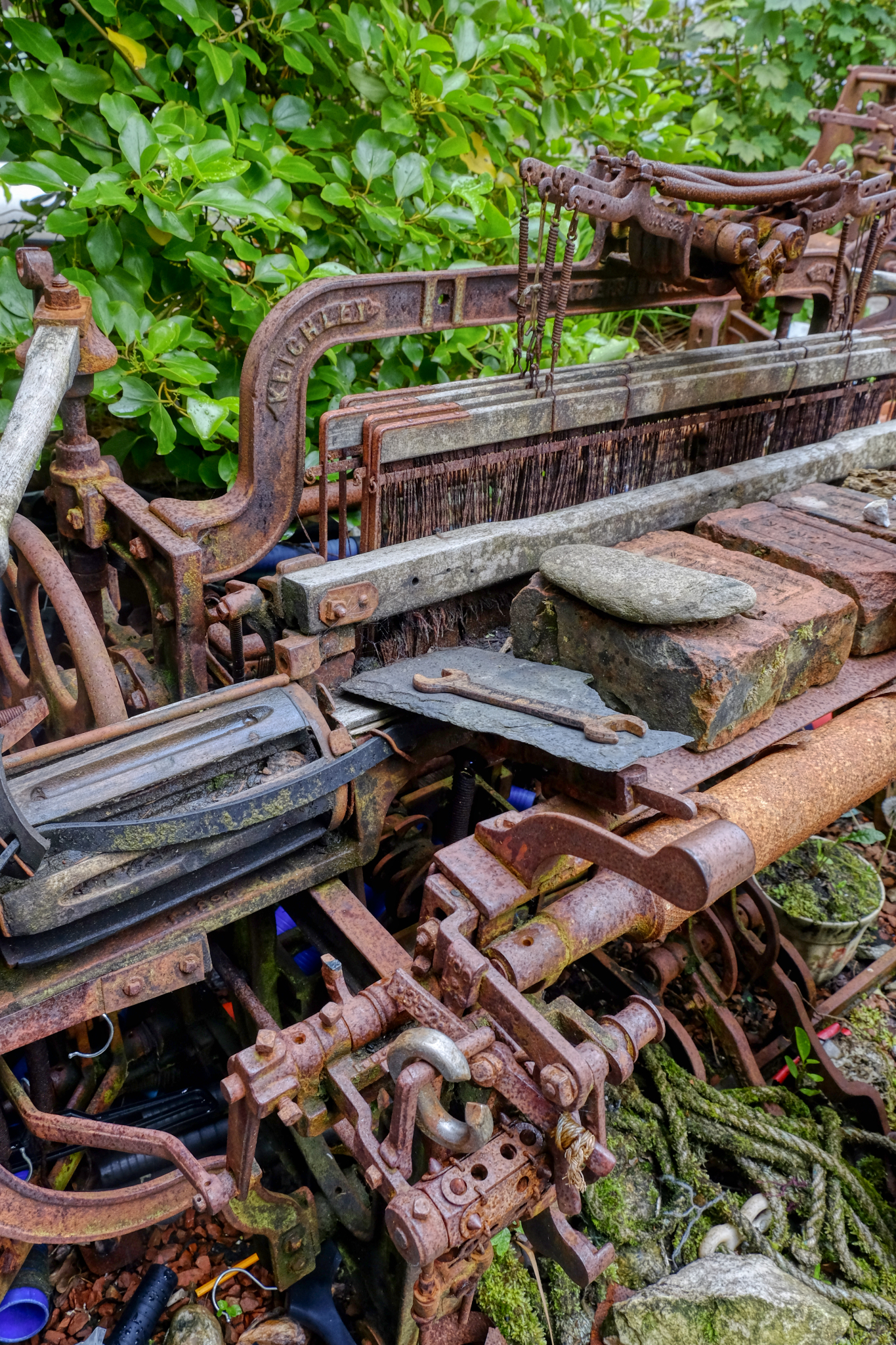 We explored the small town of Stornoway. I loved this old weathered rusty loom sitting outside a tweed museum.
We explored the small town of Stornoway. I loved this old weathered rusty loom sitting outside a tweed museum.
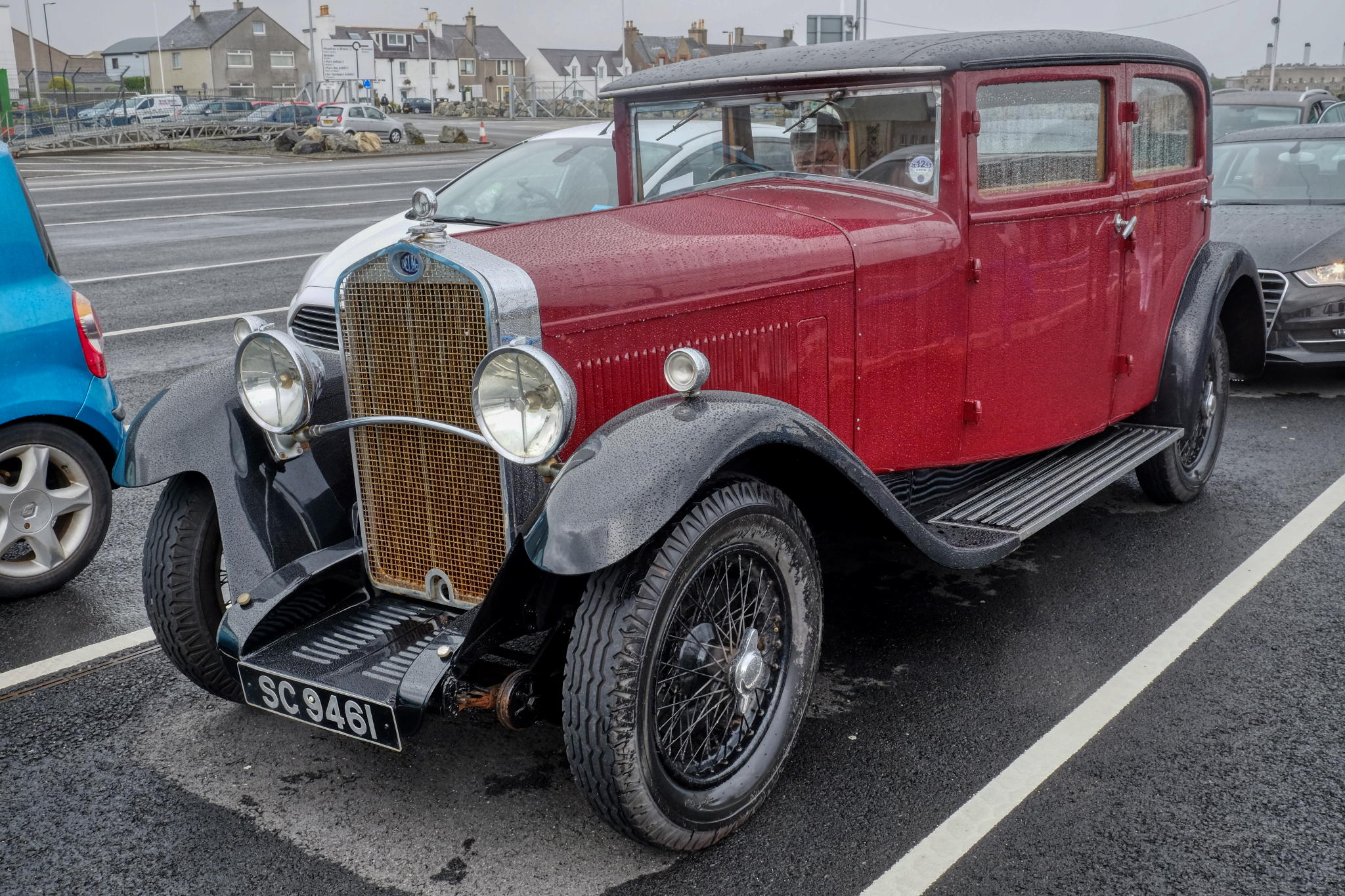 The next morning we joined the line-up at the ferry terminal for our passage home. Again, in the rain, there were many old classic cars waiting, including this Delage.
The next morning we joined the line-up at the ferry terminal for our passage home. Again, in the rain, there were many old classic cars waiting, including this Delage.
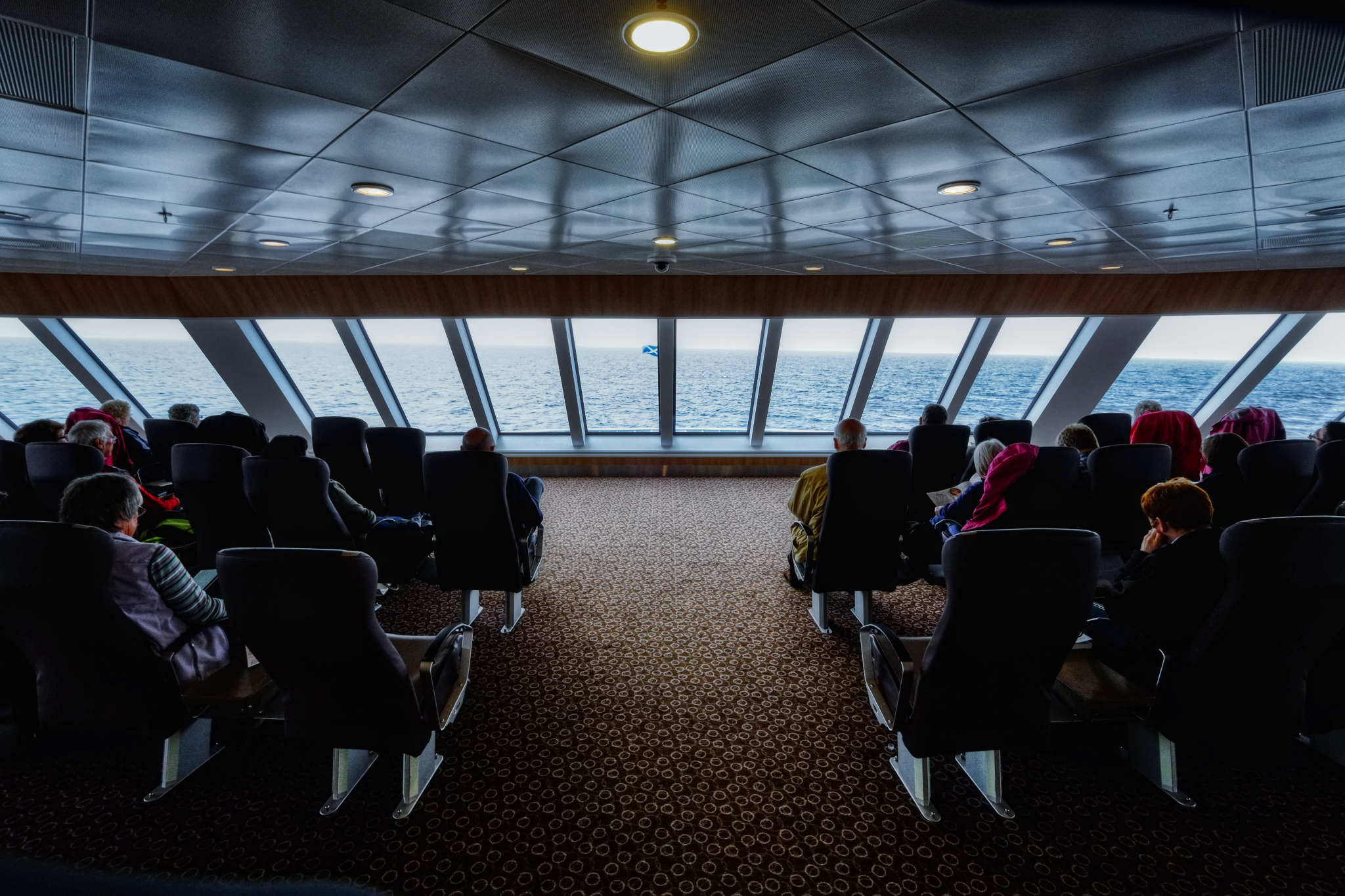 Heading home on the big ferry.
Heading home on the big ferry.
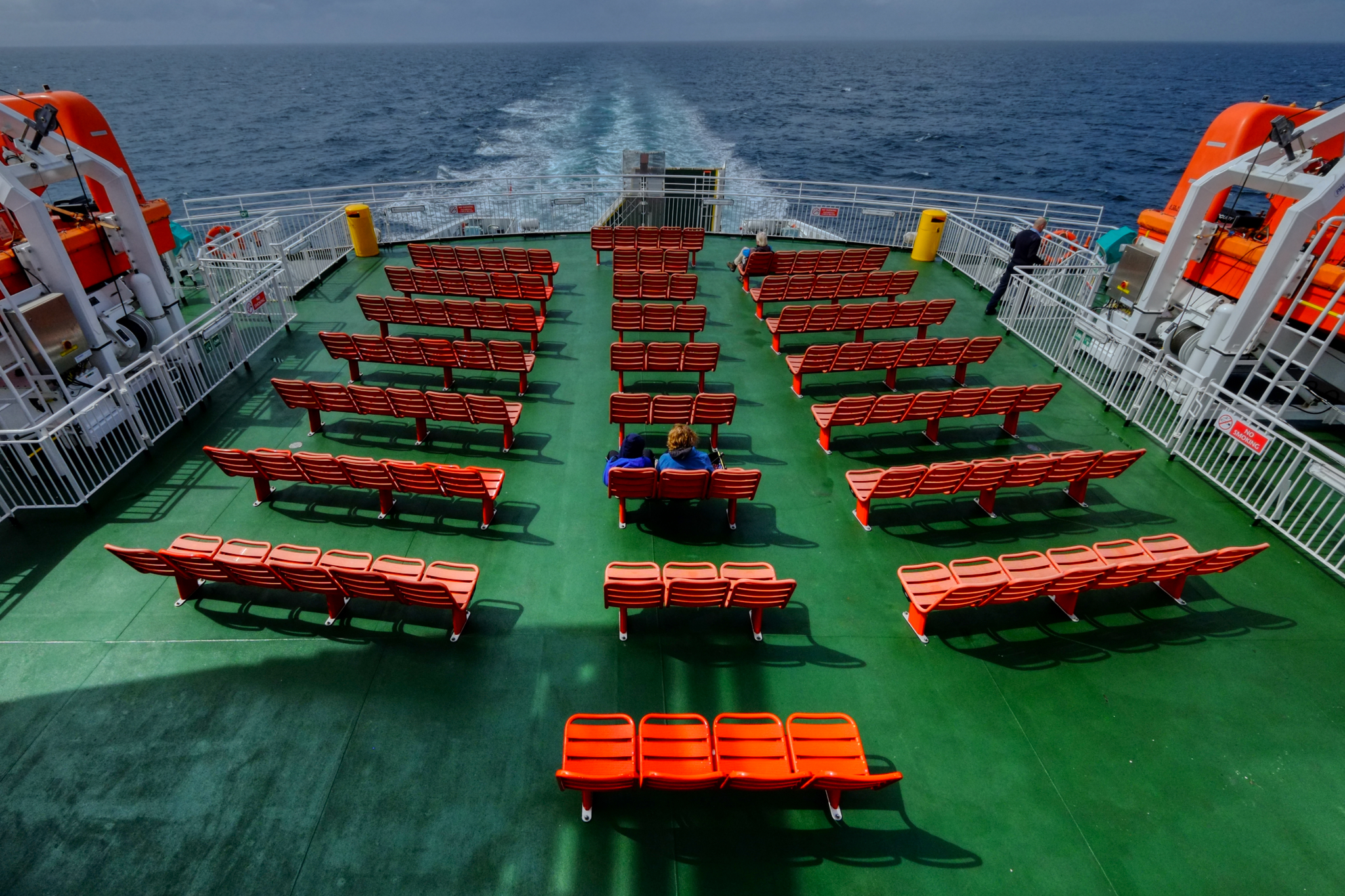 I spent most of my time on the return ferry trip sitting out n the wind on the aft deck. Glorious.
I spent most of my time on the return ferry trip sitting out n the wind on the aft deck. Glorious.
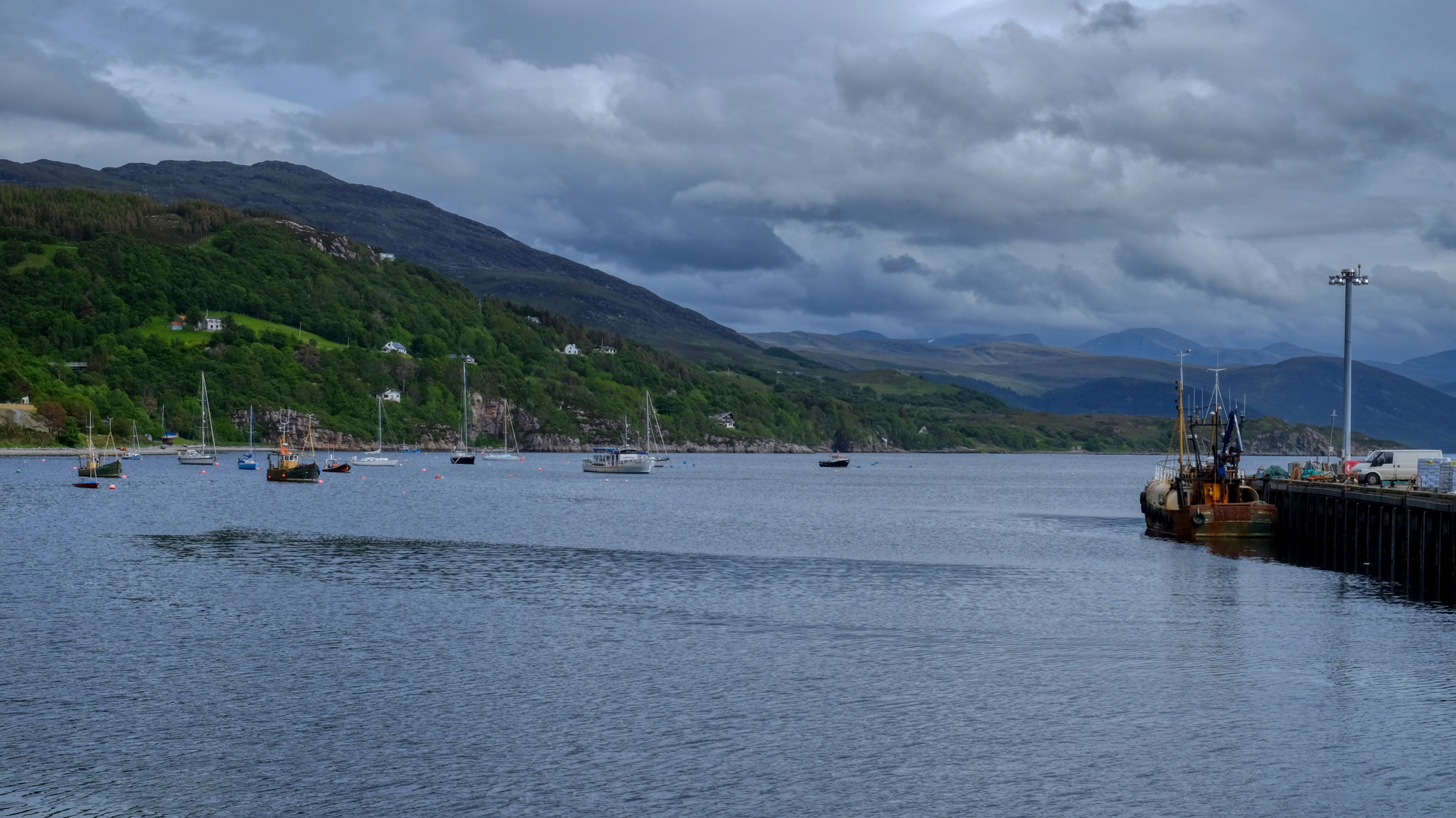 Arriving in Ullapool Harbour after a 3 hour cruise.
Arriving in Ullapool Harbour after a 3 hour cruise.
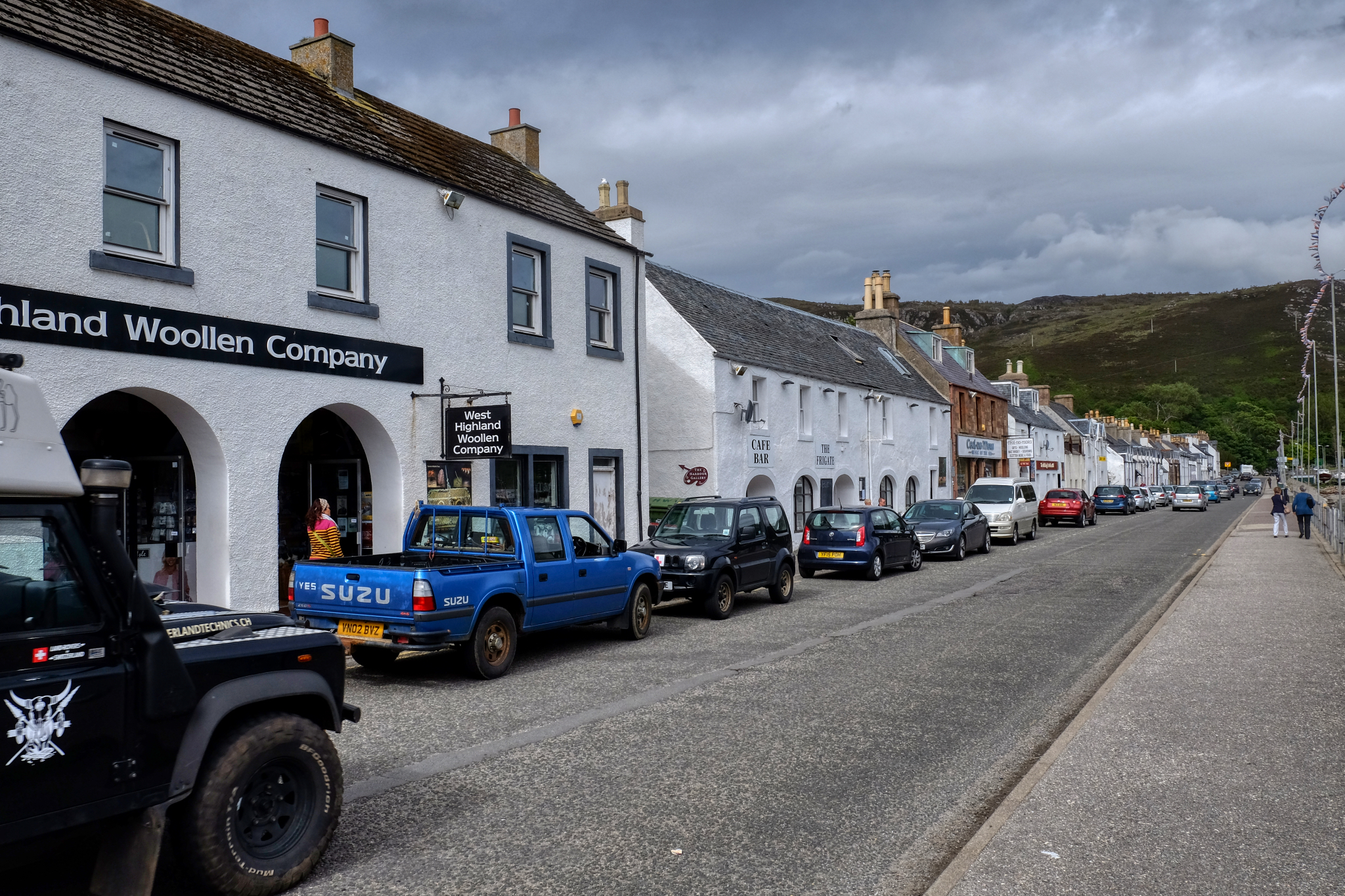 Harbour Street Ullapool.
Harbour Street Ullapool.
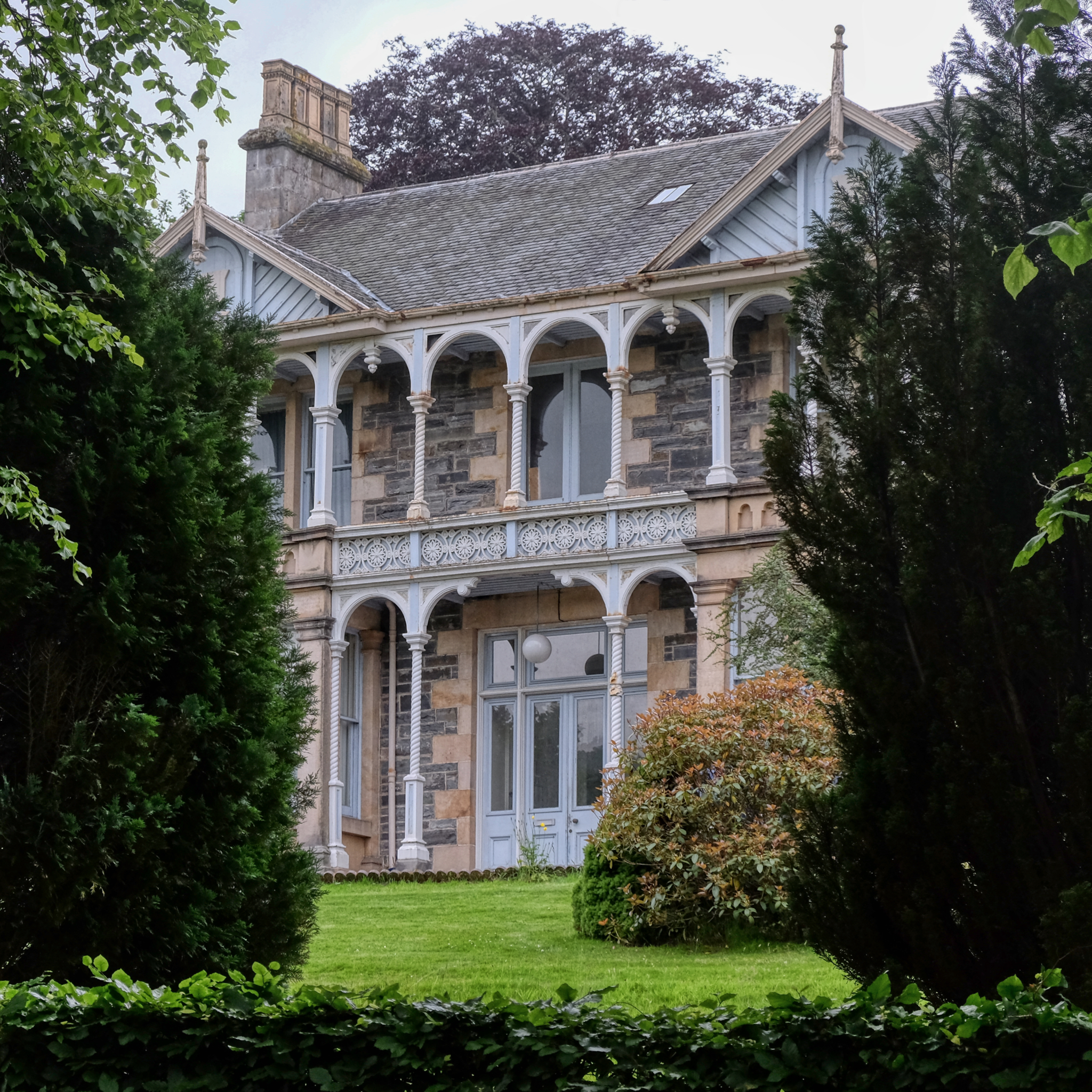 We stopped halfway home between Ullapool and Aberdeen at a rural hotel that turned out to be on a tour bus company hotel with a HUGE dining room full of French and Hungarian bus tourists. It was loud and fun!
We stopped halfway home between Ullapool and Aberdeen at a rural hotel that turned out to be on a tour bus company hotel with a HUGE dining room full of French and Hungarian bus tourists. It was loud and fun!
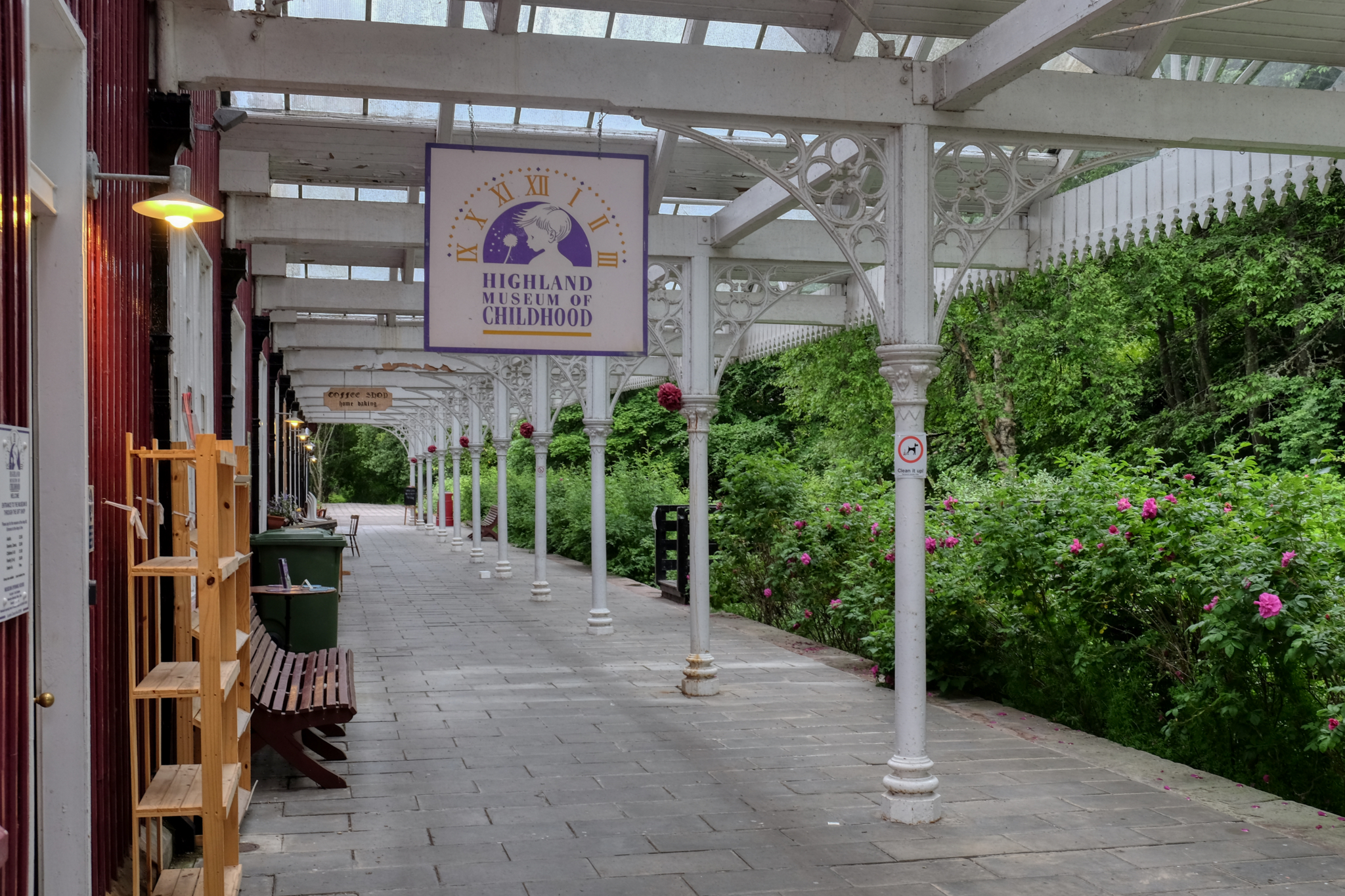 We walked around the small village near the tourist hotel and discovered the Highland Museum of Childhood . . . an interesting name. It was closed . . . like my childhood.
We walked around the small village near the tourist hotel and discovered the Highland Museum of Childhood . . . an interesting name. It was closed . . . like my childhood.
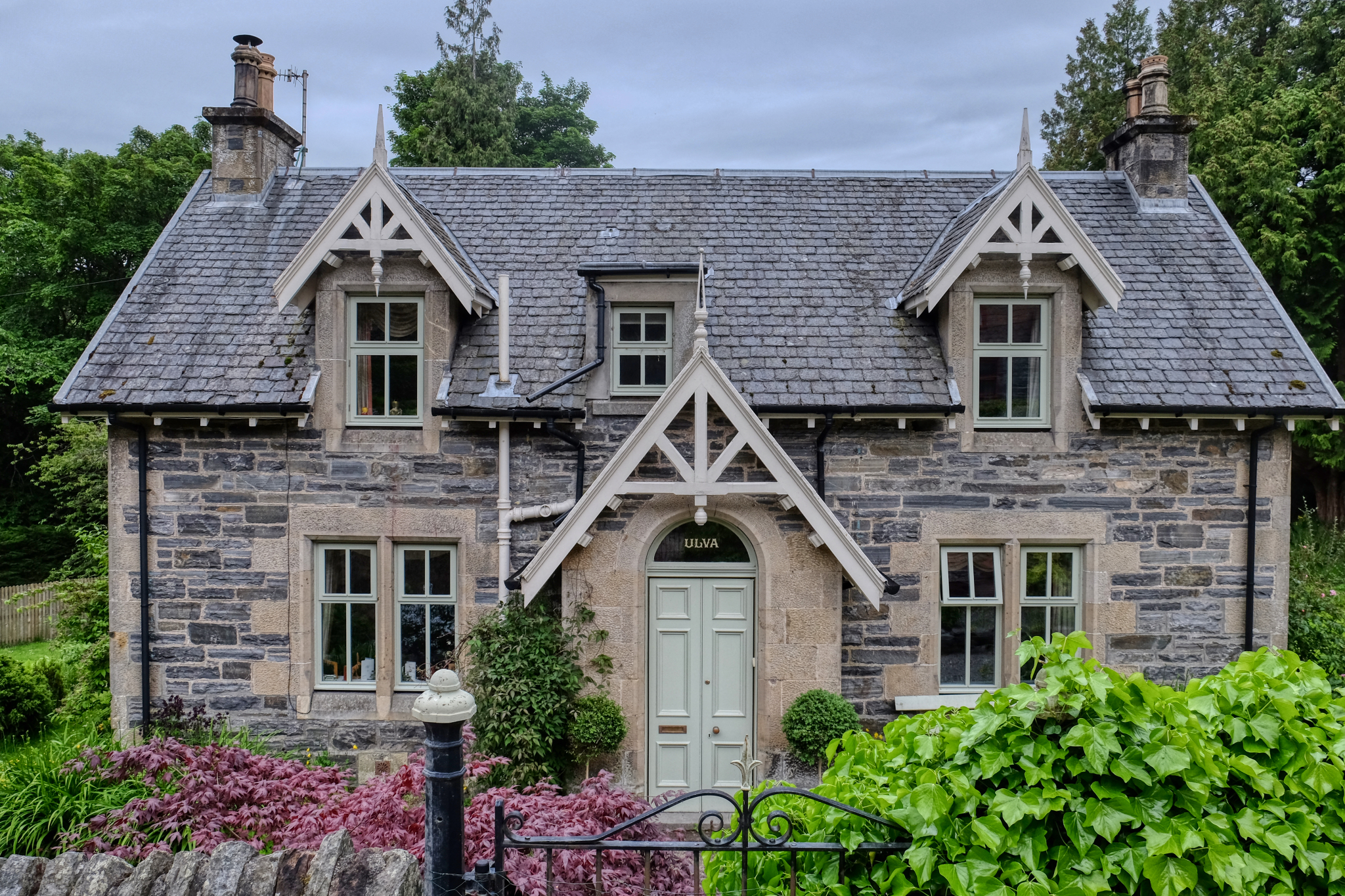 All the houses in the village were named. Ulva . . . named after an island in the Inner Hebrides of Scotland, off the west coast of the Isle of Mull.
All the houses in the village were named. Ulva . . . named after an island in the Inner Hebrides of Scotland, off the west coast of the Isle of Mull.
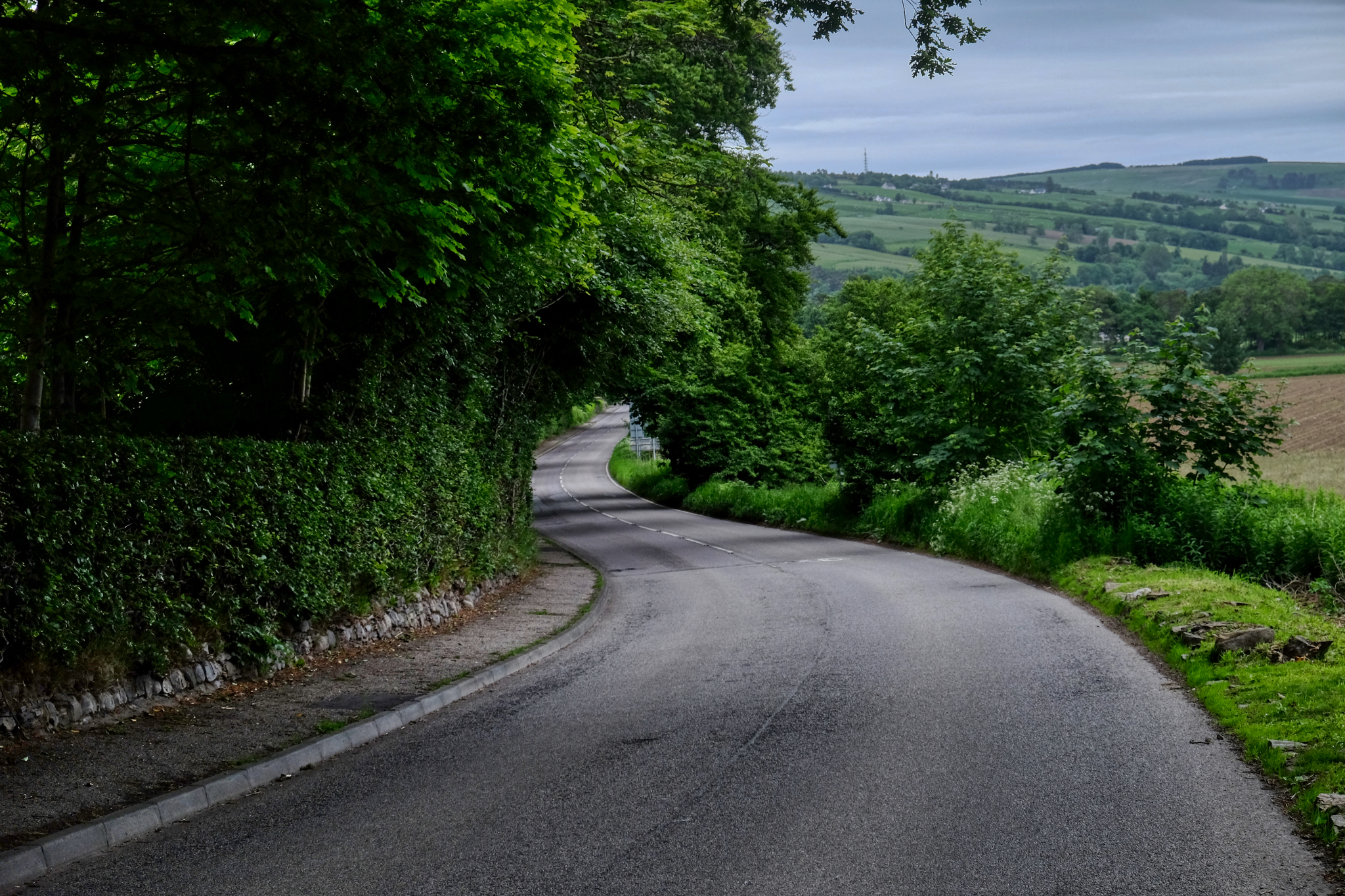 The next morning we were off down the Scottish country roads toward our home in Aberdeen.
The next morning we were off down the Scottish country roads toward our home in Aberdeen.
Poland: Kraków is a beautiful vacation destination!
 Friday, April 17, 2020 at 9:03AM
Friday, April 17, 2020 at 9:03AM We visited Poland (Kraków and Gdańsk) in the summer of 2014. The entry for Gdańsk can be found HERE.
KRAKÓW:
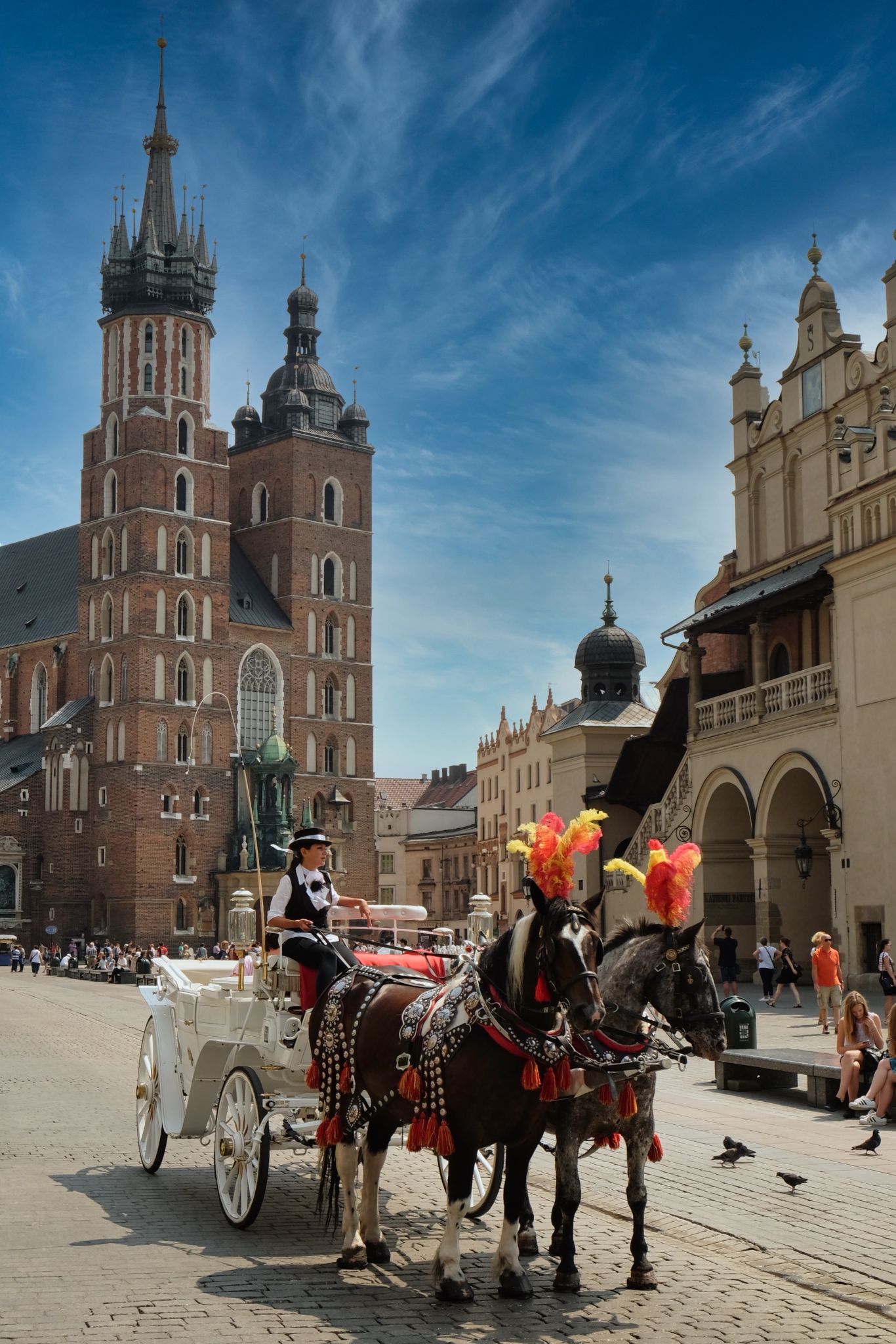 Central city Kraków in early summer is such a wonderful place to visit. The marvelous 14th century St. Mary's Basilica on the square.
Central city Kraków in early summer is such a wonderful place to visit. The marvelous 14th century St. Mary's Basilica on the square.
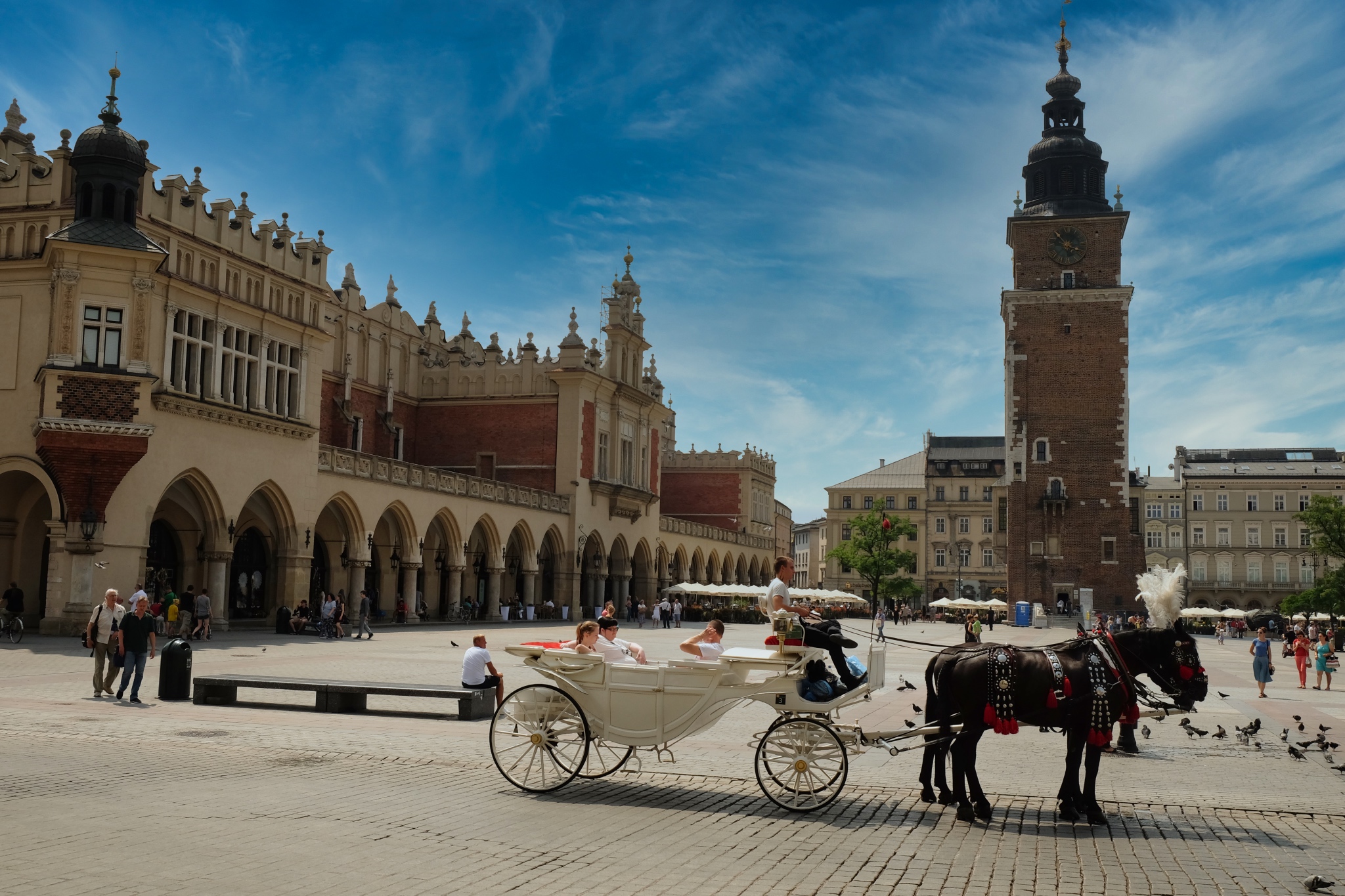 The Main Square in Kraków dates from the 13th century and is the largest town square in all of Europe (@ 9.2 acres, or 3.79 ha).
The Main Square in Kraków dates from the 13th century and is the largest town square in all of Europe (@ 9.2 acres, or 3.79 ha).
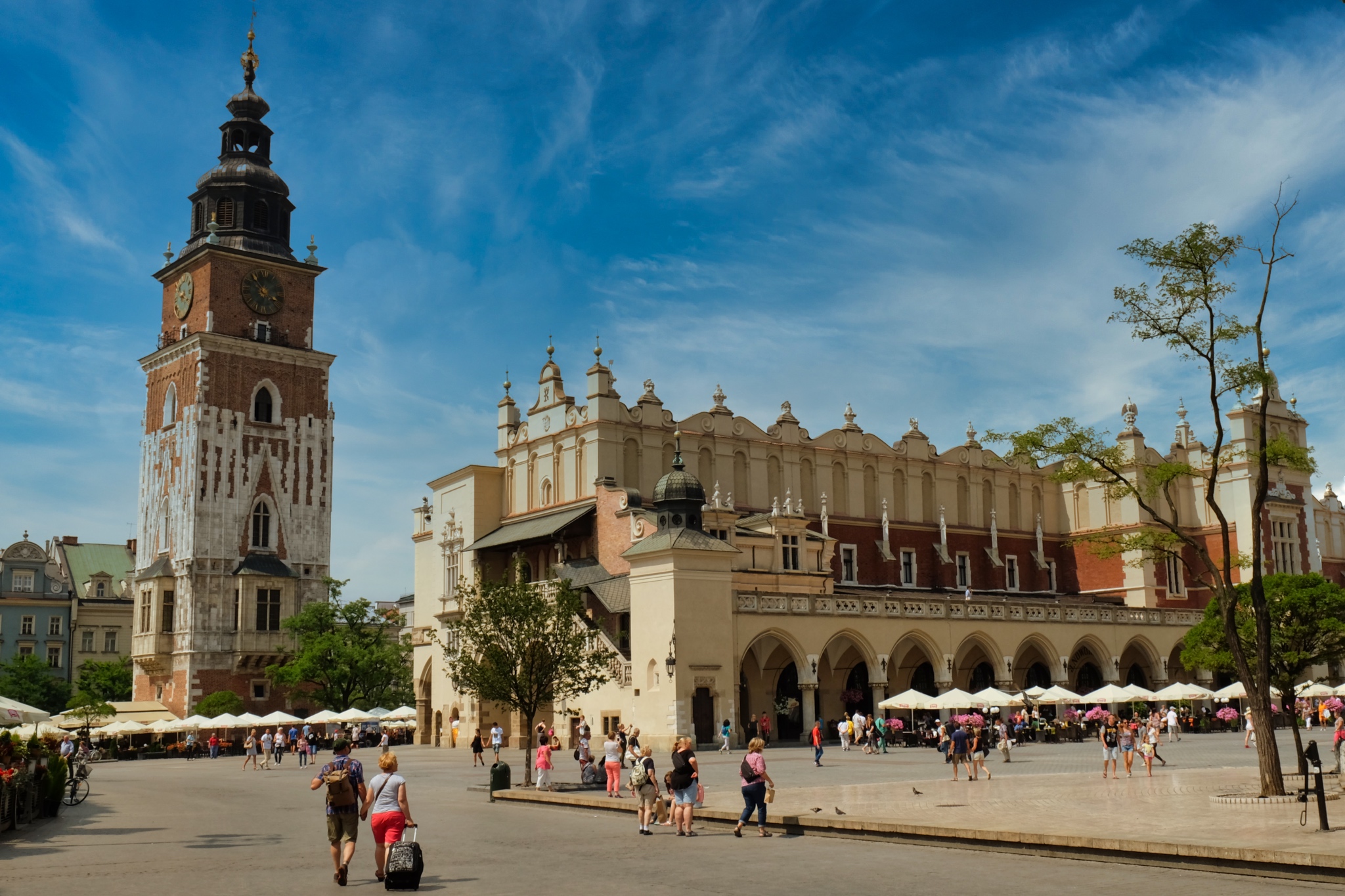 Kraków Main Square with the Cloth Hall (right, now a tourist galleria) built in the 15th century, and the City Hall Tower (left) built in the 14th Century. The original town hall, which was attached to the tower, was demolished in the mid-1800s.
Kraków Main Square with the Cloth Hall (right, now a tourist galleria) built in the 15th century, and the City Hall Tower (left) built in the 14th Century. The original town hall, which was attached to the tower, was demolished in the mid-1800s.
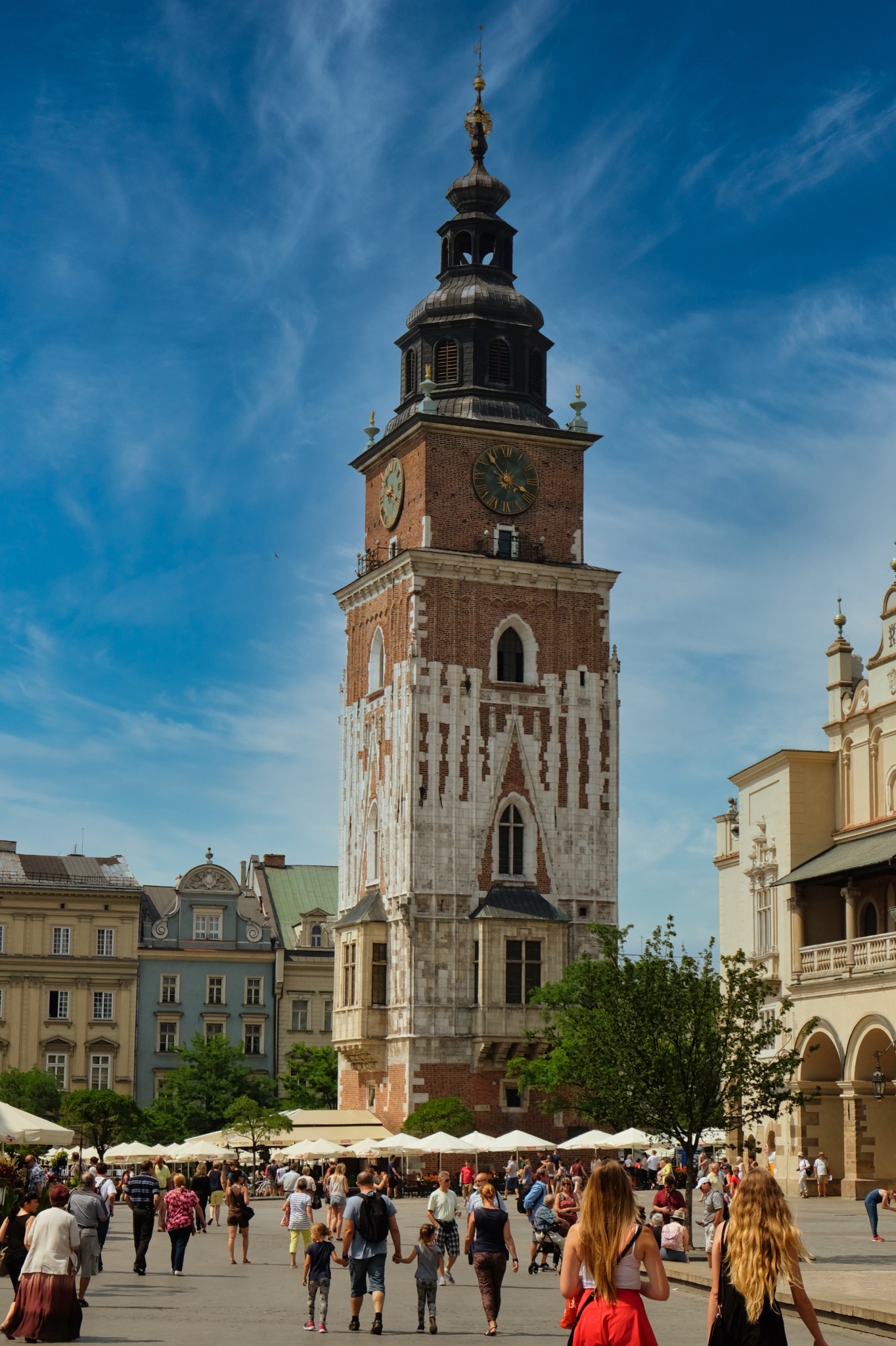 A wonderful medieval tower.
A wonderful medieval tower.
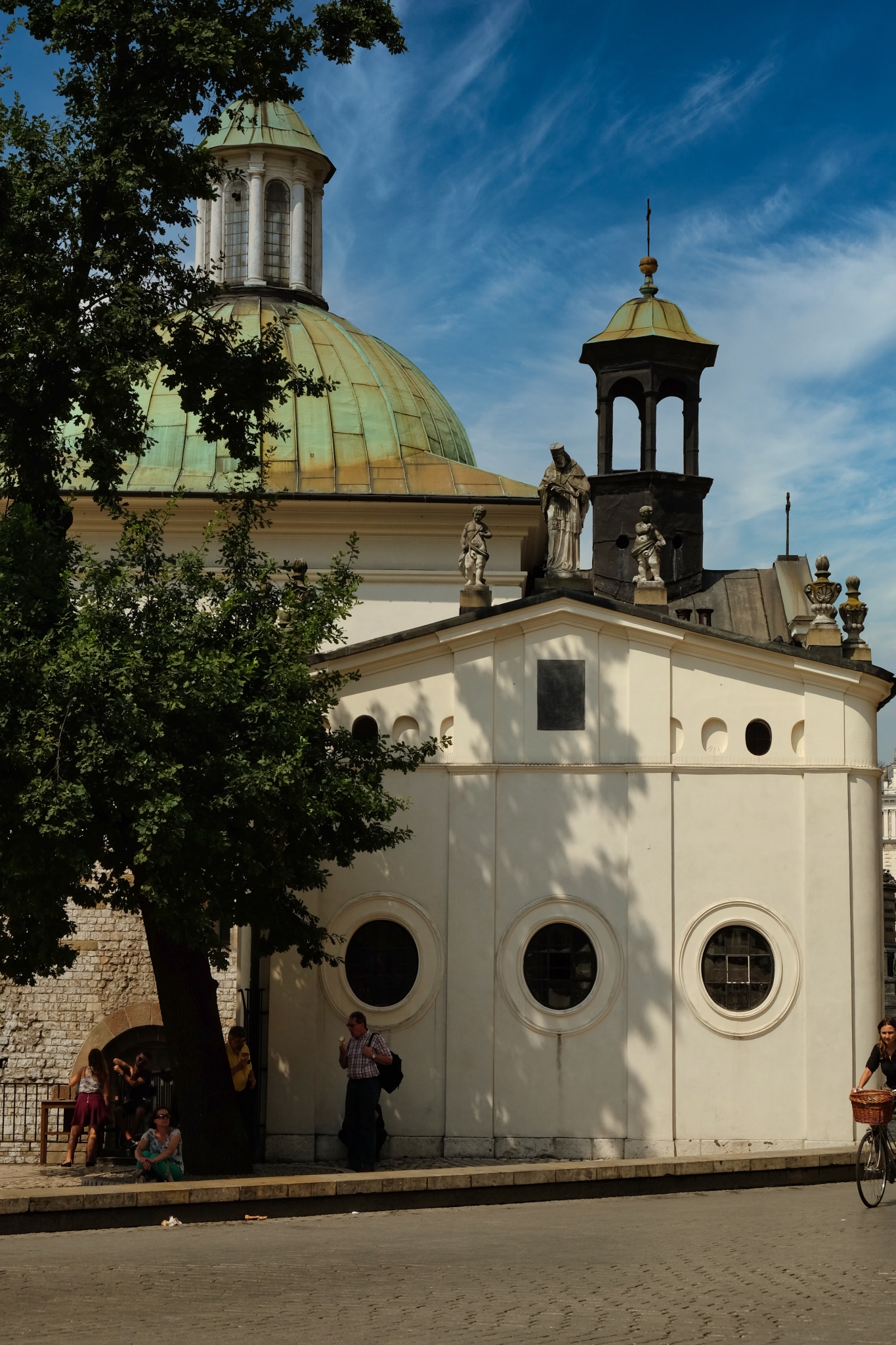 Also on the Kraków Main Market Square is the 11th century Church of Saint Adalbert.
Also on the Kraków Main Market Square is the 11th century Church of Saint Adalbert.
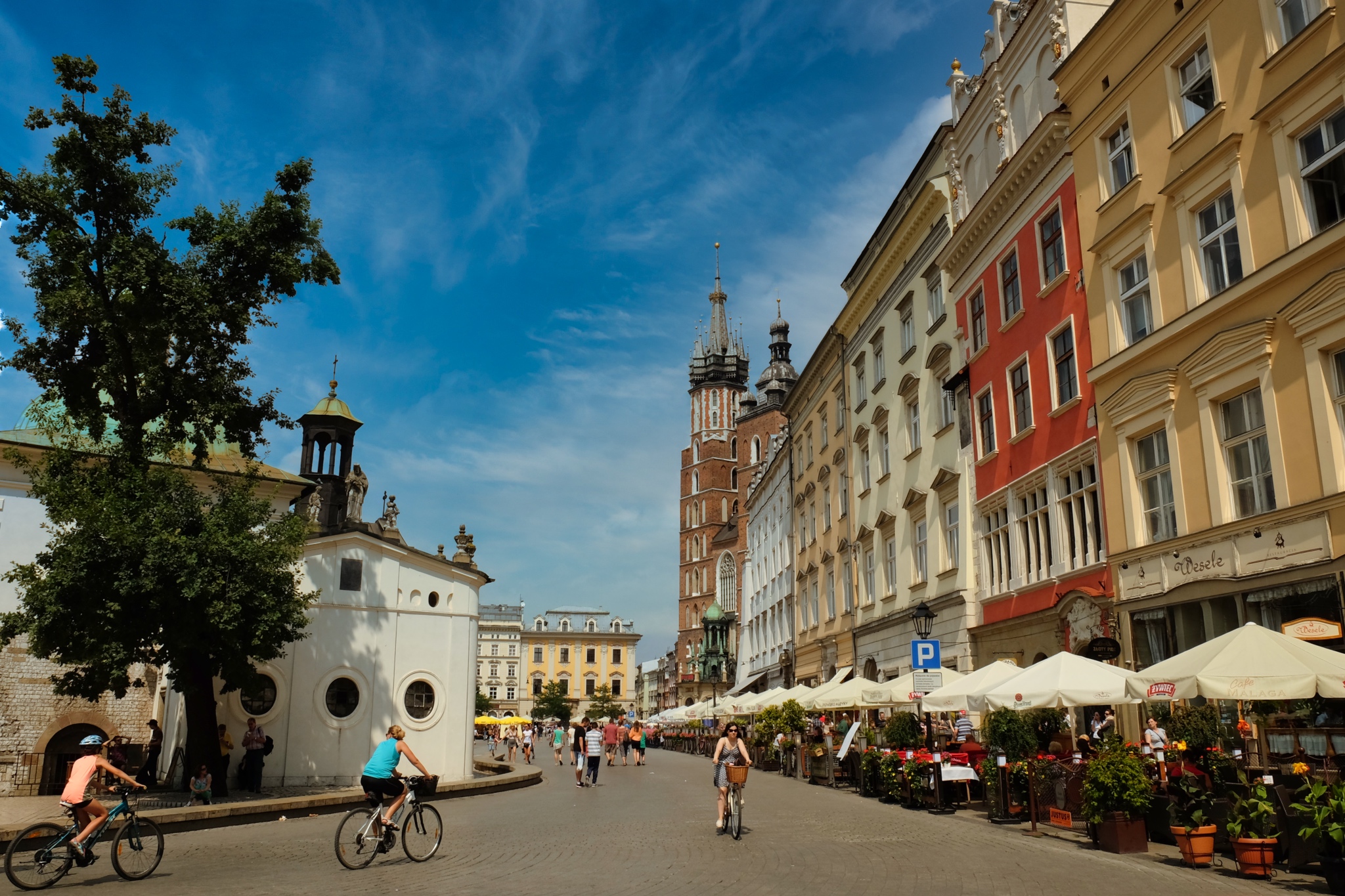 The Main Square is lined by small shops and boutiques . . . and a solid line of sidewalk cafés all around.
The Main Square is lined by small shops and boutiques . . . and a solid line of sidewalk cafés all around.
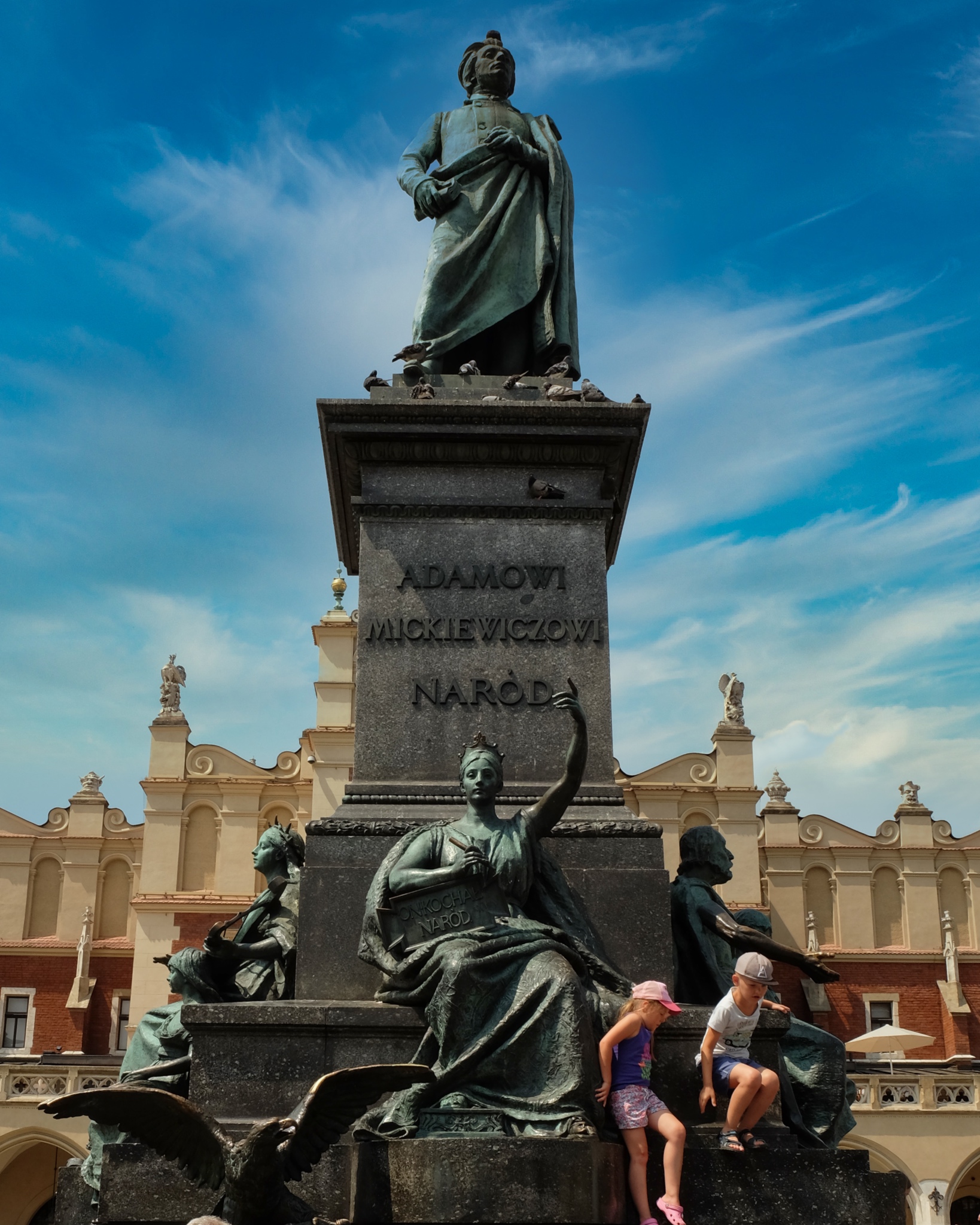 The Main Square attracts lots of tourists and, presumably, local children as well. Her they climb on the memorial statue to Adam Mickiewicz, a 19th century Polish poet.
The Main Square attracts lots of tourists and, presumably, local children as well. Her they climb on the memorial statue to Adam Mickiewicz, a 19th century Polish poet.
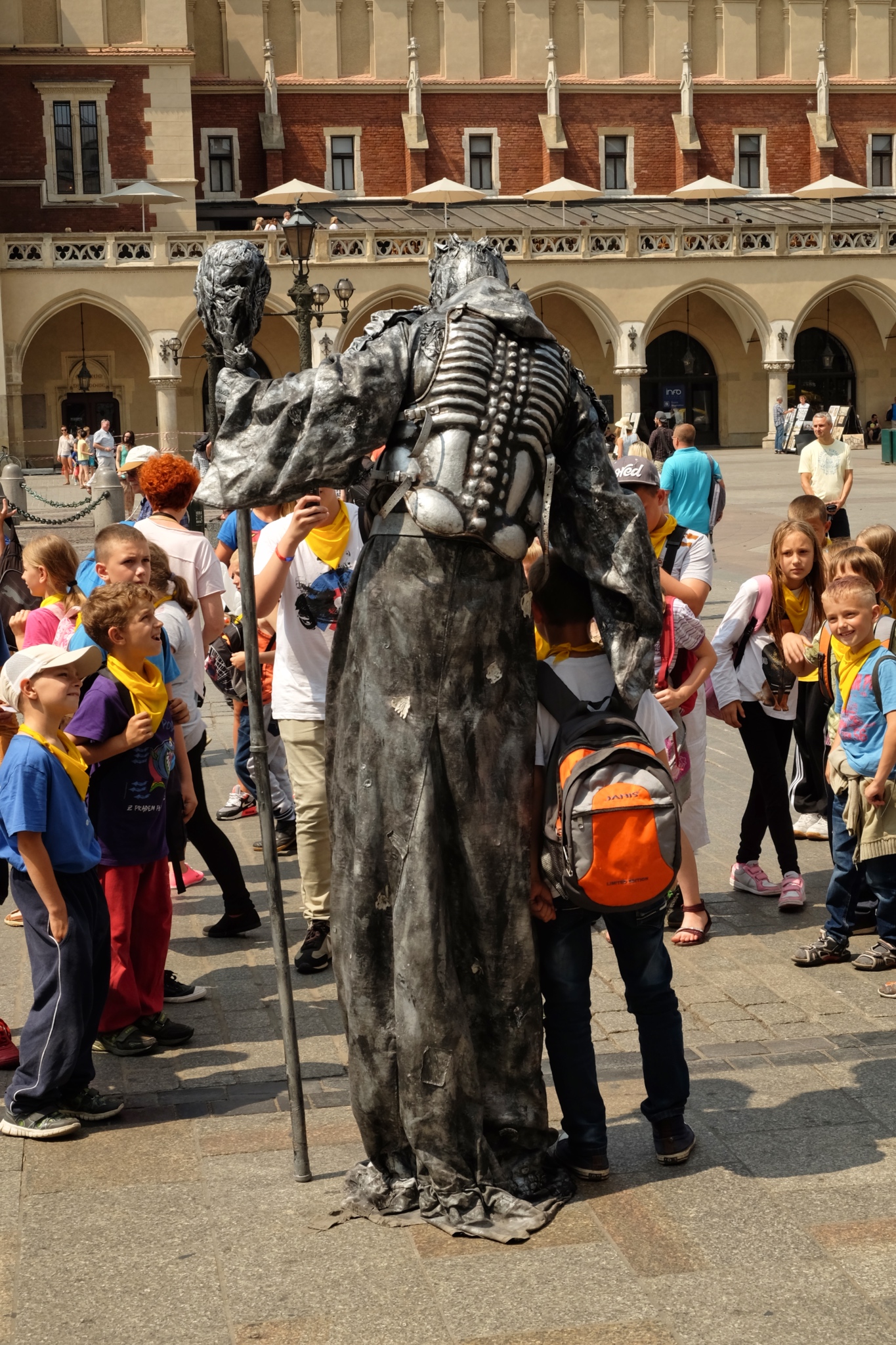 Making money on the square . . . Monster Photo Ops $5.oo.
Making money on the square . . . Monster Photo Ops $5.oo.
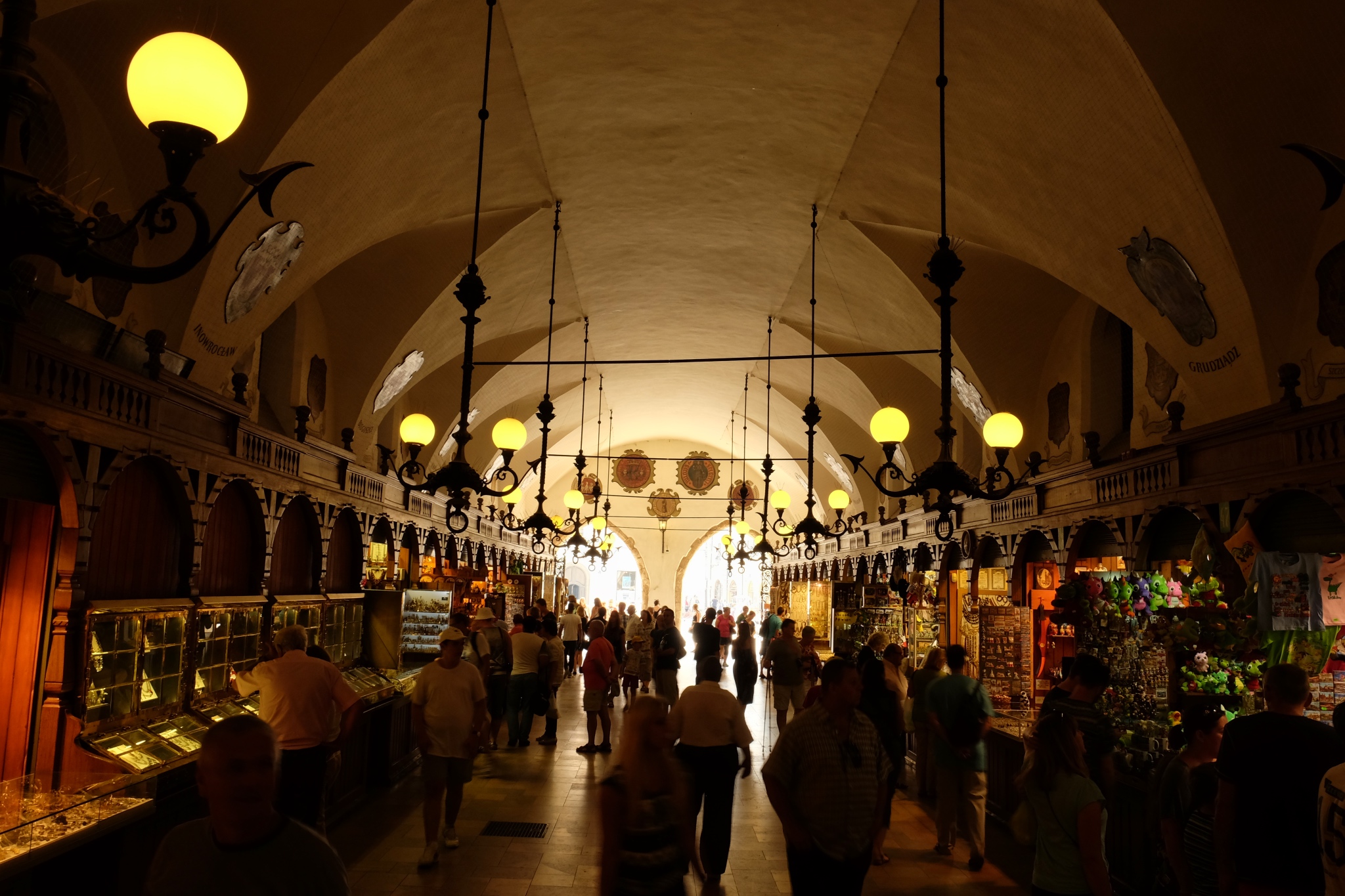 Inside the Cloth Hall, now a curios galleria.
Inside the Cloth Hall, now a curios galleria.
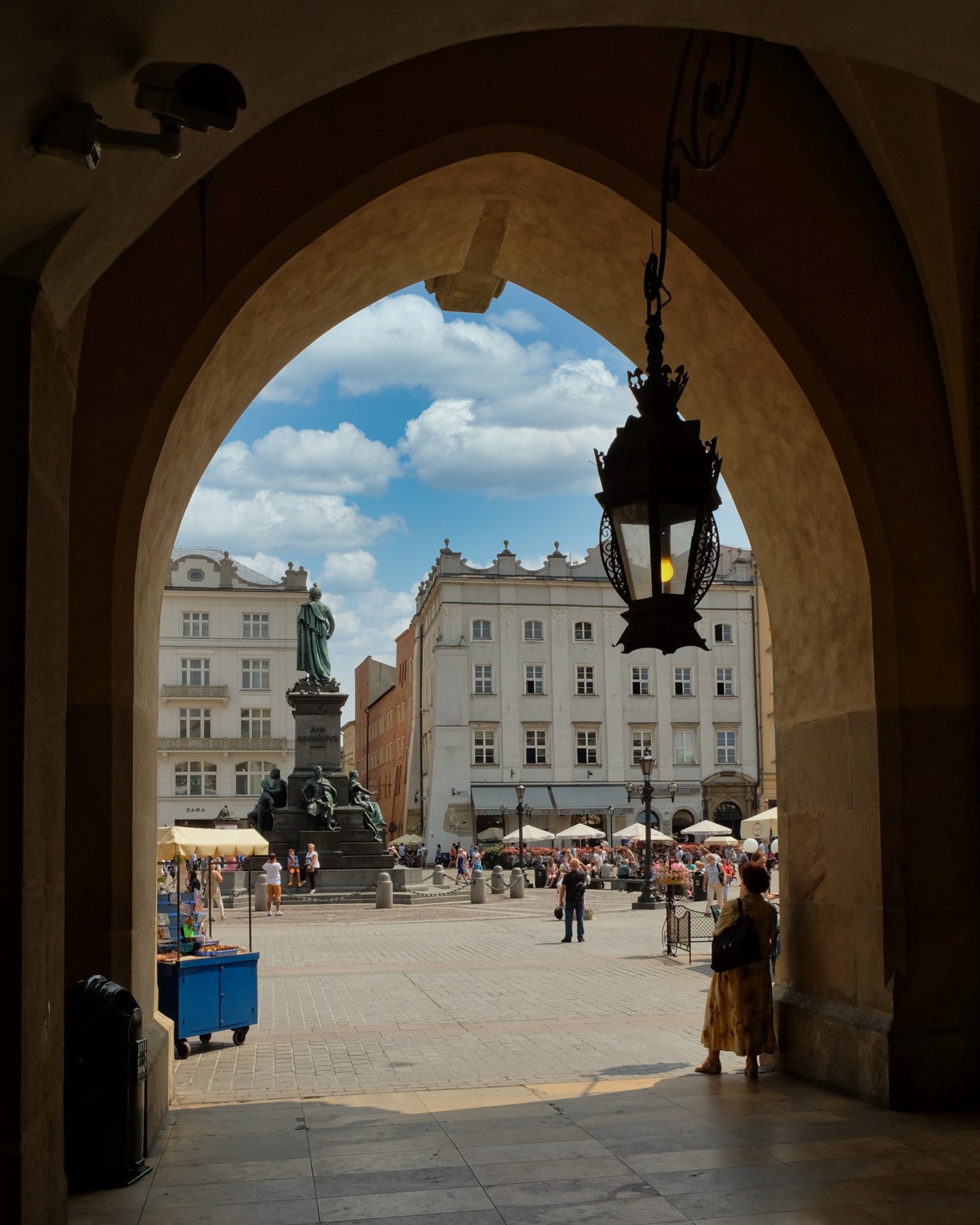 Looking out onto the square from the Cloth Hall.
Looking out onto the square from the Cloth Hall.
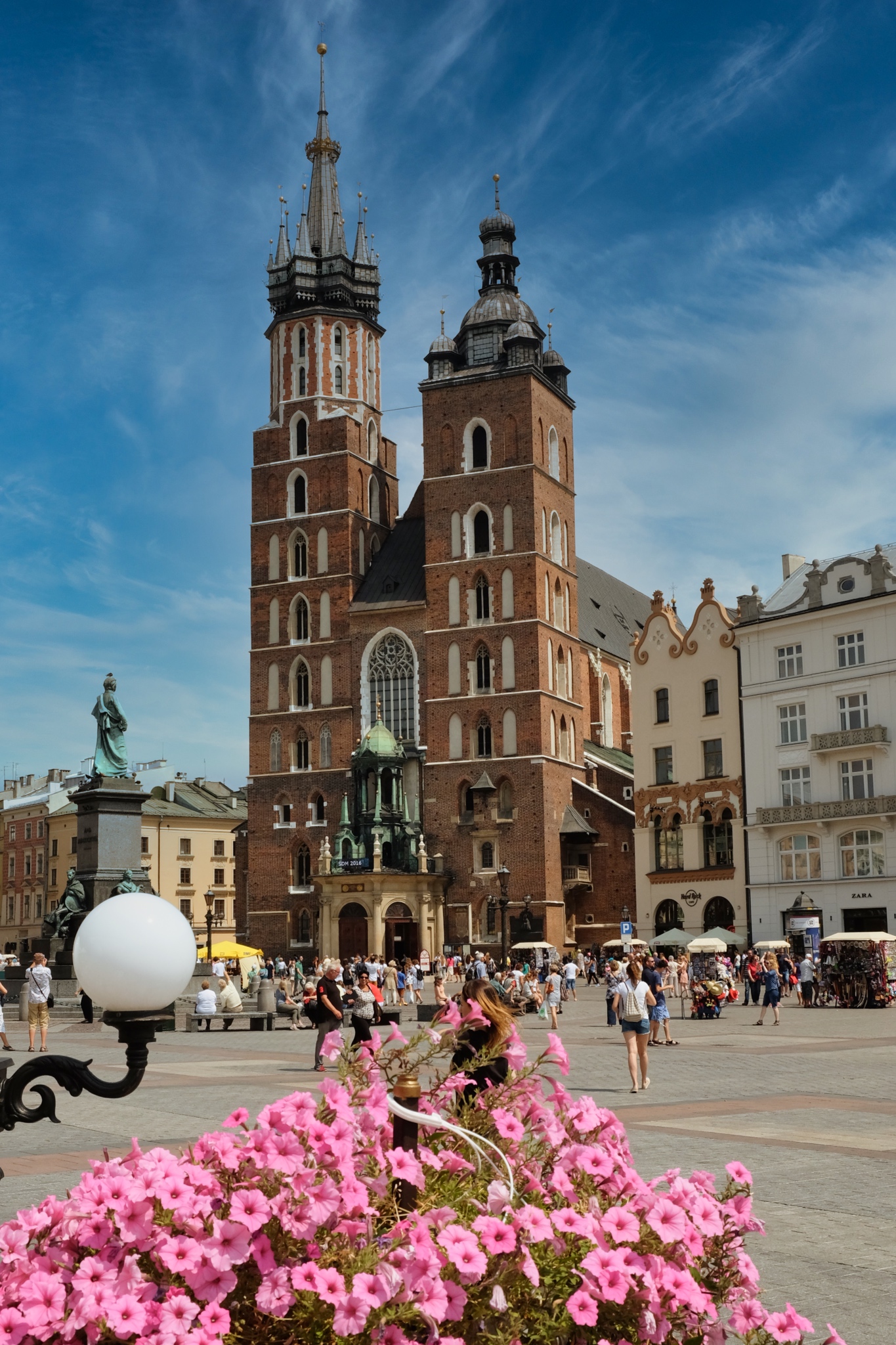 Saint Mary's Basilica looked inviting. There are not too many 13th century basilicas left in their original state in Europe. I wanted to see the interior of this Polish Gothic structure.
Saint Mary's Basilica looked inviting. There are not too many 13th century basilicas left in their original state in Europe. I wanted to see the interior of this Polish Gothic structure.
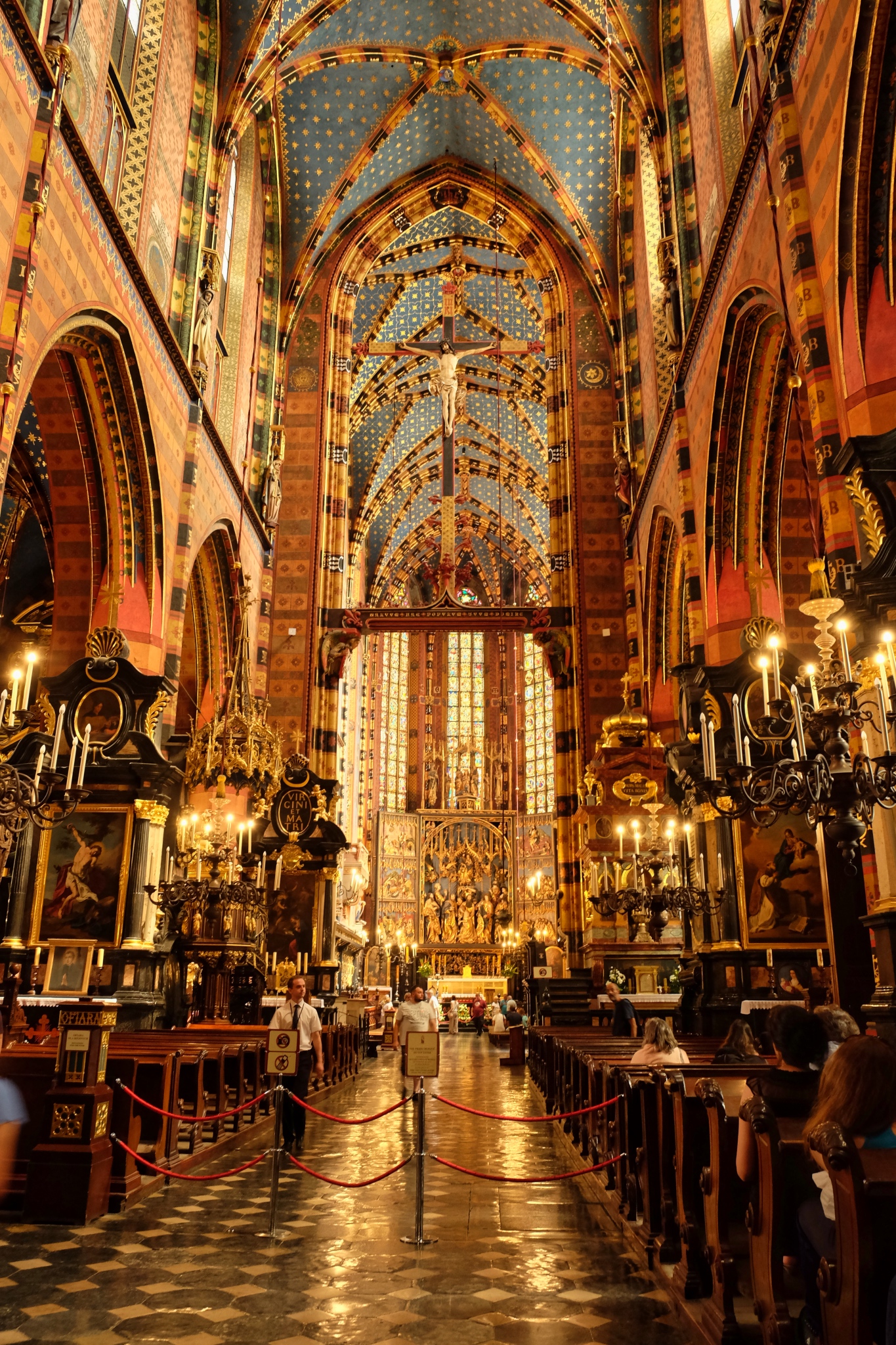 I was not disappointed. Magnificent . . . which is the idea, one assumes.
I was not disappointed. Magnificent . . . which is the idea, one assumes.
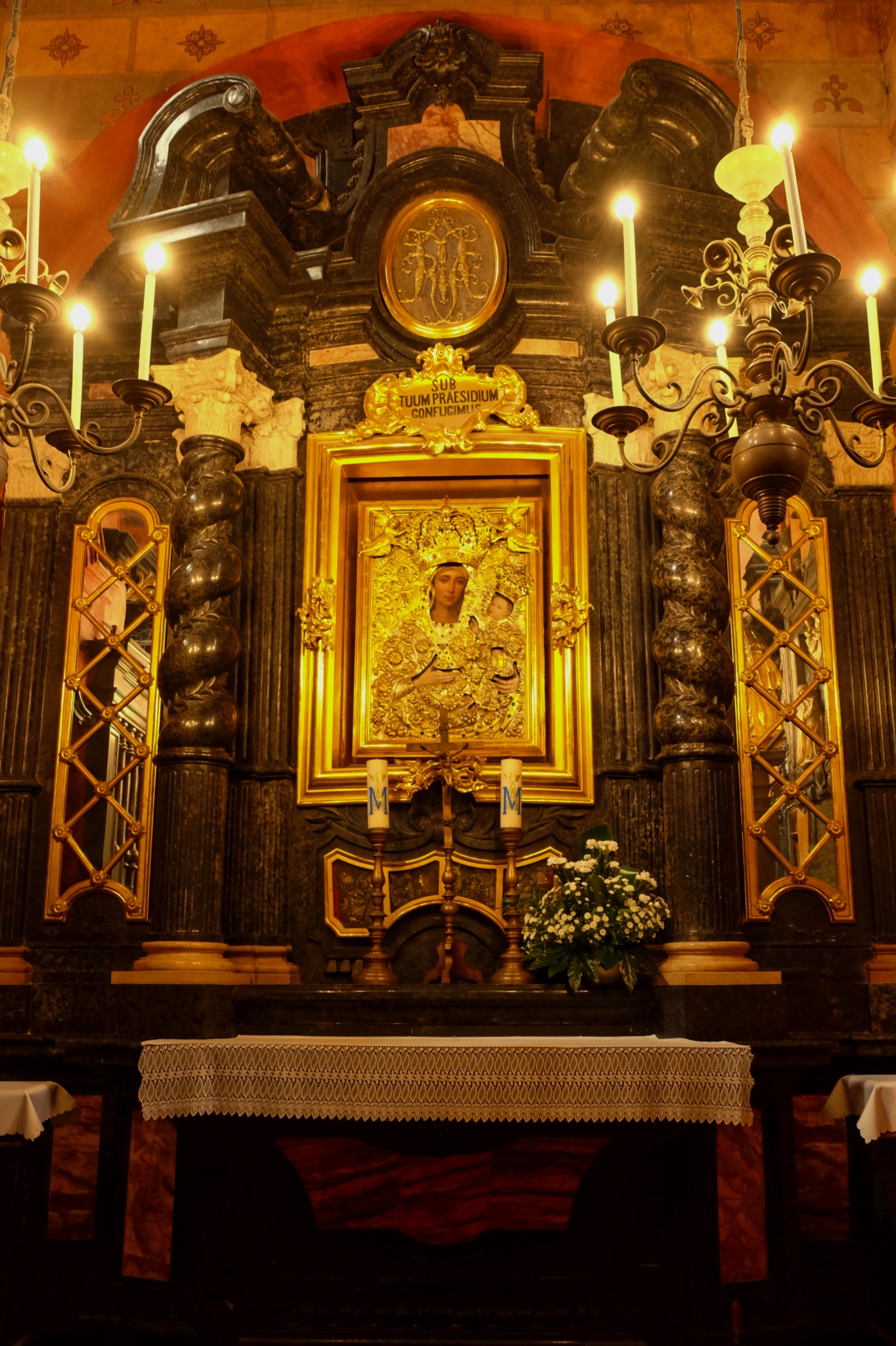 Beautiful Christian iconography everywhere.
Beautiful Christian iconography everywhere.
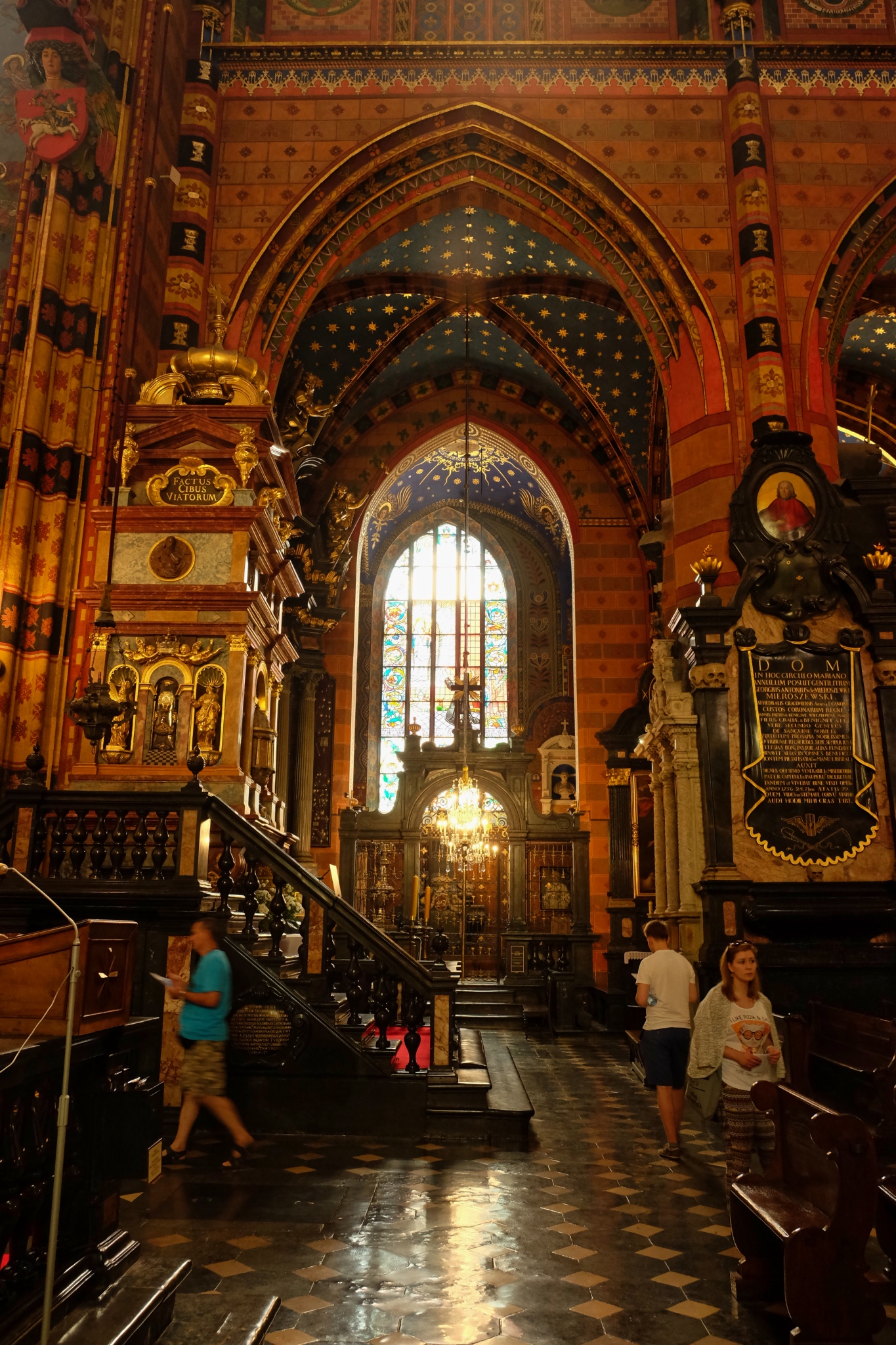 Beautiful and ornate vestibules lined the main hall.
Beautiful and ornate vestibules lined the main hall.
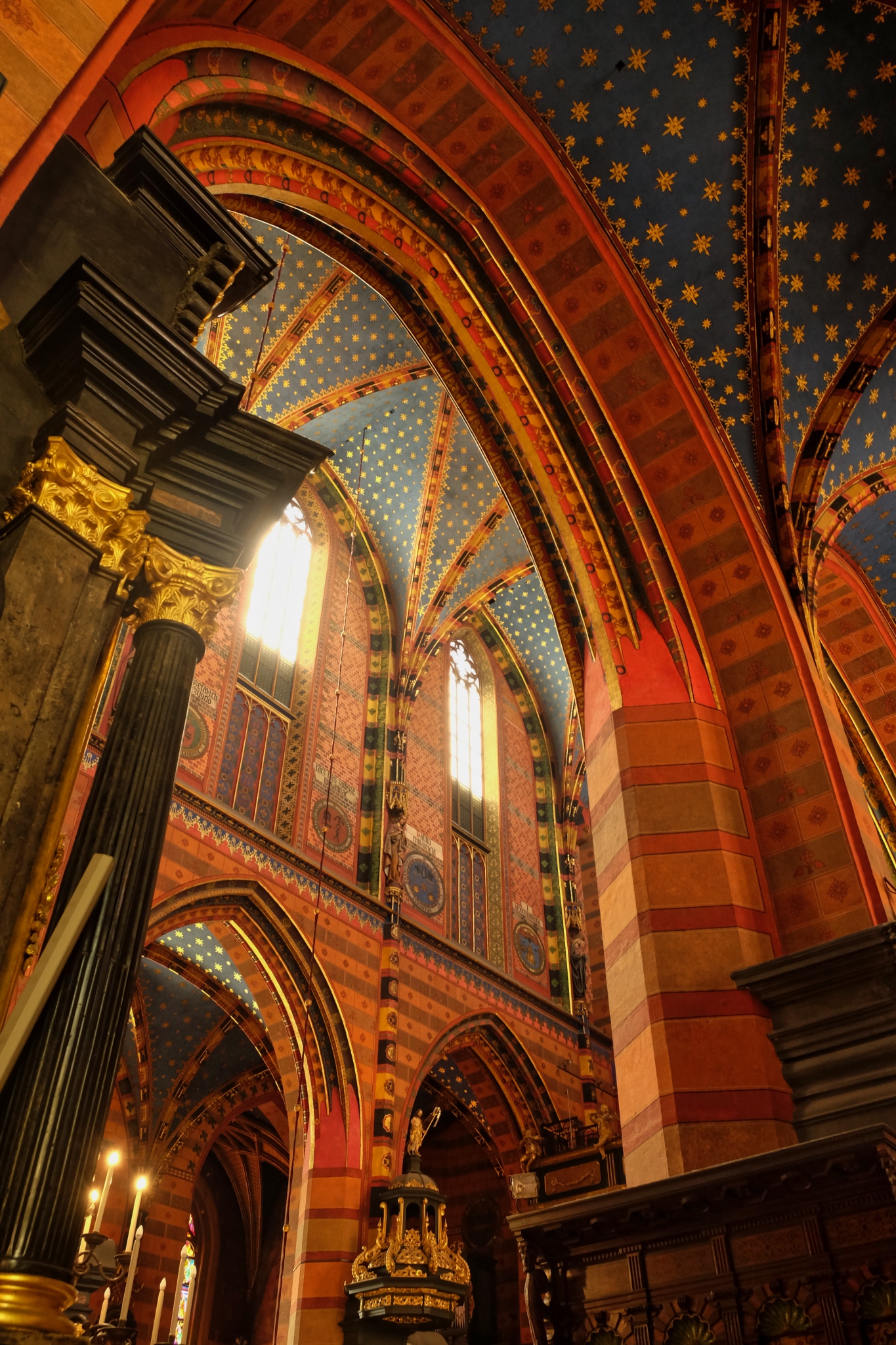 I loved the colorfully painted ceiling details. So many churches in Europe seem to think that bare stone is a better look . . . I prefer the color.
I loved the colorfully painted ceiling details. So many churches in Europe seem to think that bare stone is a better look . . . I prefer the color.
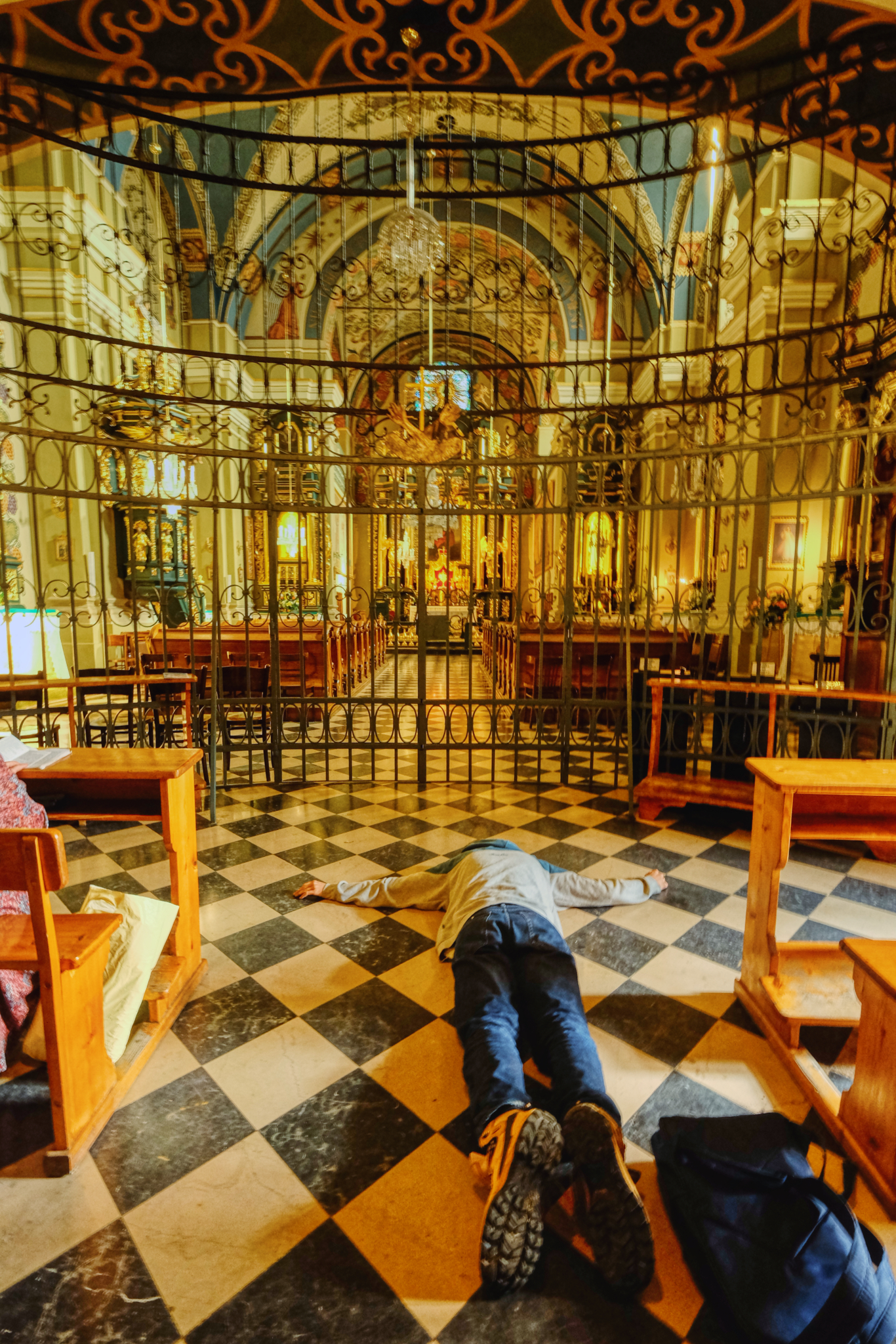 A Kraków Christian devotee on a bad day, one would assume.
A Kraków Christian devotee on a bad day, one would assume.
 My wife and I admired the interior of the St. Mary's Basilica for quite a while, but it was a beautiful day outside, and there was so much more to explore.
My wife and I admired the interior of the St. Mary's Basilica for quite a while, but it was a beautiful day outside, and there was so much more to explore.
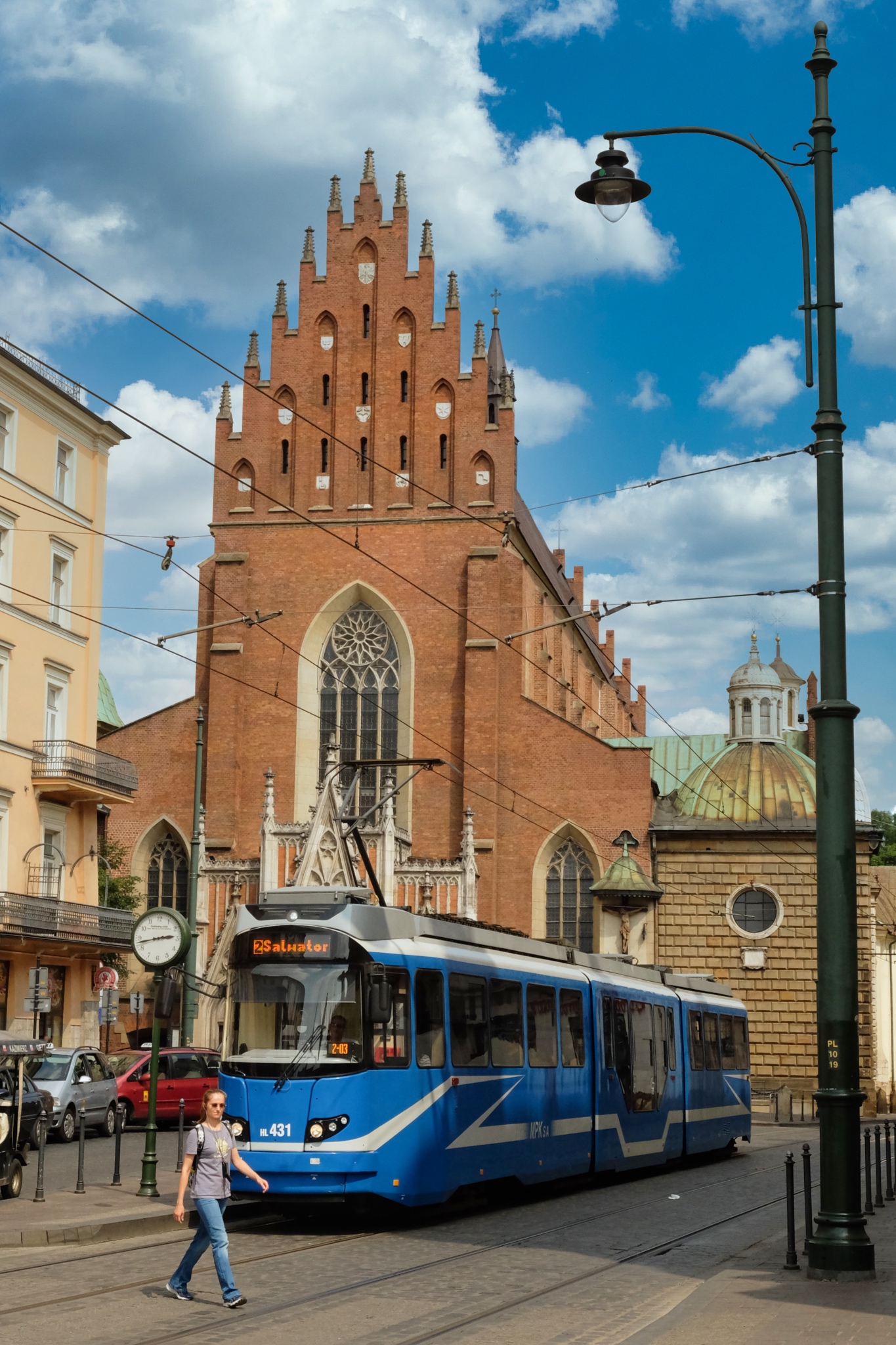 We left the main Karców city center square to walk around in the narrow streets of Kraków's historic center (on the original UNESCO World Heritage list).
We left the main Karców city center square to walk around in the narrow streets of Kraków's historic center (on the original UNESCO World Heritage list).
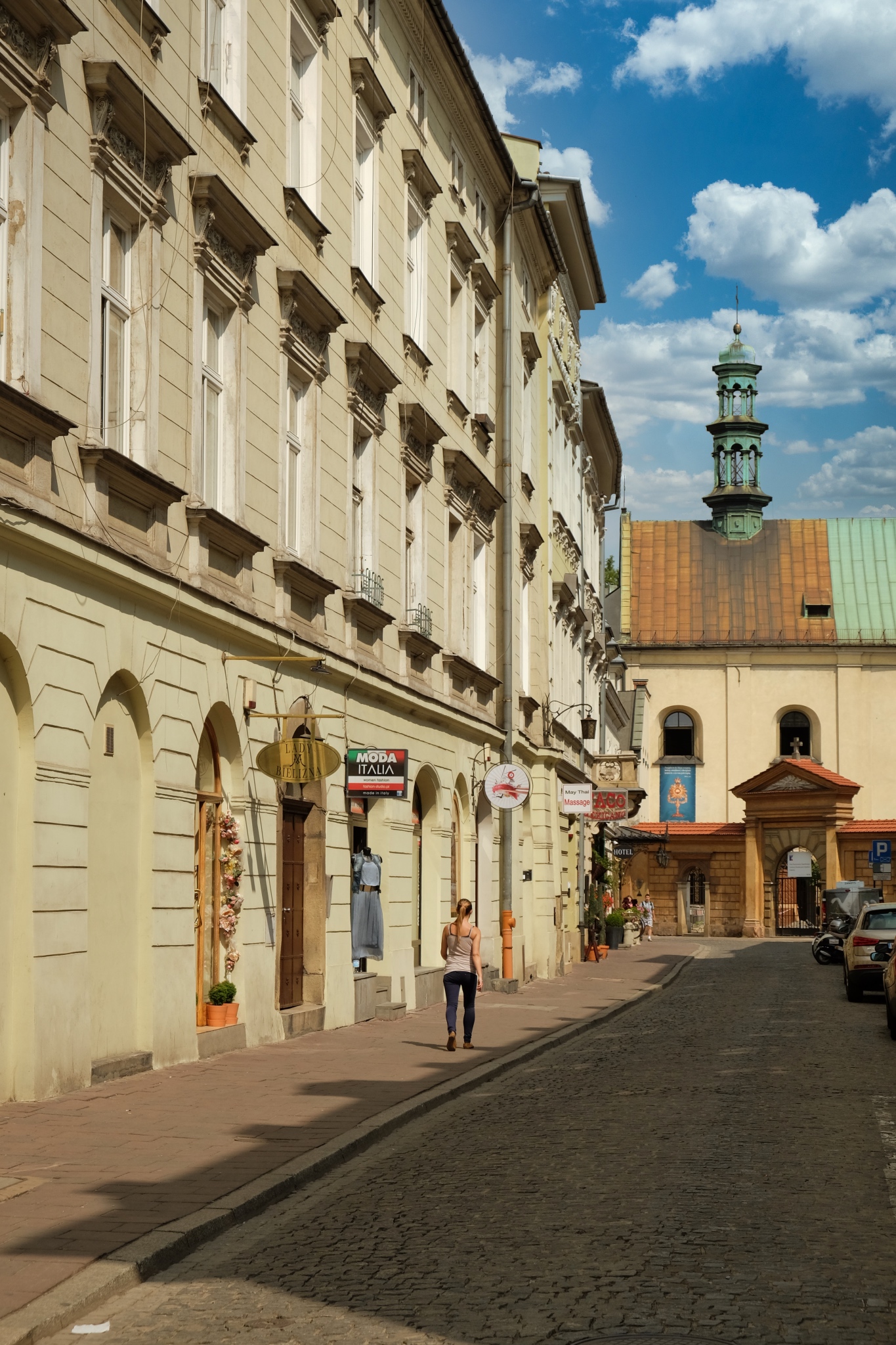 As we walked around in the back streets of the city center, we became aware of the significance that this is a city that had never been bombed in a war and had never had a major fire, as so many of the other major medieval European cities had. There were no new buildings: it was an intact ancient city . . . and living today.
As we walked around in the back streets of the city center, we became aware of the significance that this is a city that had never been bombed in a war and had never had a major fire, as so many of the other major medieval European cities had. There were no new buildings: it was an intact ancient city . . . and living today.
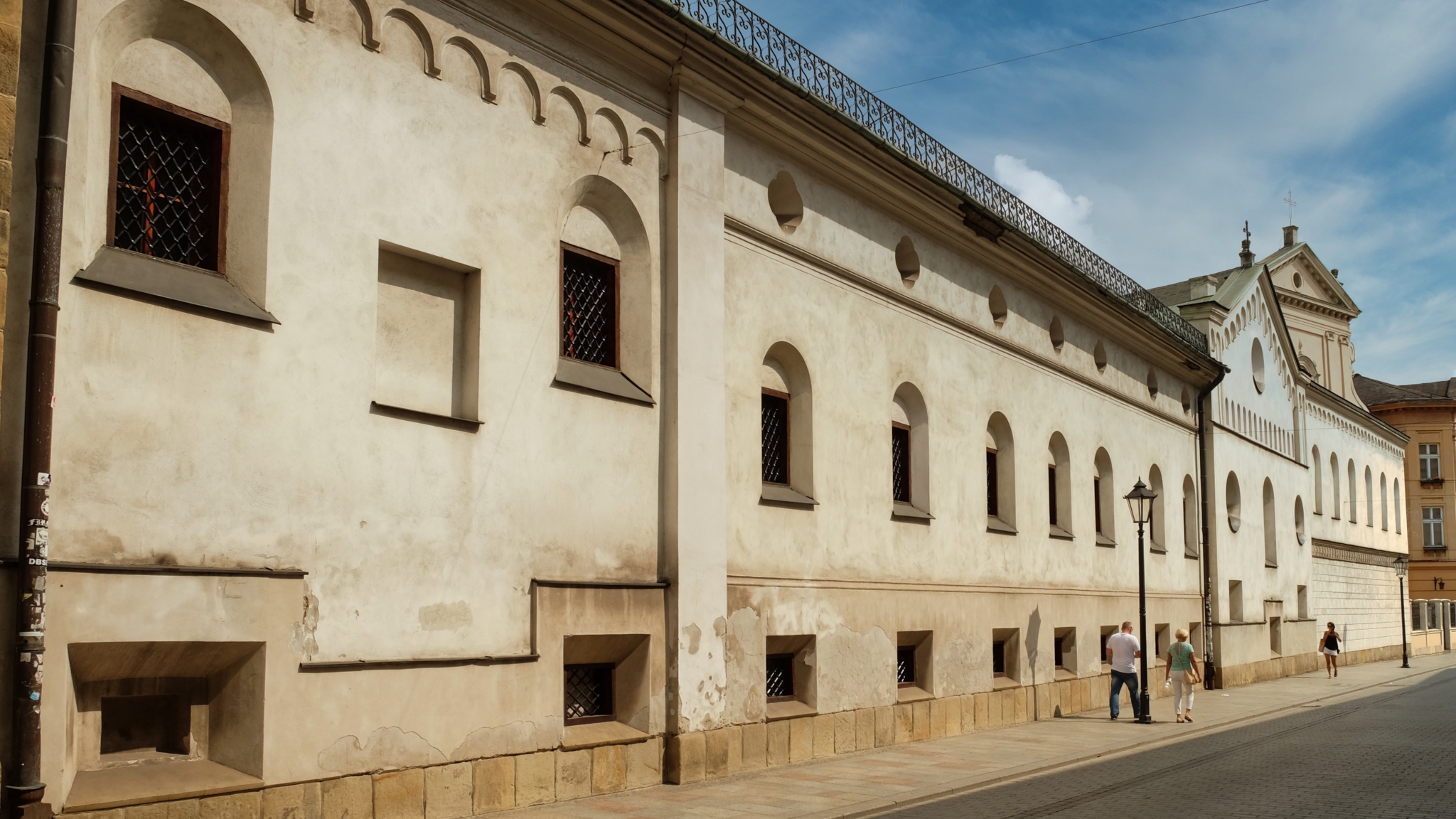 Interesting and varied architecture all around.
Interesting and varied architecture all around.
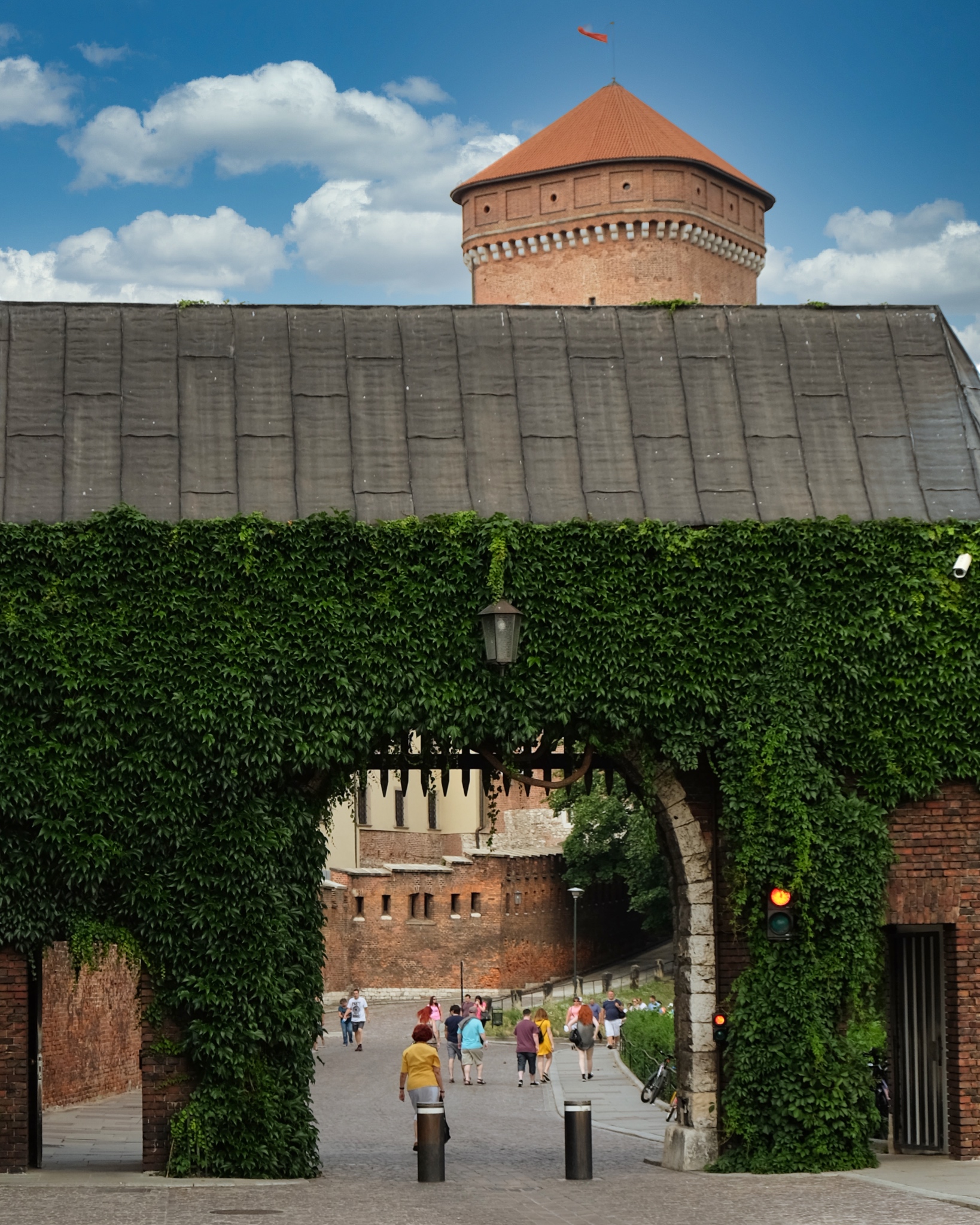 Such a charming city.
Such a charming city.
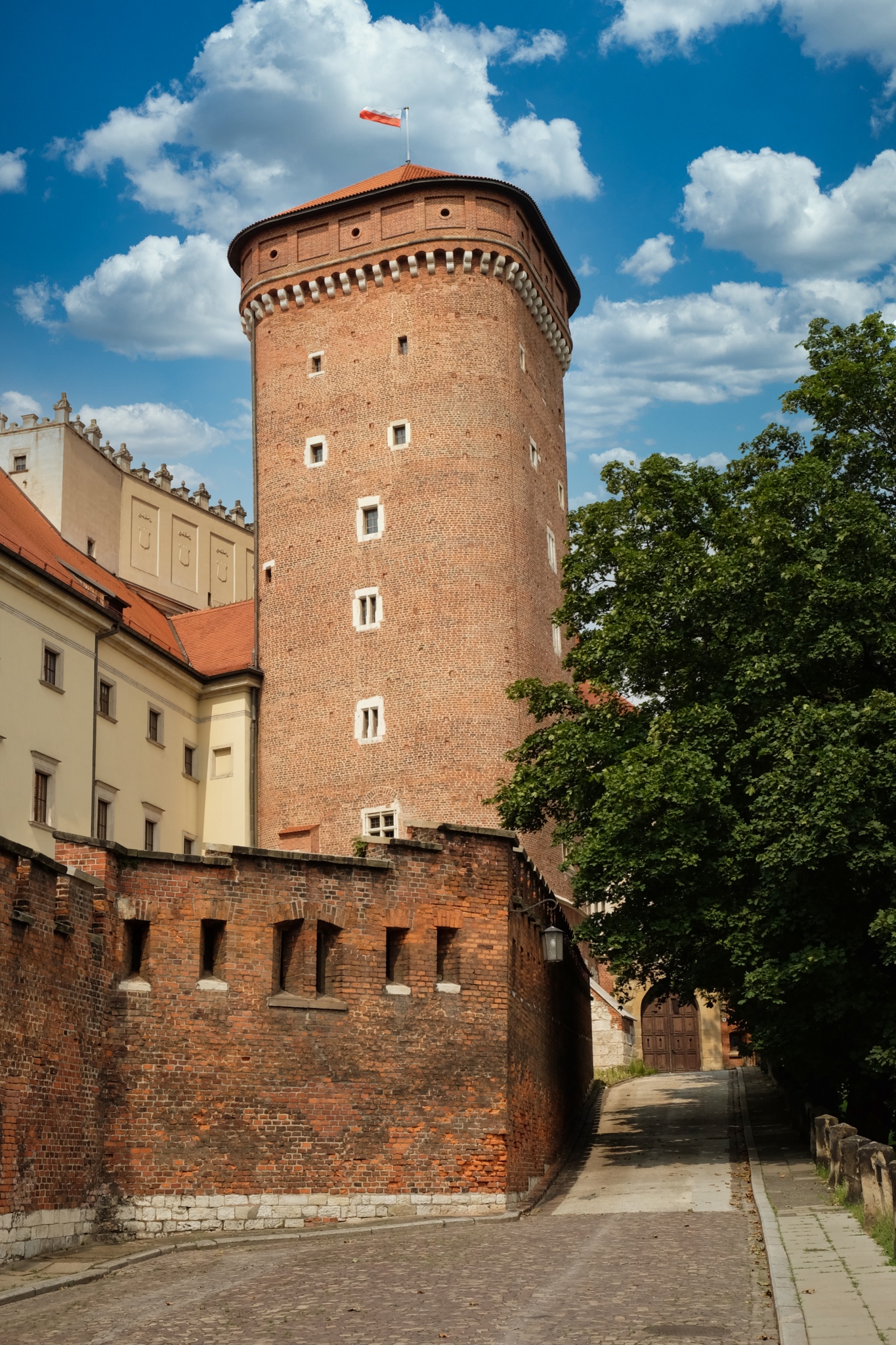 I found this tower fascinating. Towers were very popular throughout Europe in medieval times
I found this tower fascinating. Towers were very popular throughout Europe in medieval times
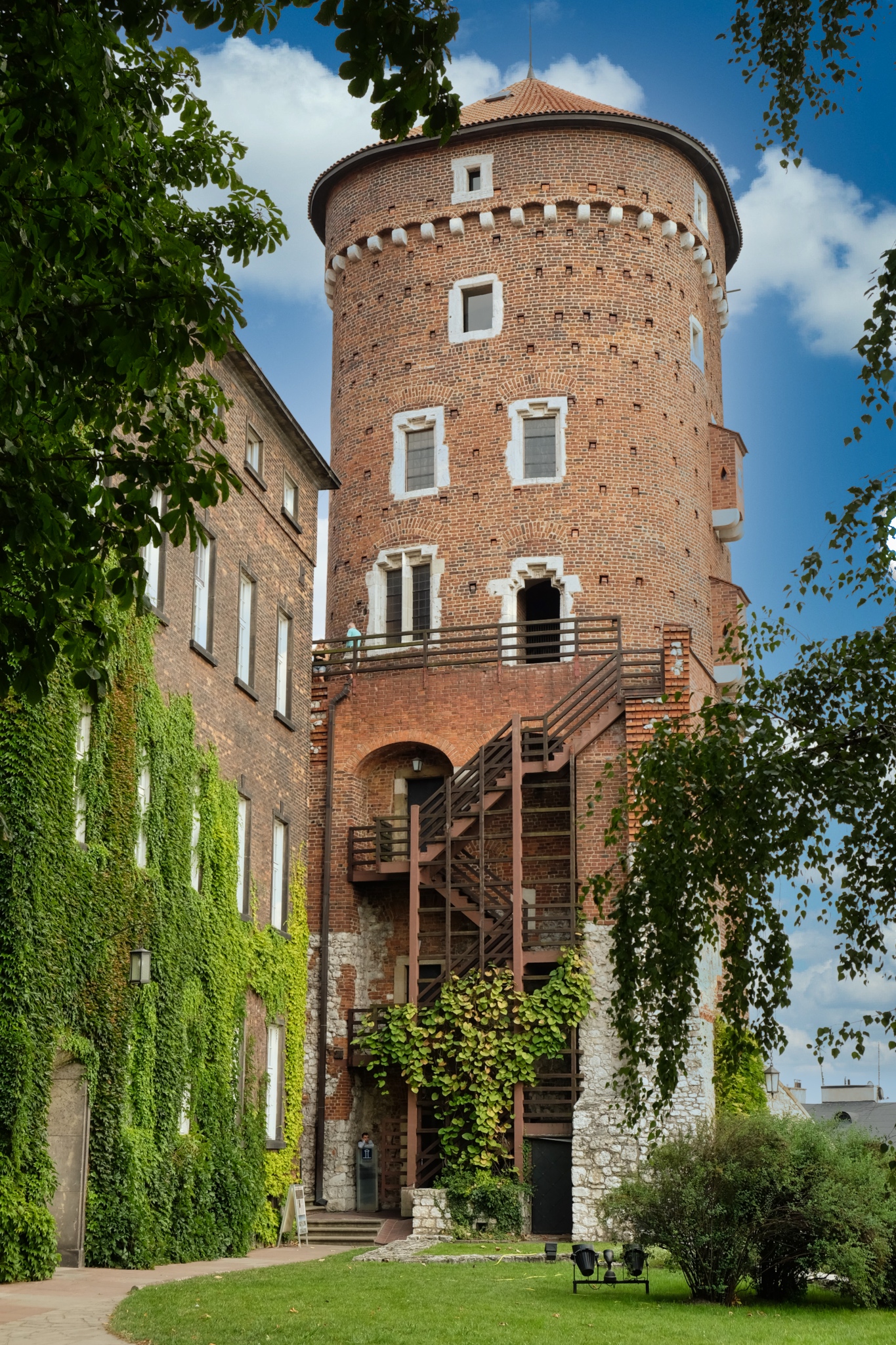 The back of the tower was also very interesting. I enjoy looking at and figuring out these old architectural gems.
The back of the tower was also very interesting. I enjoy looking at and figuring out these old architectural gems.
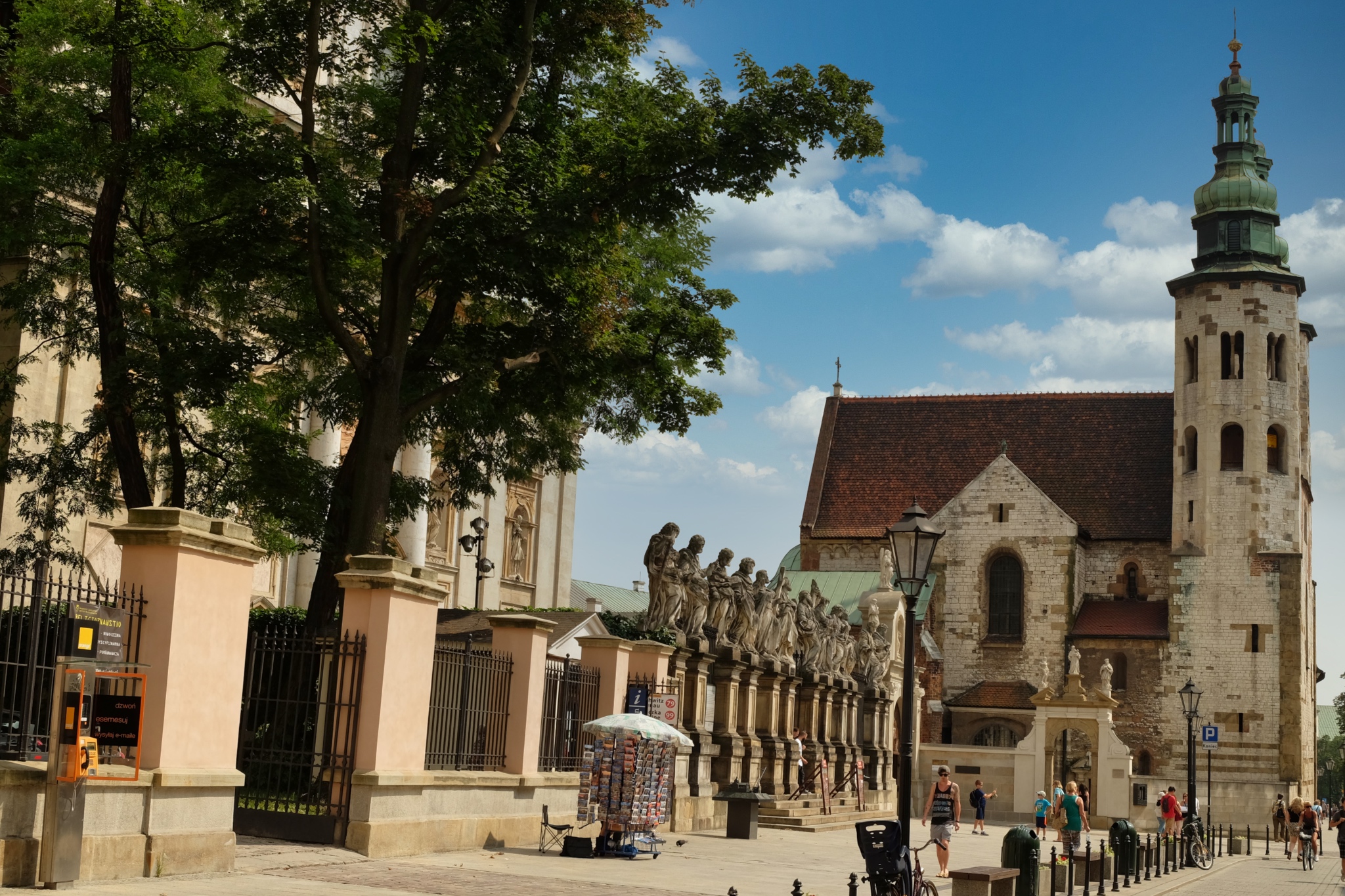 One city space leads to another . . . and always interesting and fascinating.
One city space leads to another . . . and always interesting and fascinating.
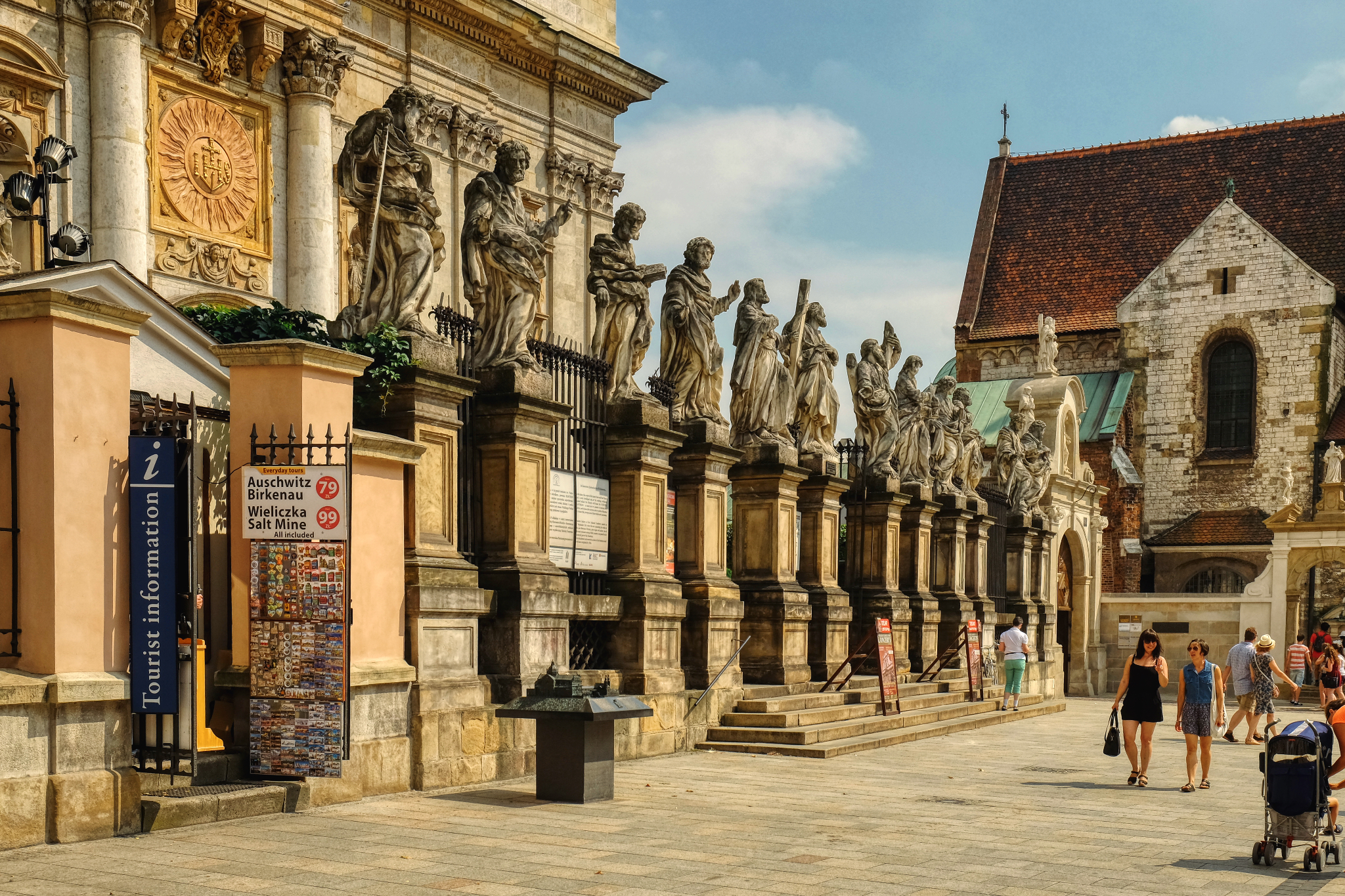 A row of Christian saints. Notice the advertisement for tours of the Nazi death camps near Kraków . . . we did not go.
A row of Christian saints. Notice the advertisement for tours of the Nazi death camps near Kraków . . . we did not go.
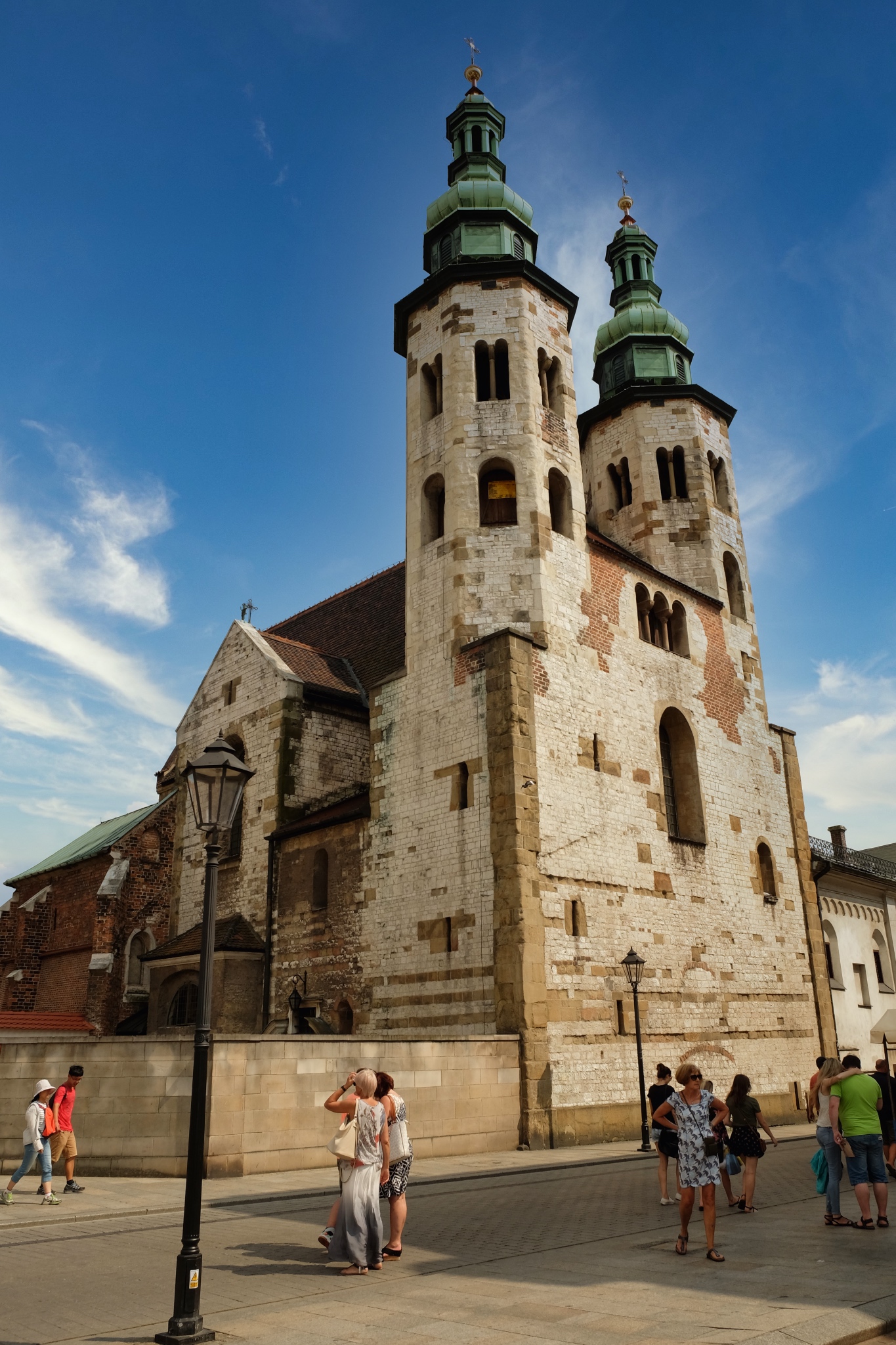 Such a charming old church.
Such a charming old church.
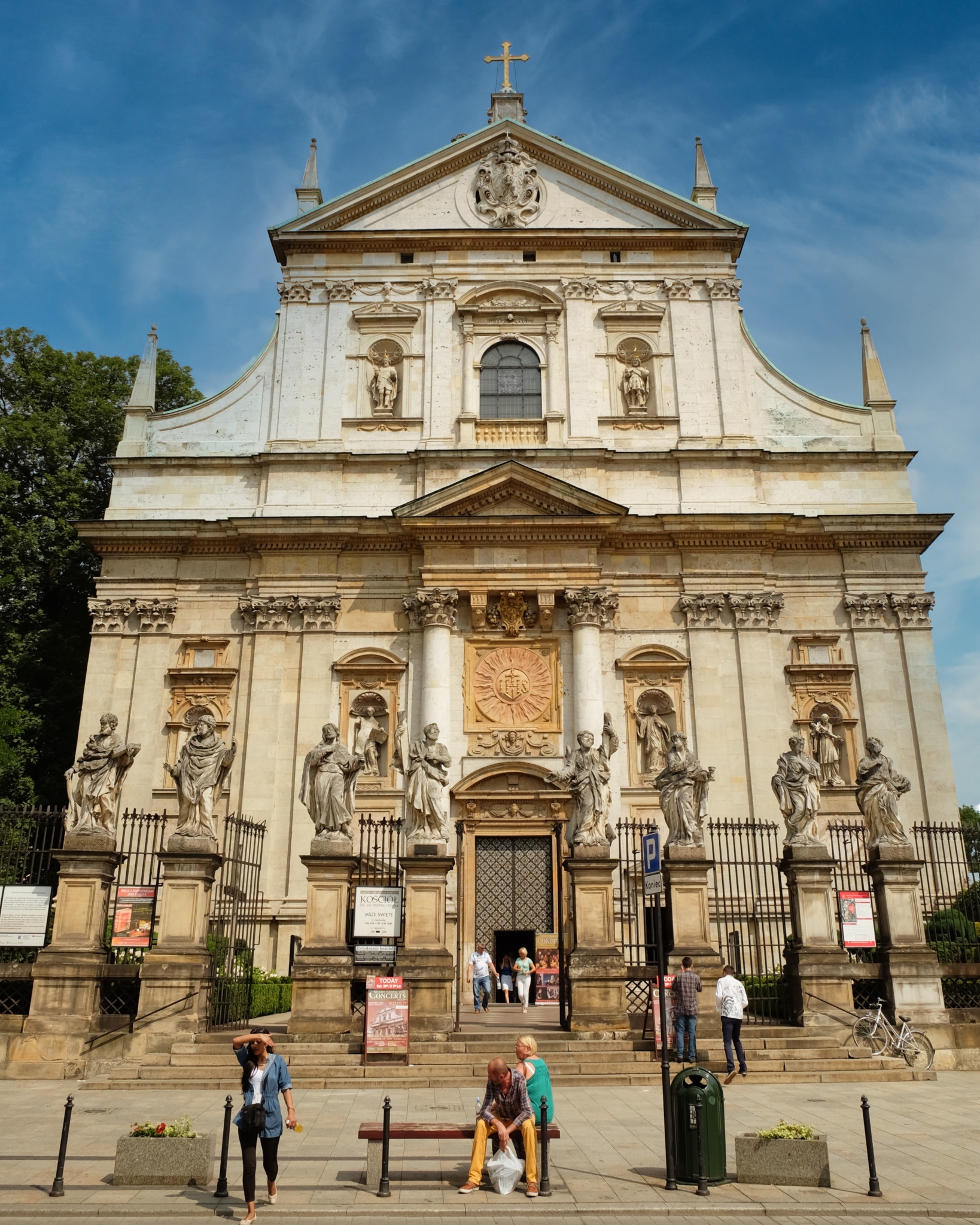 Saints Peter and Paul Church, built 1597 in the Polish Baroque style.
Saints Peter and Paul Church, built 1597 in the Polish Baroque style.
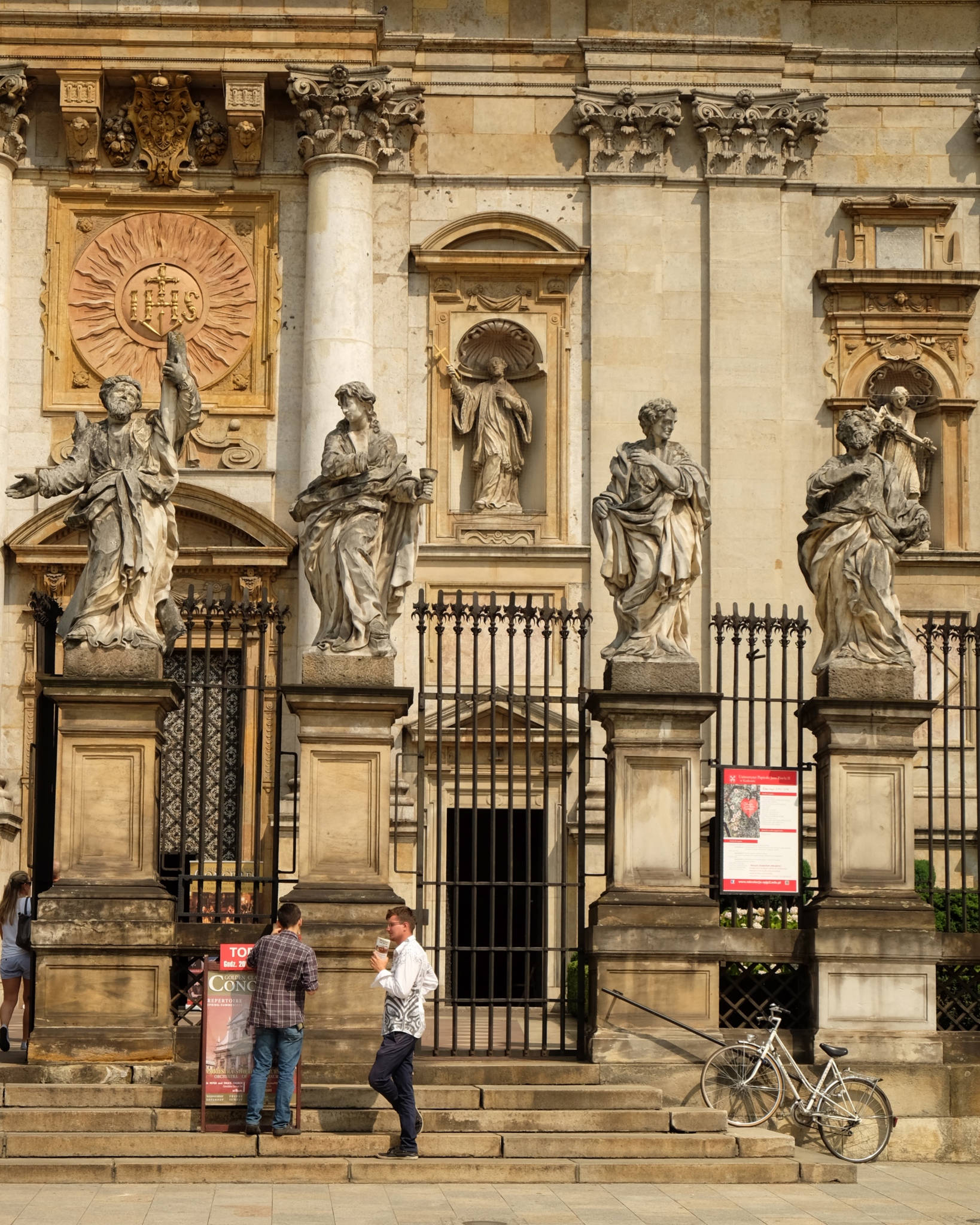 A detail of the Saints Peter and Paul Church . . . looking more like a library than a church somehow.
A detail of the Saints Peter and Paul Church . . . looking more like a library than a church somehow.
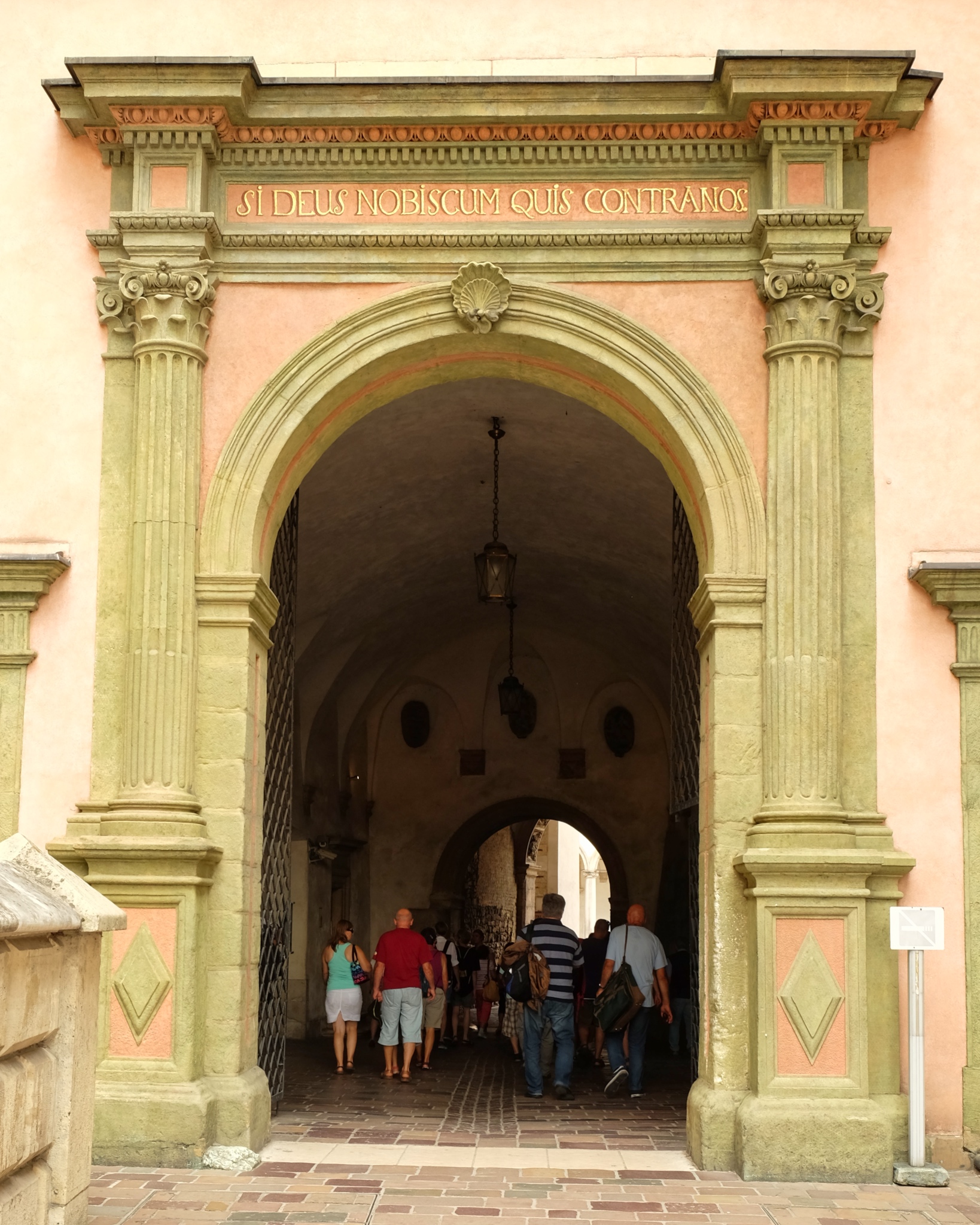 One of the interesting features of Kraków are the many arched passageway through buildings.
One of the interesting features of Kraków are the many arched passageway through buildings.
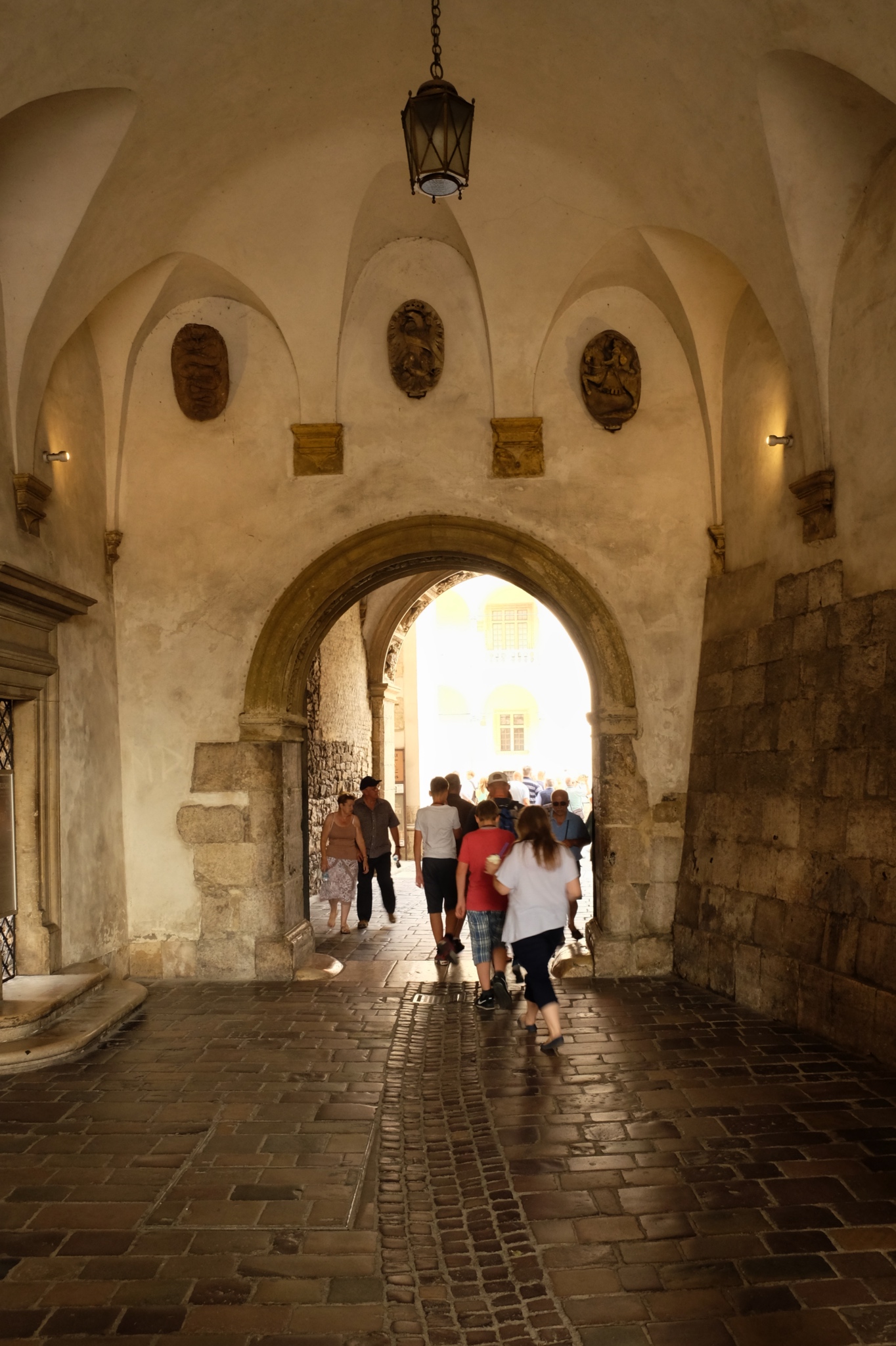 When the street you are walking on takes a turn through an arched passage you never know what you will see on the other side. Wonderful surprises all over town.
When the street you are walking on takes a turn through an arched passage you never know what you will see on the other side. Wonderful surprises all over town.
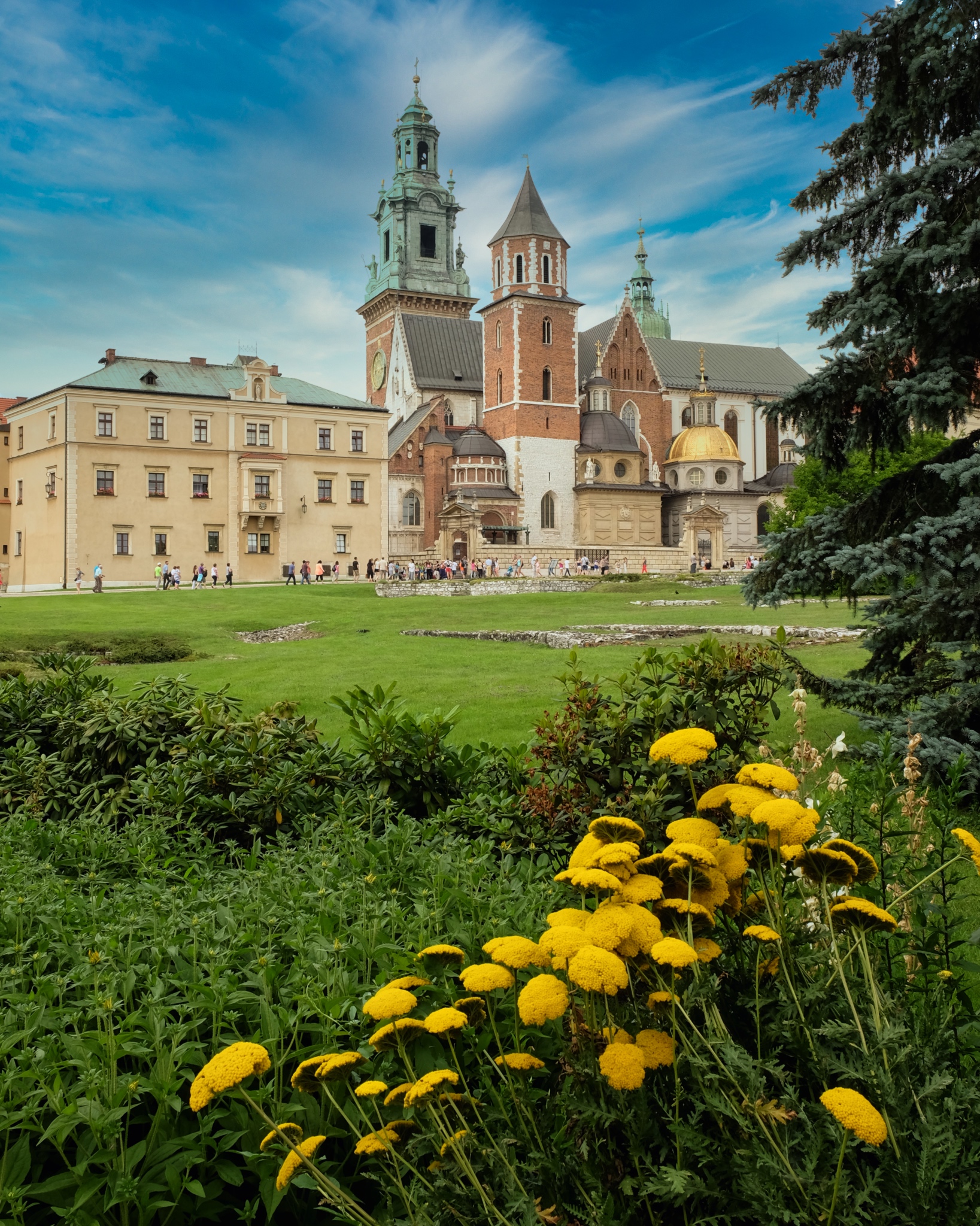 Sometimes you pop put of a street passage onto a beautiful park with. . . .
Sometimes you pop put of a street passage onto a beautiful park with. . . .
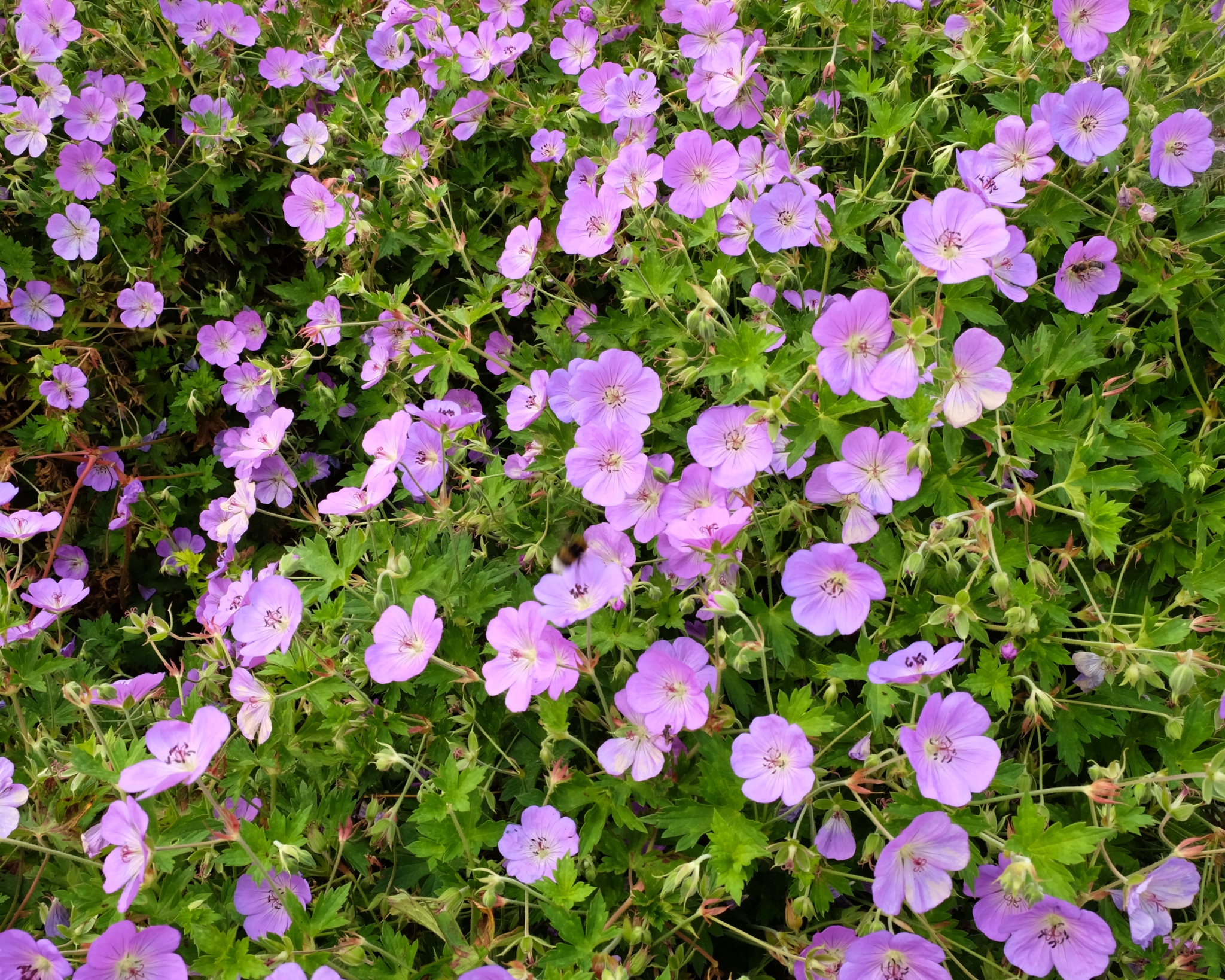 . . . beautiful flower beds.
. . . beautiful flower beds.
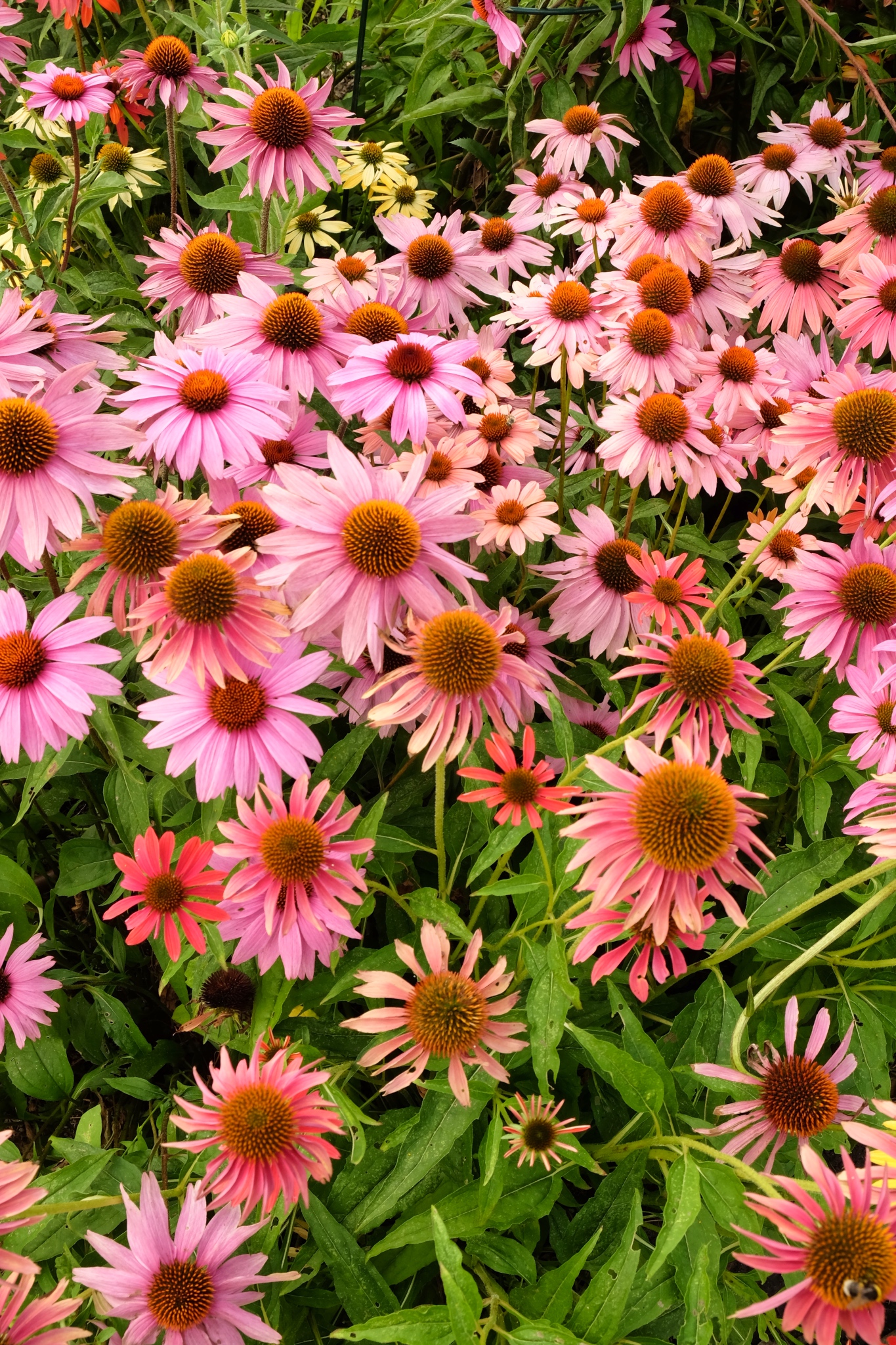 Beautiful summer flowers.
Beautiful summer flowers.
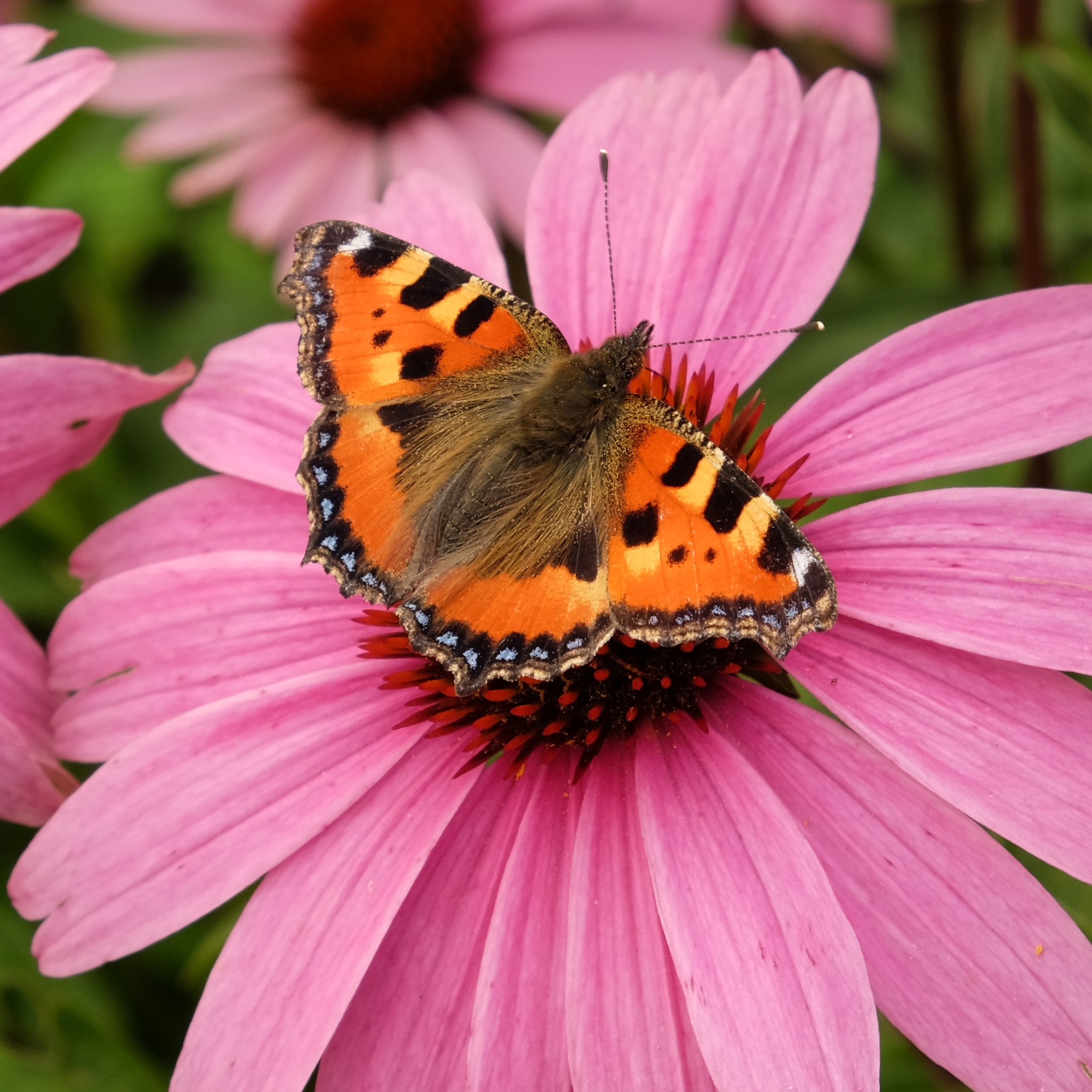 What a wonderful hairy moth flitting from flower to flower.
What a wonderful hairy moth flitting from flower to flower.
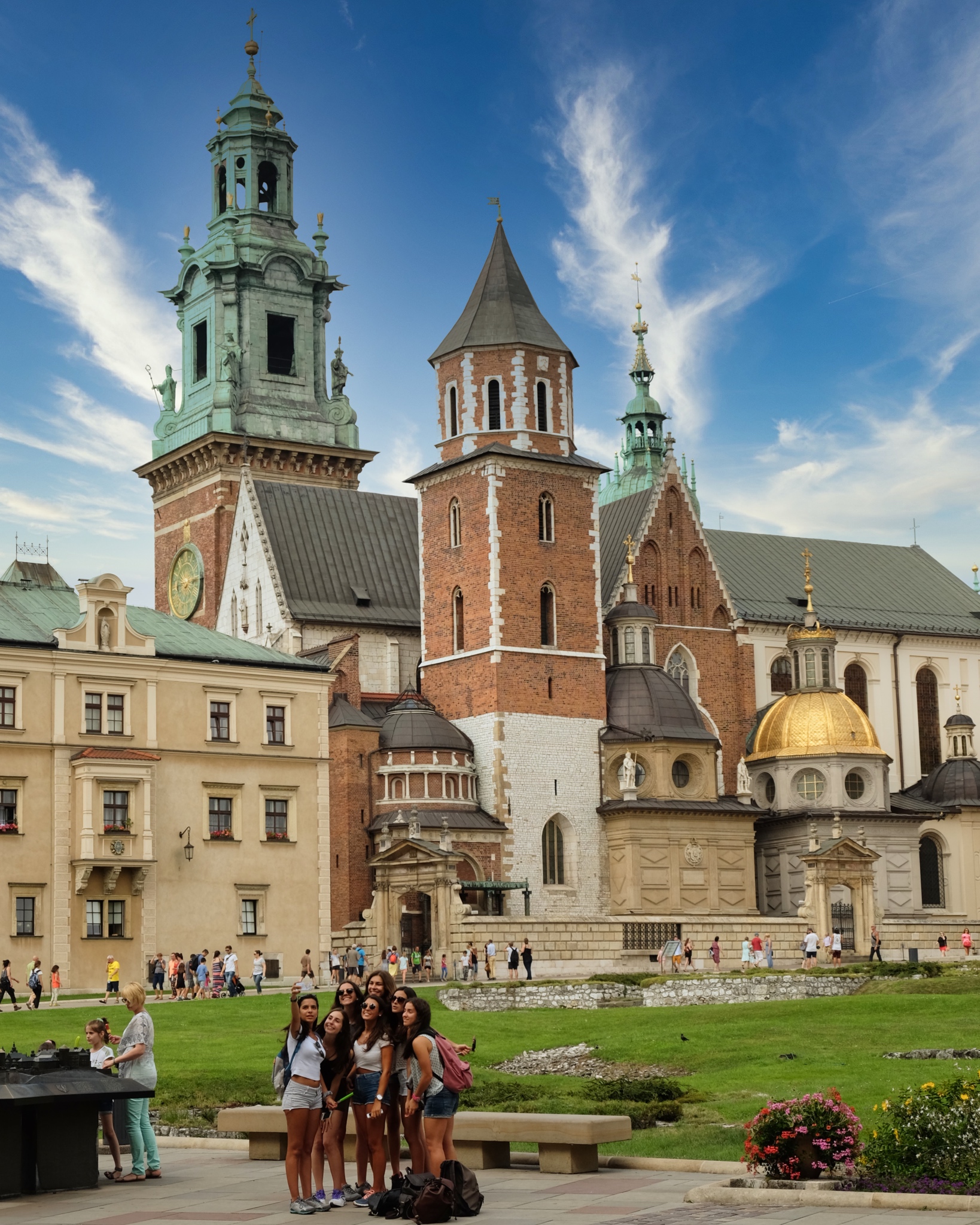 Tourists taking a group selfie in front of the historic Wawel Cathedral, first built in the 11th century, burned in 1302, and rebuilt in the 14th century.
Tourists taking a group selfie in front of the historic Wawel Cathedral, first built in the 11th century, burned in 1302, and rebuilt in the 14th century.
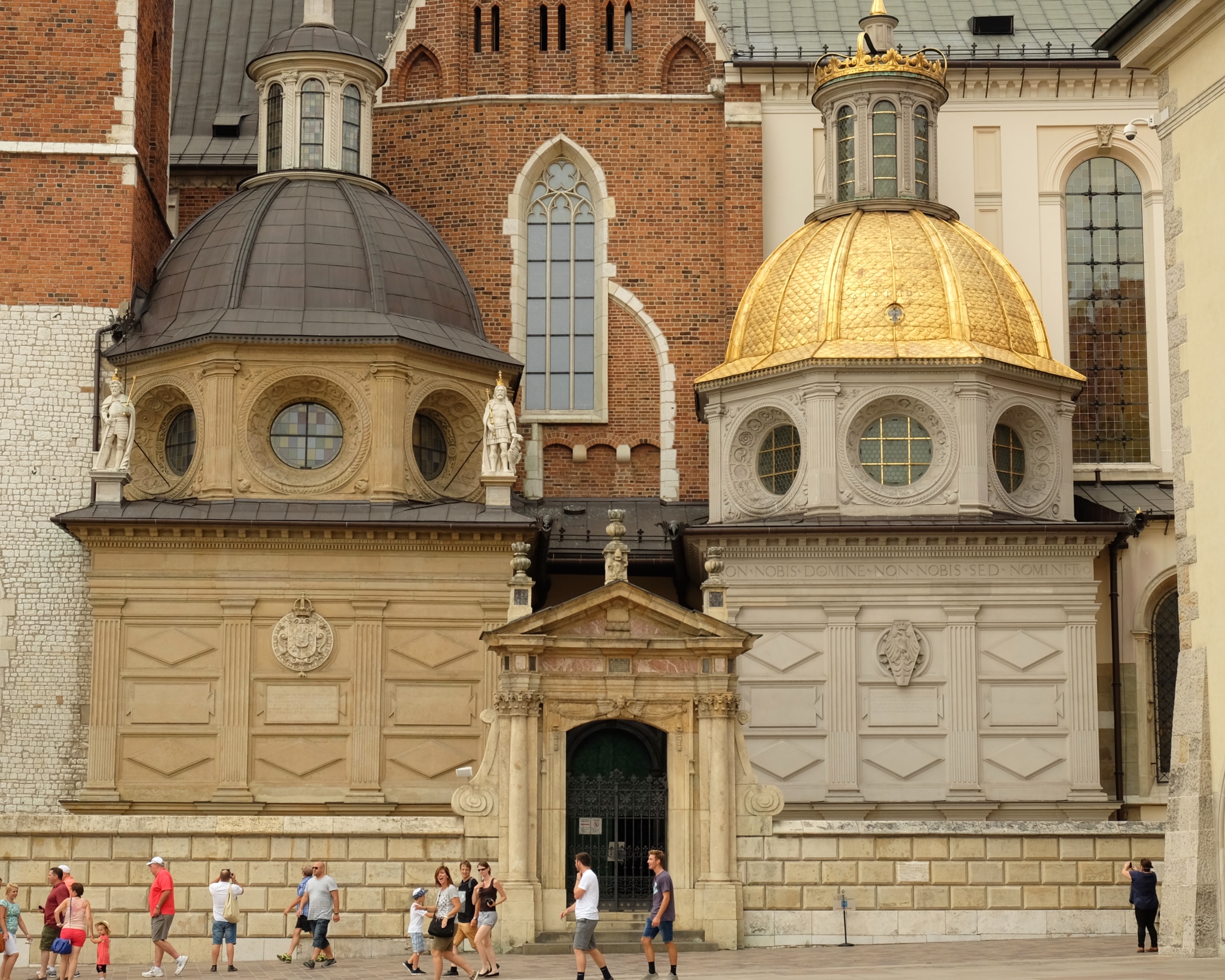 The domed facade of Wawel Cathedral.
The domed facade of Wawel Cathedral.
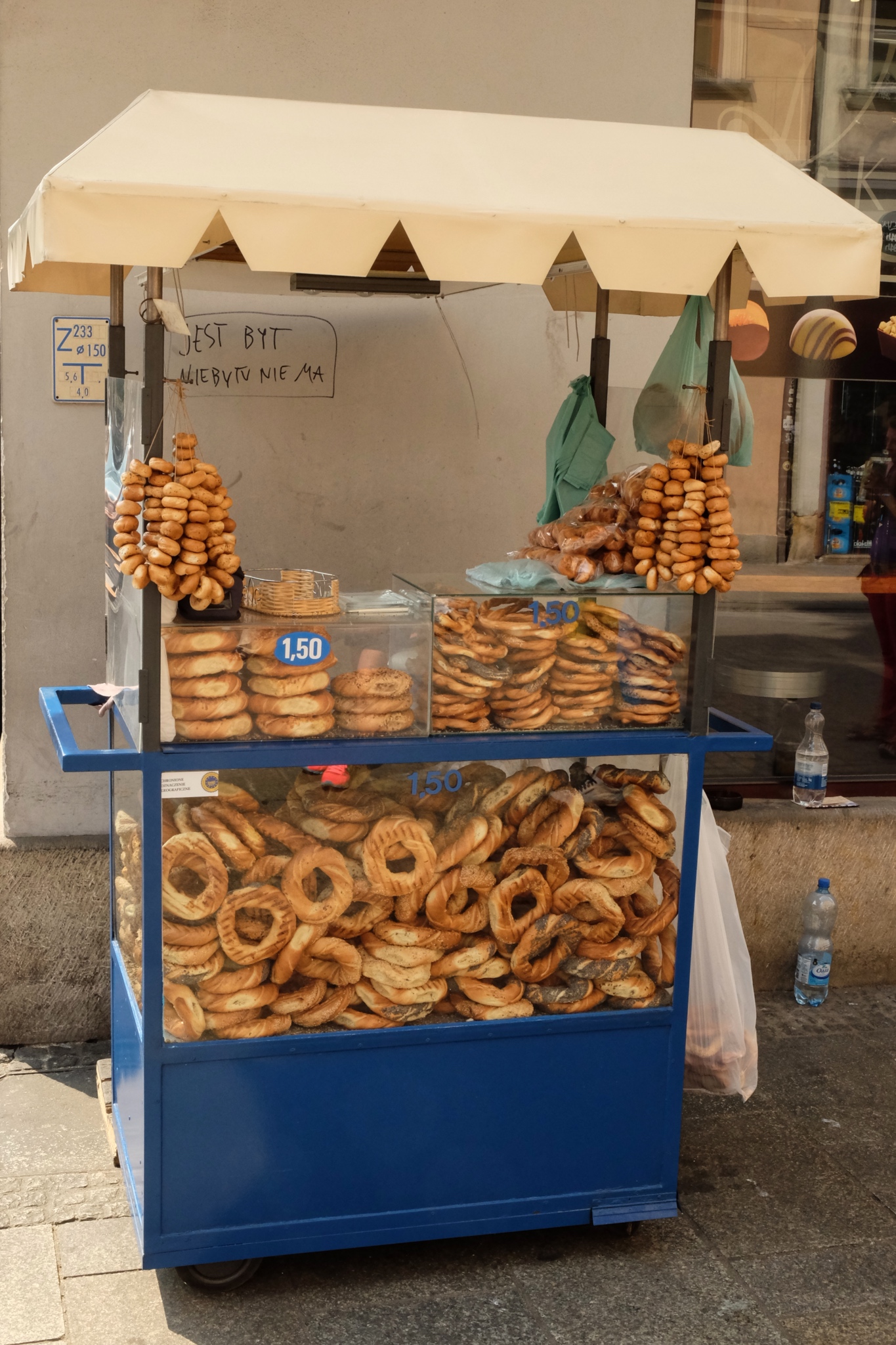 Beautiful bread snackage.
Beautiful bread snackage.
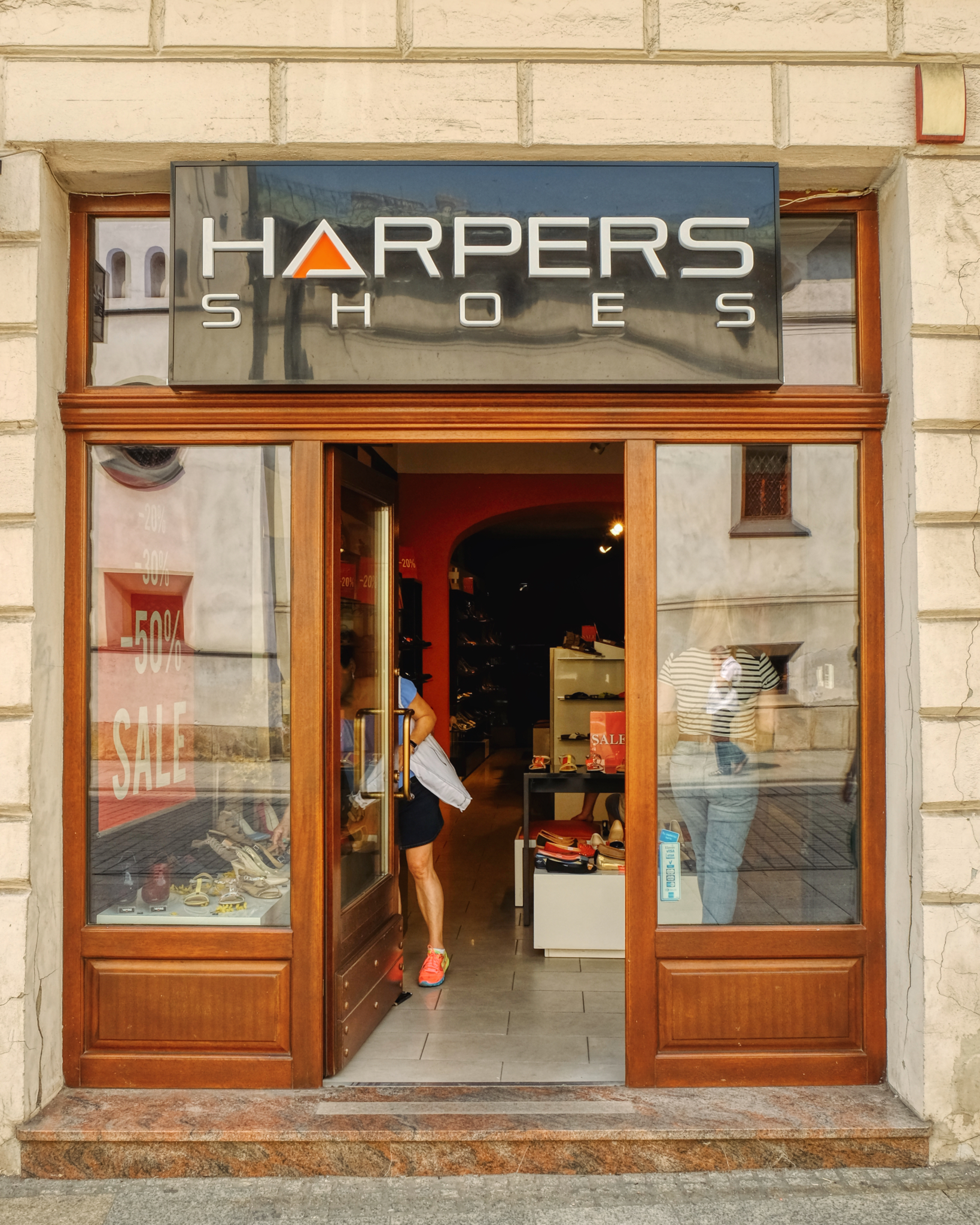 I couldn't resist!!!
I couldn't resist!!!
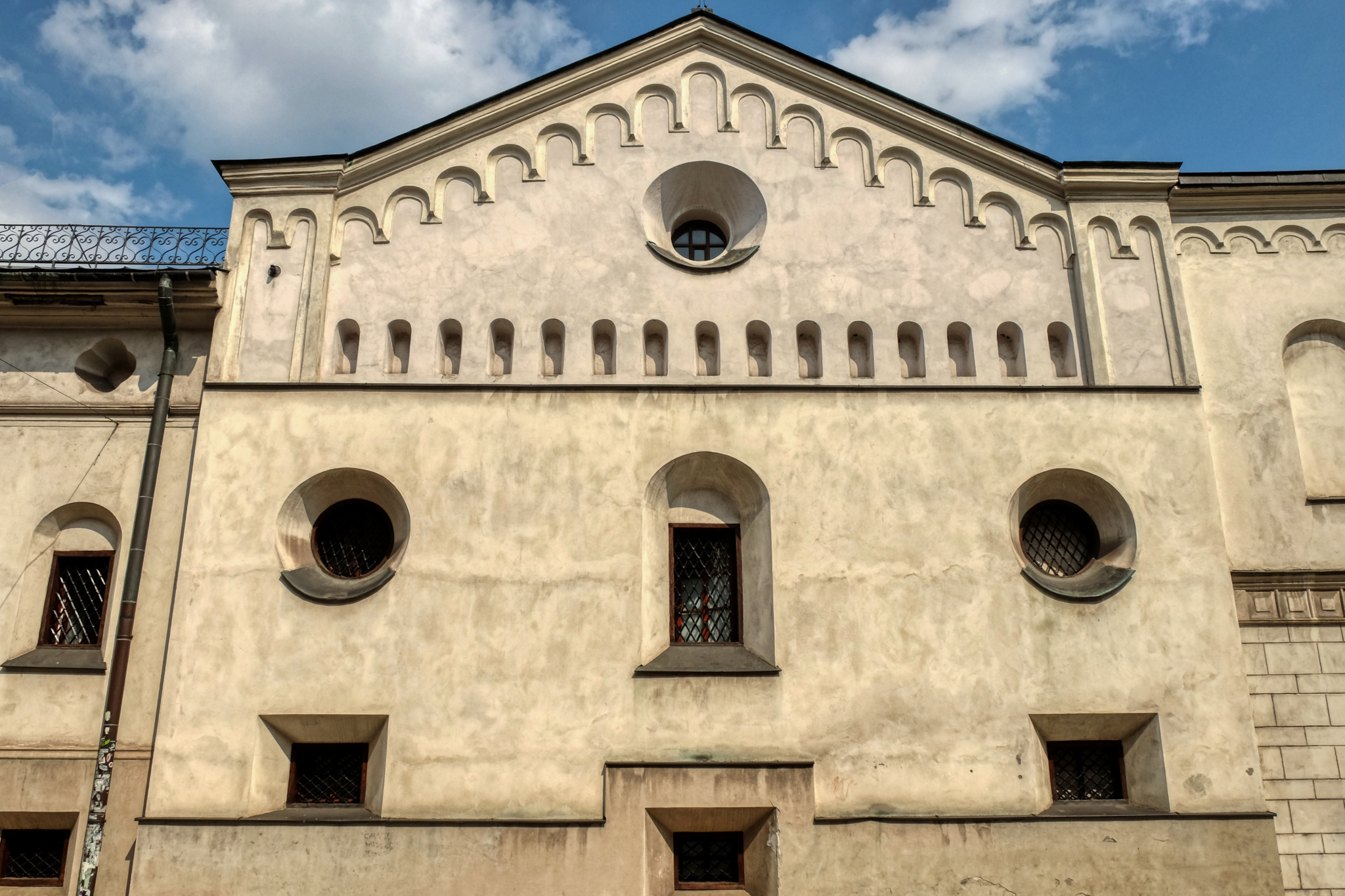 I absolutely love the architectural style of this city center monastery.
I absolutely love the architectural style of this city center monastery.
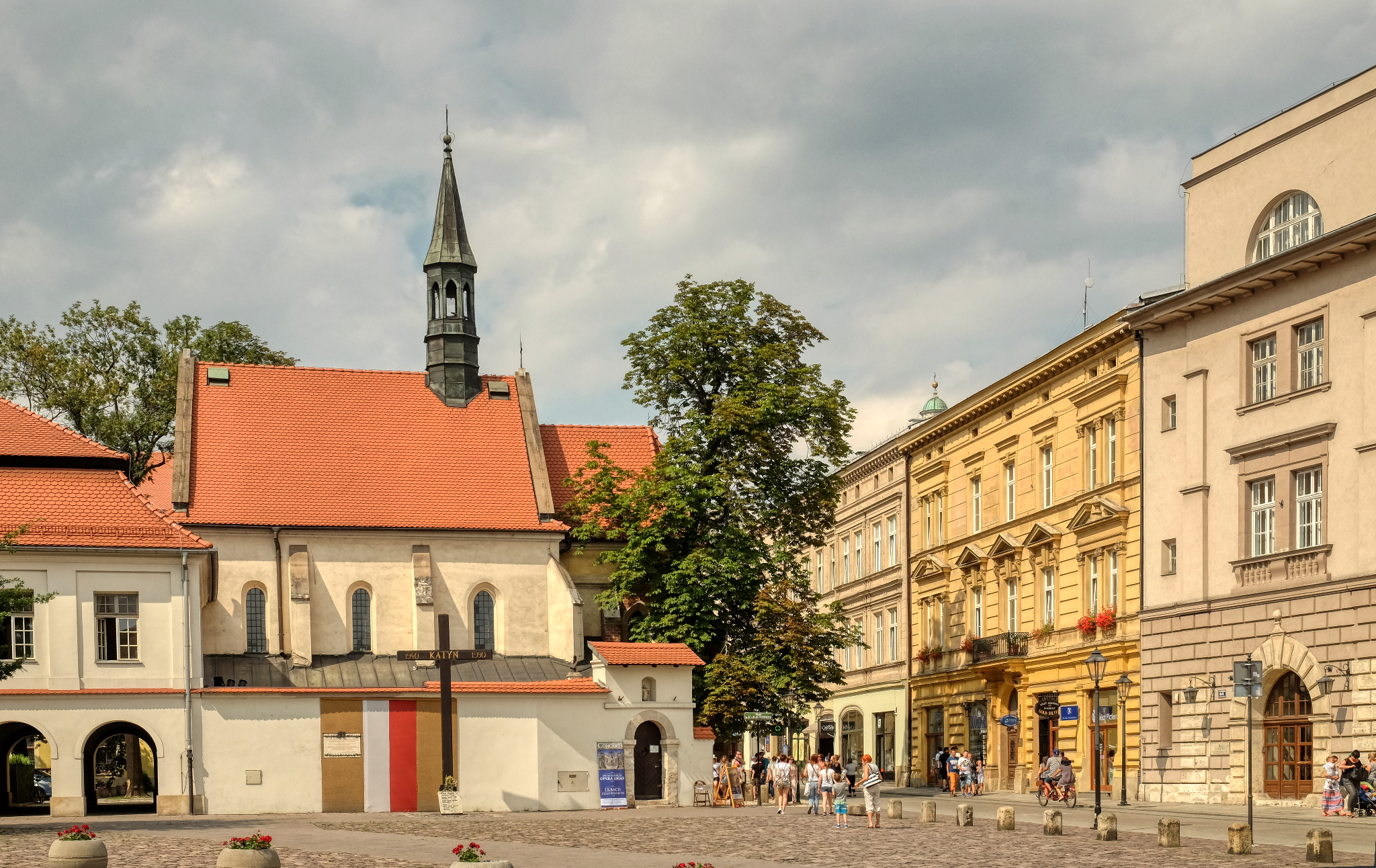 A wonderful city for just ambling around.
A wonderful city for just ambling around.
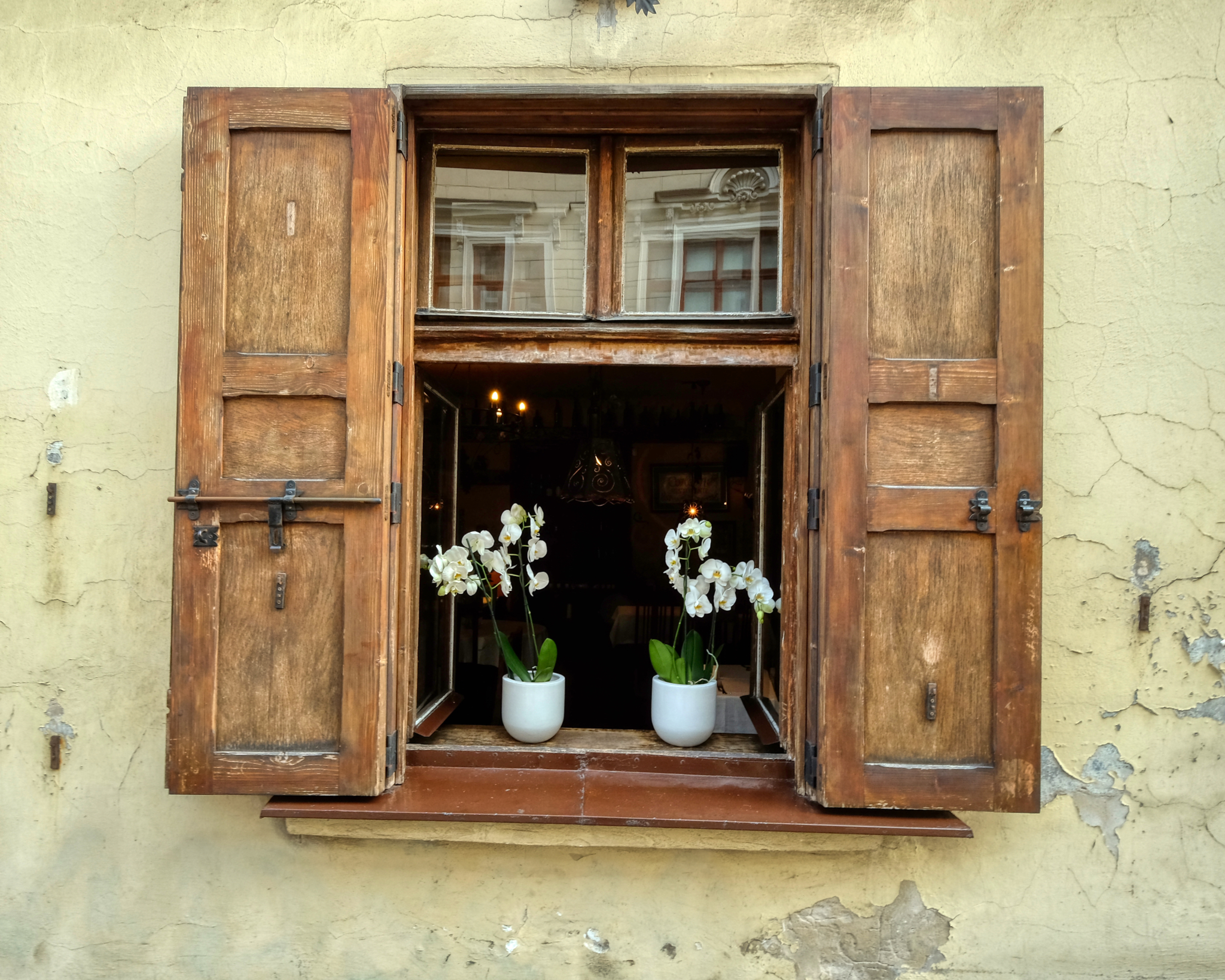 Ah! Orchids! Reminded us of our home in Thailand.
Ah! Orchids! Reminded us of our home in Thailand.
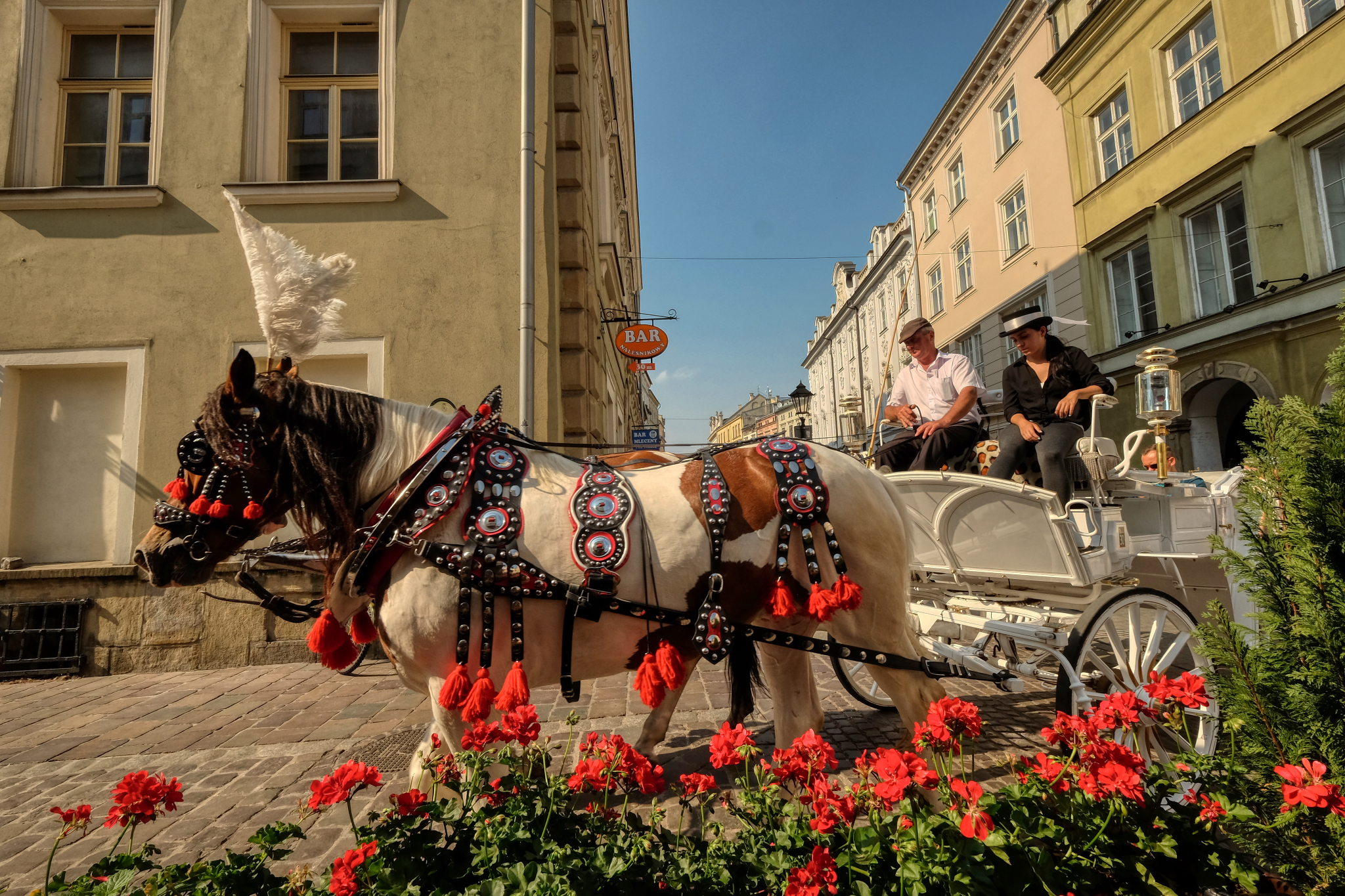 We stopped in at a cafe on a small side street only to discover it was on the route of the central square horse carriage route. They came by every two minutes!
We stopped in at a cafe on a small side street only to discover it was on the route of the central square horse carriage route. They came by every two minutes!
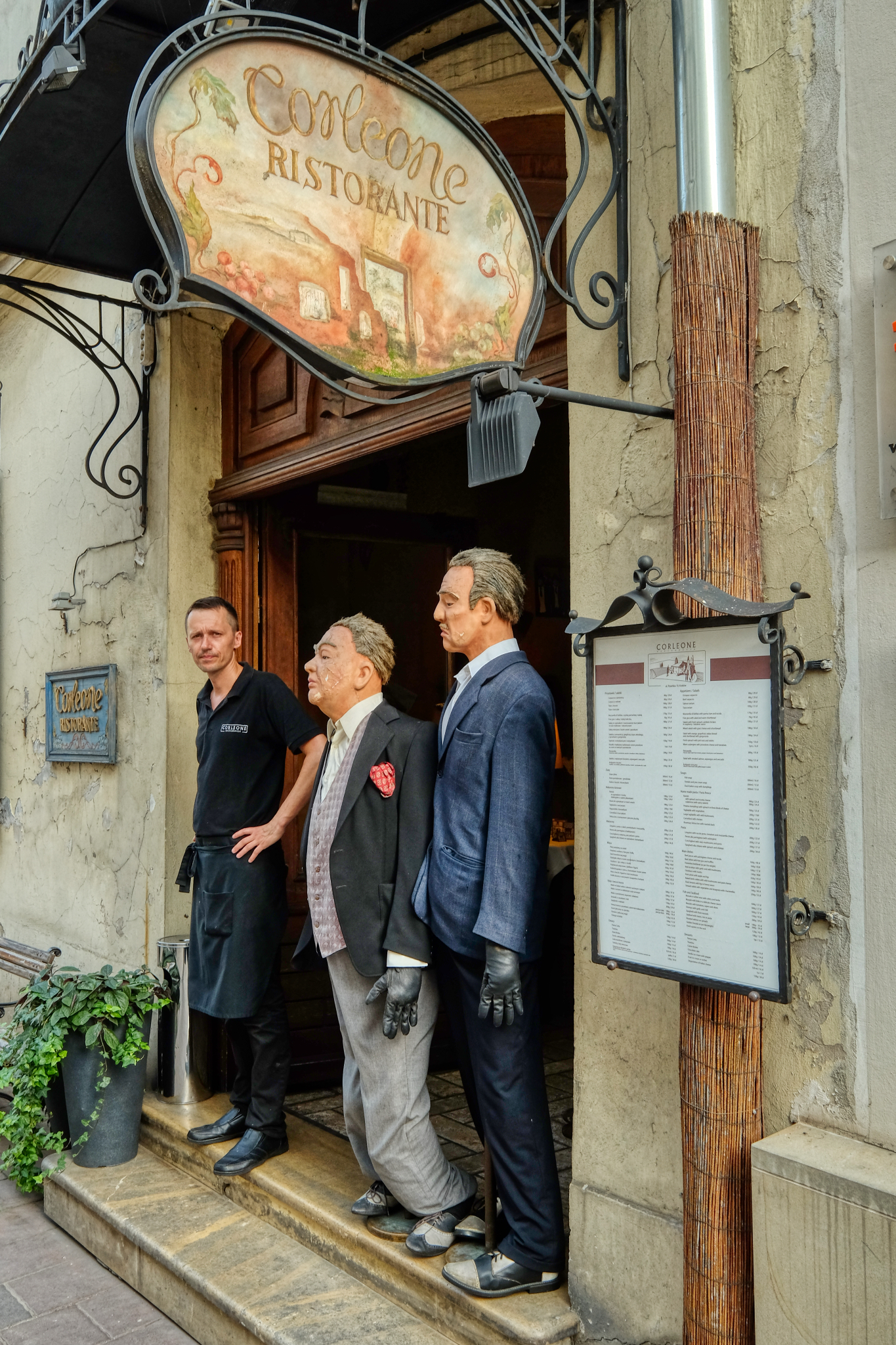 A restaurateur with a sense of humor.
A restaurateur with a sense of humor.
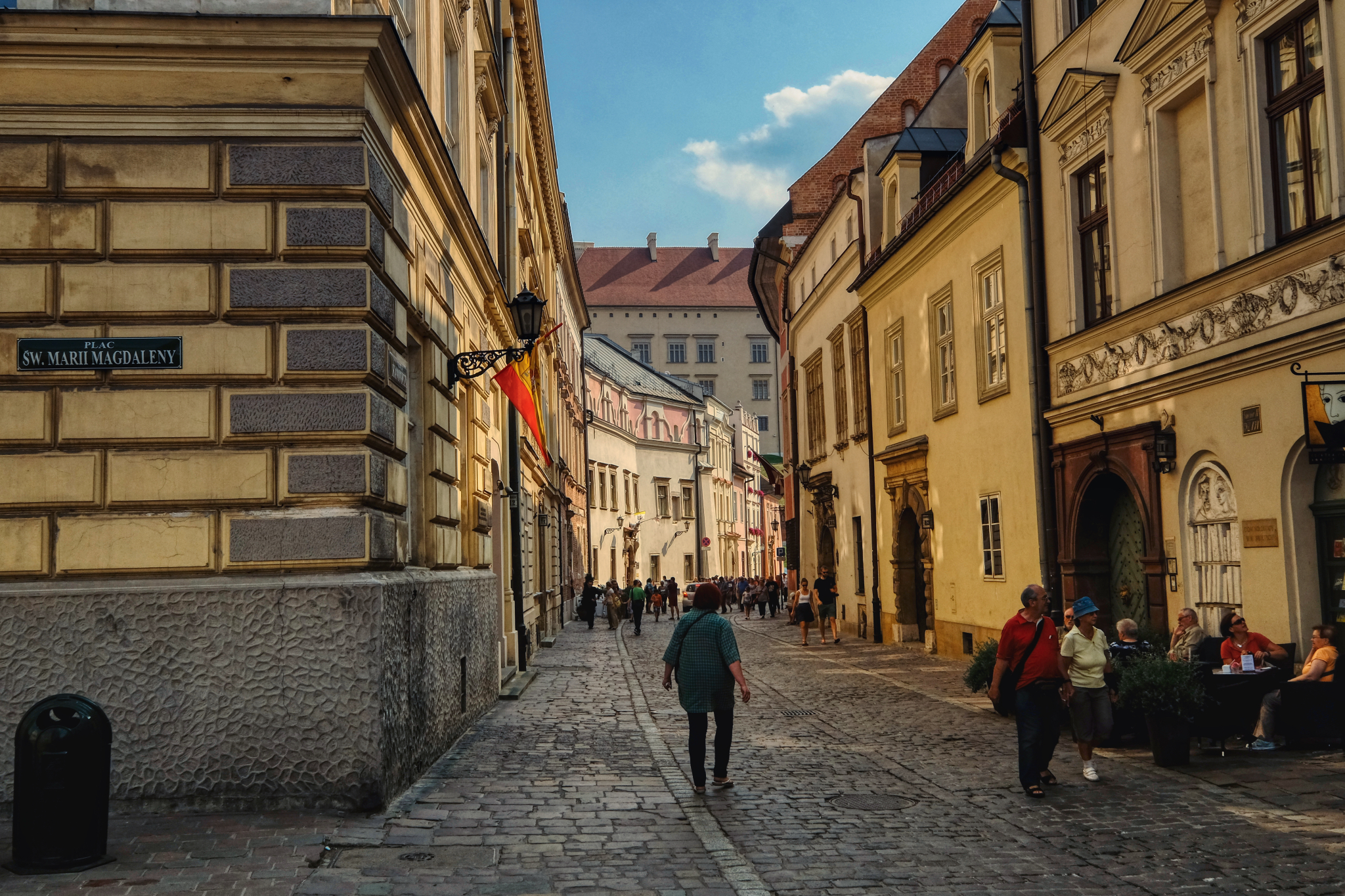 Lovely medieval cobbled lanes.
Lovely medieval cobbled lanes.
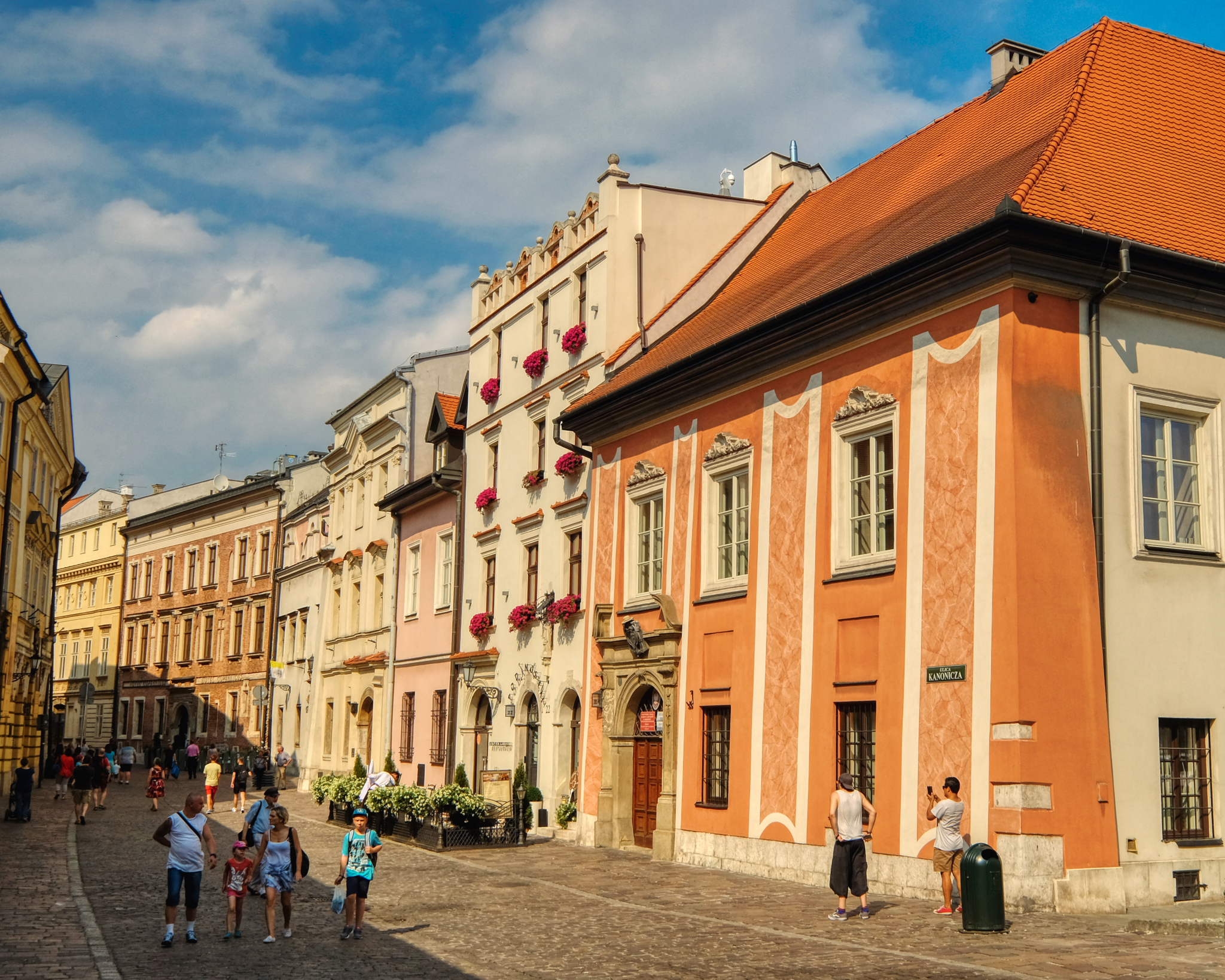 The old medieval city center as it was 500 years ago . . .
The old medieval city center as it was 500 years ago . . .
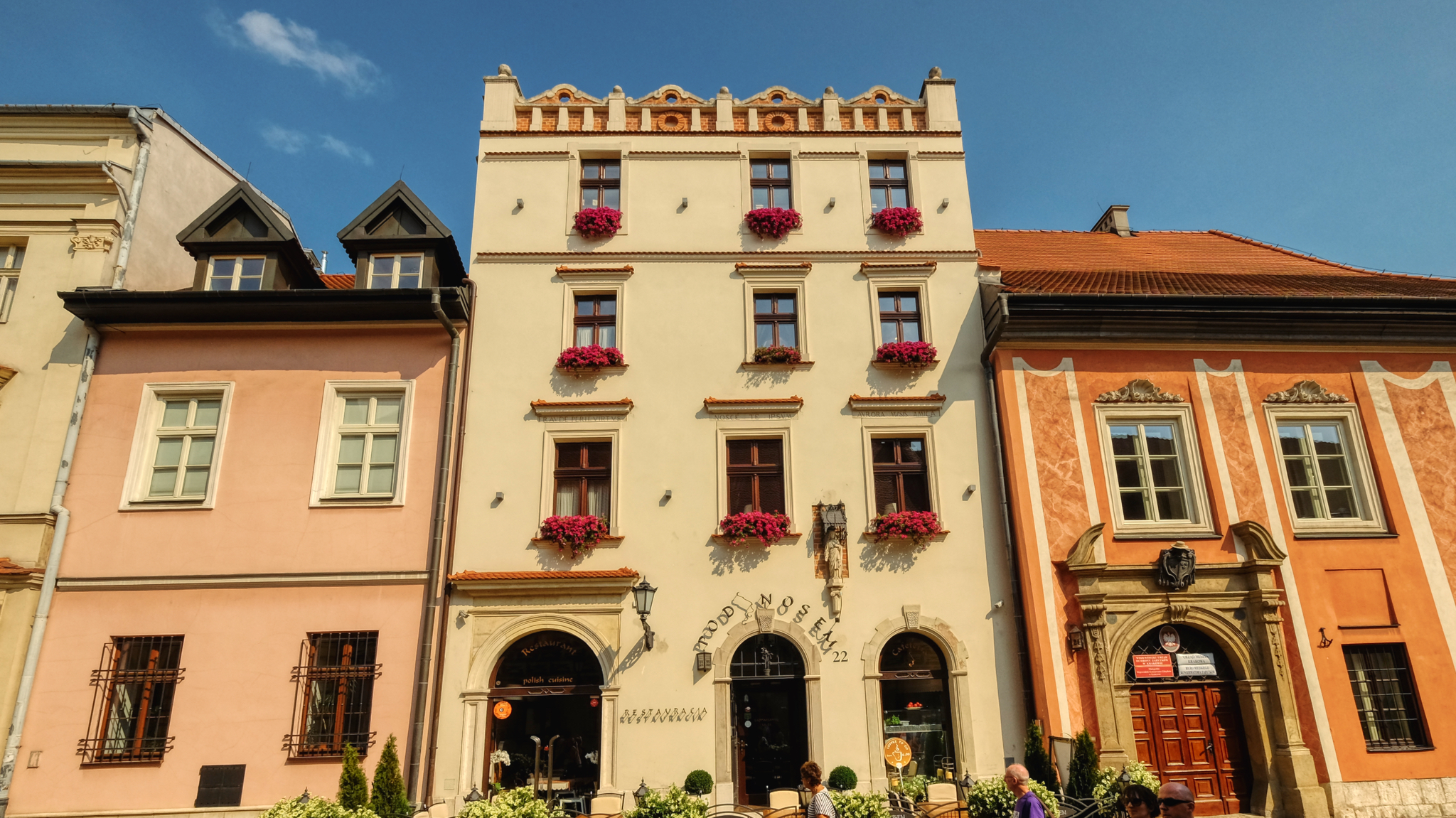 Beautifully decorated and adorned cityscape.
Beautifully decorated and adorned cityscape.
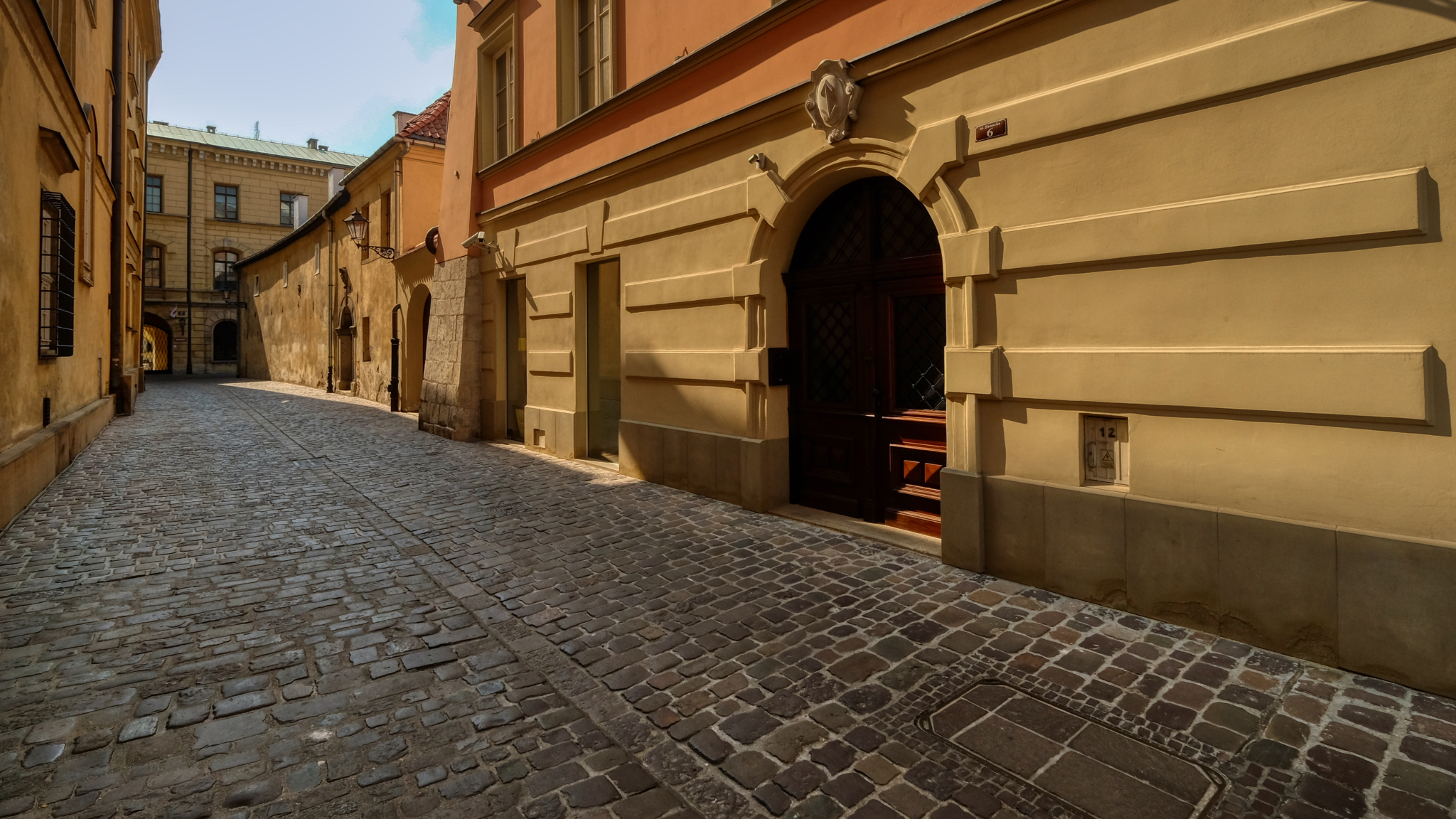 Monumental architecture along a cobbled alley.
Monumental architecture along a cobbled alley.
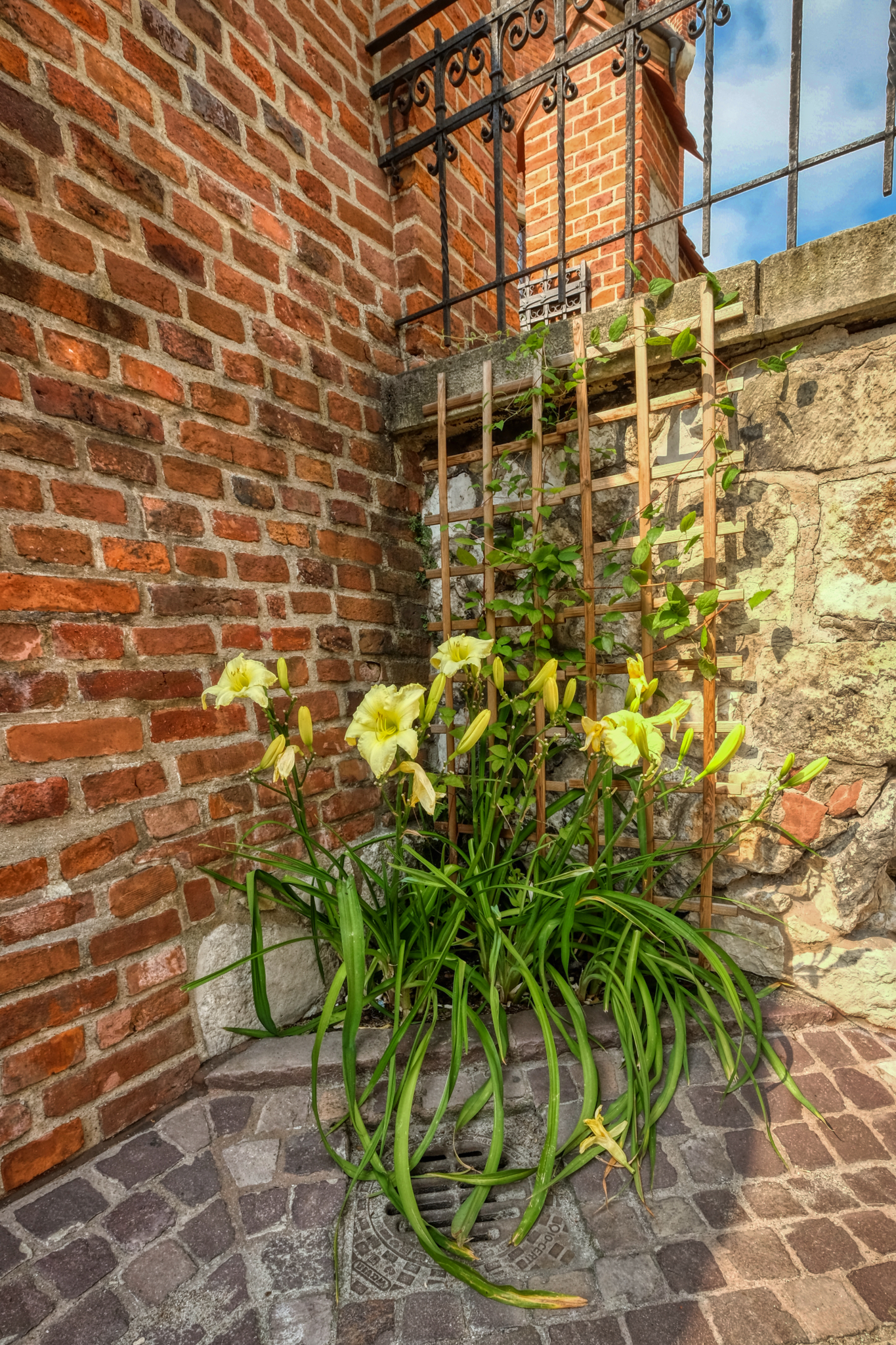 Little beauty arrangements here and there throughout this charming old city.
Little beauty arrangements here and there throughout this charming old city.
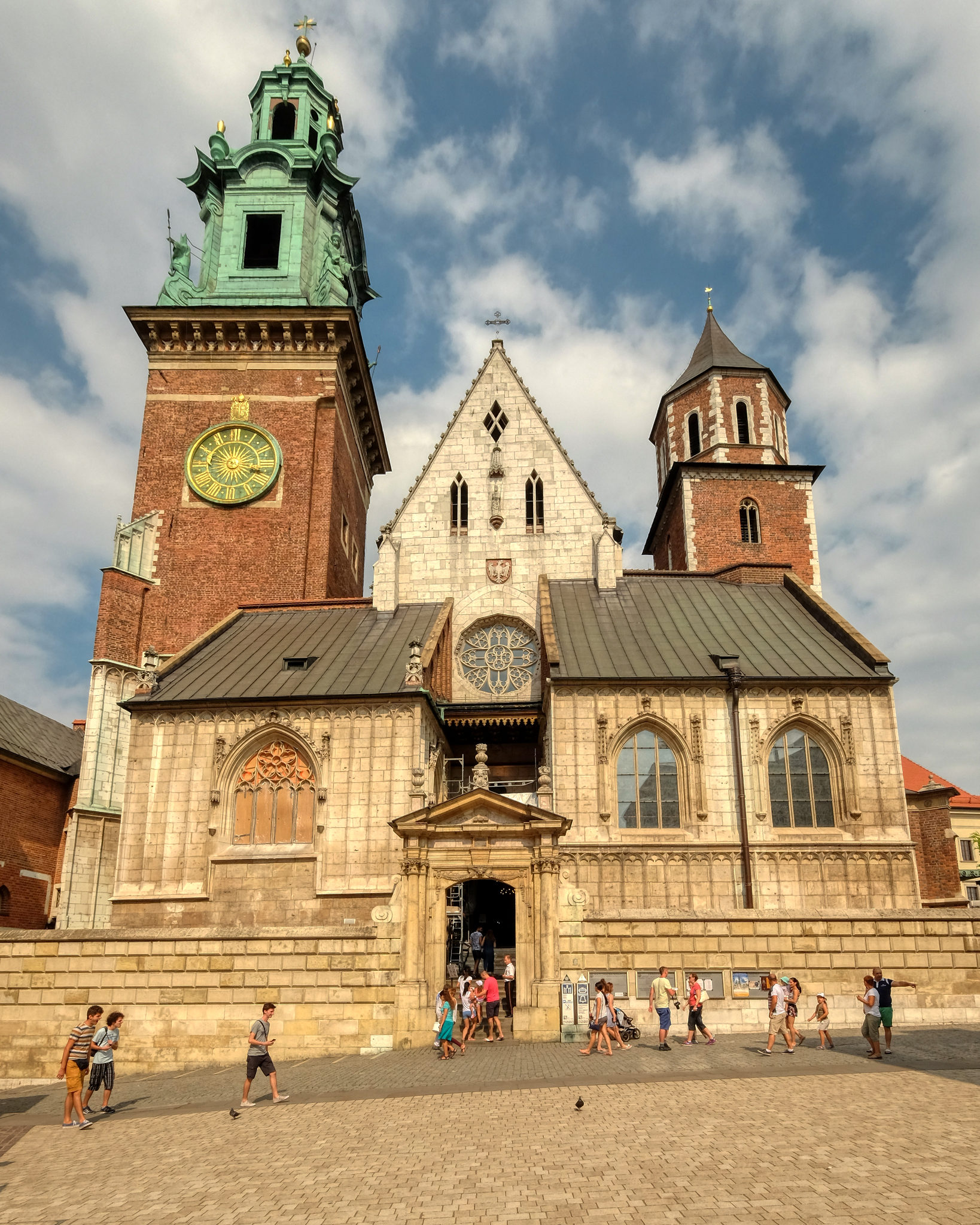 The castle chapel square.
The castle chapel square.
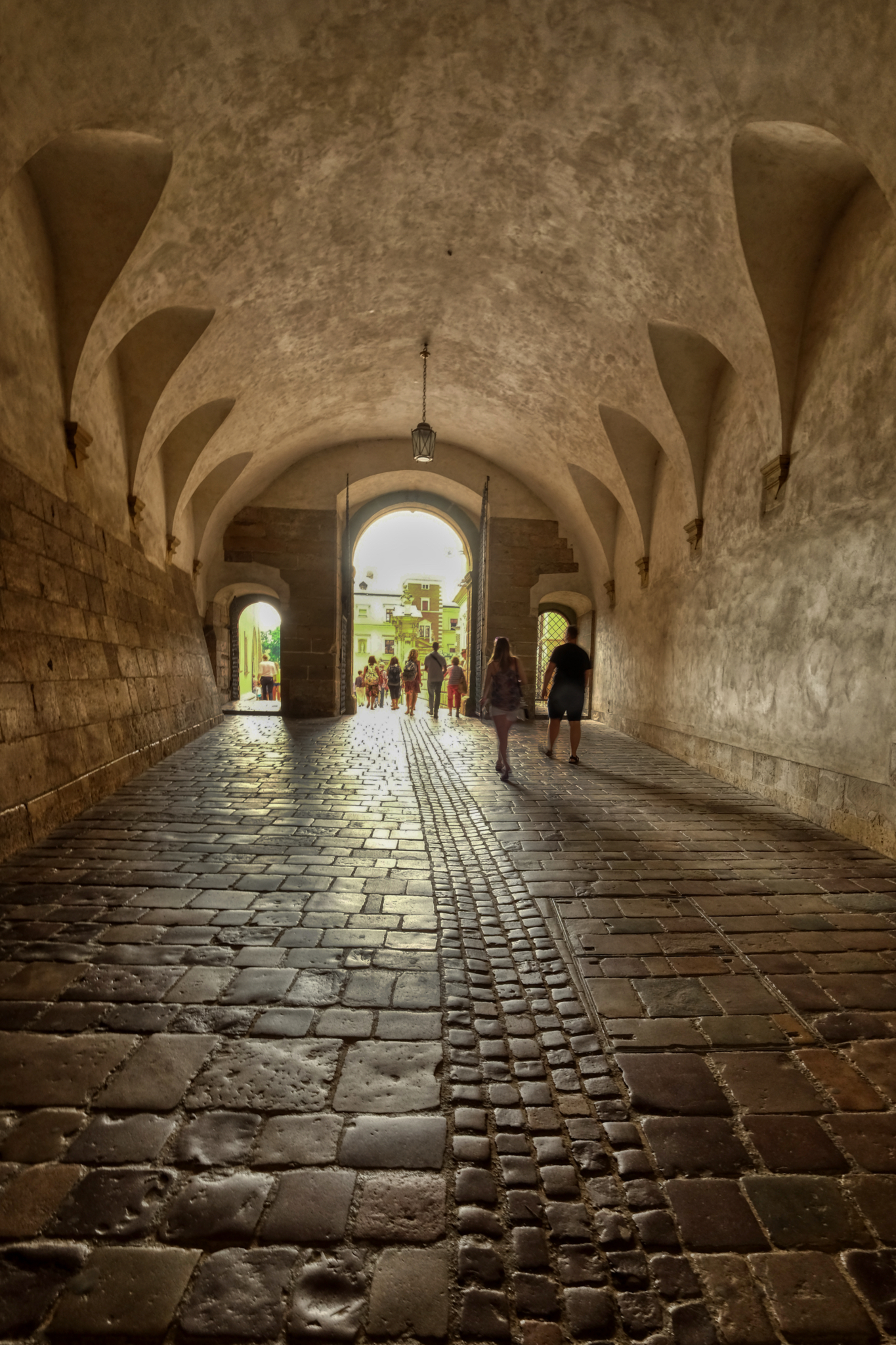 A passage to . . . ?
A passage to . . . ?
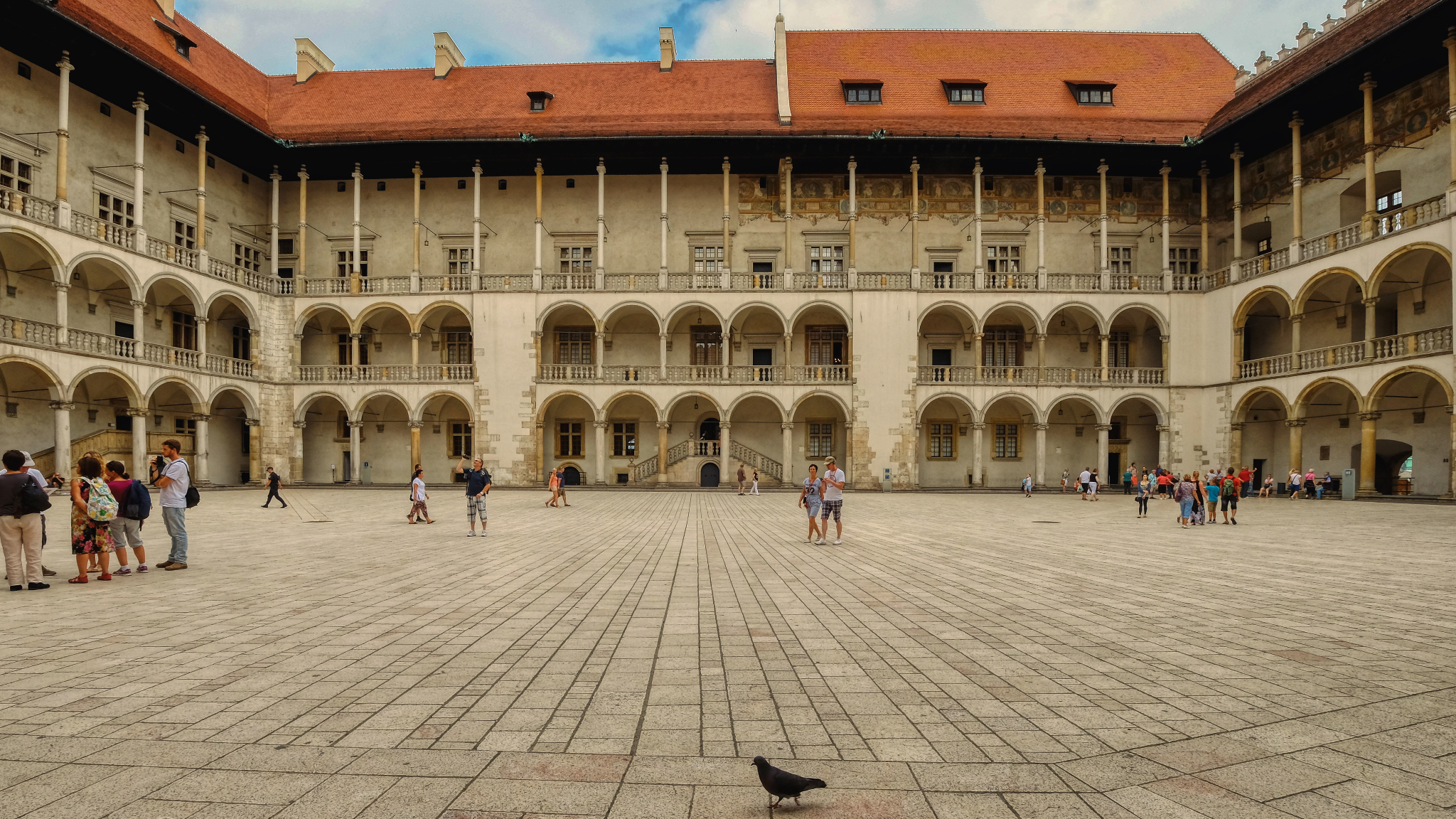 The courtyard of Kraców's Wawel Castle.
The courtyard of Kraców's Wawel Castle.
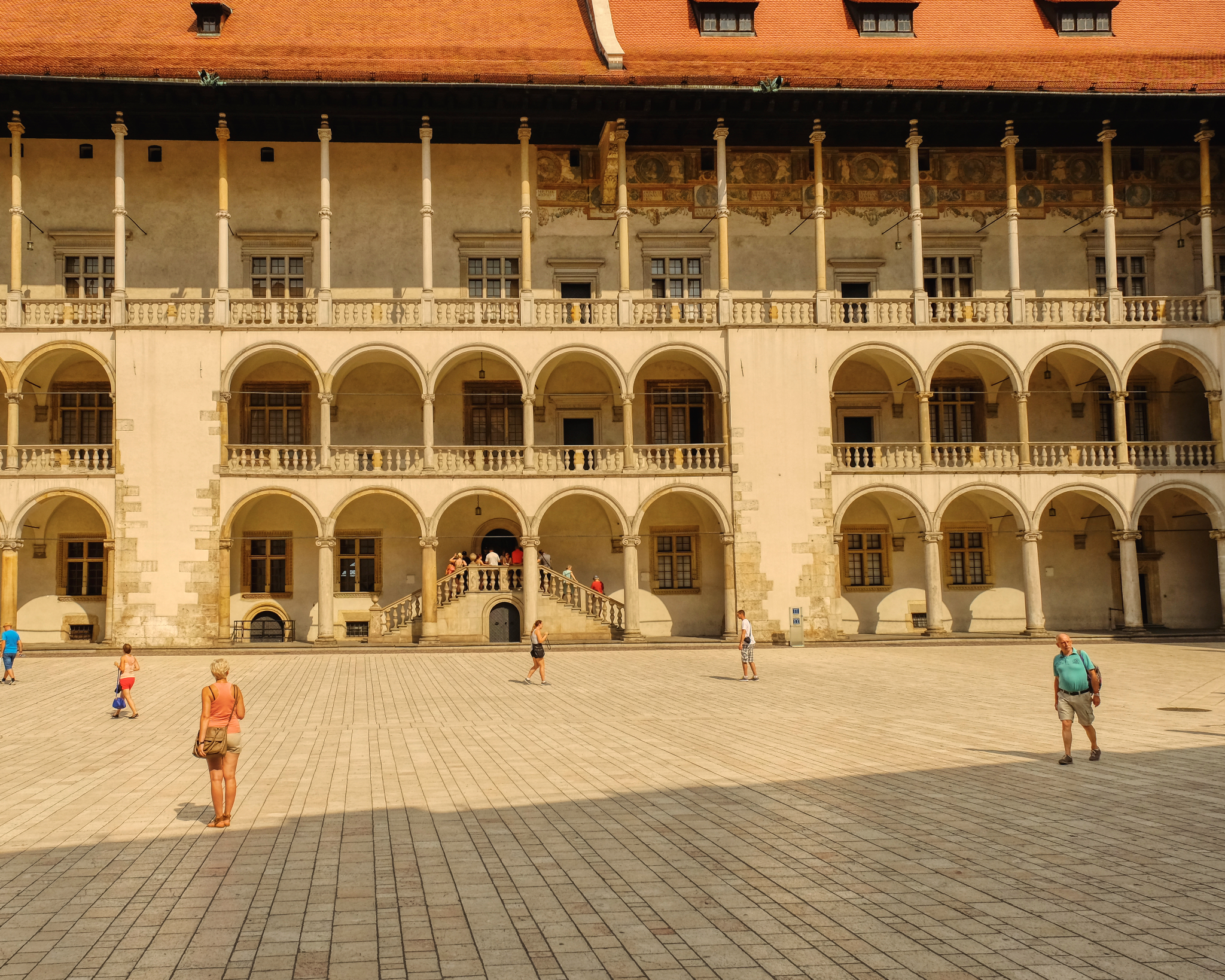 The castle courtyard . . . layers of balconies and doors . . . what mysteries have taken place here?
The castle courtyard . . . layers of balconies and doors . . . what mysteries have taken place here?
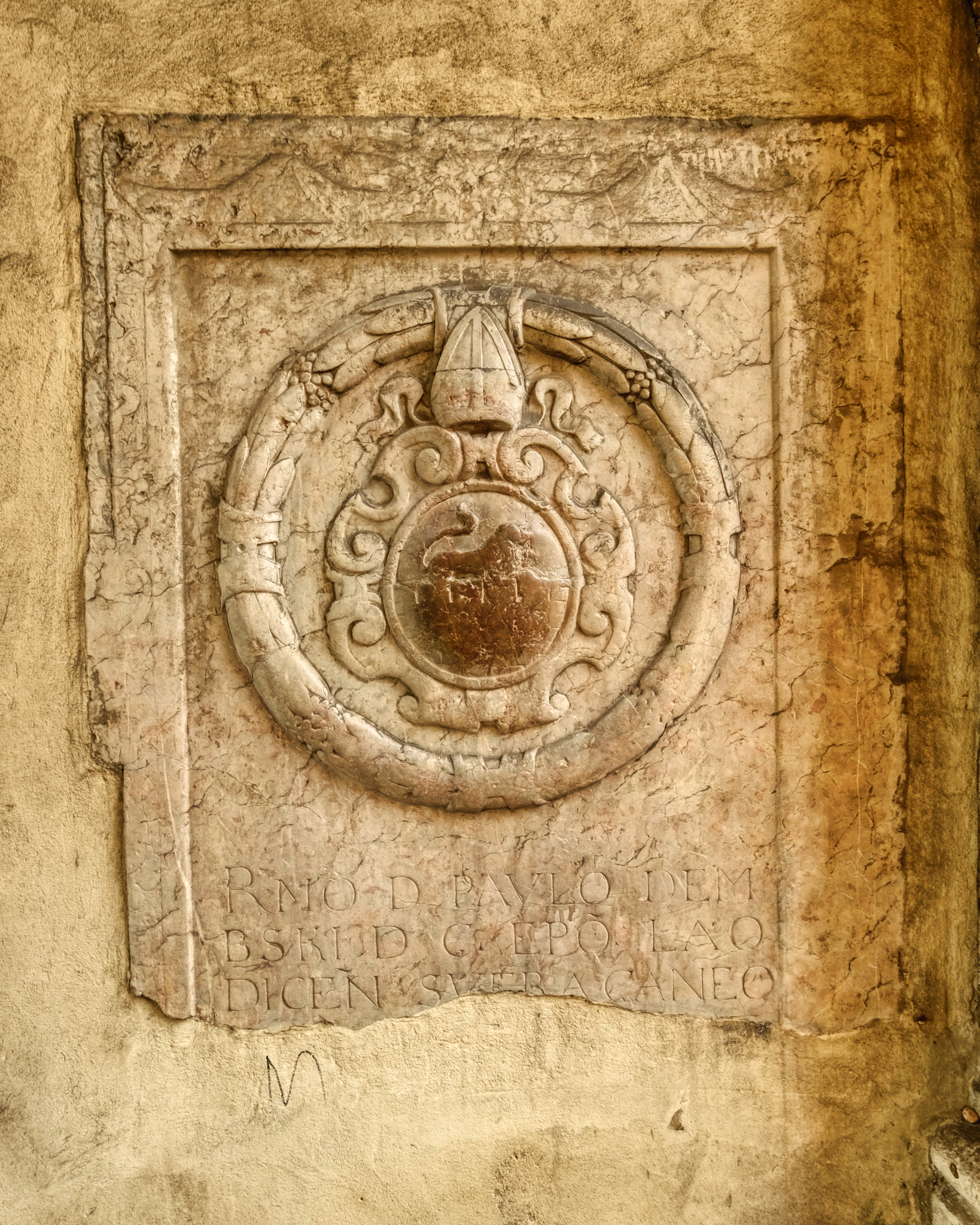 Turn your head one way and you see a royal insignia . . . turn it the other way . . .
Turn your head one way and you see a royal insignia . . . turn it the other way . . .
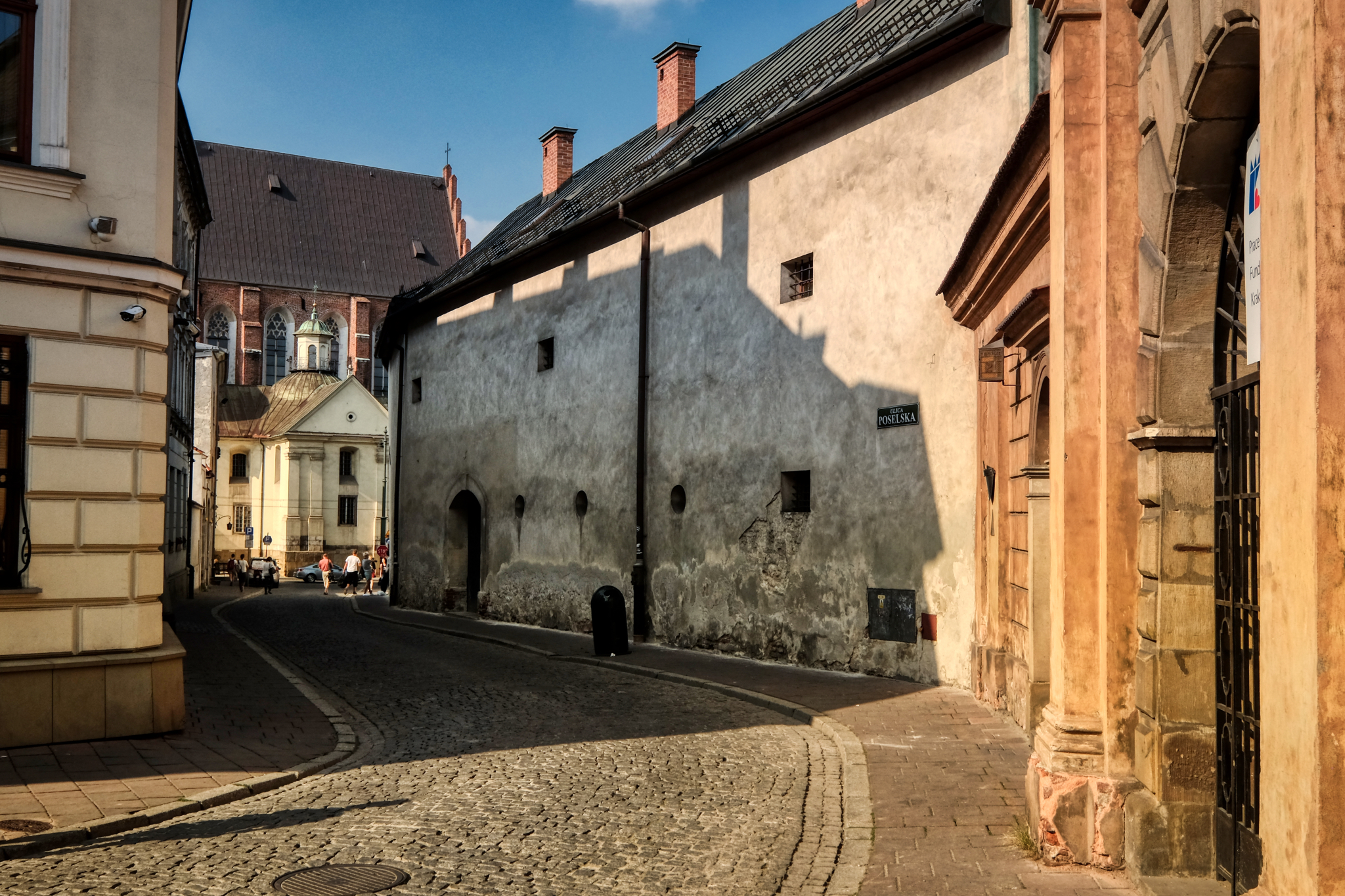 Strolling along the narrow side streets next to the castle.
Strolling along the narrow side streets next to the castle.
 . . . the entrance to a calm peaceful old chapel . . .
. . . the entrance to a calm peaceful old chapel . . .
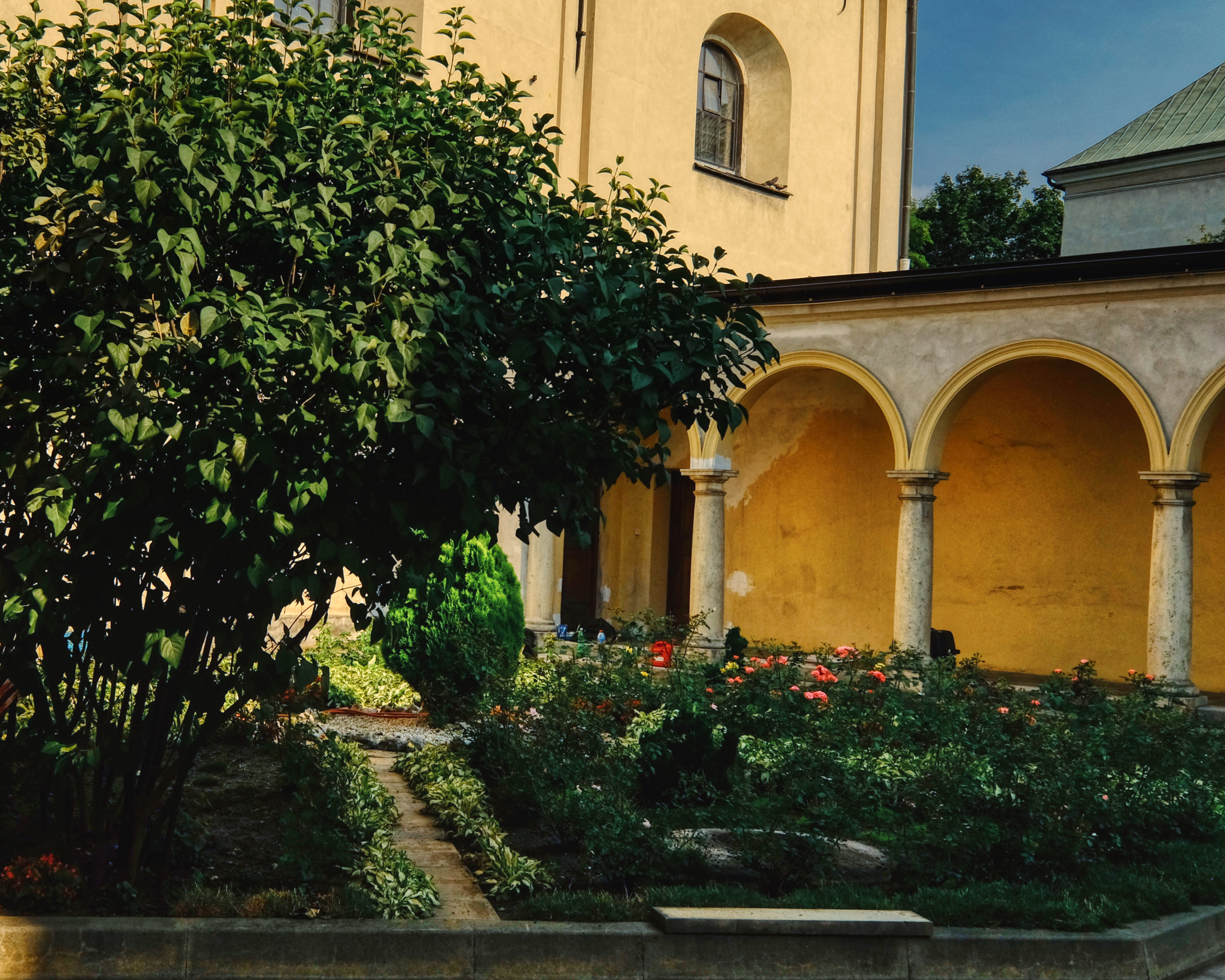 . . . and the quiet garden within.
. . . and the quiet garden within.
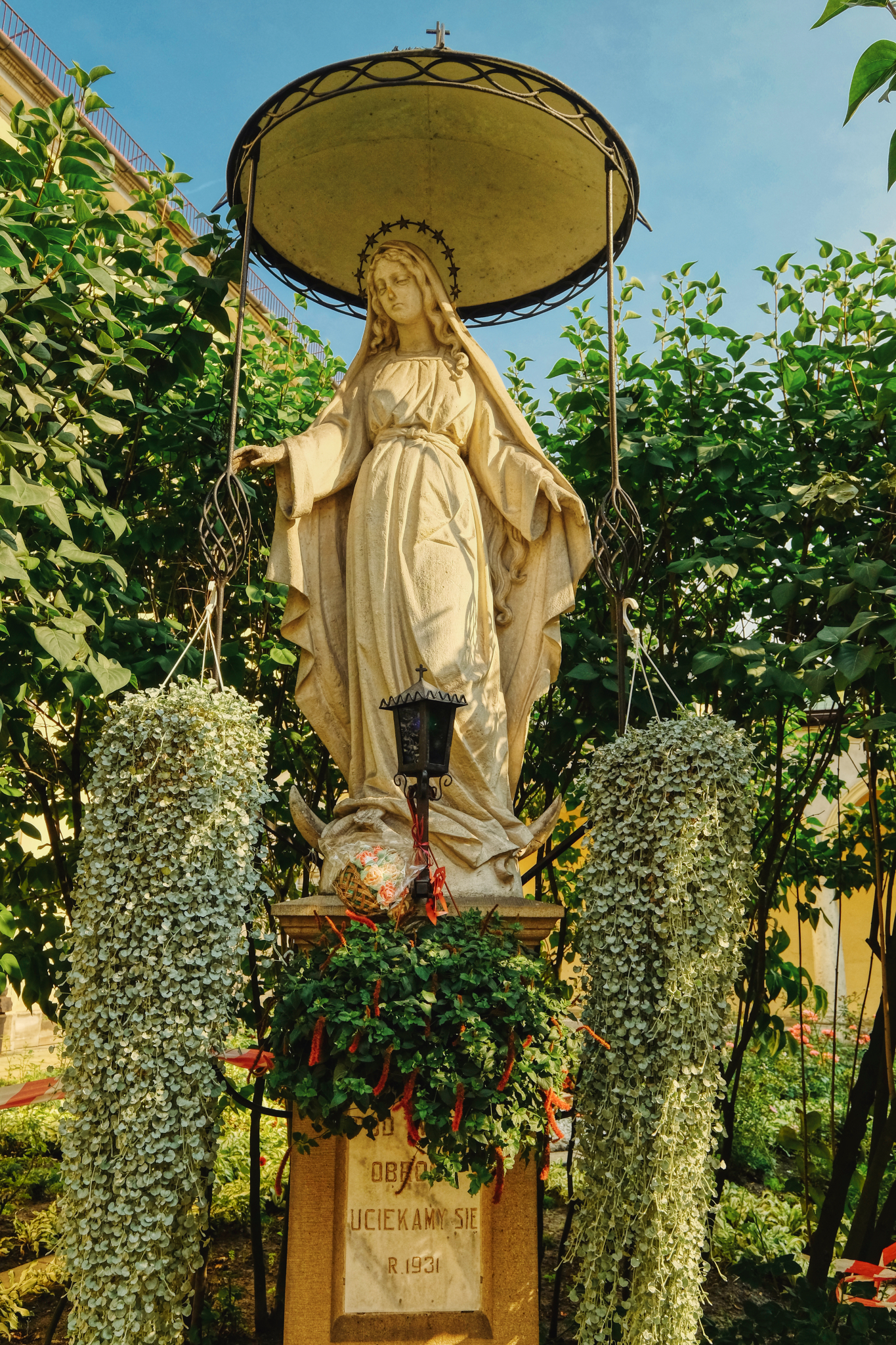 One of thousands of statues of Mary throughout the city. Poland is still a heavily Catholic country.
One of thousands of statues of Mary throughout the city. Poland is still a heavily Catholic country.
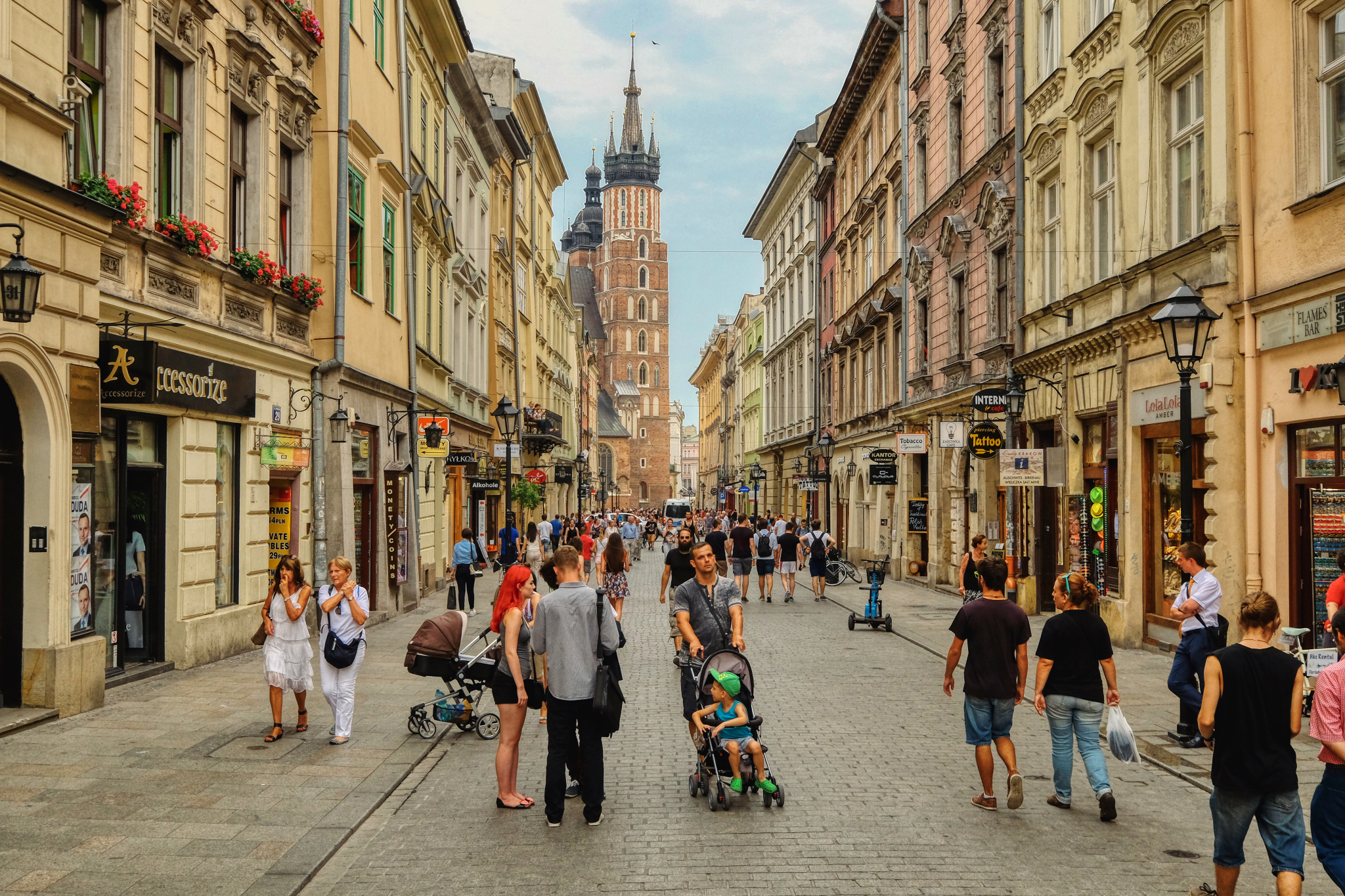 The attractive main shopping area, Floriańsk Street.
The attractive main shopping area, Floriańsk Street.
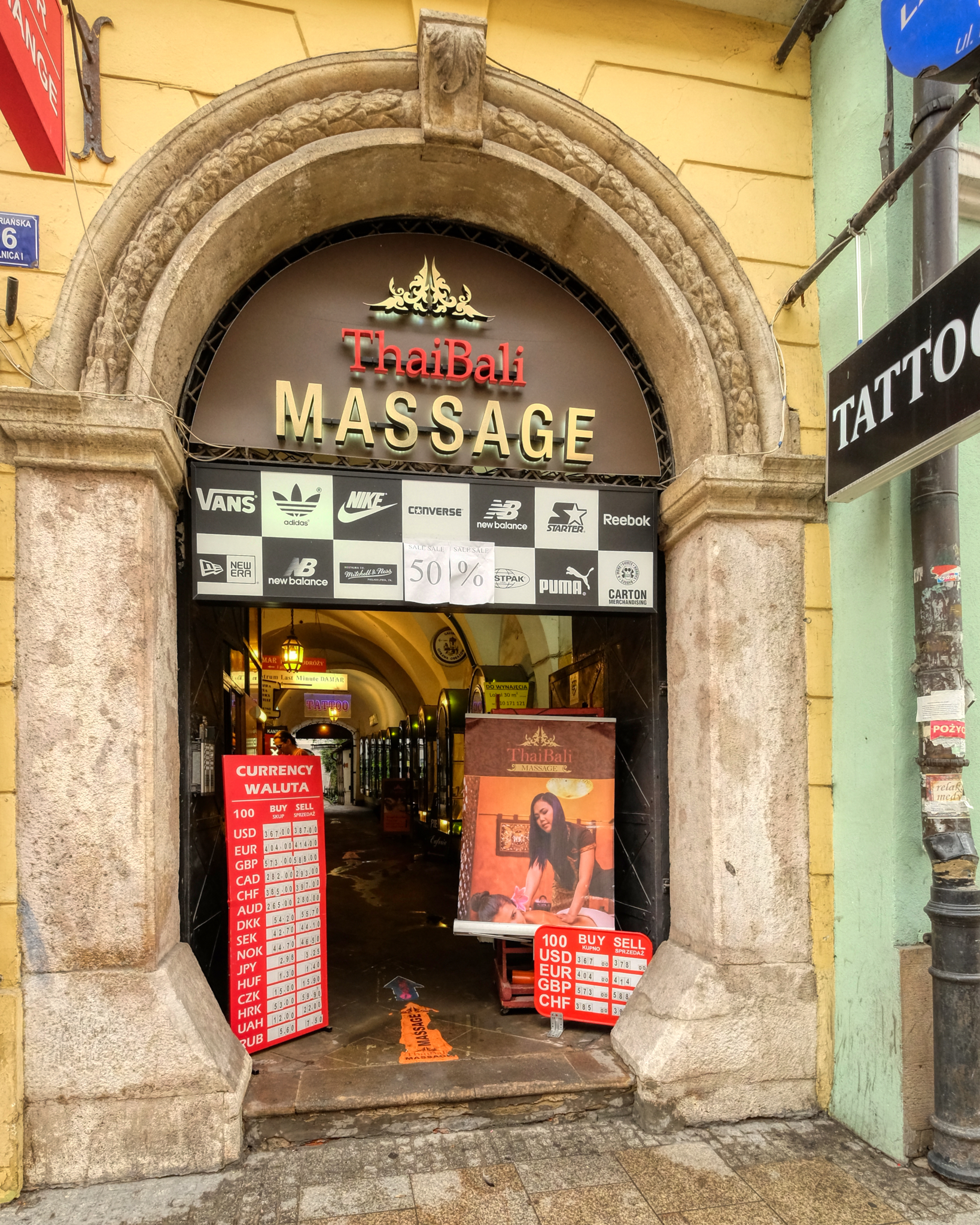 Thai massage! We were tempted!!! Some of the very old buildings held modern shopping malls in their interiors.
Thai massage! We were tempted!!! Some of the very old buildings held modern shopping malls in their interiors.
 Interesting floor in the passage to a high-end shopping galleria.
Interesting floor in the passage to a high-end shopping galleria.
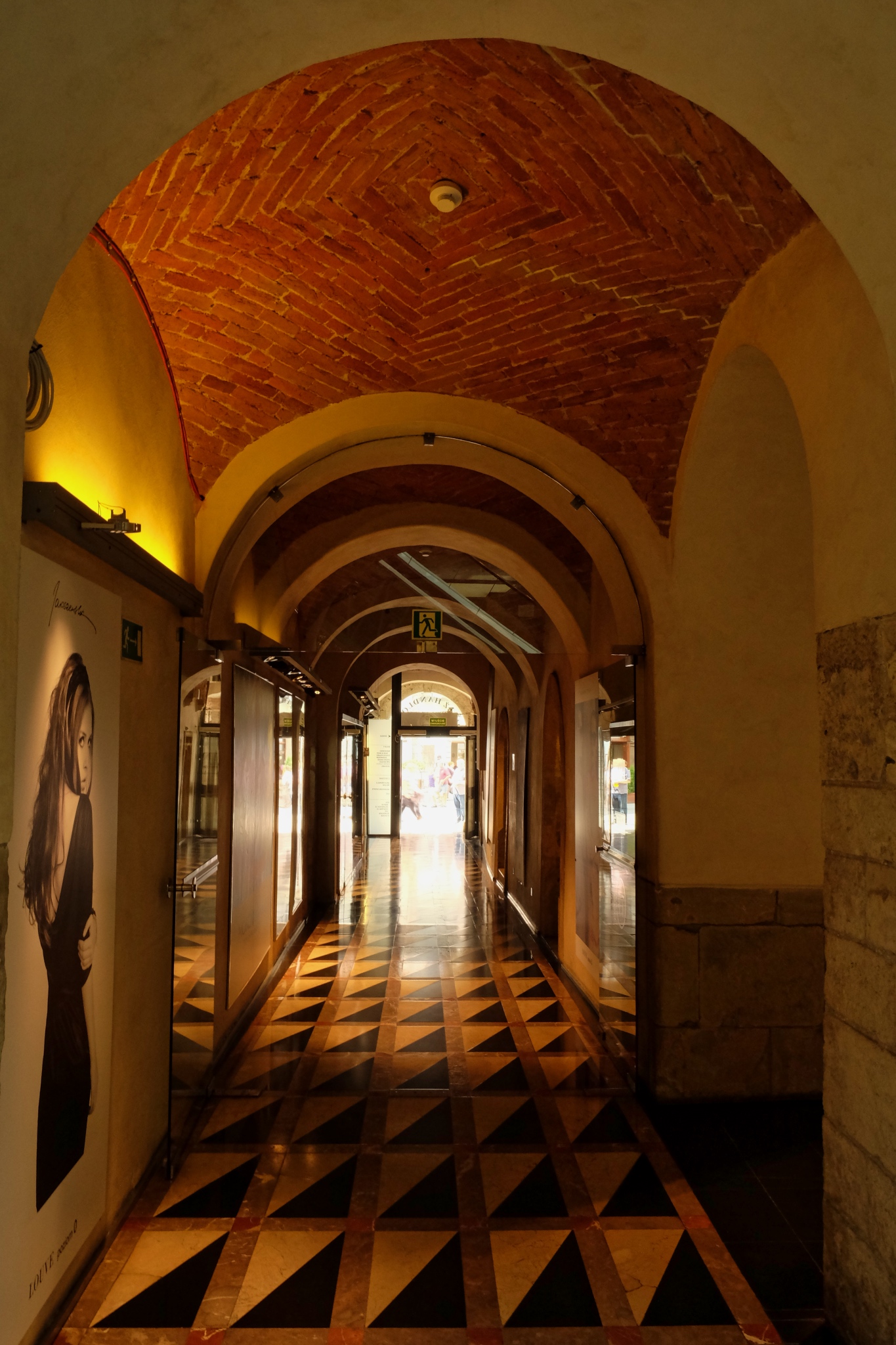 Nice the way the old features have been integrated into the modern shopping area.
Nice the way the old features have been integrated into the modern shopping area.
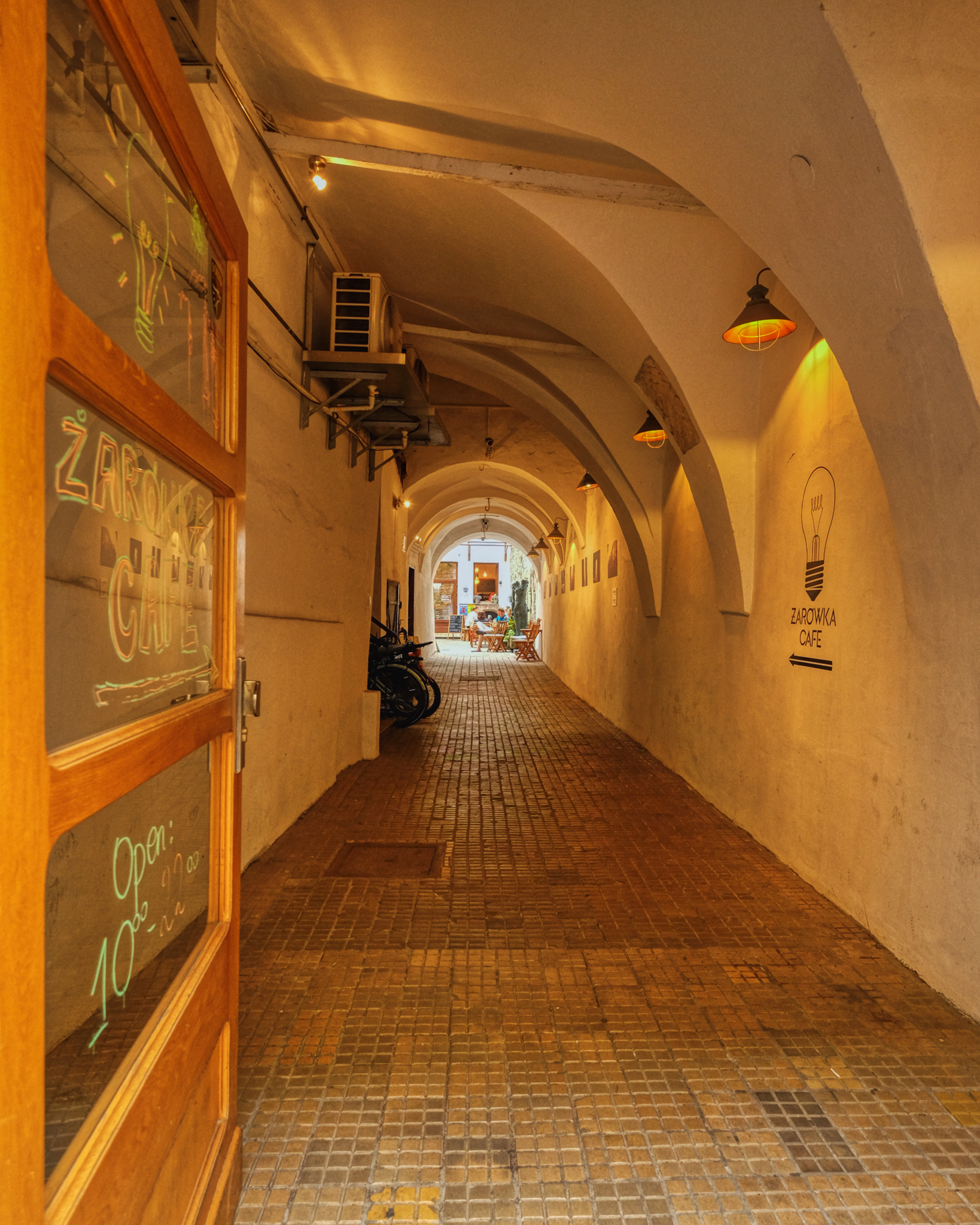 It was so interesting how many little passages lead back into courtyards filled with shops and restaurants. I would love to live in this city!
It was so interesting how many little passages lead back into courtyards filled with shops and restaurants. I would love to live in this city!
 Exploring the little streets, arched passages, and small alleys always lead to big surprises.
Exploring the little streets, arched passages, and small alleys always lead to big surprises.
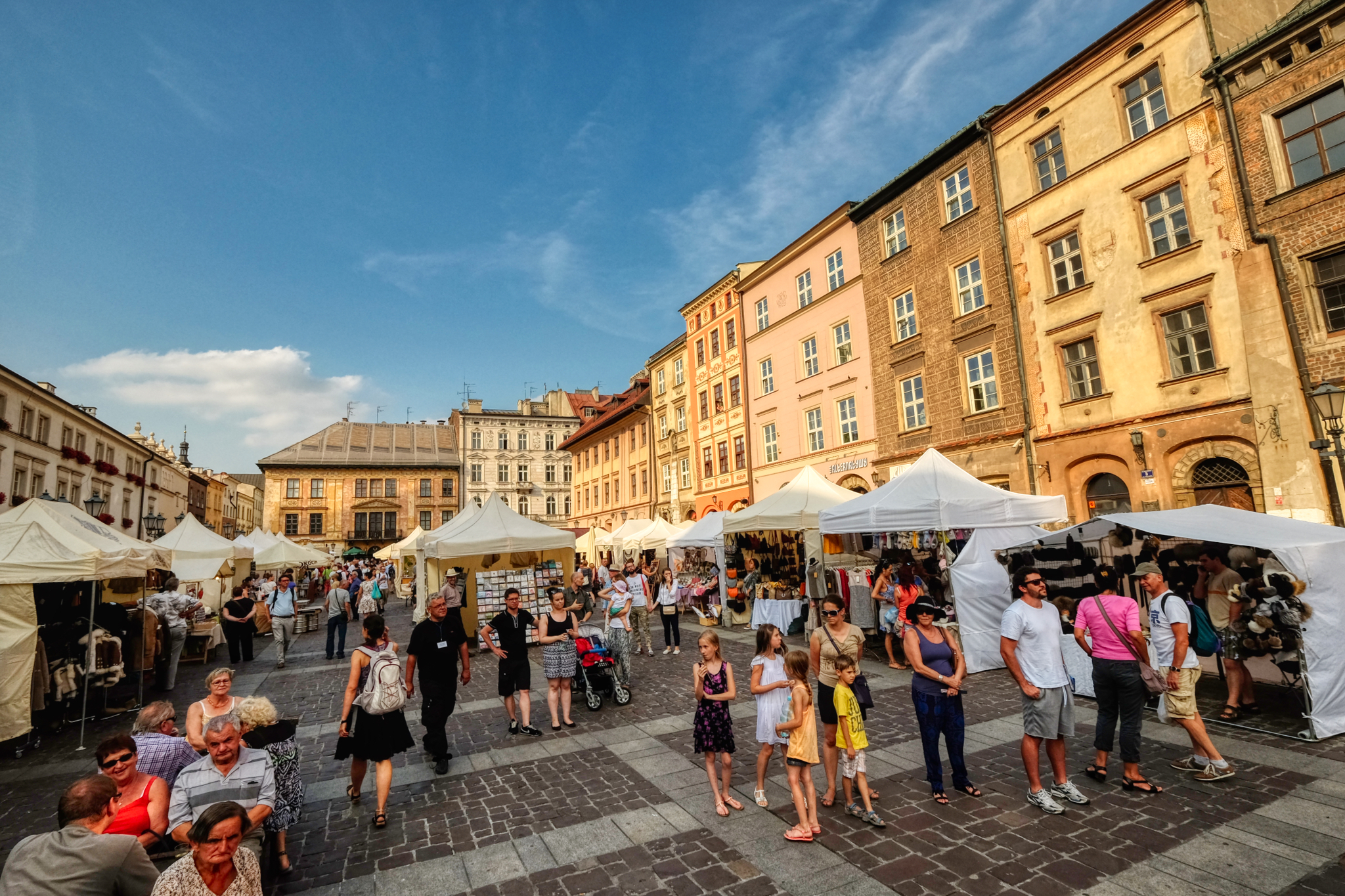 A discovery! A market square! We spent quite a long time here pawing everything!
A discovery! A market square! We spent quite a long time here pawing everything!
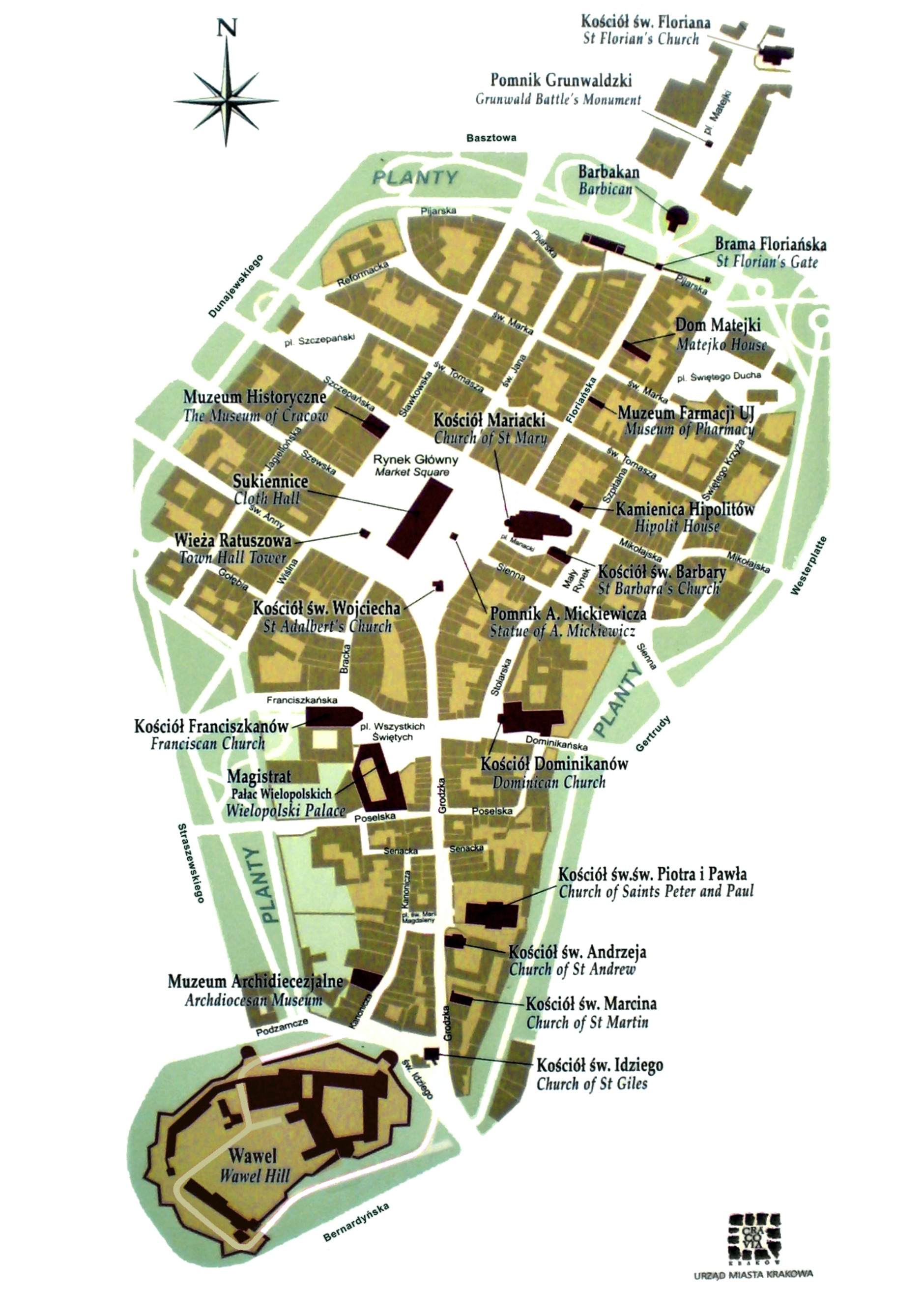 Kraków is an excellent 'walking city' to spend several days wandering around enjoying yourself.
Kraków is an excellent 'walking city' to spend several days wandering around enjoying yourself.
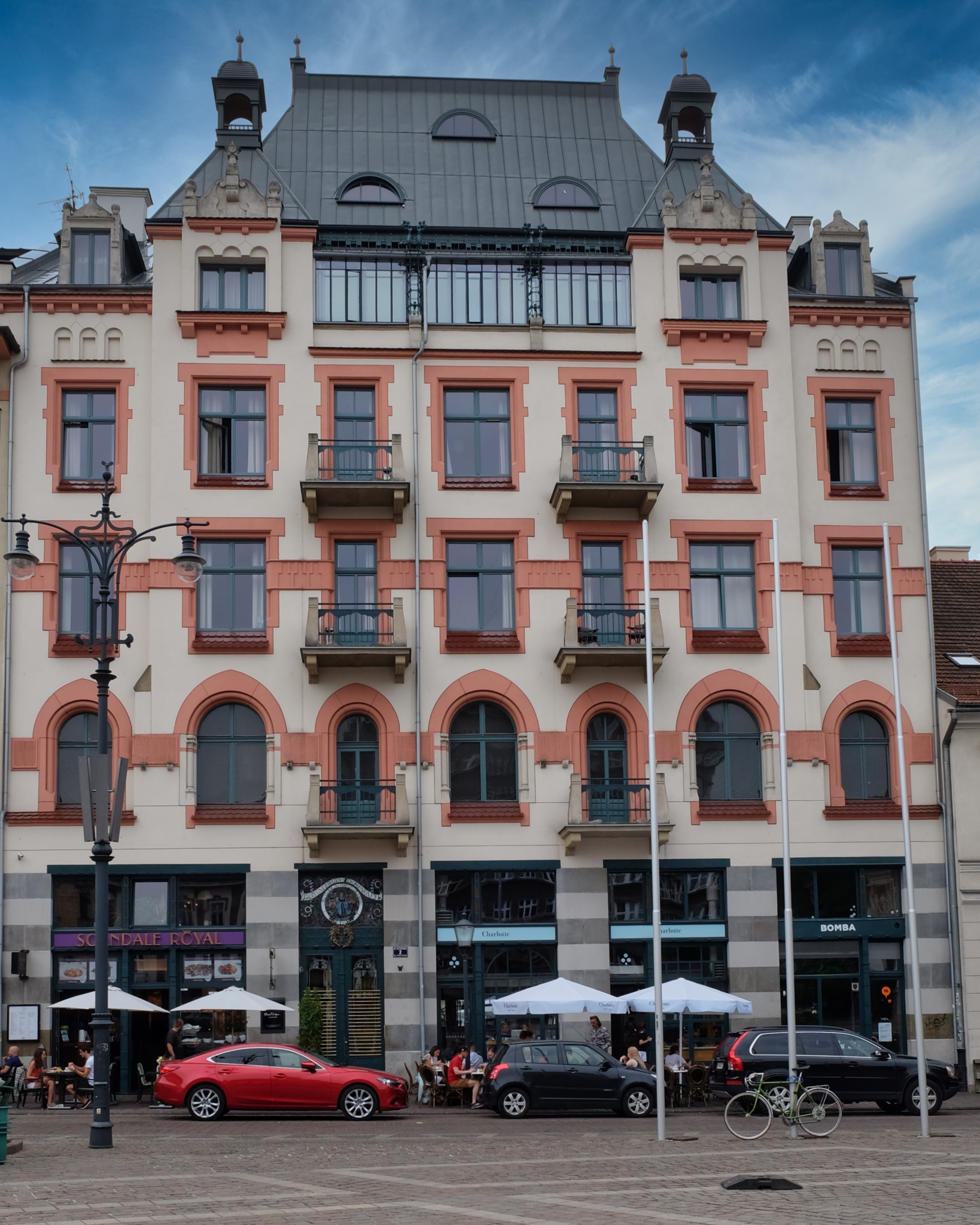 Our hotel was in this old building just off of the main square, and across from an art museum.
Our hotel was in this old building just off of the main square, and across from an art museum.
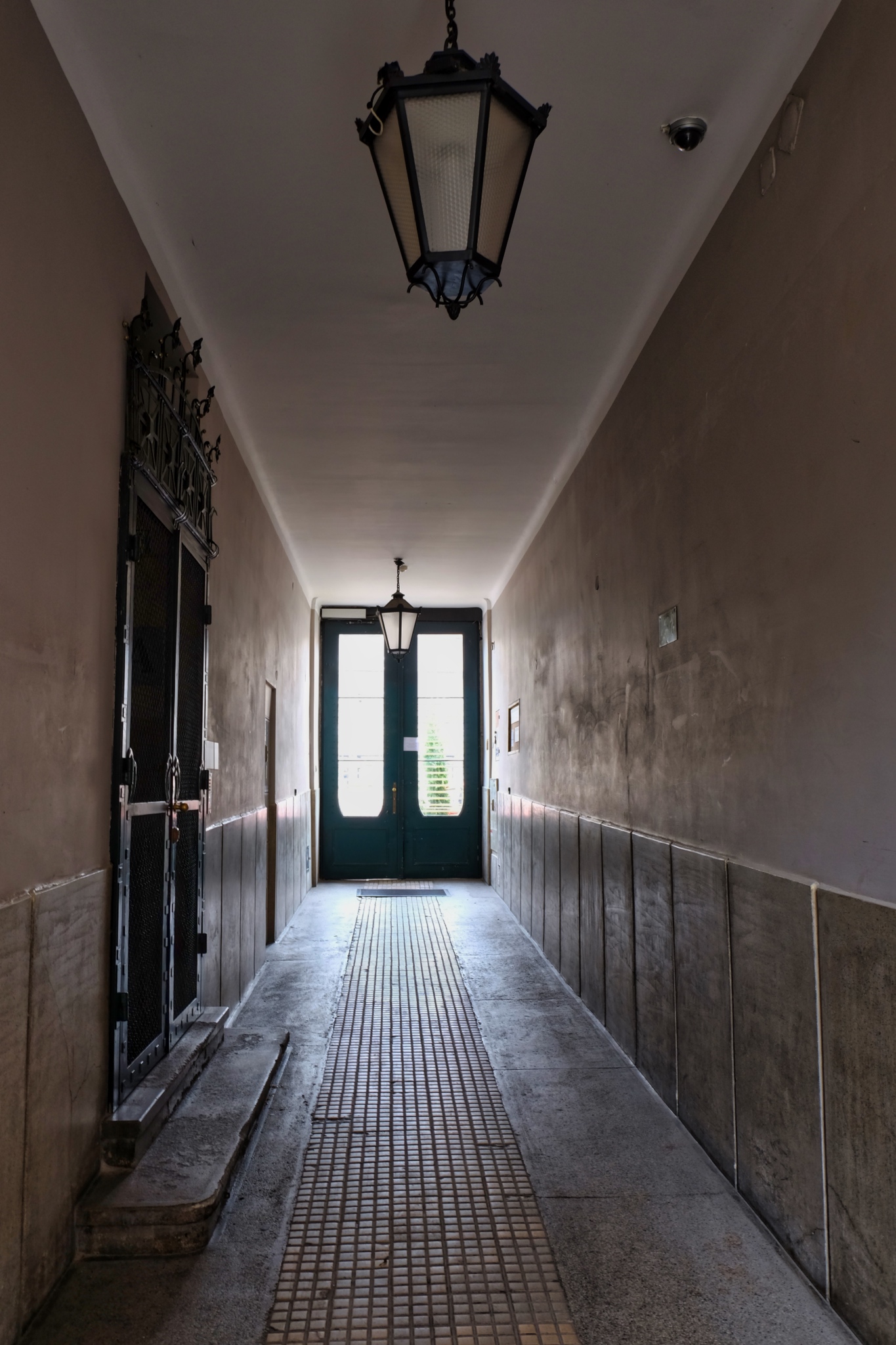 The interior can only be described as "Soviet Era Minimalism." I loved it.
The interior can only be described as "Soviet Era Minimalism." I loved it.
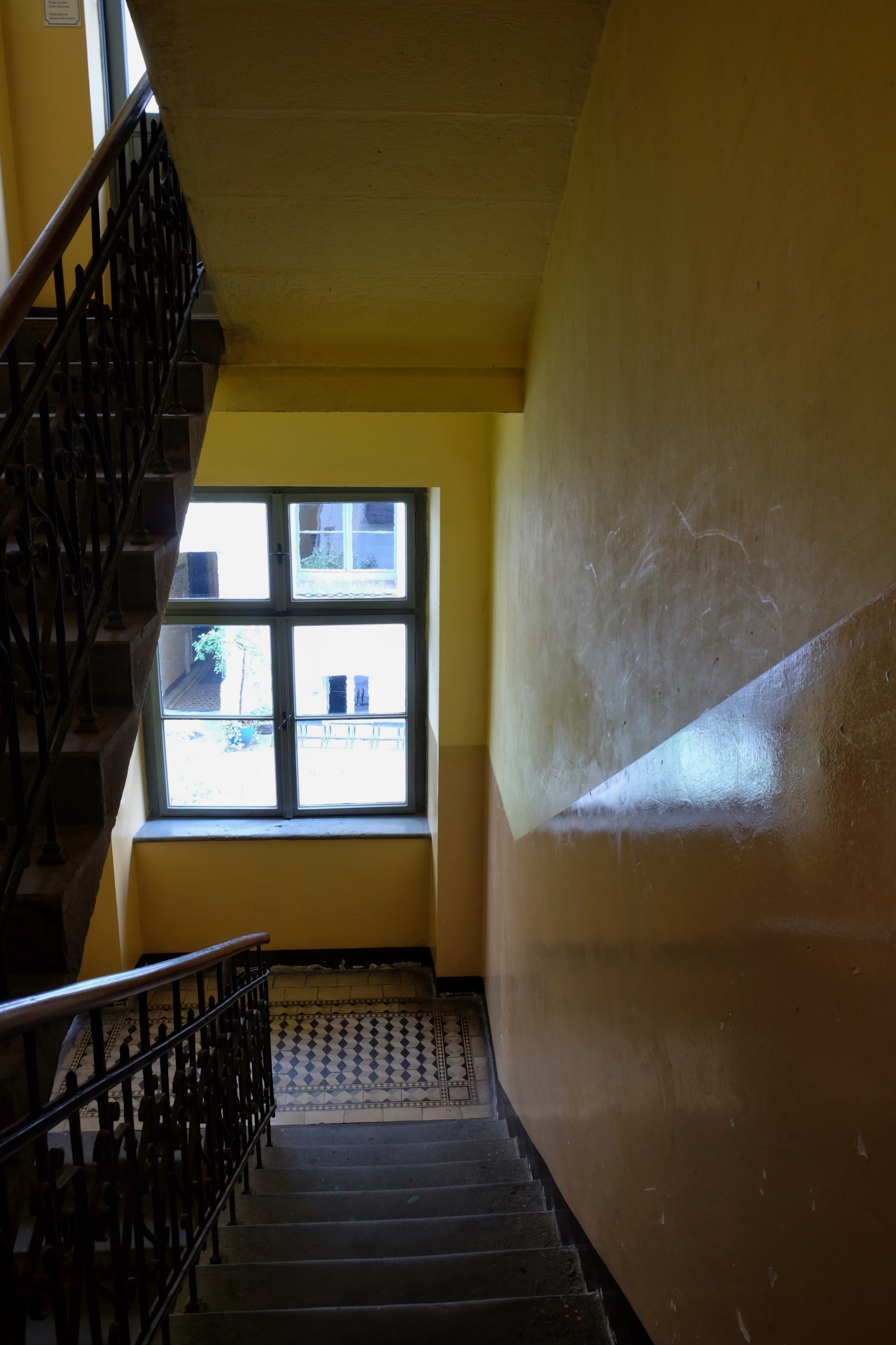 No expense was spared to create the perfect Soviet-workers-on-vacation guest quarters effect.
No expense was spared to create the perfect Soviet-workers-on-vacation guest quarters effect.
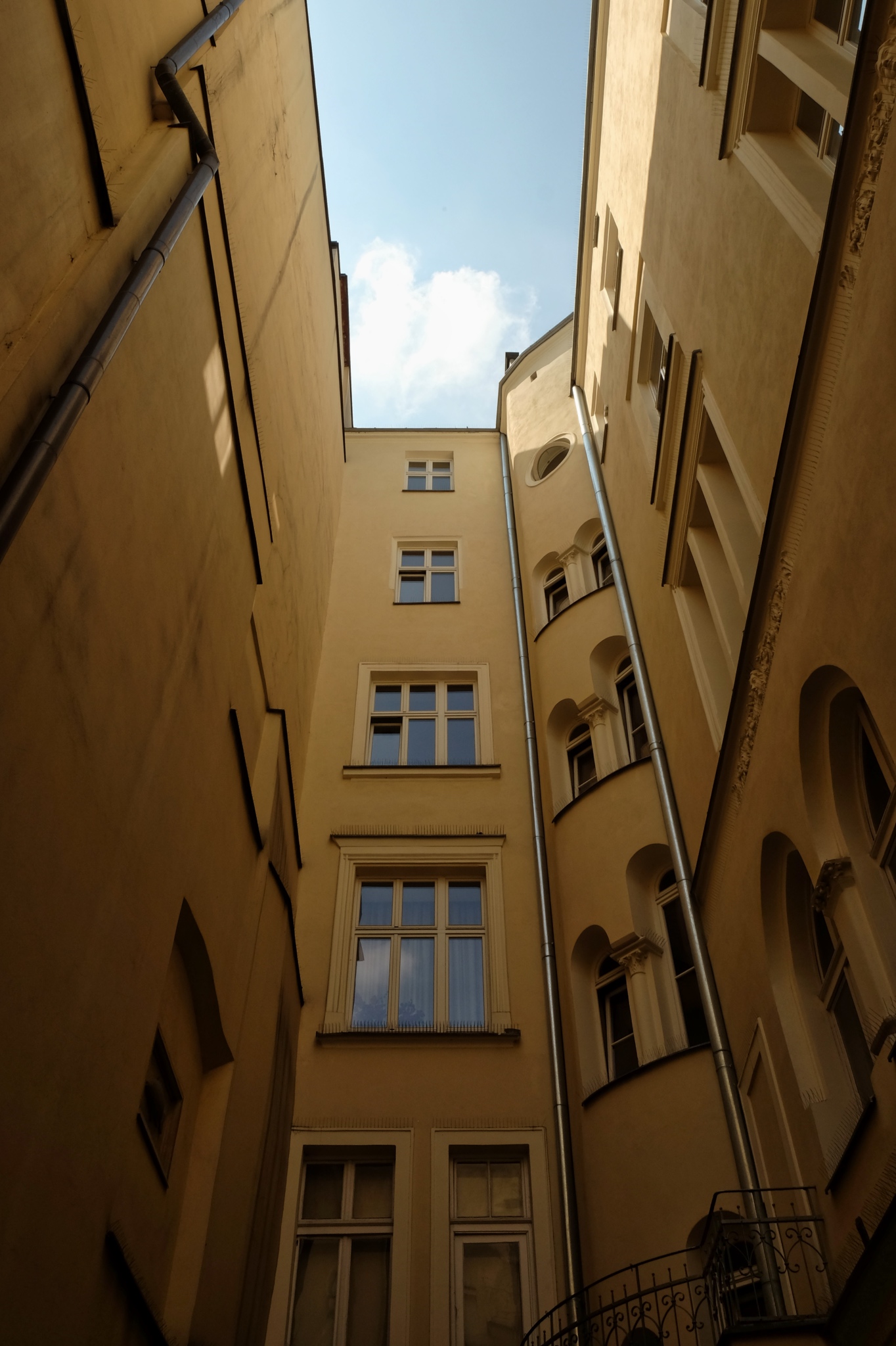 After entering the hotel from the street, you arrived in this austere courtyard to check in. Yes, I was correct, the manager said the old hotel had indeed been remodeled during the Soviet era as a workers lodge. Our room had a panoramic view onto this courtyard. We loved it: it was one block off the main city square and it was cheap!
After entering the hotel from the street, you arrived in this austere courtyard to check in. Yes, I was correct, the manager said the old hotel had indeed been remodeled during the Soviet era as a workers lodge. Our room had a panoramic view onto this courtyard. We loved it: it was one block off the main city square and it was cheap!
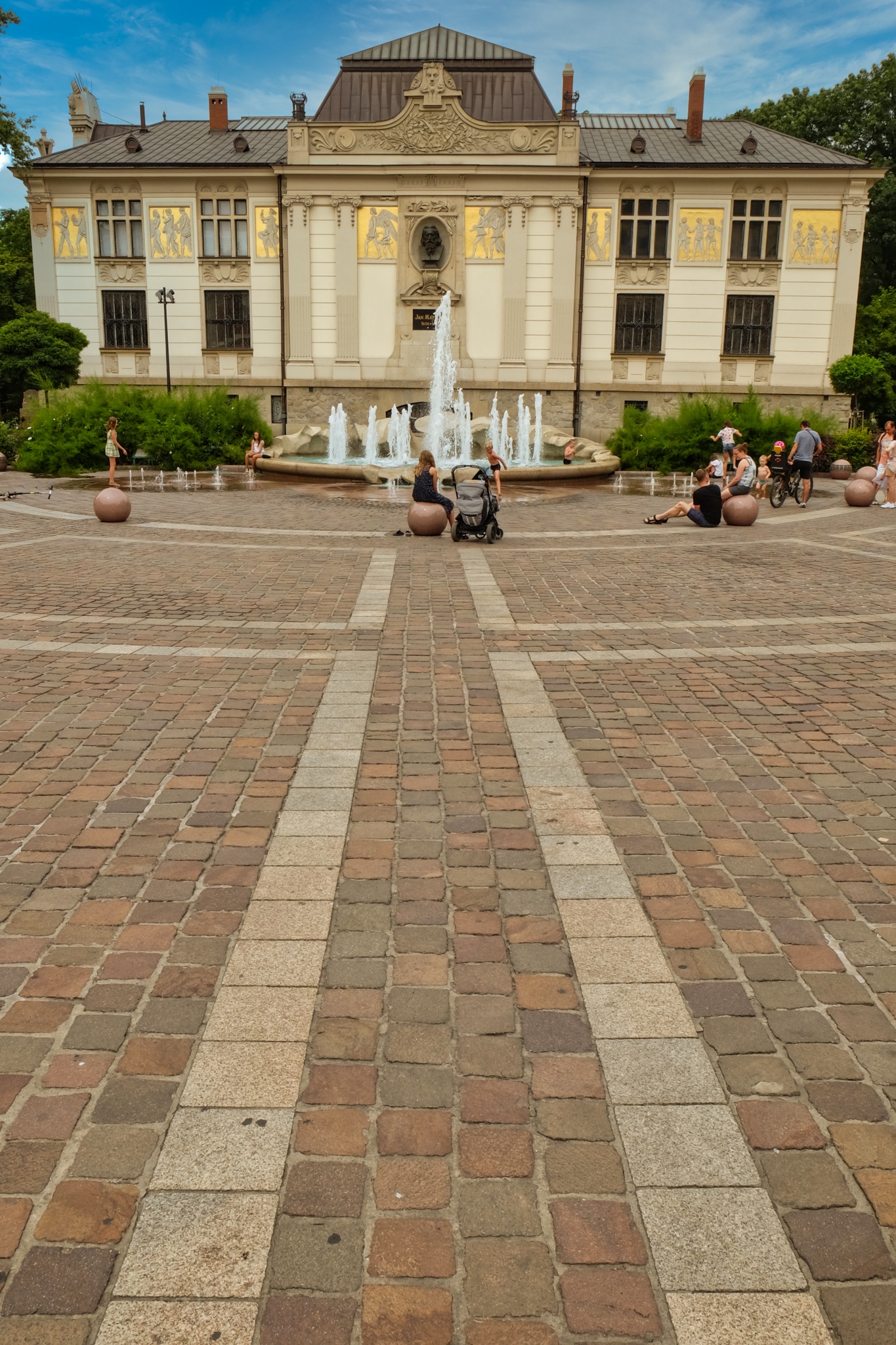 The Palace of Art (circa. 1901) was just outside our hotel.
The Palace of Art (circa. 1901) was just outside our hotel.
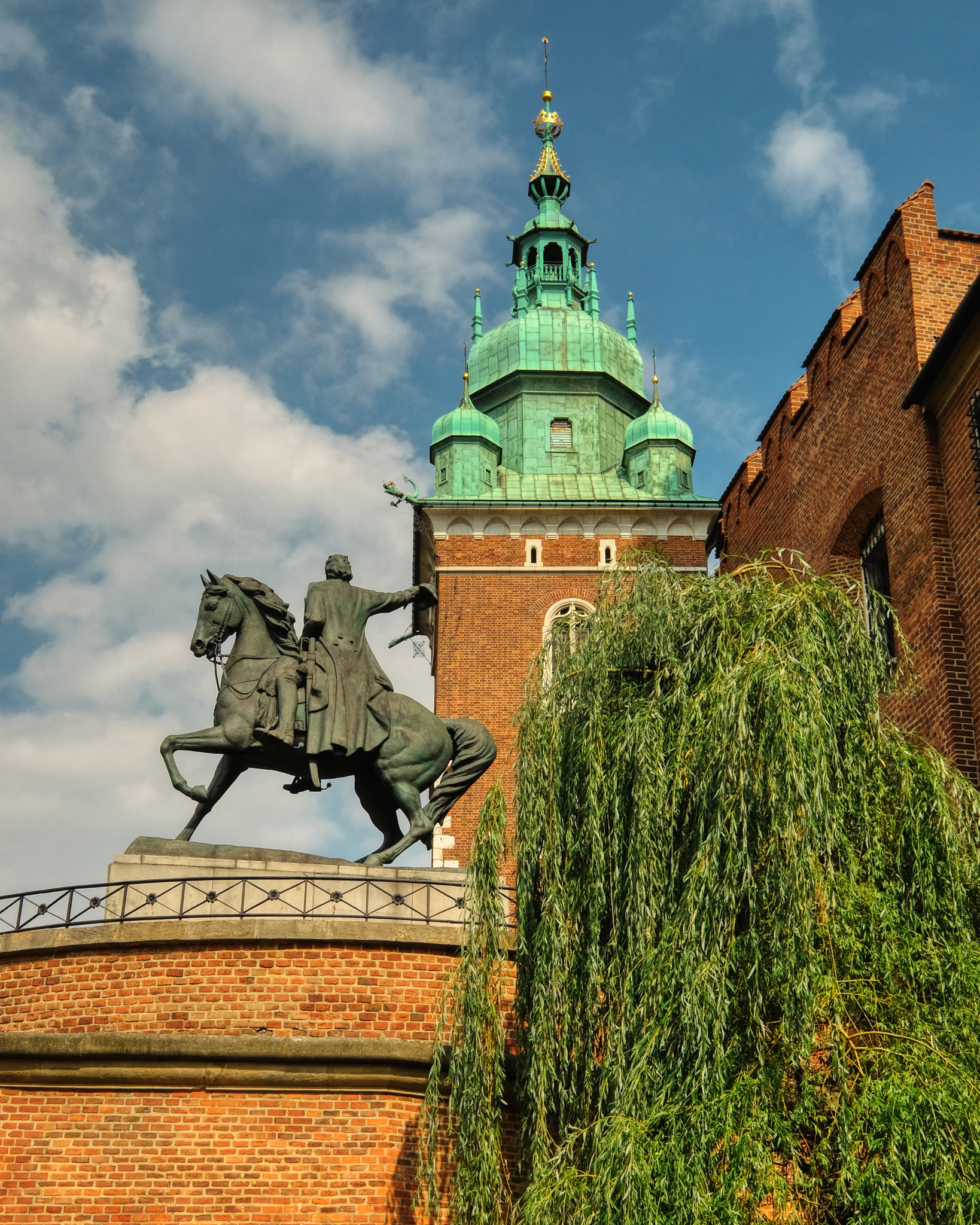 We spent three days just wandering around this marvelous city.
We spent three days just wandering around this marvelous city.
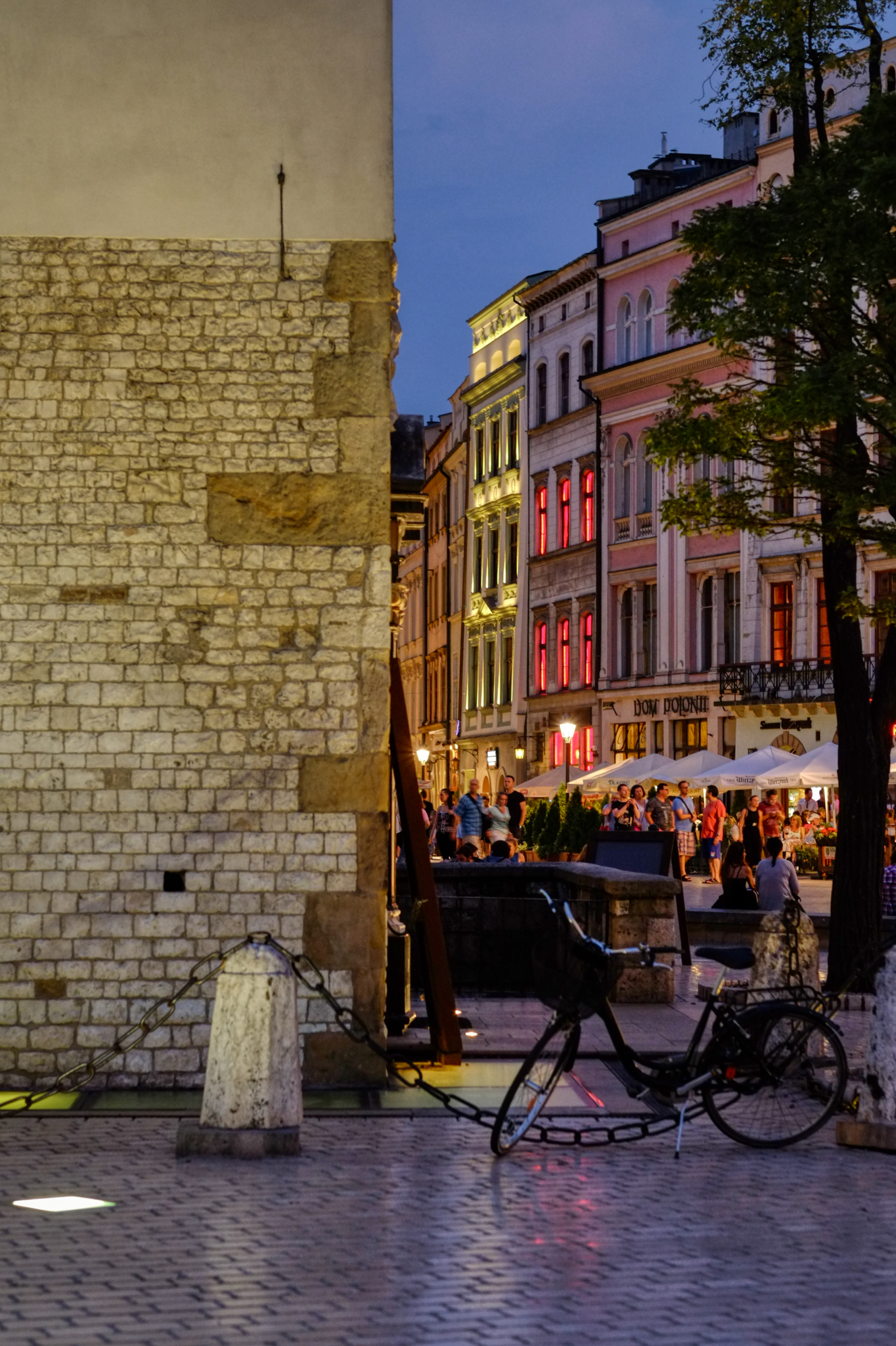 We loved Kraków by day . . . but at night it became a colorful dreamscape!
We loved Kraków by day . . . but at night it became a colorful dreamscape!
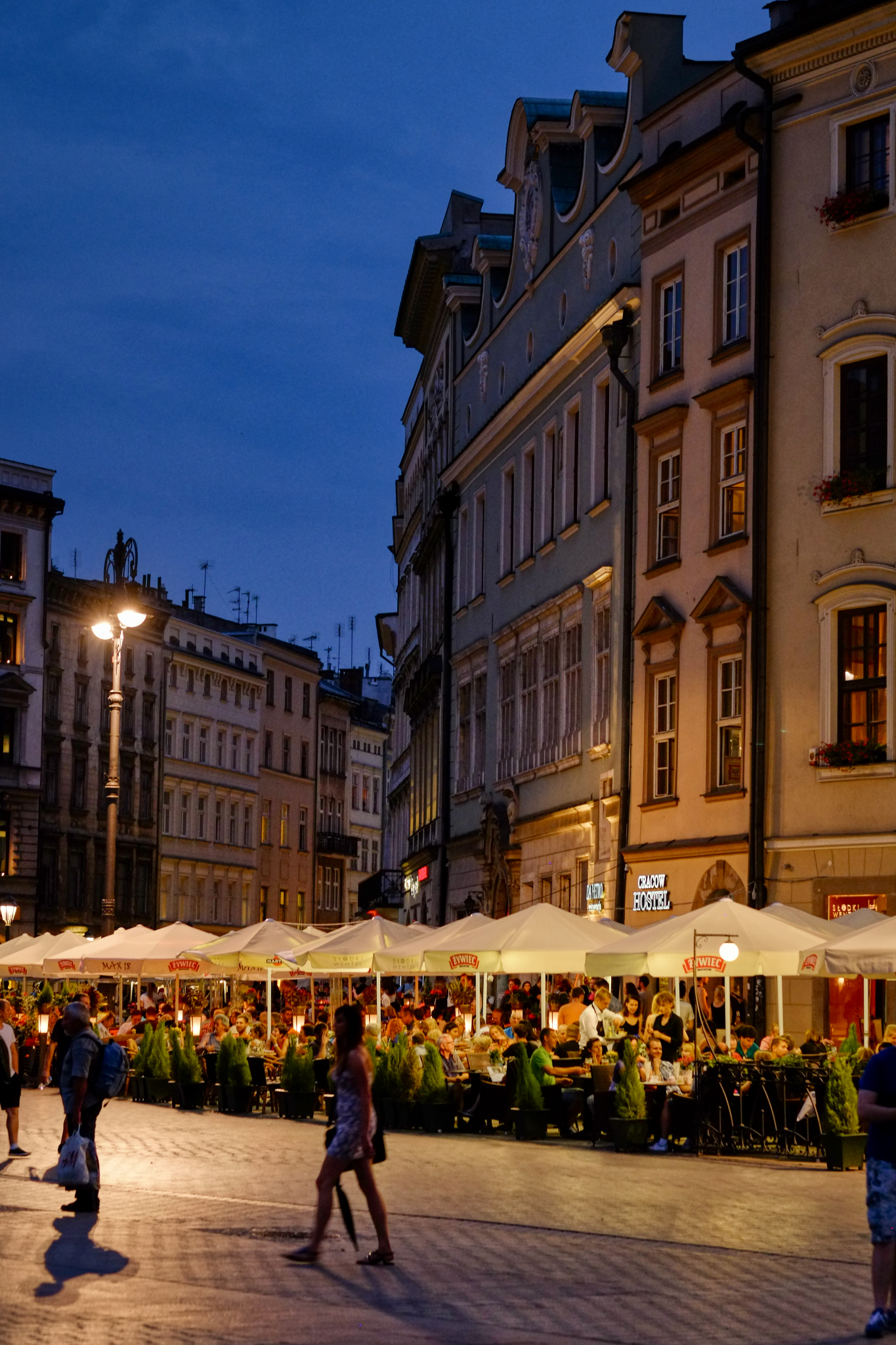 The crowds came out on a fine summer evening for a meal and a drink.
The crowds came out on a fine summer evening for a meal and a drink.
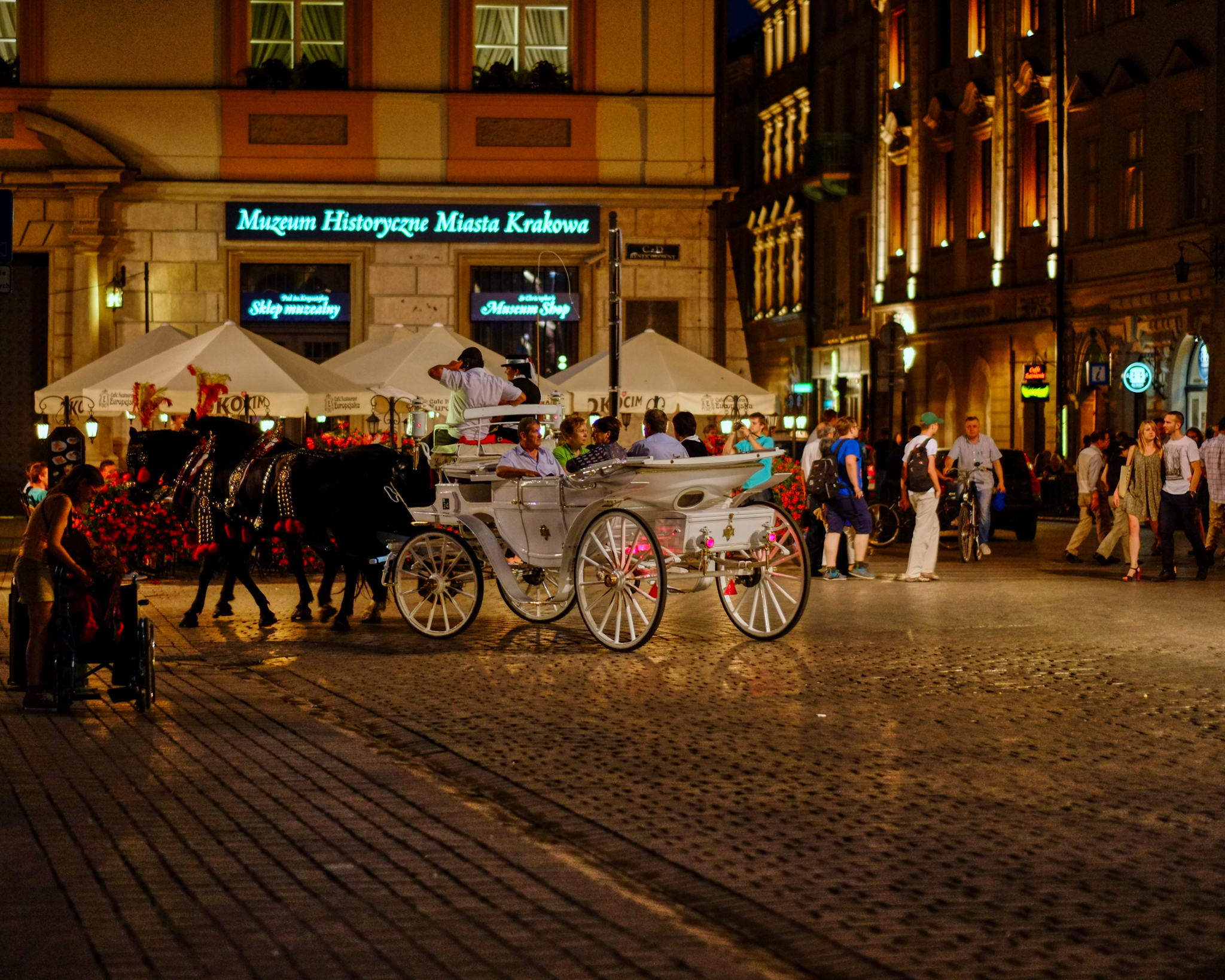 All day and evening, the tourist carriage rides never stopped. I assumed they changed the horses periodically, though I never saw it happen.
All day and evening, the tourist carriage rides never stopped. I assumed they changed the horses periodically, though I never saw it happen.
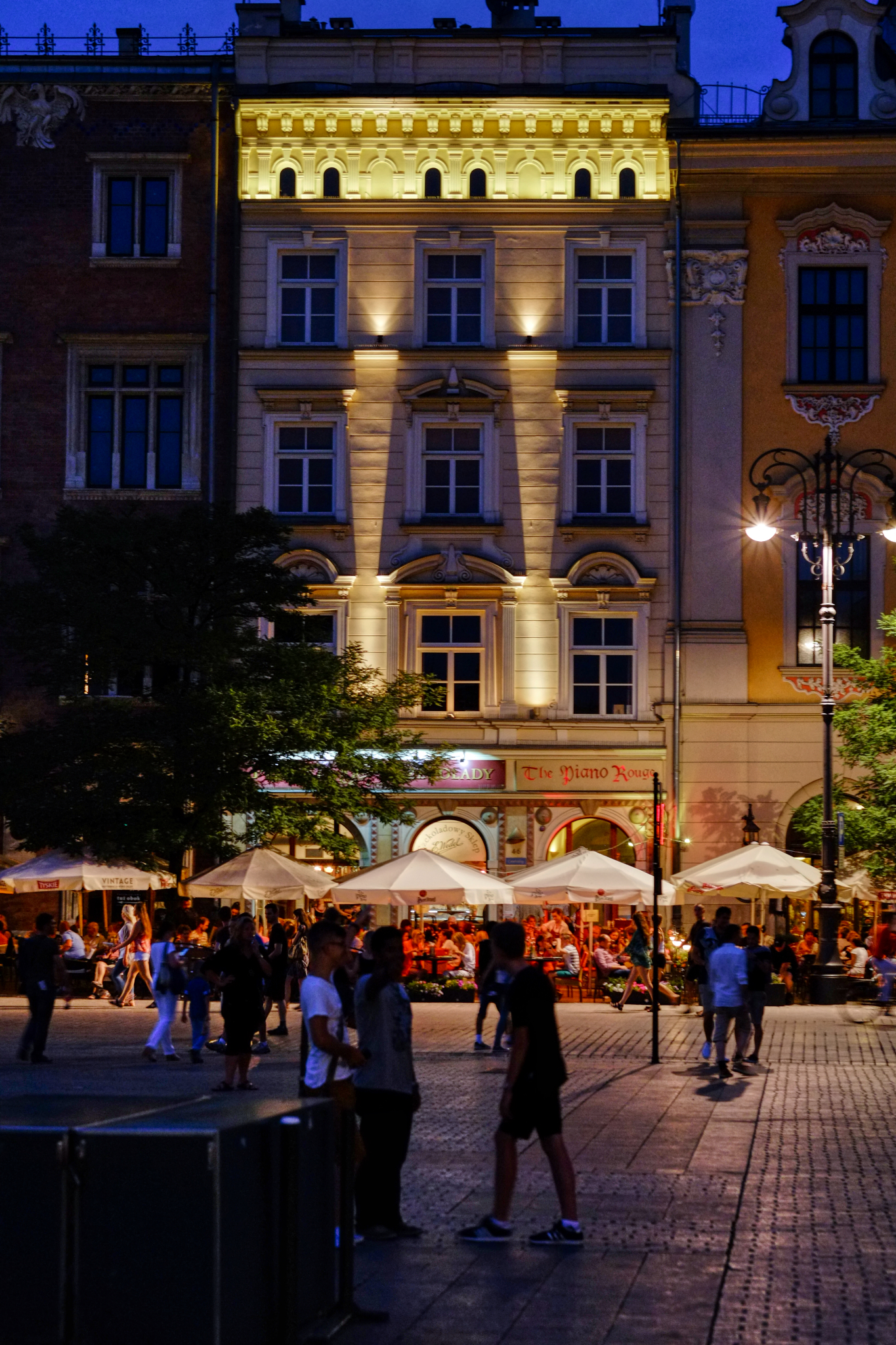 The pleasant evenings brought everyone out to the cafés on the central square.
The pleasant evenings brought everyone out to the cafés on the central square.
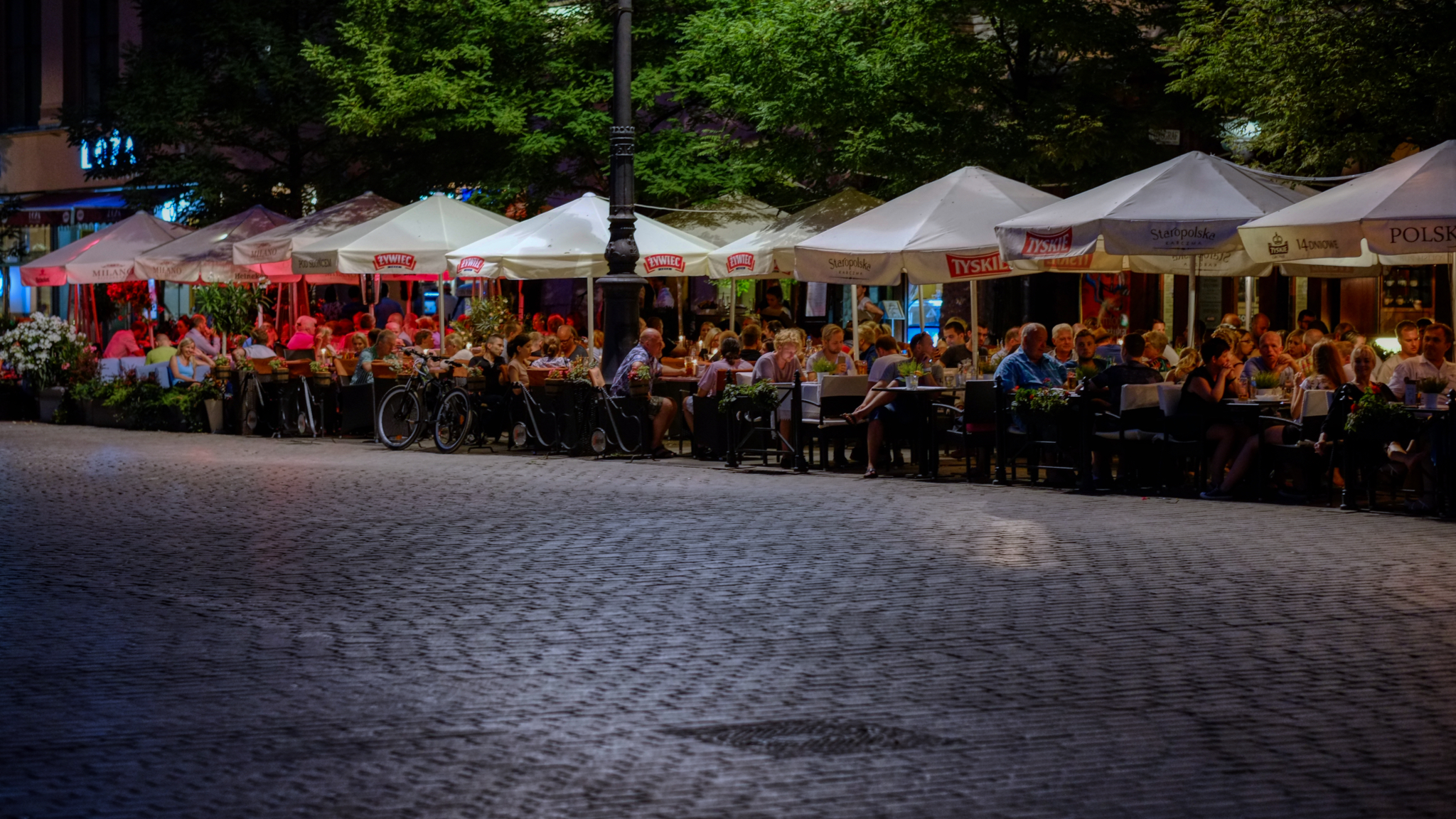 Everyone seemed to be enjoying themselves eating, drinking, and chatting.
Everyone seemed to be enjoying themselves eating, drinking, and chatting.
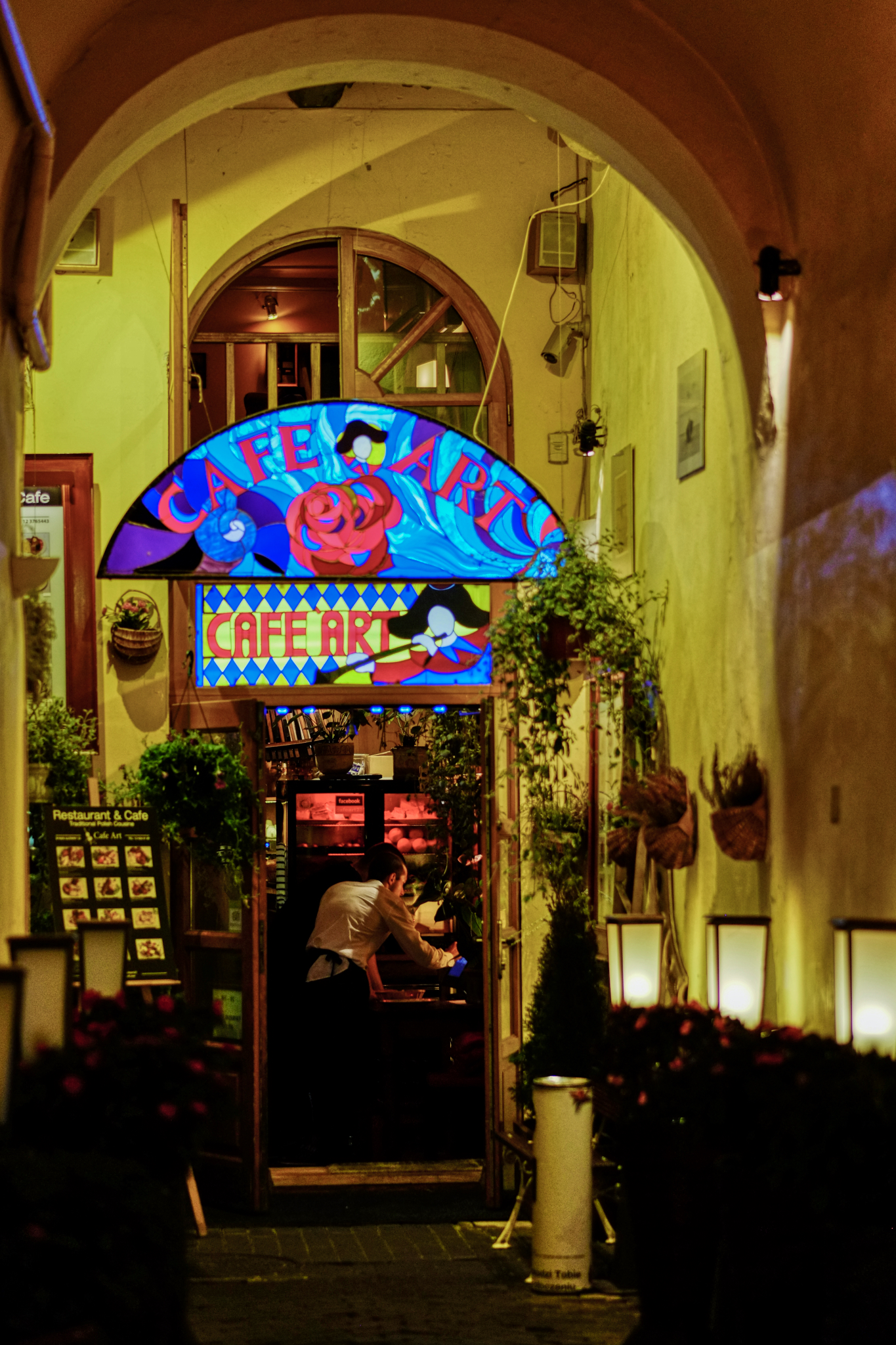 This one looks inviting . . . lets go in.
This one looks inviting . . . lets go in.
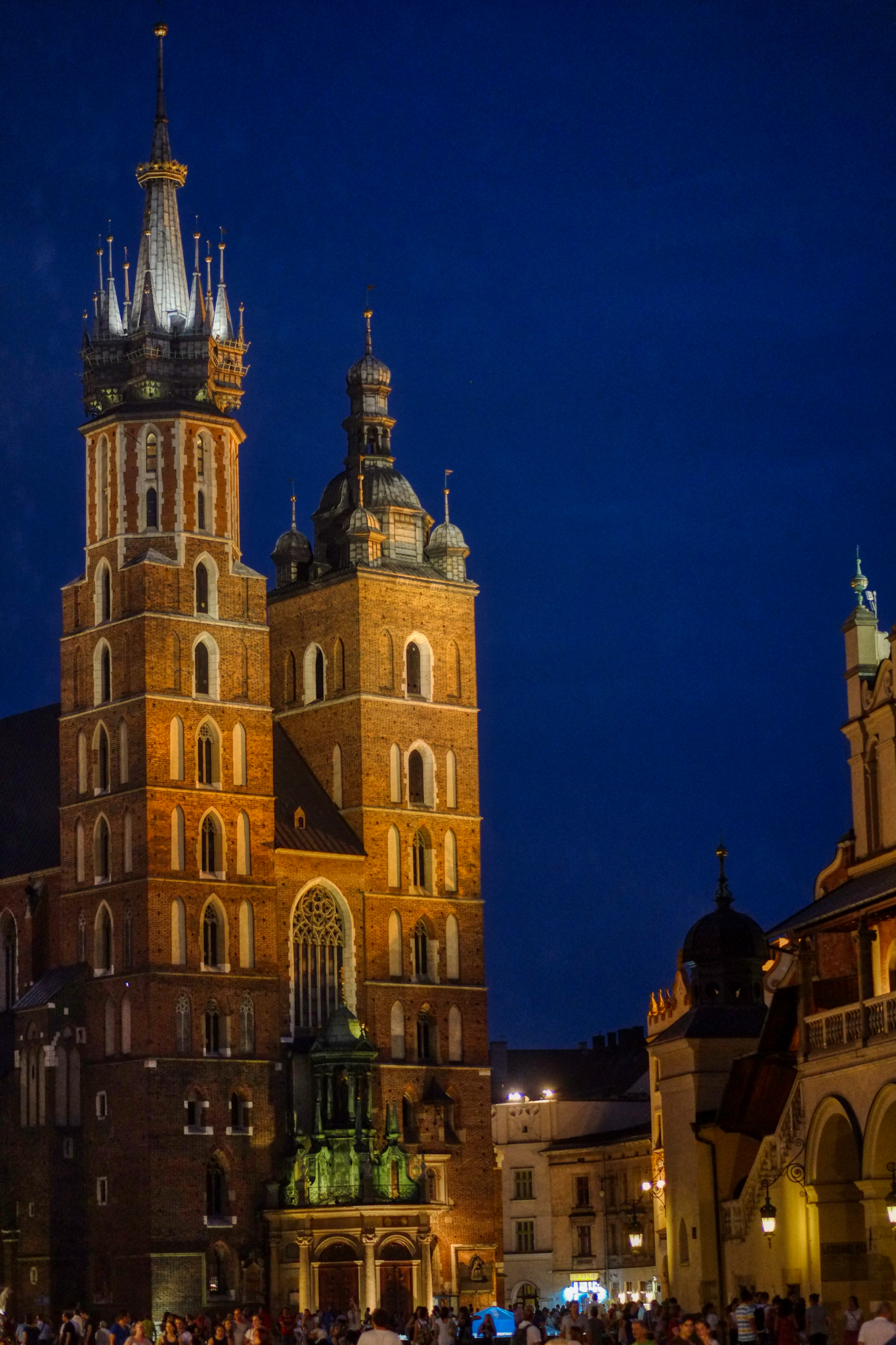 St. Mary's Basilica by night. We loved our short stay in Kraków and would be more than happy to go back again.
St. Mary's Basilica by night. We loved our short stay in Kraków and would be more than happy to go back again.
 Dr. Jeff Harper
Dr. Jeff Harper
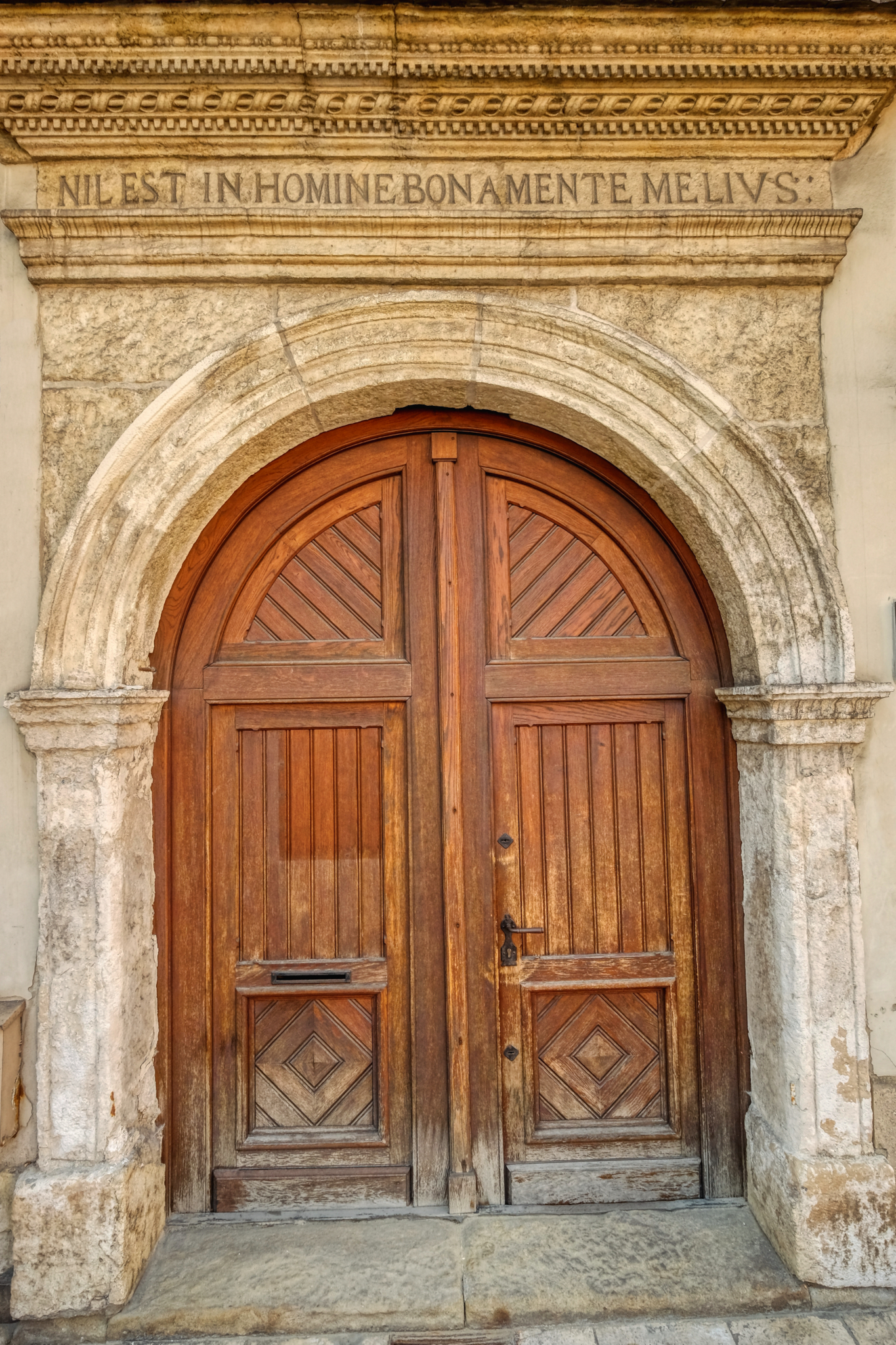 One of my favorite photographic subjects are very old doors, windows, and walls. I was in heaven in Kraków!
One of my favorite photographic subjects are very old doors, windows, and walls. I was in heaven in Kraków!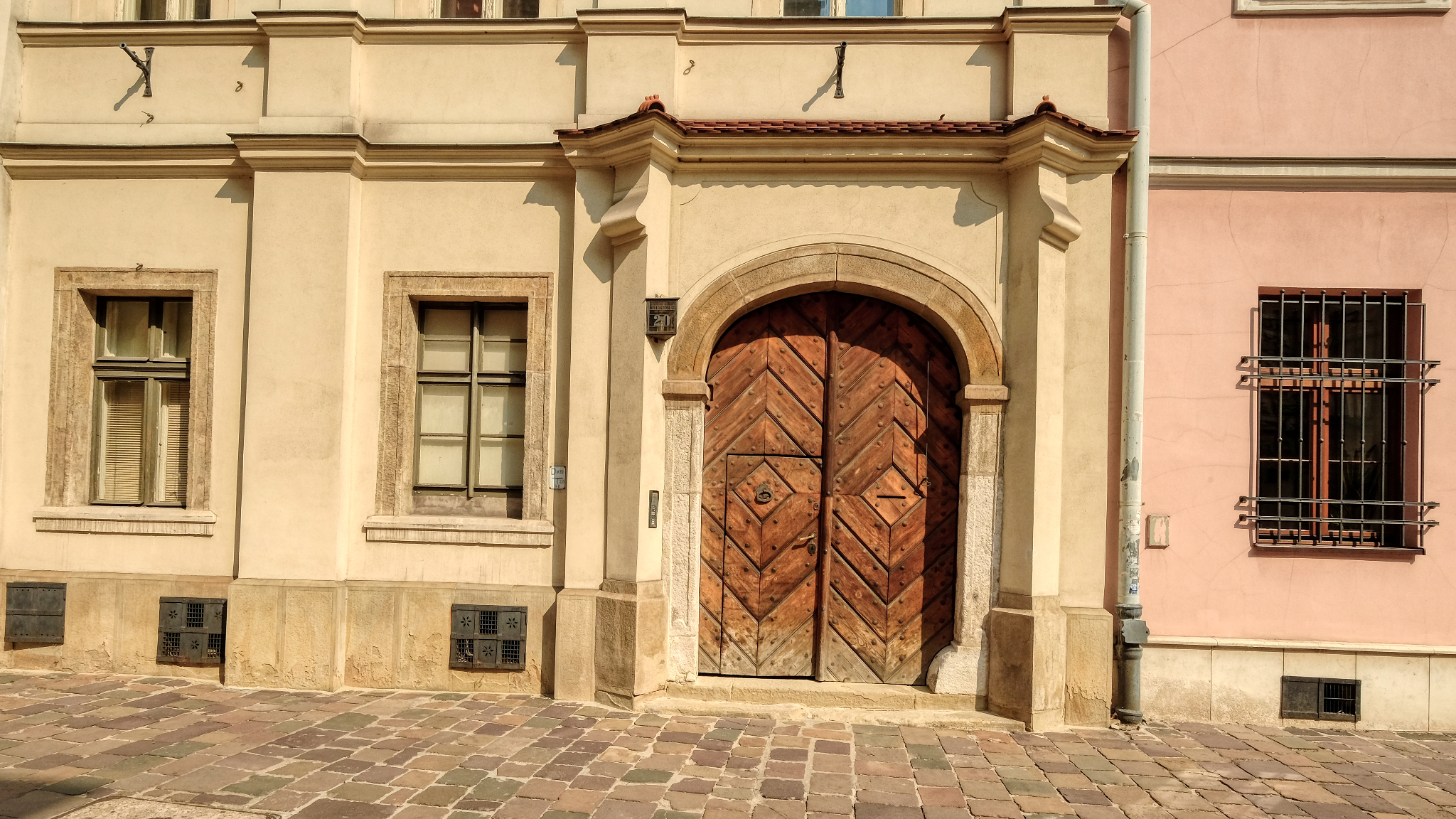 Everywhere, on every street, there was another amazing door . . . or window . . . or wall. They all speak to me somehow. They are all telling me their story.
Everywhere, on every street, there was another amazing door . . . or window . . . or wall. They all speak to me somehow. They are all telling me their story.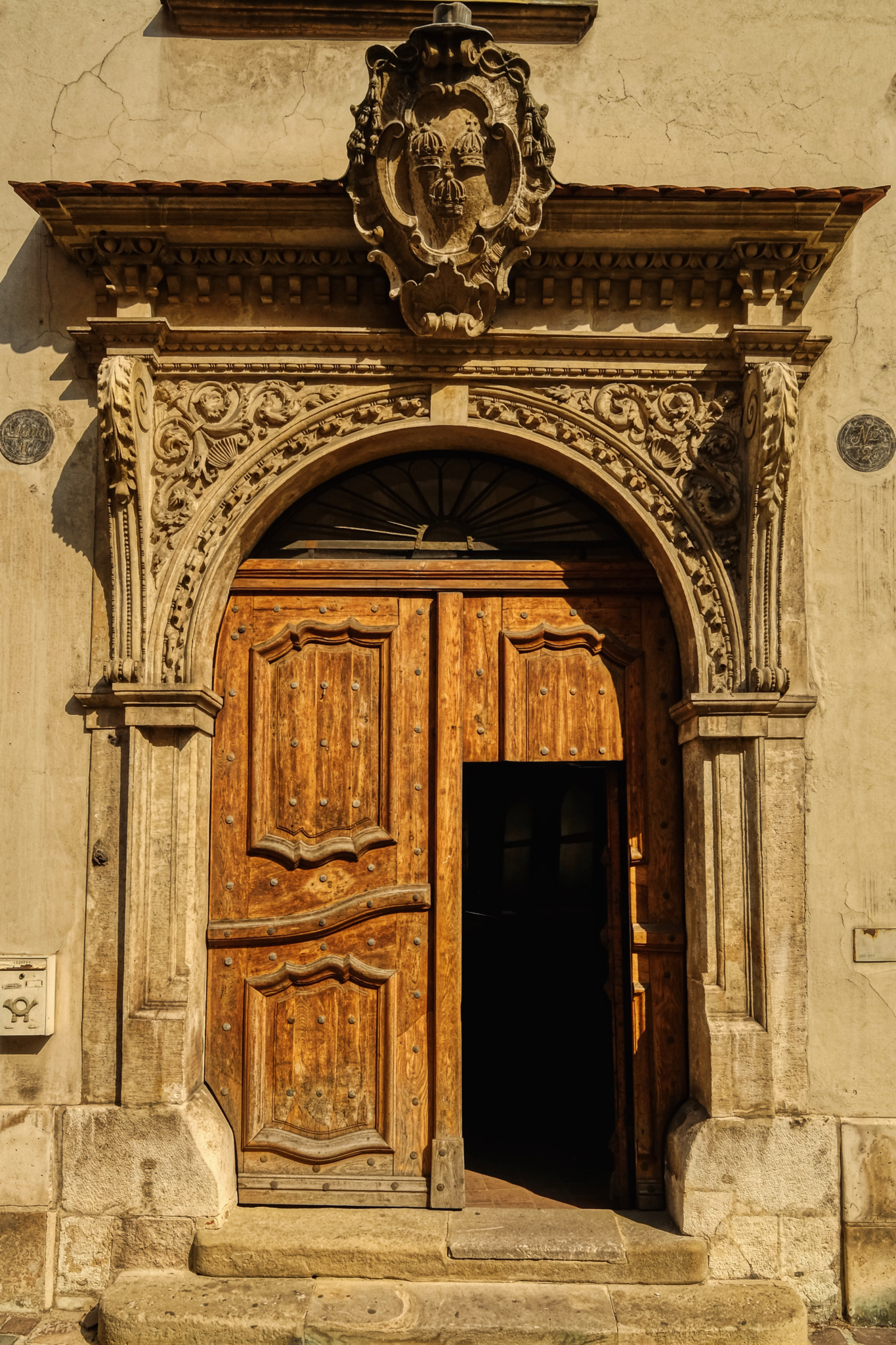 The door is the mouth on the face of a house or building. As such, it speaks, it expresses something about the character of what is inside.
The door is the mouth on the face of a house or building. As such, it speaks, it expresses something about the character of what is inside.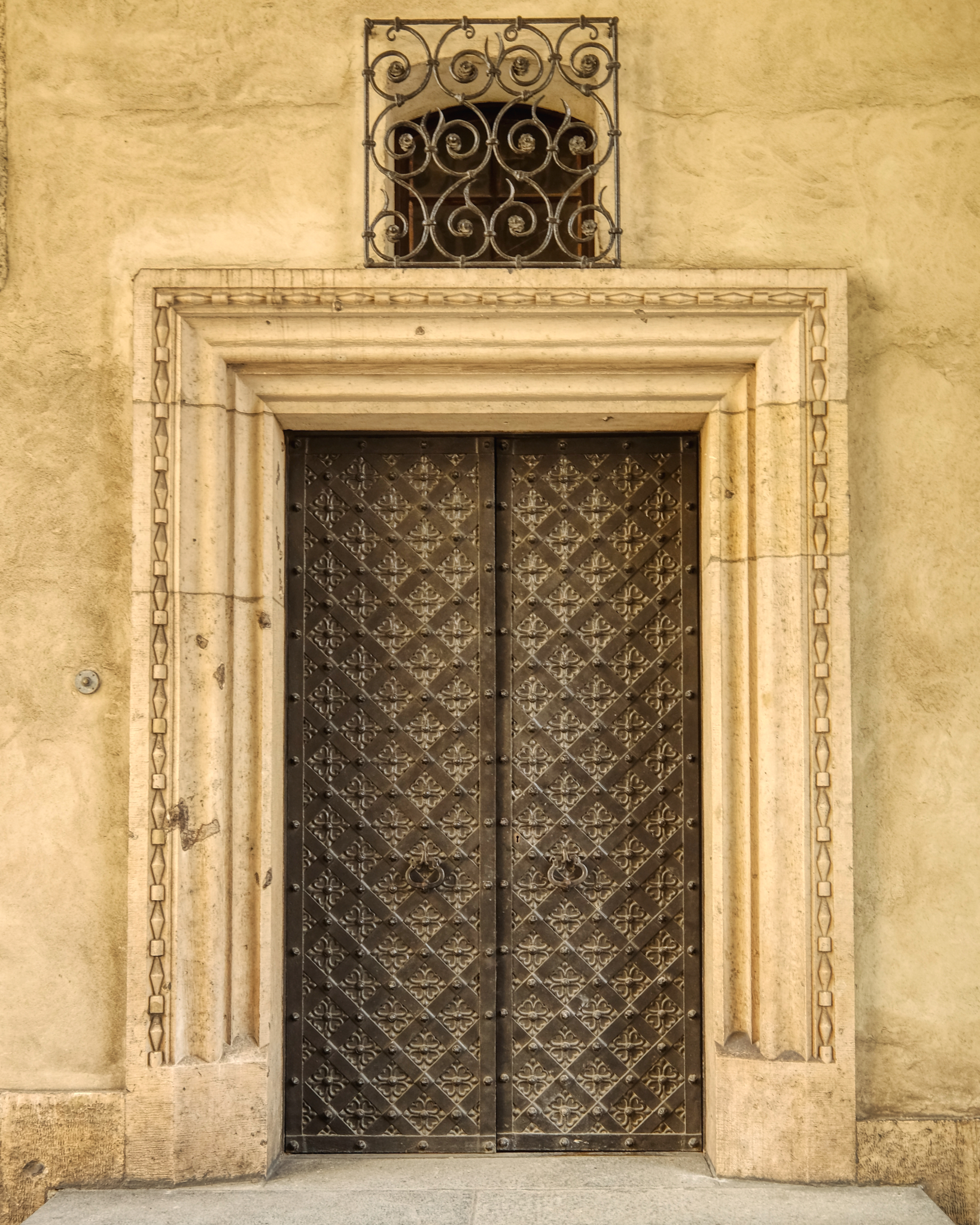 An interior door of Wawel Castle.
An interior door of Wawel Castle.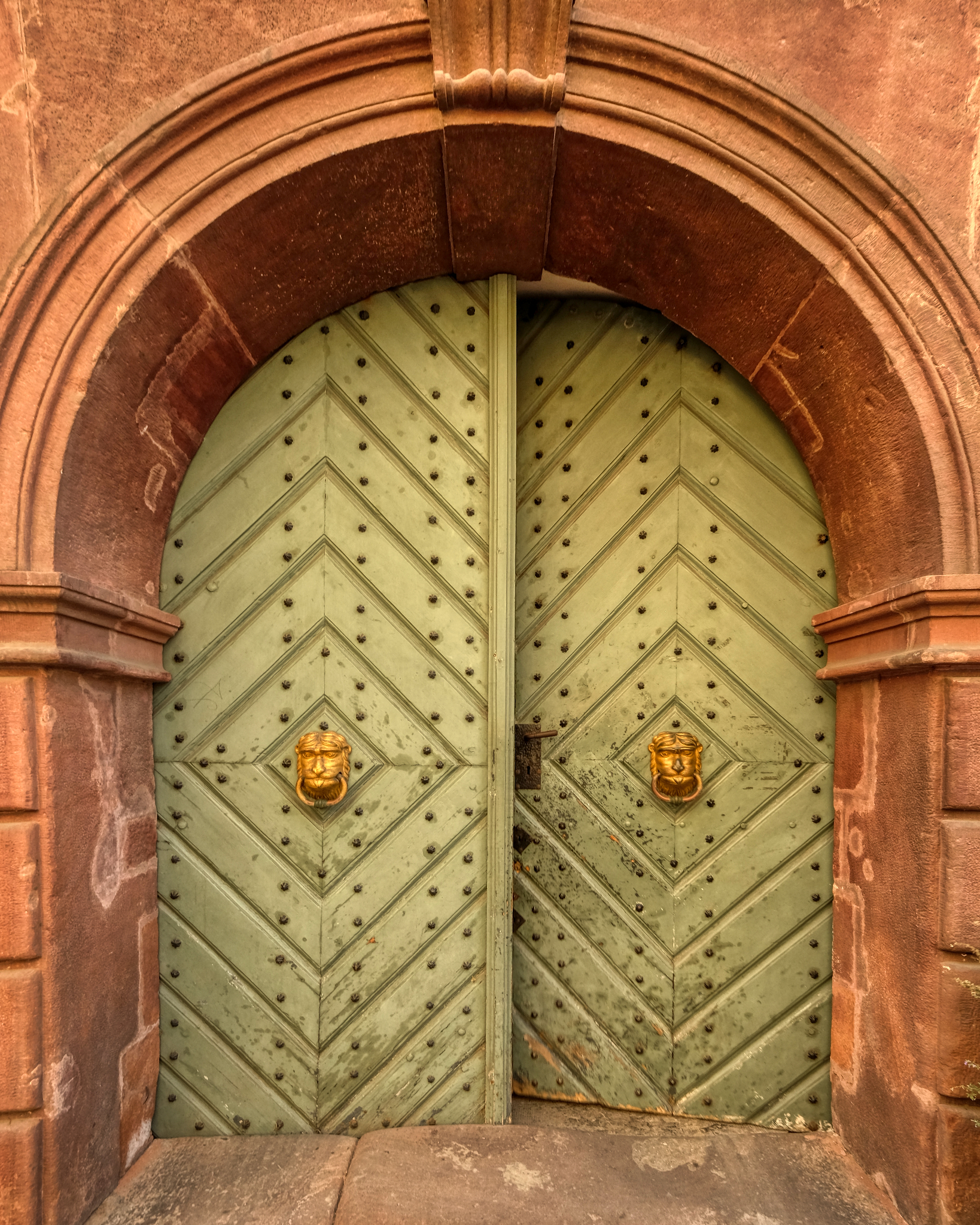 Doors are often restored, but it seems almost never replaced in the life of a building.
Doors are often restored, but it seems almost never replaced in the life of a building.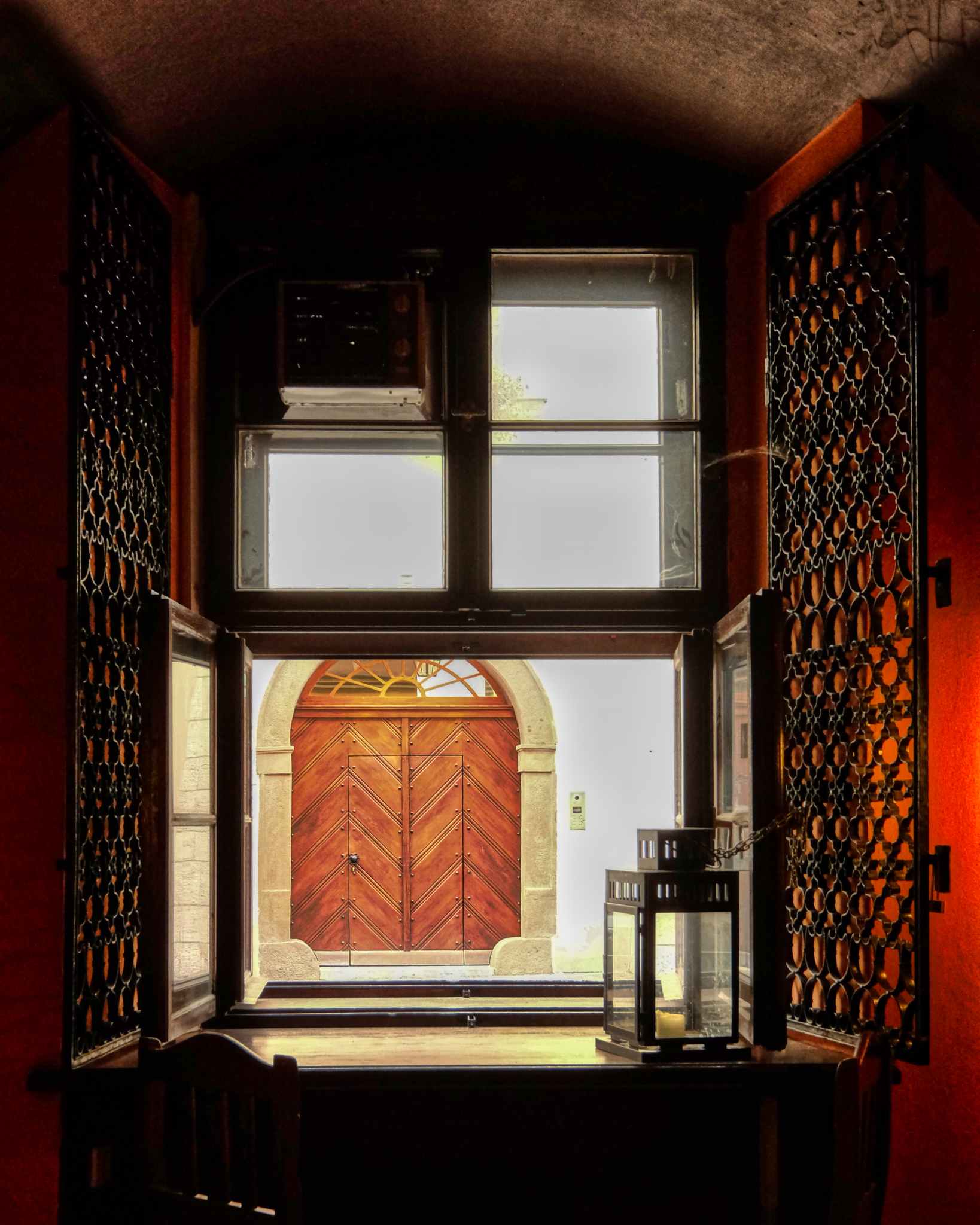 Looking out the window of a restaurant I saw this door. Stunning.
Looking out the window of a restaurant I saw this door. Stunning.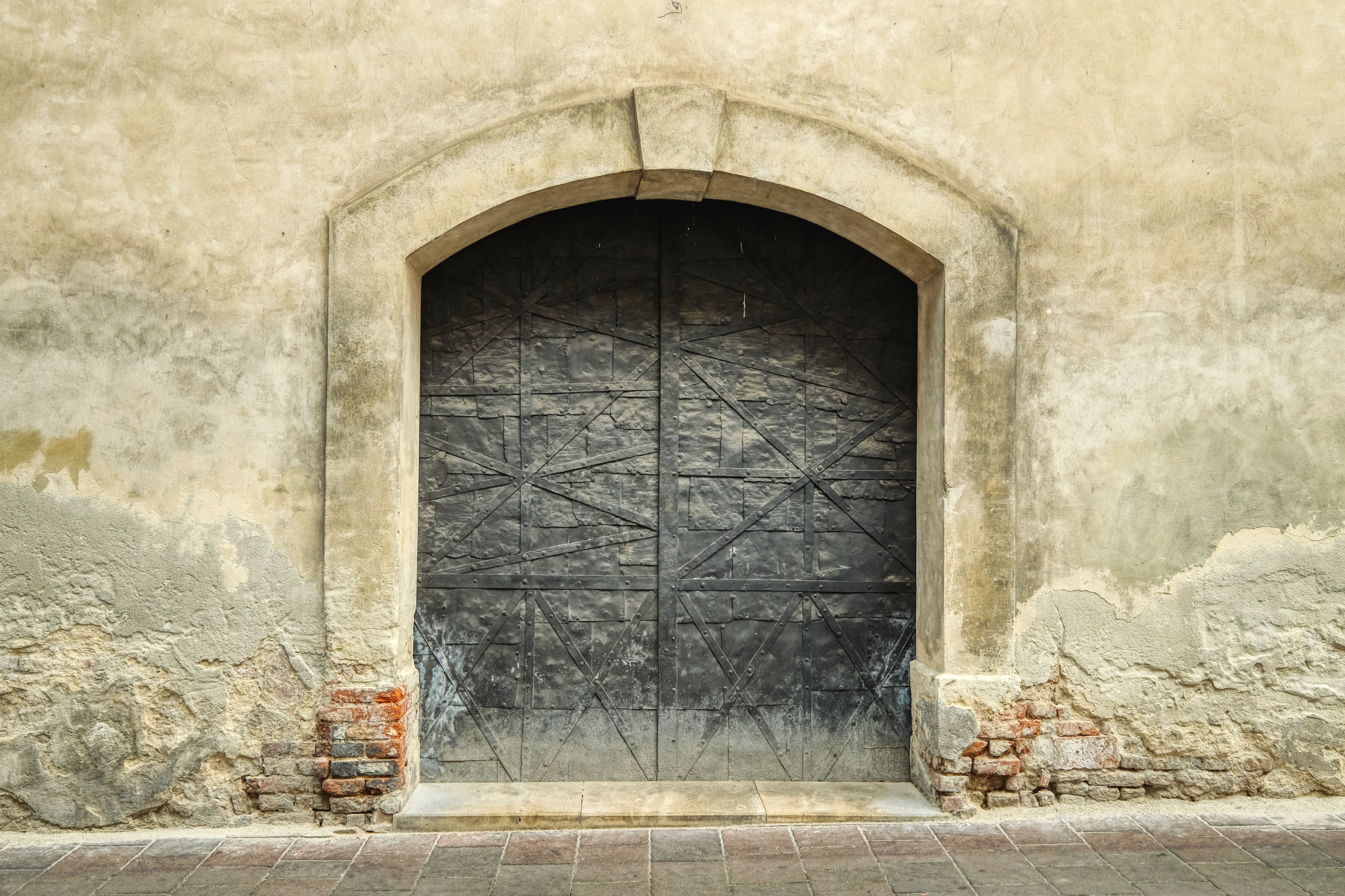 Some doors seem to have a power to draw you in.
Some doors seem to have a power to draw you in.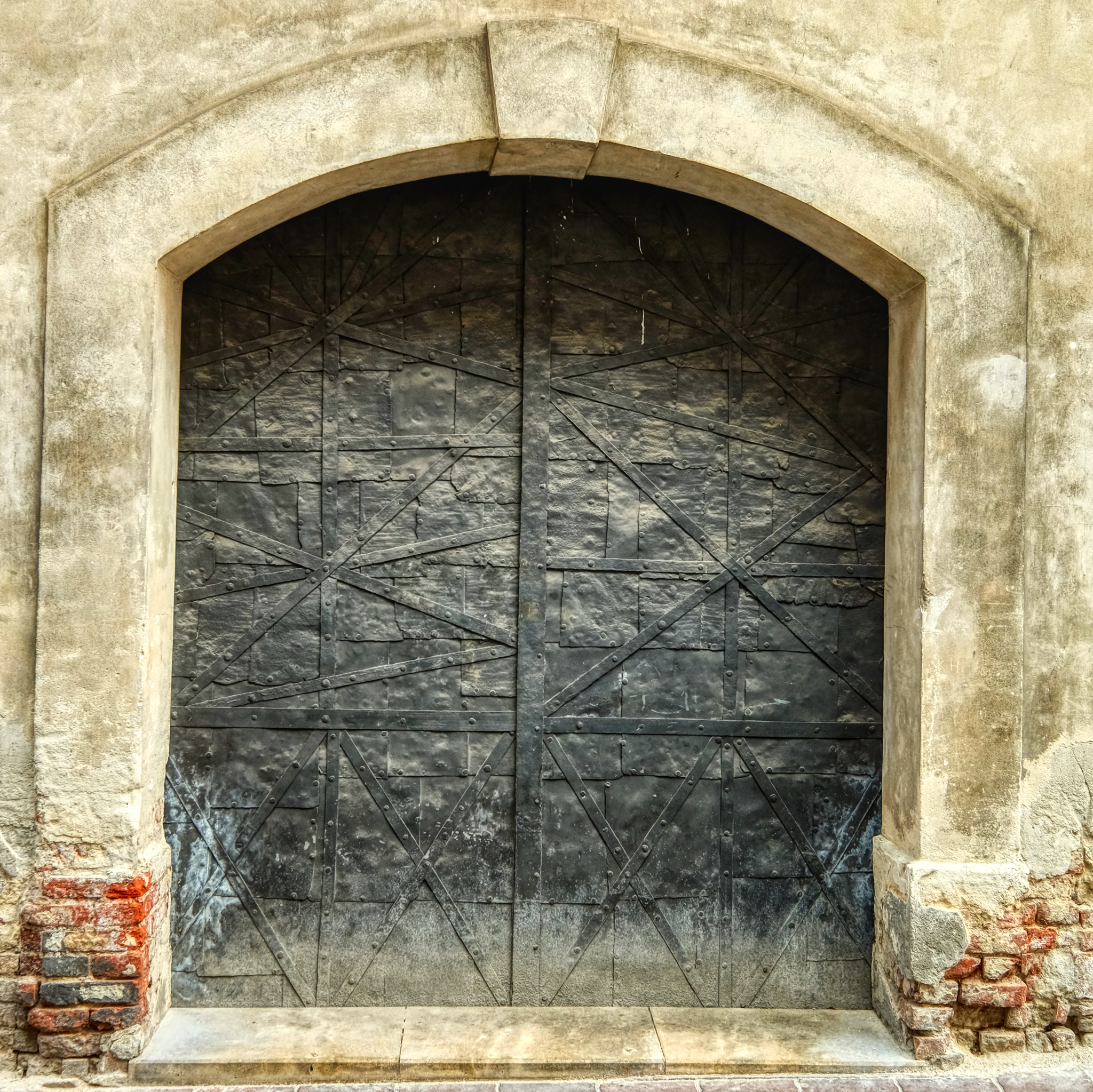 The strength of a steel door . . . with a story of repair.
The strength of a steel door . . . with a story of repair.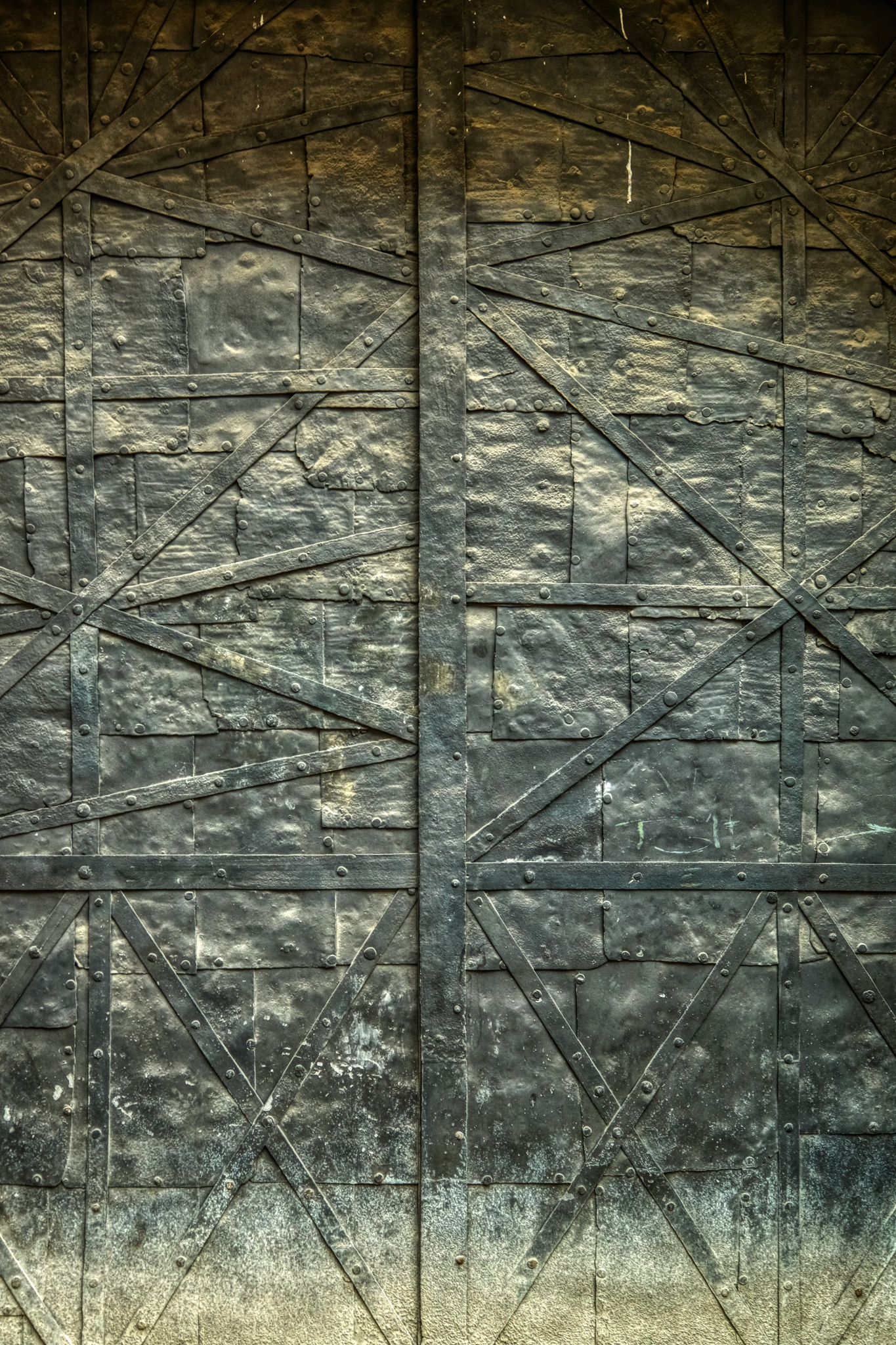 The textures! The patterns! The reflections!
The textures! The patterns! The reflections!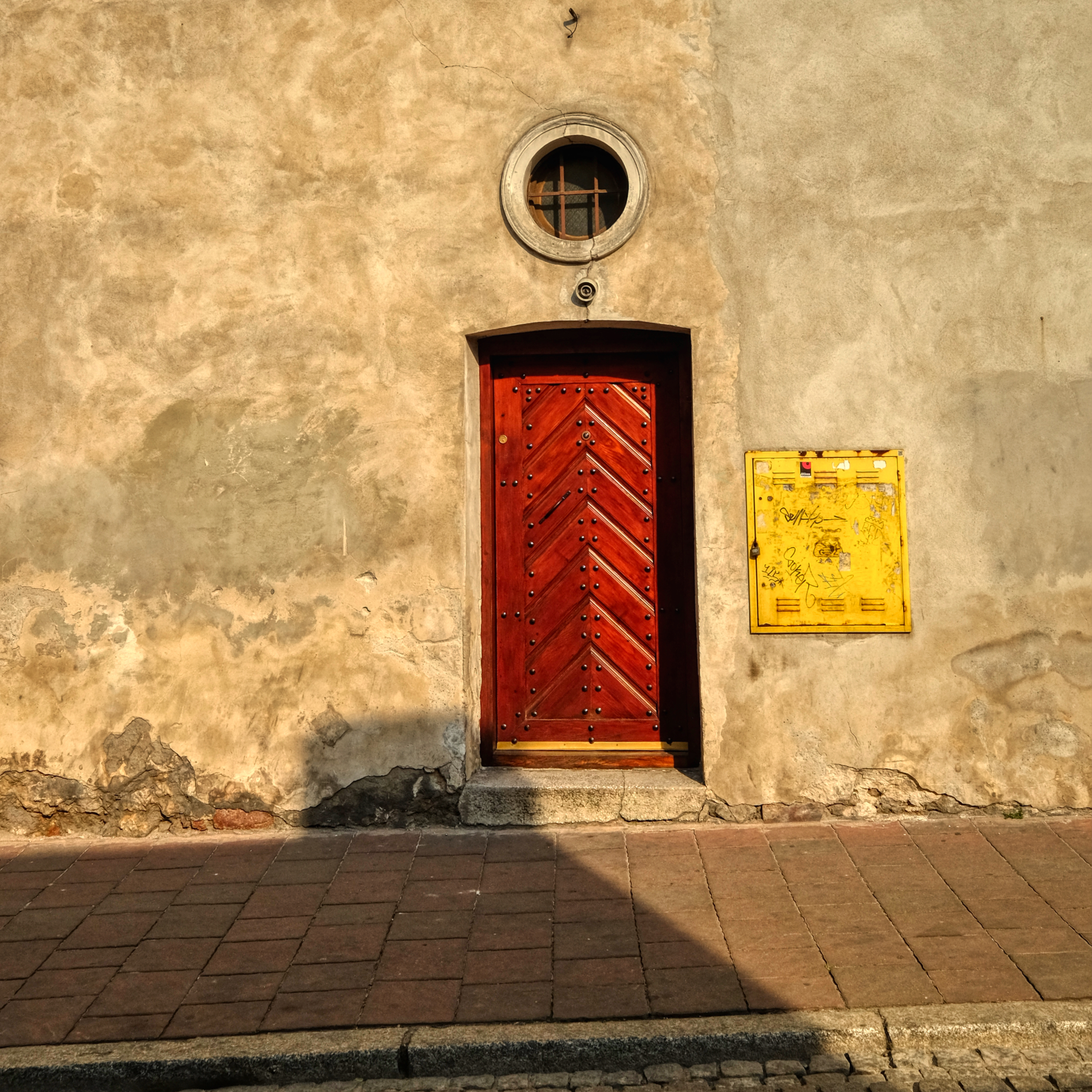 That wall! That Red door! That yellow service box! Astonishing.
That wall! That Red door! That yellow service box! Astonishing.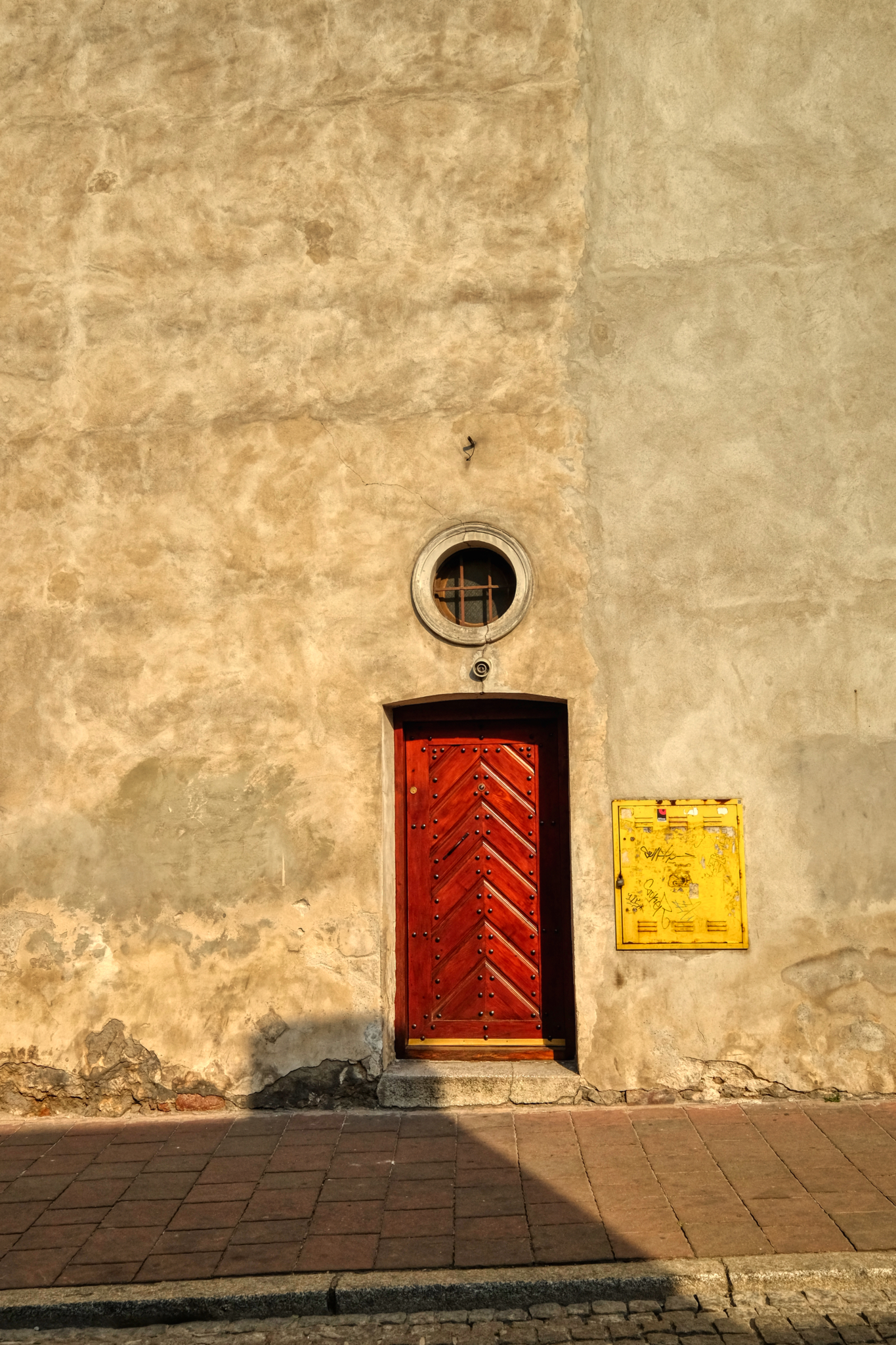 Same wall with different framing to emphasize the height of the wall . . . to make the wall powerful in the photograph.
Same wall with different framing to emphasize the height of the wall . . . to make the wall powerful in the photograph.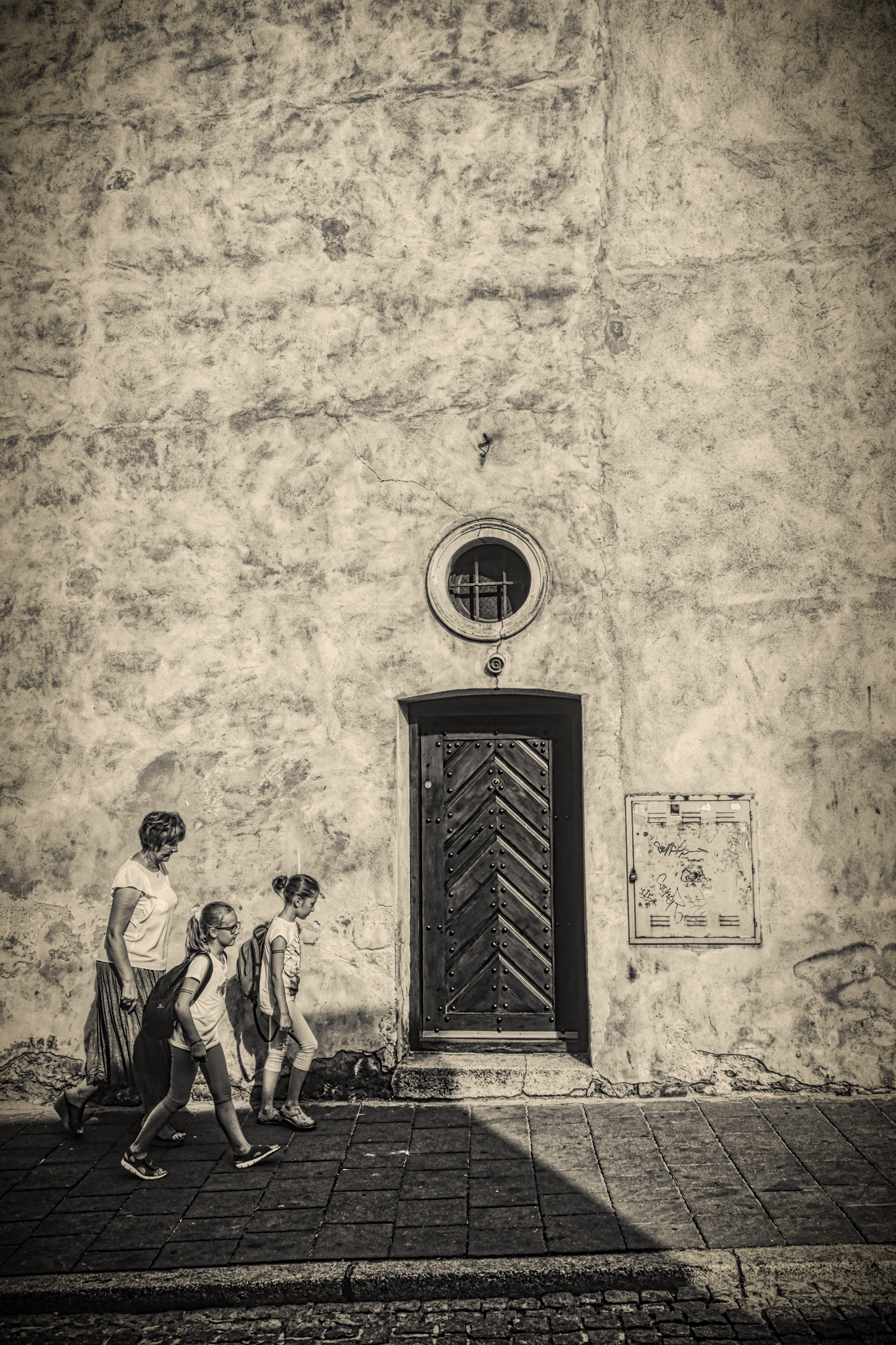 This family (?) walked in front while I was shooting these wall photos. I do not normally use aftereffects in my photography, but this one seemed to want this sepia tone. I like it.
This family (?) walked in front while I was shooting these wall photos. I do not normally use aftereffects in my photography, but this one seemed to want this sepia tone. I like it.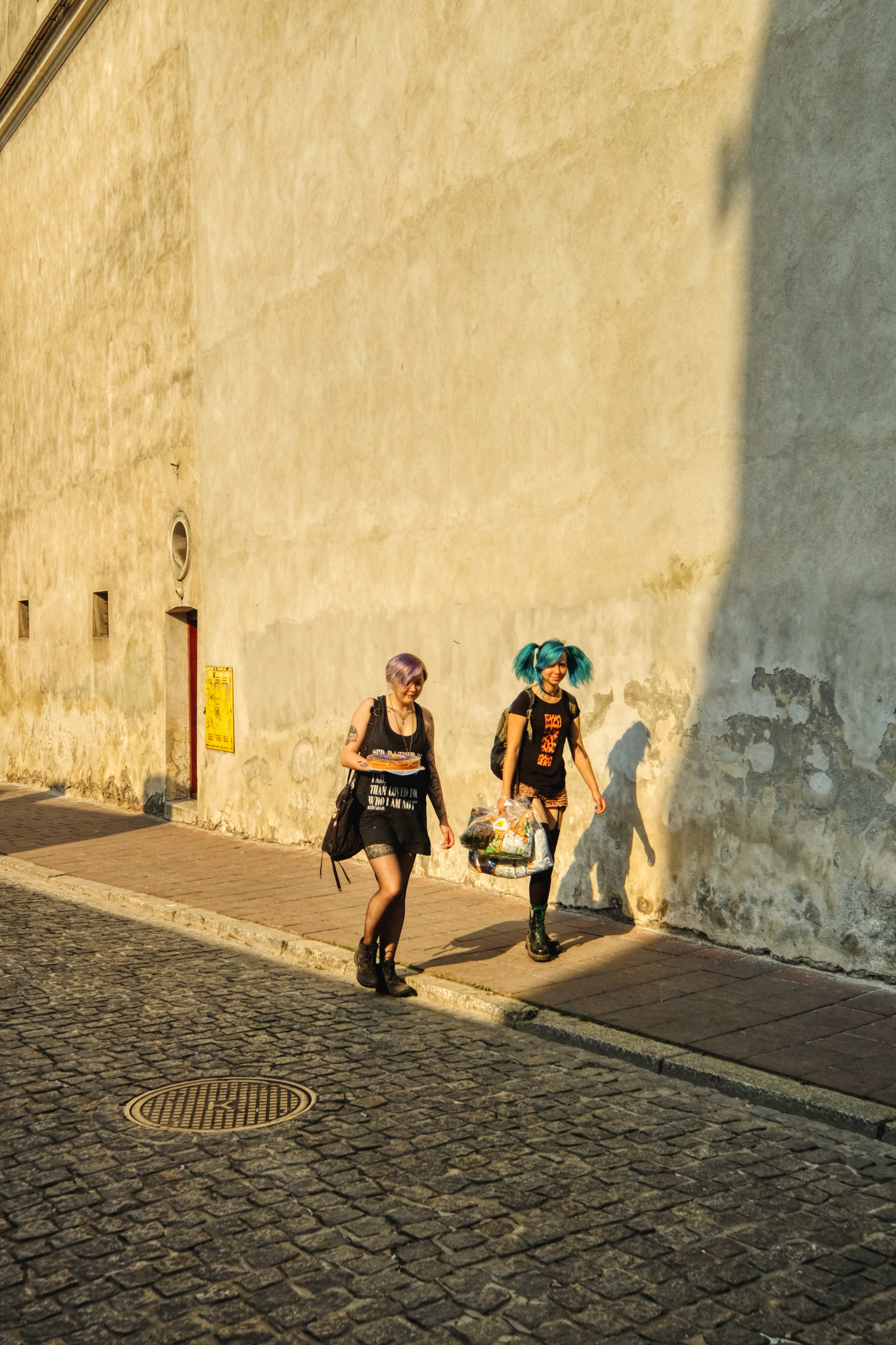 Same wall, door, service panel but different feeling. Punks bringing home lunch.
Same wall, door, service panel but different feeling. Punks bringing home lunch.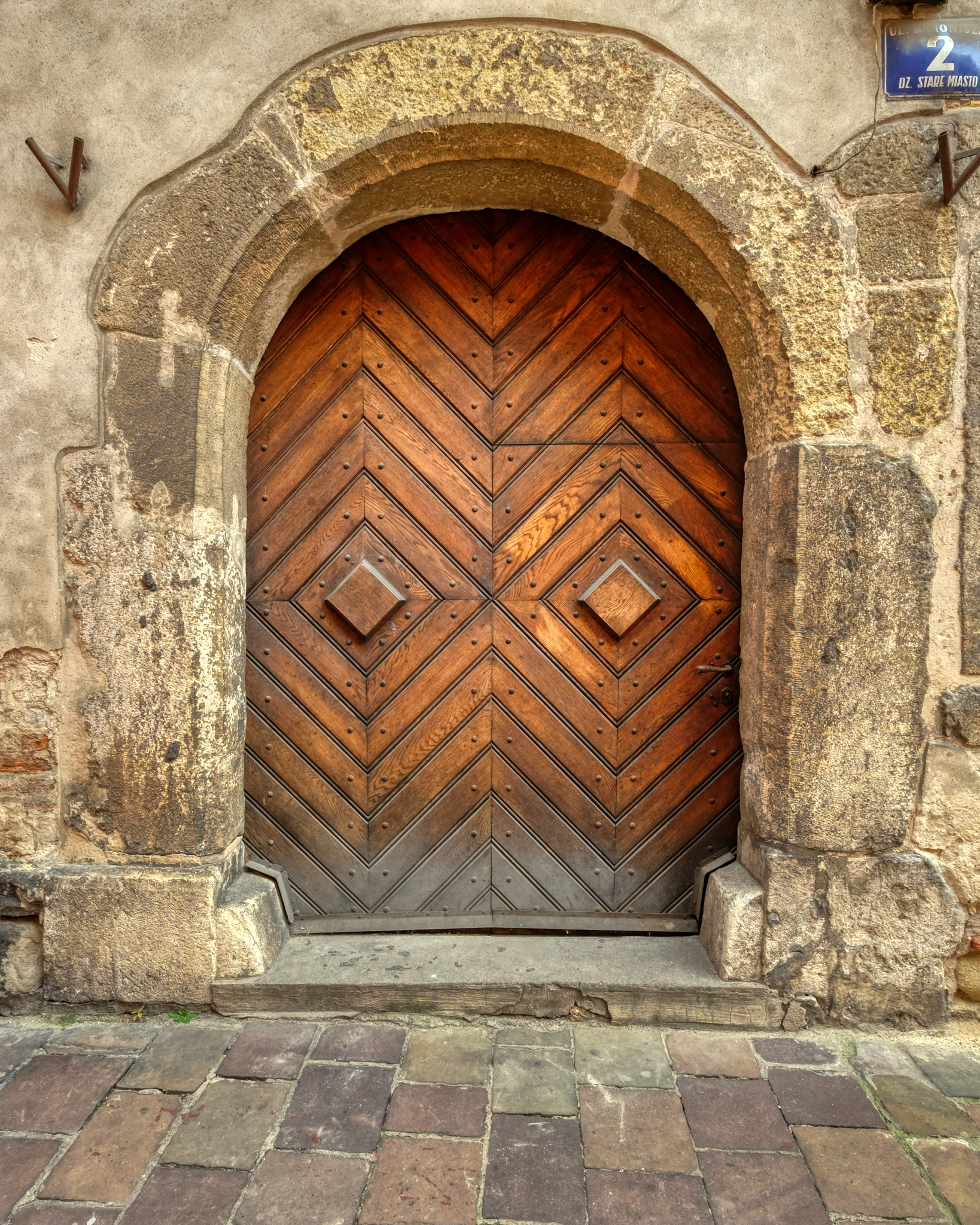 So many anncient doors . . .
So many anncient doors . . .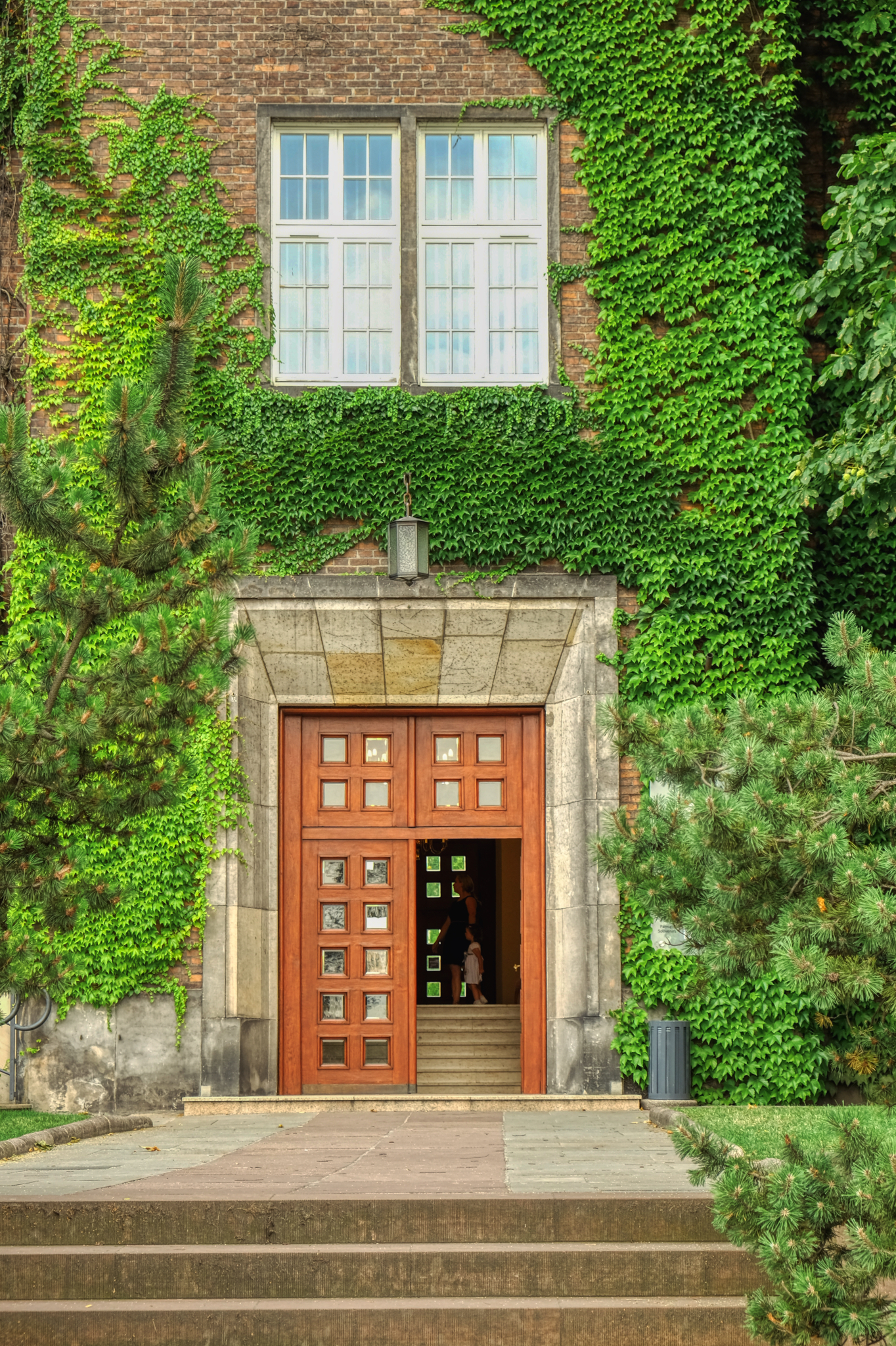 Lovely crawling ivy surrounding this artistic door.
Lovely crawling ivy surrounding this artistic door.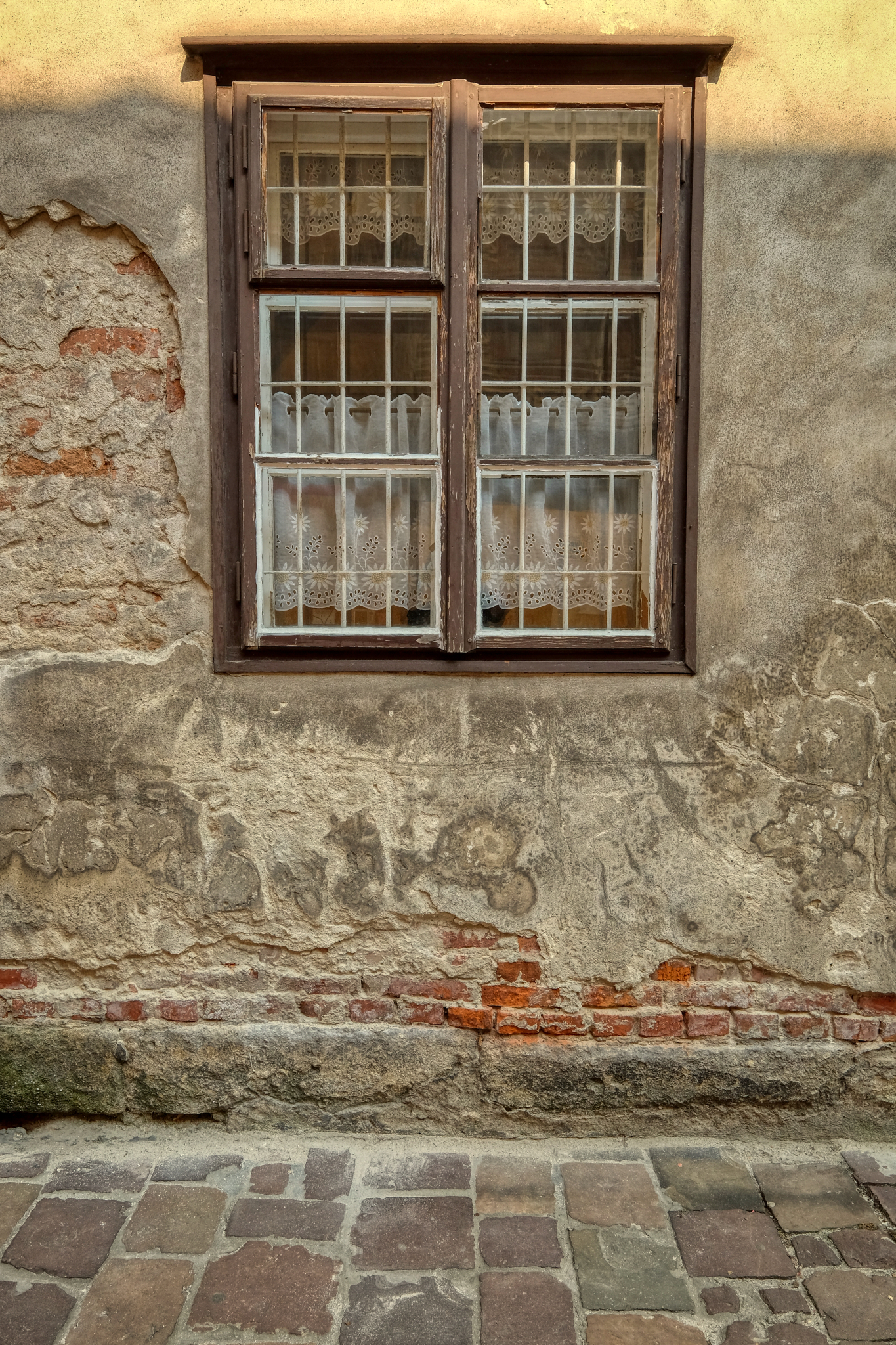 The windows are the eyes of a building . . . they can reveal so much.
The windows are the eyes of a building . . . they can reveal so much.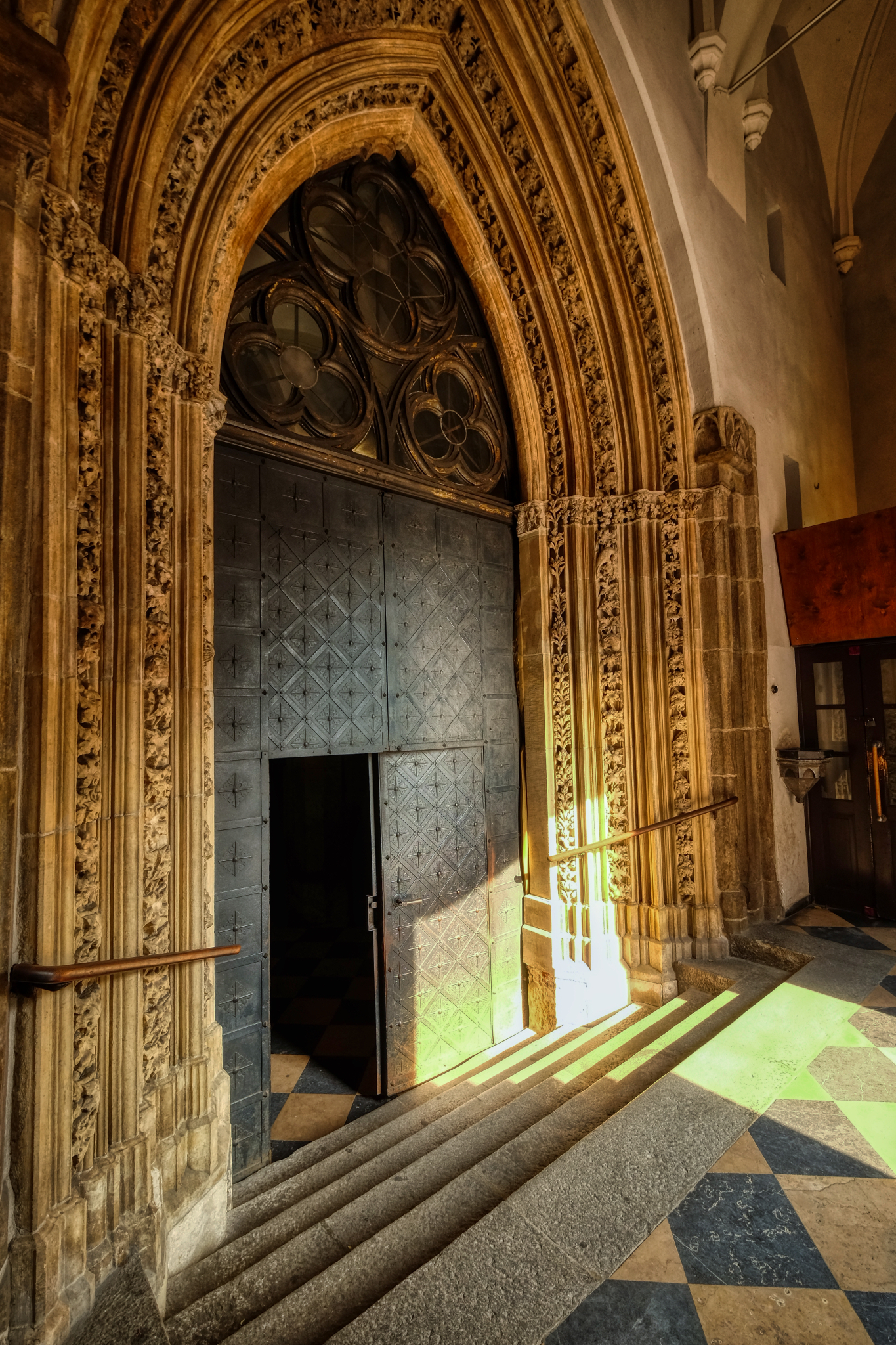 A church/cathedral door, and all it promises, and all of its history, and all of its sorrow.
A church/cathedral door, and all it promises, and all of its history, and all of its sorrow.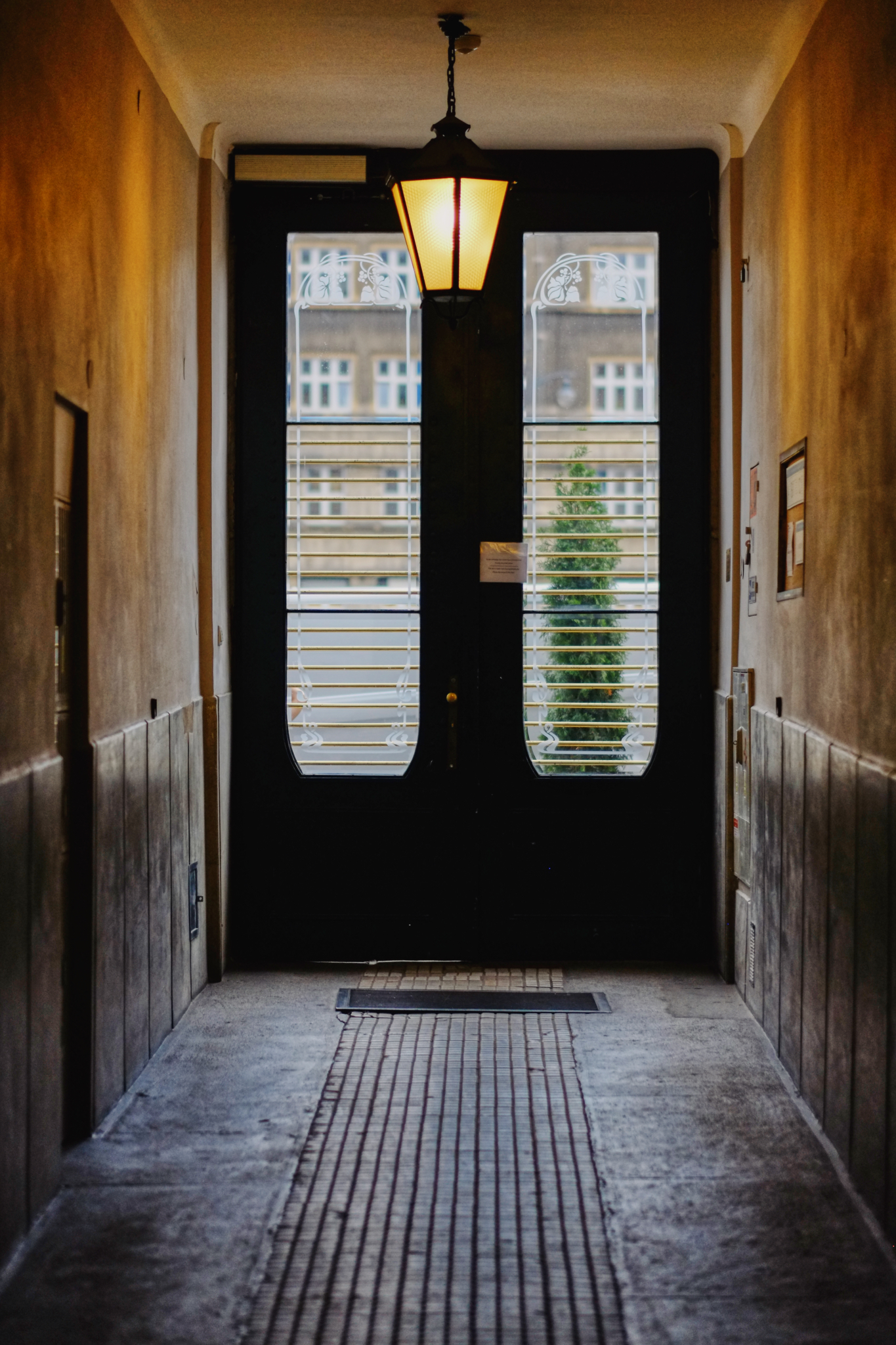 My last door photo . . . our Soviet-era hotel. Simple, honest . . . opening to the marvelous city of Kraków.
My last door photo . . . our Soviet-era hotel. Simple, honest . . . opening to the marvelous city of Kraków.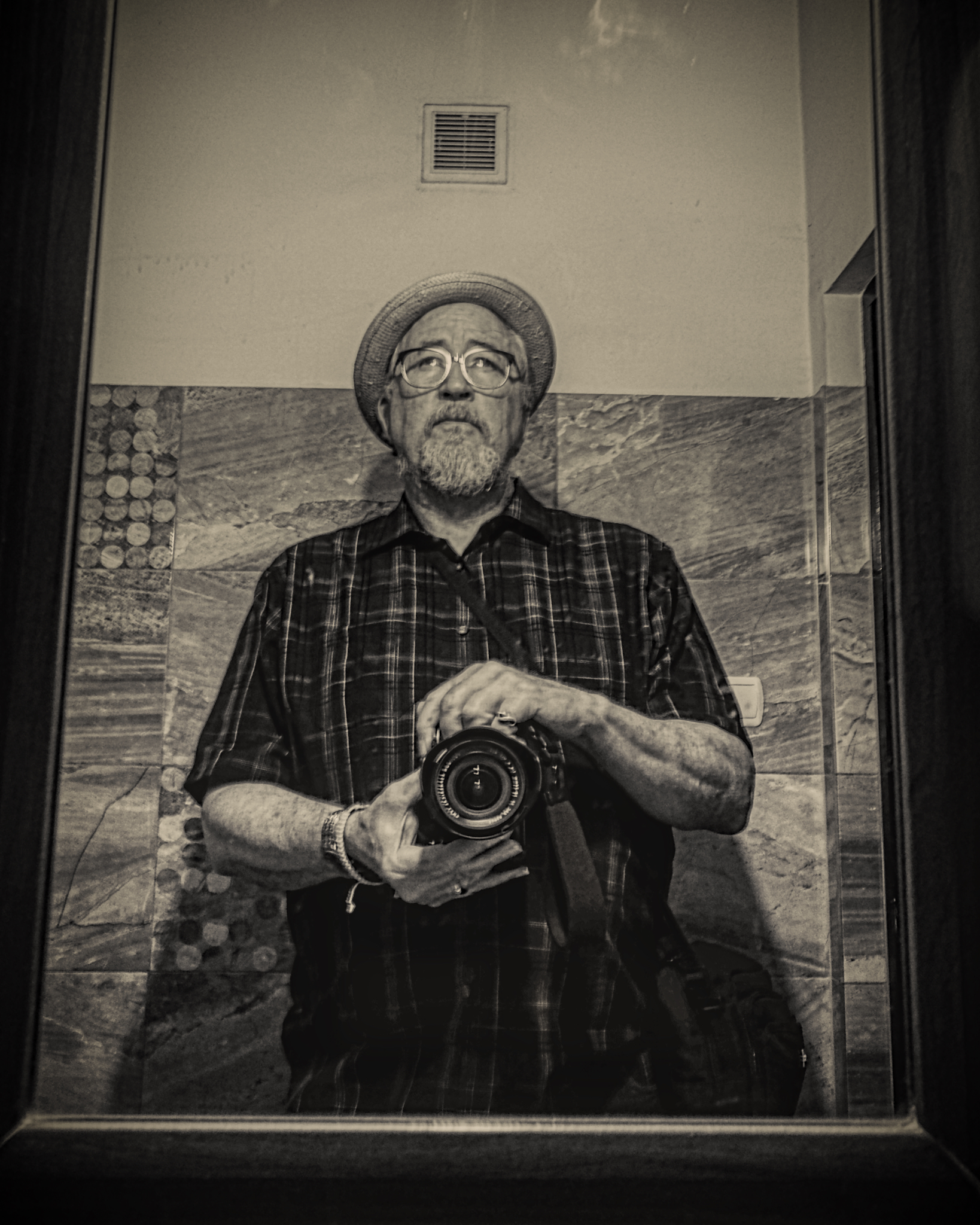 I saw this guy in the mirror of an elevator in Kraków, Poland and wondered who he was.
I saw this guy in the mirror of an elevator in Kraków, Poland and wondered who he was.Gibraltar: Day and Night
 Tuesday, April 17, 2018 at 3:27AM
Tuesday, April 17, 2018 at 3:27AM  In February 2017 we made the short flight to the British enclave of Gibraltar. It is worth a three night stay . . . but perhaps not any longer . . .
In February 2017 we made the short flight to the British enclave of Gibraltar. It is worth a three night stay . . . but perhaps not any longer . . .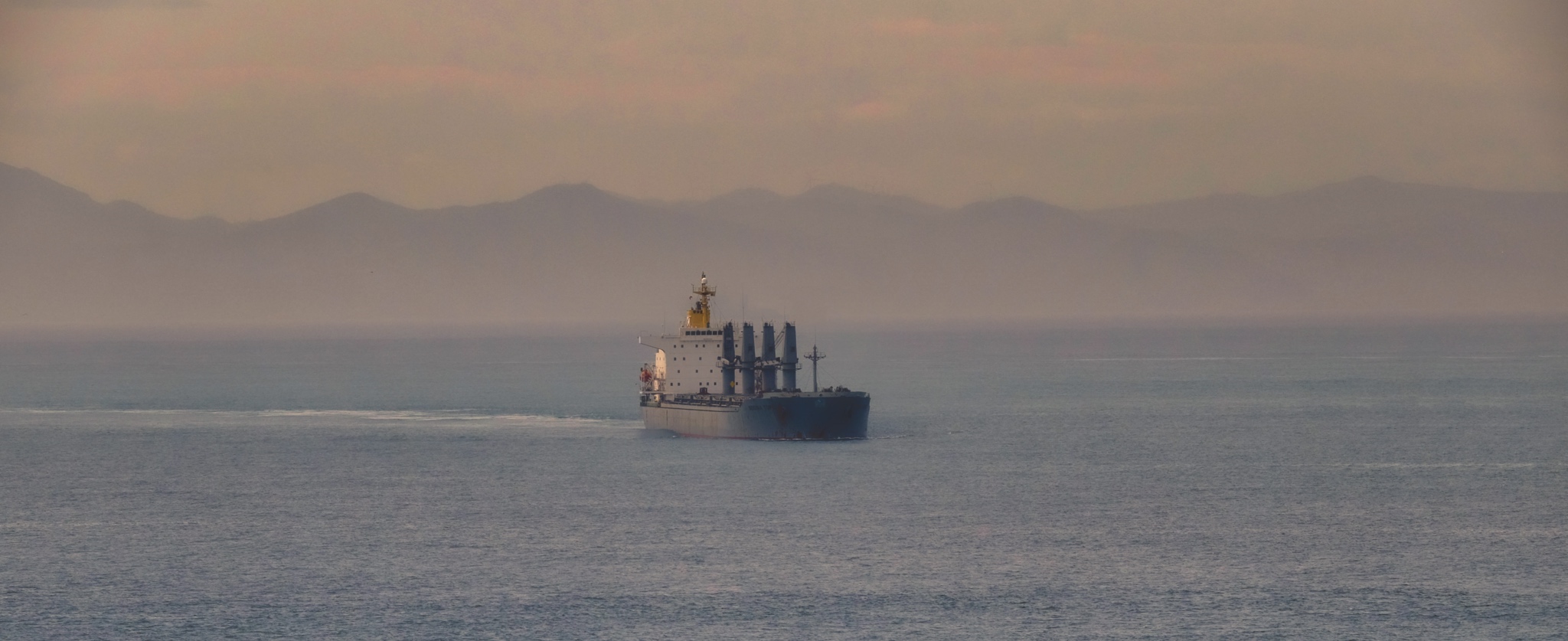 Gibraltar sits near the southern tip of Spain at the northern side of the Straight of Gibraltar. All ships that pass from the Mediterranean Sea to the Atlantic Ocean must pass through here. The North African coast can be seen across the Straight of Gibraltar.
Gibraltar sits near the southern tip of Spain at the northern side of the Straight of Gibraltar. All ships that pass from the Mediterranean Sea to the Atlantic Ocean must pass through here. The North African coast can be seen across the Straight of Gibraltar.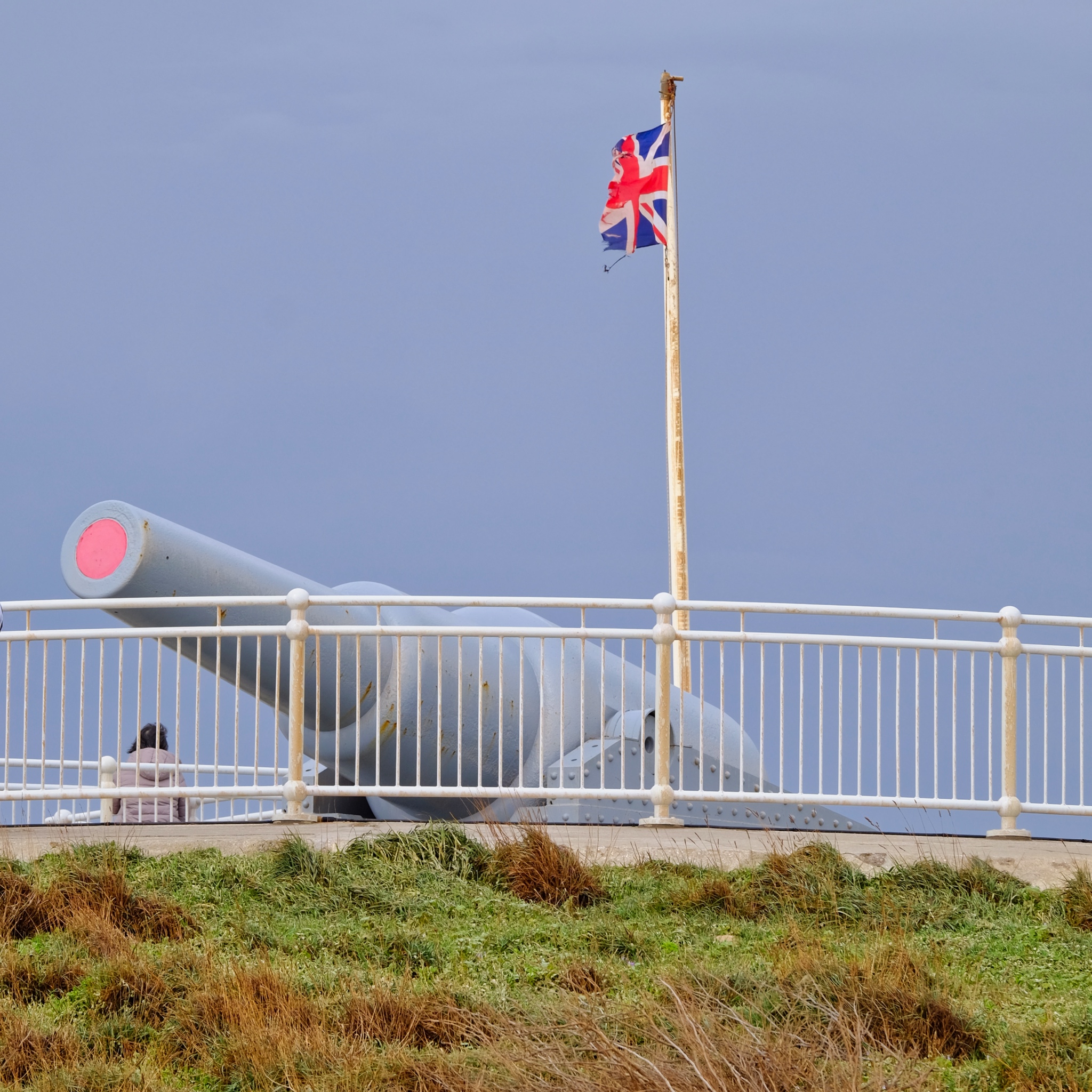 Gibraltar is a British territory . . . The residents recently voted 96% in favor of staying within the UK and not joining Spain . . . of course, they also voted 96% to stay within the EU during the Brexit vote!
Gibraltar is a British territory . . . The residents recently voted 96% in favor of staying within the UK and not joining Spain . . . of course, they also voted 96% to stay within the EU during the Brexit vote!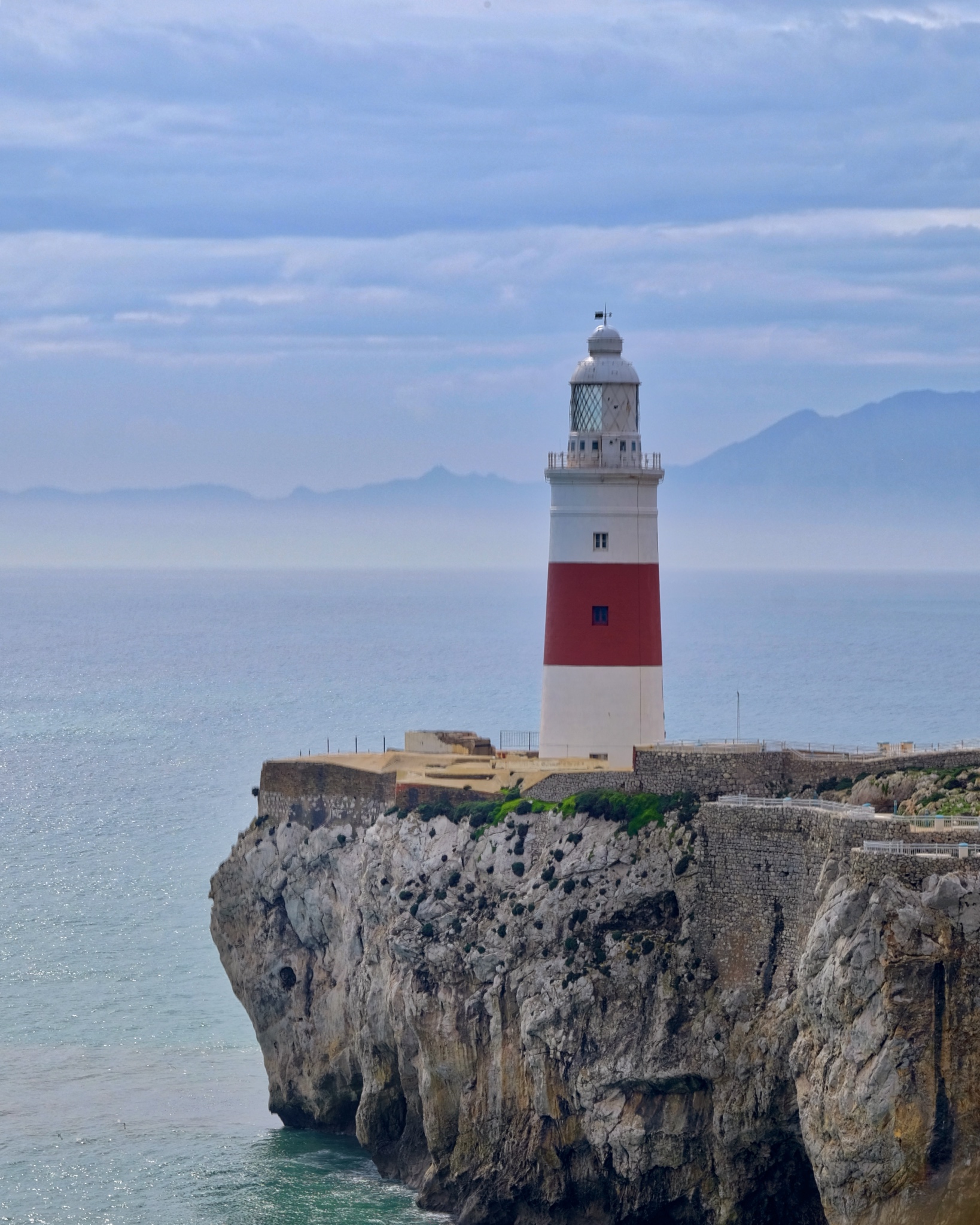 The lighthouse at the tip Gibraltar . . . this straight is also known as the Pillars of Hercules by the Greeks.
The lighthouse at the tip Gibraltar . . . this straight is also known as the Pillars of Hercules by the Greeks.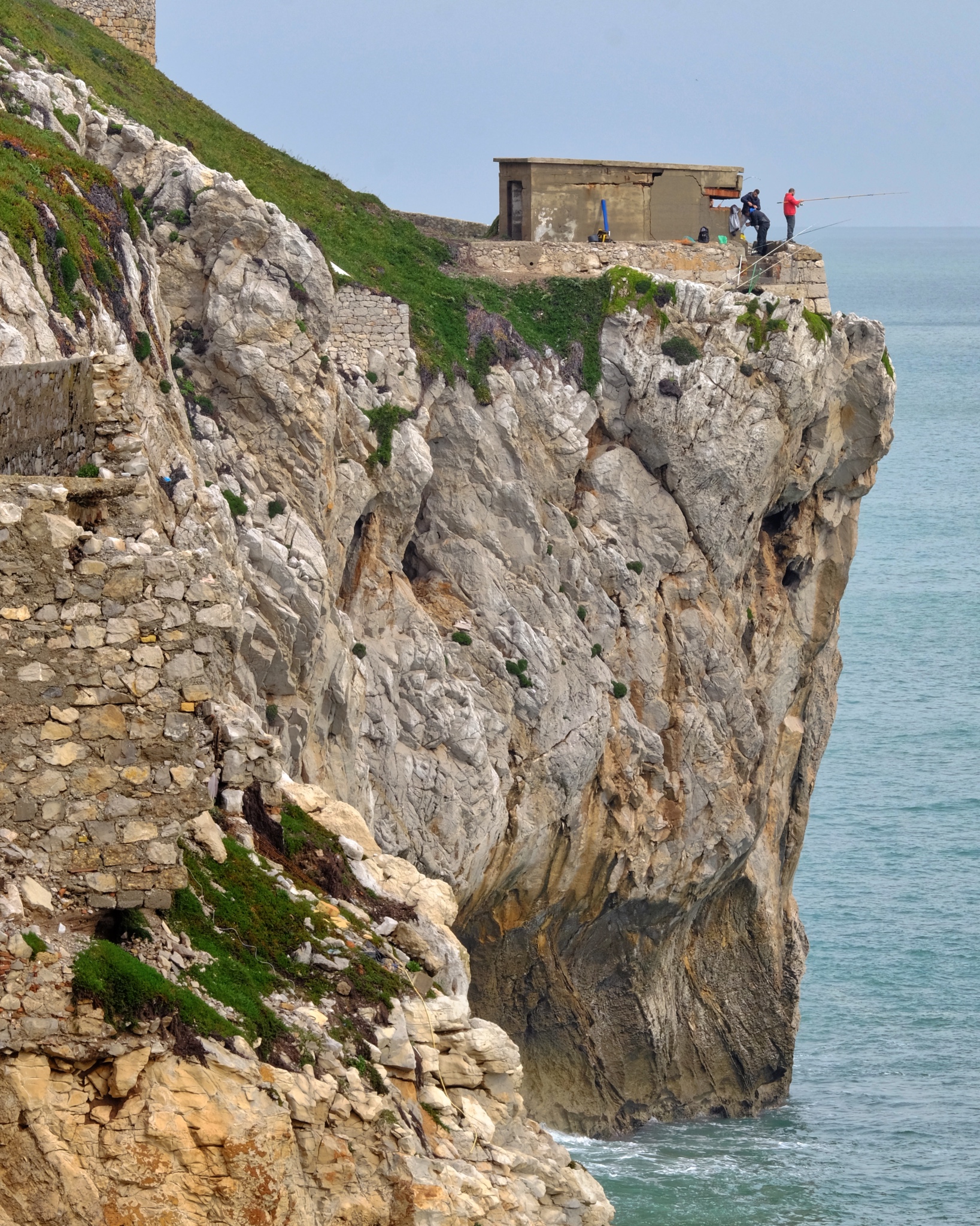 The 'rock' of Gibraltar falls directly into the Mediterranean Sea on the eastern side. Fishermen find good use of an old war pill box.
The 'rock' of Gibraltar falls directly into the Mediterranean Sea on the eastern side. Fishermen find good use of an old war pill box.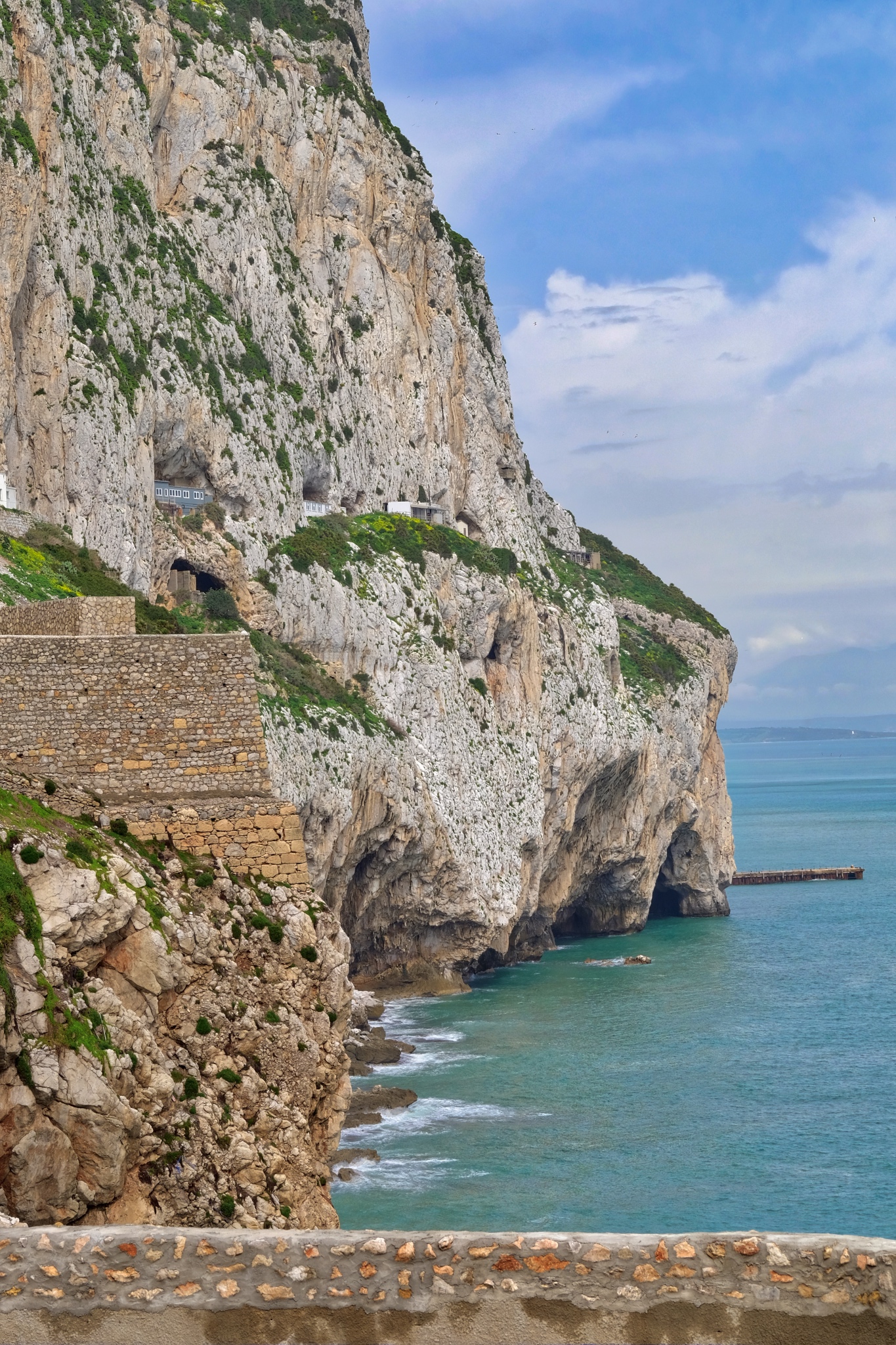 The cliffs of Gibraltar are compelling: their sheer size . . . and the remnants of structures left behind by the many former occupants over the millennia, draws the eye.
The cliffs of Gibraltar are compelling: their sheer size . . . and the remnants of structures left behind by the many former occupants over the millennia, draws the eye.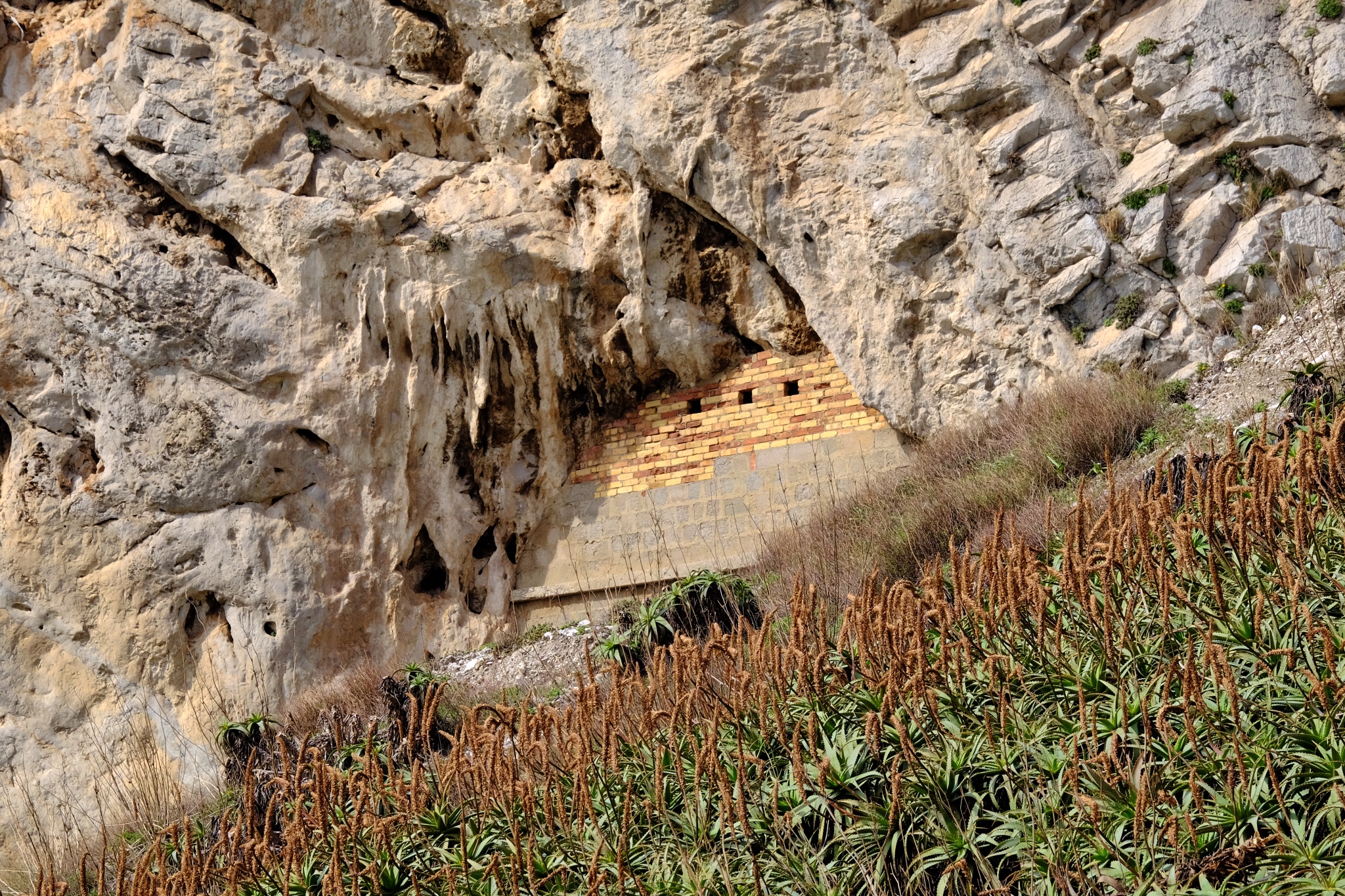 The whole of the rock is riddled with passages and tunnels used as fortified defensive emplacements.
The whole of the rock is riddled with passages and tunnels used as fortified defensive emplacements.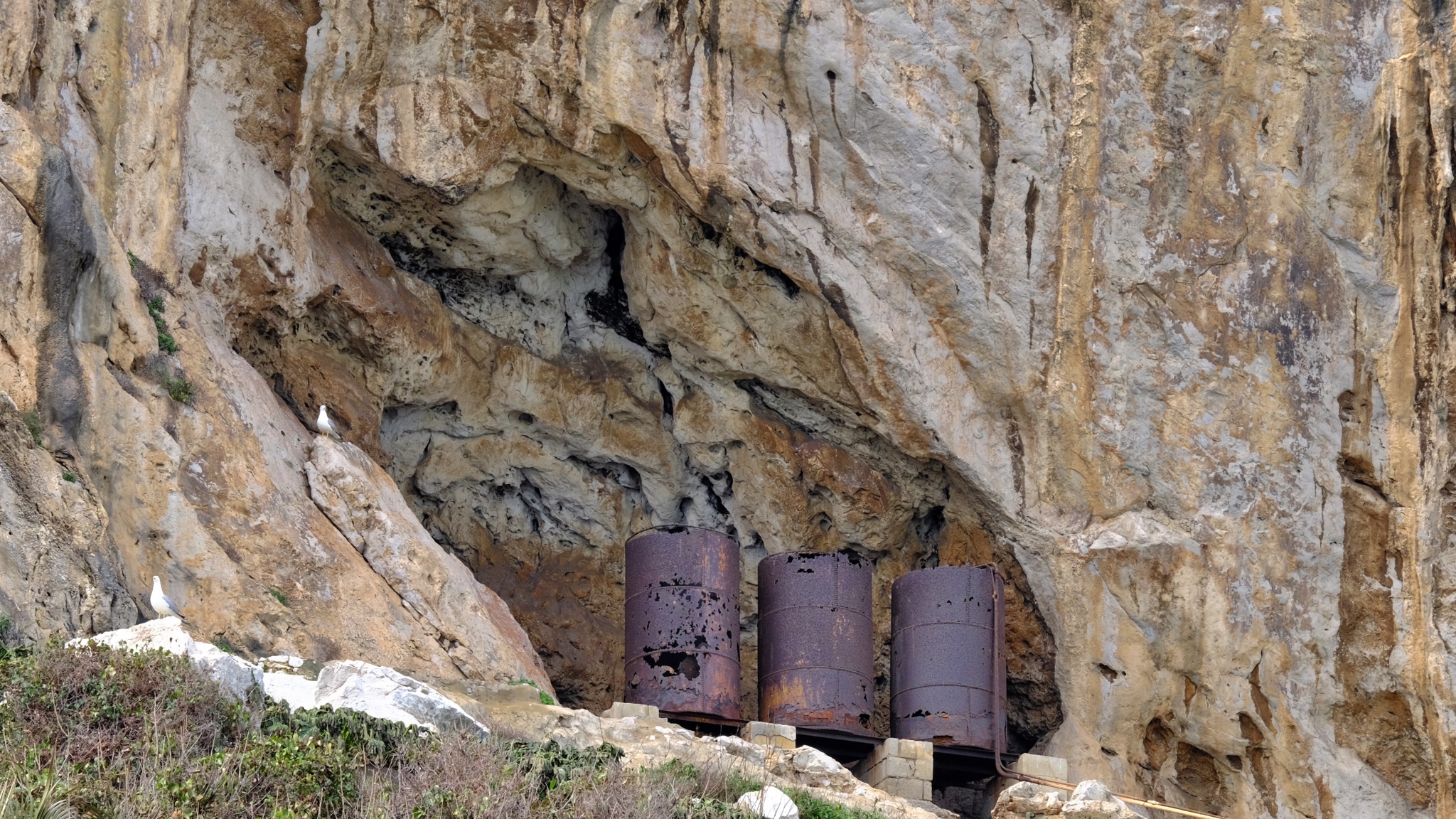 Some very old infrastructure left behind by a long forgotten project.
Some very old infrastructure left behind by a long forgotten project.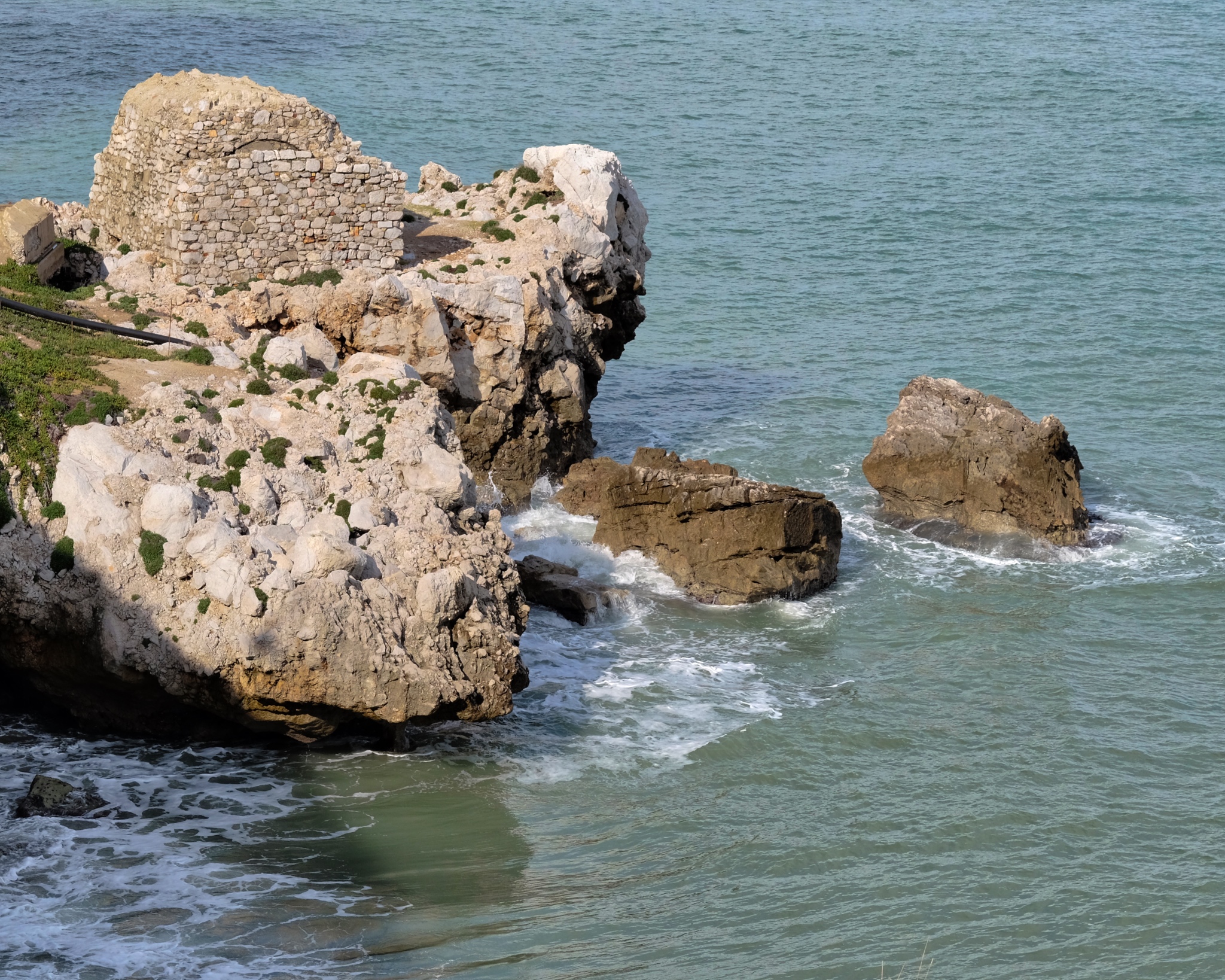 Everywhere a remnant of some previous occupier . . . Moorish?
Everywhere a remnant of some previous occupier . . . Moorish?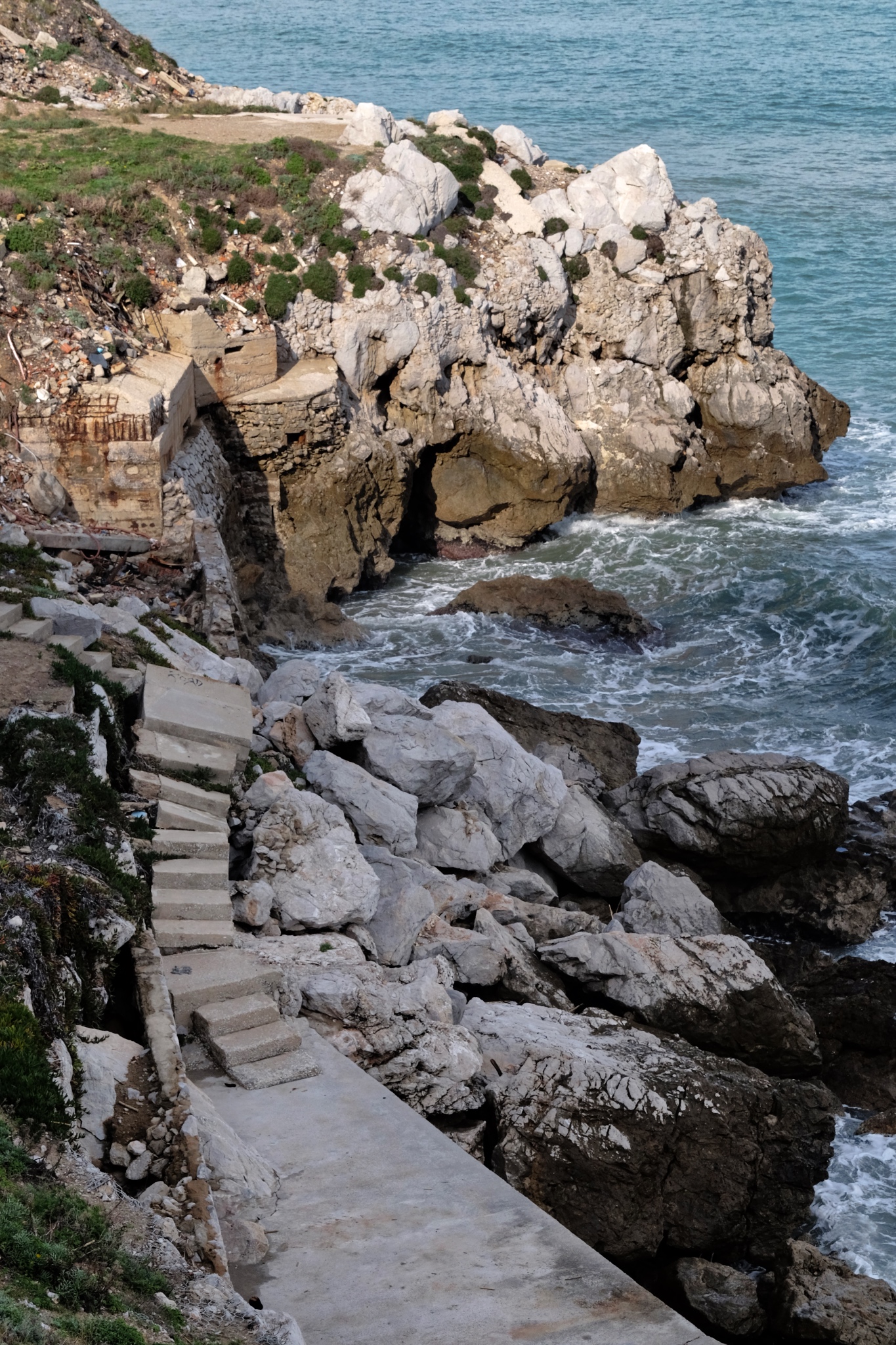 Many different building traces from many different eras all overlapping . . . . Gibraltar was occupied, at various times from 950BC, by the Phoneticians, Greeks, Carthaginians, Romans, Vandals, Goths, Visigoths, Moors, Nasrids, Medinas, Dutch, Spanish, and ultimately, the British.
Many different building traces from many different eras all overlapping . . . . Gibraltar was occupied, at various times from 950BC, by the Phoneticians, Greeks, Carthaginians, Romans, Vandals, Goths, Visigoths, Moors, Nasrids, Medinas, Dutch, Spanish, and ultimately, the British.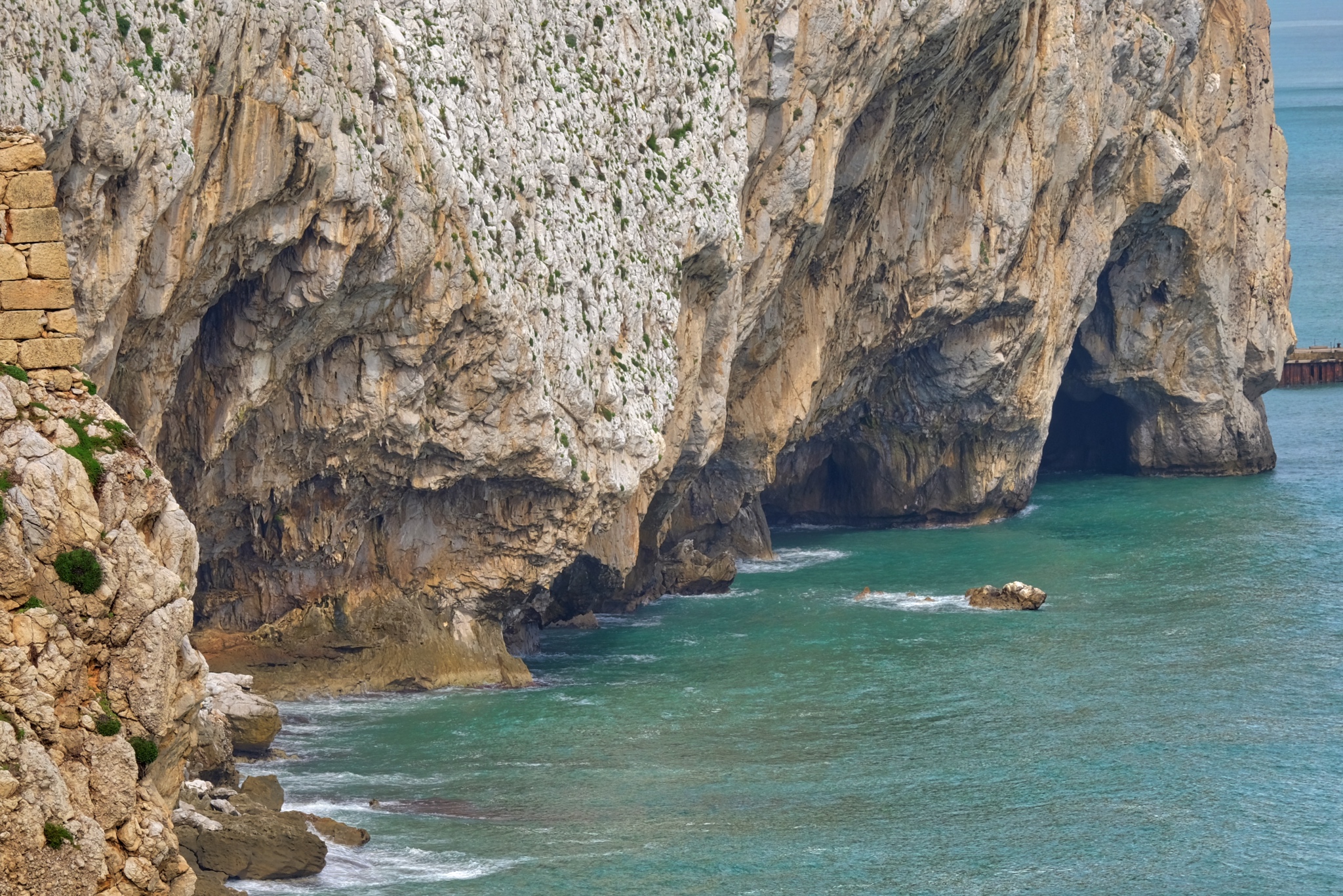 Near here, in Gorham's Cave, Neanderthal remains were found dating to 55,000 years ago.
Near here, in Gorham's Cave, Neanderthal remains were found dating to 55,000 years ago.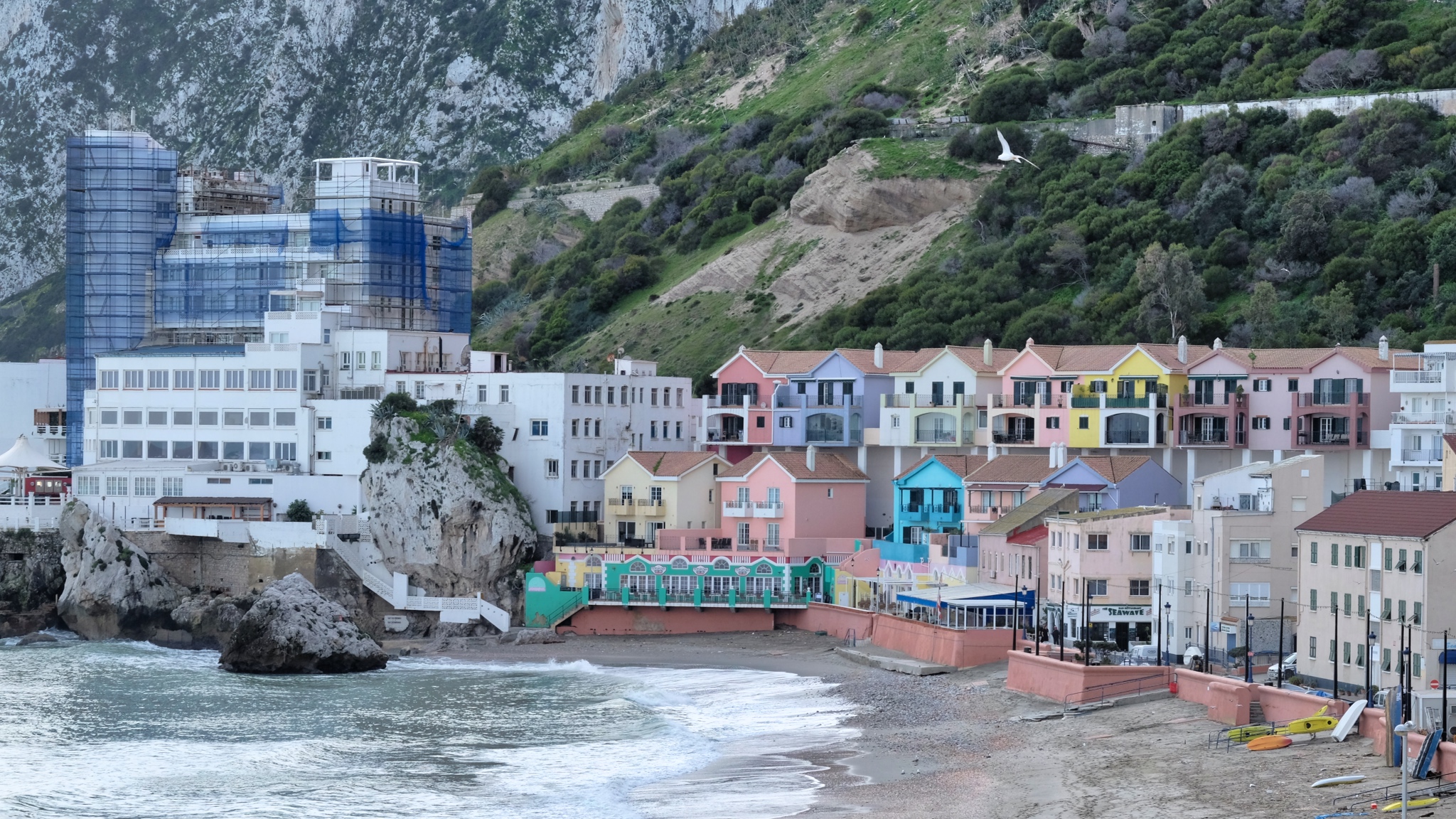 Today, Gibraltar is a Mecca for Mediterranean cruise ships and British retirees (pensioners).
Today, Gibraltar is a Mecca for Mediterranean cruise ships and British retirees (pensioners).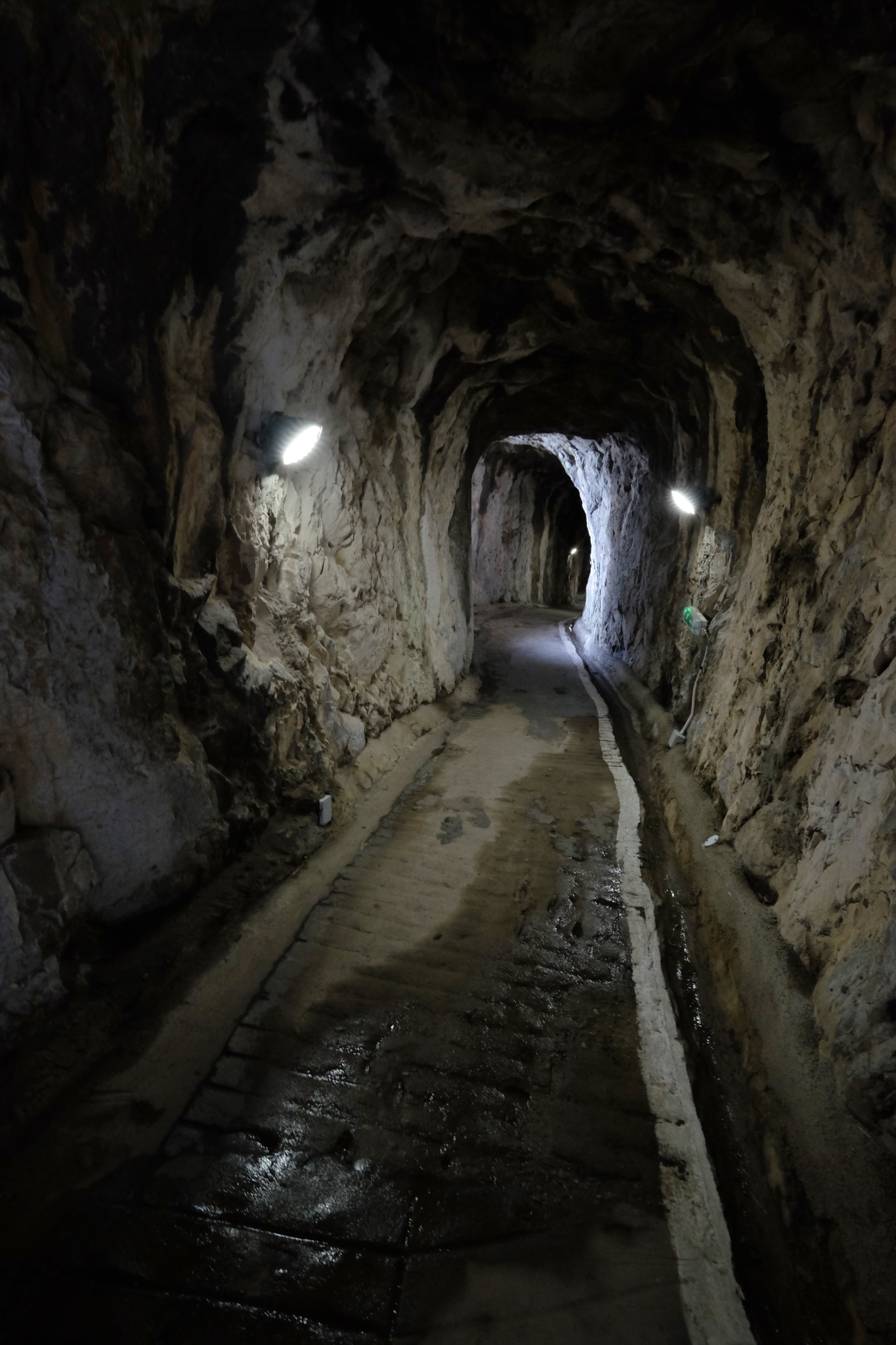 The Rock of Gibraltar is as riddled with caves and tunnels as a block of Swiss cheese. The massive rock was the ideal place to build hardened shelters during times of war, particularly during WWI and WWII. These tunnels date to even before those times when the British and the Spanish were at constant conflict.
The Rock of Gibraltar is as riddled with caves and tunnels as a block of Swiss cheese. The massive rock was the ideal place to build hardened shelters during times of war, particularly during WWI and WWII. These tunnels date to even before those times when the British and the Spanish were at constant conflict.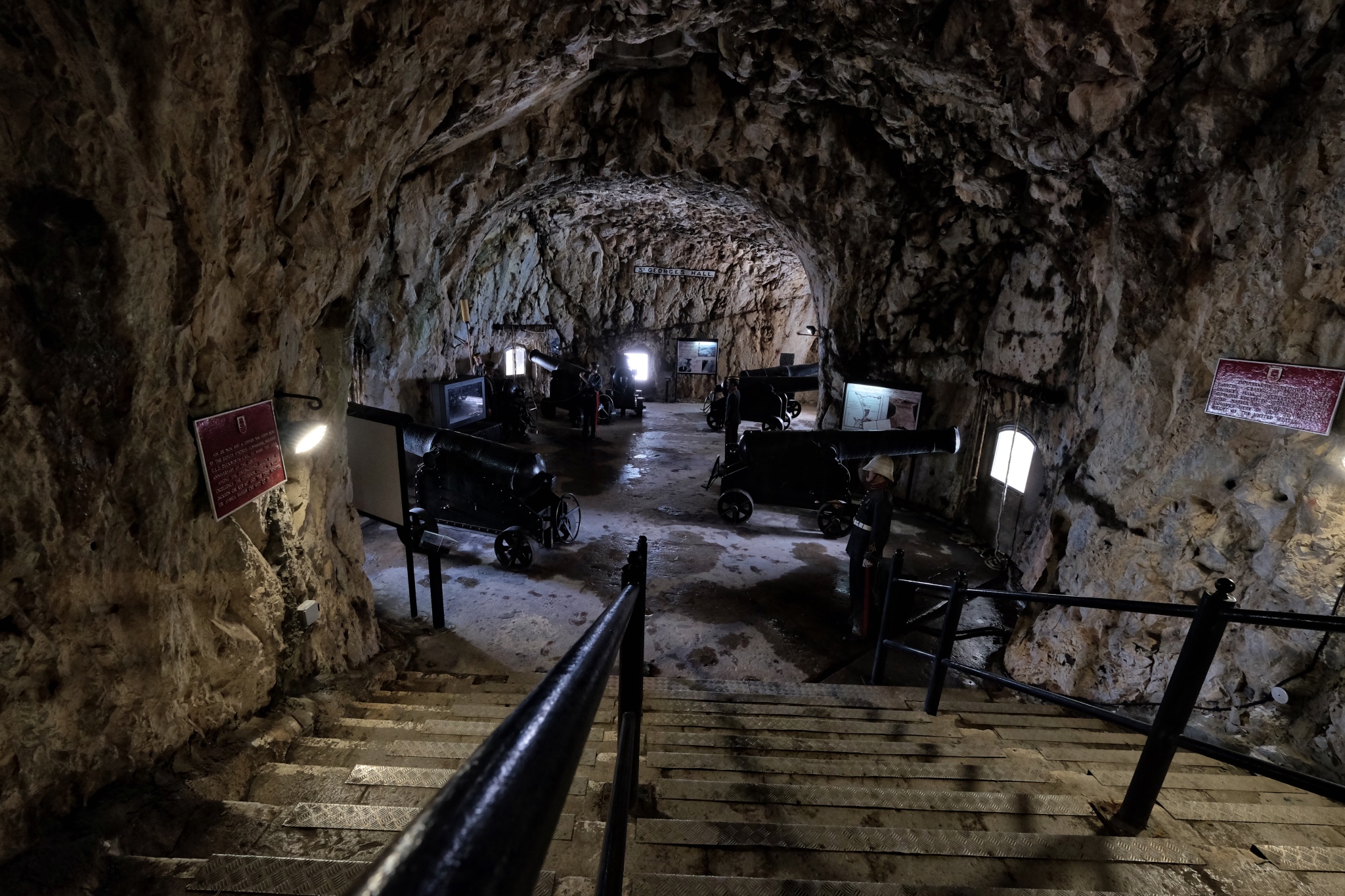 The St. George Tunnel is still equipped with the original cannon from the era.
The St. George Tunnel is still equipped with the original cannon from the era.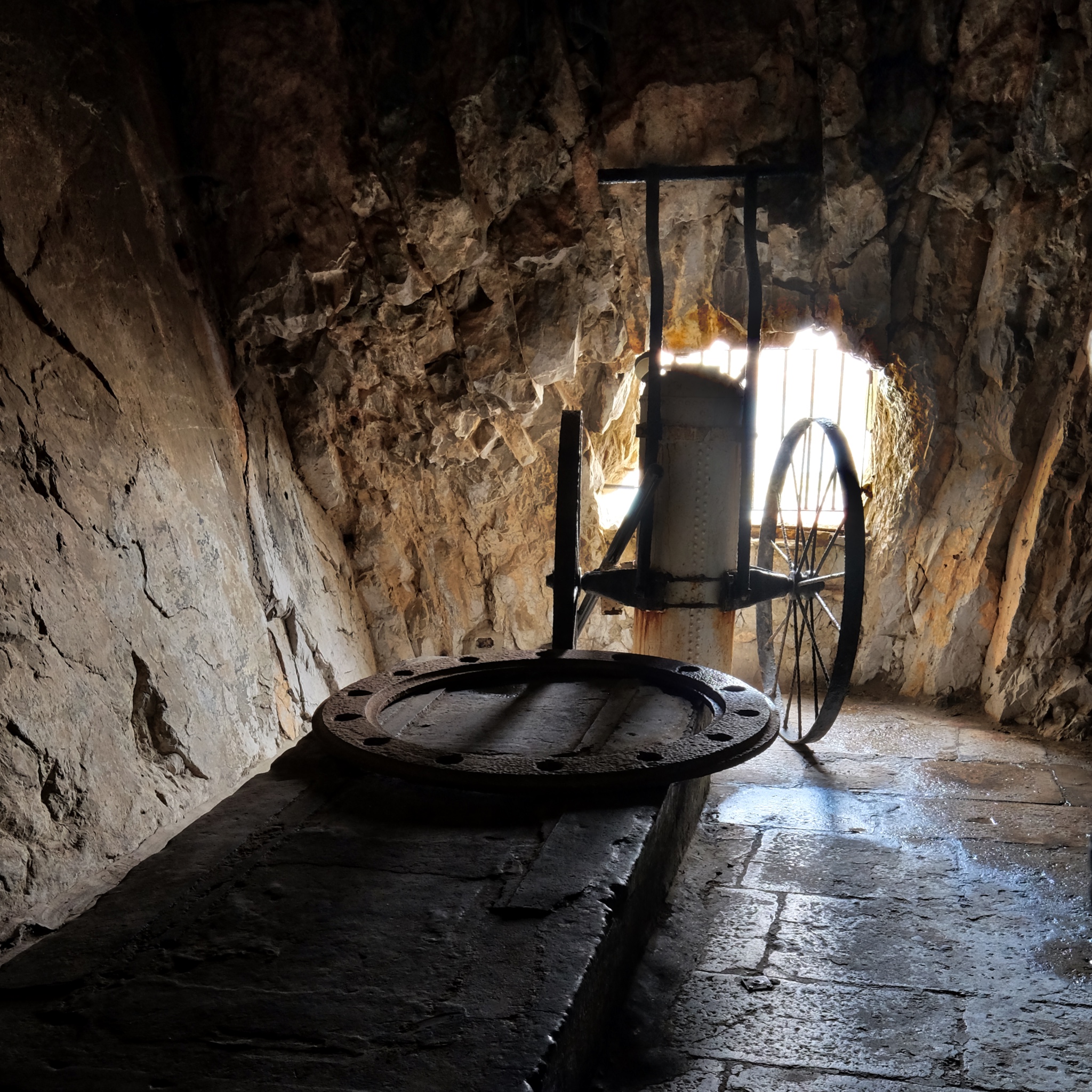 Although the cannon is missing, the turret and fire safety cart remains.
Although the cannon is missing, the turret and fire safety cart remains.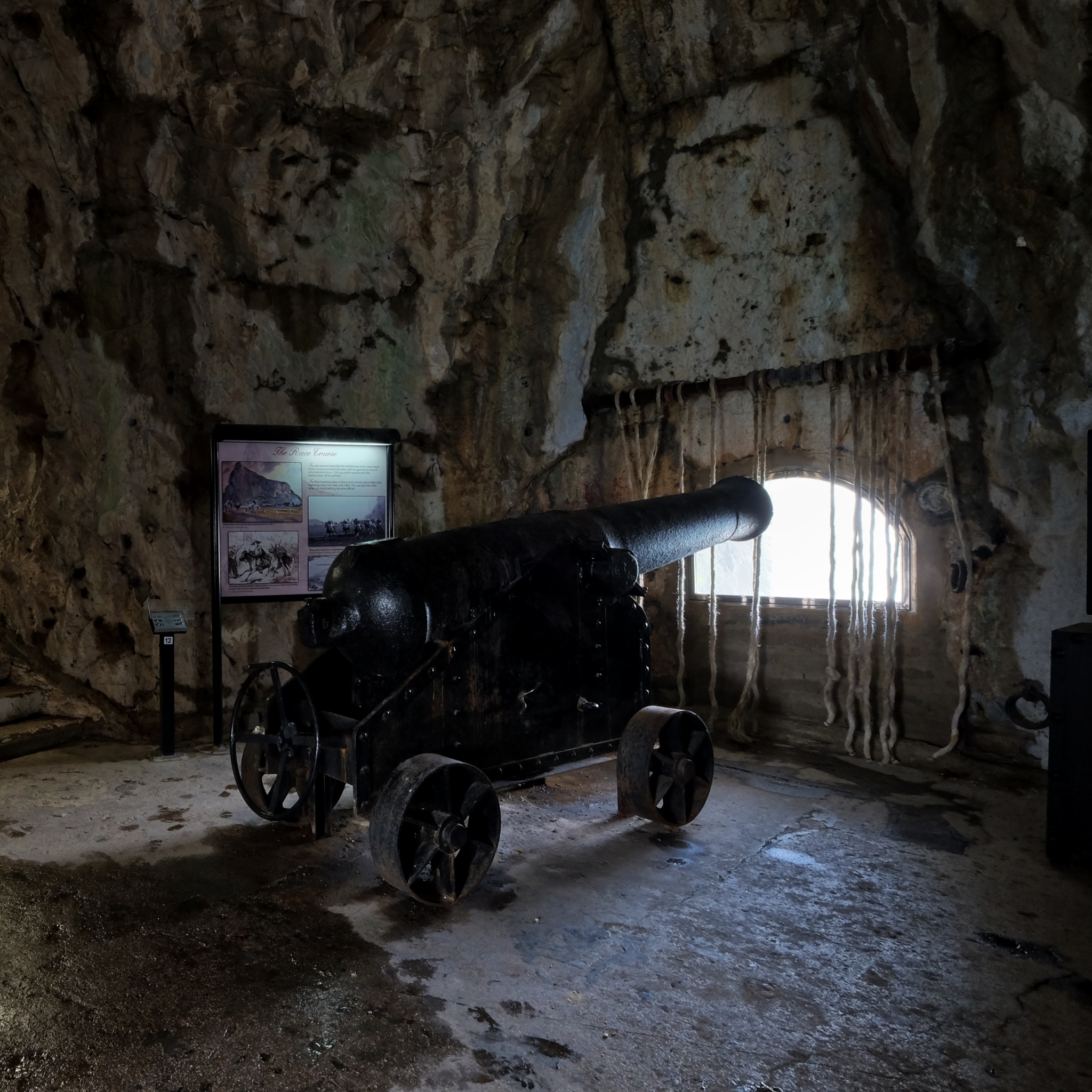 The historical placards were very informative and made the tunnel visit very interesting.
The historical placards were very informative and made the tunnel visit very interesting.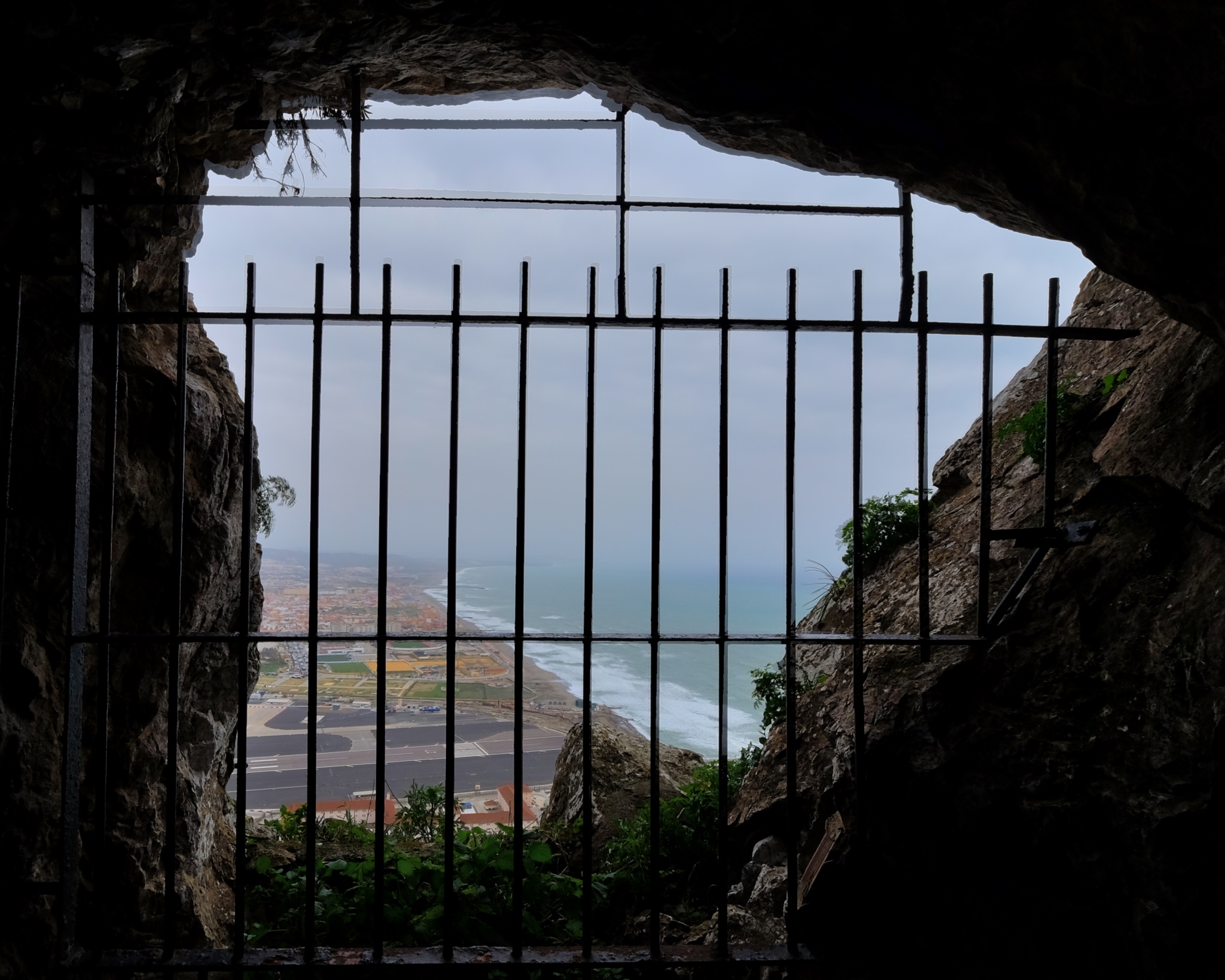 This view from a cannon emplacement is testimony to the strategic importance of these tunnels.
This view from a cannon emplacement is testimony to the strategic importance of these tunnels.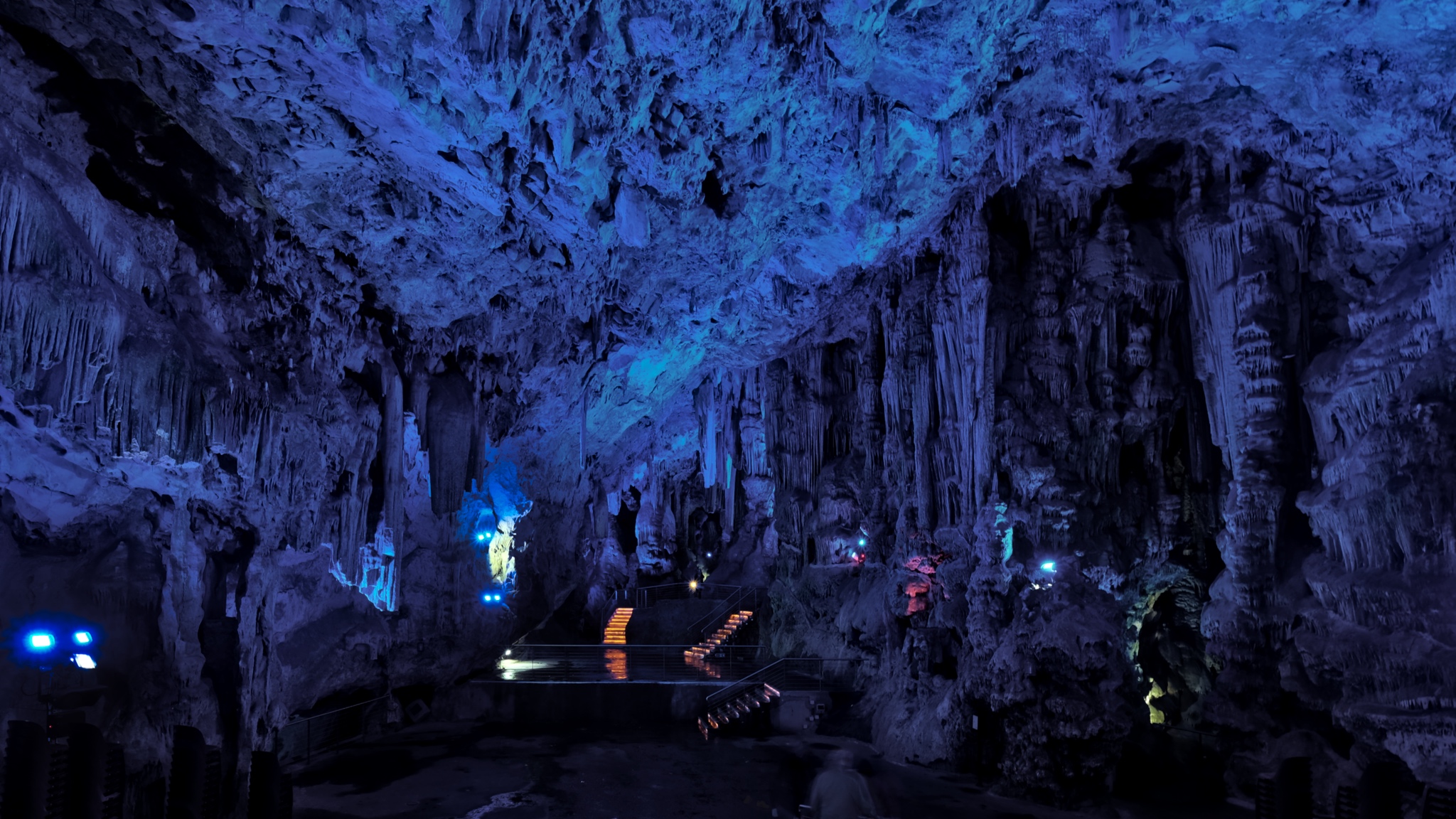 In addition to the military tunnels, there are also natural caves in the Rock of Gibraltar. For a nominal fee, you were treated to giant caverns lit by an ever-changing Xmas tree light.
In addition to the military tunnels, there are also natural caves in the Rock of Gibraltar. For a nominal fee, you were treated to giant caverns lit by an ever-changing Xmas tree light.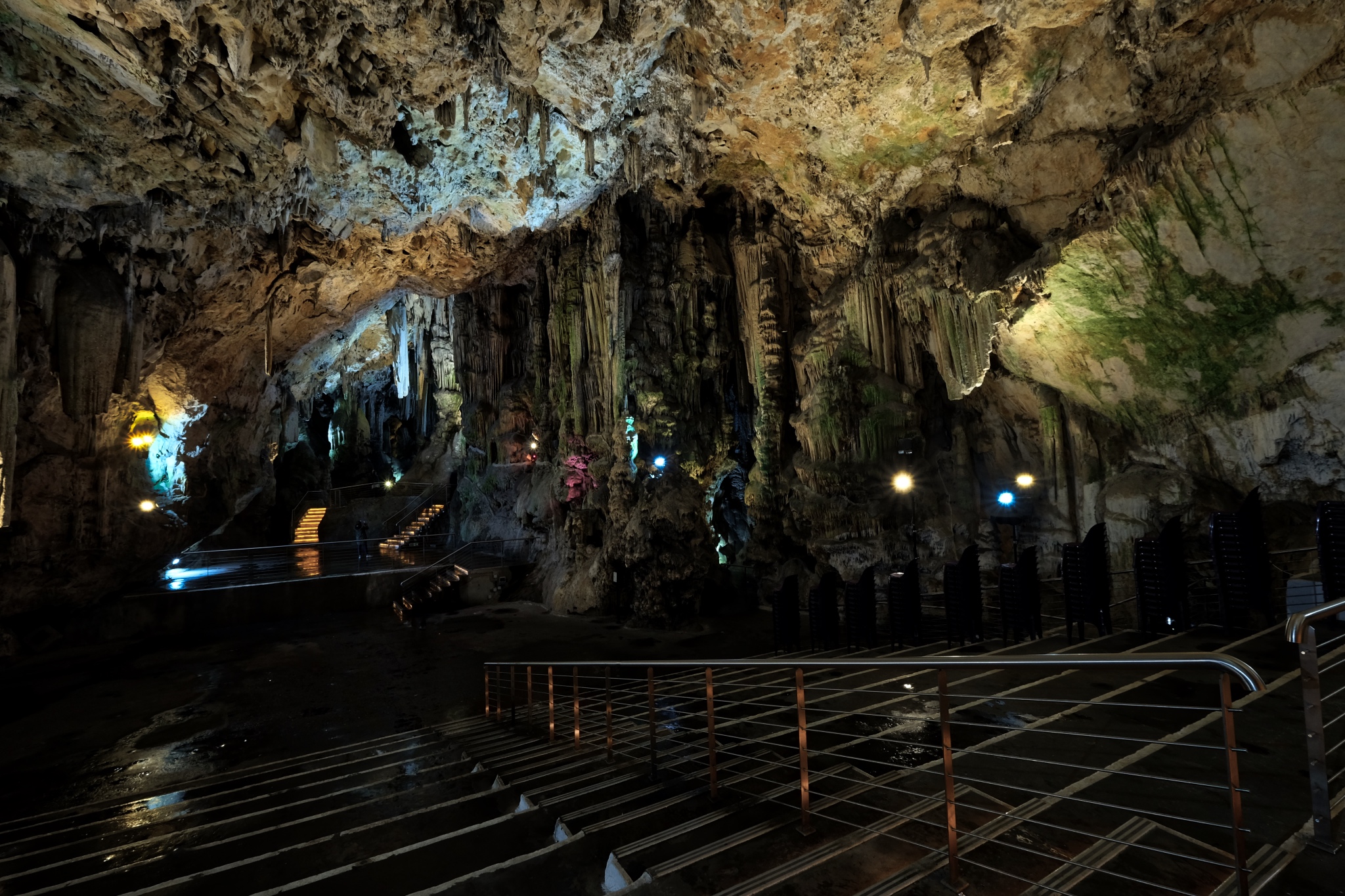 It appeared that they must hold musical events inside the cavern from time to time.
It appeared that they must hold musical events inside the cavern from time to time.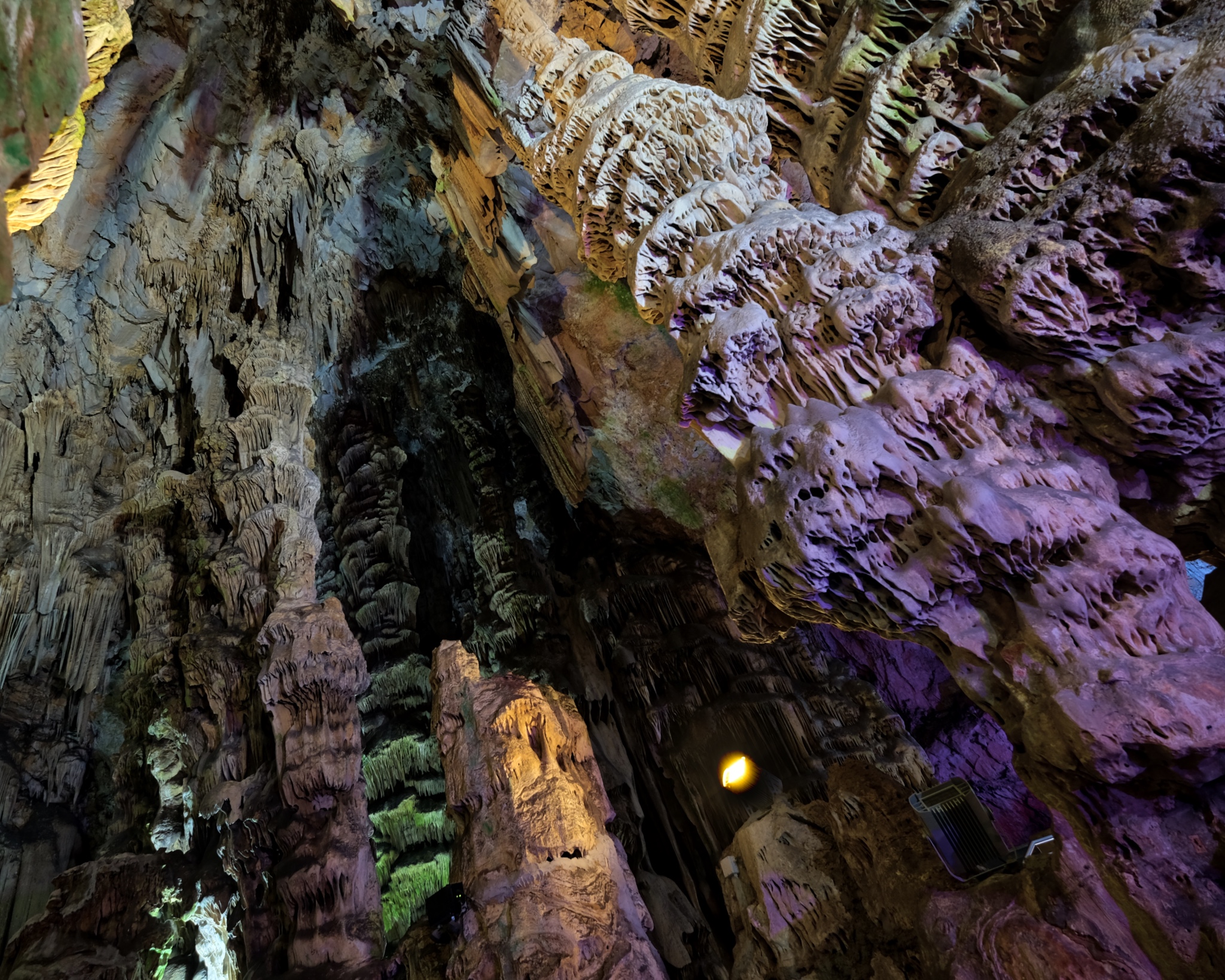 A very beautiful place indeed.
A very beautiful place indeed.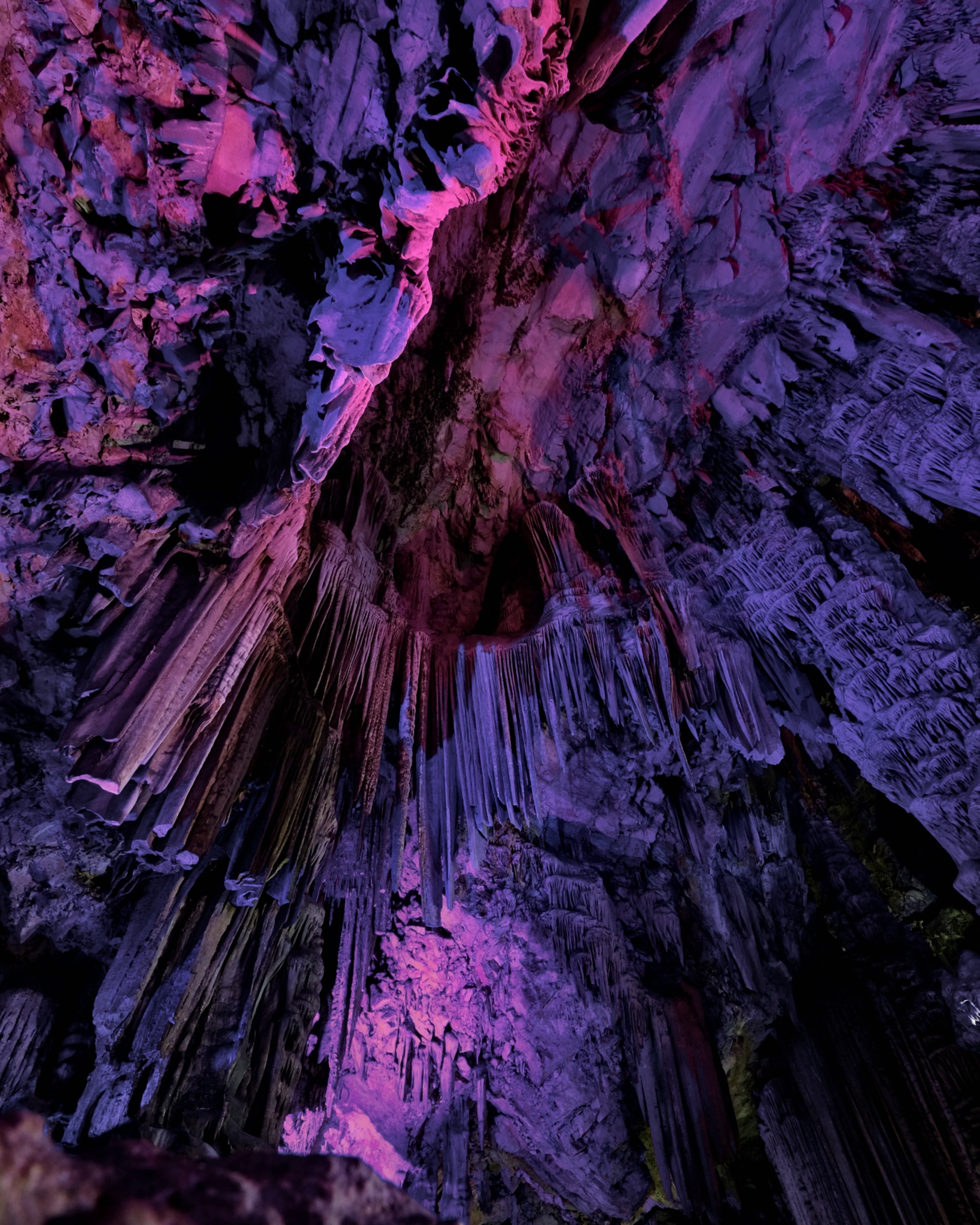 The colored lights grew on you after a while.
The colored lights grew on you after a while.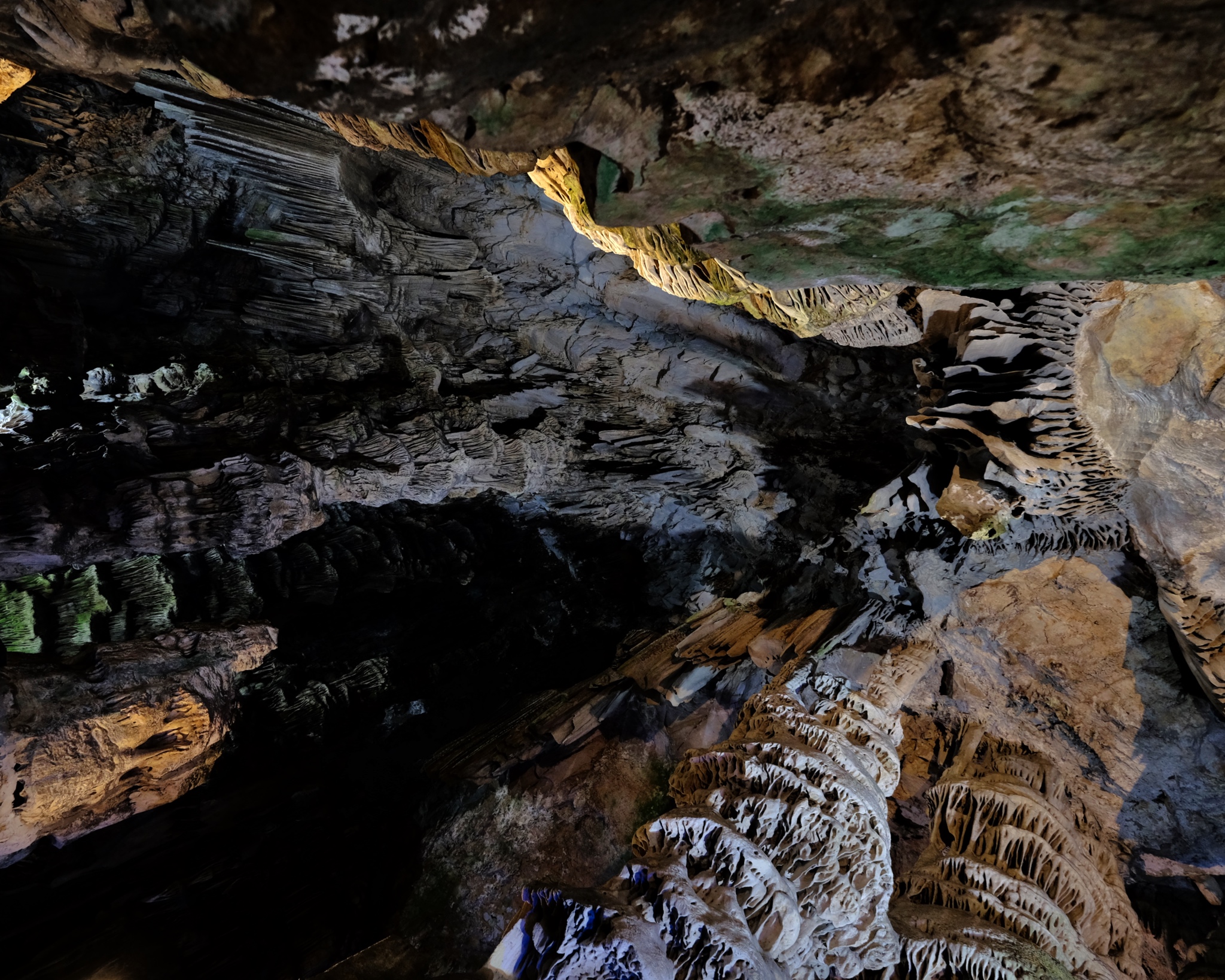 We enjoyed our walk-through of the caves. When we emerged were greeted by . . .
We enjoyed our walk-through of the caves. When we emerged were greeted by . . .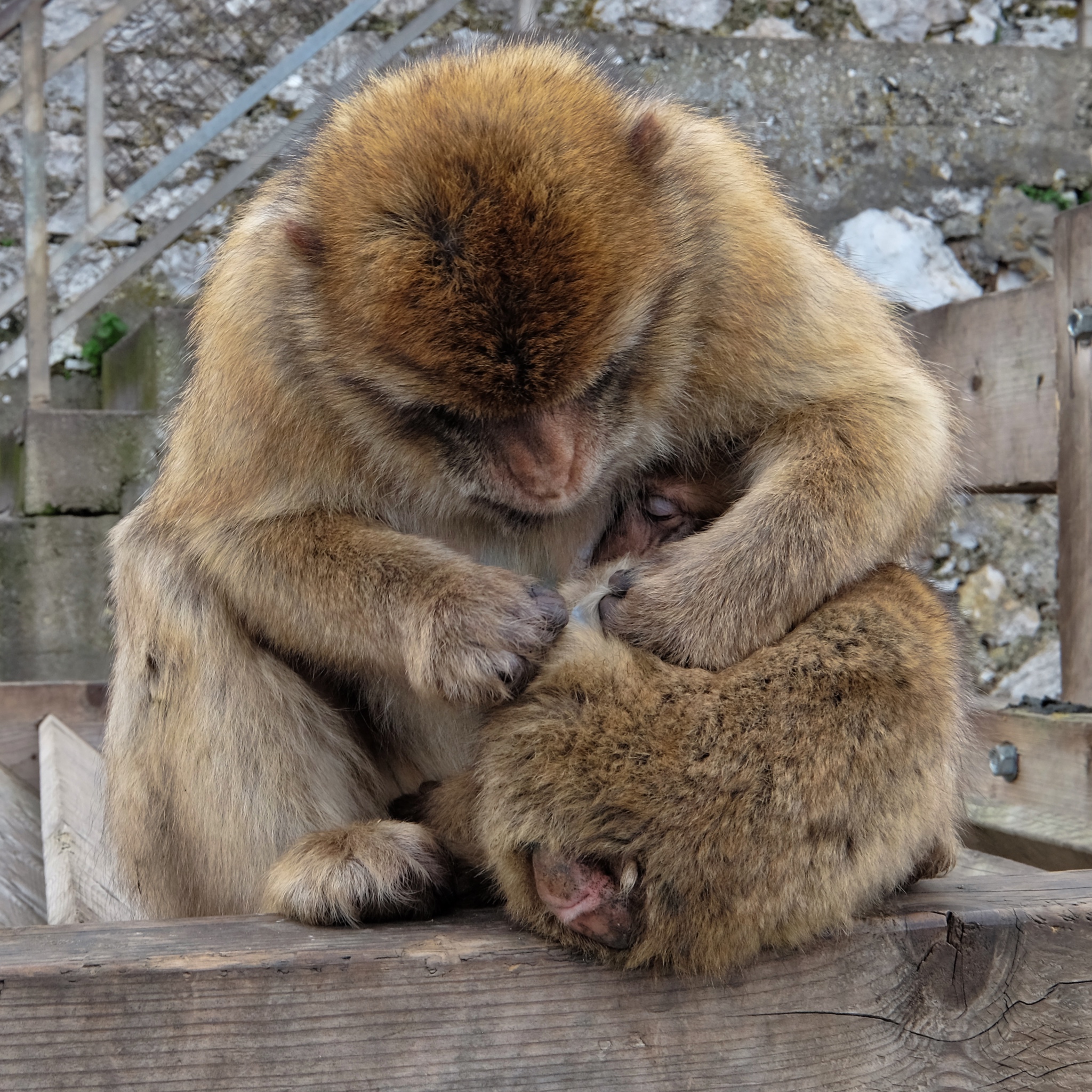 Monkeys! Lots of monkeys! We were warned about the monkeys . . . that they were little pickpockets! One does not associate monkeys with Europe . . . but there you are!
Monkeys! Lots of monkeys! We were warned about the monkeys . . . that they were little pickpockets! One does not associate monkeys with Europe . . . but there you are!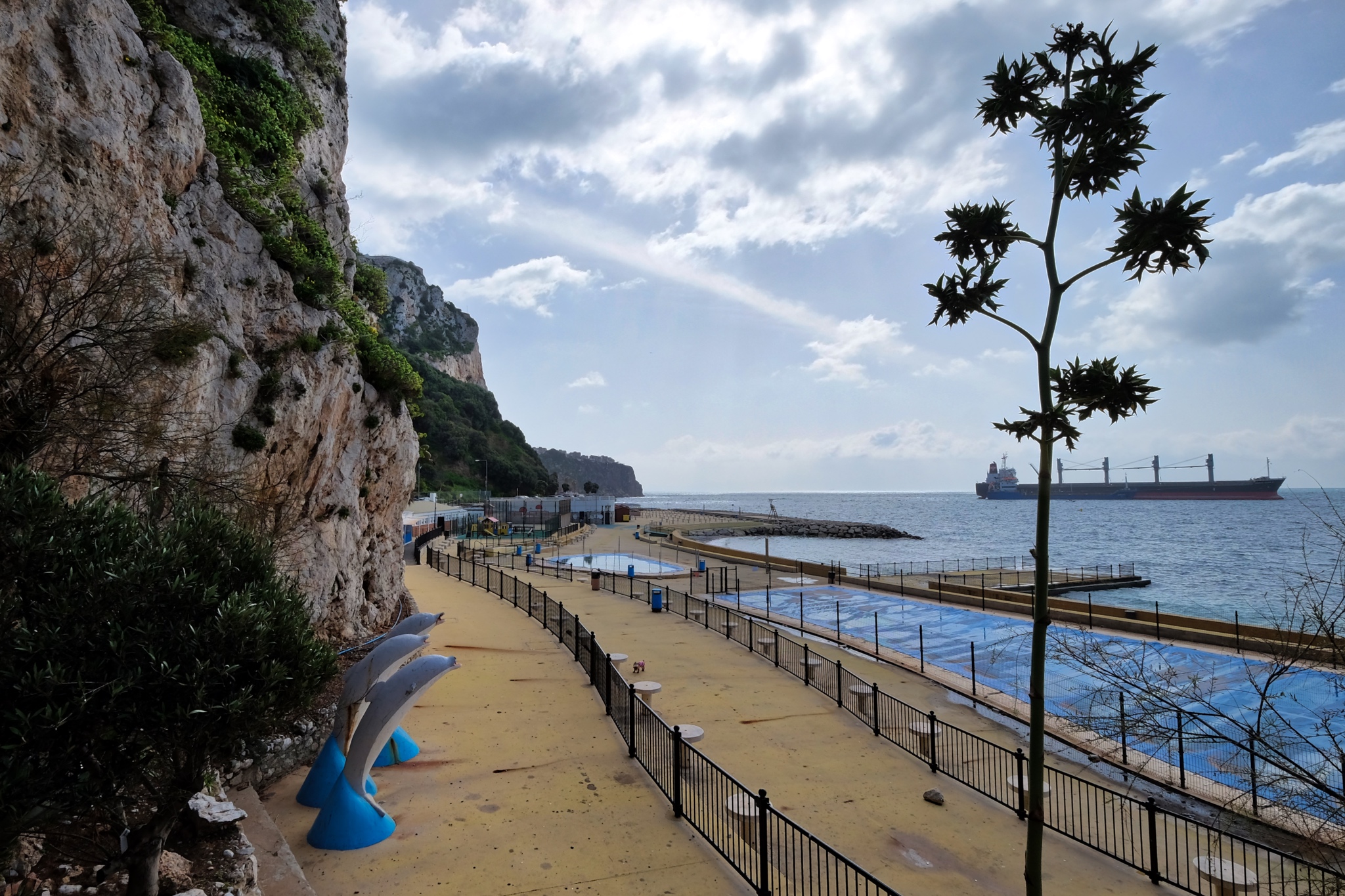
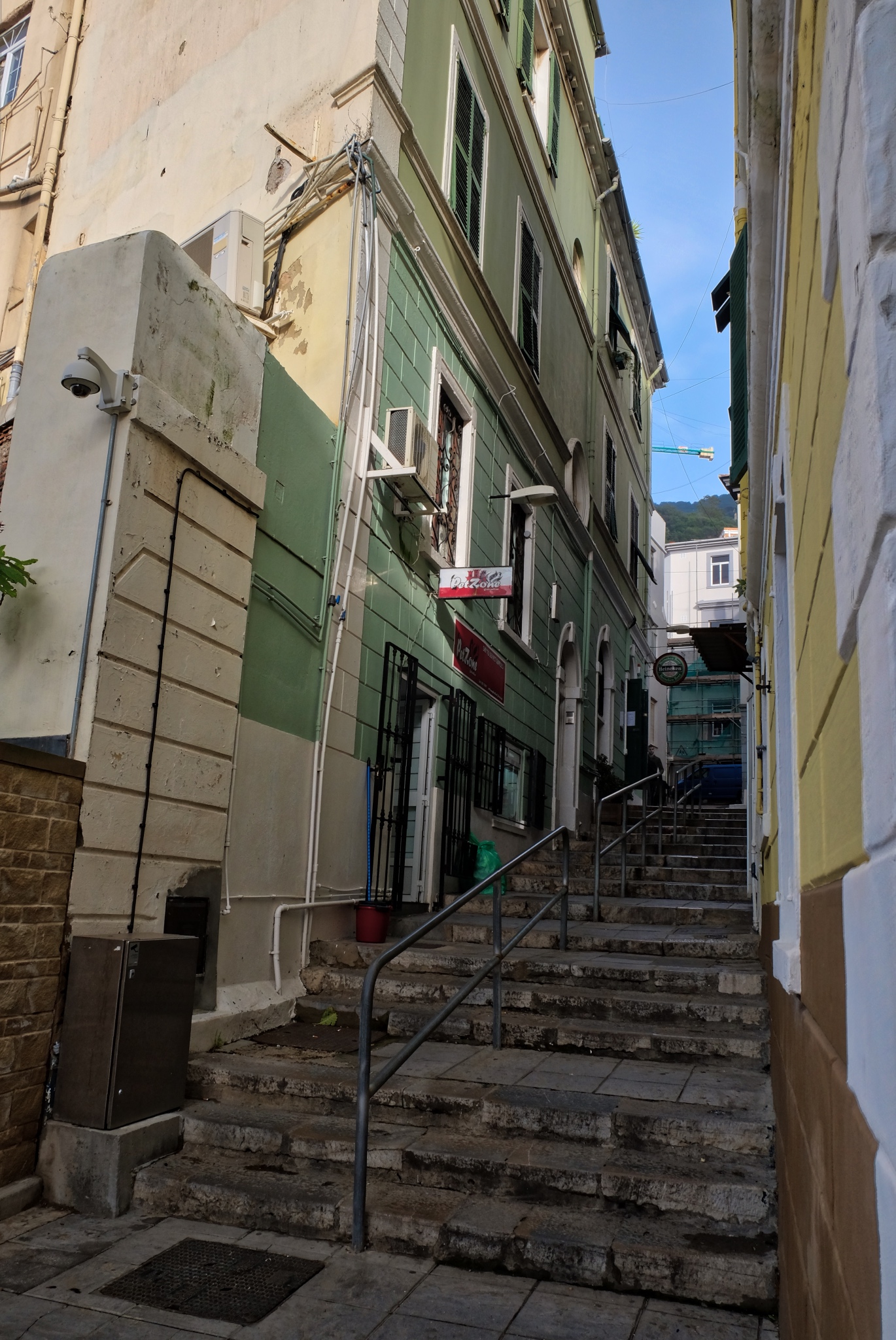 Gibraltar is, of course, built on the side of a big rock with little flat ground. As such, the streets and alleys are often just steep stairs.
Gibraltar is, of course, built on the side of a big rock with little flat ground. As such, the streets and alleys are often just steep stairs.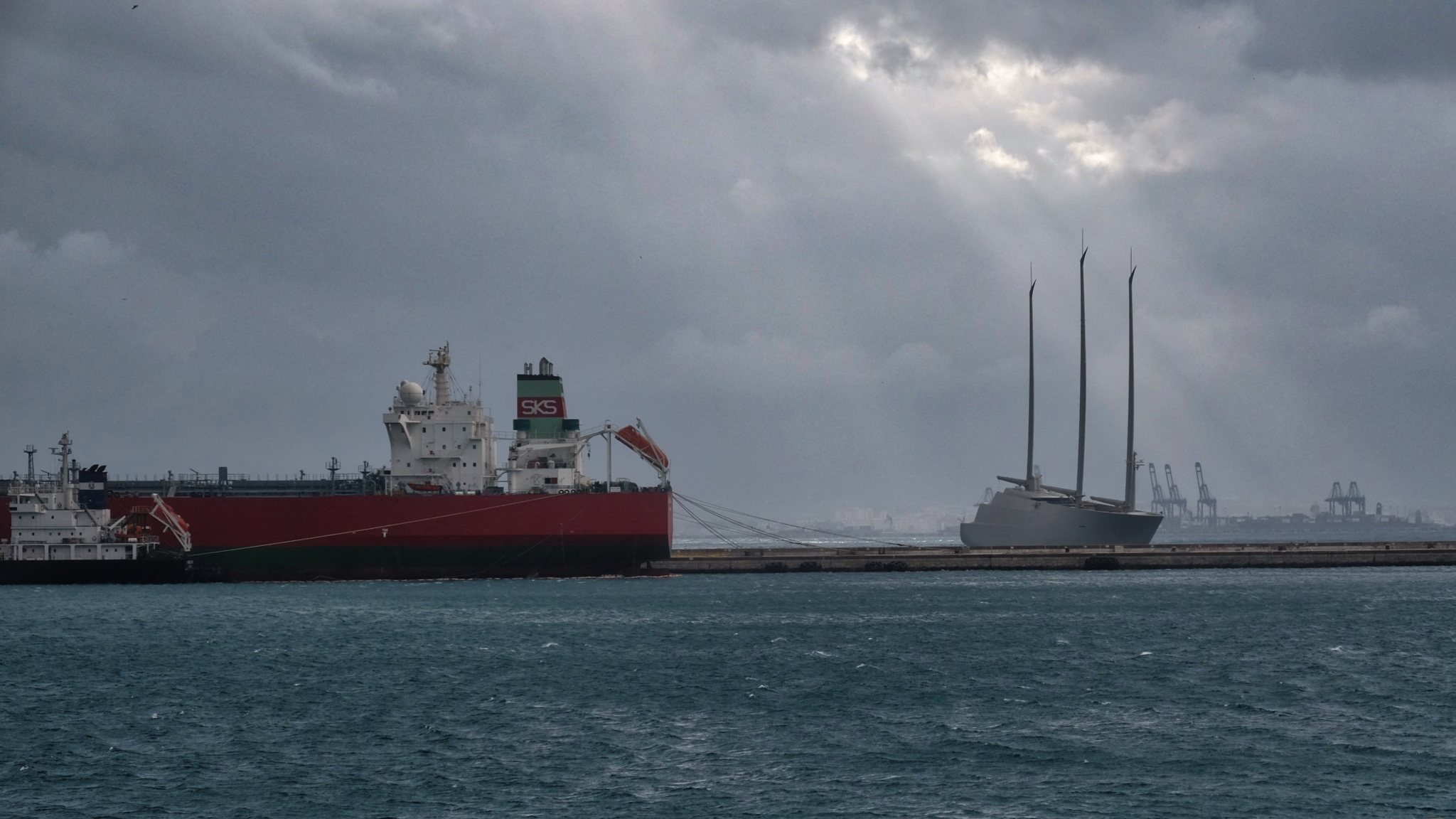 Gibraltar is also a port city . . . and a place for a 'mystery Russian' to came and try for sea trials and licensing of a stealth sailing ship. This Dark Boat was the talk of the town's permanent residents. It was gone in the morning.
Gibraltar is also a port city . . . and a place for a 'mystery Russian' to came and try for sea trials and licensing of a stealth sailing ship. This Dark Boat was the talk of the town's permanent residents. It was gone in the morning.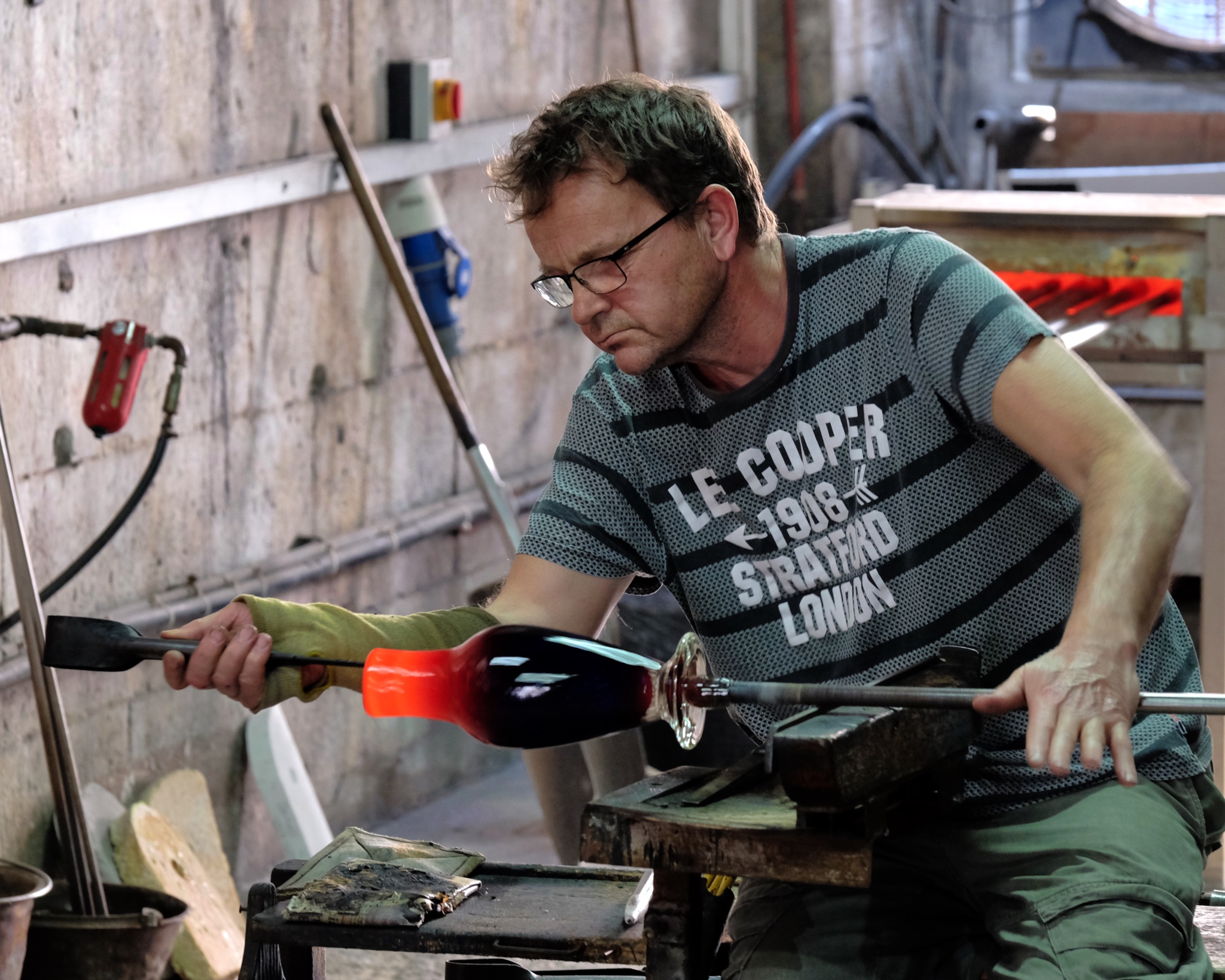 There are craft shops open to the public. Here a famous glassblower plys his trade.
There are craft shops open to the public. Here a famous glassblower plys his trade.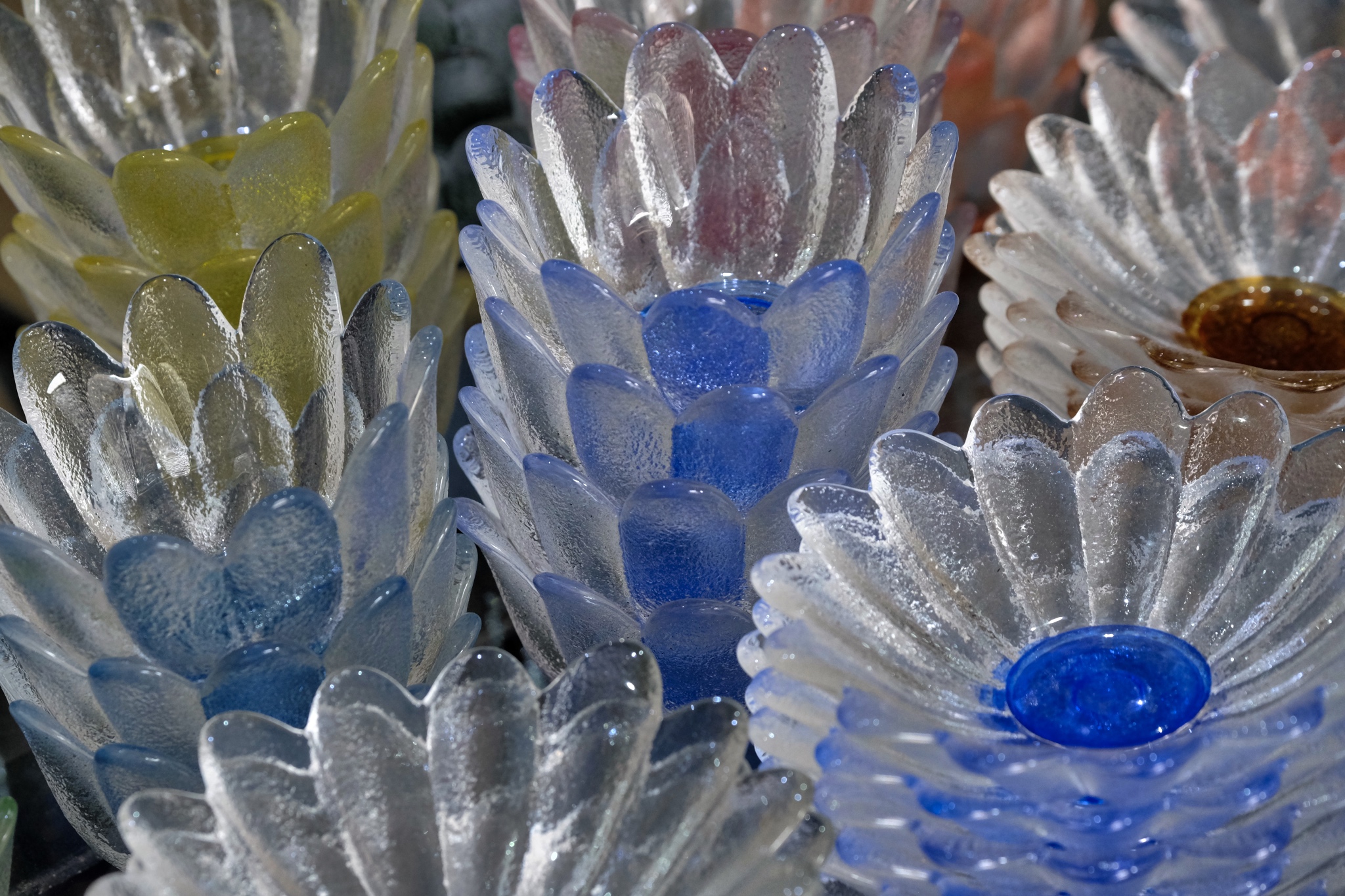 Beautiful work too . . .
Beautiful work too . . .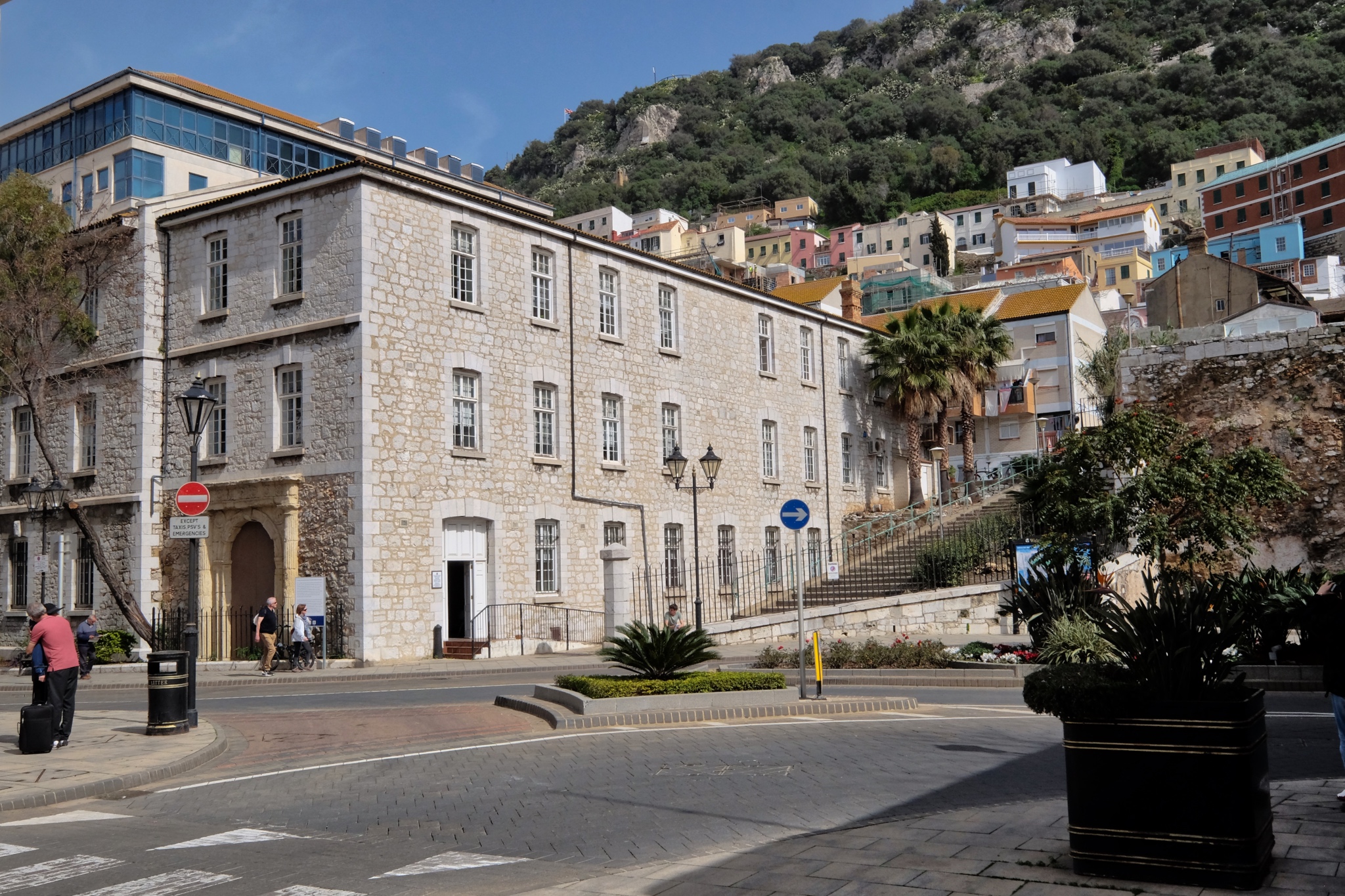 Gibraltar town sits fast against the famous 'Rock.'
Gibraltar town sits fast against the famous 'Rock.'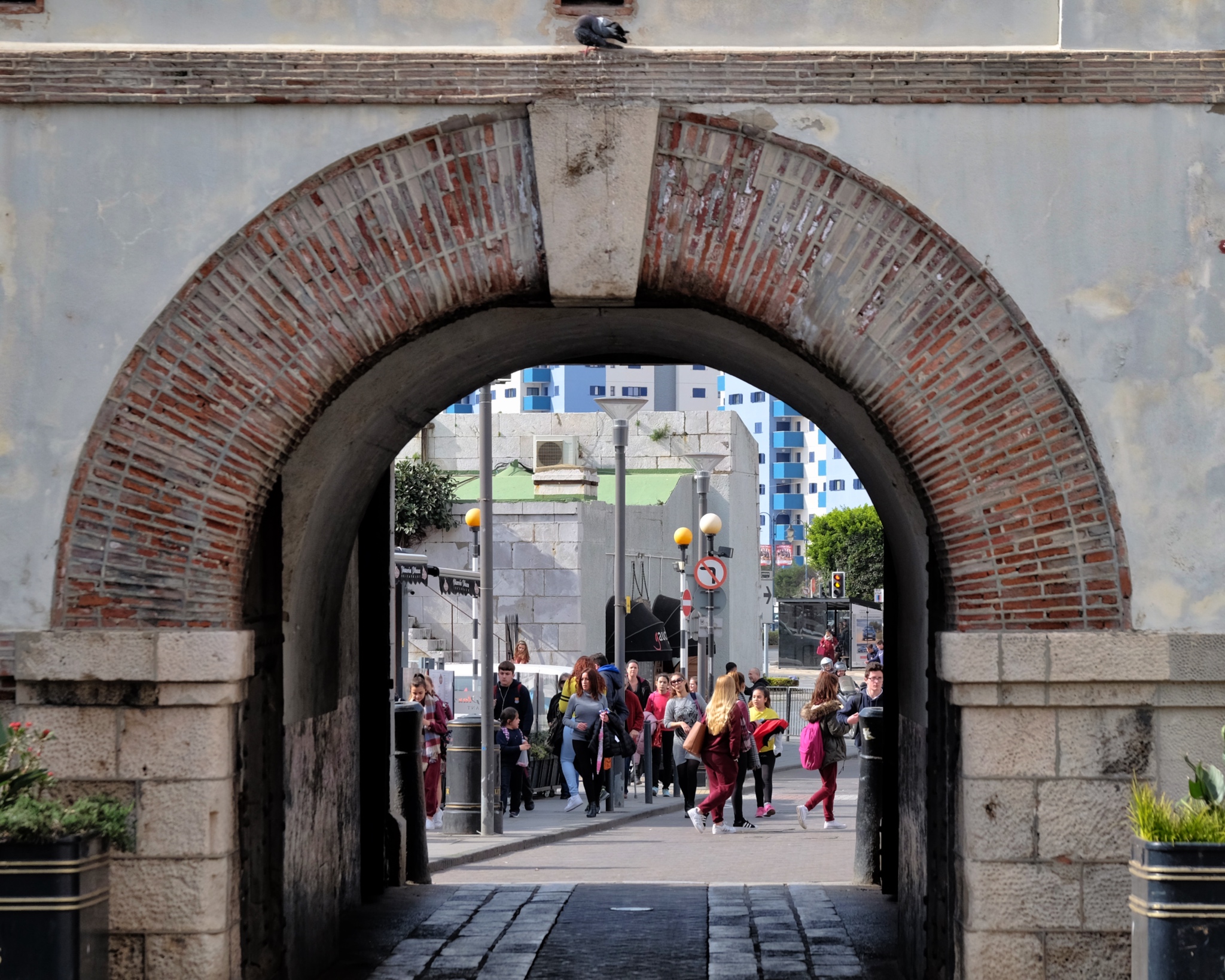 The south city gate . . . already a few tourists mixed in with the locals . . .
The south city gate . . . already a few tourists mixed in with the locals . . .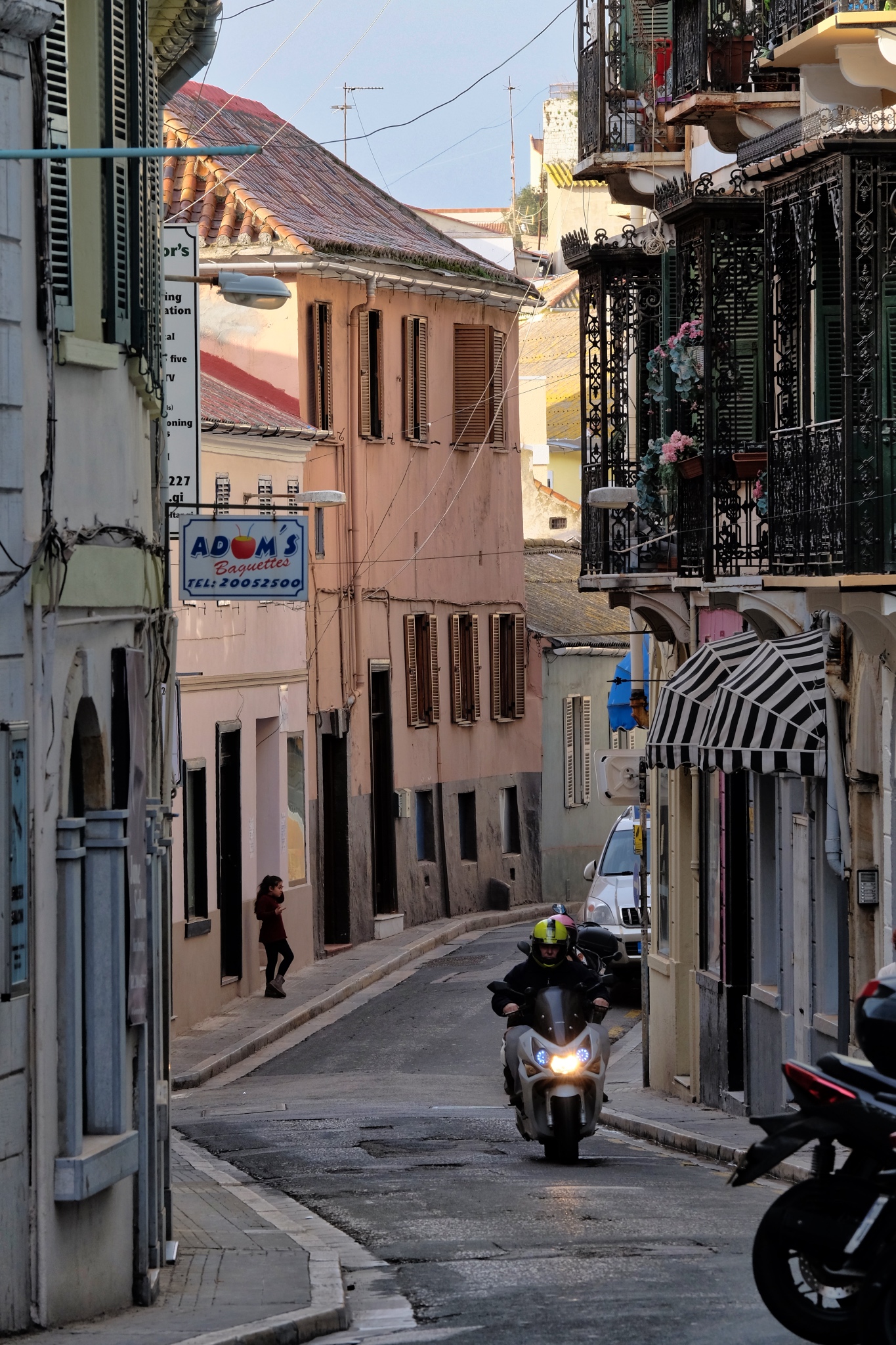 There are some beautiful curving streets through the old town.
There are some beautiful curving streets through the old town.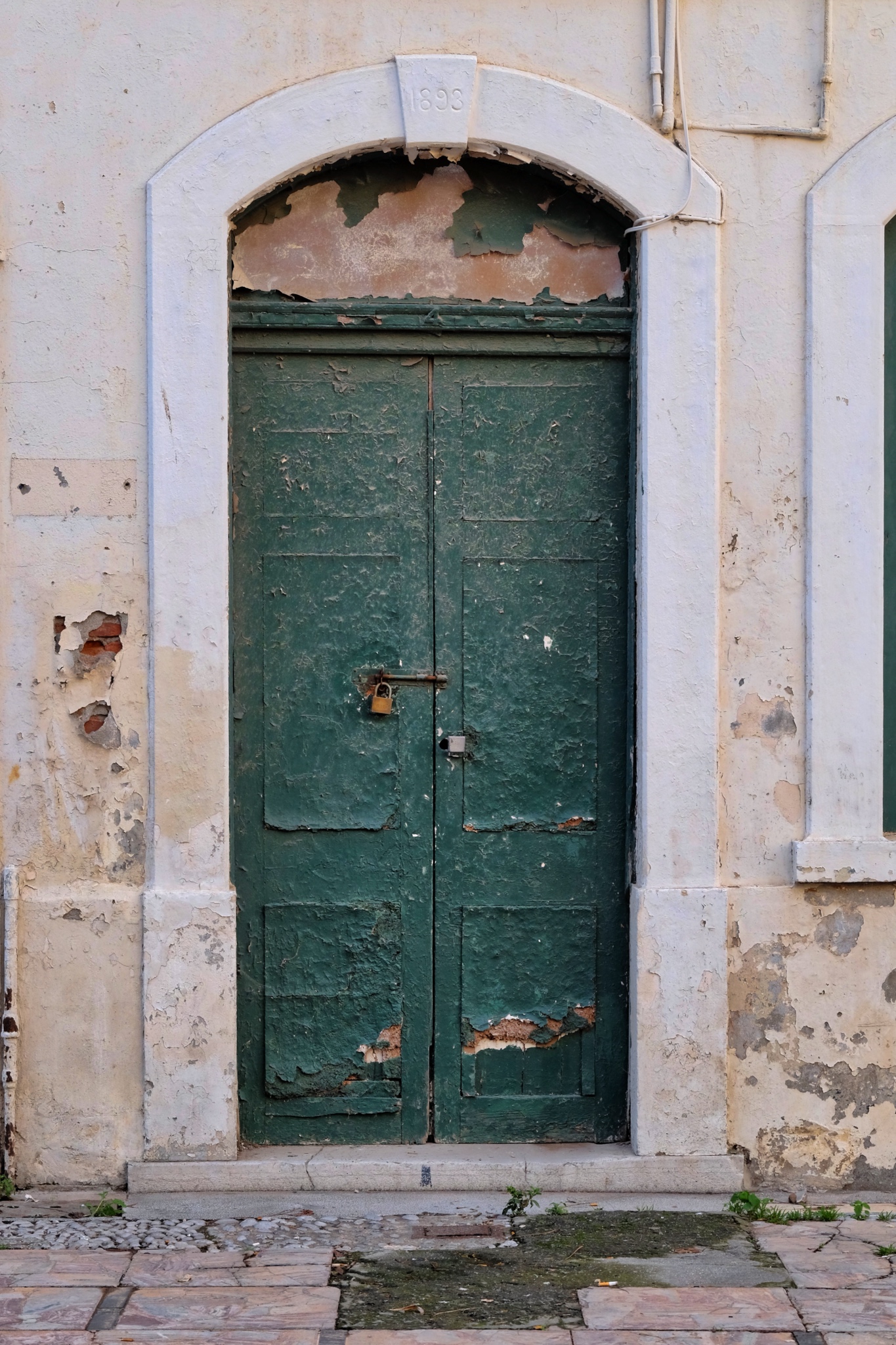 My Old Door Photo Fetish (ODPF) was completely satisfied in Gibraltar!
My Old Door Photo Fetish (ODPF) was completely satisfied in Gibraltar!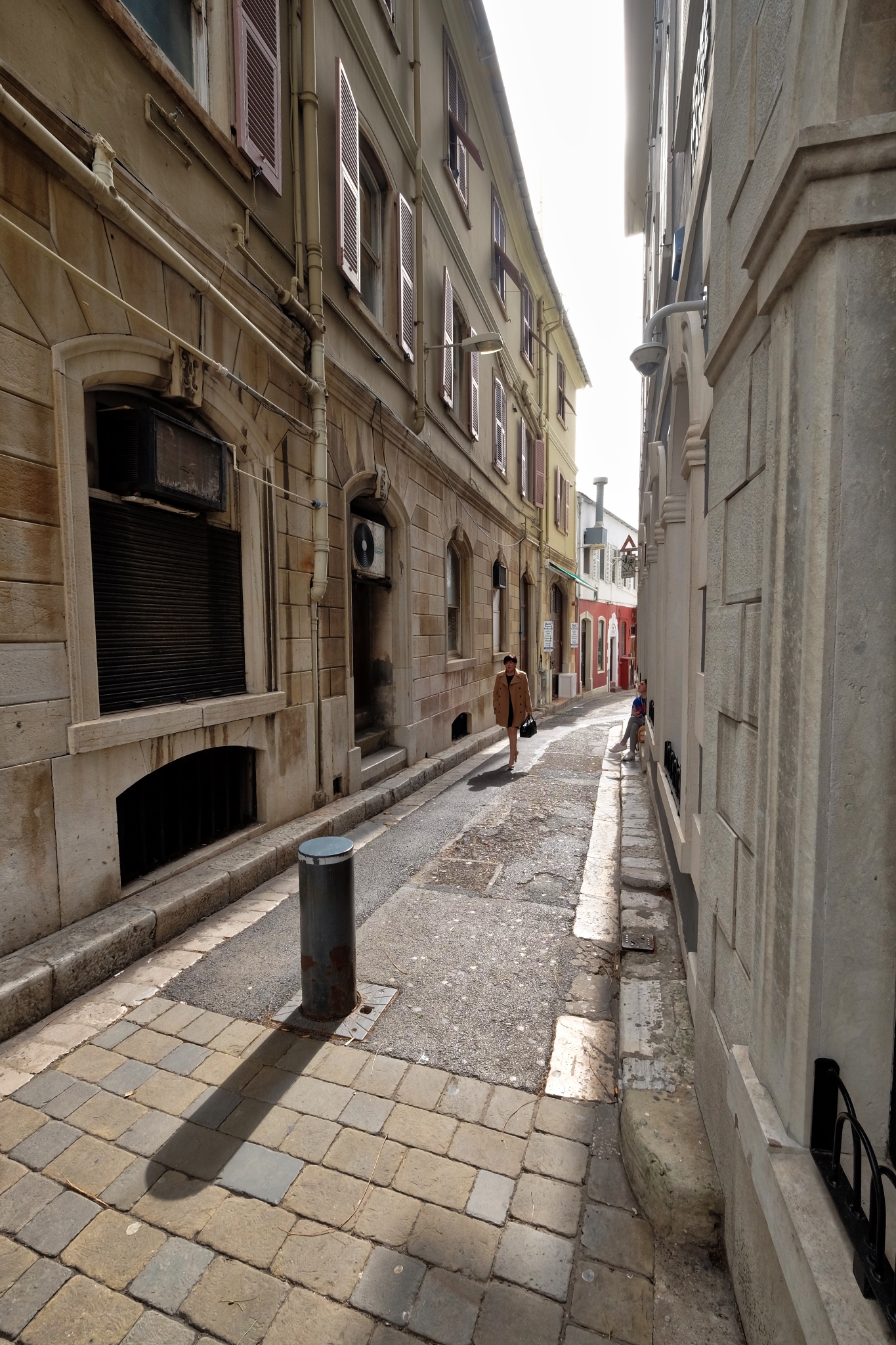 A pleasant place to stroll around . . . before the throngs of tourists arrived, the locals told us.
A pleasant place to stroll around . . . before the throngs of tourists arrived, the locals told us.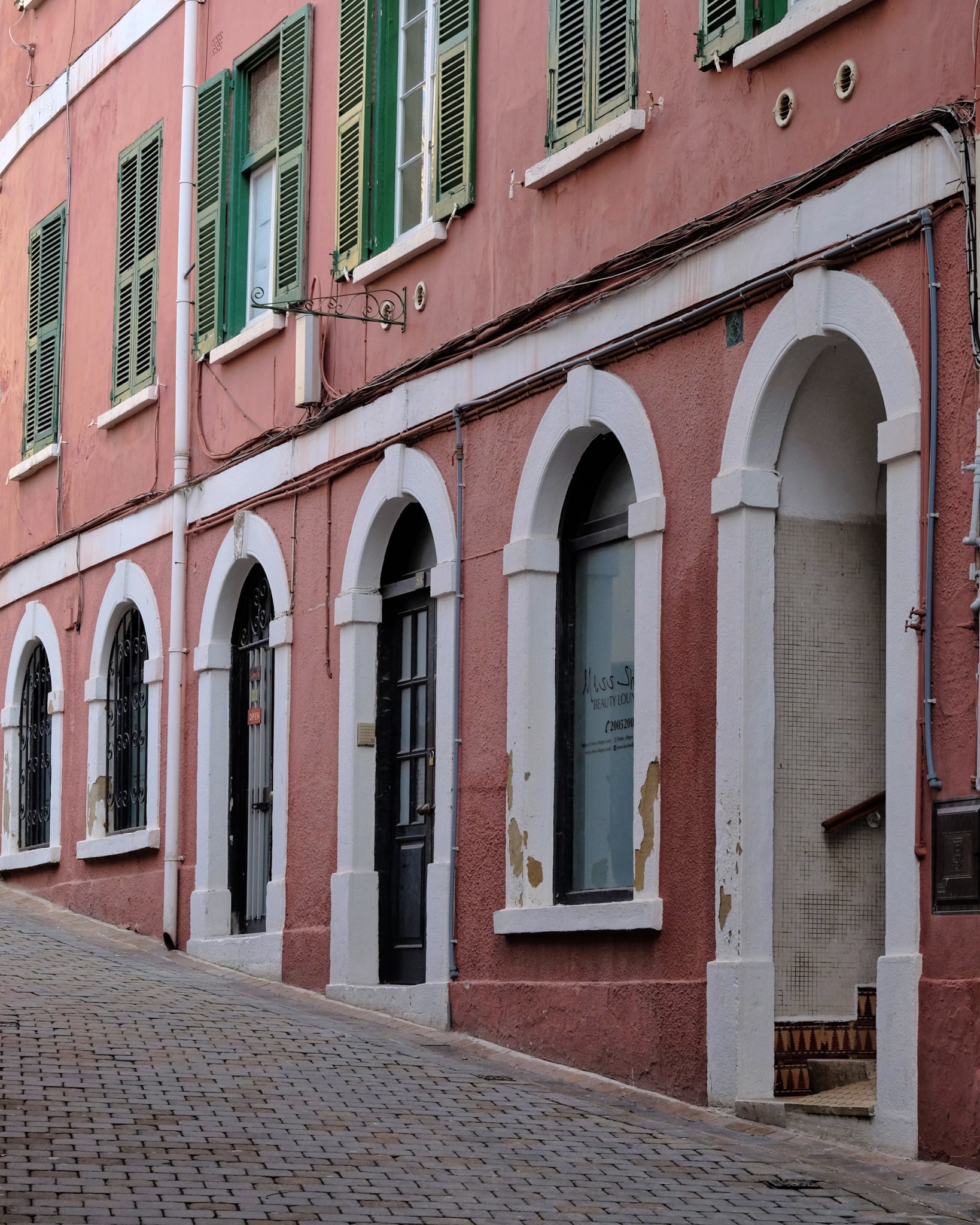 Steep streets . . . .
Steep streets . . . .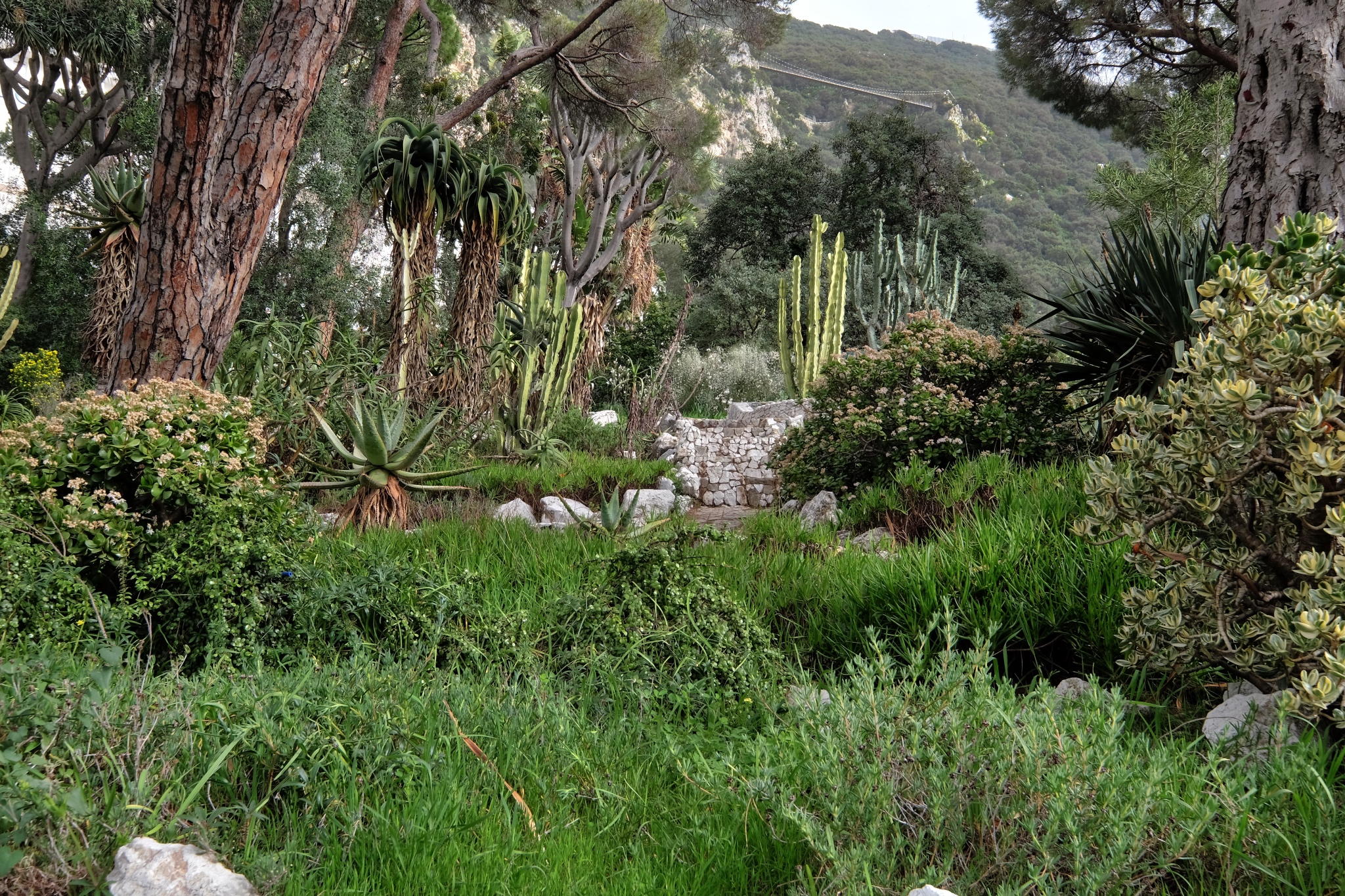 Gibraltar has a fine Botanical Garden . . . a favorite place to visit on all my travels.
Gibraltar has a fine Botanical Garden . . . a favorite place to visit on all my travels.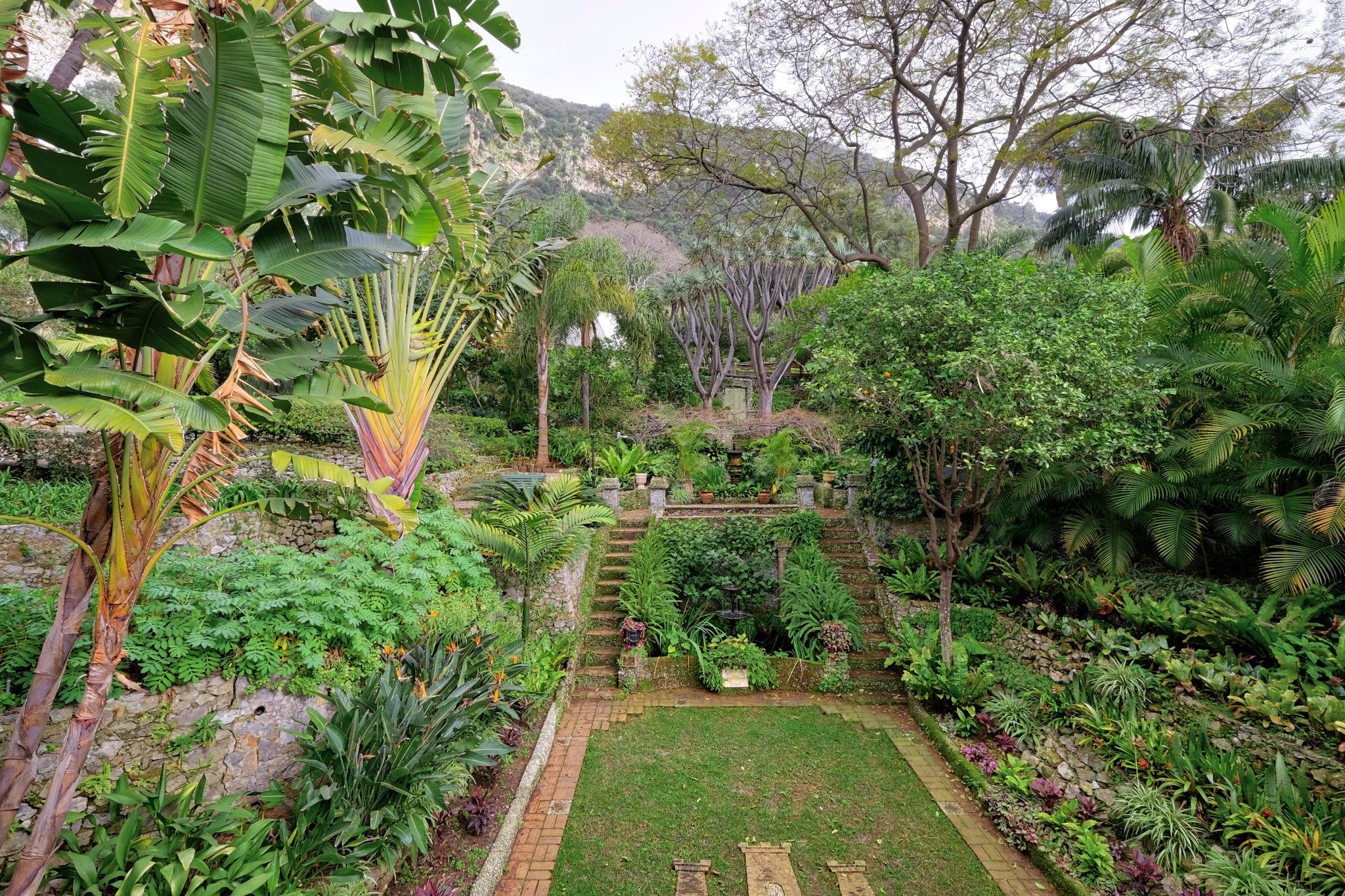 There is hardly any unused land on Gibraltar, so it was nice to see they valued their botanical garden enough to not build on it or pave it over.
There is hardly any unused land on Gibraltar, so it was nice to see they valued their botanical garden enough to not build on it or pave it over.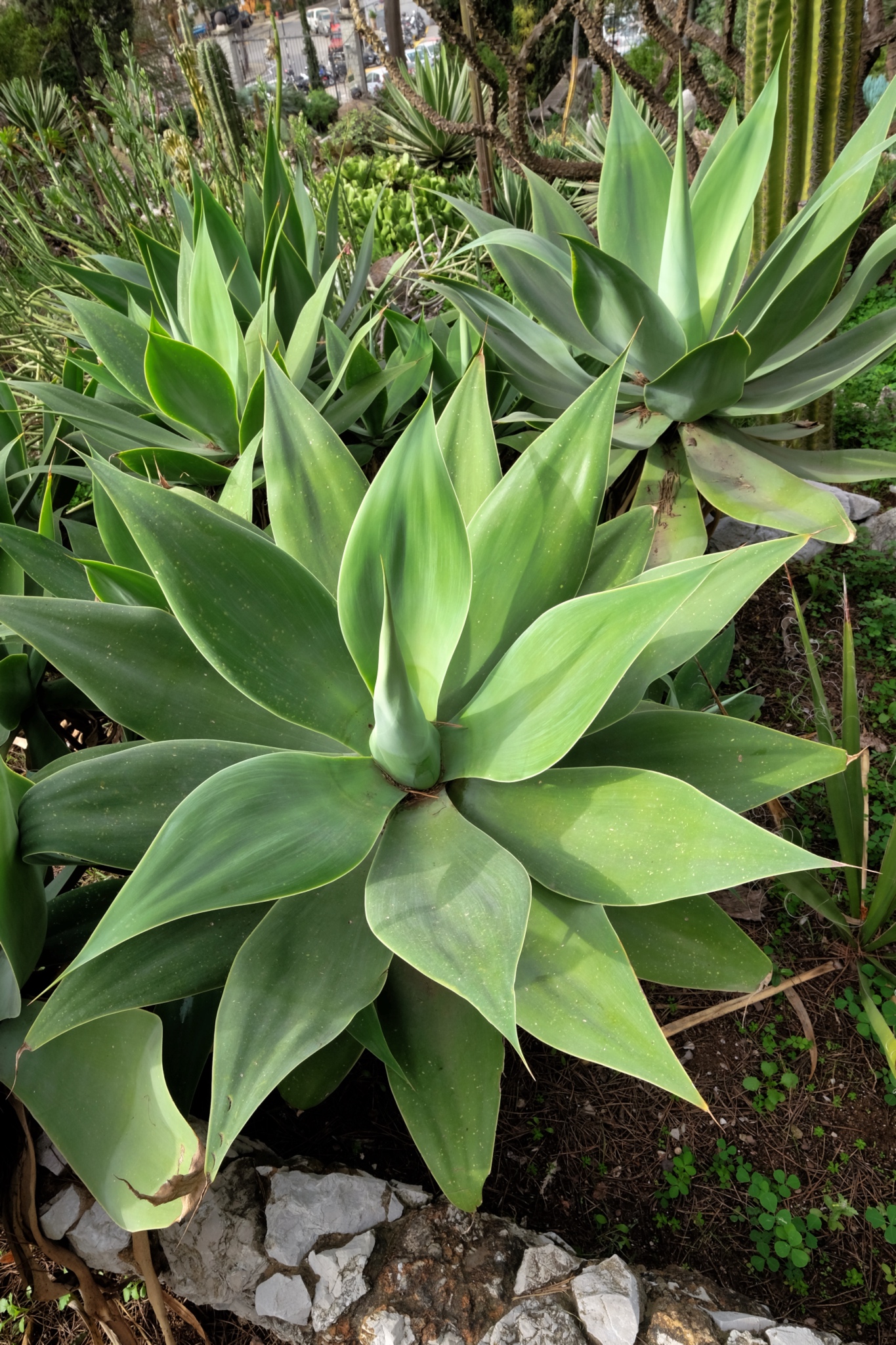 Being on the southern to of Spain, the climate is very mild. Many kinds of semi-tropical plants grow very well here.
Being on the southern to of Spain, the climate is very mild. Many kinds of semi-tropical plants grow very well here.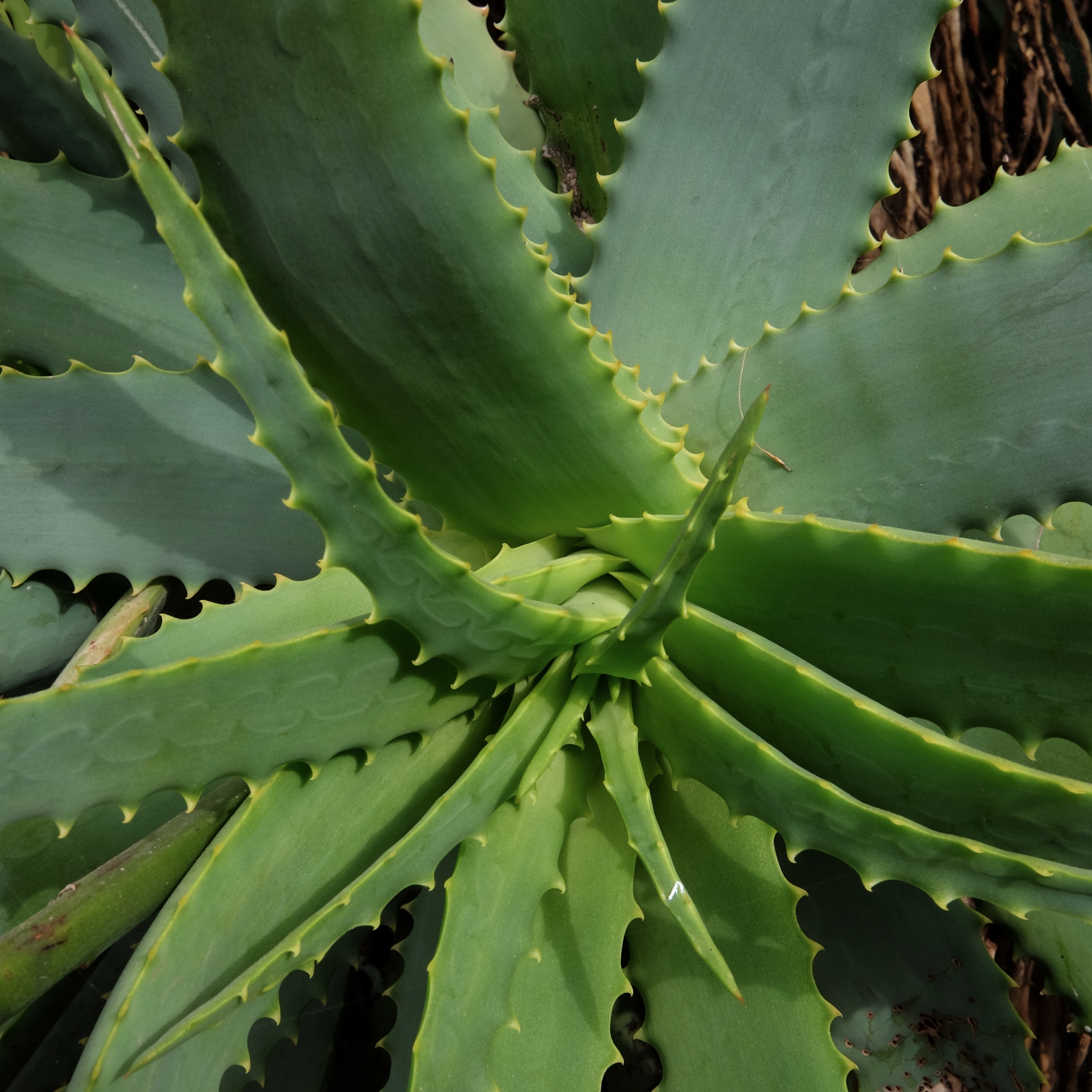 Aloe grew everywhere.
Aloe grew everywhere.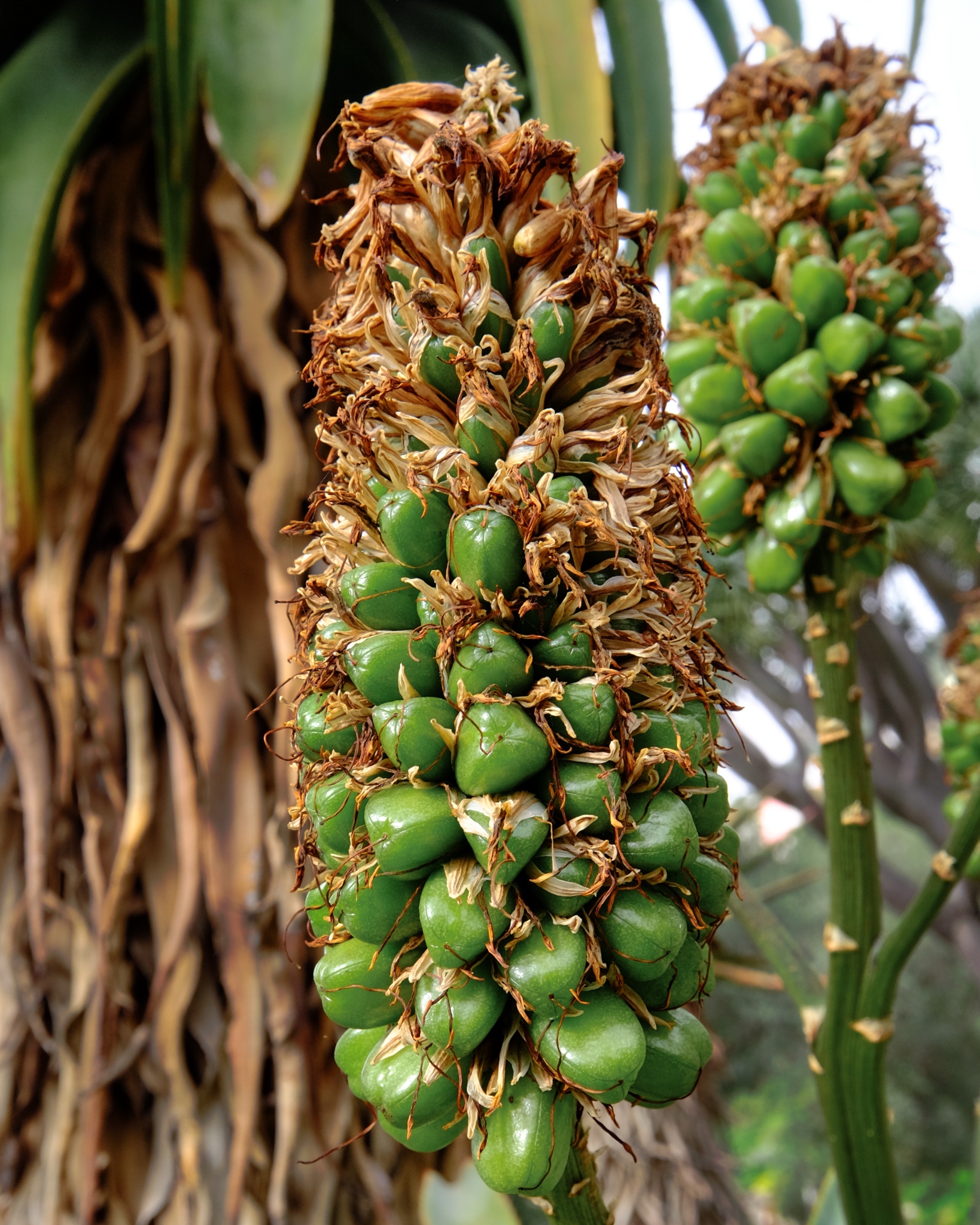 A few of the tropical plants were in flower or bud.
A few of the tropical plants were in flower or bud.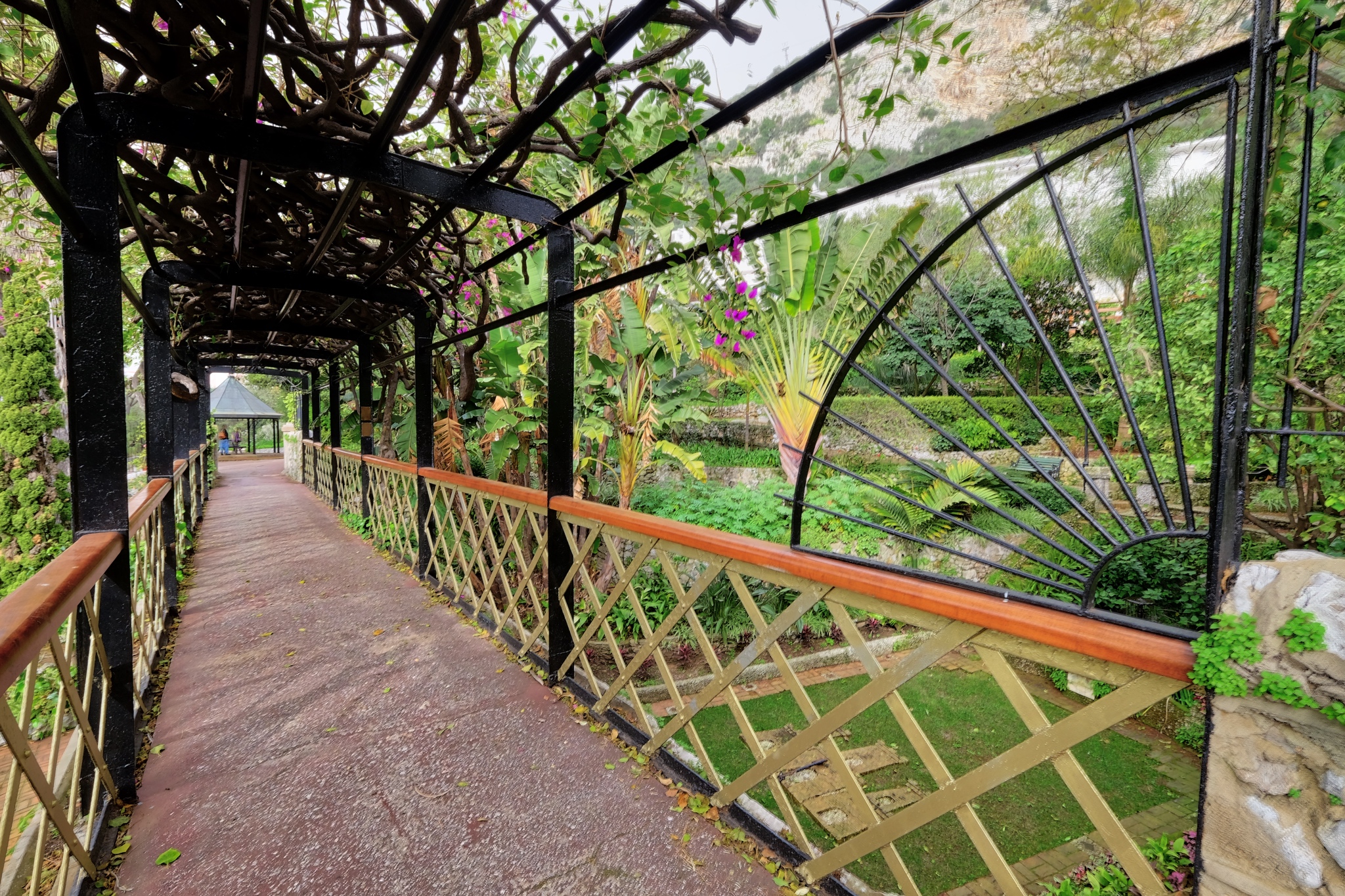 We spent art of a wonderful afternoon here . . .
We spent art of a wonderful afternoon here . . .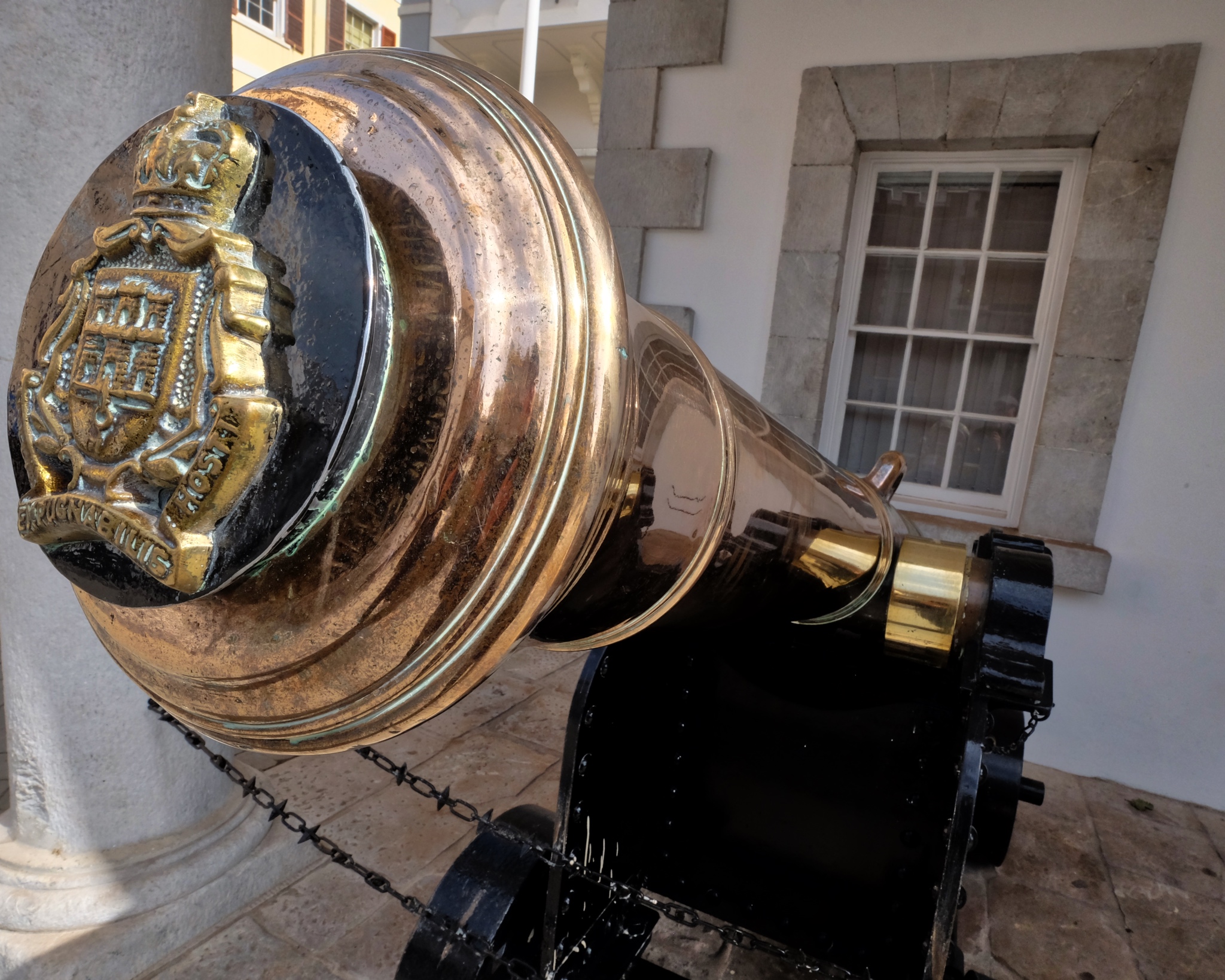 There is still a British military garrison on Gibraltar . . . complete with daily-polished brass cannon.
There is still a British military garrison on Gibraltar . . . complete with daily-polished brass cannon.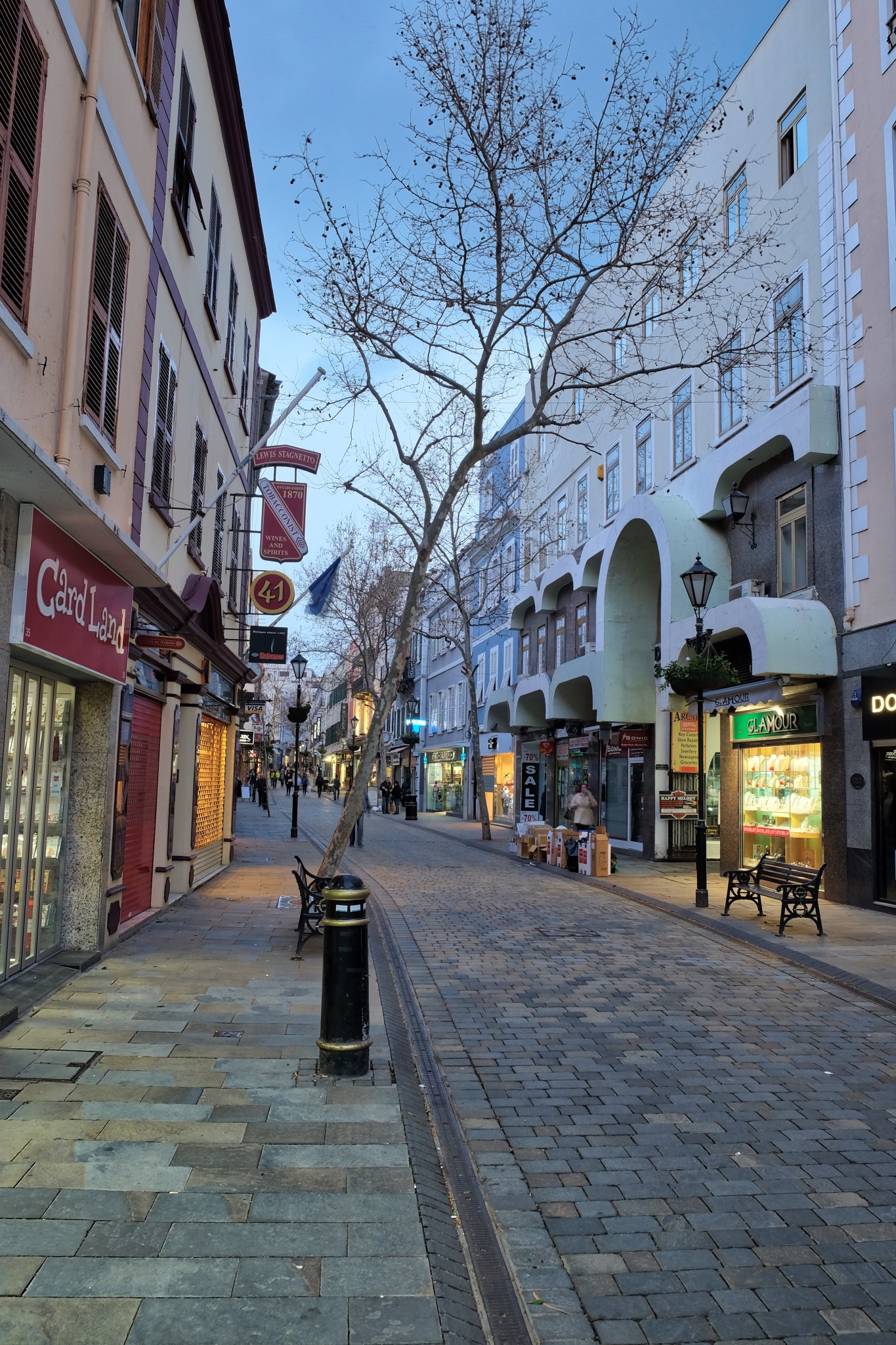 The central walking street is the focus of the town and the only developed commercial area. There are sweet cafes, bakeries, and shops all along here . . . as well as tawdry tourist curios shops where I bought a refrigerator magnet.
The central walking street is the focus of the town and the only developed commercial area. There are sweet cafes, bakeries, and shops all along here . . . as well as tawdry tourist curios shops where I bought a refrigerator magnet.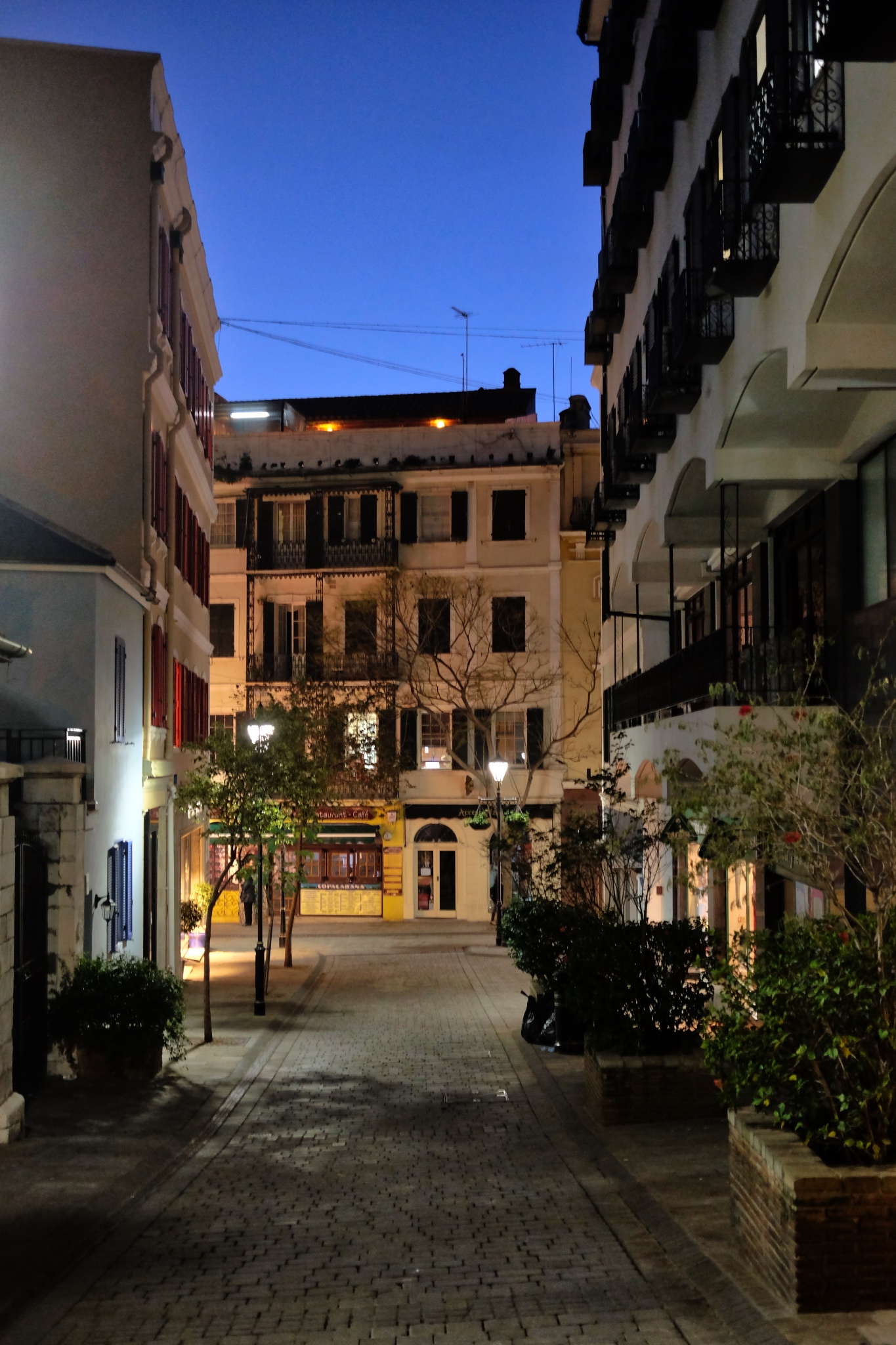 In my opinion, Gibraltar becomes even more interesting, and beautiful, when the sun sets.
In my opinion, Gibraltar becomes even more interesting, and beautiful, when the sun sets.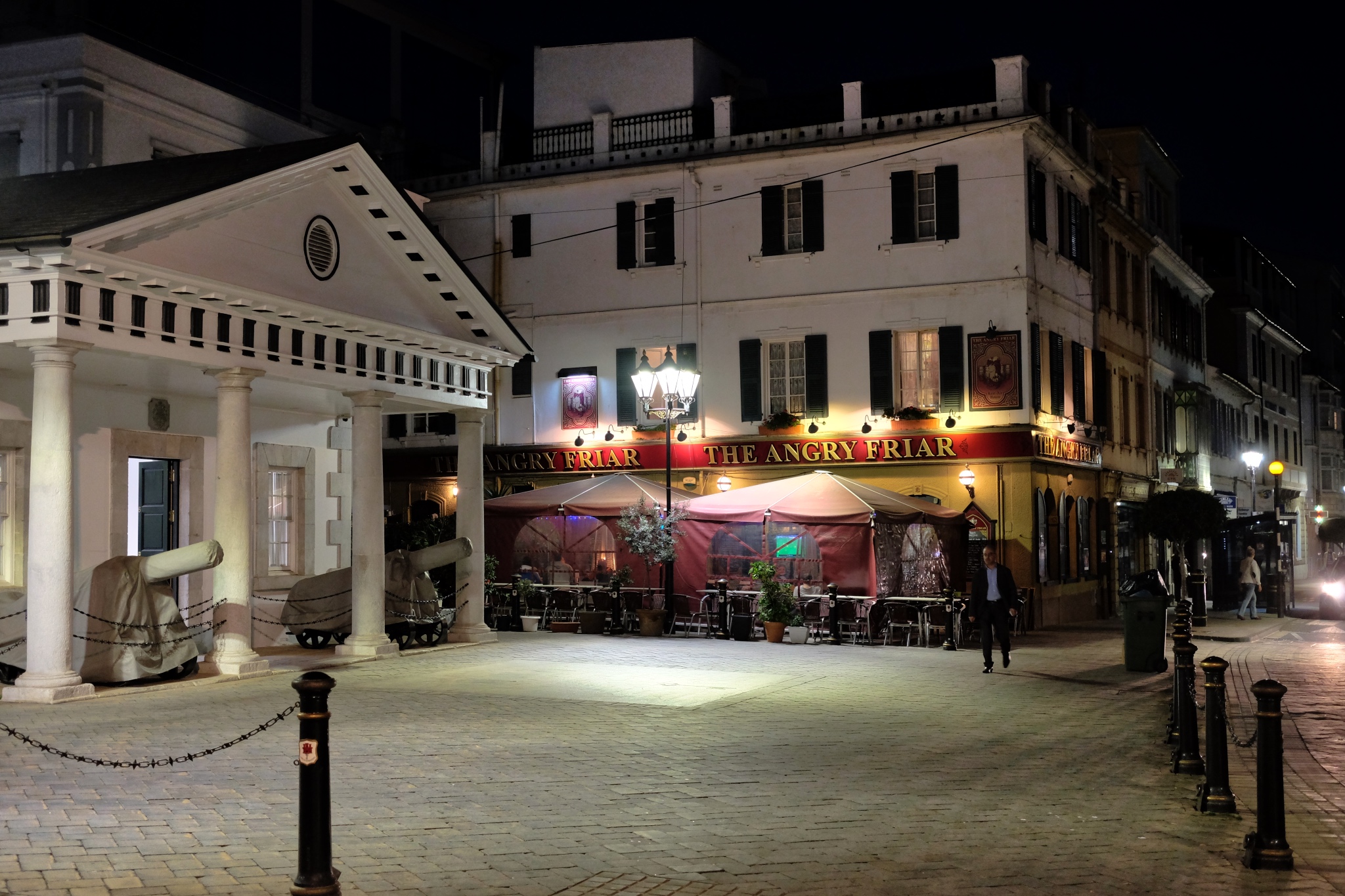 At night the squares are lit and the old government buildings stand out in all their old glory.
At night the squares are lit and the old government buildings stand out in all their old glory.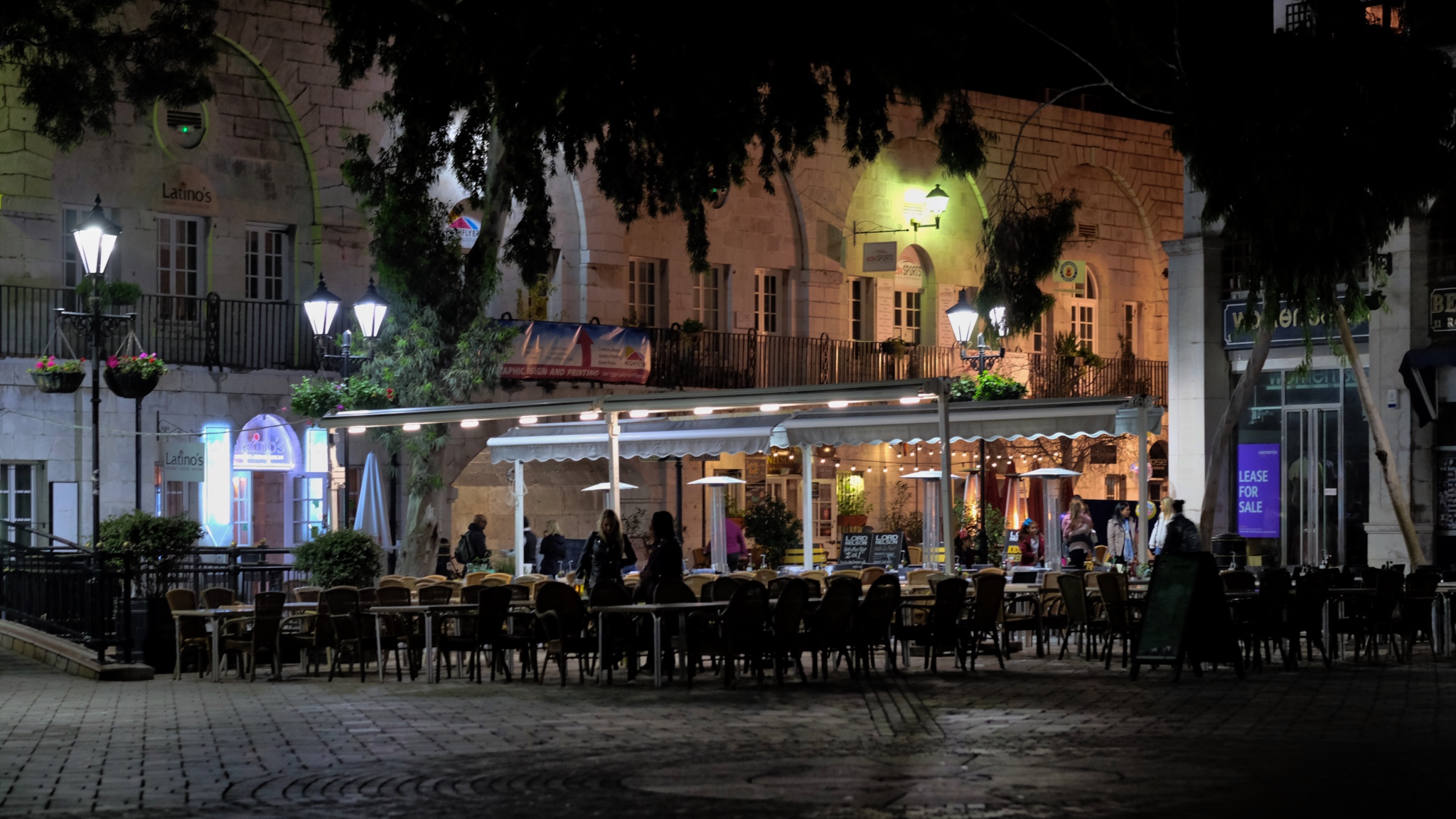 In the evening people, tourists and locals, come out to the cafes in Casement Square. One can imagine this space filled with thousands of cruise ship passengers later in the summer.
In the evening people, tourists and locals, come out to the cafes in Casement Square. One can imagine this space filled with thousands of cruise ship passengers later in the summer.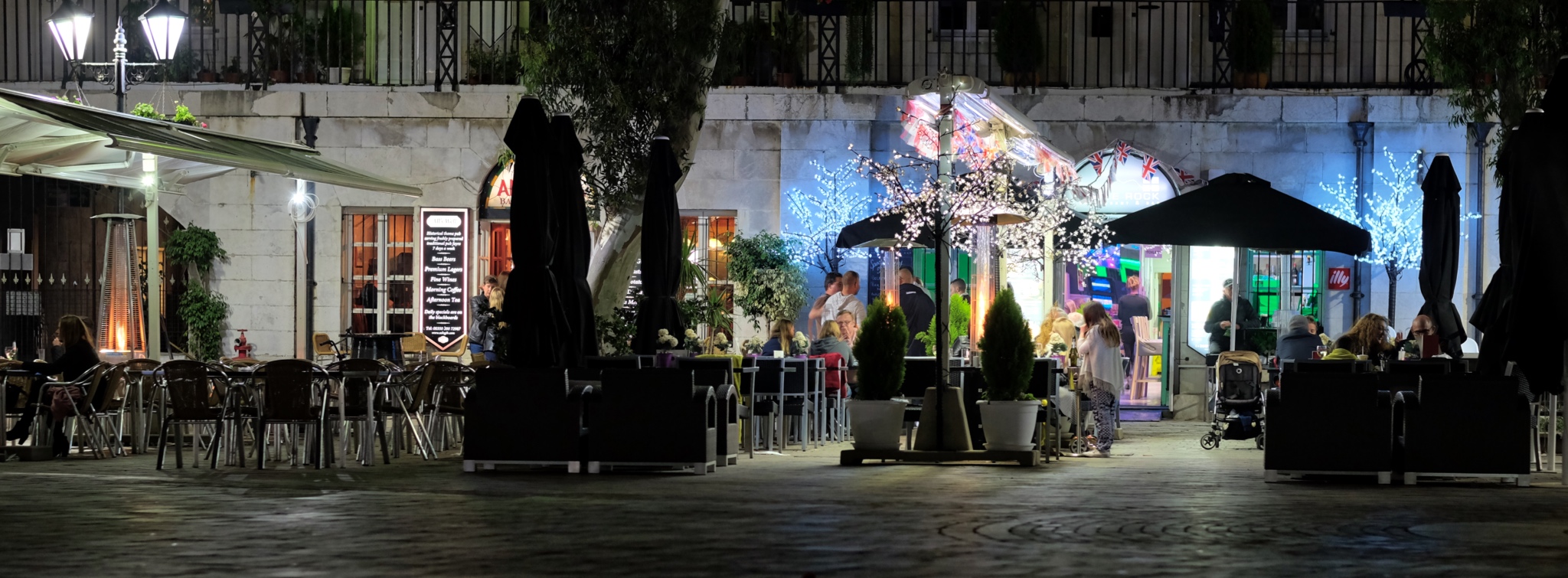
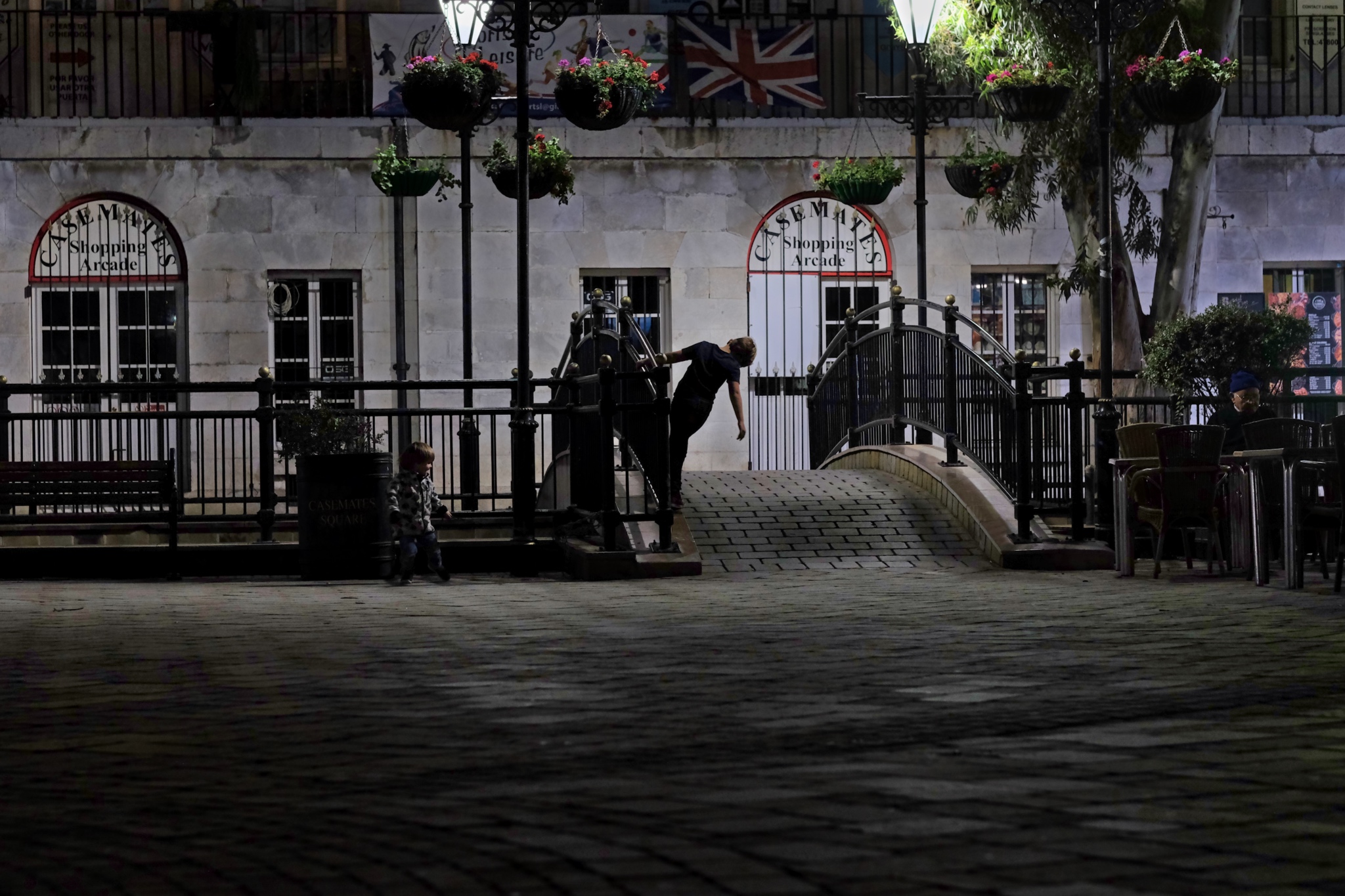 The children wandered free around the square as the adults conversed over wine.
The children wandered free around the square as the adults conversed over wine. A happy girl skipped into my photo . . .
A happy girl skipped into my photo . . .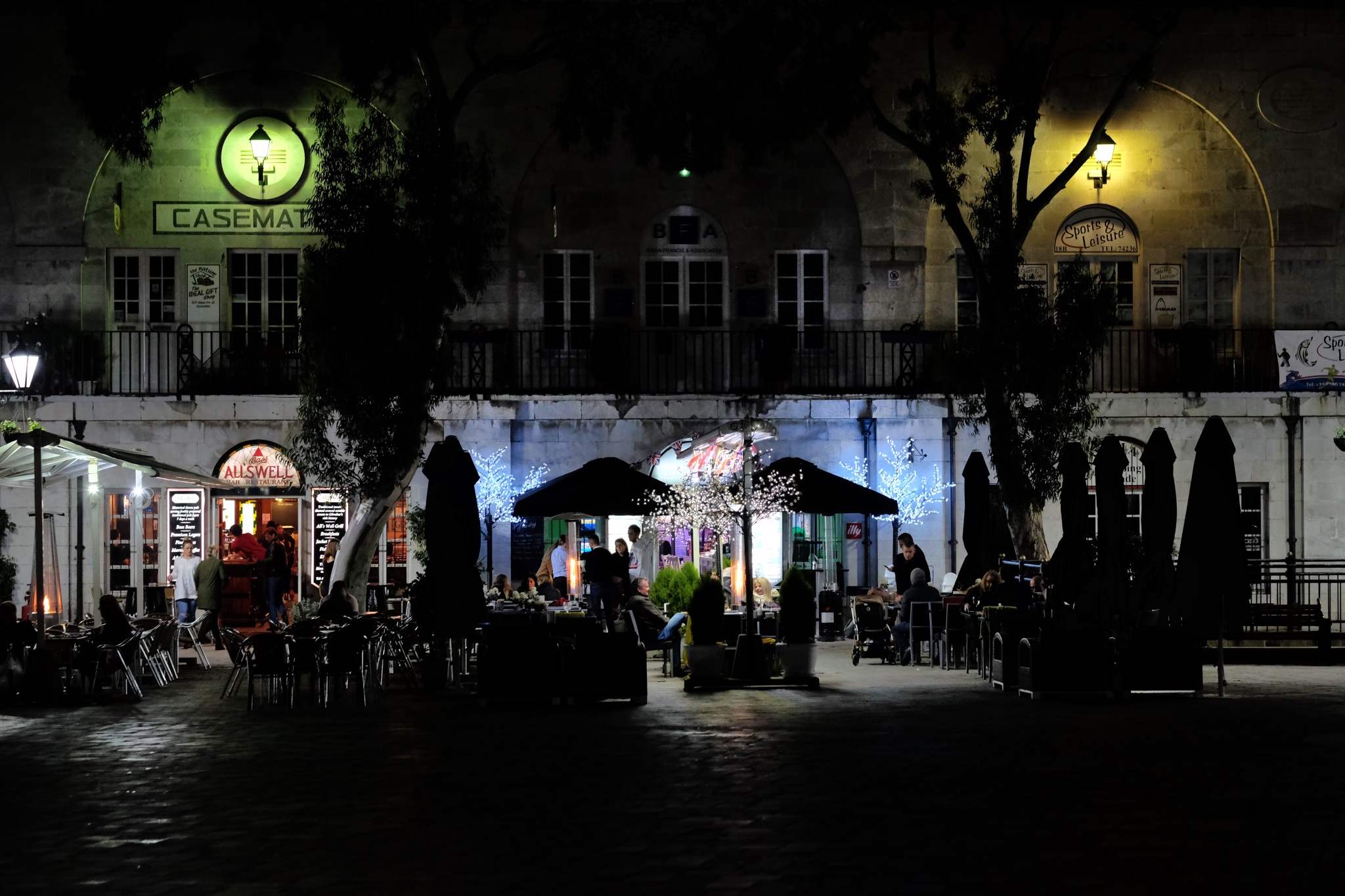 Casement Square.
Casement Square.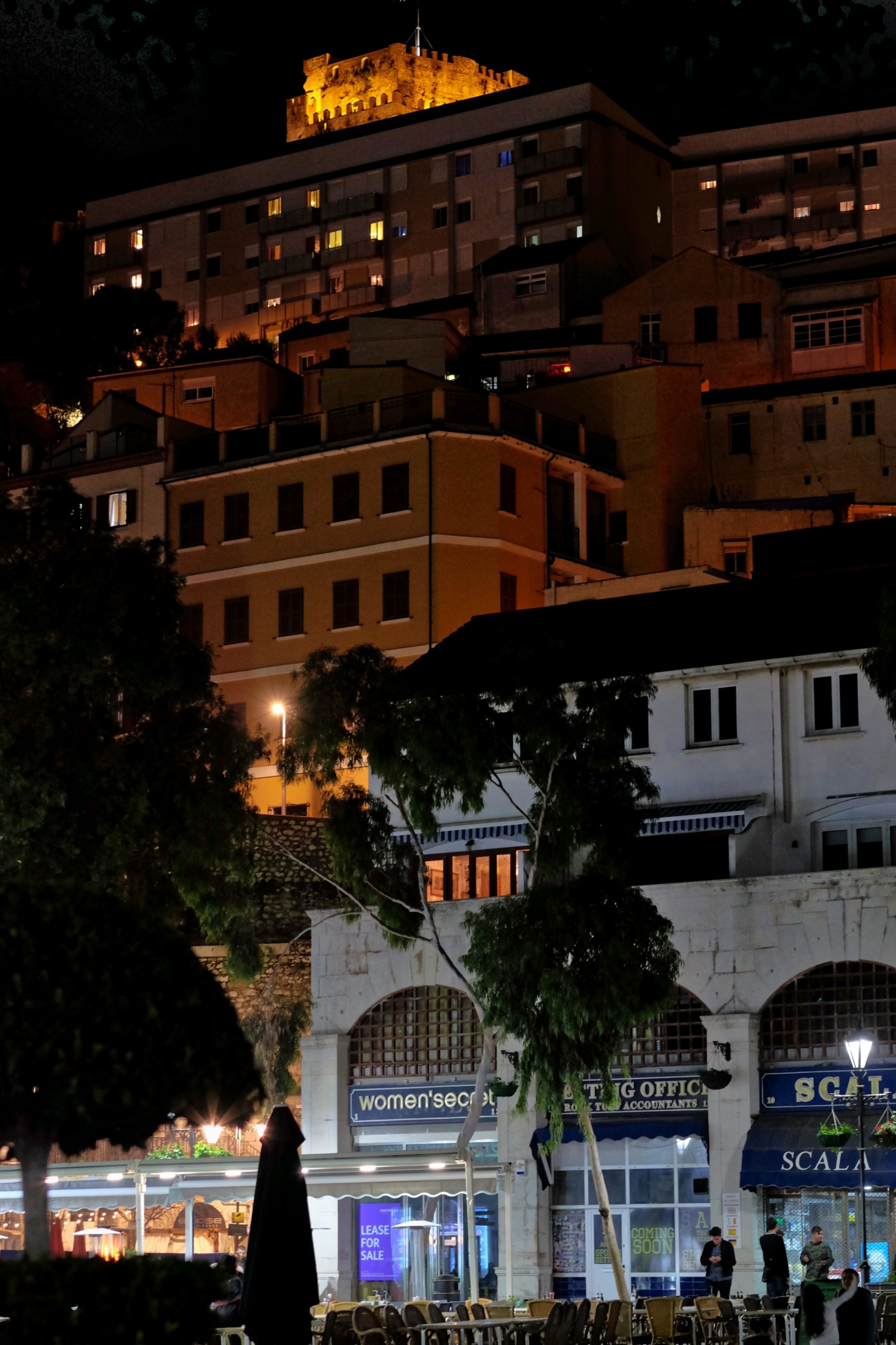 High above Casement Square, a Moorish castle looks on . . . .
High above Casement Square, a Moorish castle looks on . . . .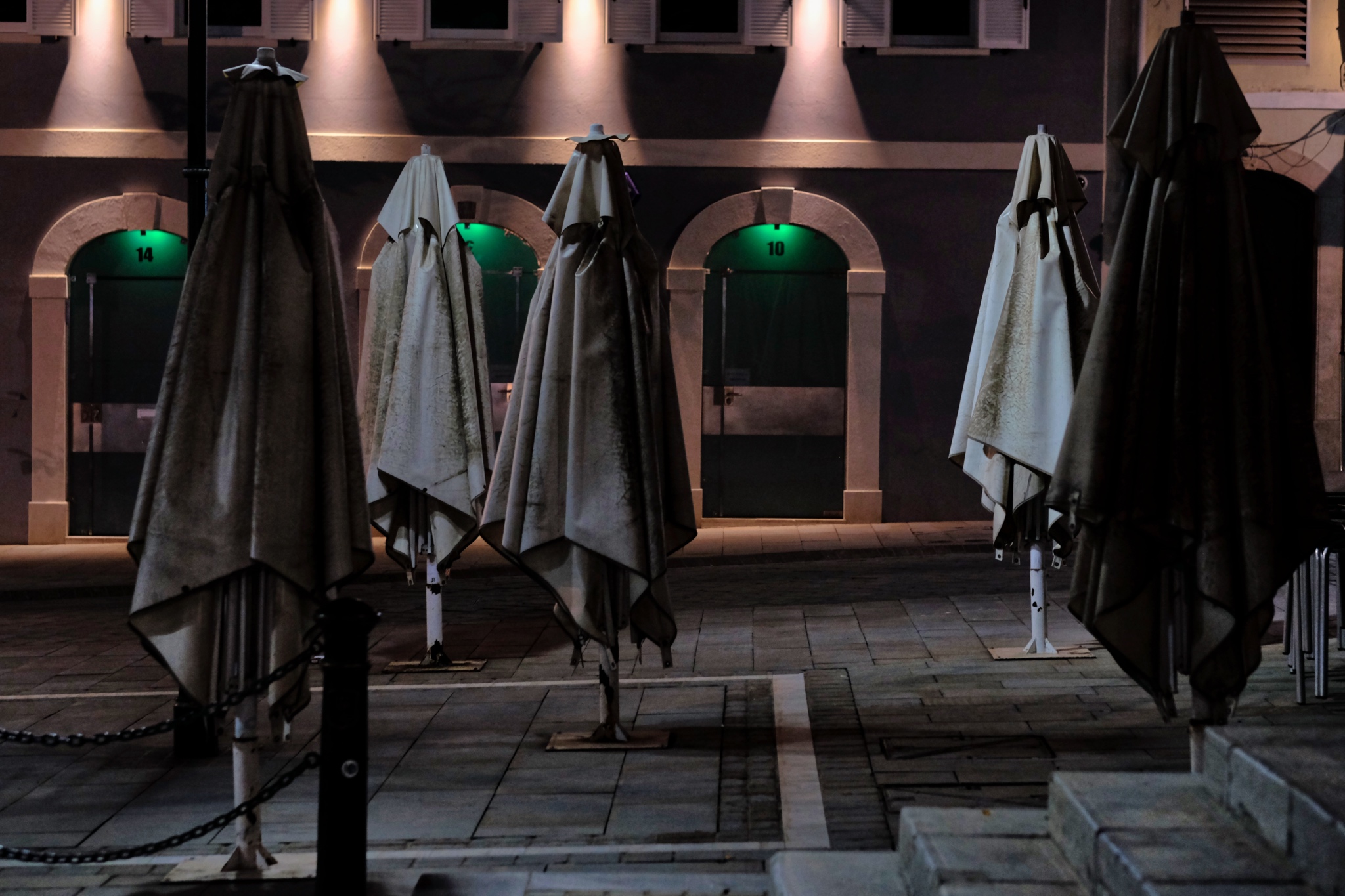 Later in the evening, the restaurants and cafes closed up . . . leaving their umbrellas like forlorn soldiers in a strange night.
Later in the evening, the restaurants and cafes closed up . . . leaving their umbrellas like forlorn soldiers in a strange night.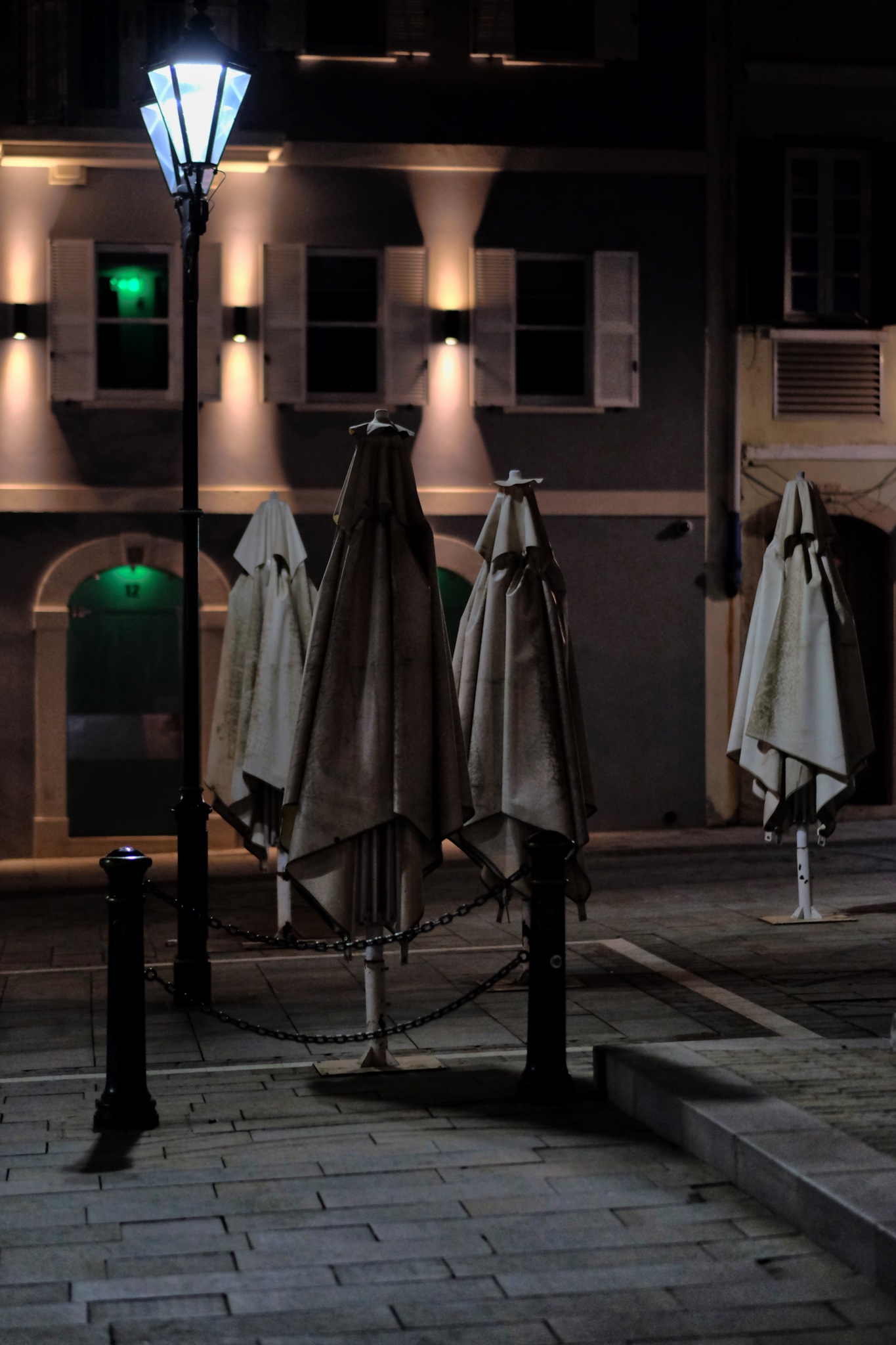 I was startled when I first saw these visages of another world!
I was startled when I first saw these visages of another world!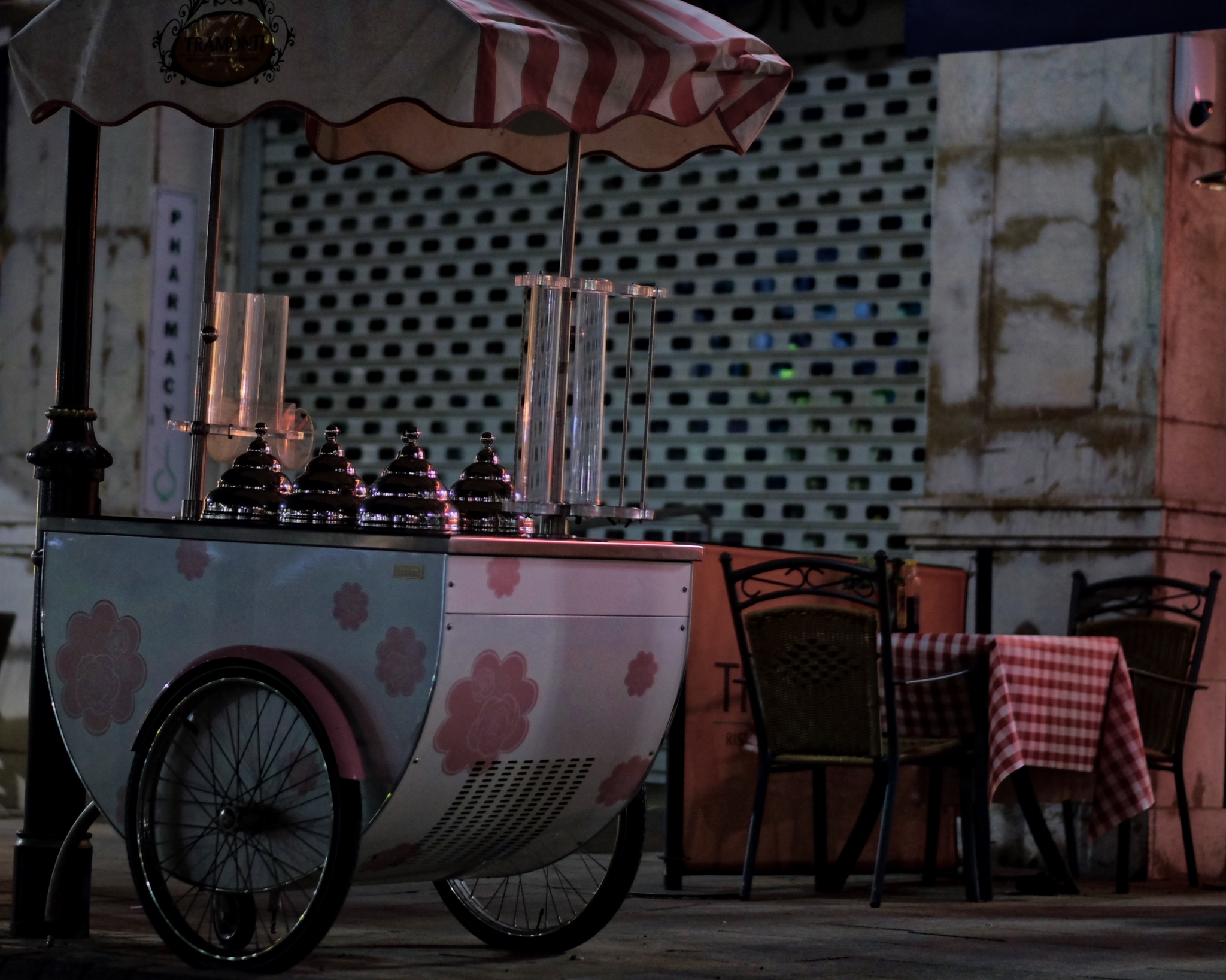 My other photographic subject obsession are push carts of all kinds. This ice cream cart waiting for another day was just fantastic.
My other photographic subject obsession are push carts of all kinds. This ice cream cart waiting for another day was just fantastic.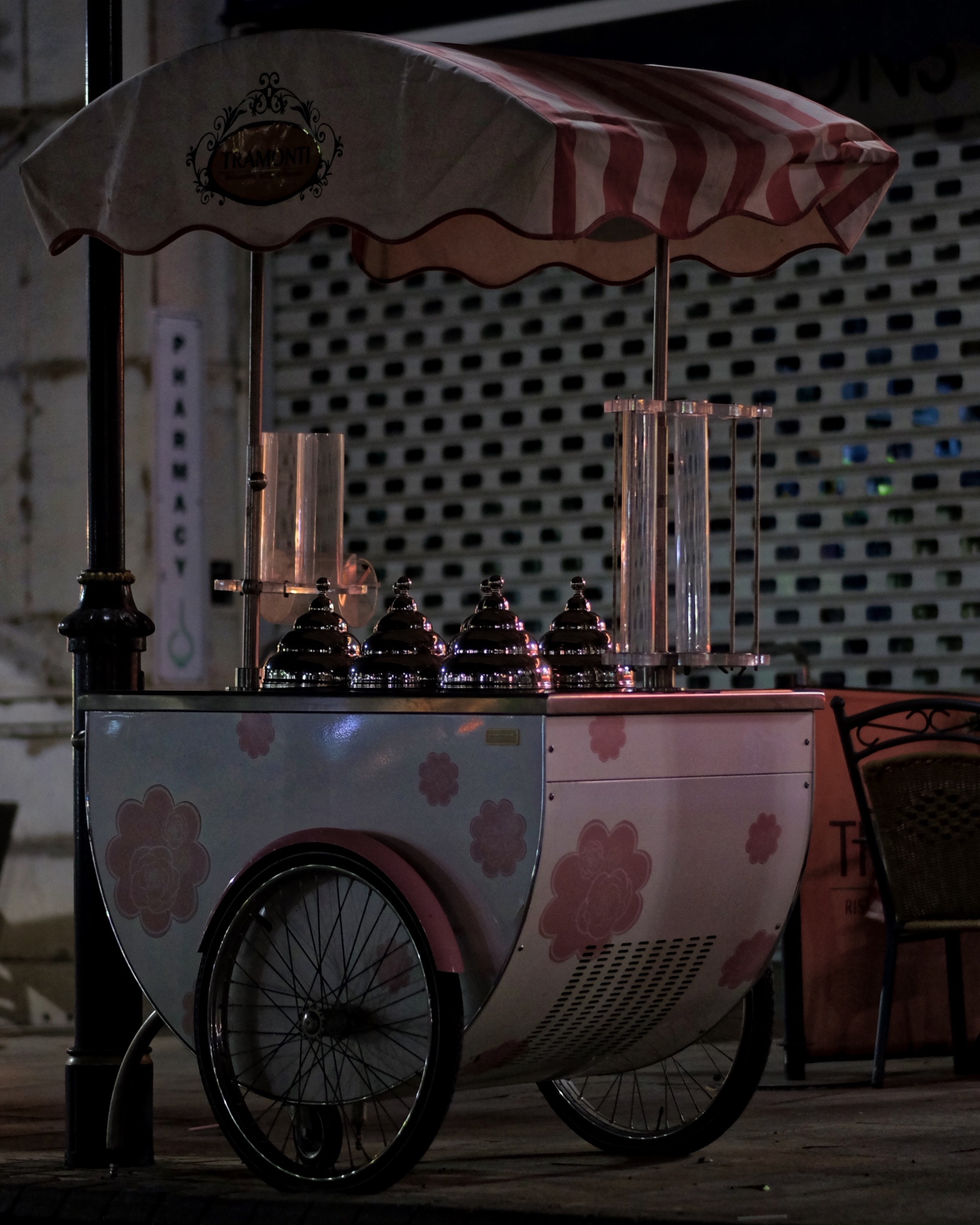
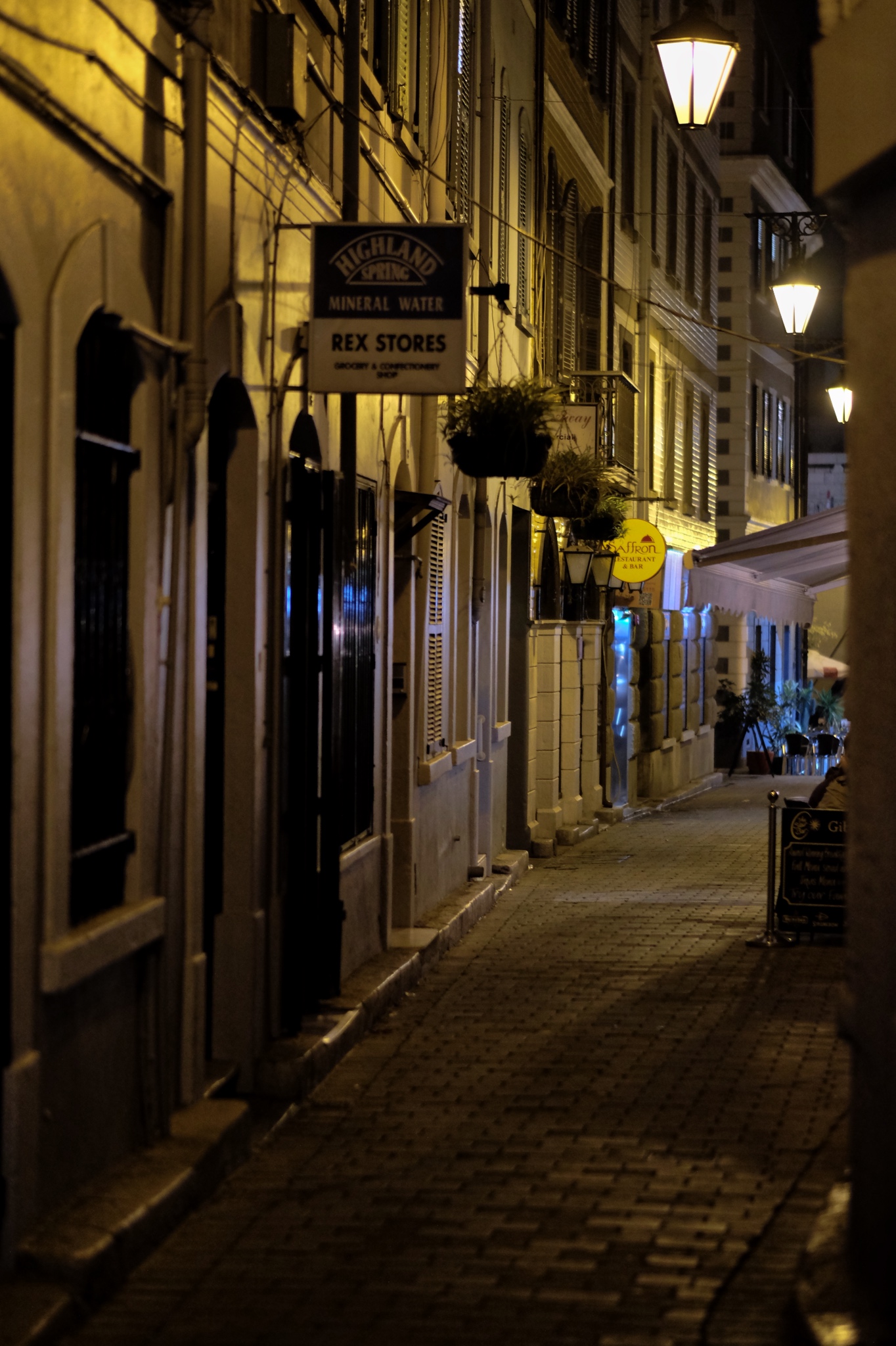 One evening (of the three) I went back out of the hotel late at night . . . to capture the abandoned streets and alleys.
One evening (of the three) I went back out of the hotel late at night . . . to capture the abandoned streets and alleys.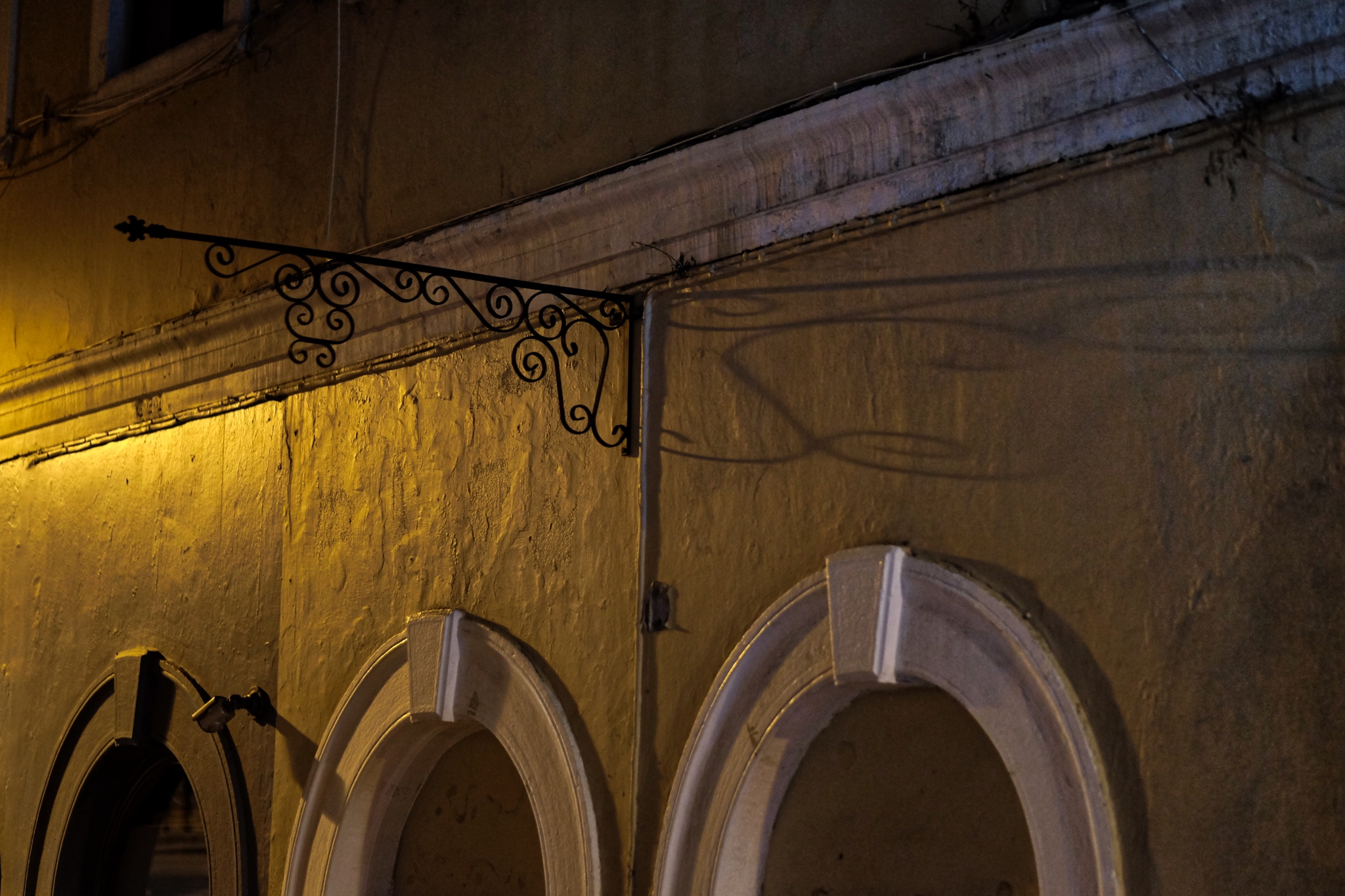 Light, textured surfaces, shadow, arches, color . . . wonderful.
Light, textured surfaces, shadow, arches, color . . . wonderful.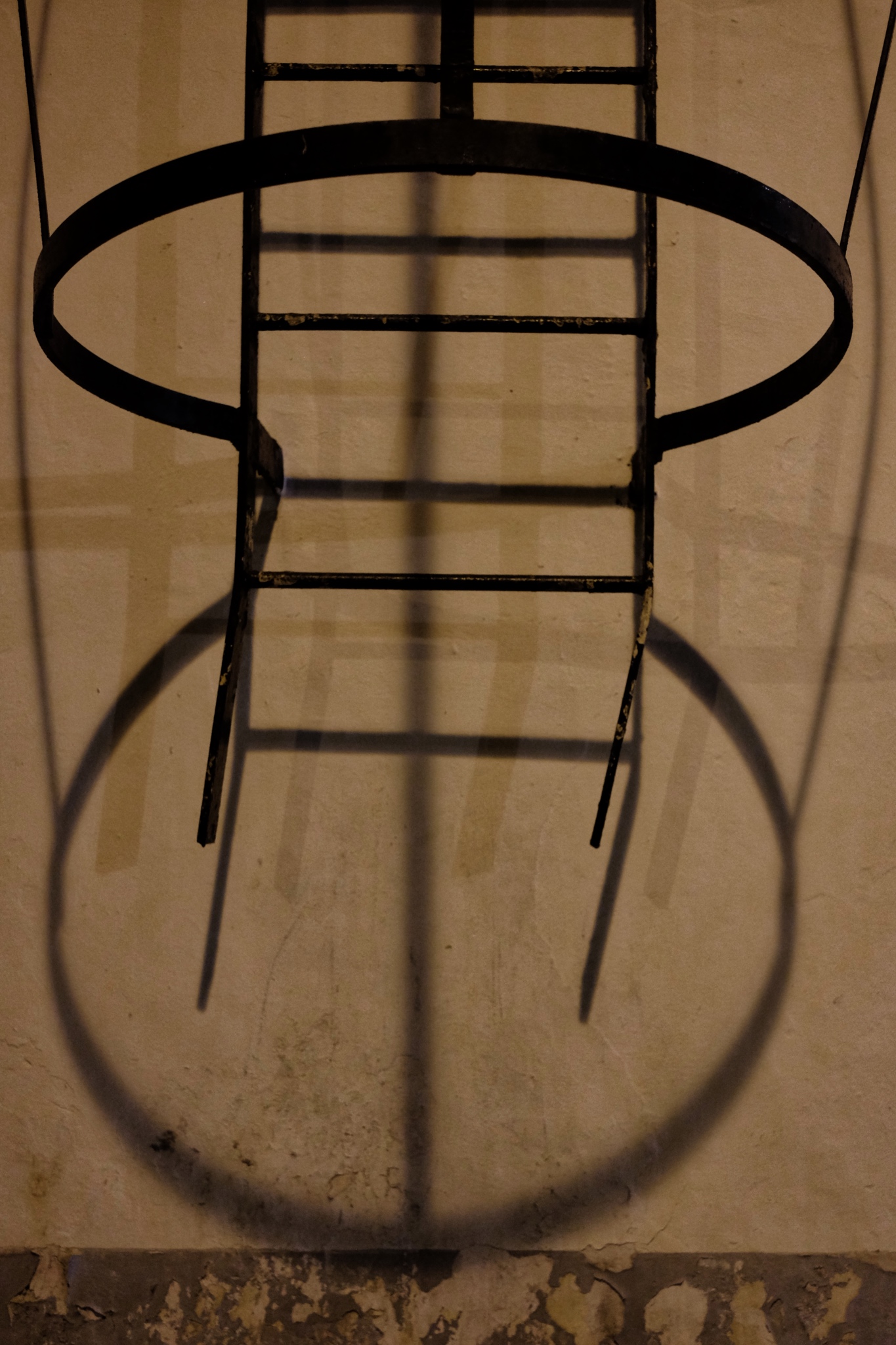 Ladder, light, shadow, and wall!
Ladder, light, shadow, and wall!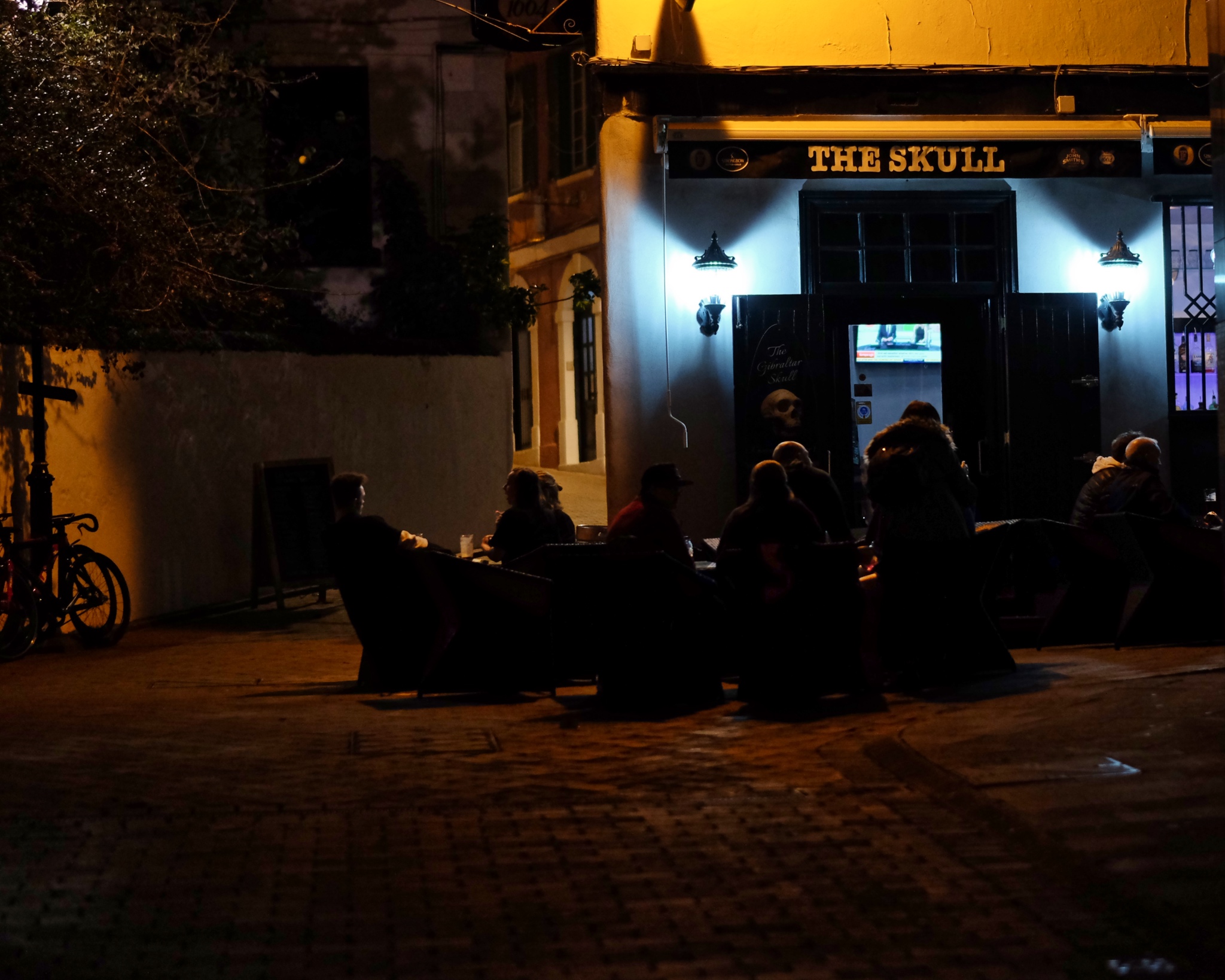 If the conversation is good, why go home? Well after midnight in Gibraltar.
If the conversation is good, why go home? Well after midnight in Gibraltar.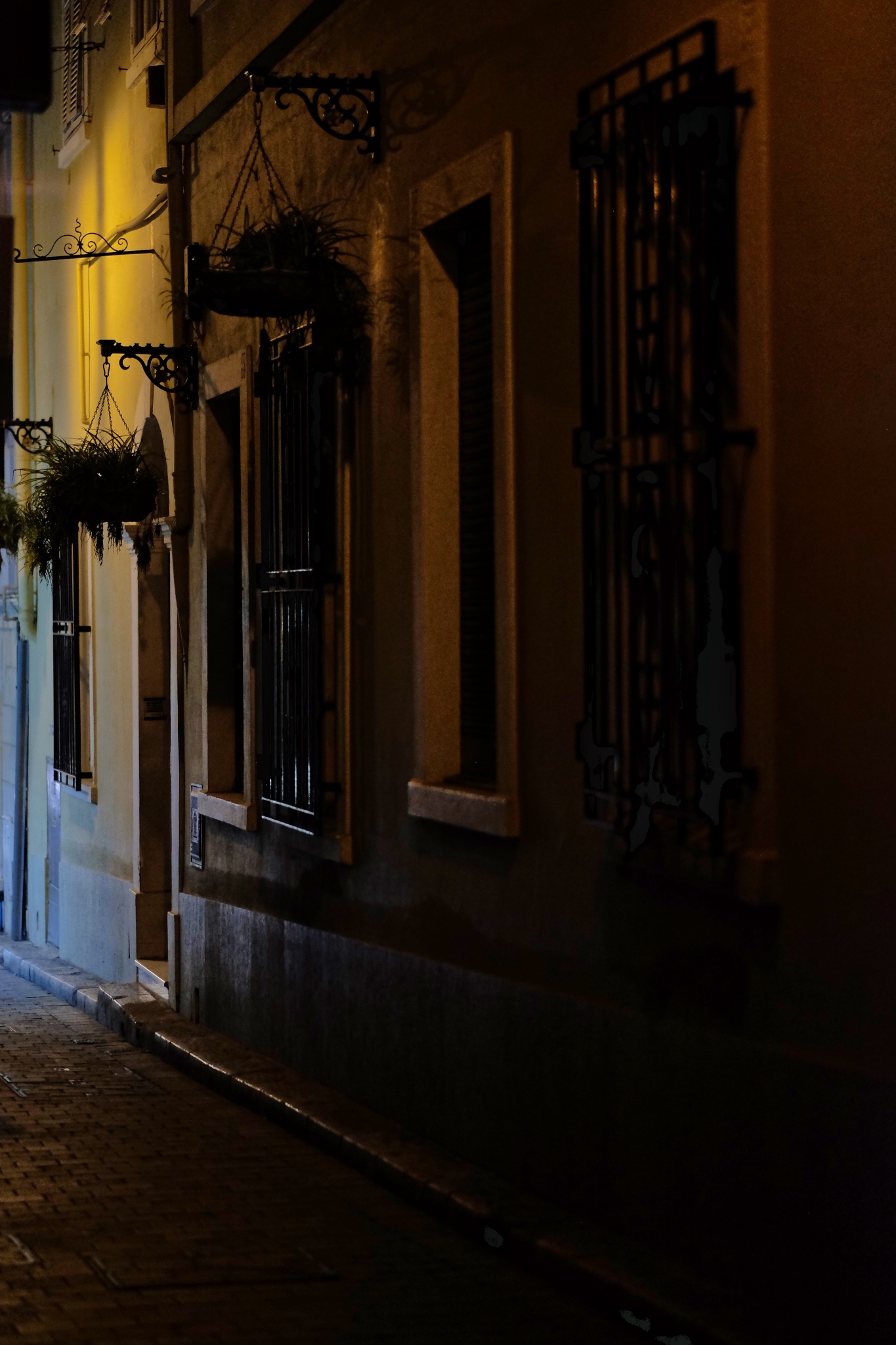 The dark streets where the only sounds were my footsteps.
The dark streets where the only sounds were my footsteps.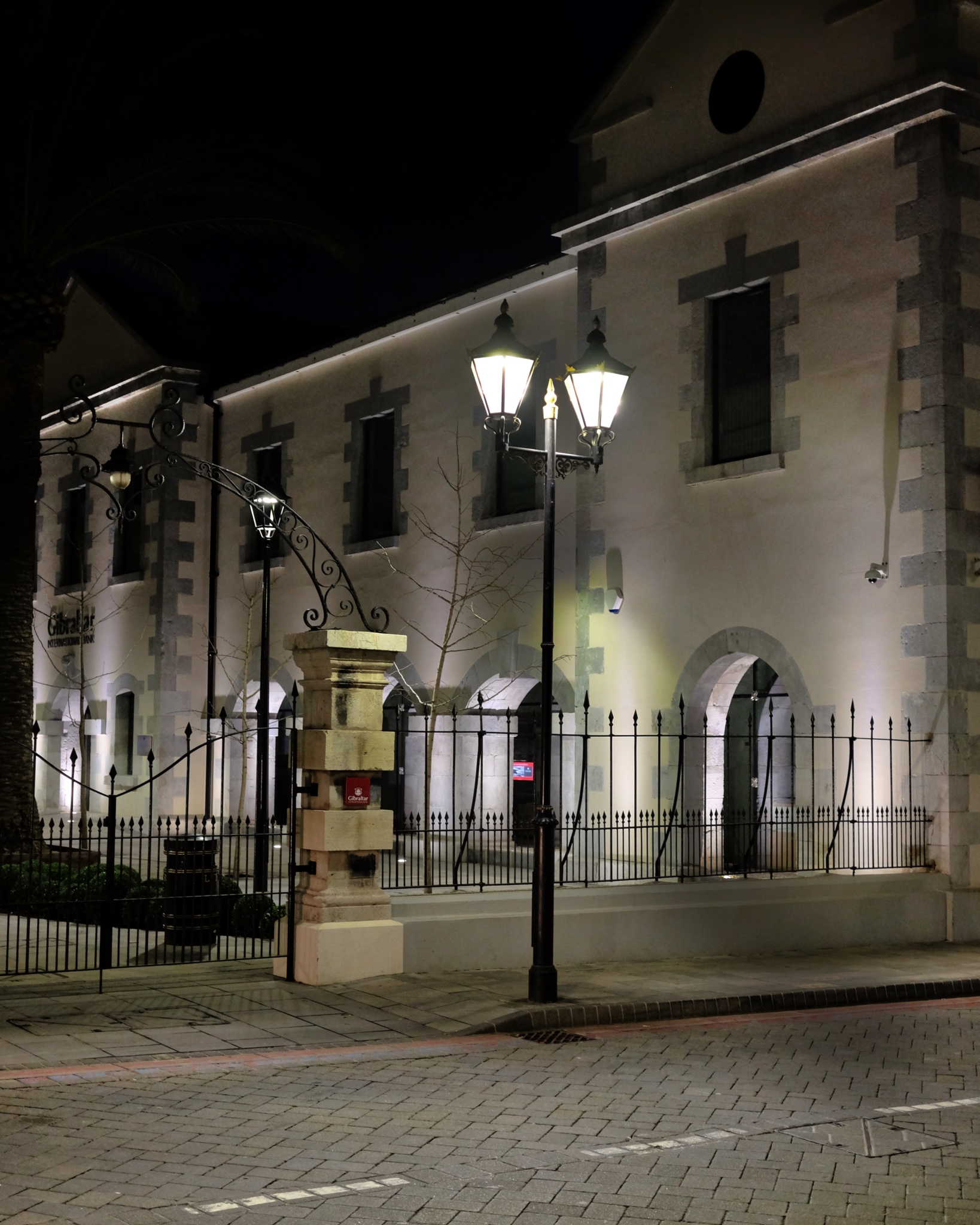 The historic government buildings were closed. Not a soul around.
The historic government buildings were closed. Not a soul around.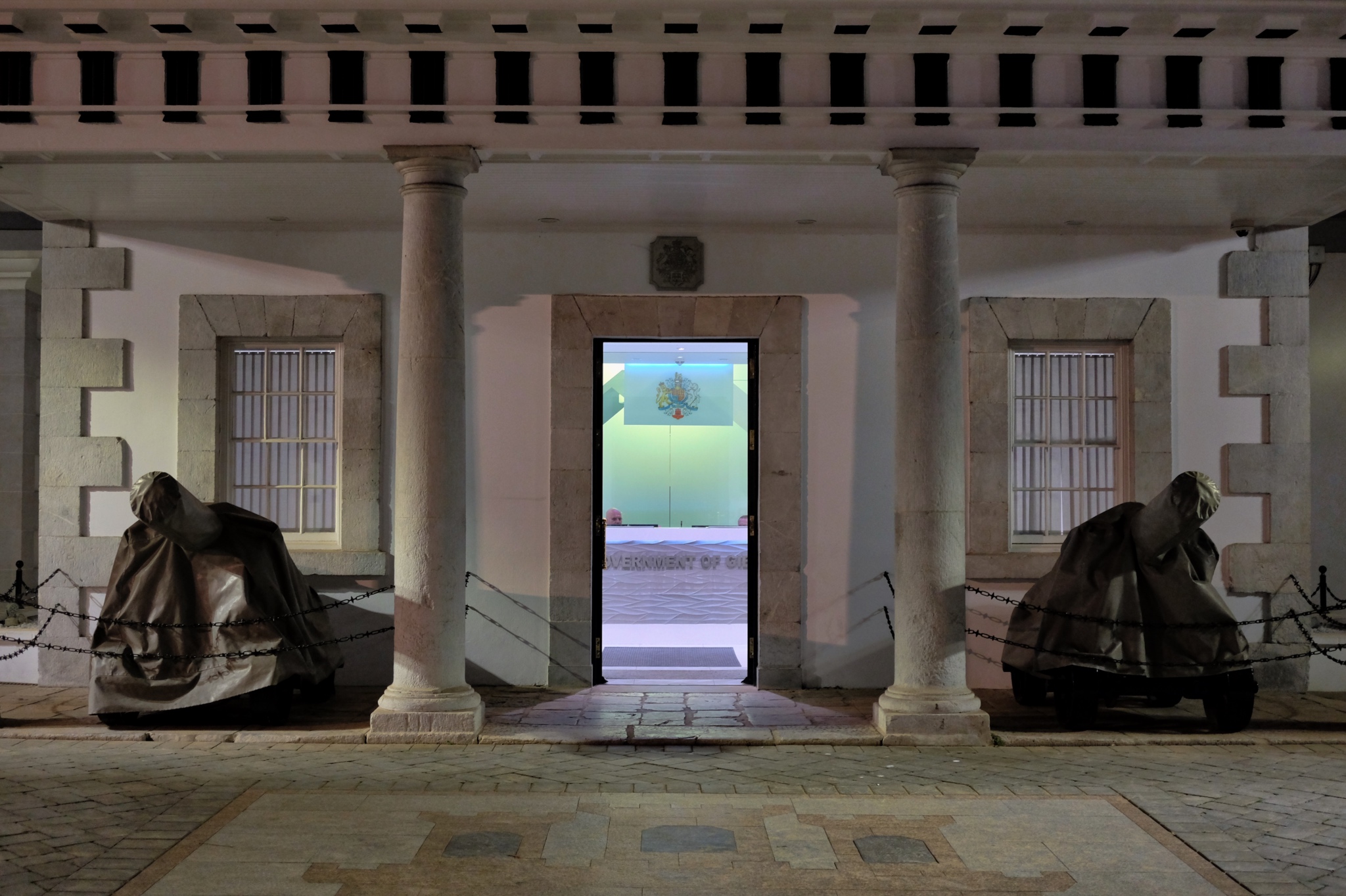 The "Government Of" . . . something or other at 01:00. Wonderful lighting . . . and only me there to see it. This must have been the police station; otherwise why were there still two men sitting behind the counter at that late hour?
The "Government Of" . . . something or other at 01:00. Wonderful lighting . . . and only me there to see it. This must have been the police station; otherwise why were there still two men sitting behind the counter at that late hour?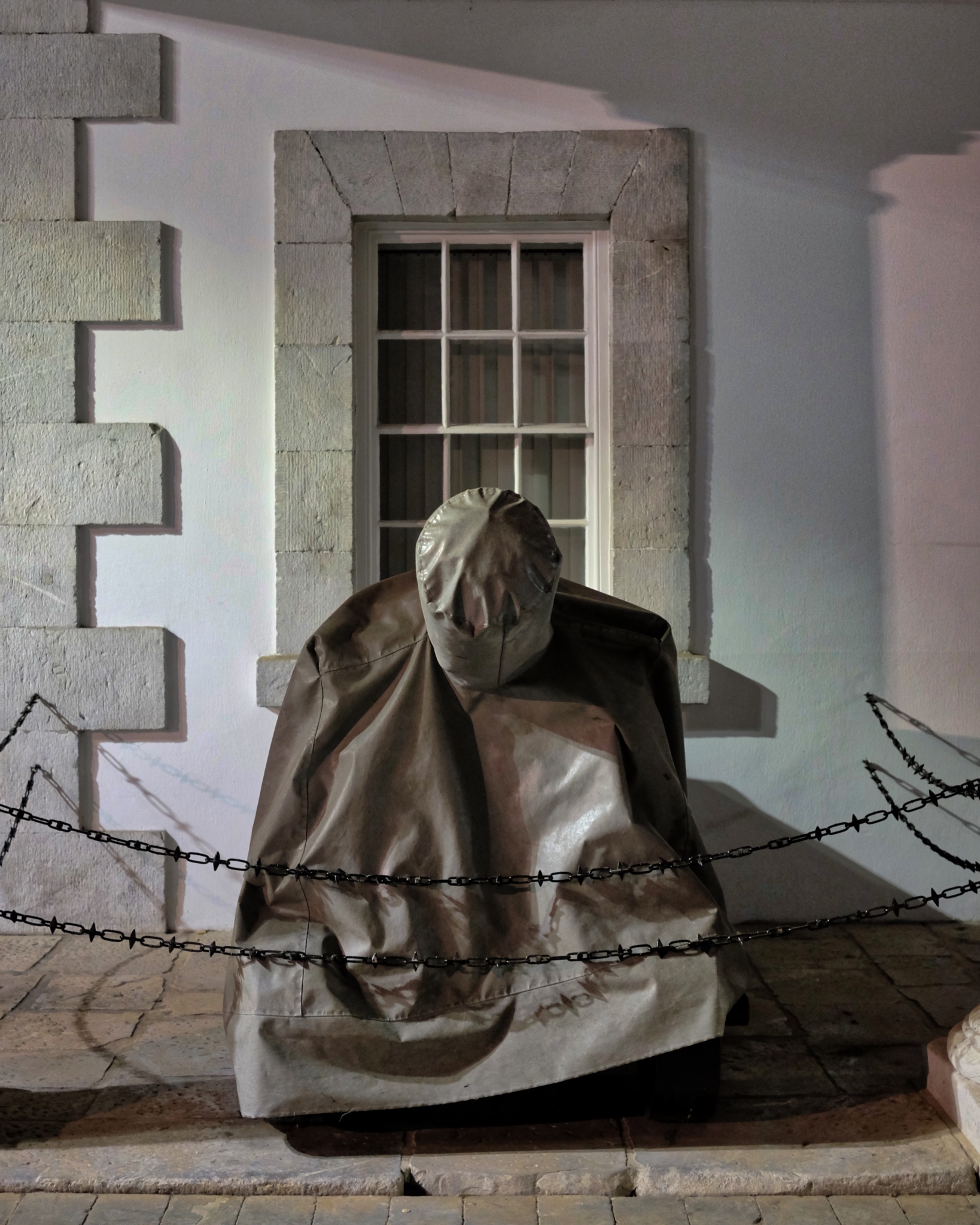 Such scrumptious shapes, line, color, shadow, and light.
Such scrumptious shapes, line, color, shadow, and light.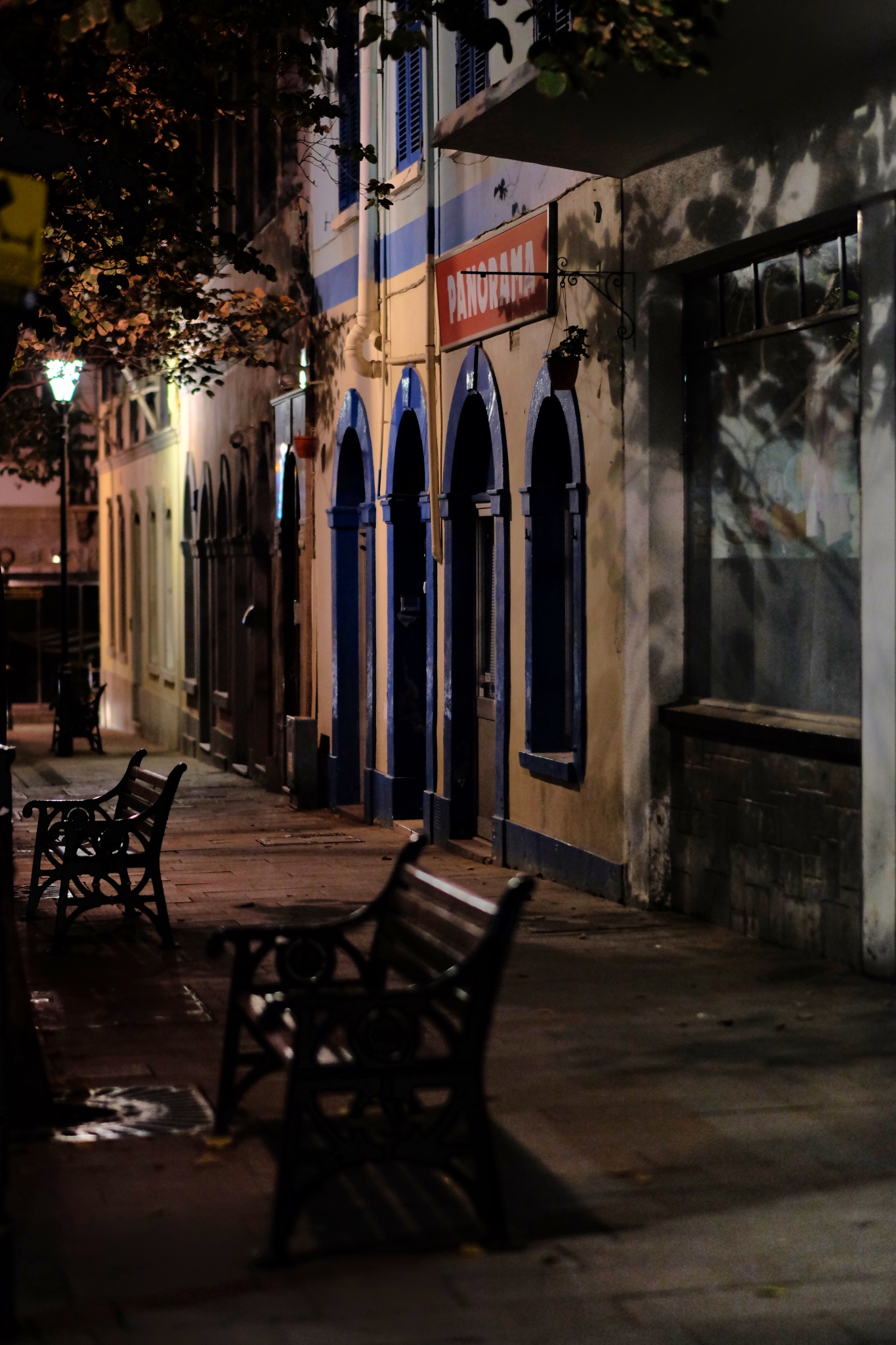 I walked through these same streets several times during the day without really noticing the relationships between shapes and structures . . .
I walked through these same streets several times during the day without really noticing the relationships between shapes and structures . . .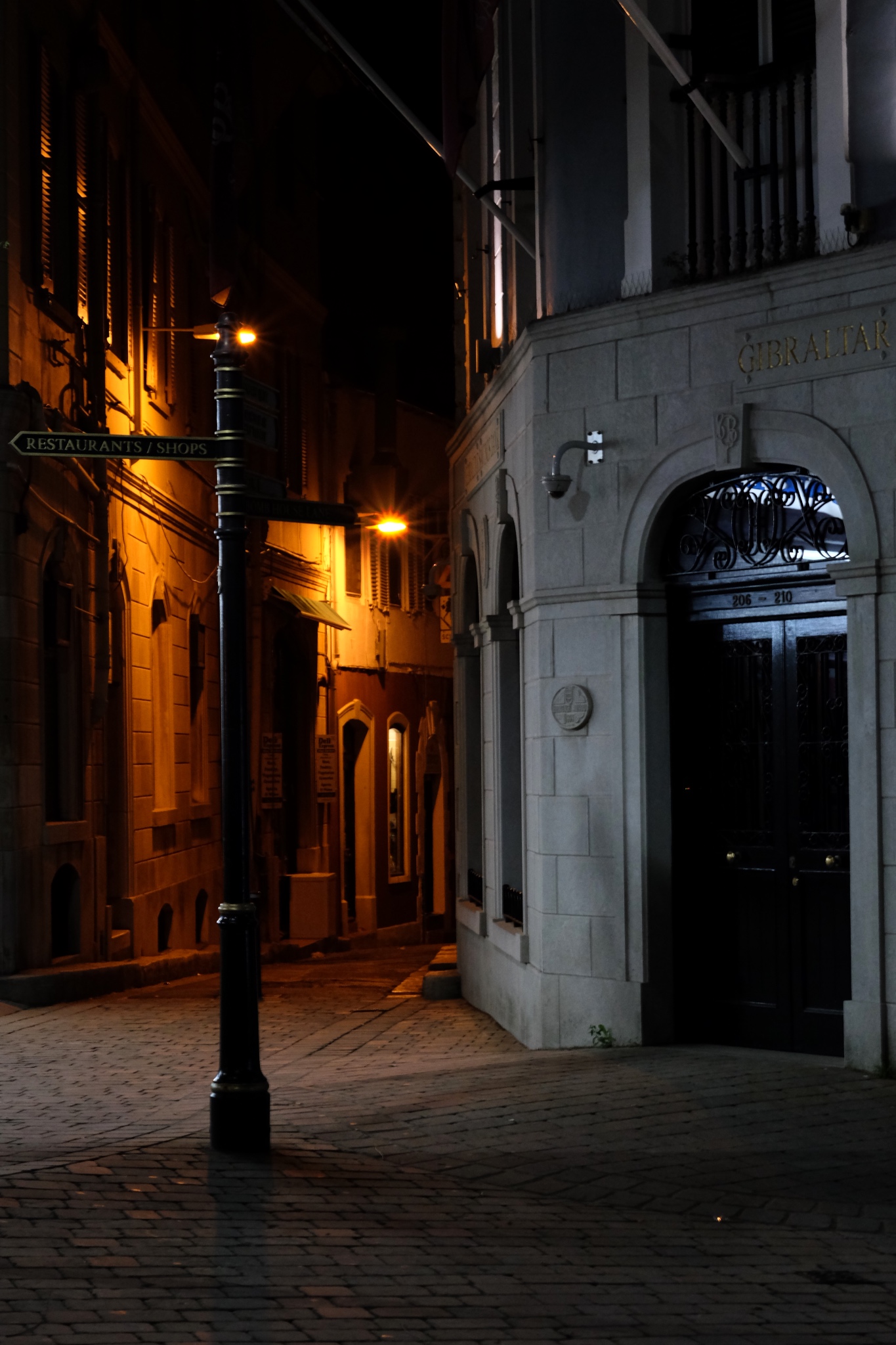 An inviting passage to . . . . who knows where.
An inviting passage to . . . . who knows where.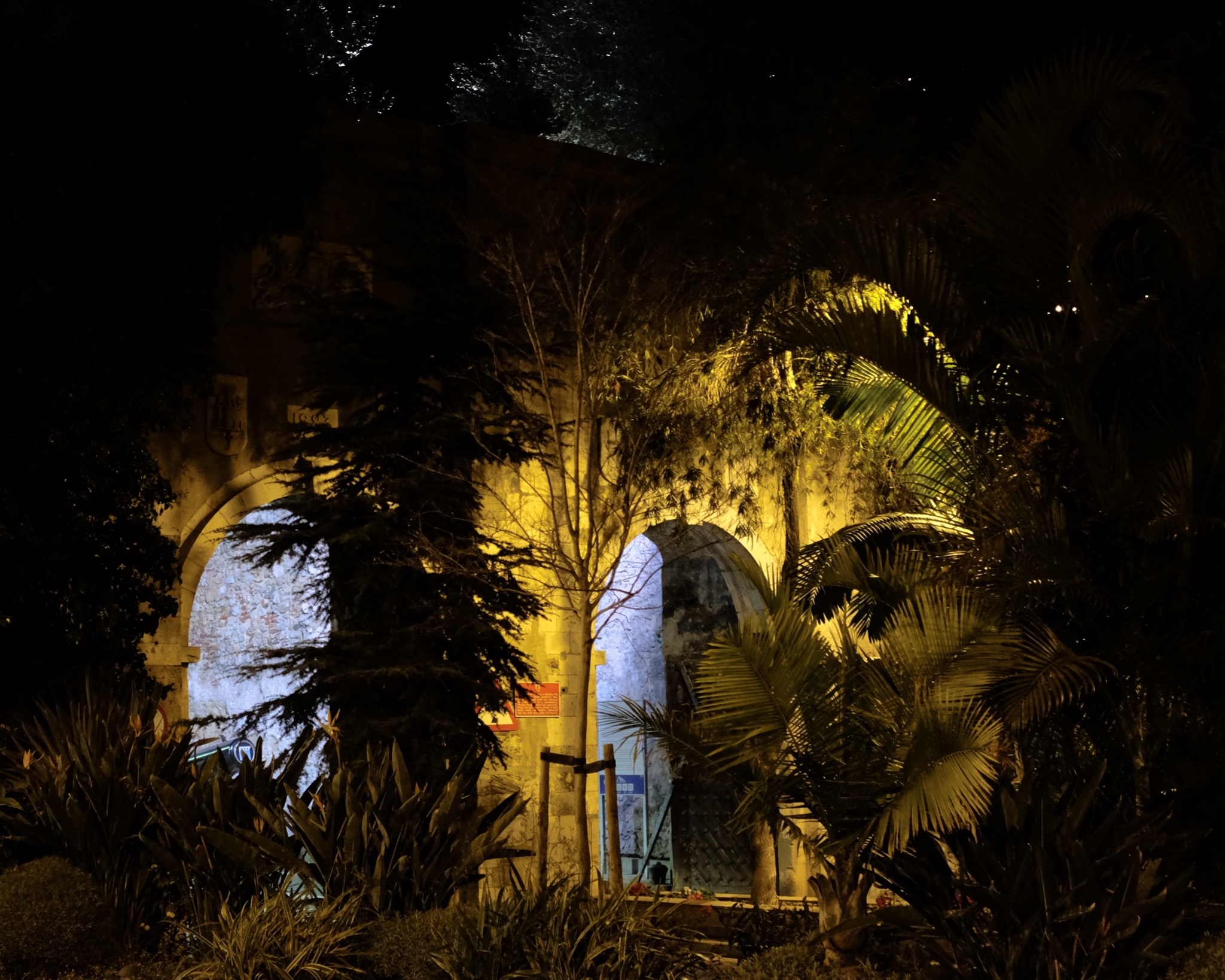 I literally walked from one end of the town to the other in only two hours . . . back out the southern city gate . . .
I literally walked from one end of the town to the other in only two hours . . . back out the southern city gate . . .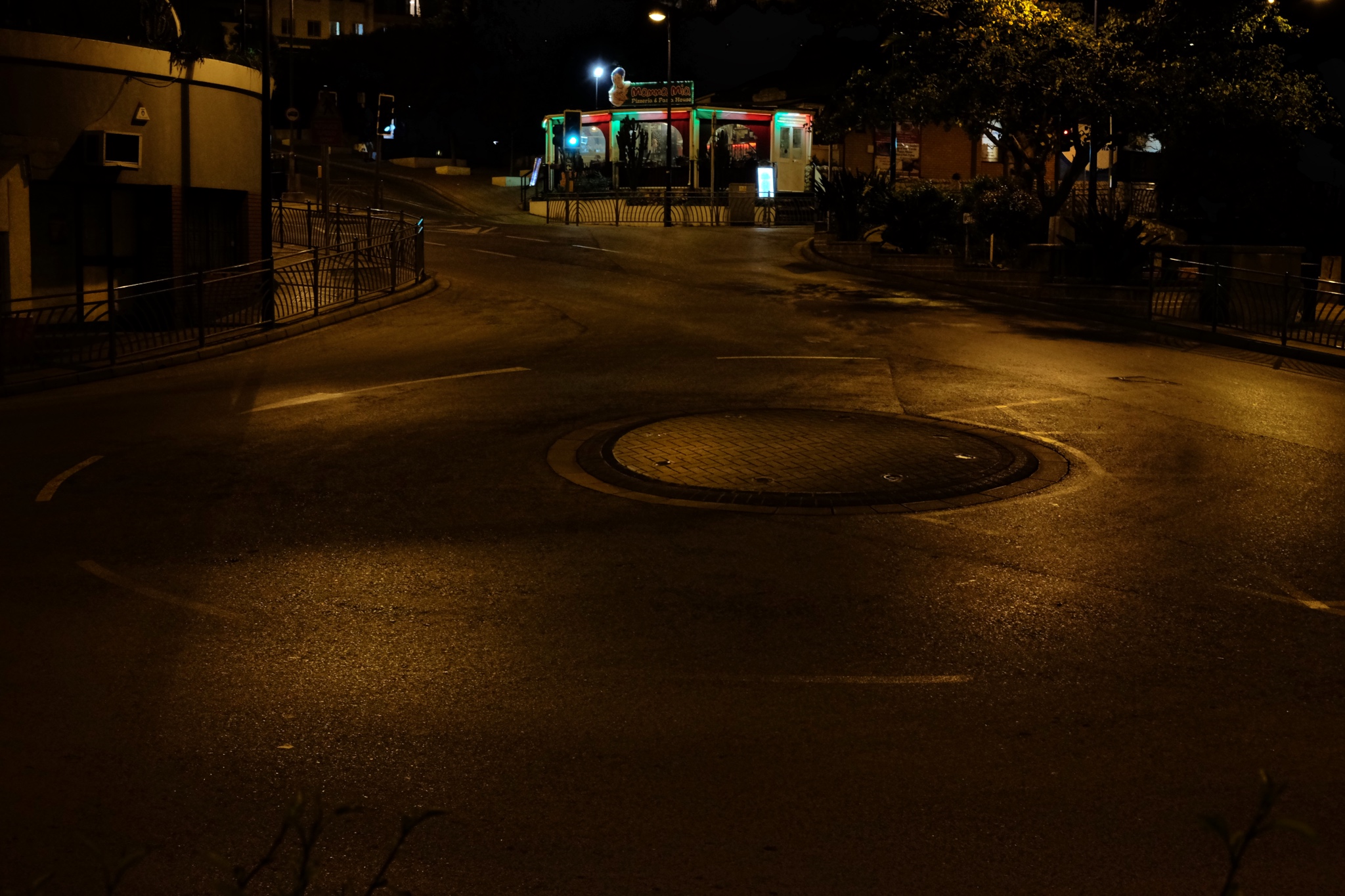 I walked all the eay back an abandoned traffic circle . . . and then back to my nearby hotel. I had had such an inspiring walkabout in the night streets of Gibraltar.
I walked all the eay back an abandoned traffic circle . . . and then back to my nearby hotel. I had had such an inspiring walkabout in the night streets of Gibraltar.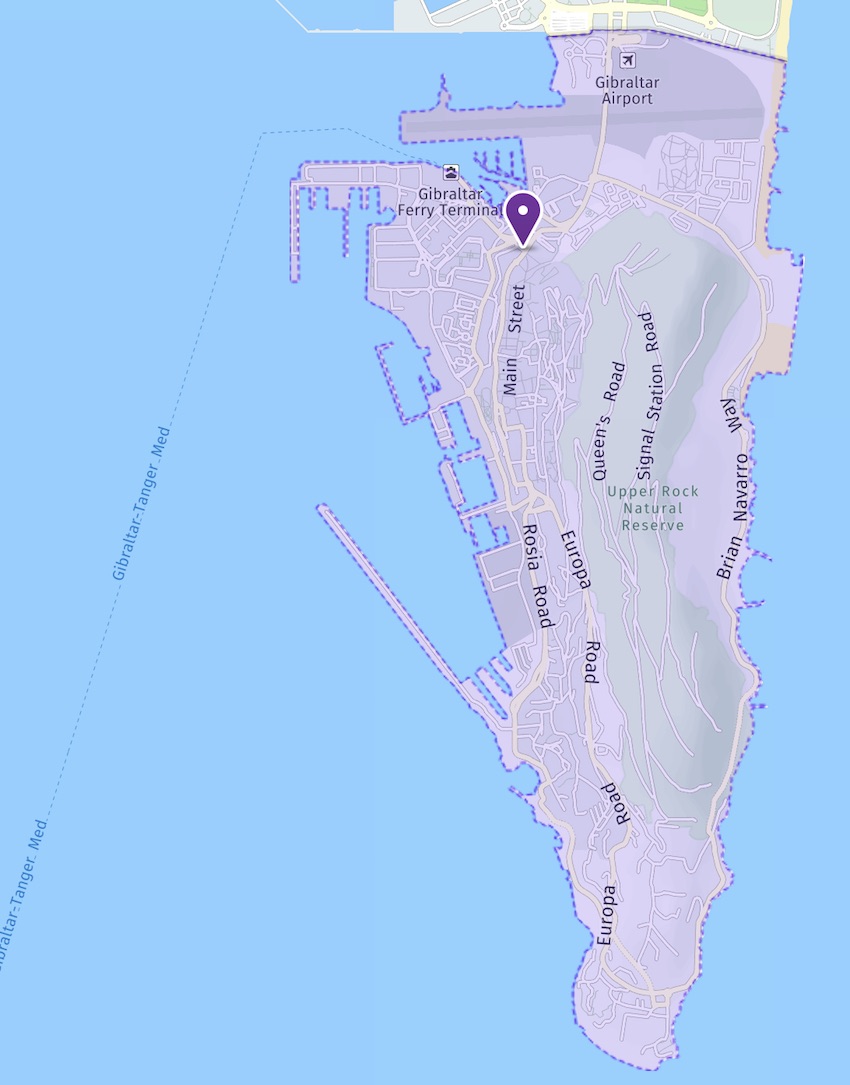
A Ramble in Scotland with a Visiting Friend (10/31 - 11/3, 2015)
 Sunday, March 18, 2018 at 11:18AM
Sunday, March 18, 2018 at 11:18AM Although I have left Scotland and am living back in Bangkok now, I am still going through photos I took on my many photographic rambles. This entry is of a three day ramble (mostly the northeast of Scotland) I took when my good friend John Stiles visited me. I took many, many photos on this ramble, so it will take some time for me to complete it. These are 'The Best of John's Visit.' Enjoy.
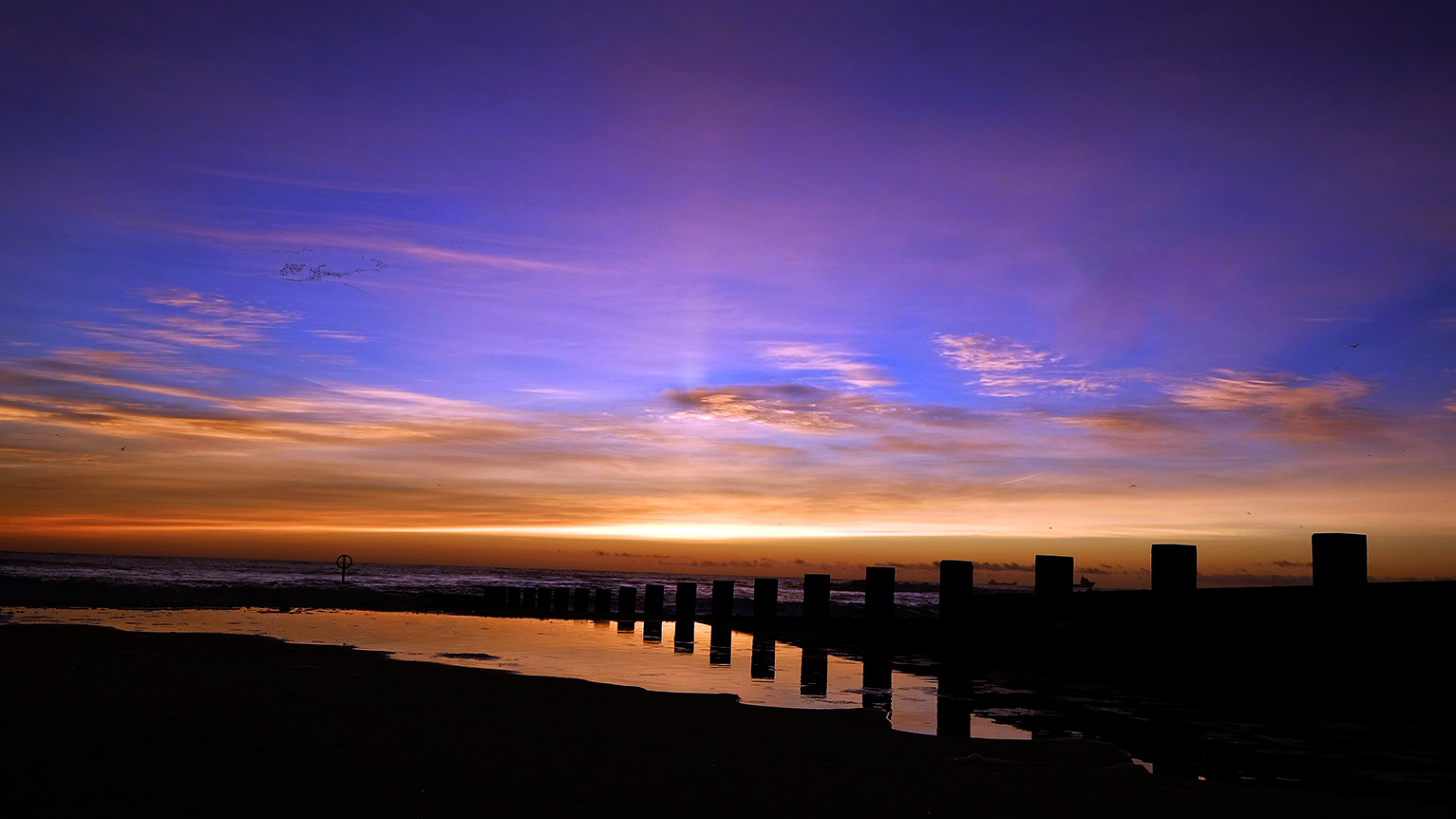 A North Sea sunrise along the Aberdeen Esplanade. Just above freezing.
A North Sea sunrise along the Aberdeen Esplanade. Just above freezing.
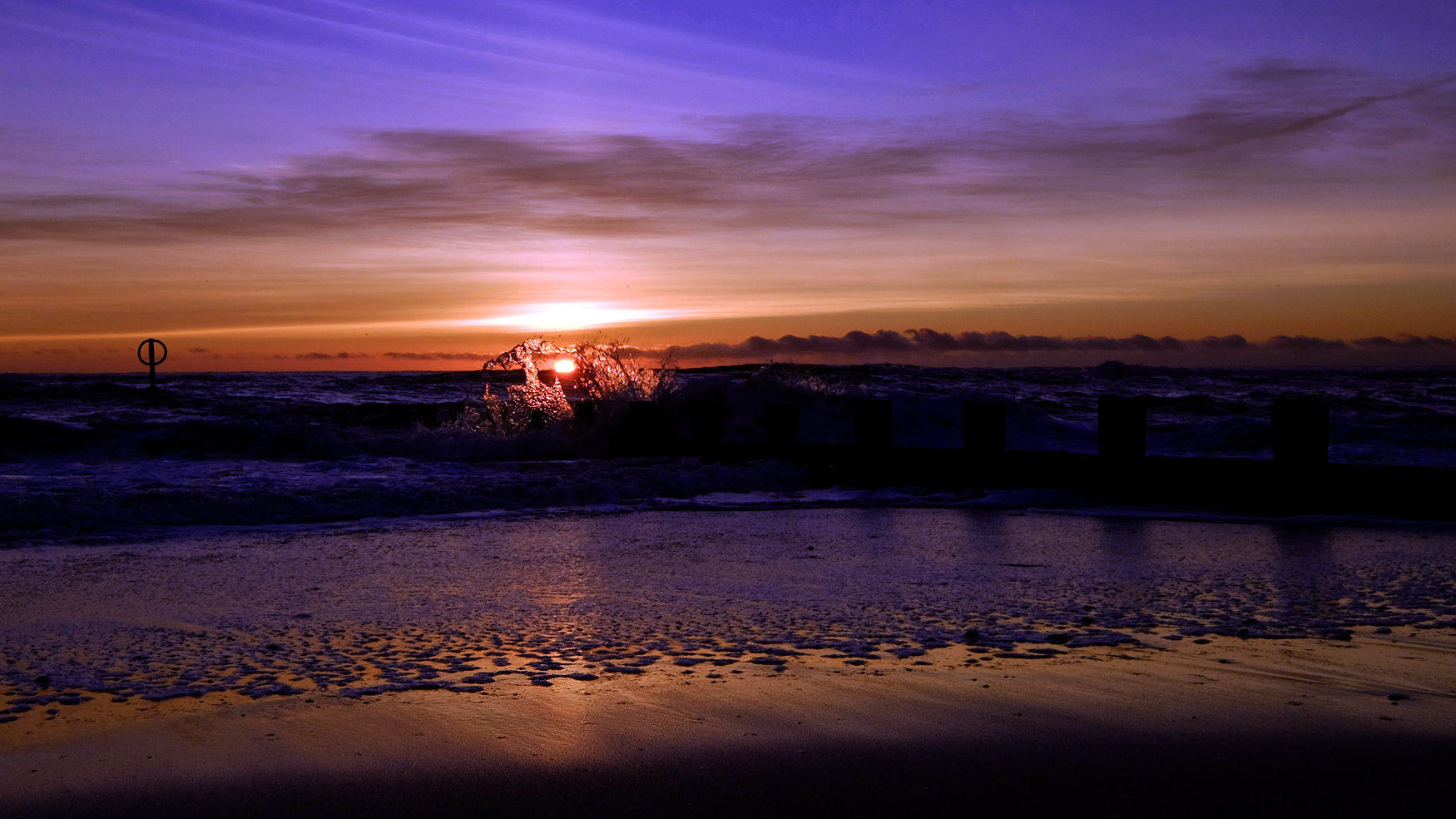 First Light. North Sea.
First Light. North Sea.
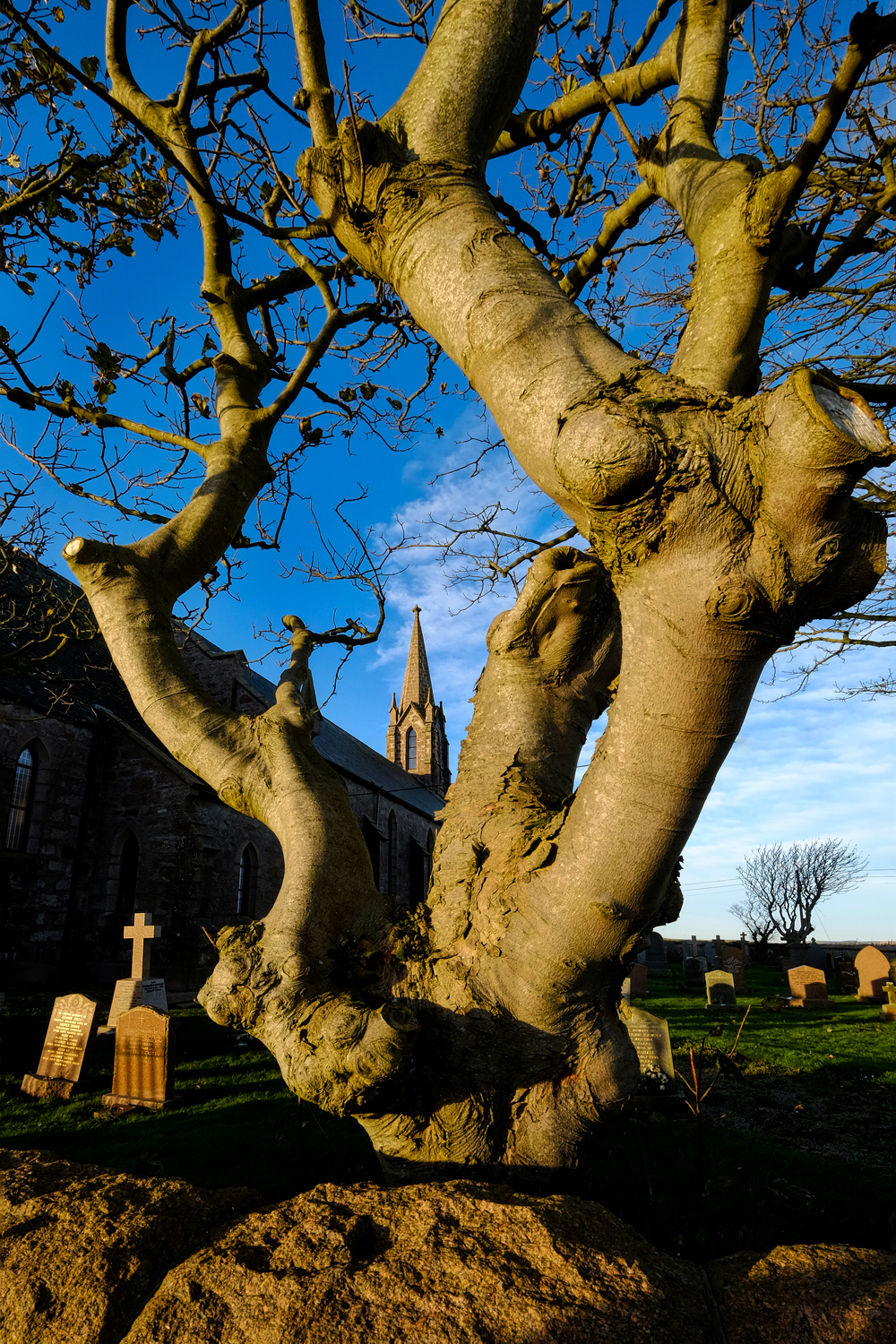 A church along an Aberdeenshire rural road.
A church along an Aberdeenshire rural road.
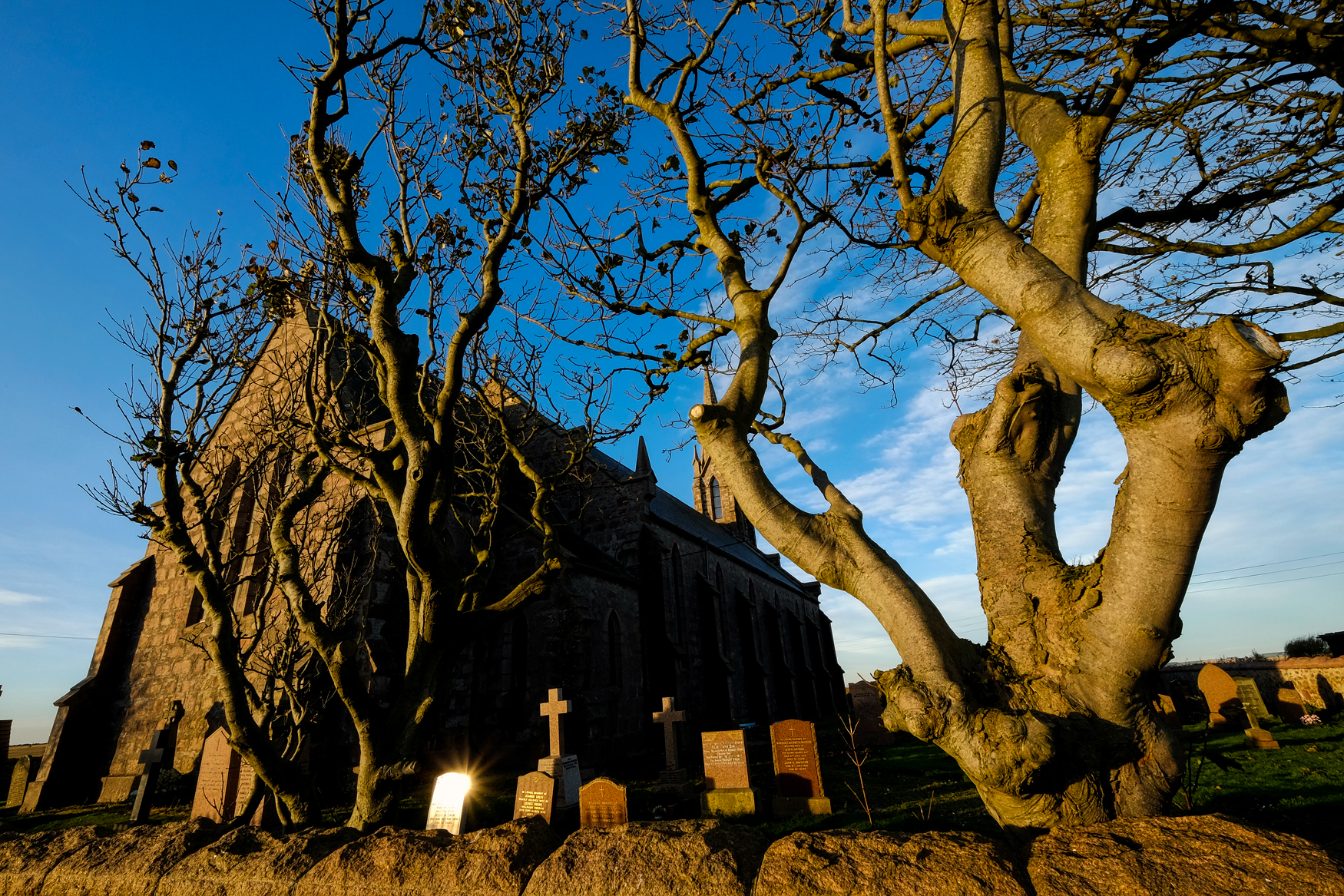 Stunning November weather for northeast Scotland.
Stunning November weather for northeast Scotland.
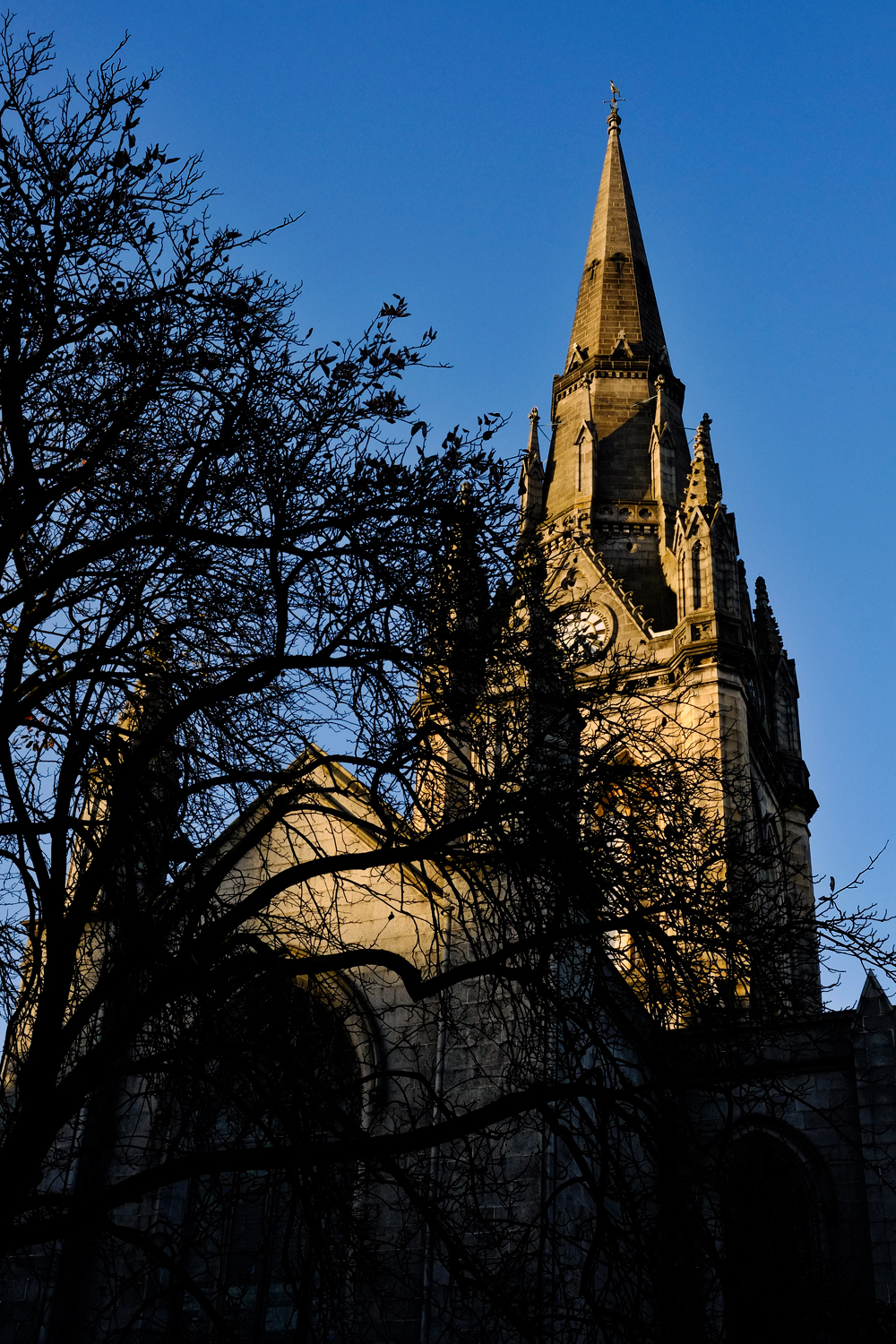 I the middle of the Aberdeen city centre is a wonderful church and cemetery.
I the middle of the Aberdeen city centre is a wonderful church and cemetery.
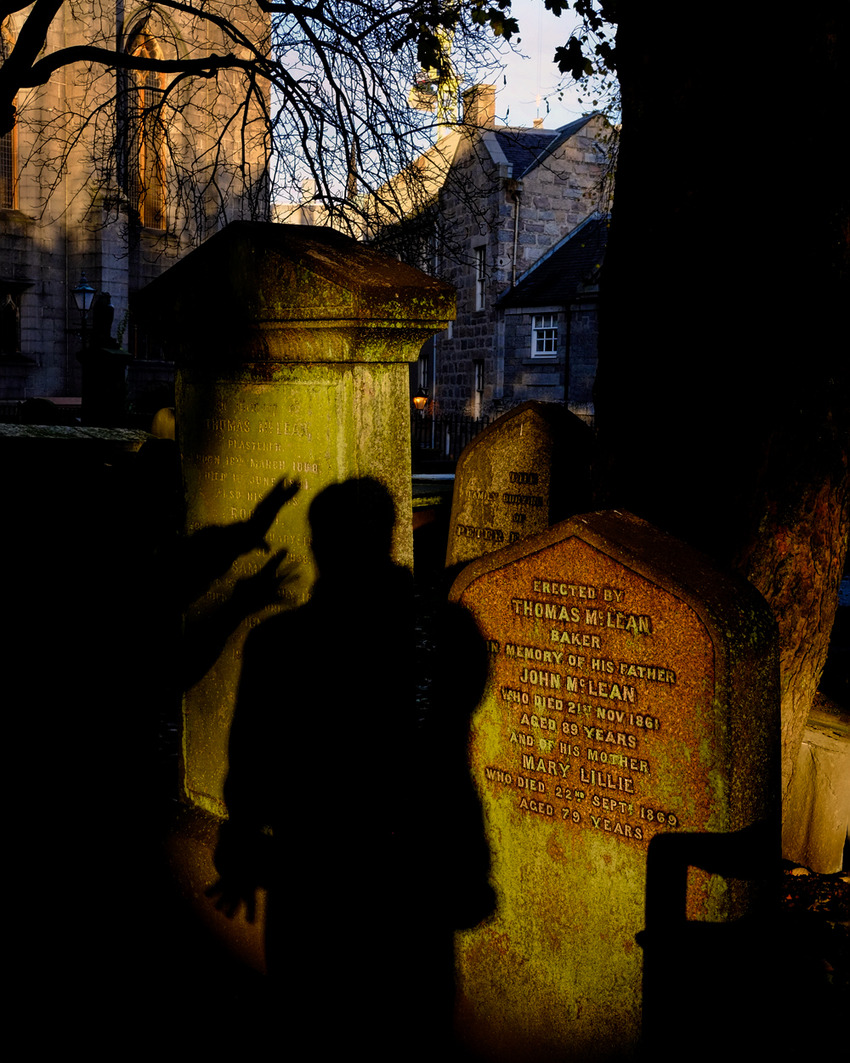 When an old friend visits that you haven't seen in a while, and it's Halloween, and you are in an old graveyard . . . you must play!
When an old friend visits that you haven't seen in a while, and it's Halloween, and you are in an old graveyard . . . you must play!
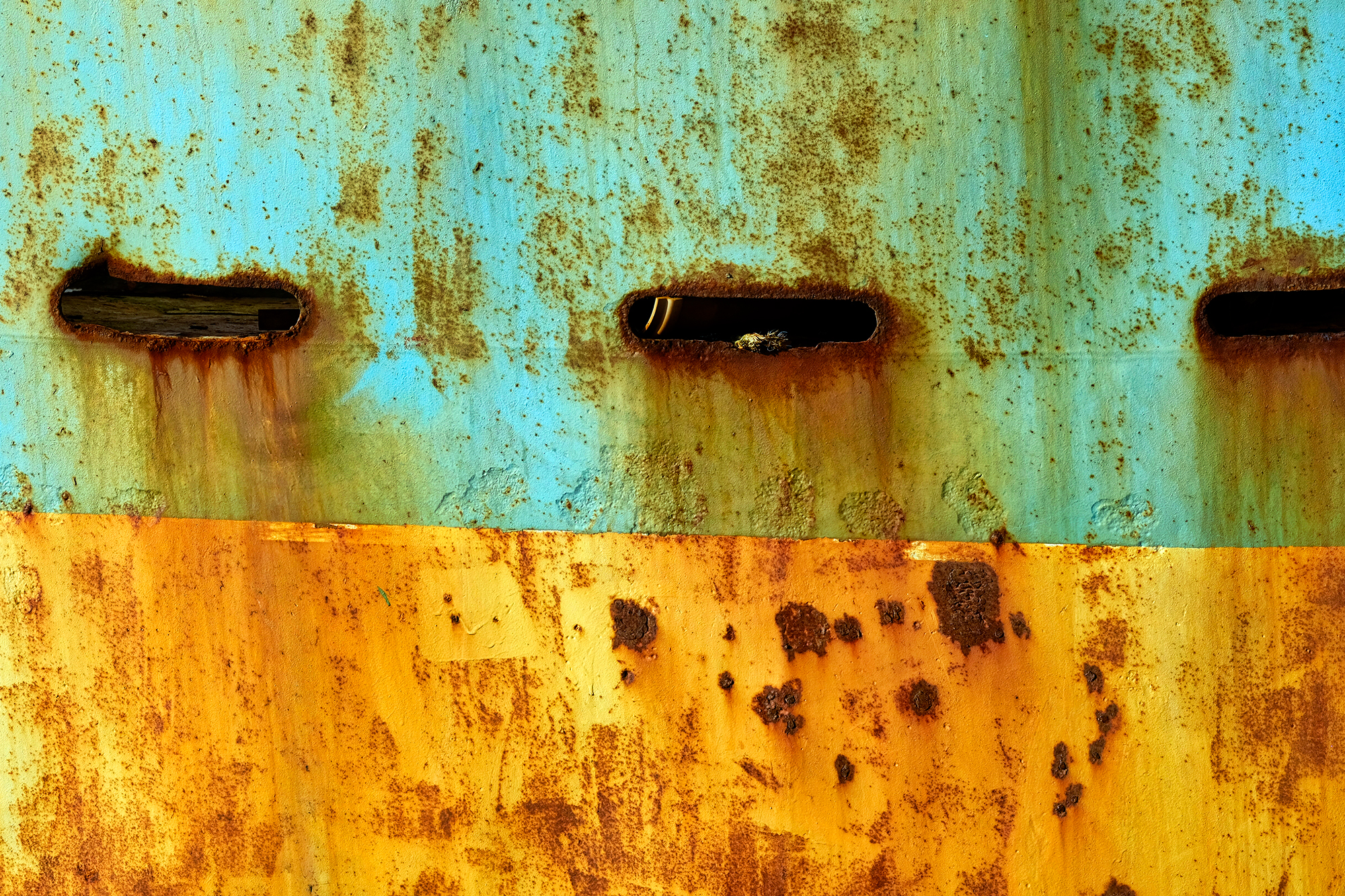 After that stunning sunrise at the Aberdeen Esplanade, our day one ramble took us up the coast to the little fishing berg of Baddam where the hulls of the beached trawlers provided extraordinary abstract studies in decay and color.
After that stunning sunrise at the Aberdeen Esplanade, our day one ramble took us up the coast to the little fishing berg of Baddam where the hulls of the beached trawlers provided extraordinary abstract studies in decay and color.
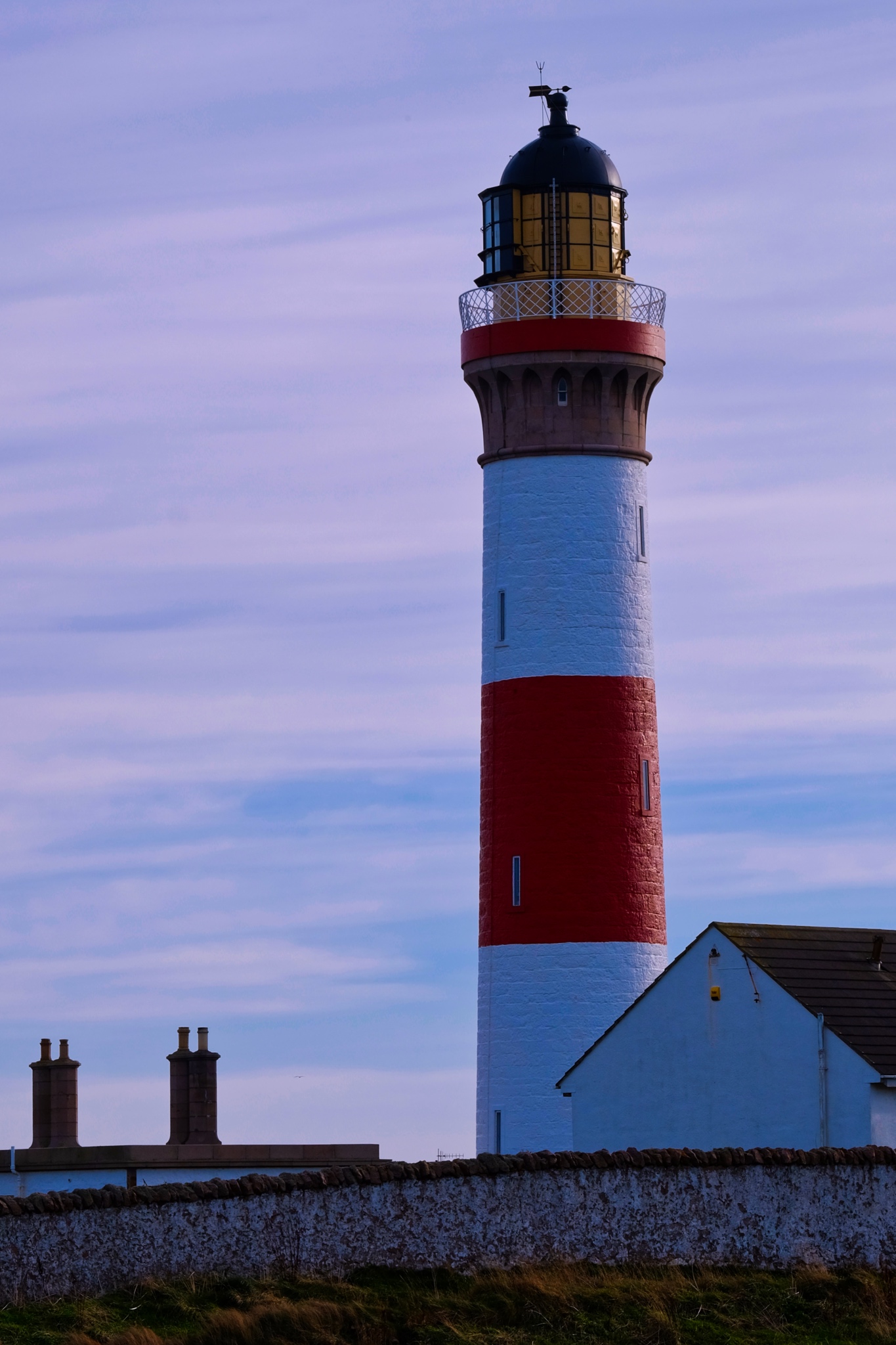 The lighthouse at Baddam.
The lighthouse at Baddam.
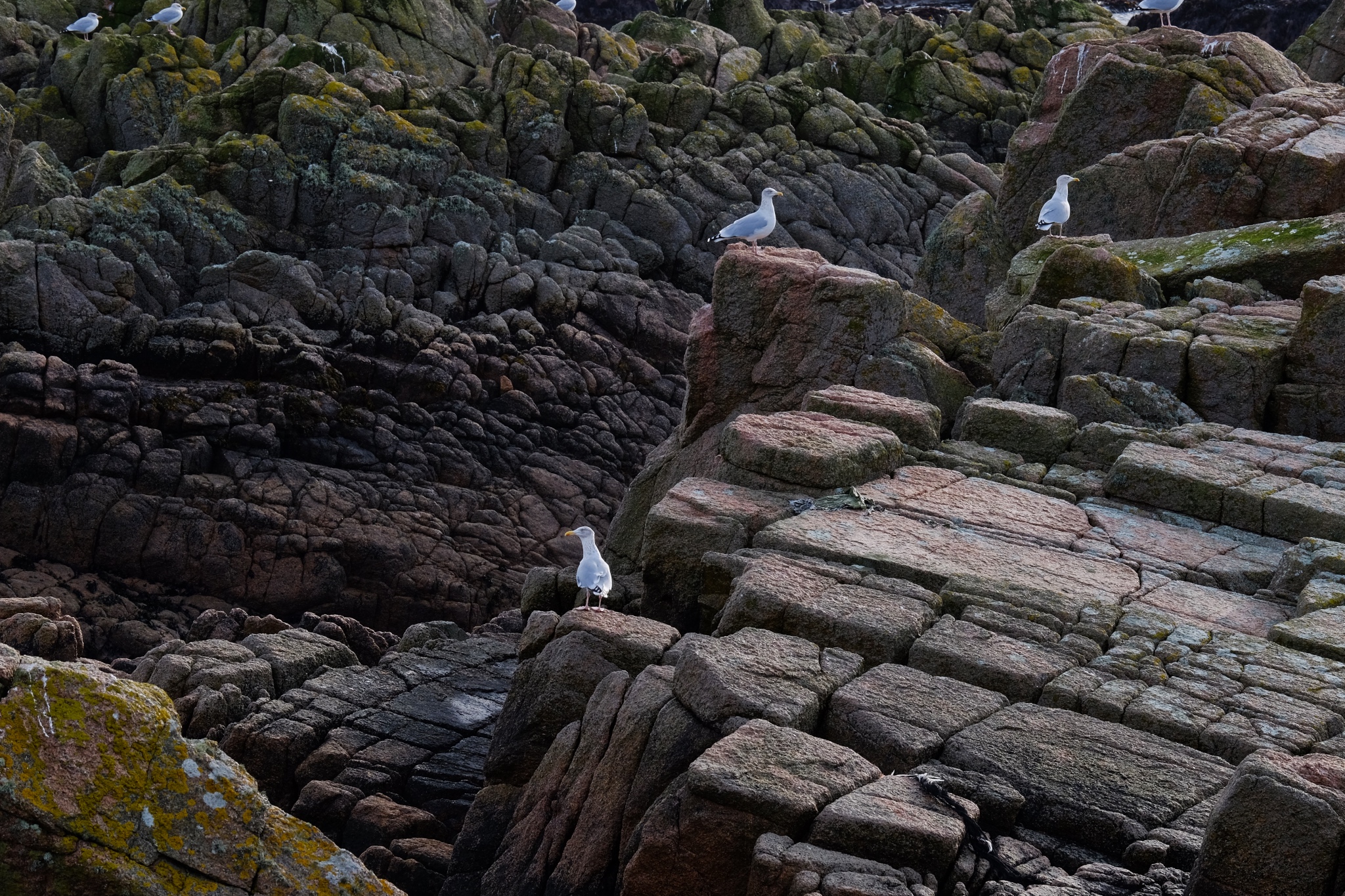 Exposed rocks near Baddam harbour.
Exposed rocks near Baddam harbour.
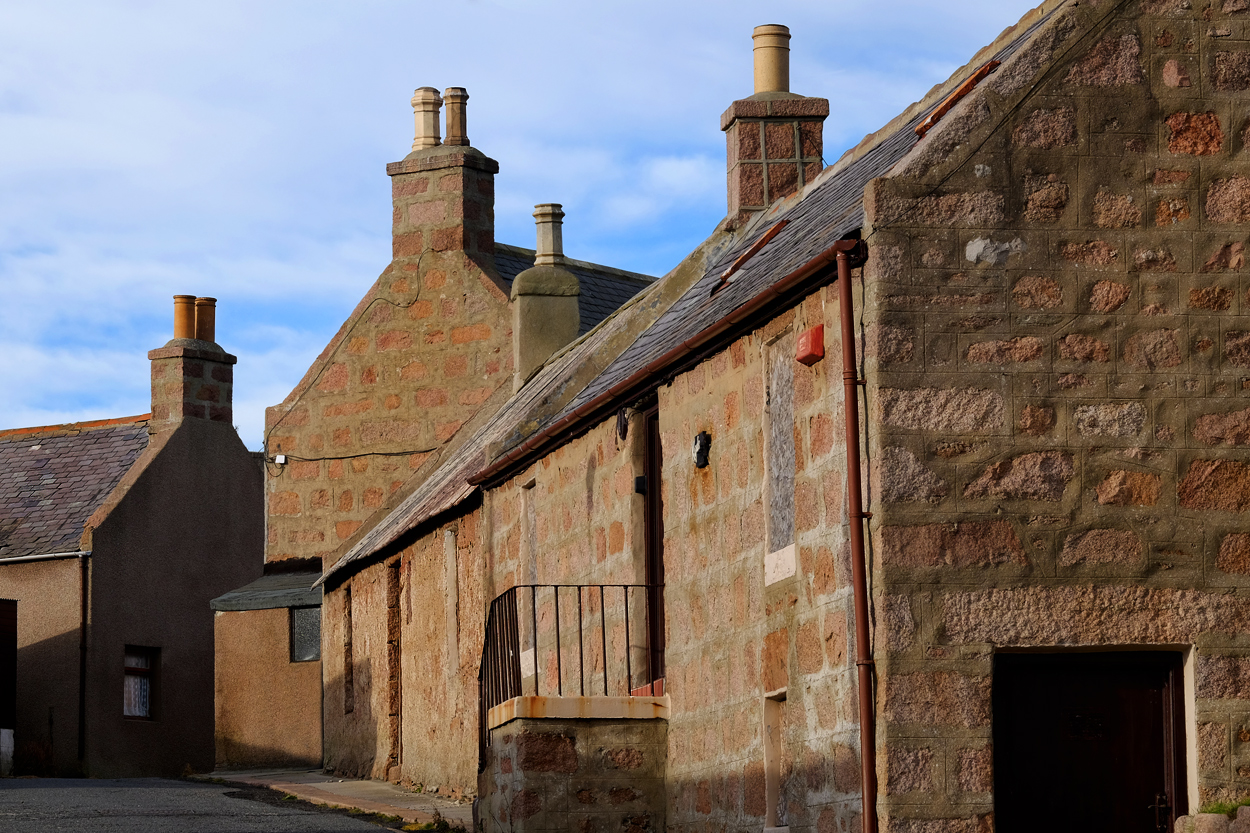 The austere old section of Baddam village.
The austere old section of Baddam village.
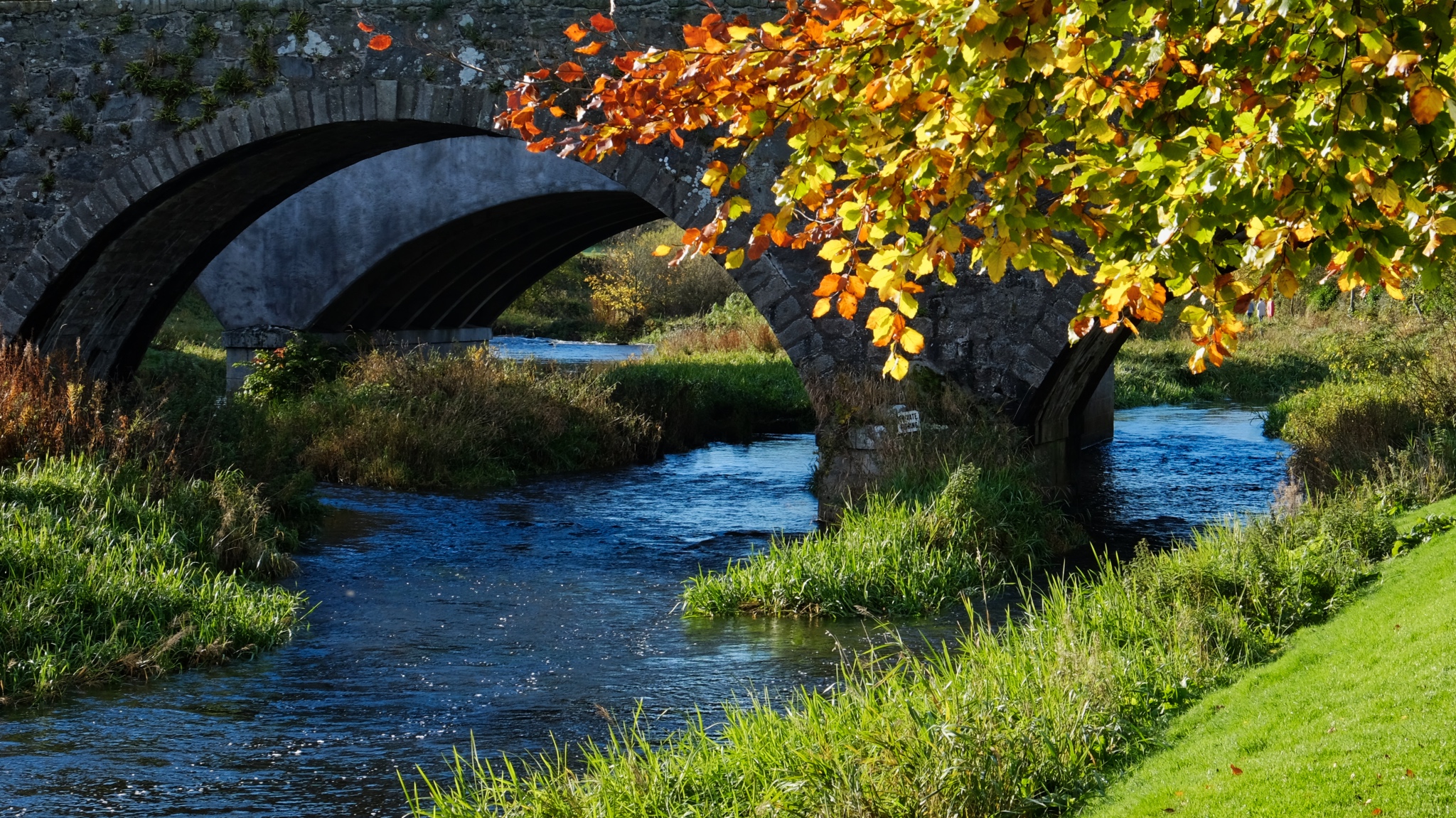 All along our small road route, we were continually 'discovering' fantastically beautiful scenes.
All along our small road route, we were continually 'discovering' fantastically beautiful scenes.
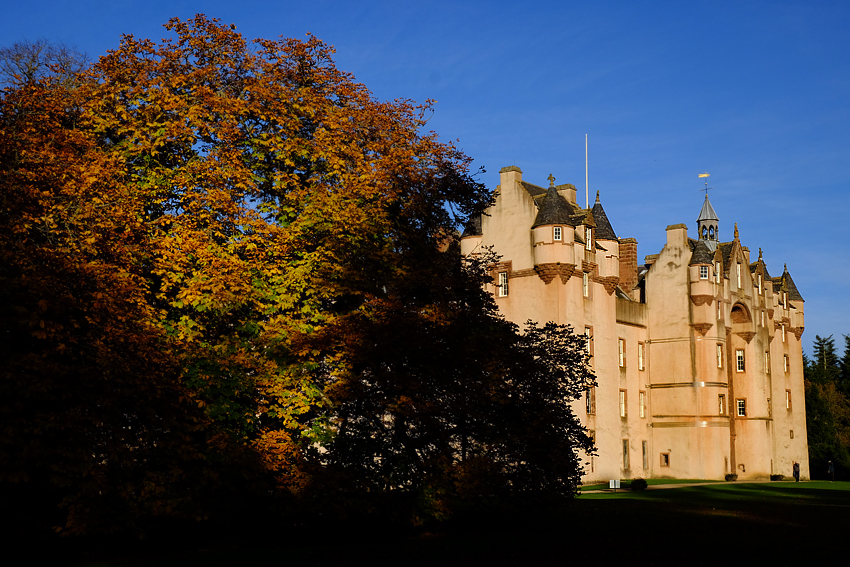 The stunning Fyvie Castle.
The stunning Fyvie Castle.
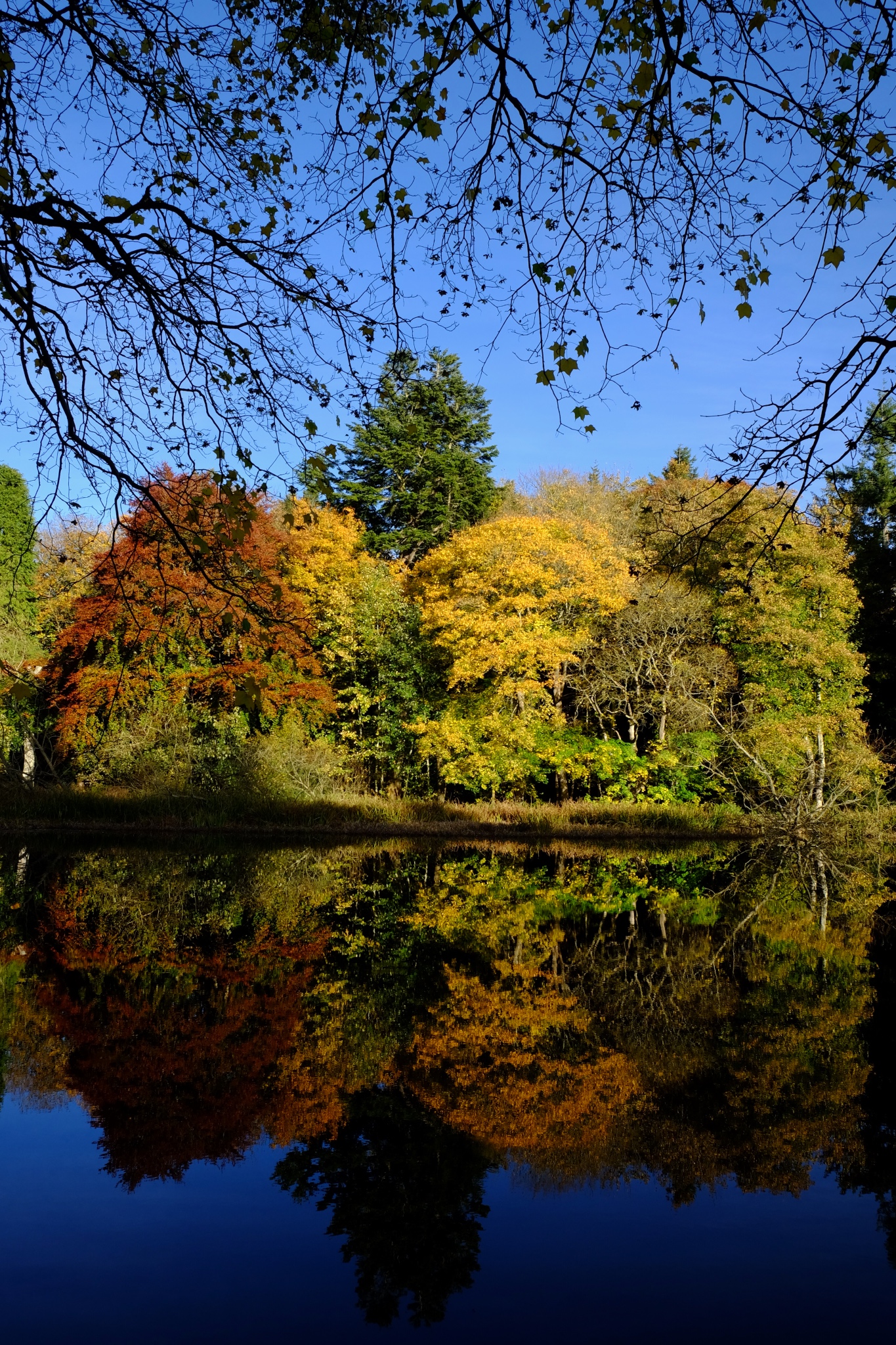 Gorgeous autumn scenes all around the grounds of Fyvie Castle.
Gorgeous autumn scenes all around the grounds of Fyvie Castle.
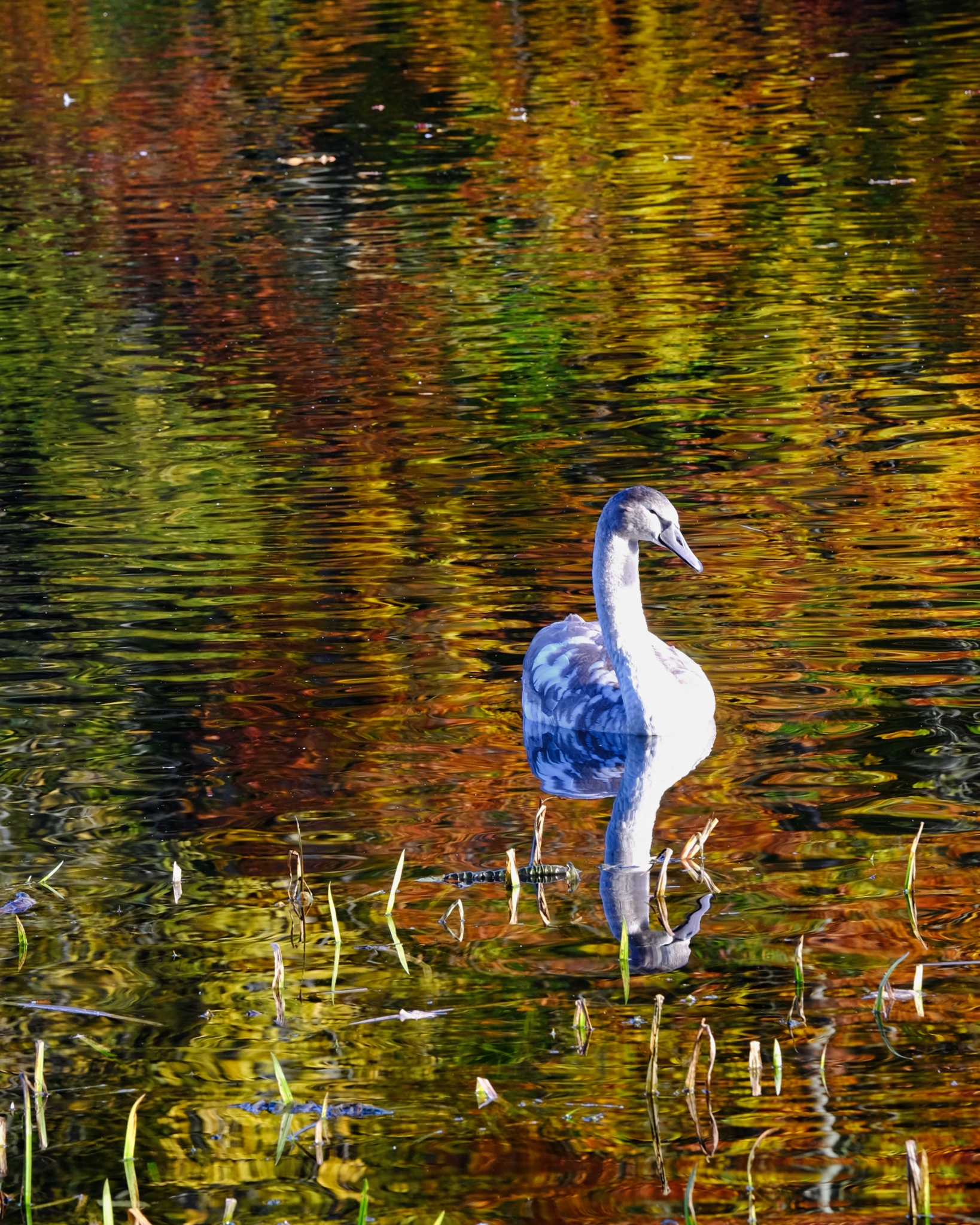 Superb Fall colors reflected in the castle goose pond.
Superb Fall colors reflected in the castle goose pond.
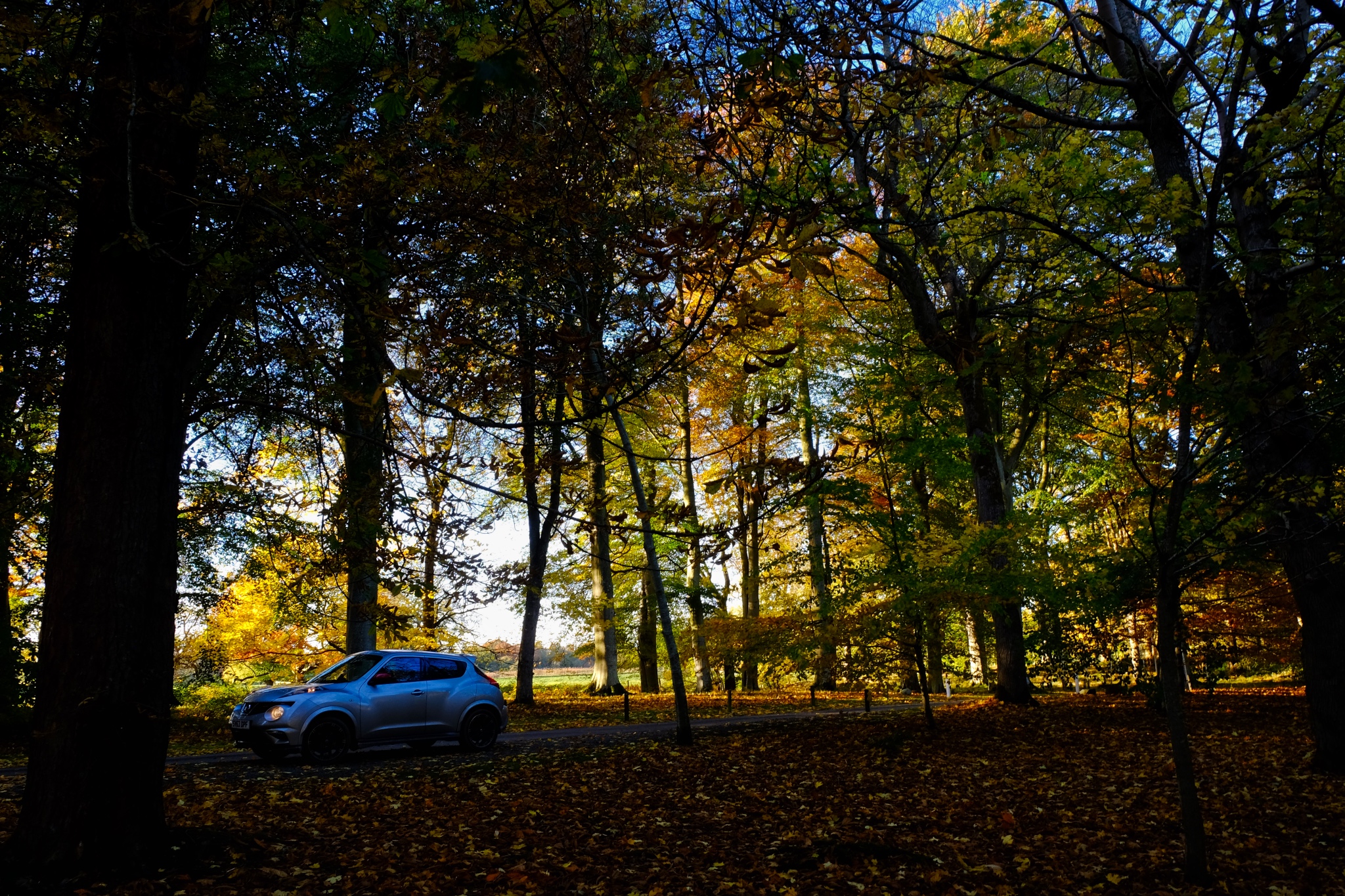 For three glorious days we rambled about the small roads of northeast Scotland. My AWD Juke NISMO was the perfect car for the narrow, winding, wet-leaf-covered country lanes.
For three glorious days we rambled about the small roads of northeast Scotland. My AWD Juke NISMO was the perfect car for the narrow, winding, wet-leaf-covered country lanes.
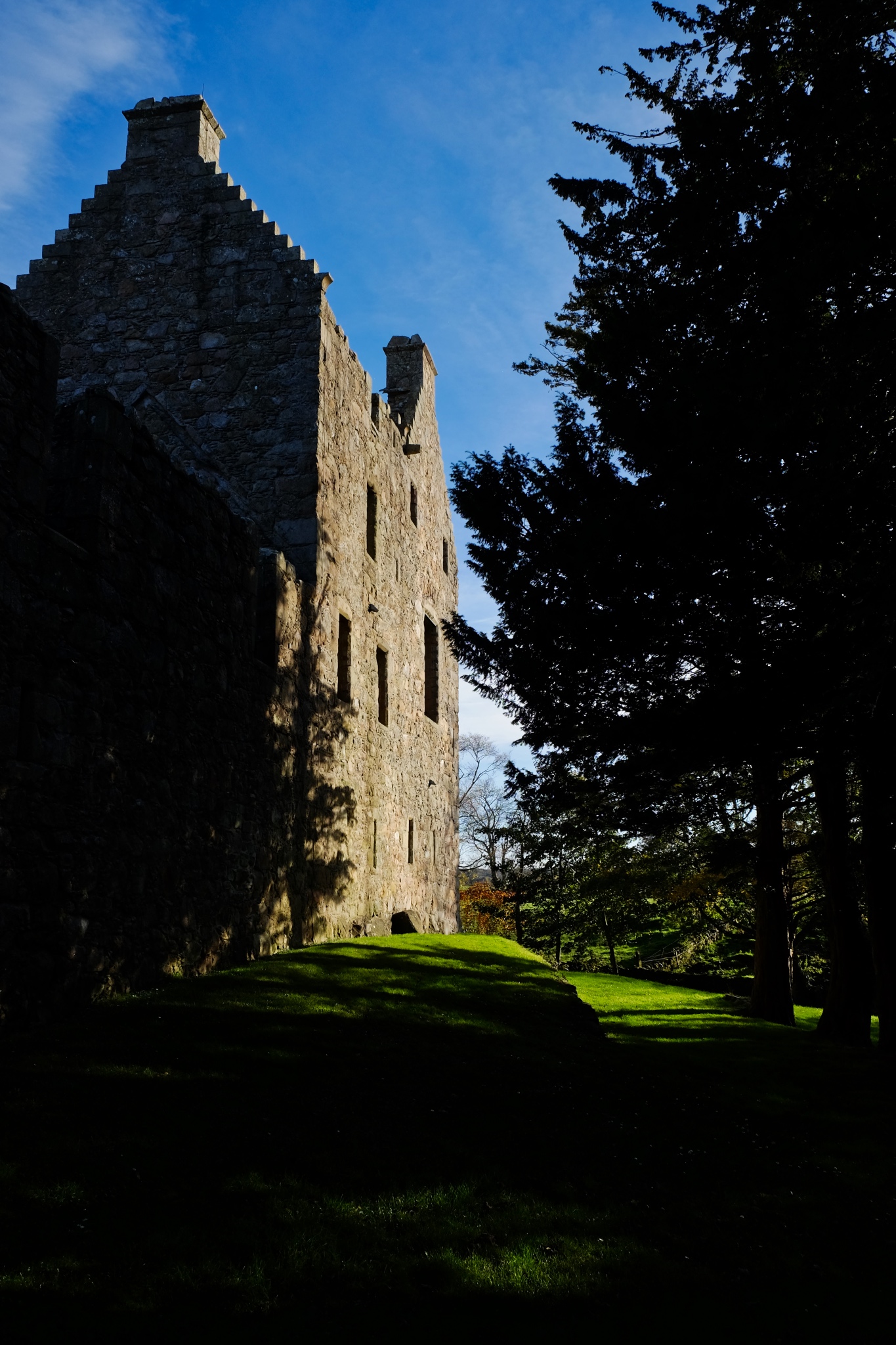 Castles and castle ruins everywhere in Aberdeenshire.
Castles and castle ruins everywhere in Aberdeenshire.
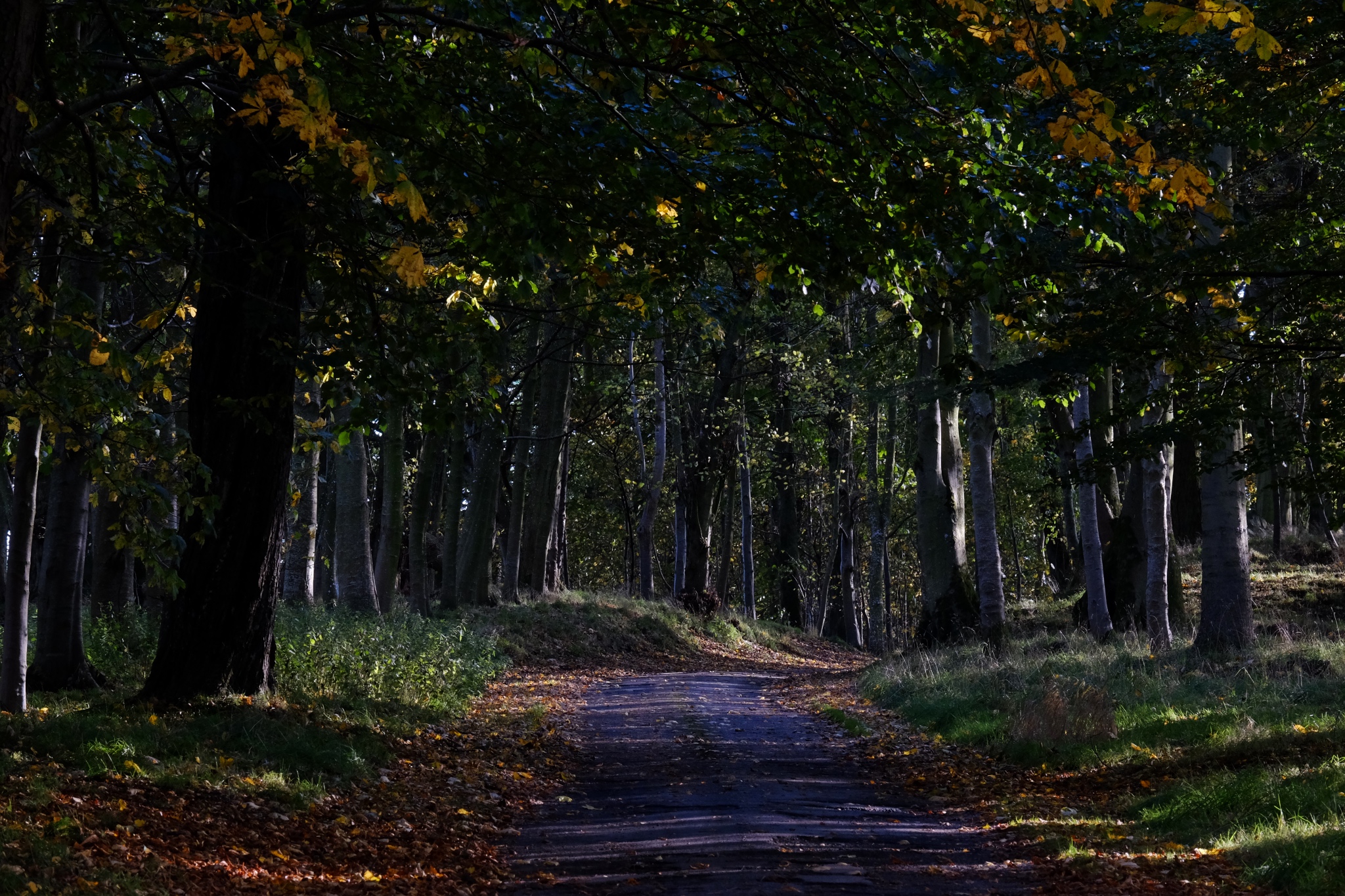 The Aberdeenshire roads would alternately suddenly diving into the deep shade of small forests . . .
The Aberdeenshire roads would alternately suddenly diving into the deep shade of small forests . . .
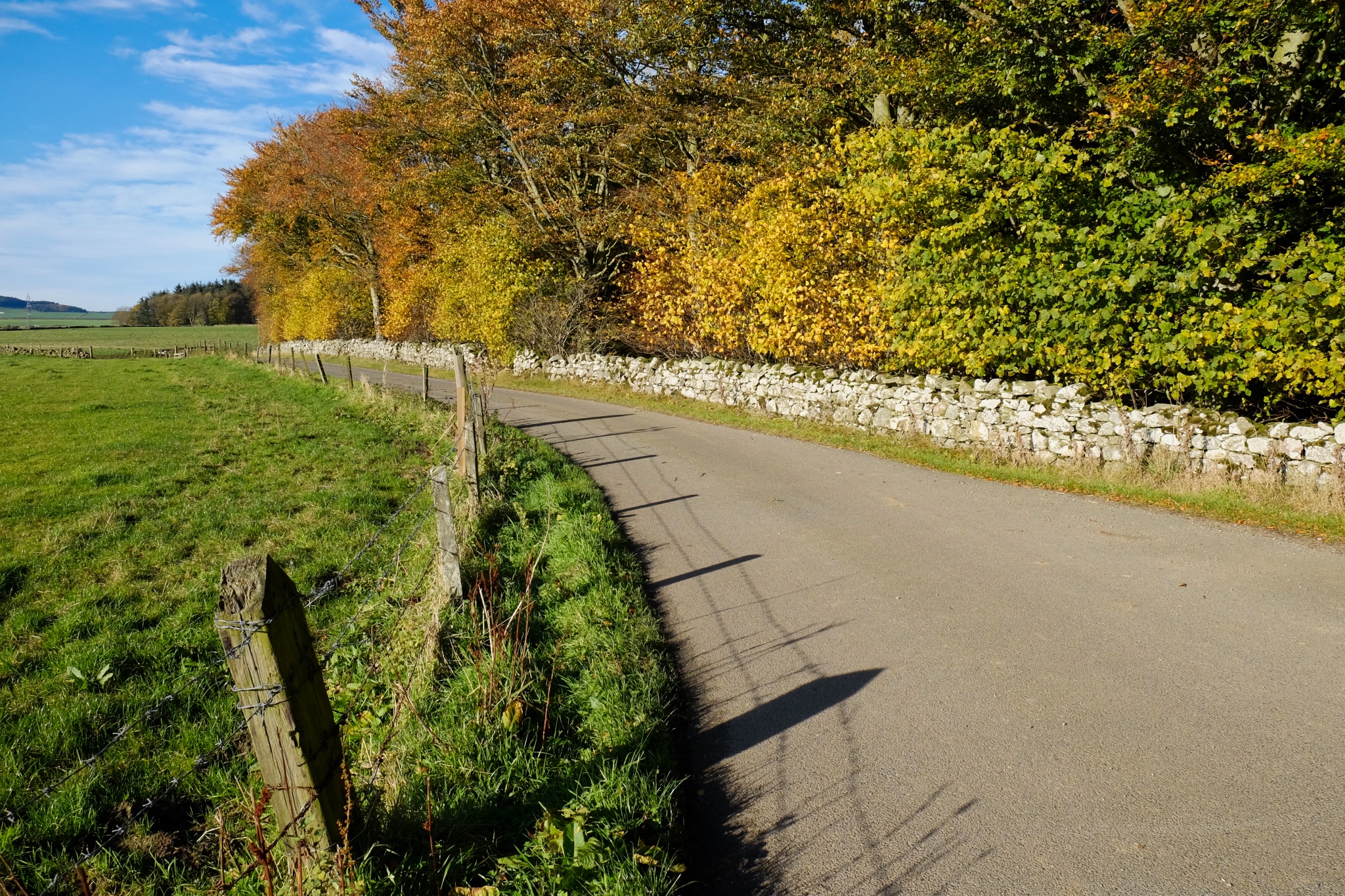 . . . and back out onto the bright, stone wall lined country roads.
. . . and back out onto the bright, stone wall lined country roads.
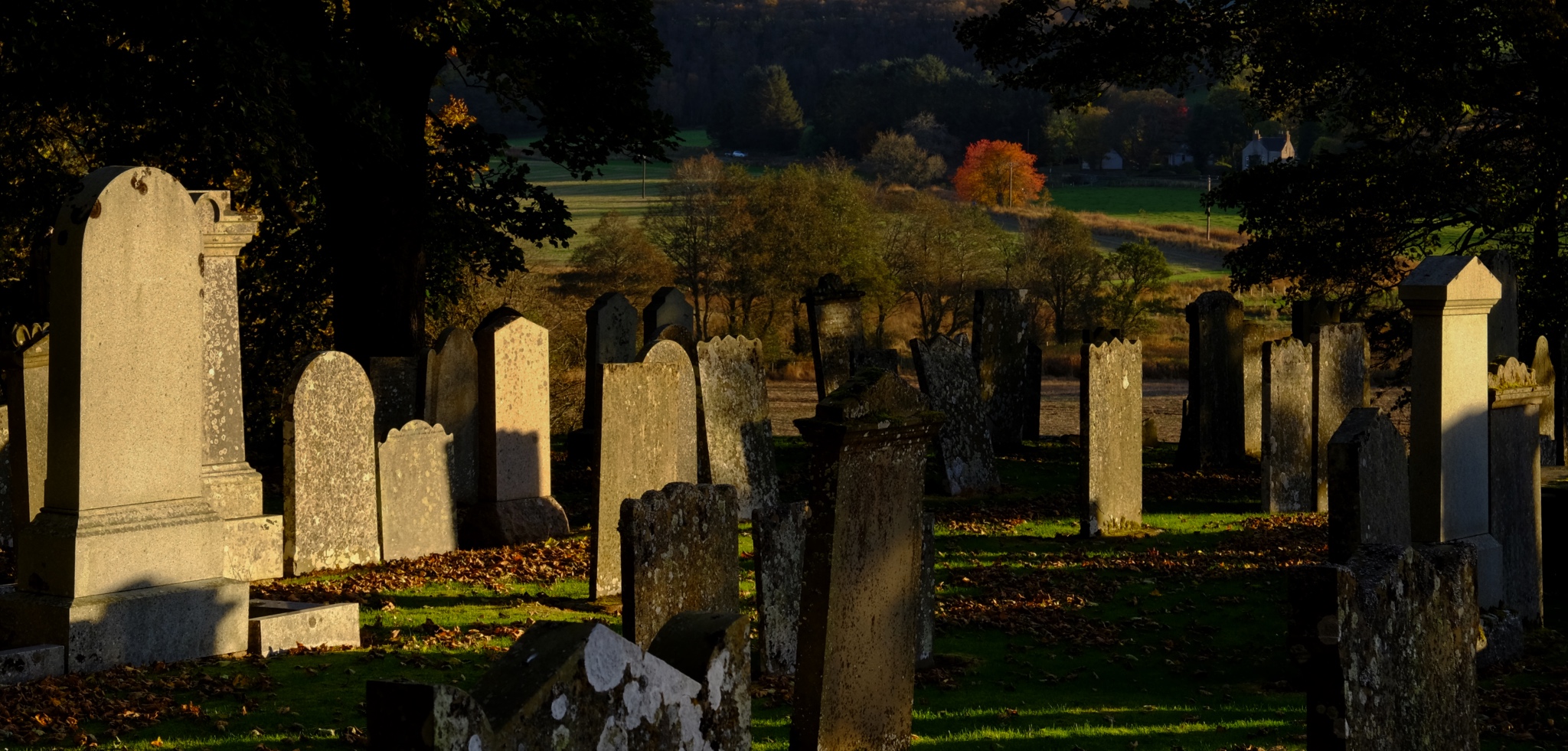 We were always up for a quick stop at an old country cemetery.
We were always up for a quick stop at an old country cemetery.
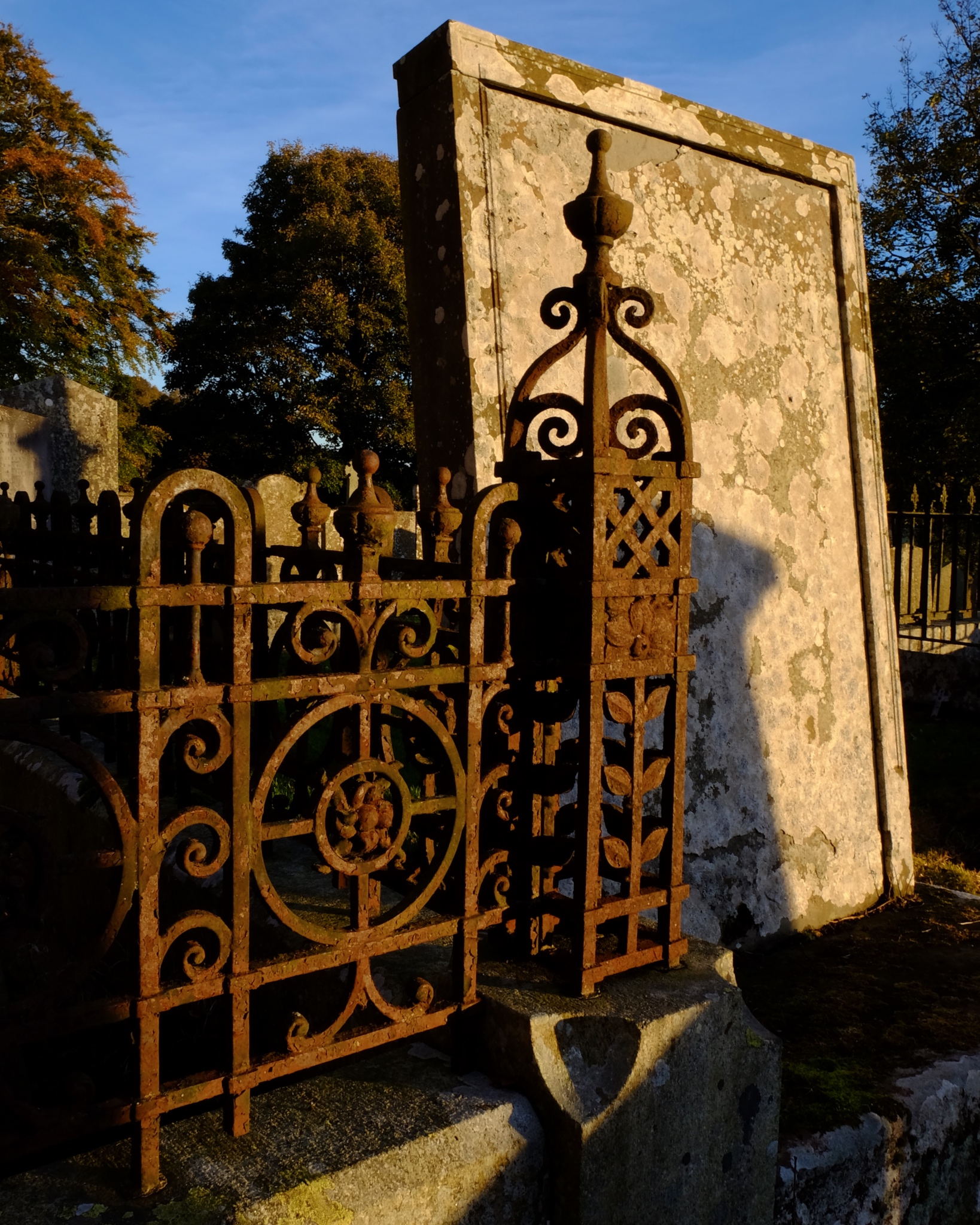 There is so much to see in the old cemeteries: colors, textures, old surfaces . . . . and . . . .
There is so much to see in the old cemeteries: colors, textures, old surfaces . . . . and . . . .
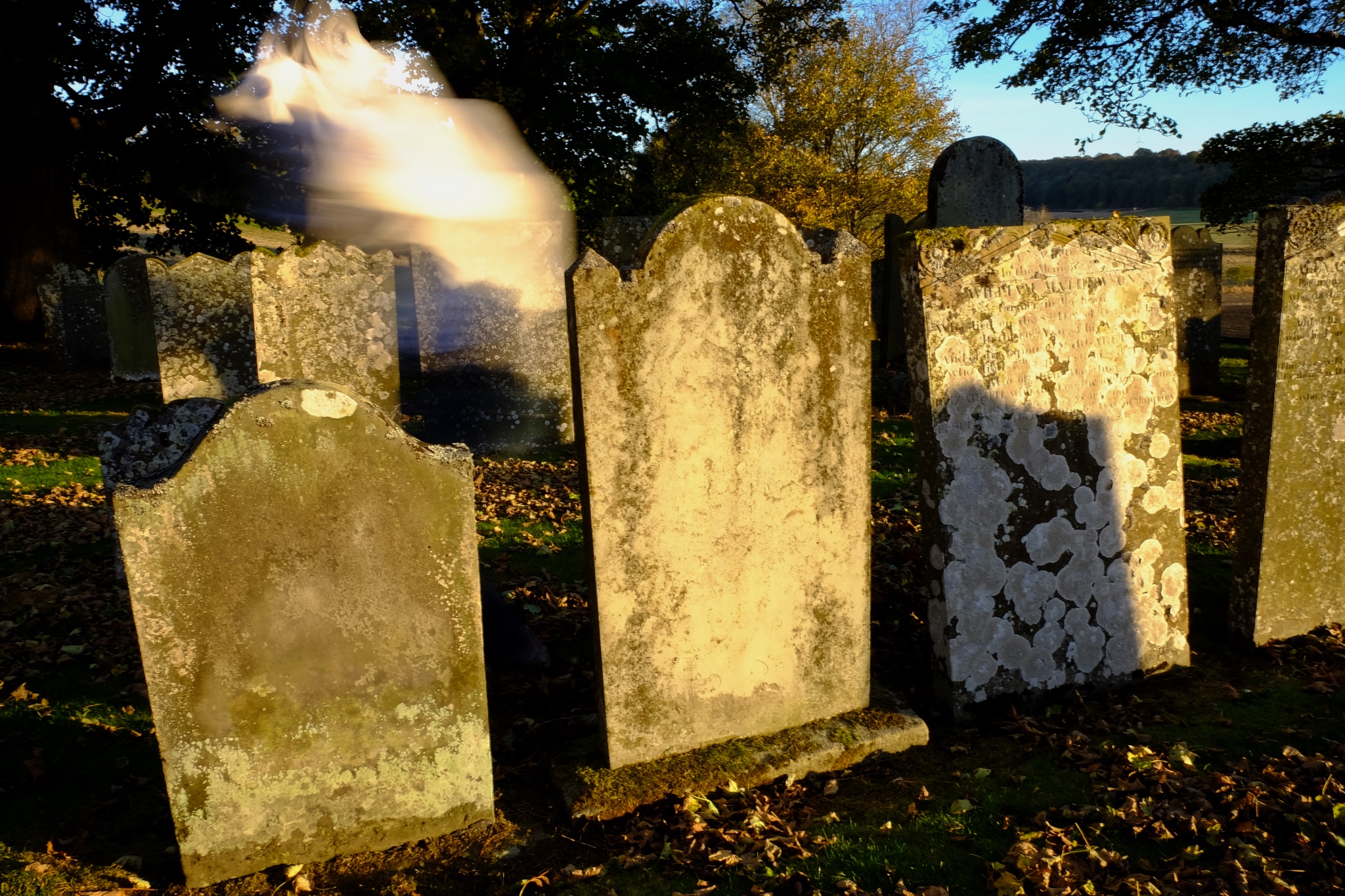 . . . and the occasional Class III freefloating spirit vapour.
. . . and the occasional Class III freefloating spirit vapour.
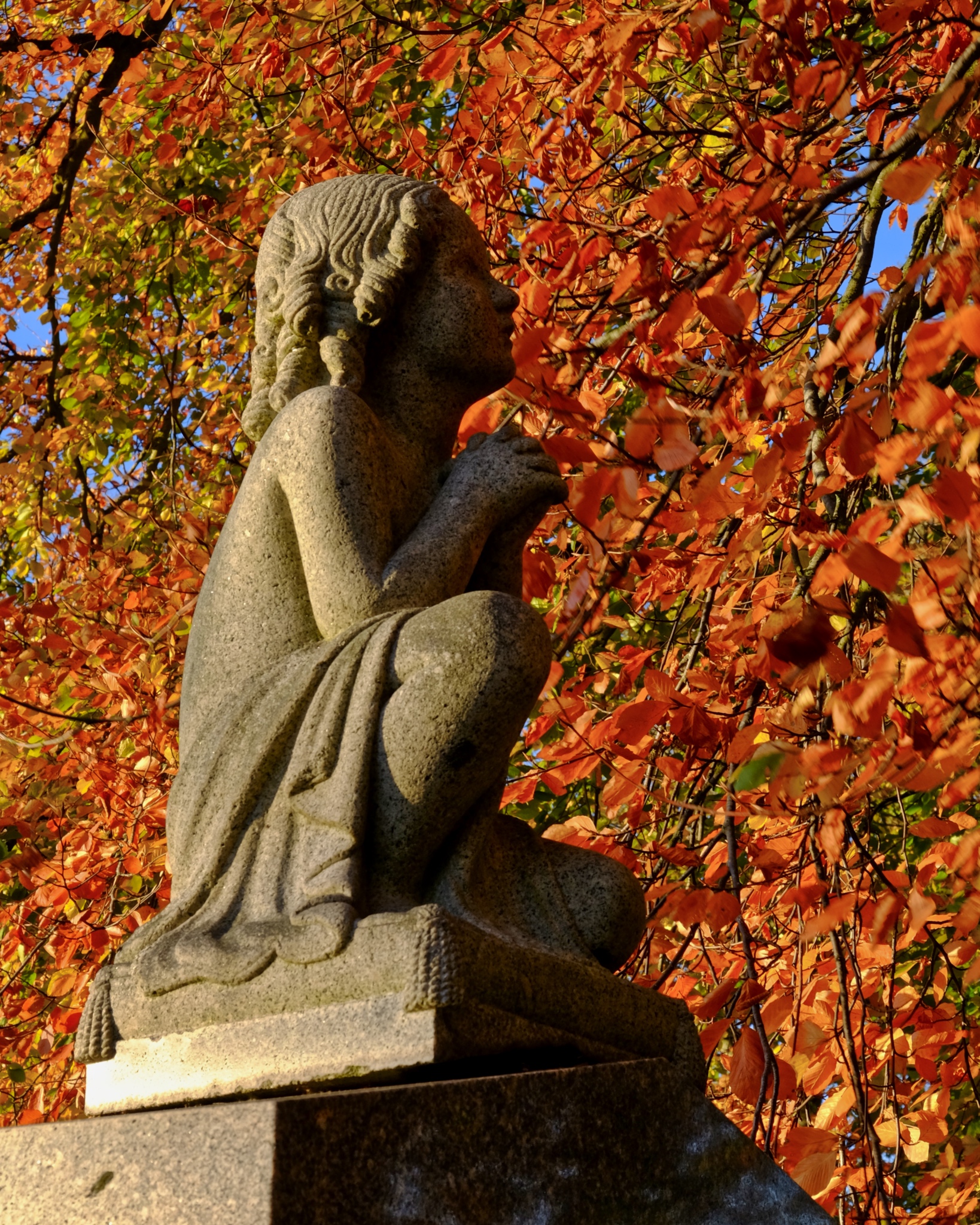 Autumn in a Scottish cemetery can be very beautiful.
Autumn in a Scottish cemetery can be very beautiful.
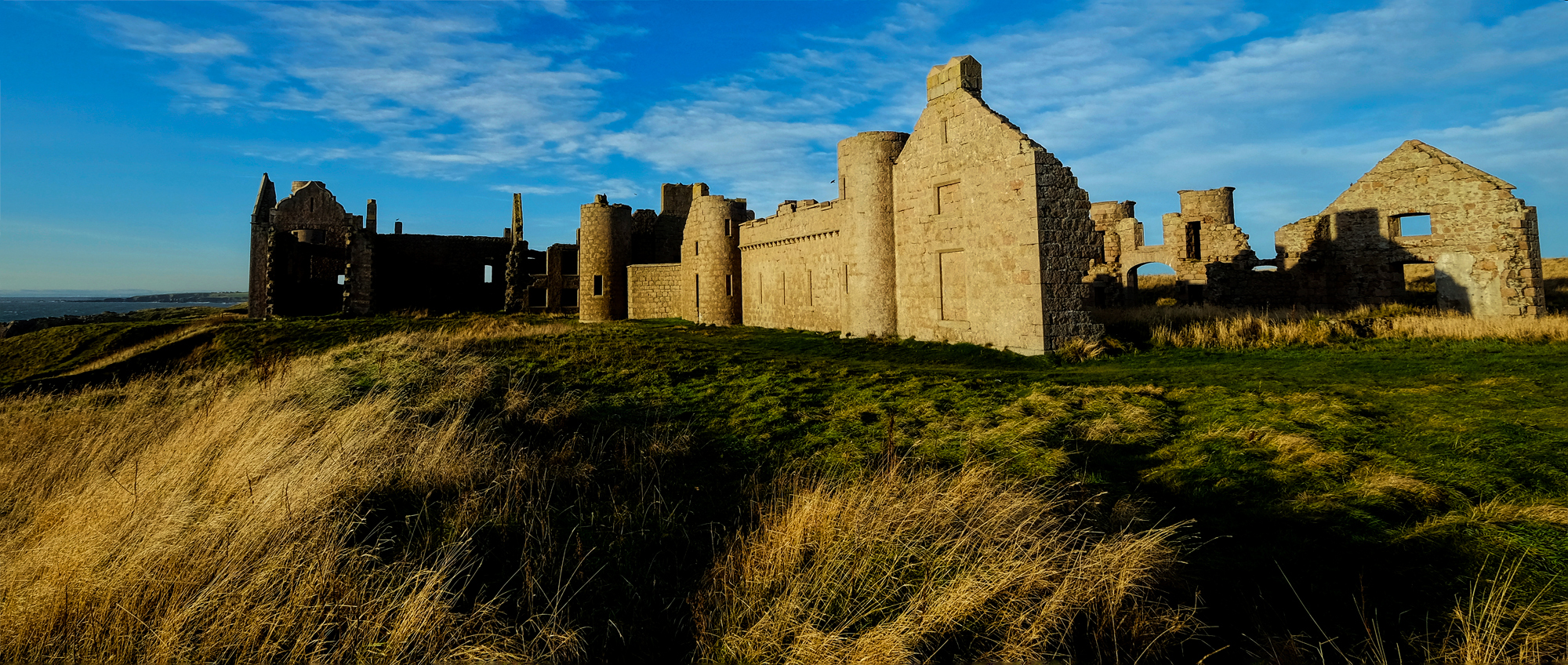 No trip to Aberdeenshire would be complete without a stop at New Slaines Castle . . . a photographer's paradise.
No trip to Aberdeenshire would be complete without a stop at New Slaines Castle . . . a photographer's paradise.
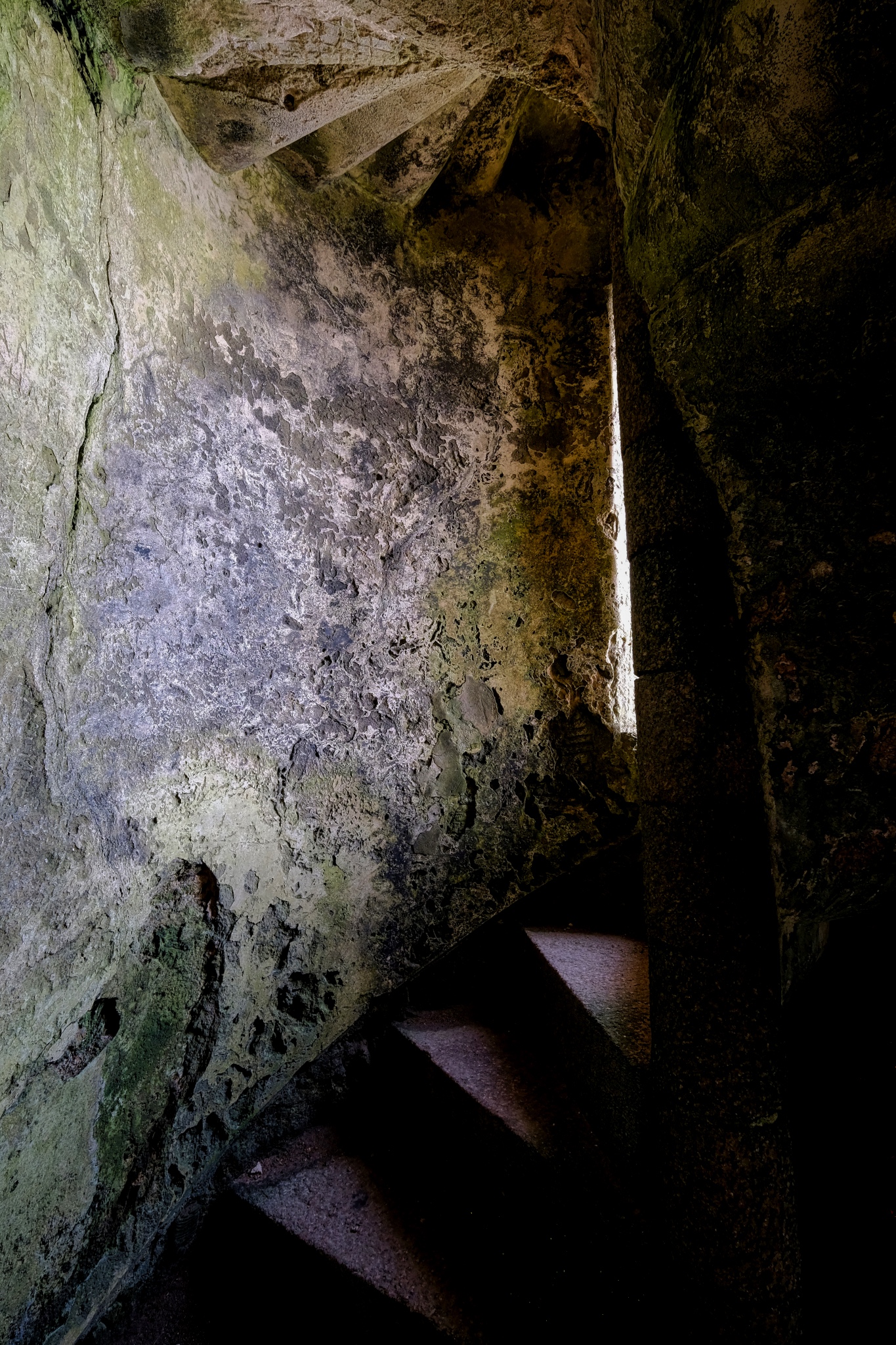 A stairwell in the ruins of New Slains Castle.
A stairwell in the ruins of New Slains Castle.
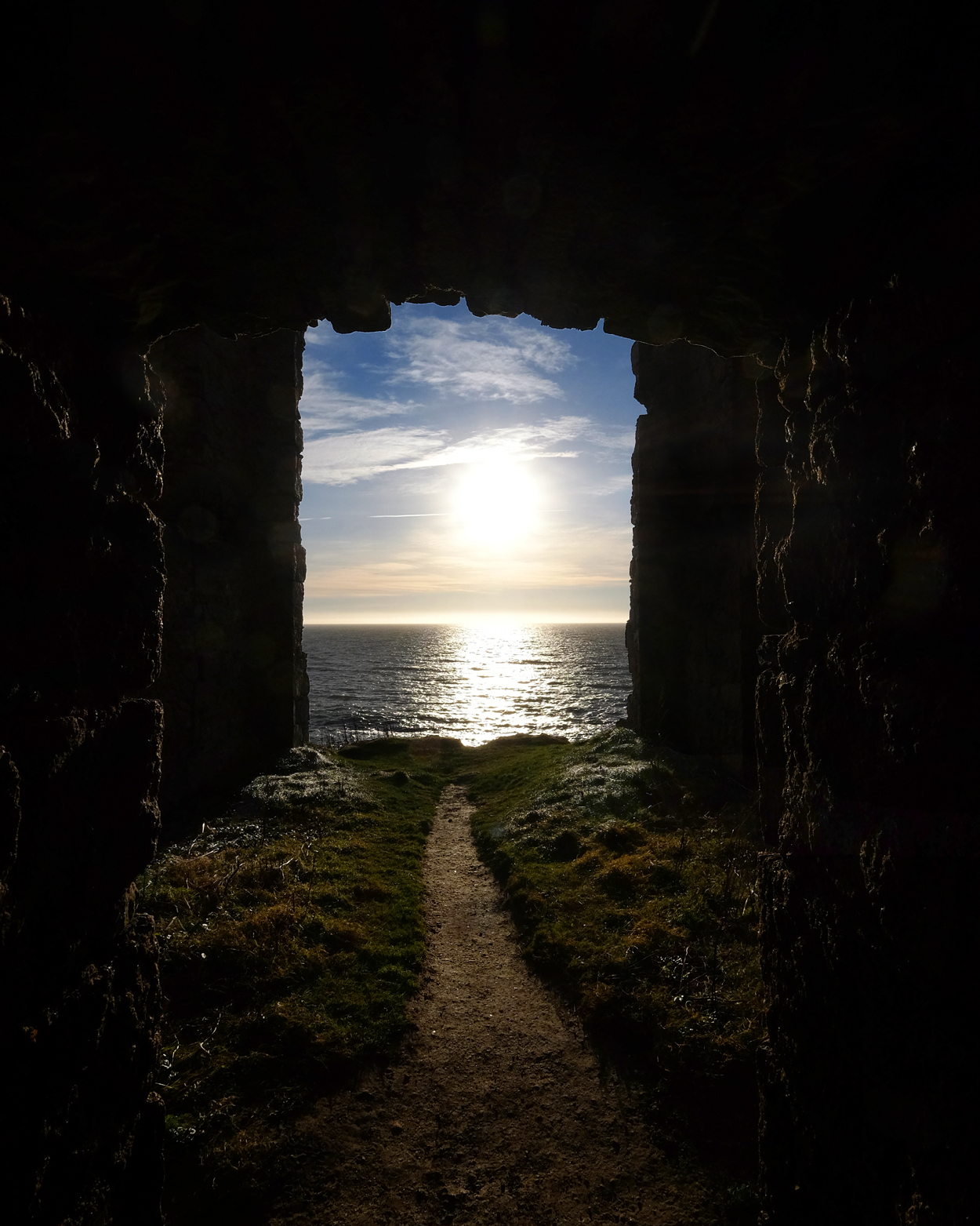 Some of the views from inside the castle ruins onto the North Sea were stunning.
Some of the views from inside the castle ruins onto the North Sea were stunning.
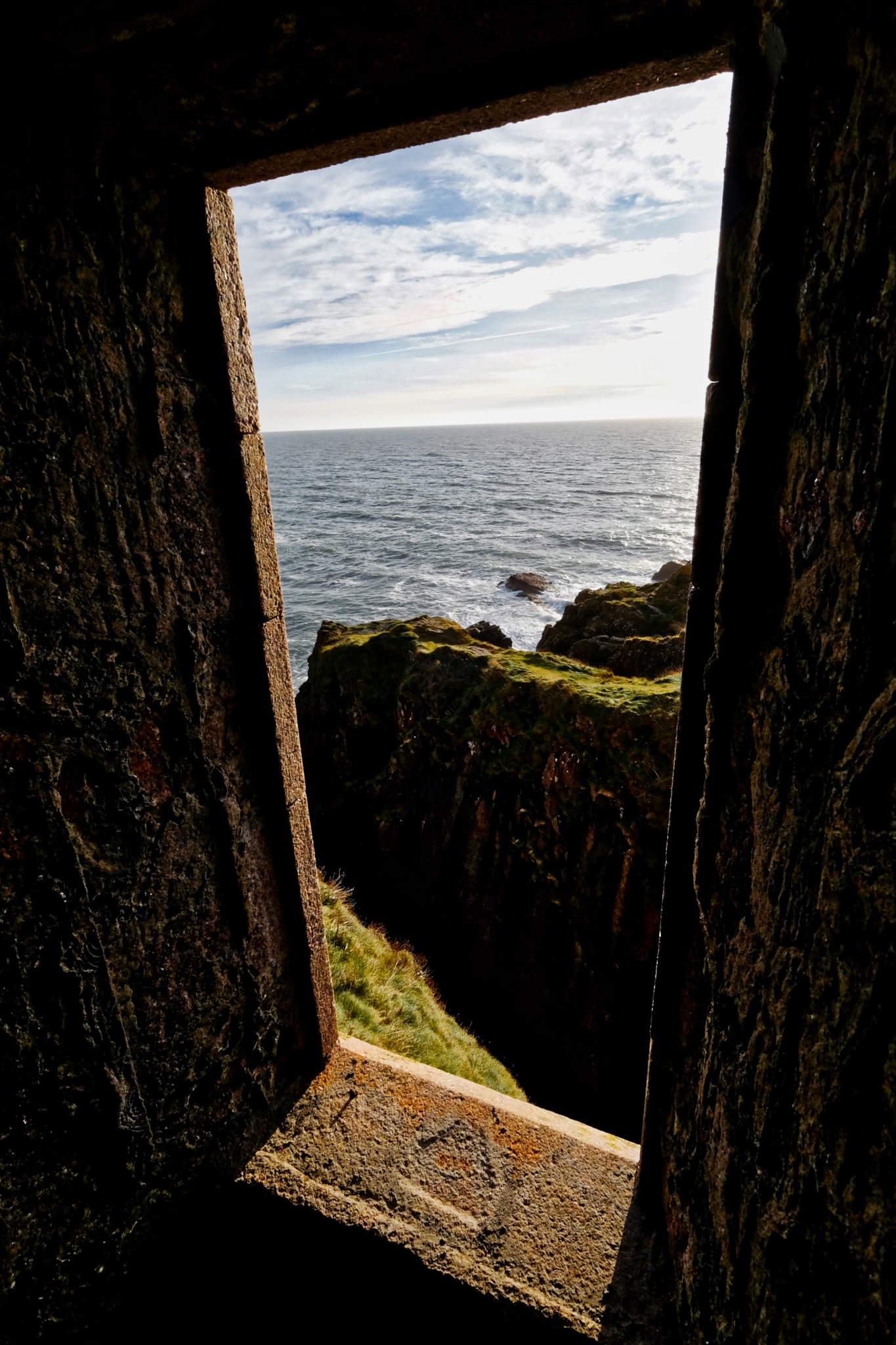 North Sea view from New Slaines Castle, Aberdeenshire, Scotland.
North Sea view from New Slaines Castle, Aberdeenshire, Scotland.
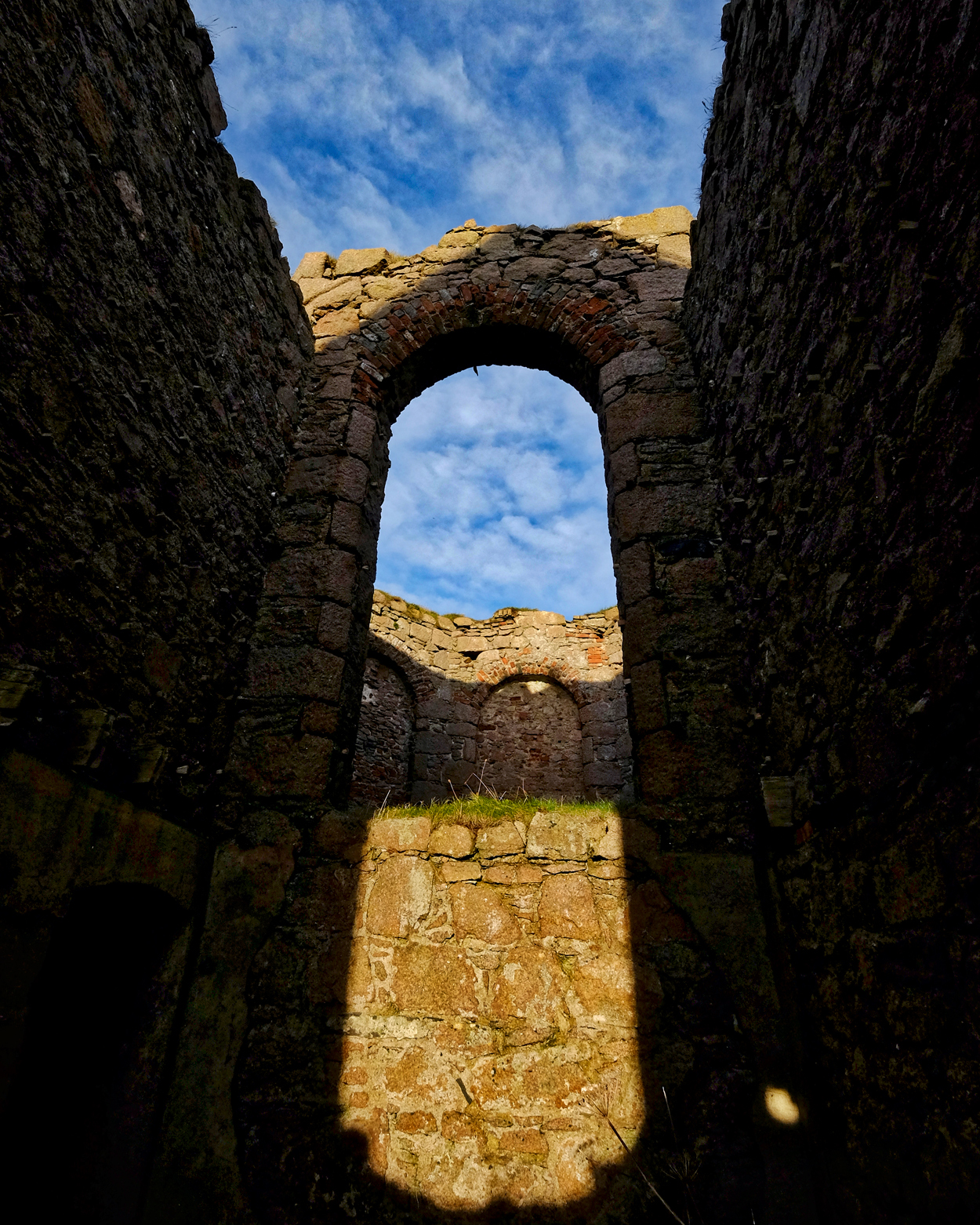 John and I spent several hours wandering around inside the ruins of New Slaines Castle enjoying the play of light and shadow on the deserted halls and rooms . . .
John and I spent several hours wandering around inside the ruins of New Slaines Castle enjoying the play of light and shadow on the deserted halls and rooms . . . 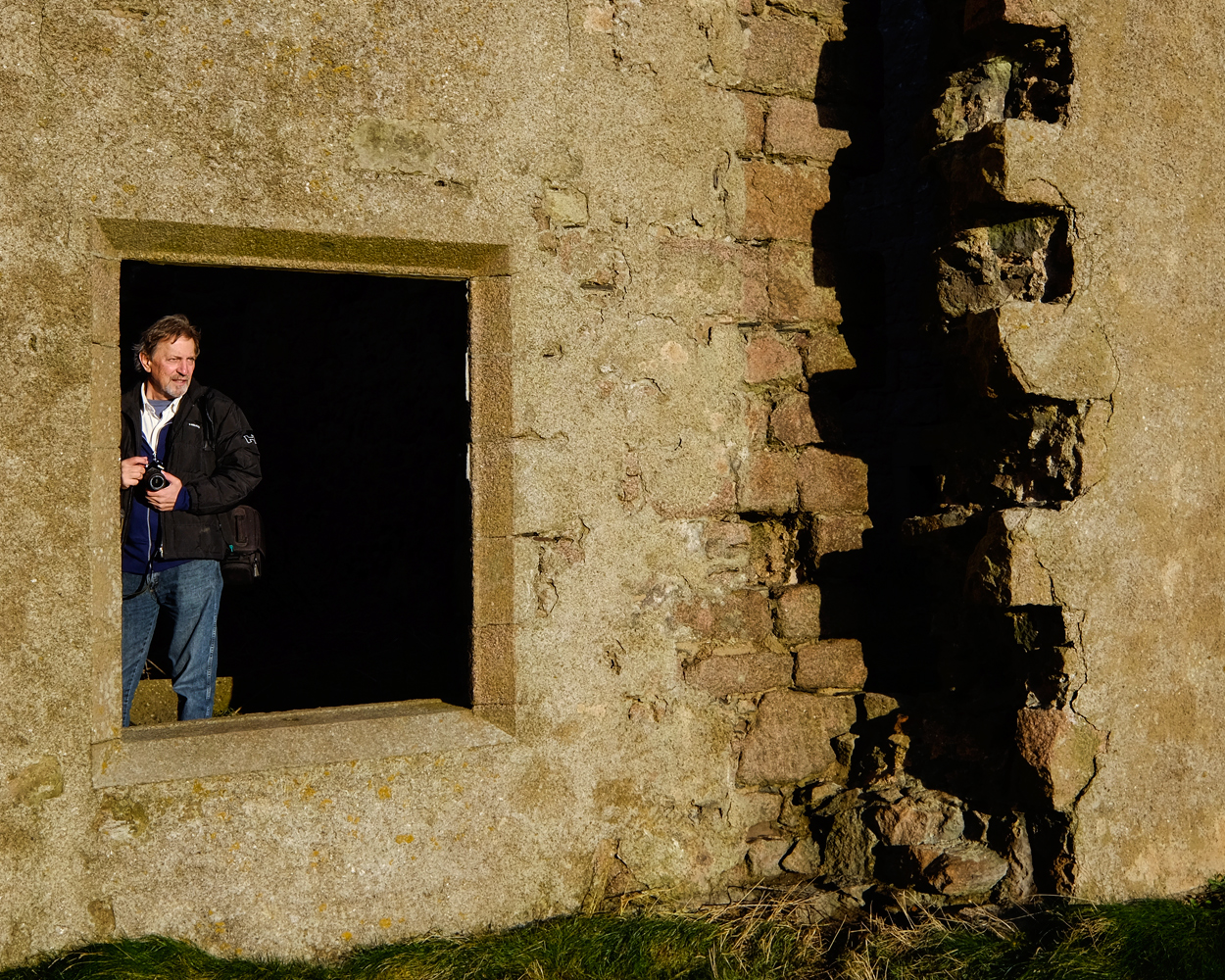 . . . as well as making portraits of each other among the ruins.
. . . as well as making portraits of each other among the ruins.
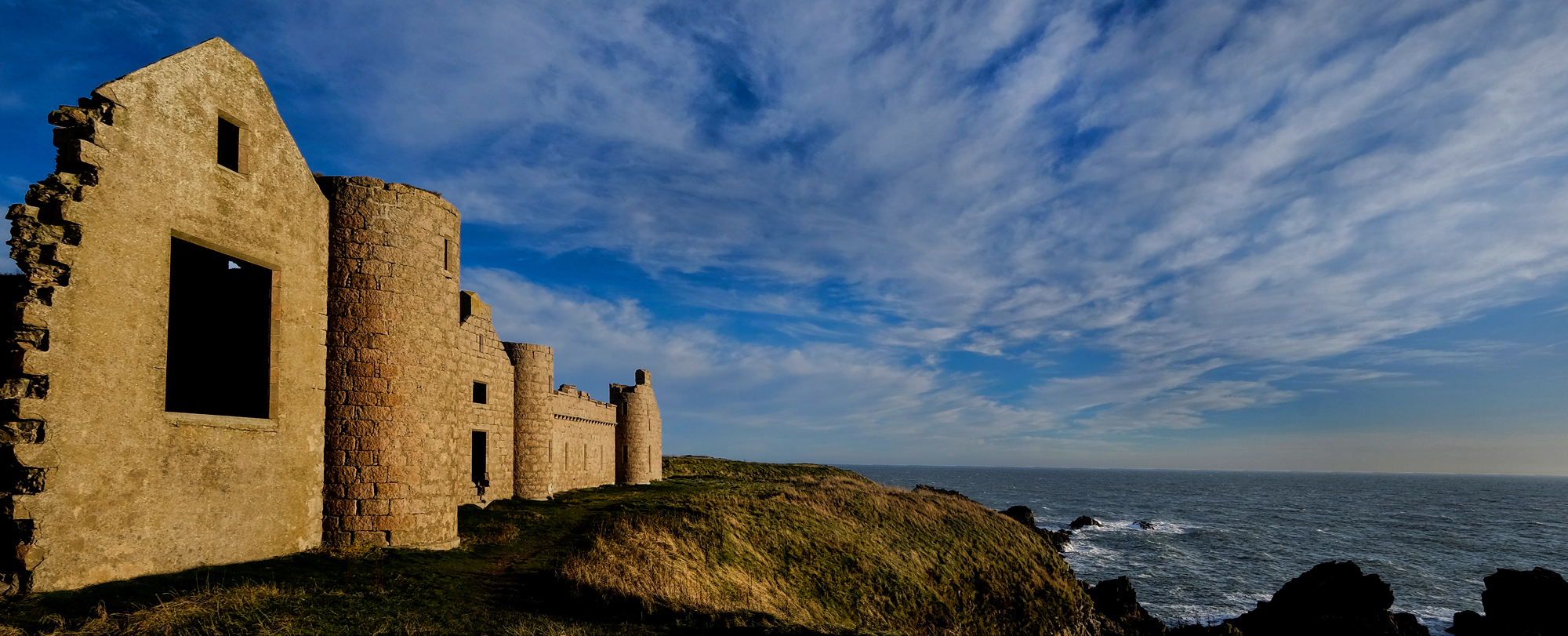 The castle on the North Sea cliffs, New Slaines.
The castle on the North Sea cliffs, New Slaines.
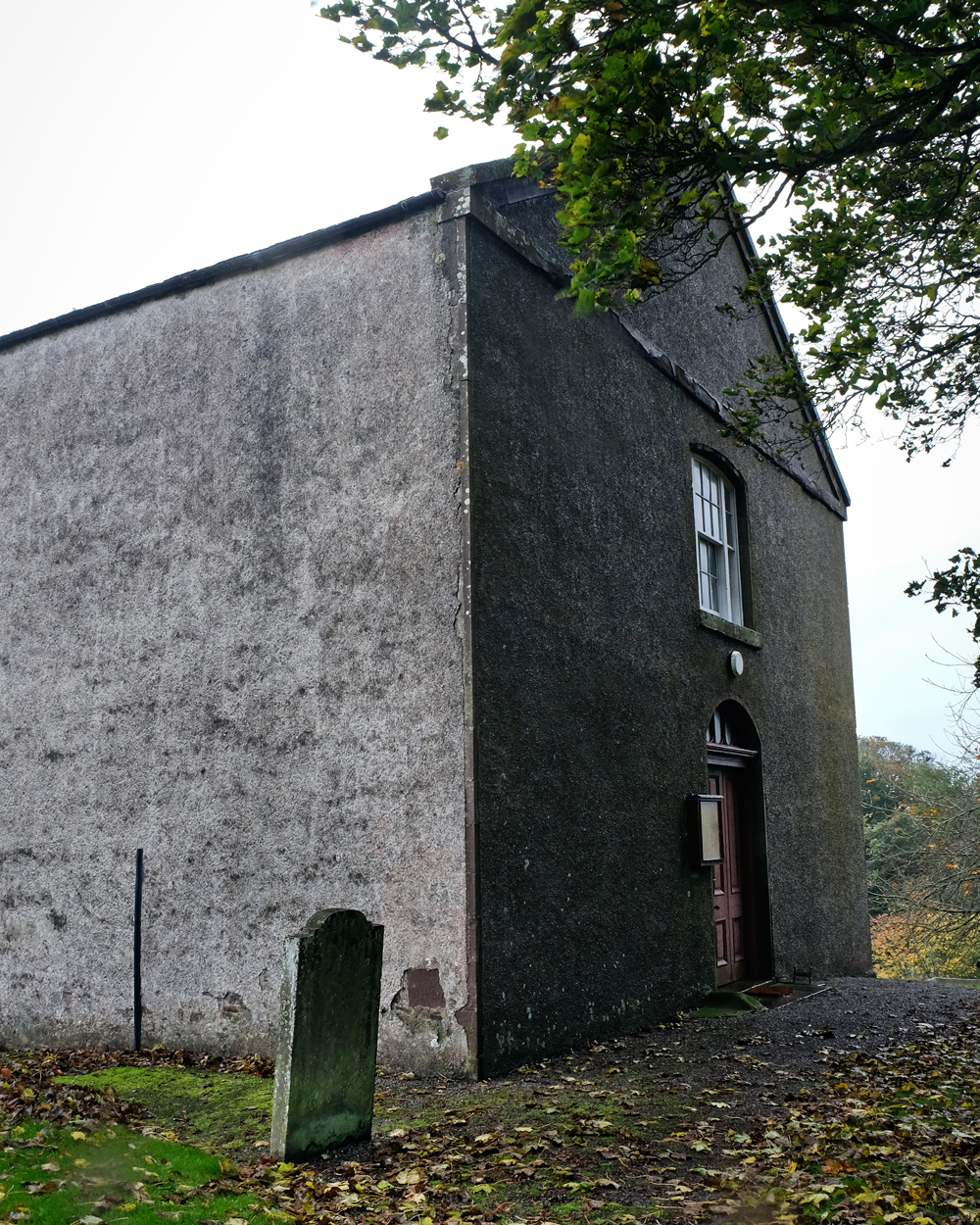 The Benholme Kirke, built on the site of a 9th century hermitage.
The Benholme Kirke, built on the site of a 9th century hermitage.
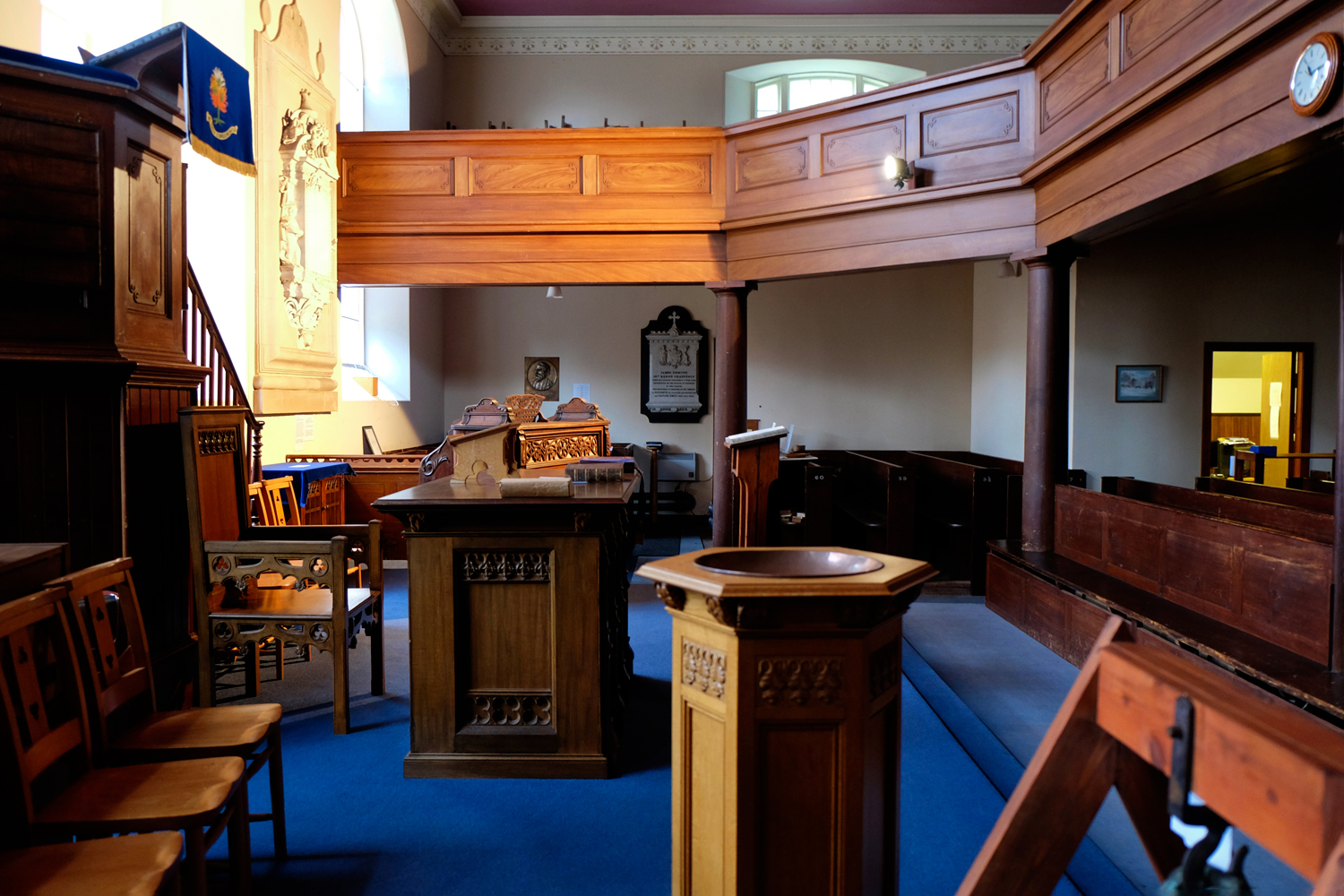 Although we interrupted the Benholm Kirke bookkeeper . . . but he obliged with a tour and short history of this interesting place.
Although we interrupted the Benholm Kirke bookkeeper . . . but he obliged with a tour and short history of this interesting place.
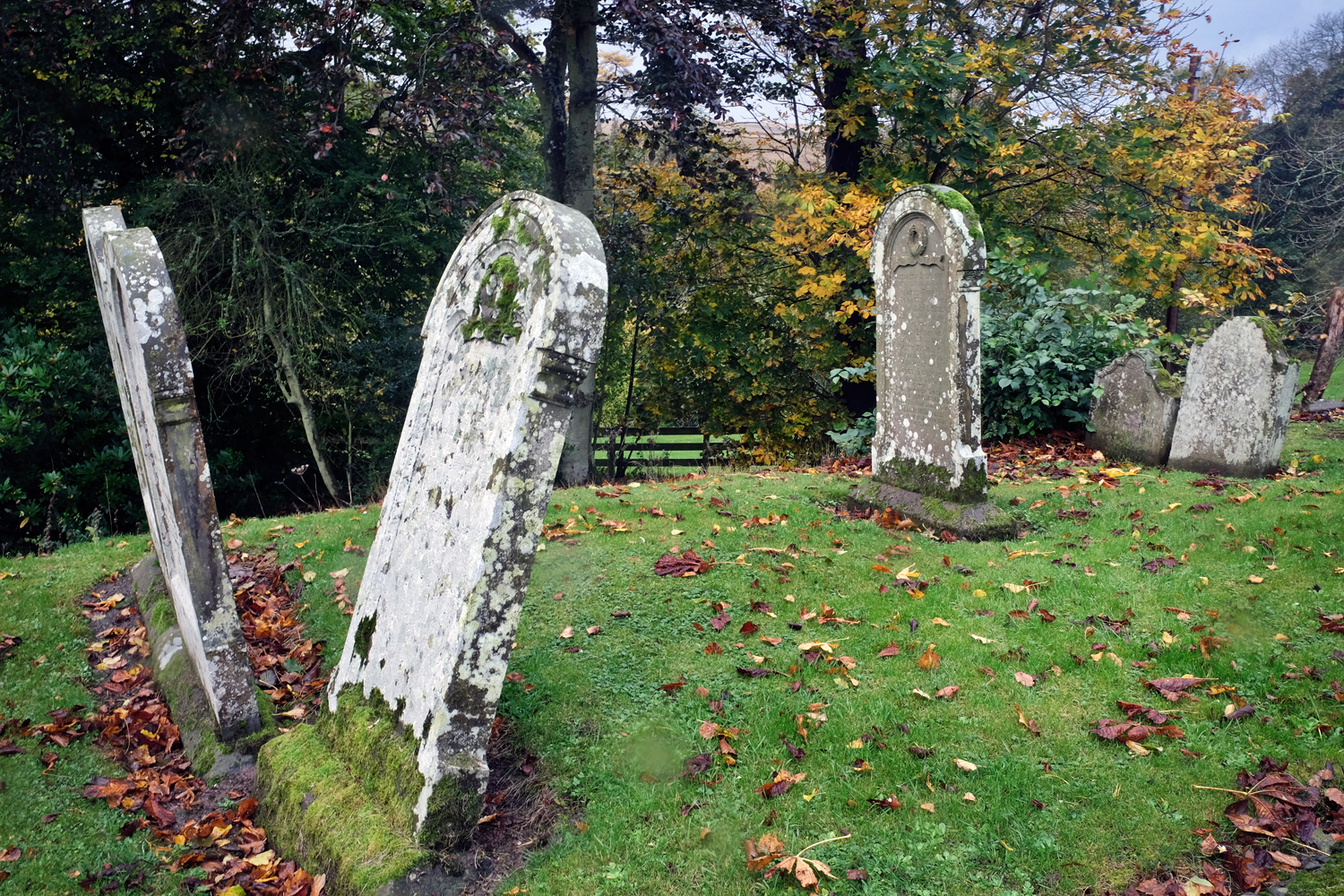 Benholm Kirke had a fine old 'kirkegaard' as well.
Benholm Kirke had a fine old 'kirkegaard' as well.
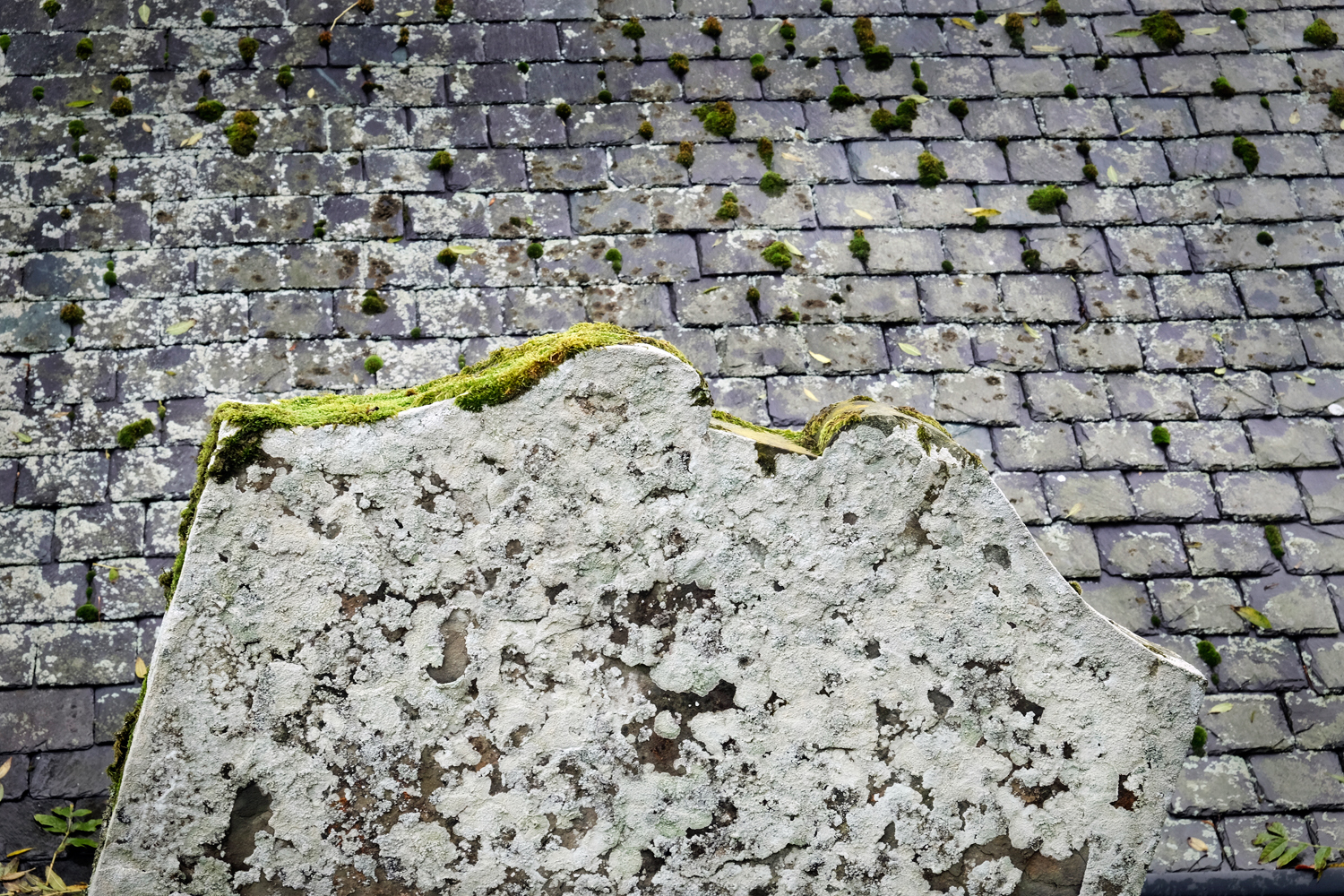 Moss and lichen-covered grave stone and ancient cottage slate roof . . .
Moss and lichen-covered grave stone and ancient cottage slate roof . . .
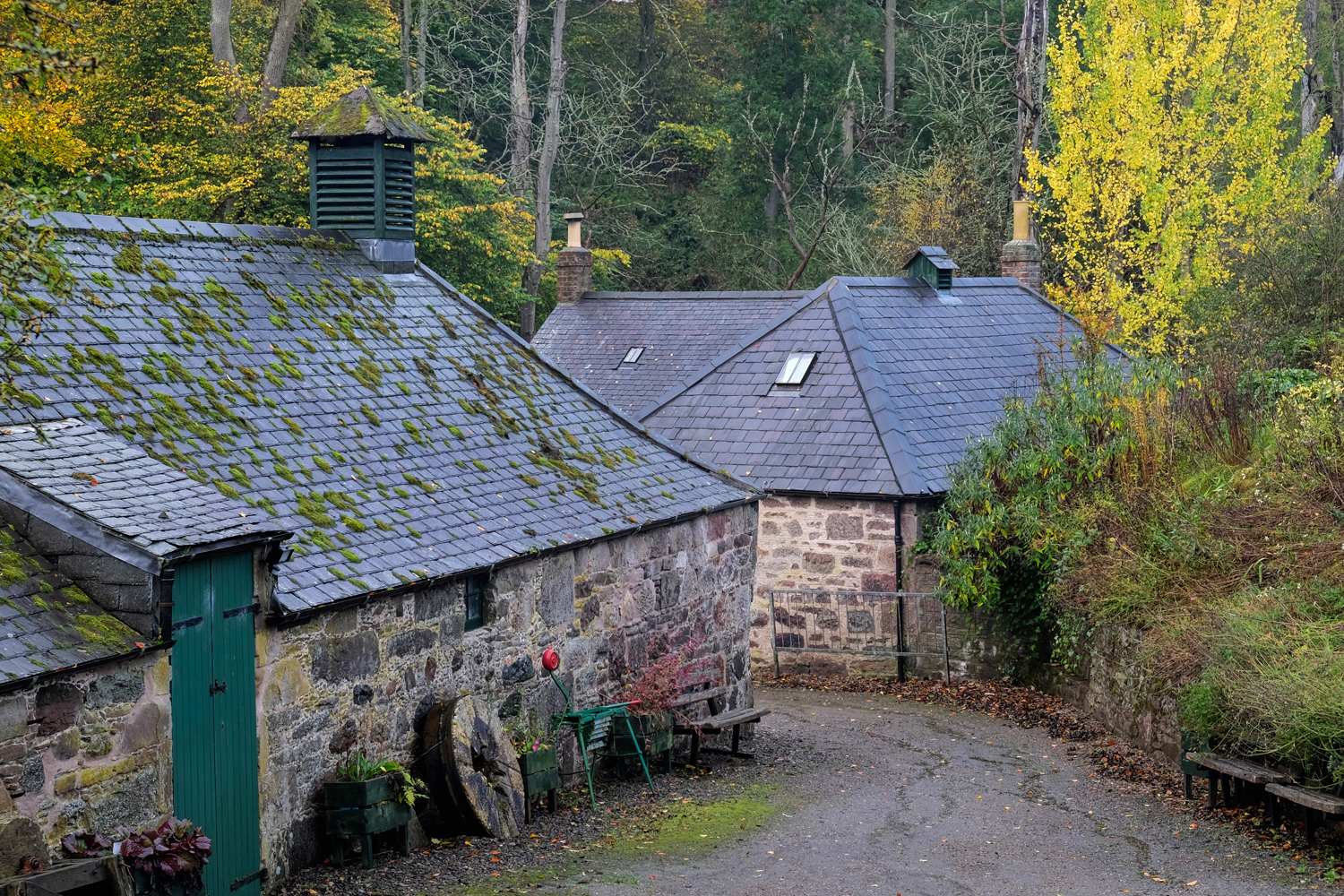 We sometimes consulted the GPS as to any 'points of interest' . . . and discovered this old mill.
We sometimes consulted the GPS as to any 'points of interest' . . . and discovered this old mill.
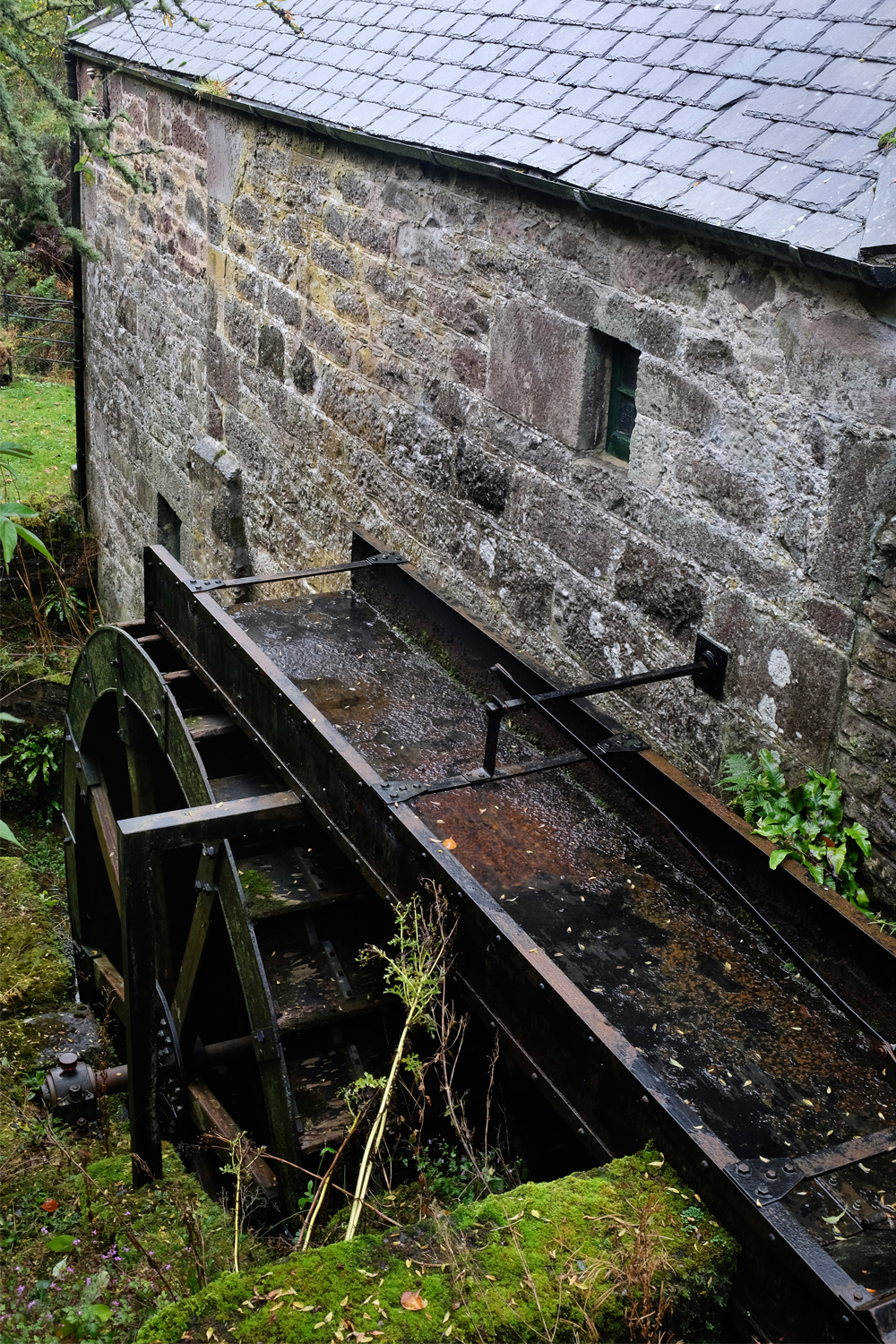 The sluice and water wheel were still there and still intact.
The sluice and water wheel were still there and still intact.
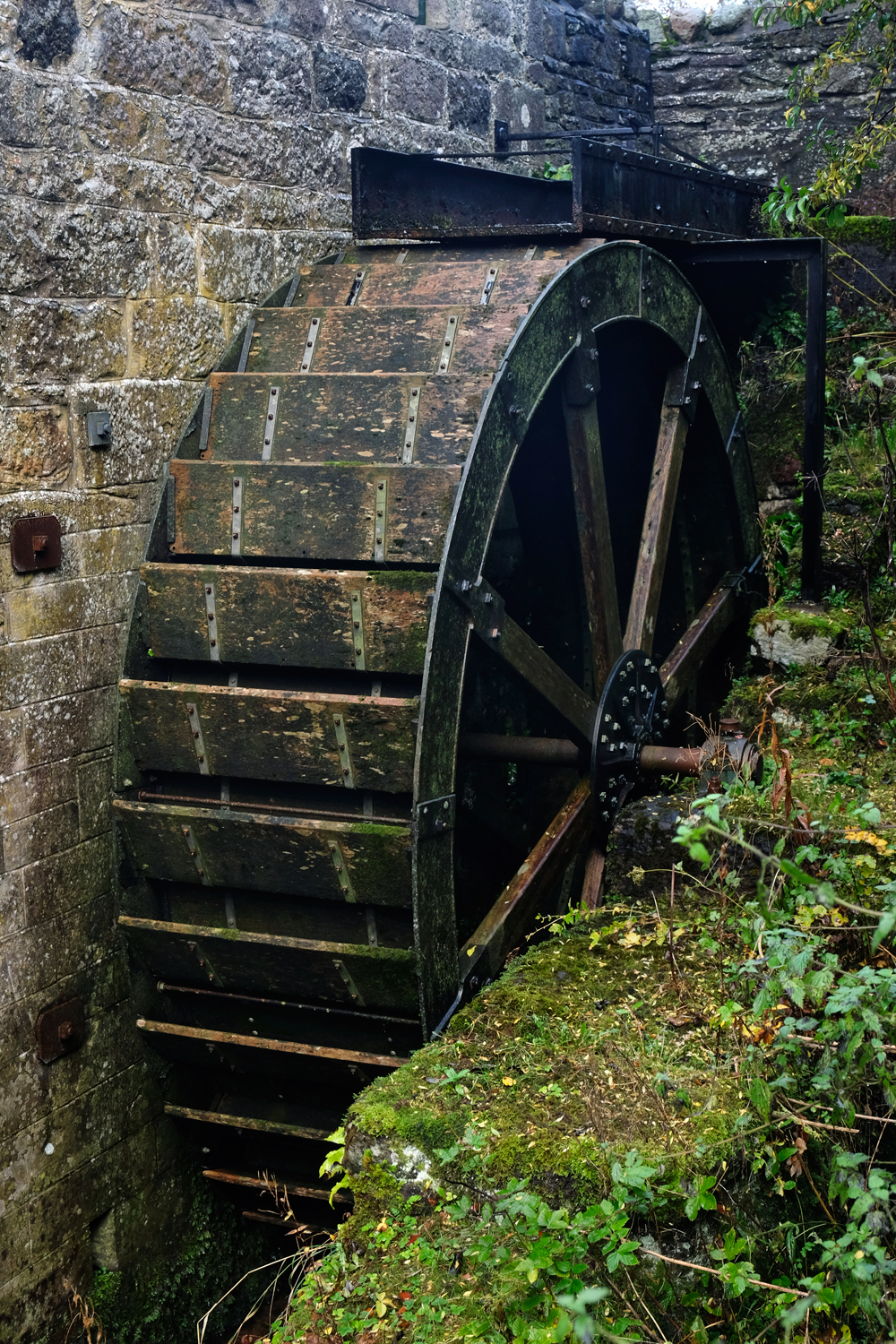 Down by the Old Mill Stream . . . A photographer's dream!
Down by the Old Mill Stream . . . A photographer's dream!
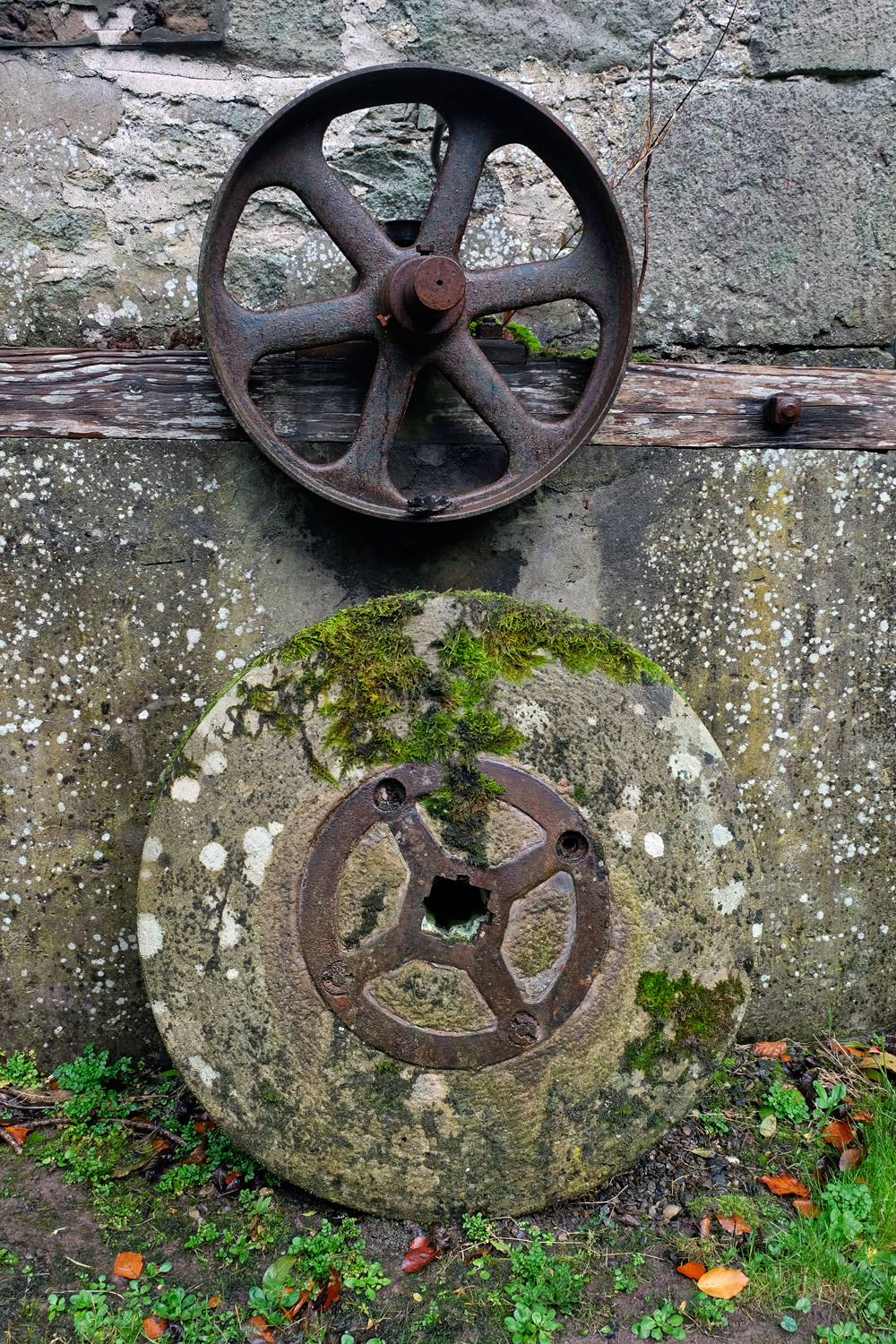 The opportunities for still life studies of mill paraphernalia was incredible. I enter only a few of the many beautiful photographs I took here.
The opportunities for still life studies of mill paraphernalia was incredible. I enter only a few of the many beautiful photographs I took here.
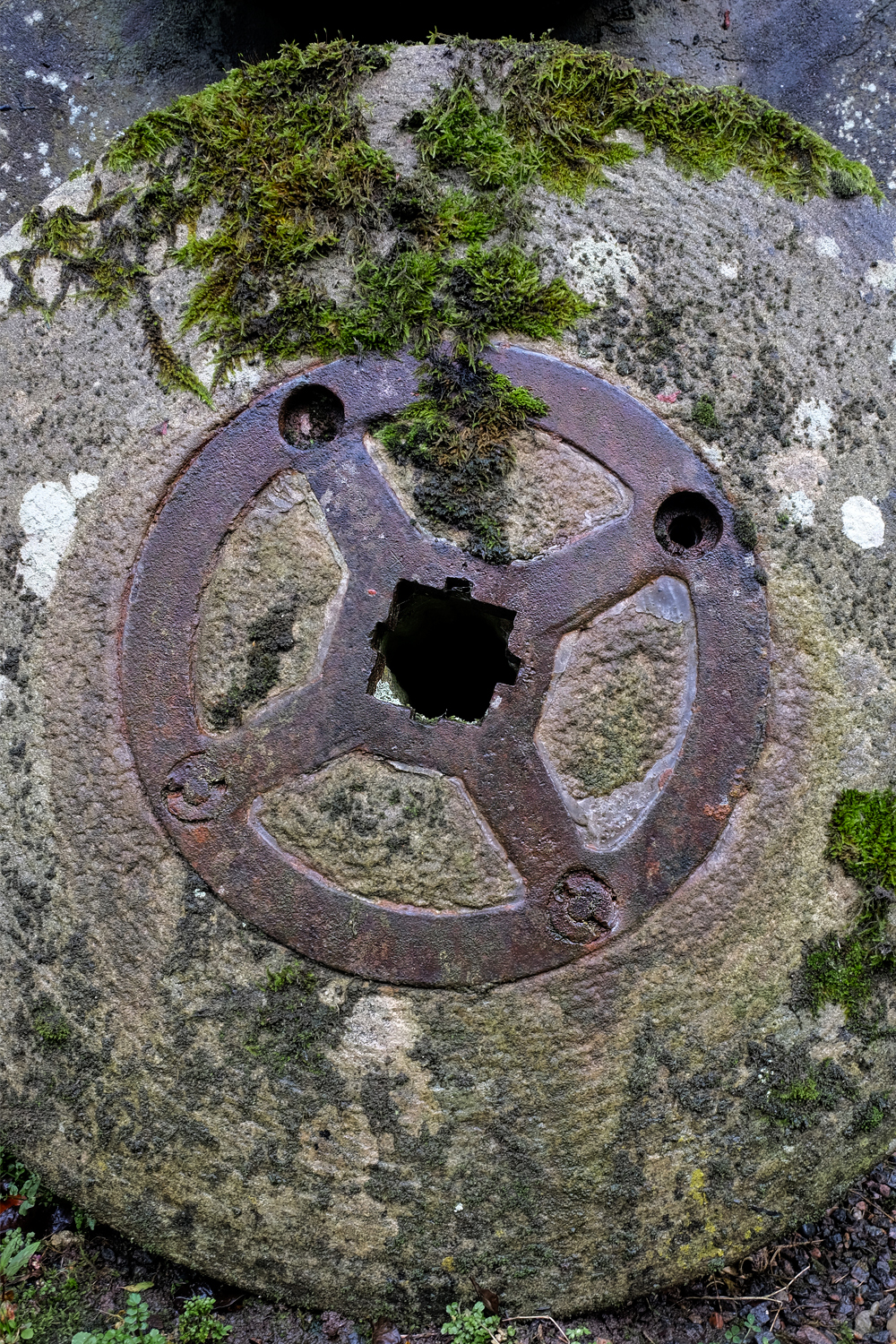 An old mill stone.
An old mill stone.
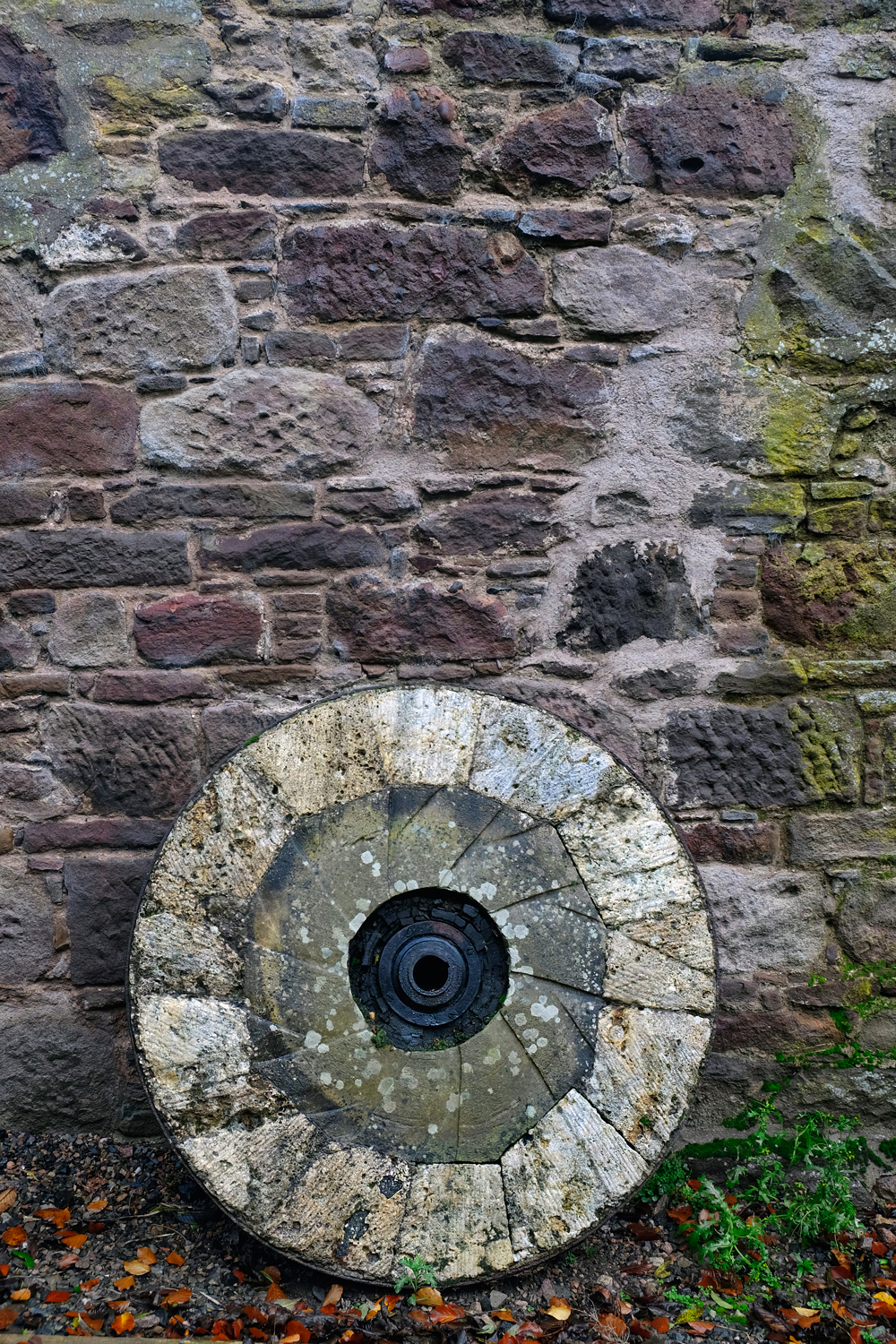 An old mill stone made of several stone segments.
An old mill stone made of several stone segments.
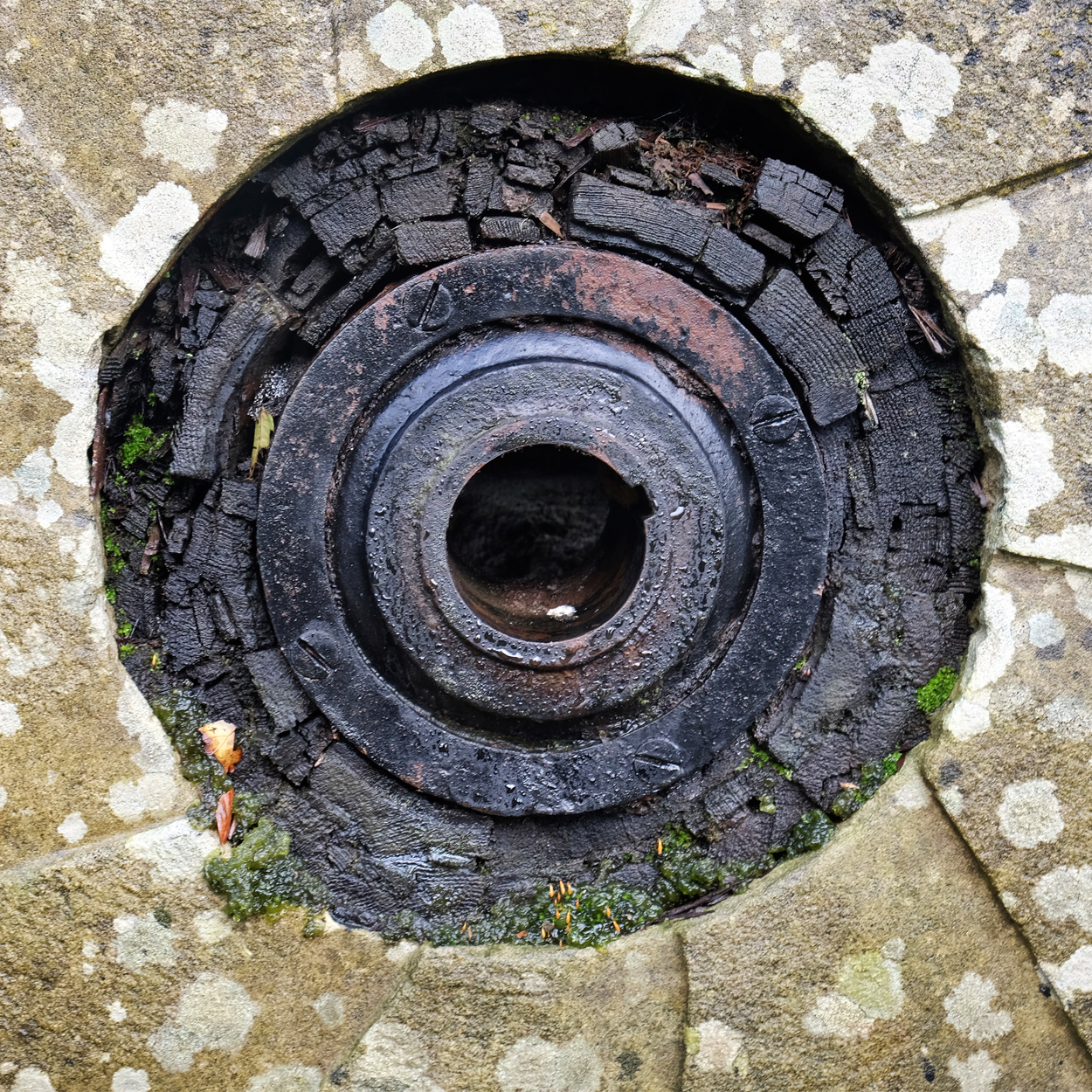 The wood-shimed center bearing of an old mill stone.
The wood-shimed center bearing of an old mill stone.
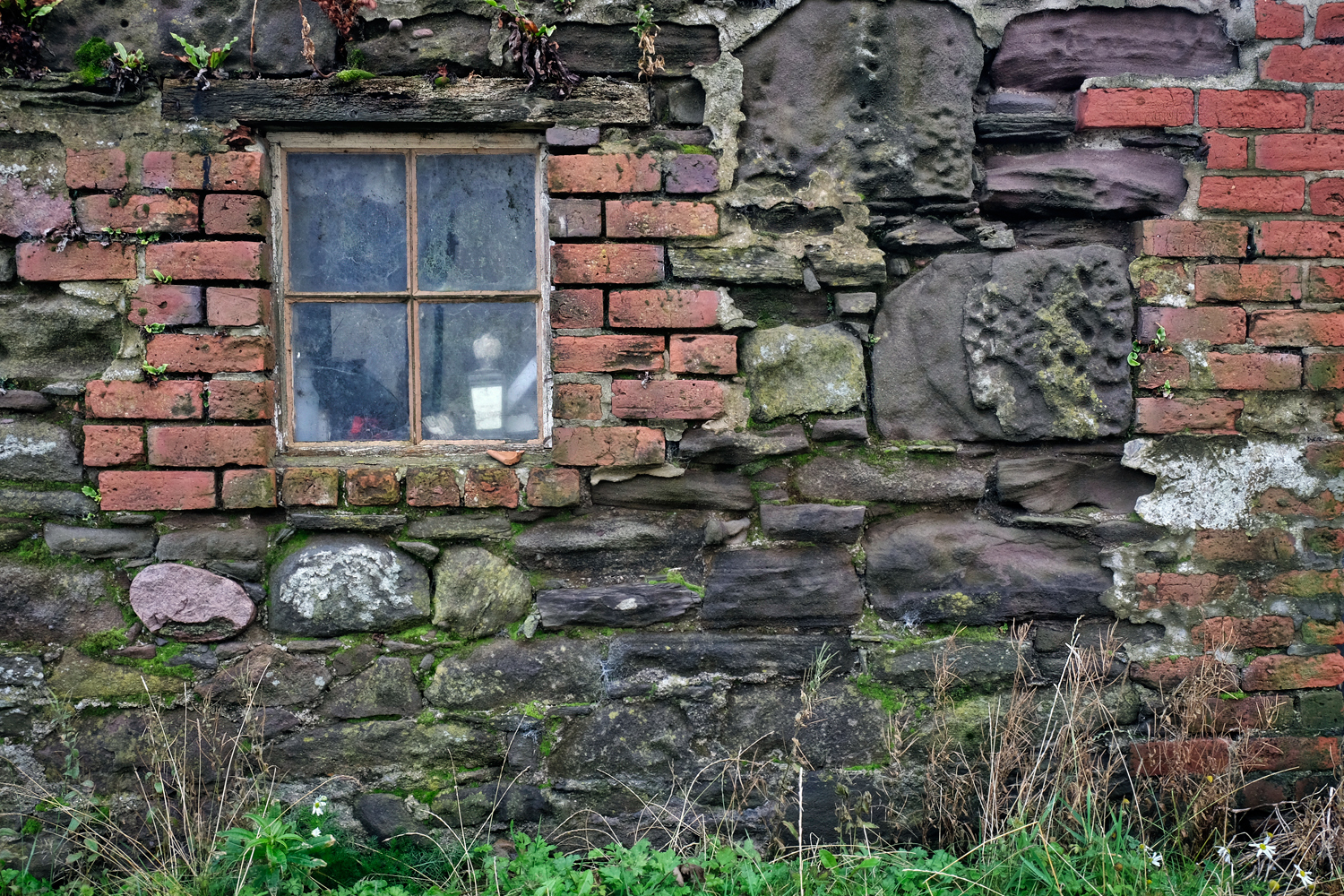 One morning we drove south on the old coastal road to the fishing village of Johnshaven.
One morning we drove south on the old coastal road to the fishing village of Johnshaven.
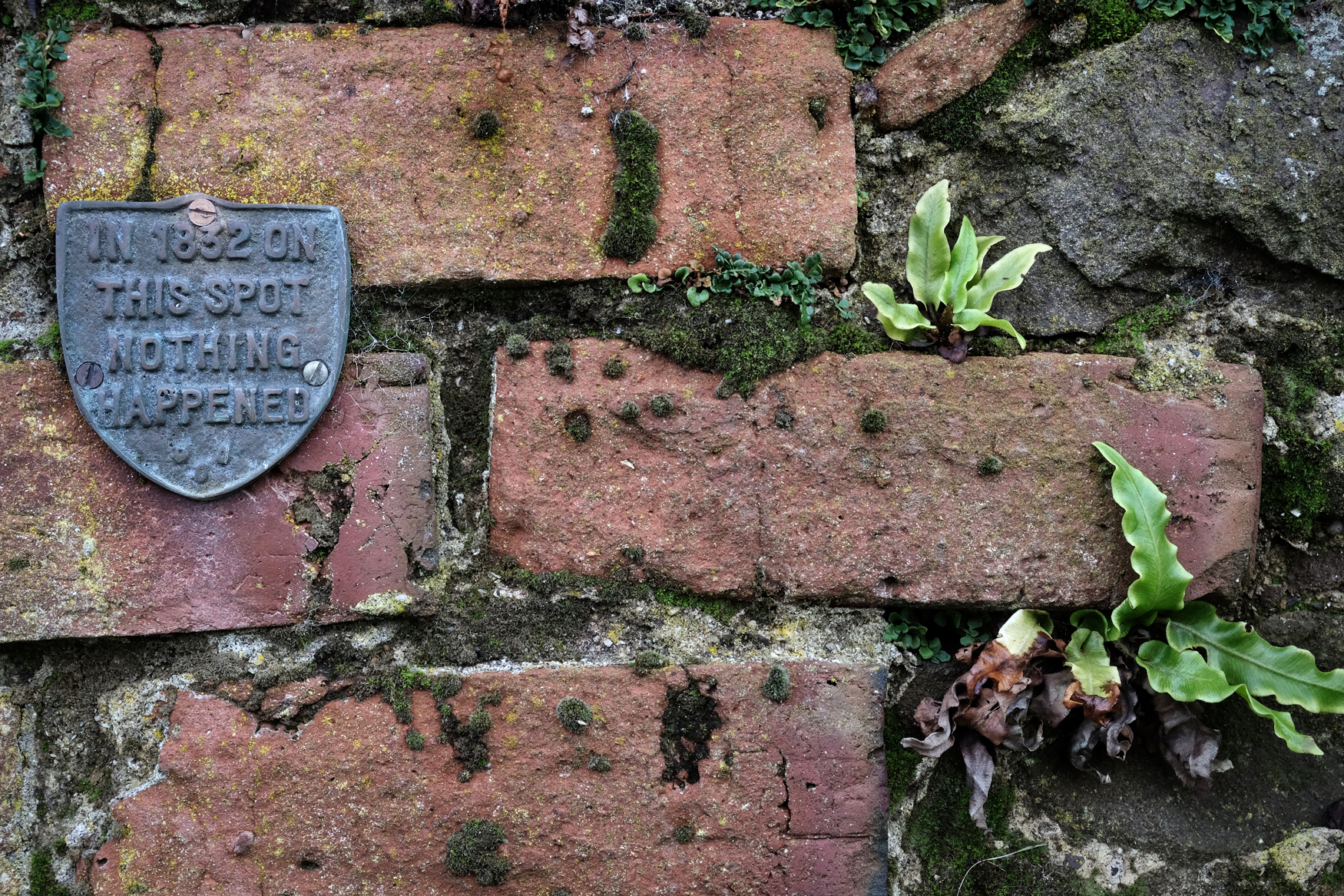 The Johnshaven townsfolk had quite the sense of humor!
The Johnshaven townsfolk had quite the sense of humor!
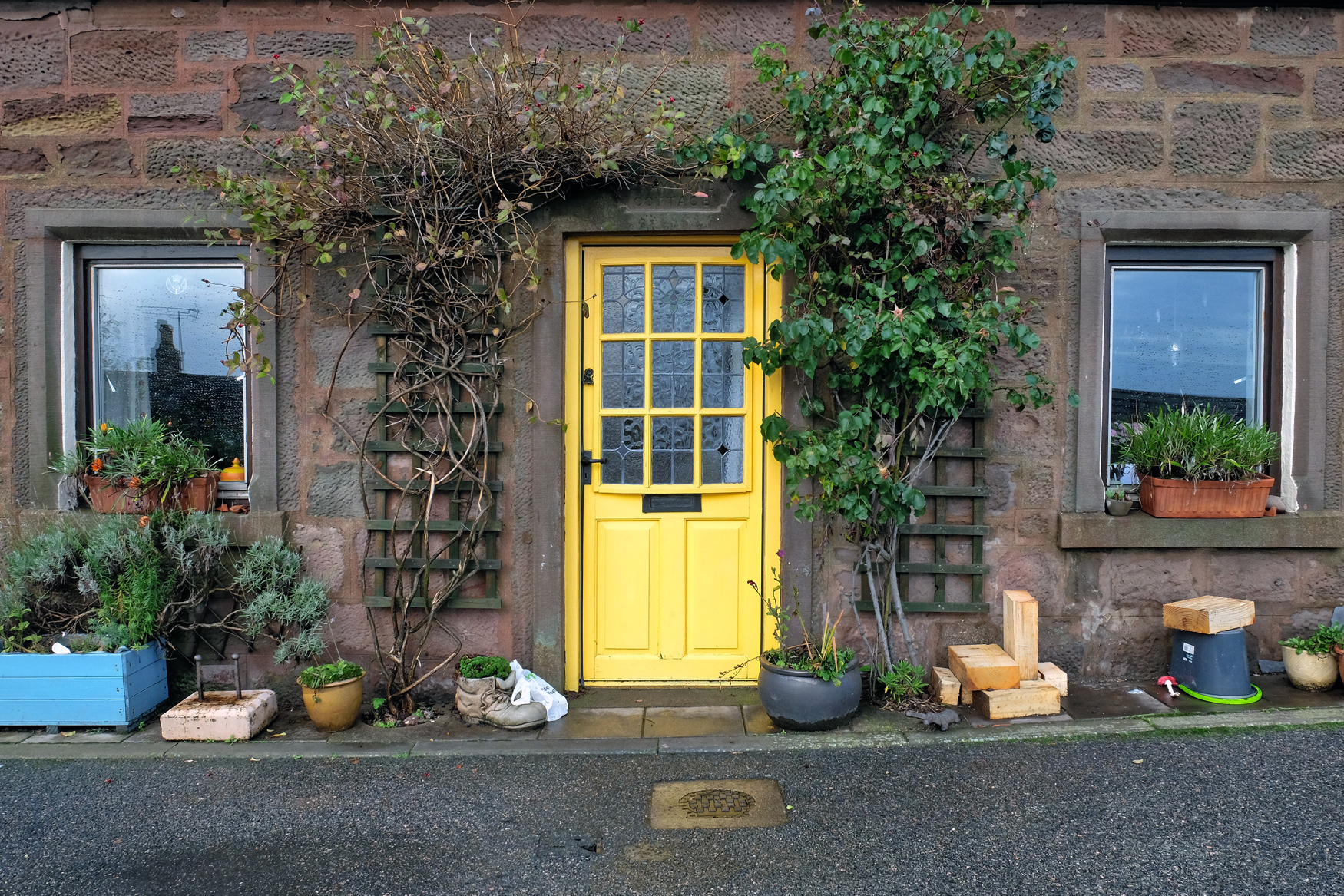 Johnshaven was a grey and austere village (like many Scottish villages) but with a splash of color here and there.
Johnshaven was a grey and austere village (like many Scottish villages) but with a splash of color here and there.
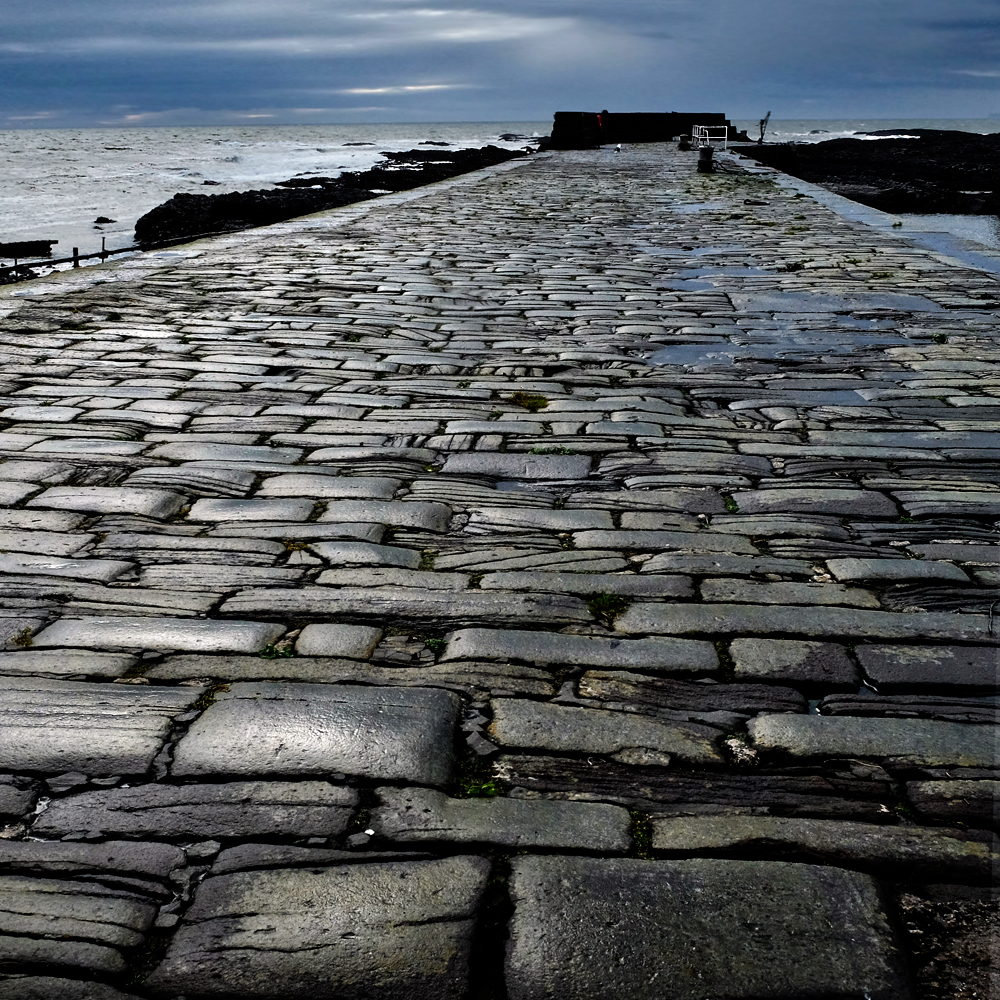 The fine old stone harbour jetty of Johnshaven.
The fine old stone harbour jetty of Johnshaven.
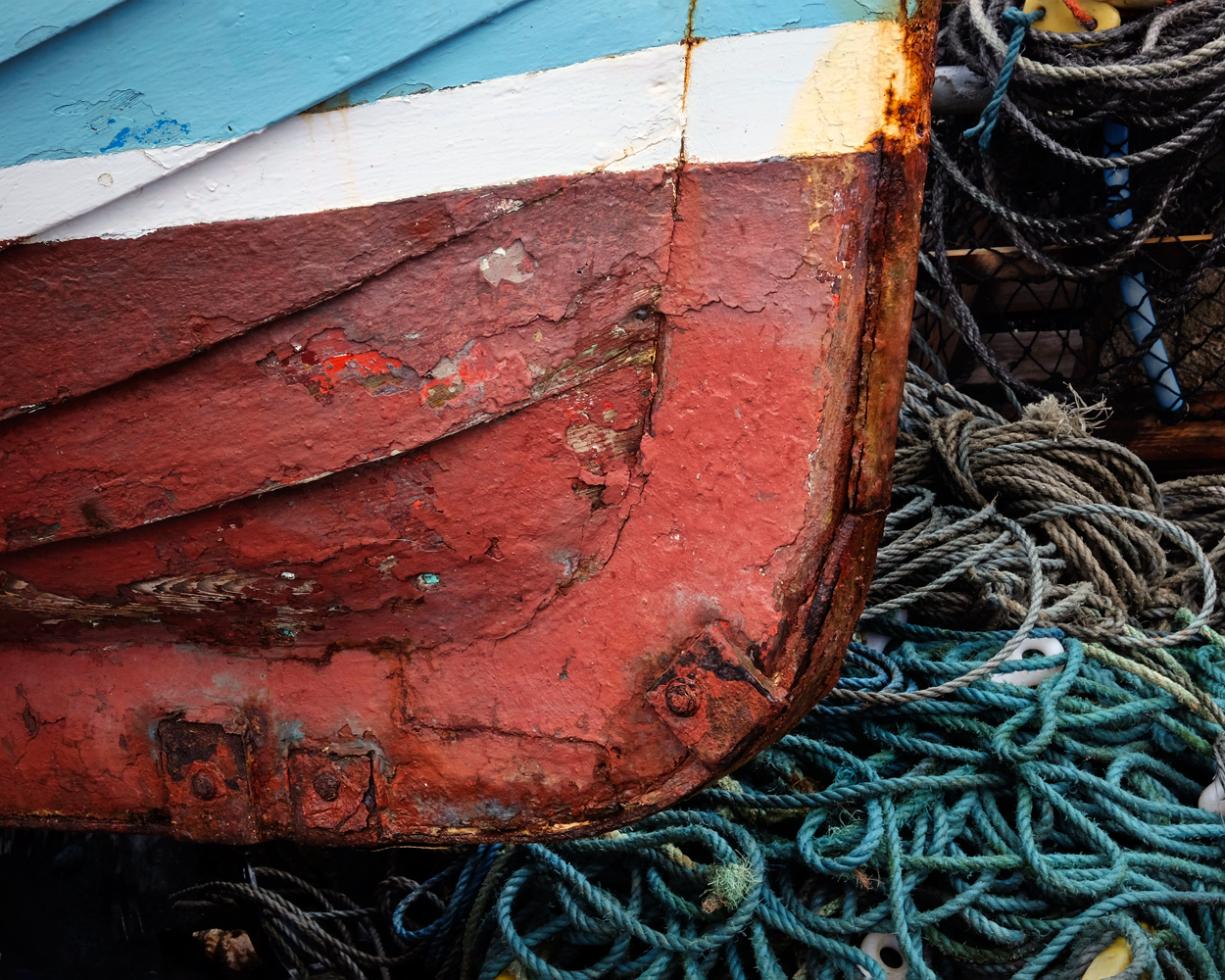 Johnshaven is a fishing village with many great nautical-themed photos to be had.
Johnshaven is a fishing village with many great nautical-themed photos to be had.
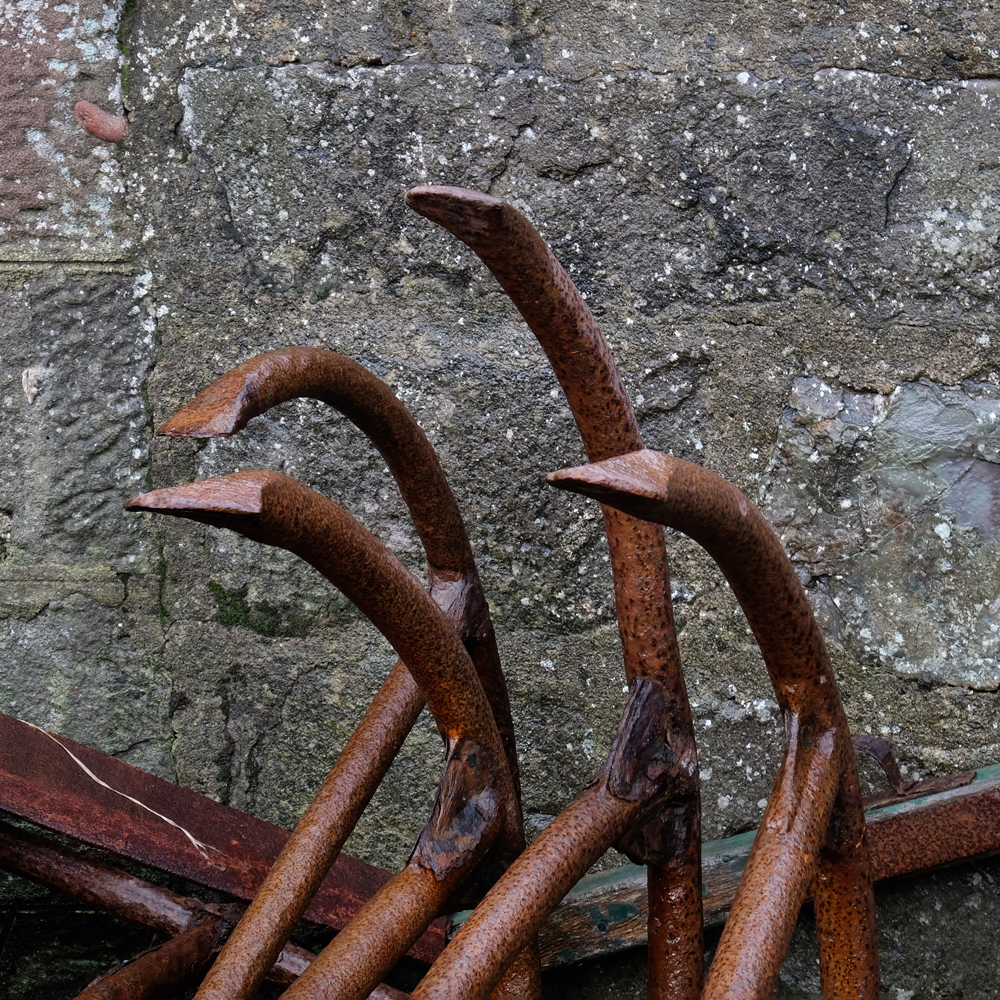 Old anchors in the boatyards.
Old anchors in the boatyards.
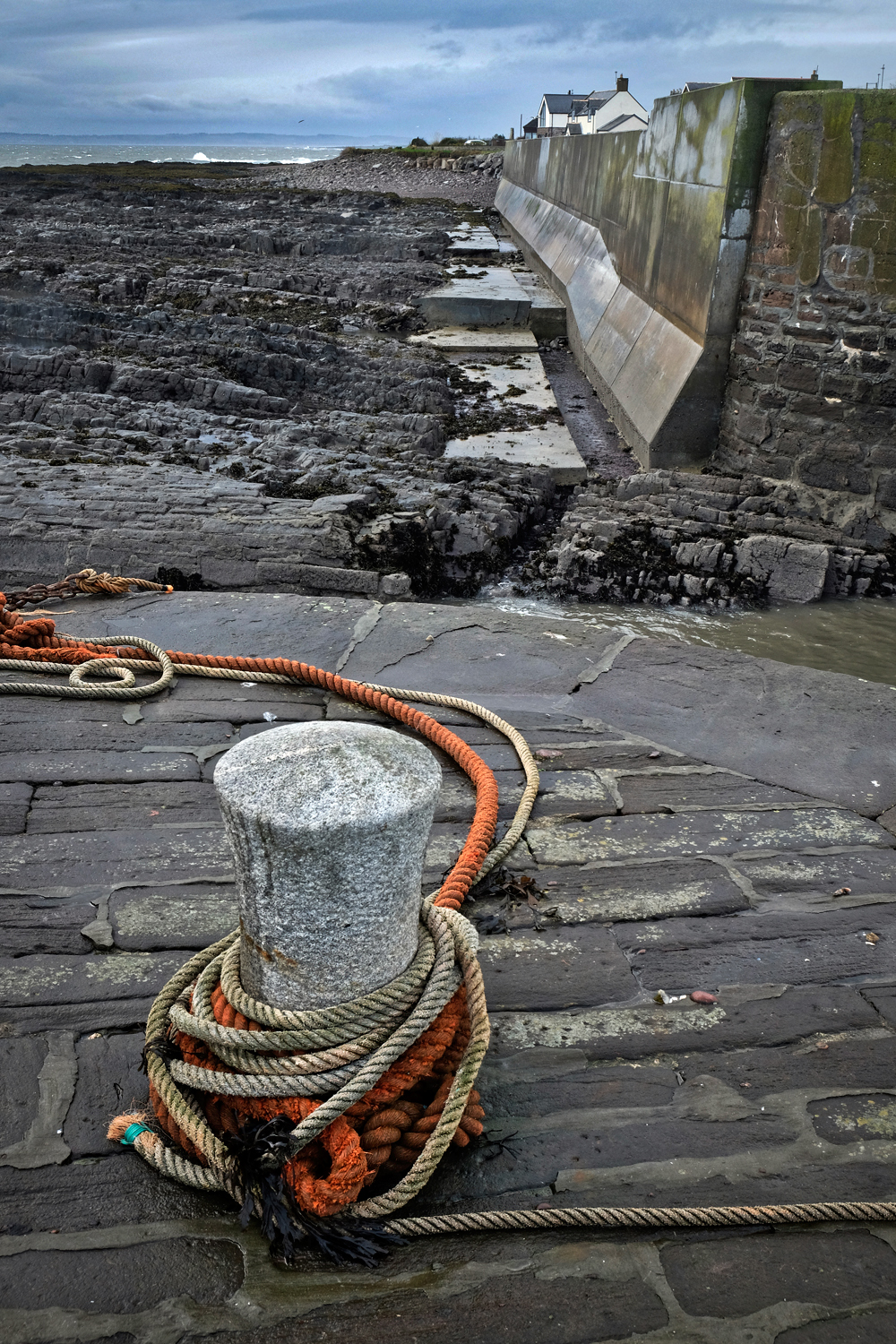 Low tide along the Johnshaven sea wall.
Low tide along the Johnshaven sea wall.
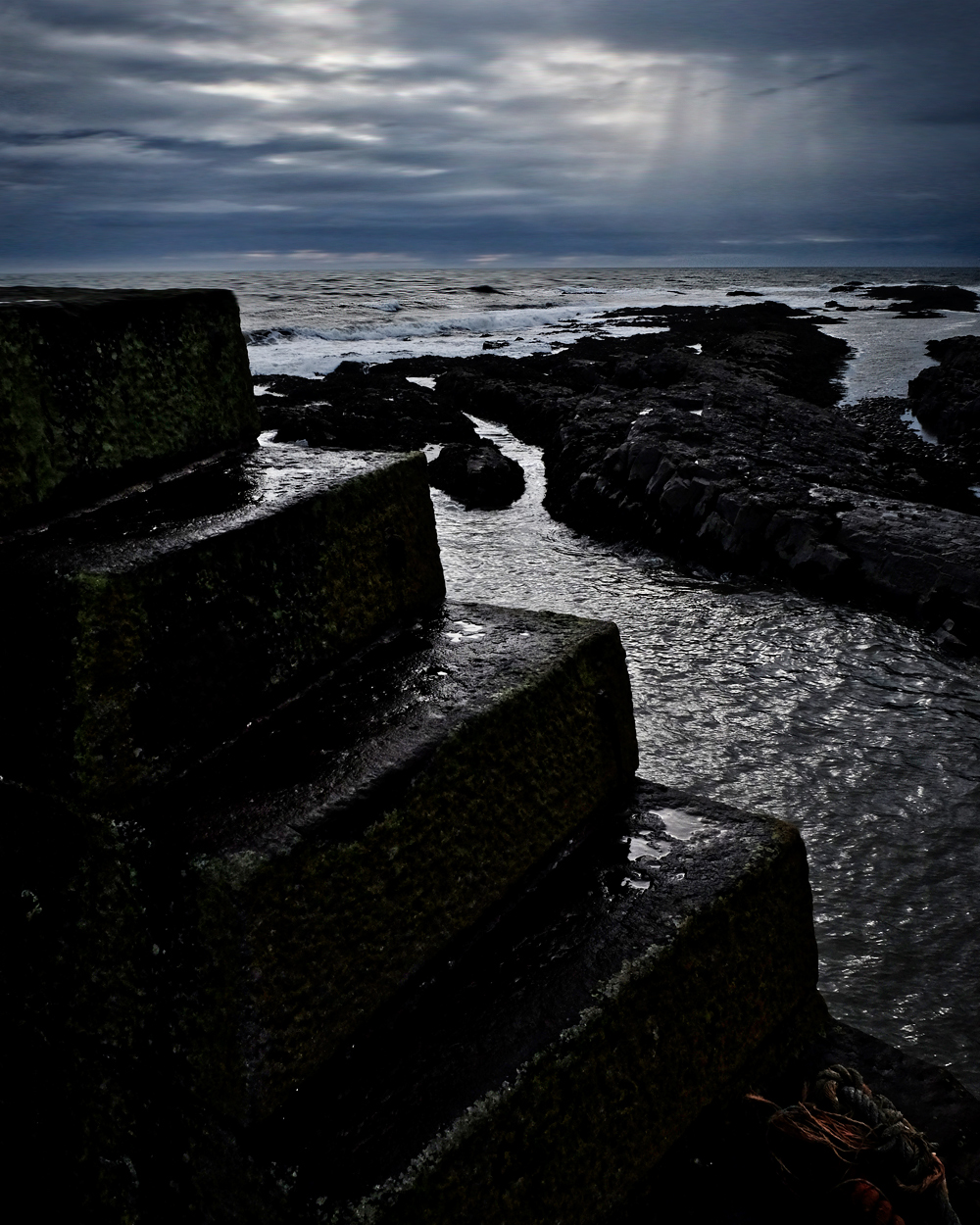 The only bad weather we saw during three days. A stormy North Sea.
The only bad weather we saw during three days. A stormy North Sea.
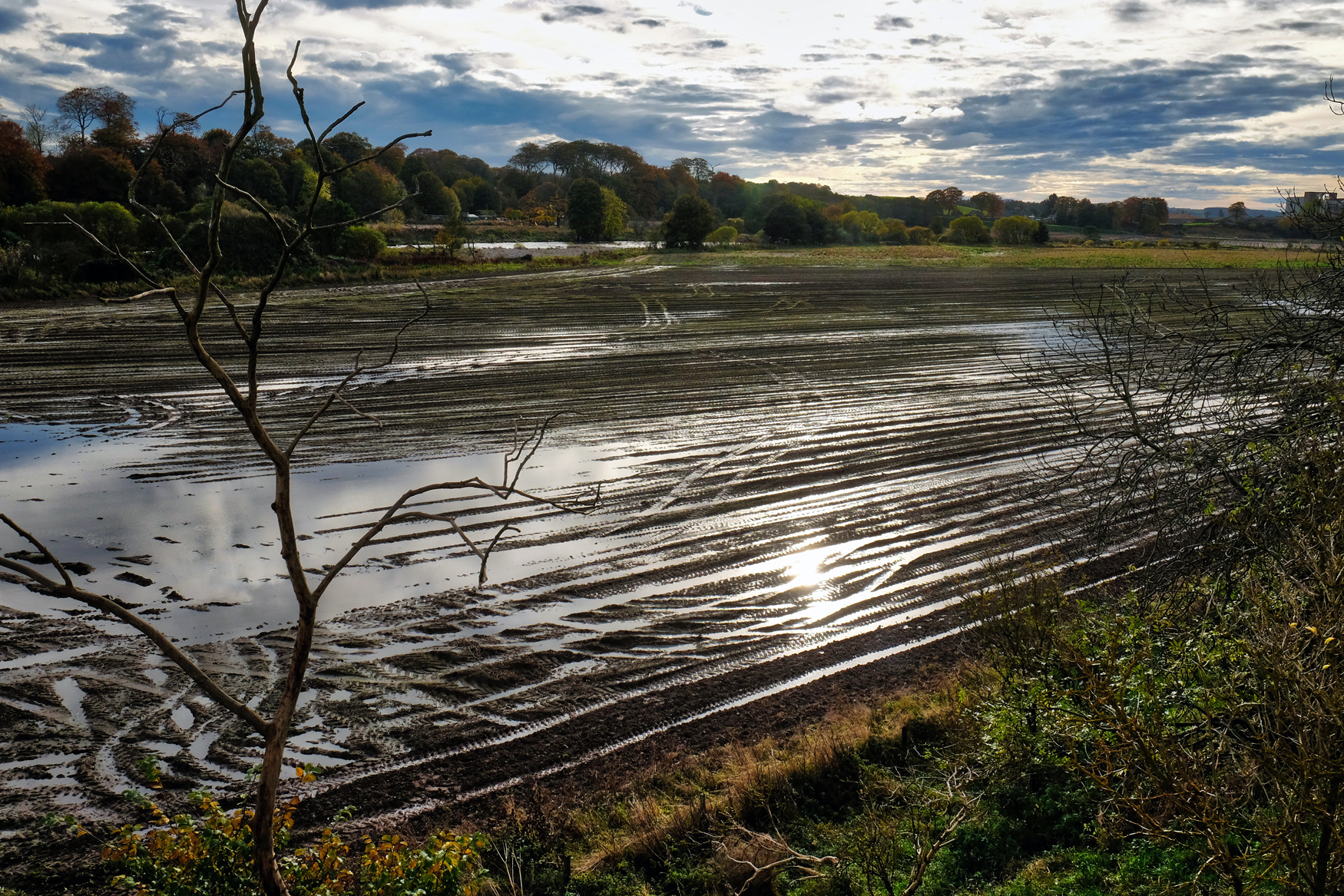 Near Montrose there were signs of a recent flood of the River Esk.
Near Montrose there were signs of a recent flood of the River Esk.
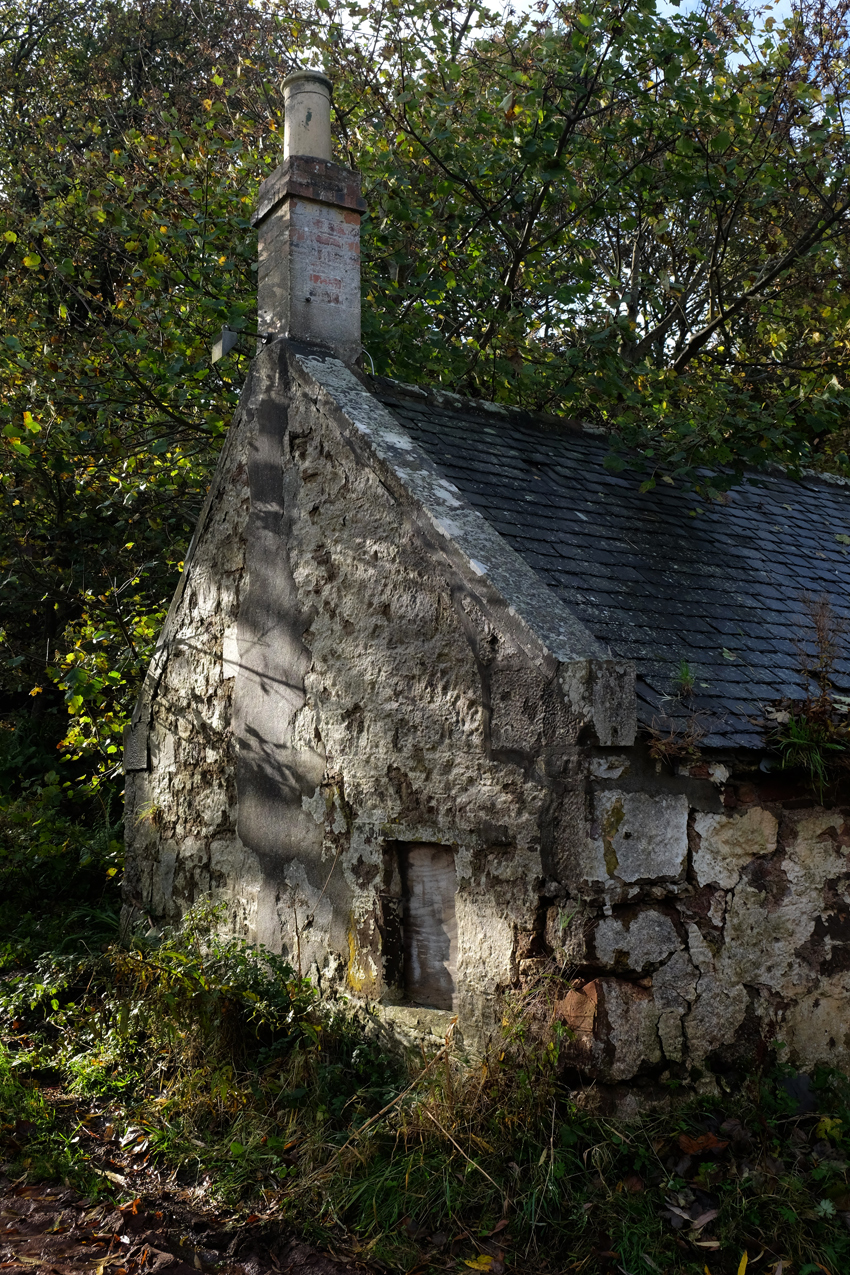 Whenever we would see magic light on an old stone building we would stop and take photographs.
Whenever we would see magic light on an old stone building we would stop and take photographs.
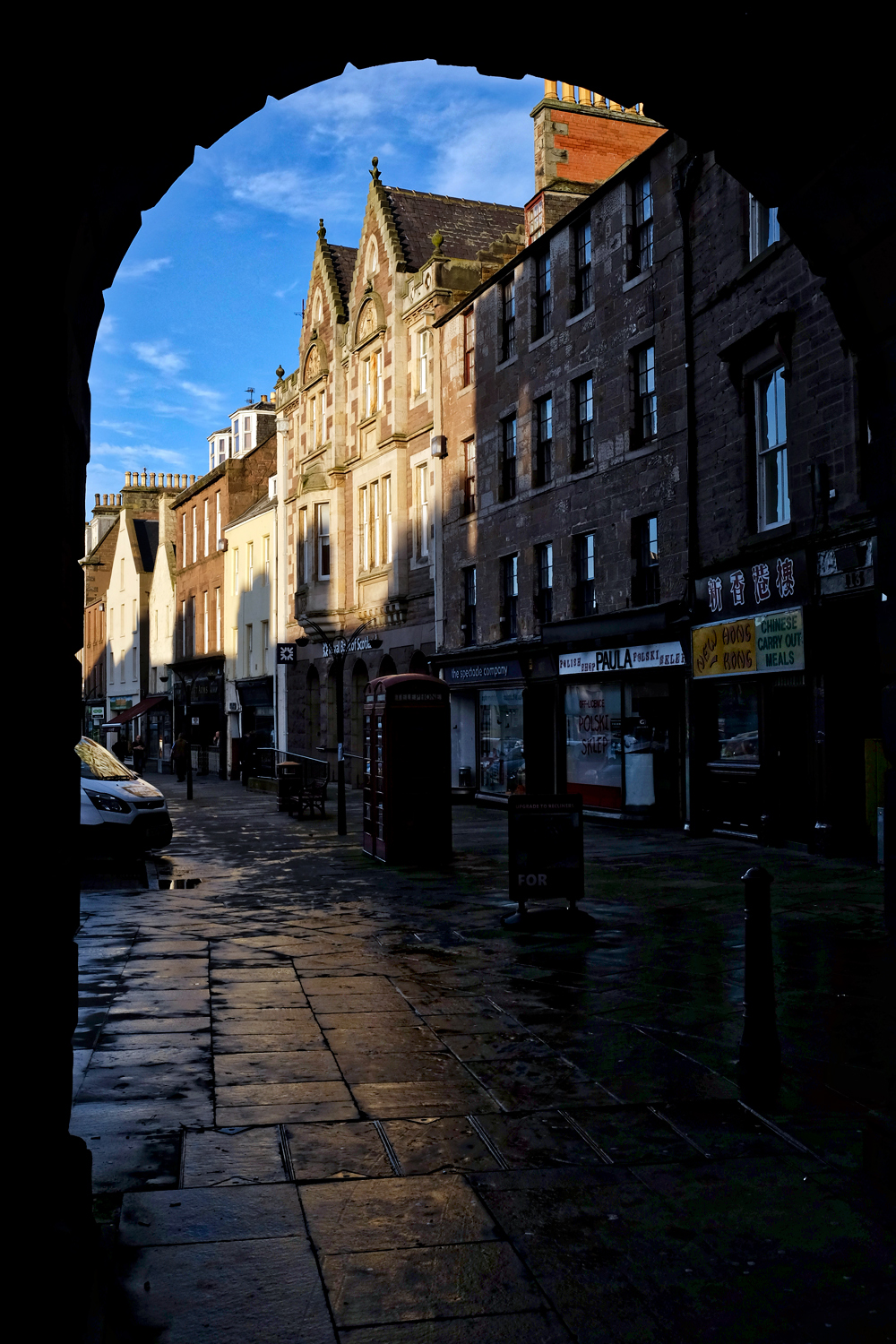 We stopped for coffee one late afternoon in the old market town of Montrose.
We stopped for coffee one late afternoon in the old market town of Montrose.
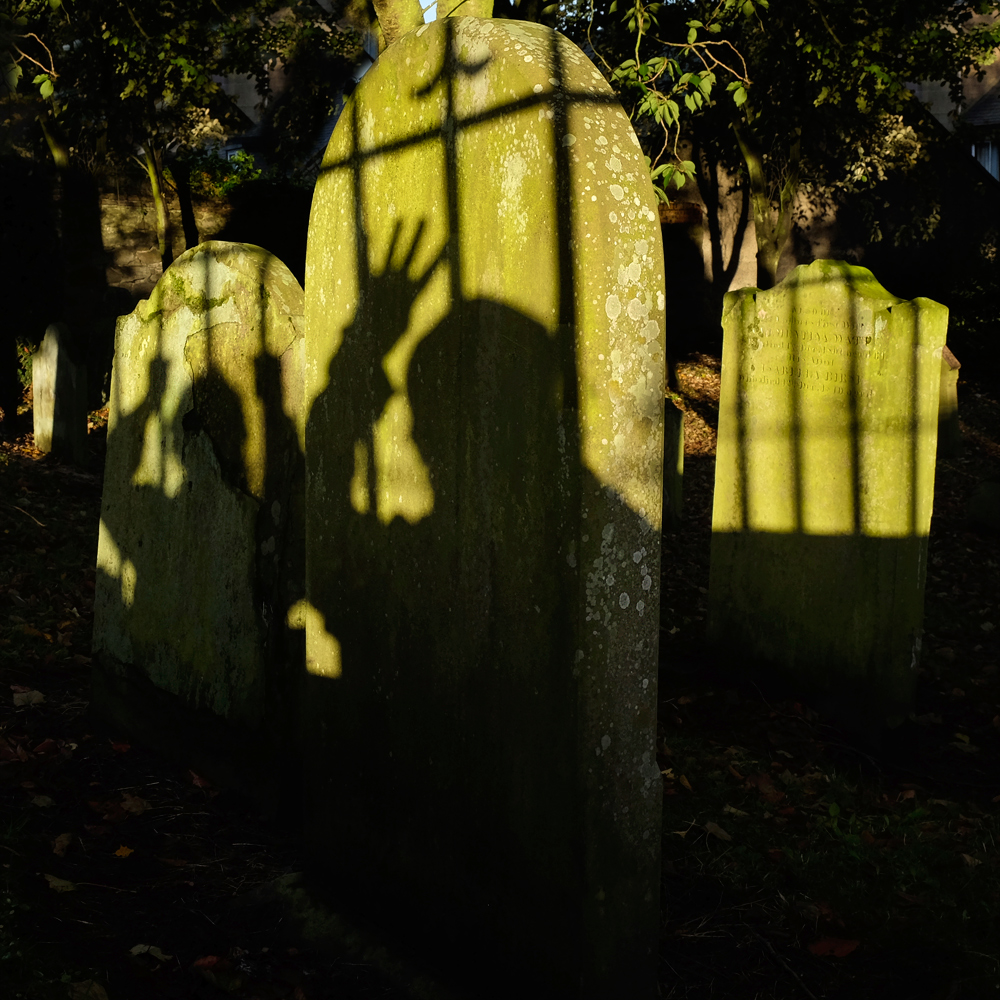 Yes, more ghoulish fun . . . in the Montrose Cemetery.
Yes, more ghoulish fun . . . in the Montrose Cemetery.
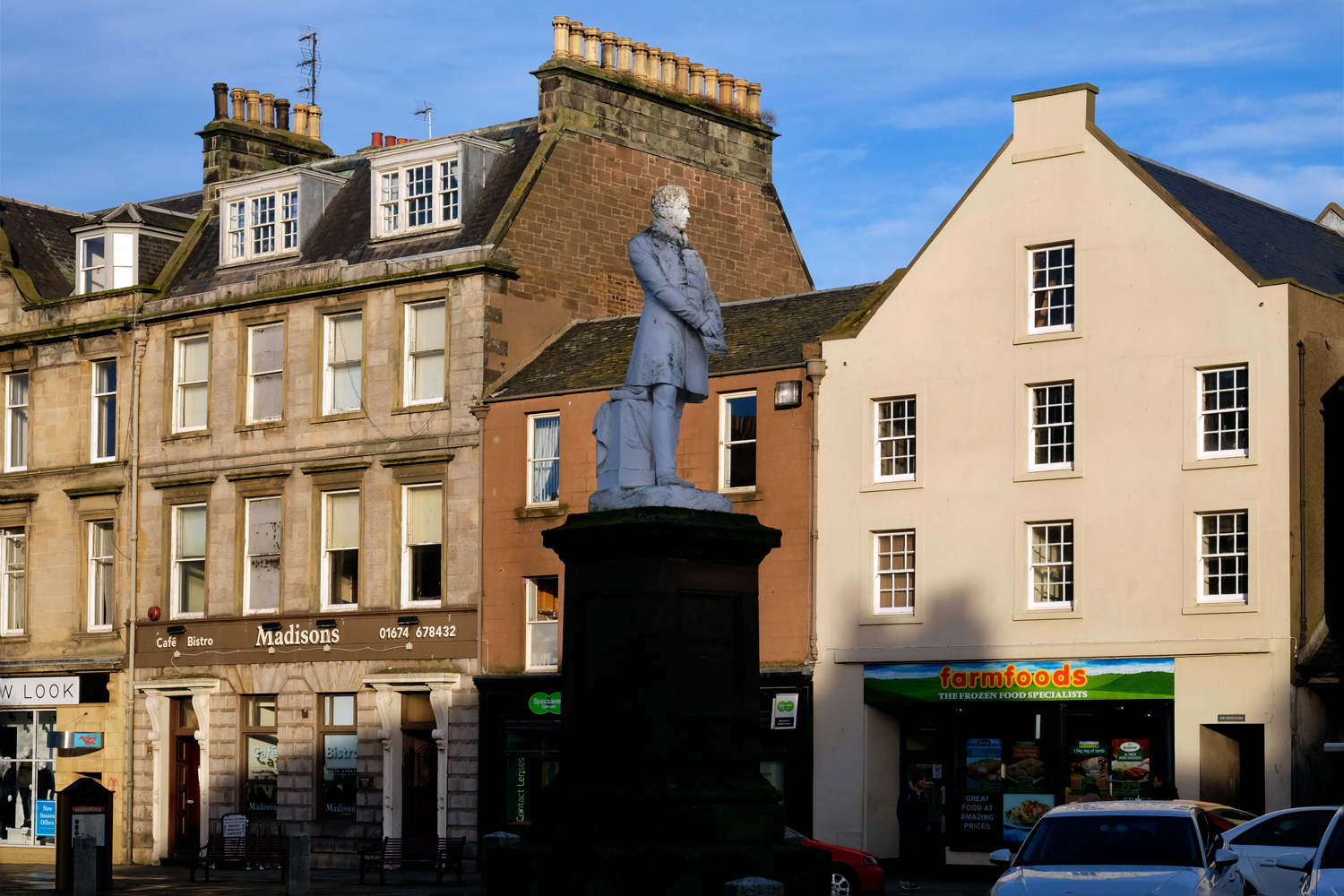 Montrose had some fine statues in the town square . . . here a good Samaritan was honored.
Montrose had some fine statues in the town square . . . here a good Samaritan was honored.
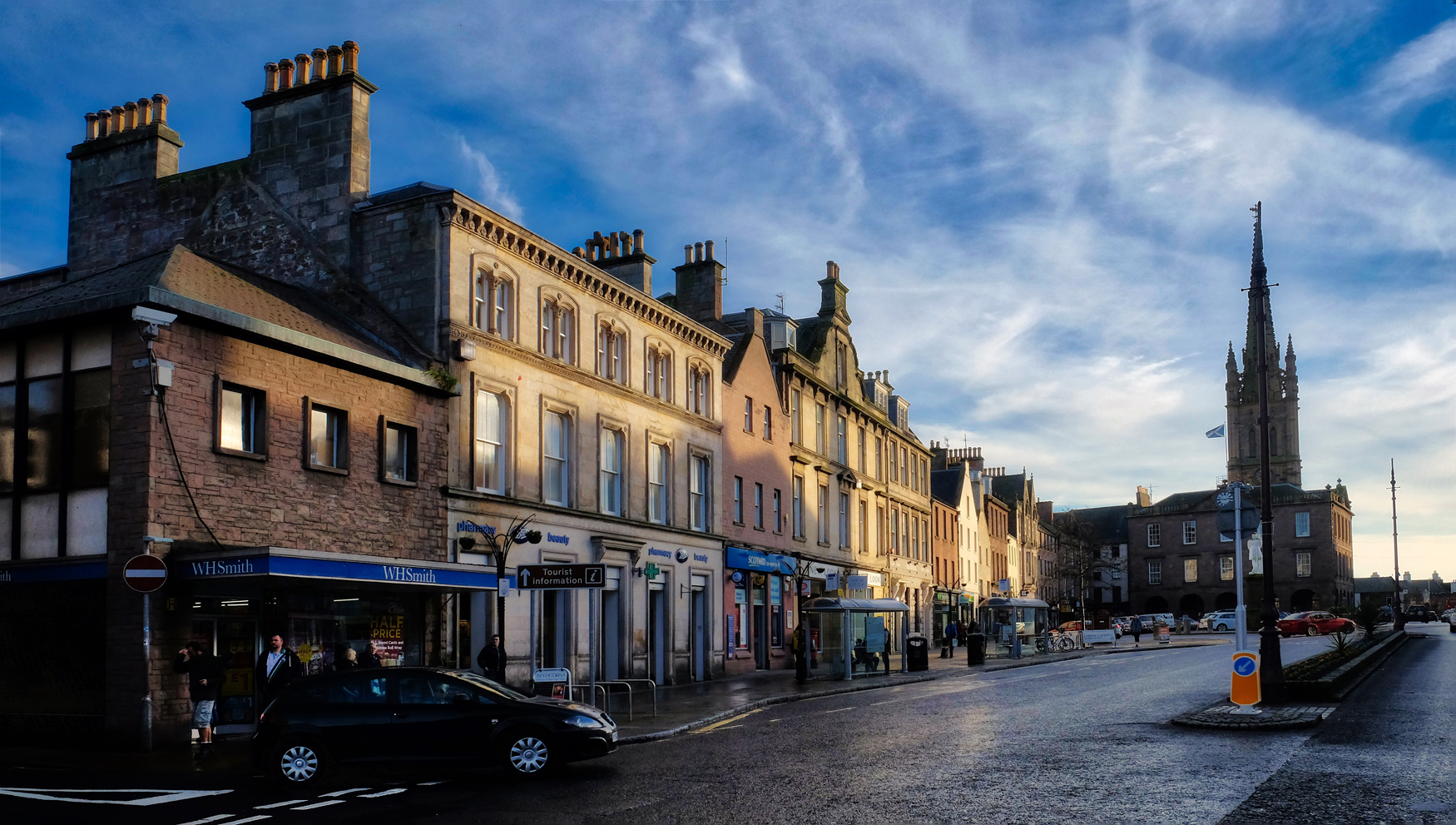 Montrose is typical of many Scottish towns.
Montrose is typical of many Scottish towns.
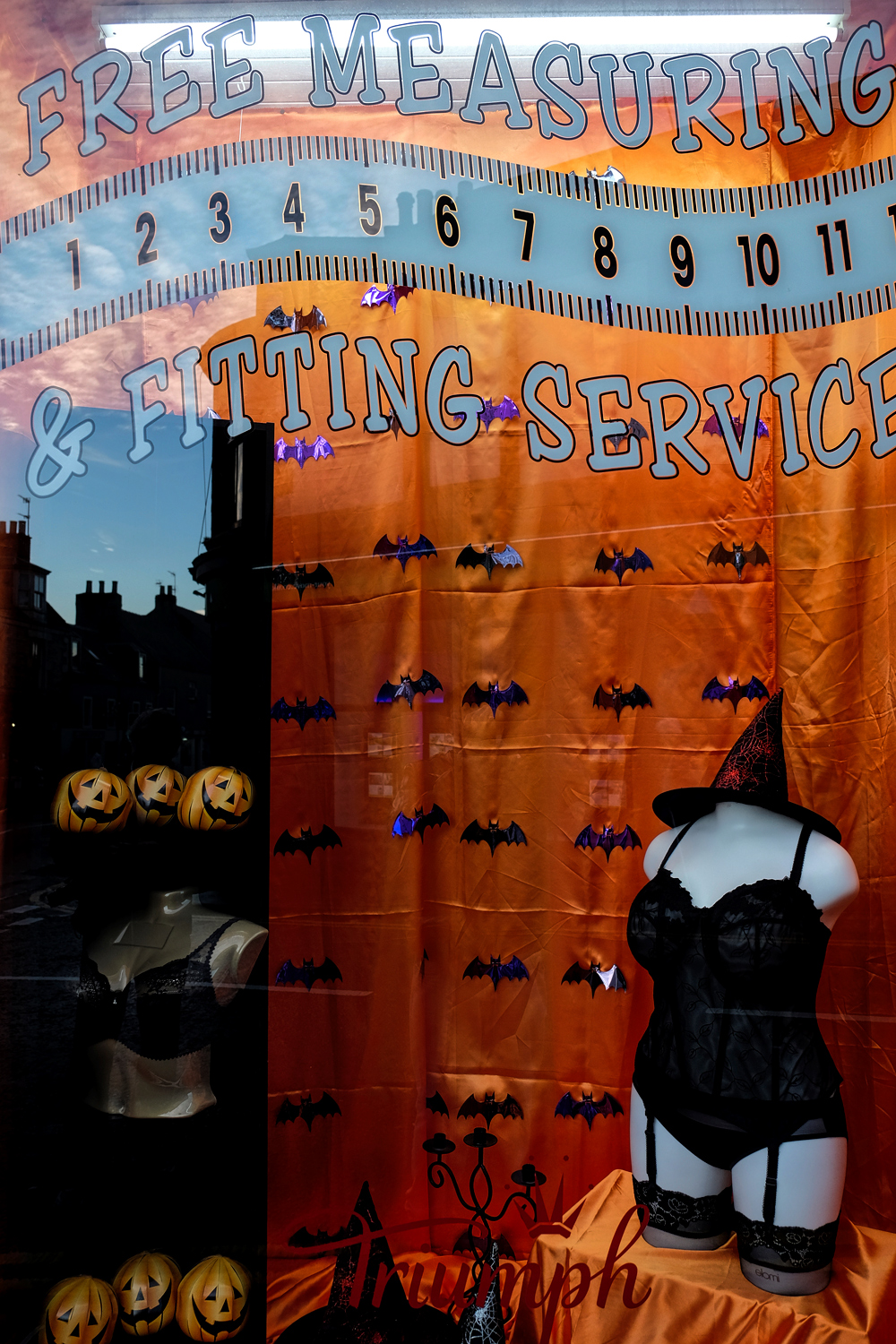 OK, maybe Montrose is not so typical after all.
OK, maybe Montrose is not so typical after all.
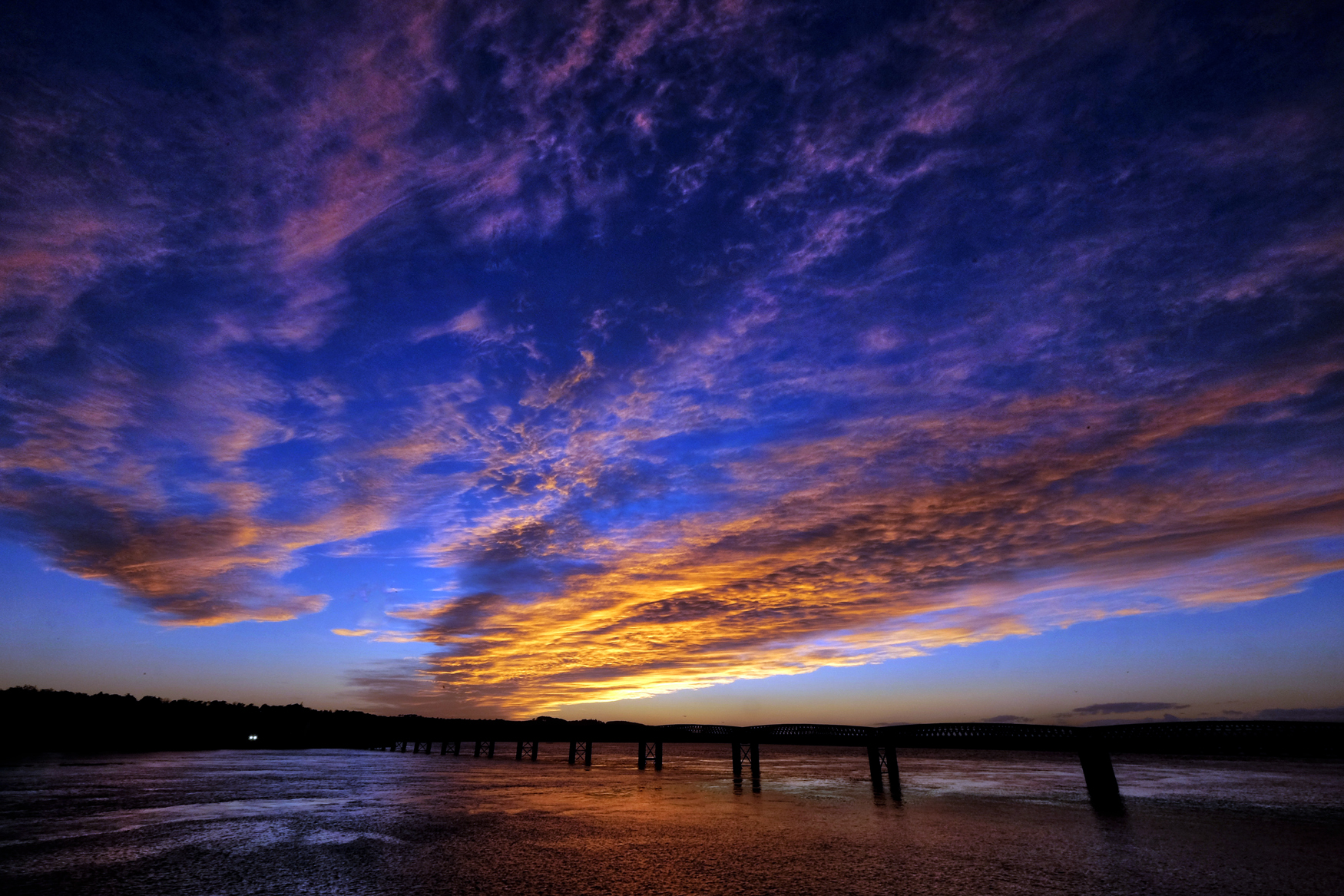 But what I will remember most about Montrose was the most incredible sunset of my life playing over us across the estuary bridge!
But what I will remember most about Montrose was the most incredible sunset of my life playing over us across the estuary bridge!
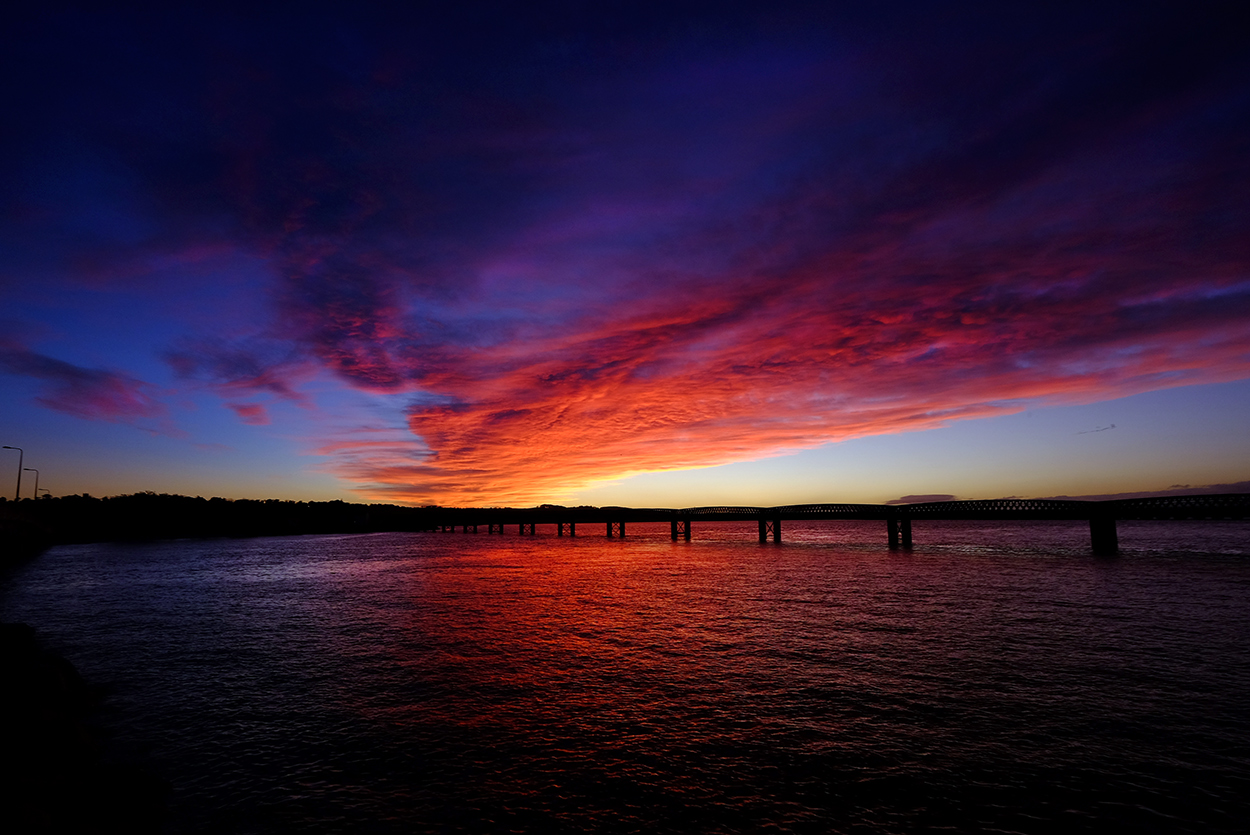 From beginning to end . . . we were completely enthralled.
From beginning to end . . . we were completely enthralled.
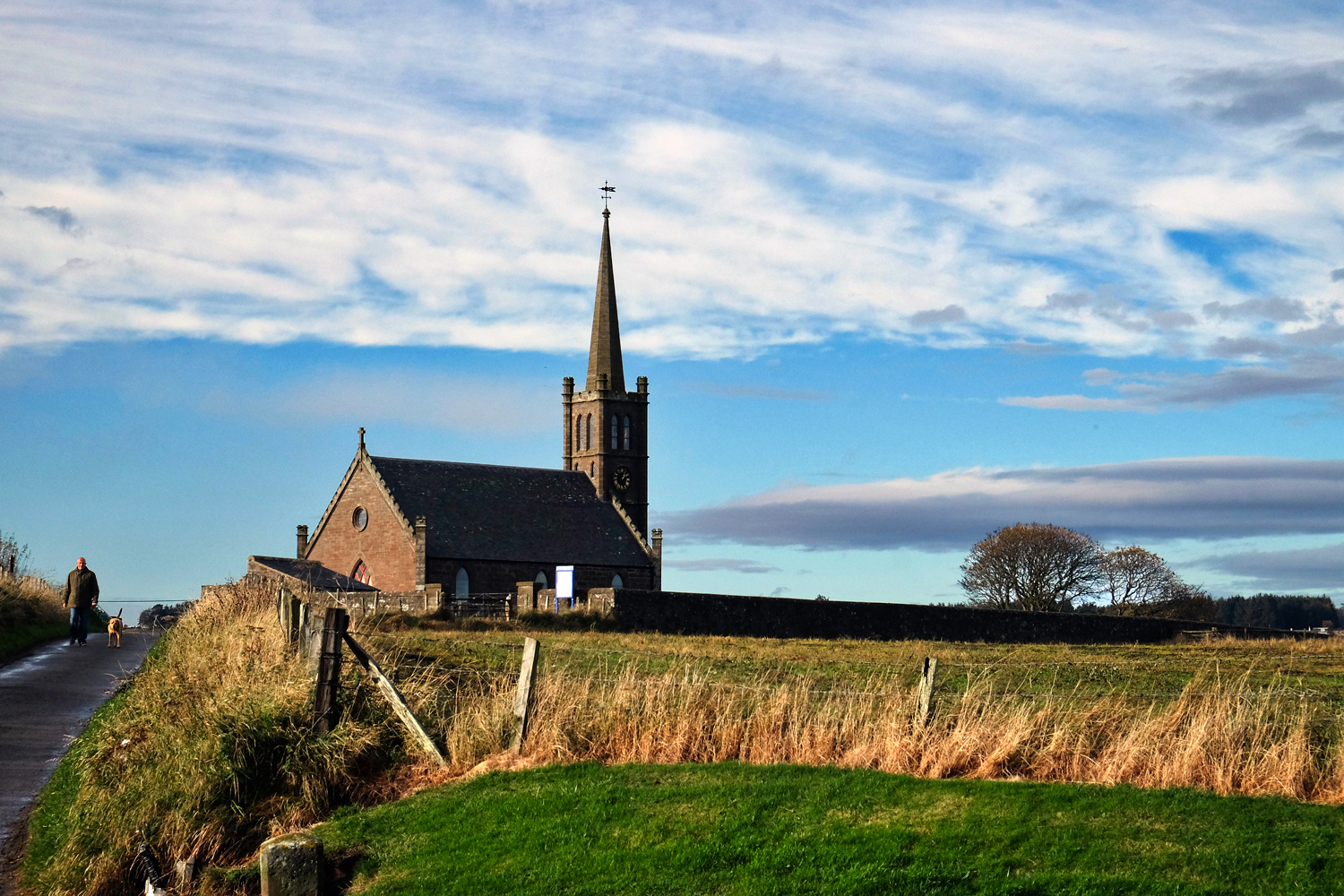 Another day along the small country lanes above the North Sea.
Another day along the small country lanes above the North Sea.
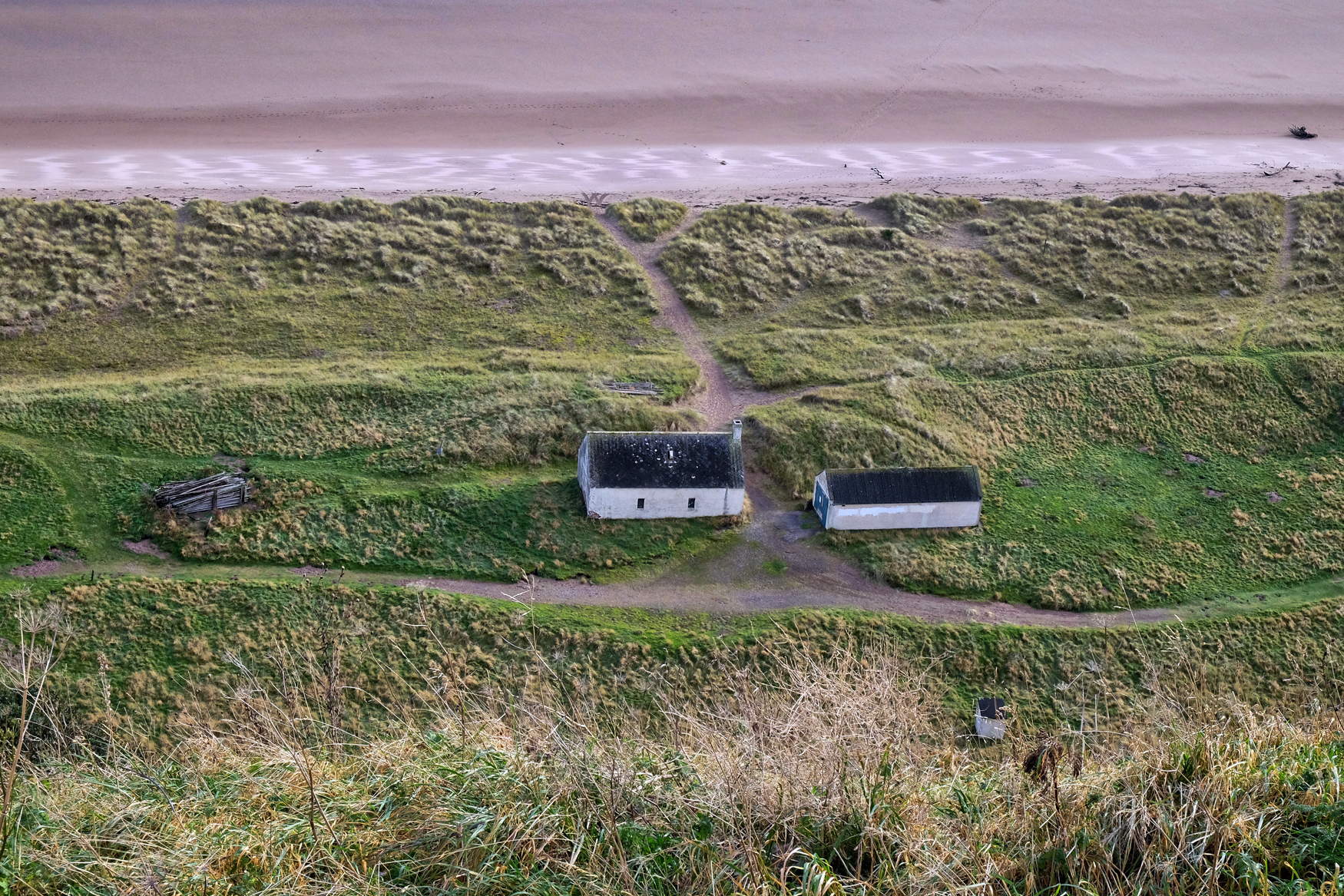 Old farm houses along a strand of the North Sea.
Old farm houses along a strand of the North Sea.
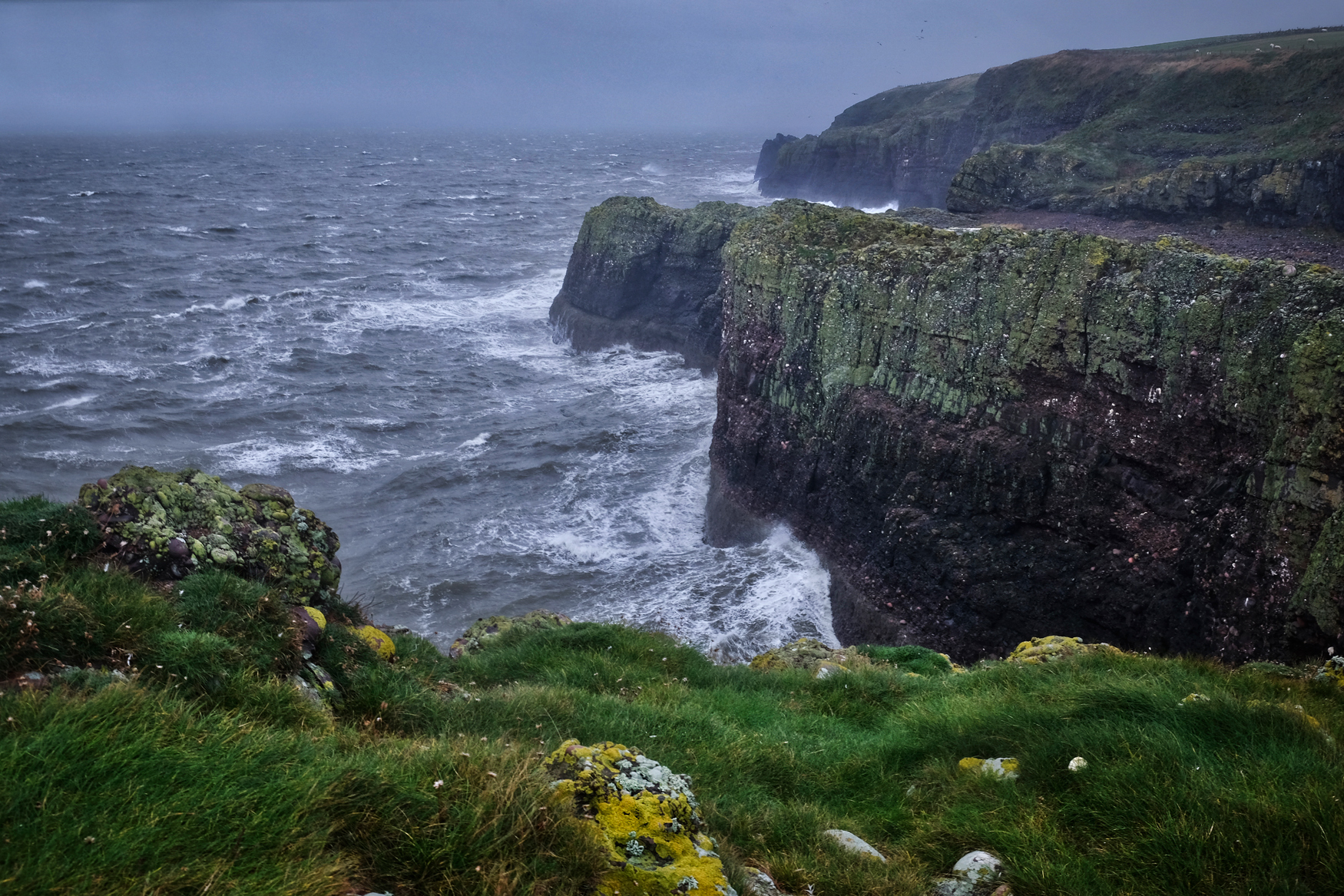 A wild North Sea below the cliffs of Aberdeenshire.
A wild North Sea below the cliffs of Aberdeenshire.
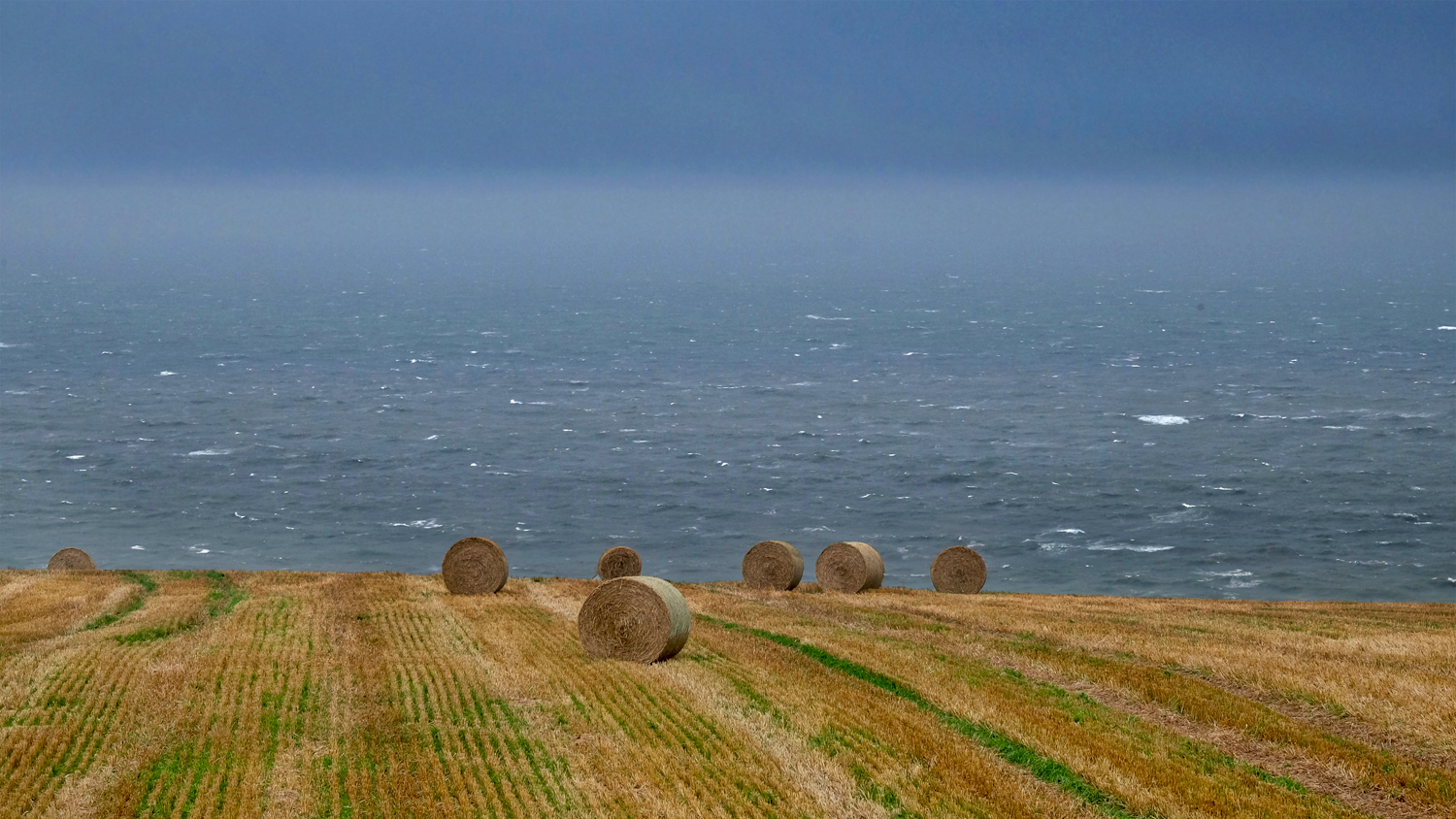 North Sea hay bales.
North Sea hay bales.
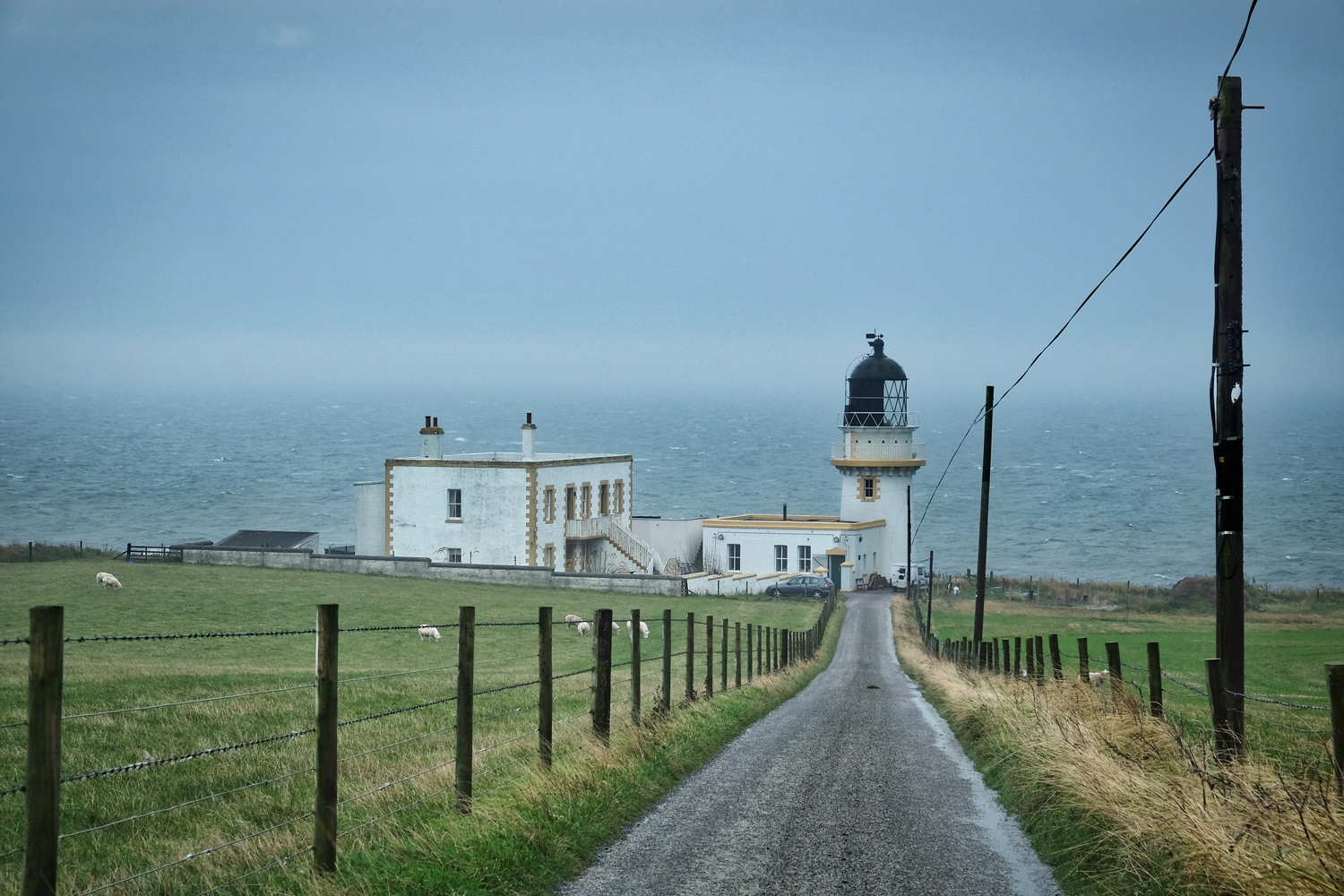 We saw so much and did so much in those short three days . . . and this blog entry represents only a small part of it all. I may elaborate more on this entry at a later date, but for now, that is all.
We saw so much and did so much in those short three days . . . and this blog entry represents only a small part of it all. I may elaborate more on this entry at a later date, but for now, that is all.
Memories of Scotland: Isle of Mull Road Trip
 Saturday, August 12, 2017 at 8:17AM
Saturday, August 12, 2017 at 8:17AM 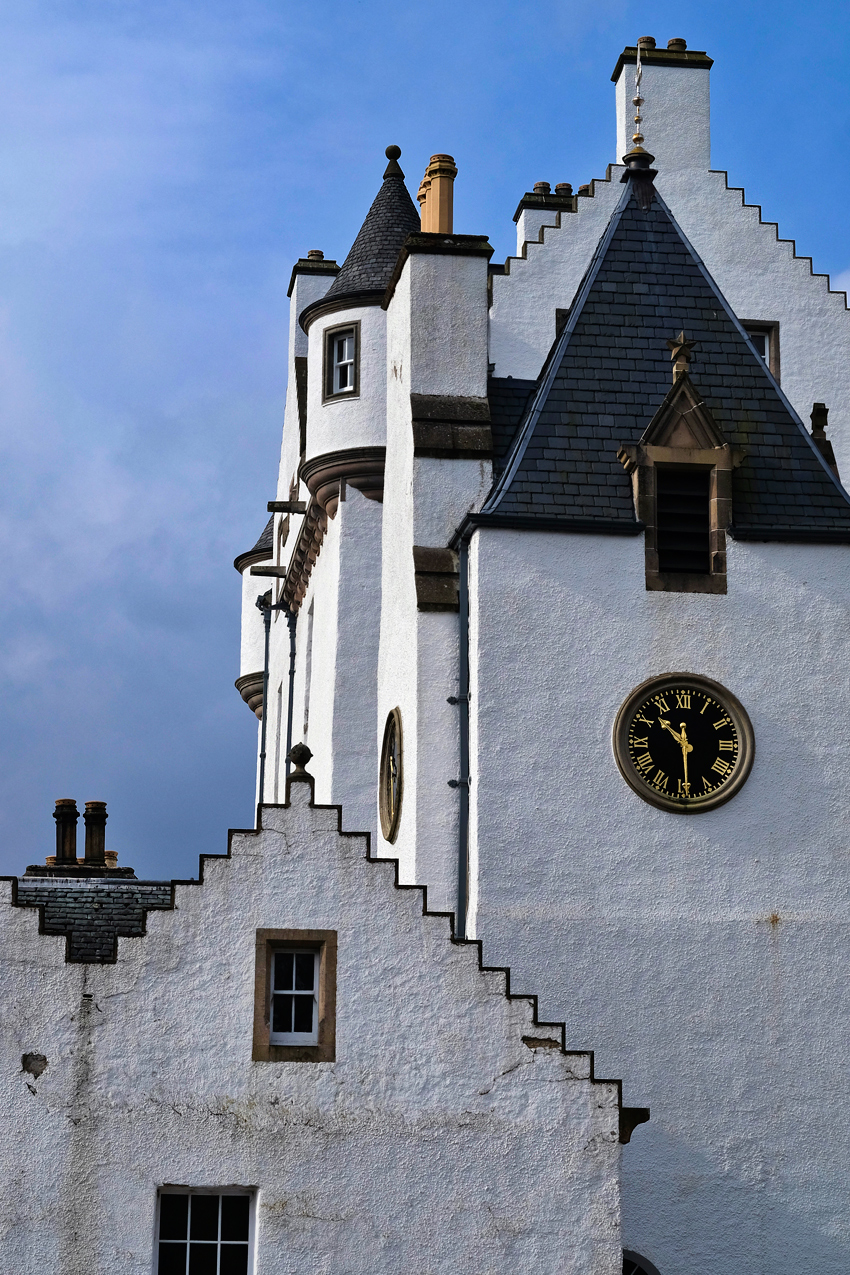 Our trip to the Isle of Mull was, a road trip, and as such, we saw many interesting places on the way there. One such place of interest was not far from where we spent the night, the famous village of Pitlochry . . . Blair Castle.
Our trip to the Isle of Mull was, a road trip, and as such, we saw many interesting places on the way there. One such place of interest was not far from where we spent the night, the famous village of Pitlochry . . . Blair Castle.
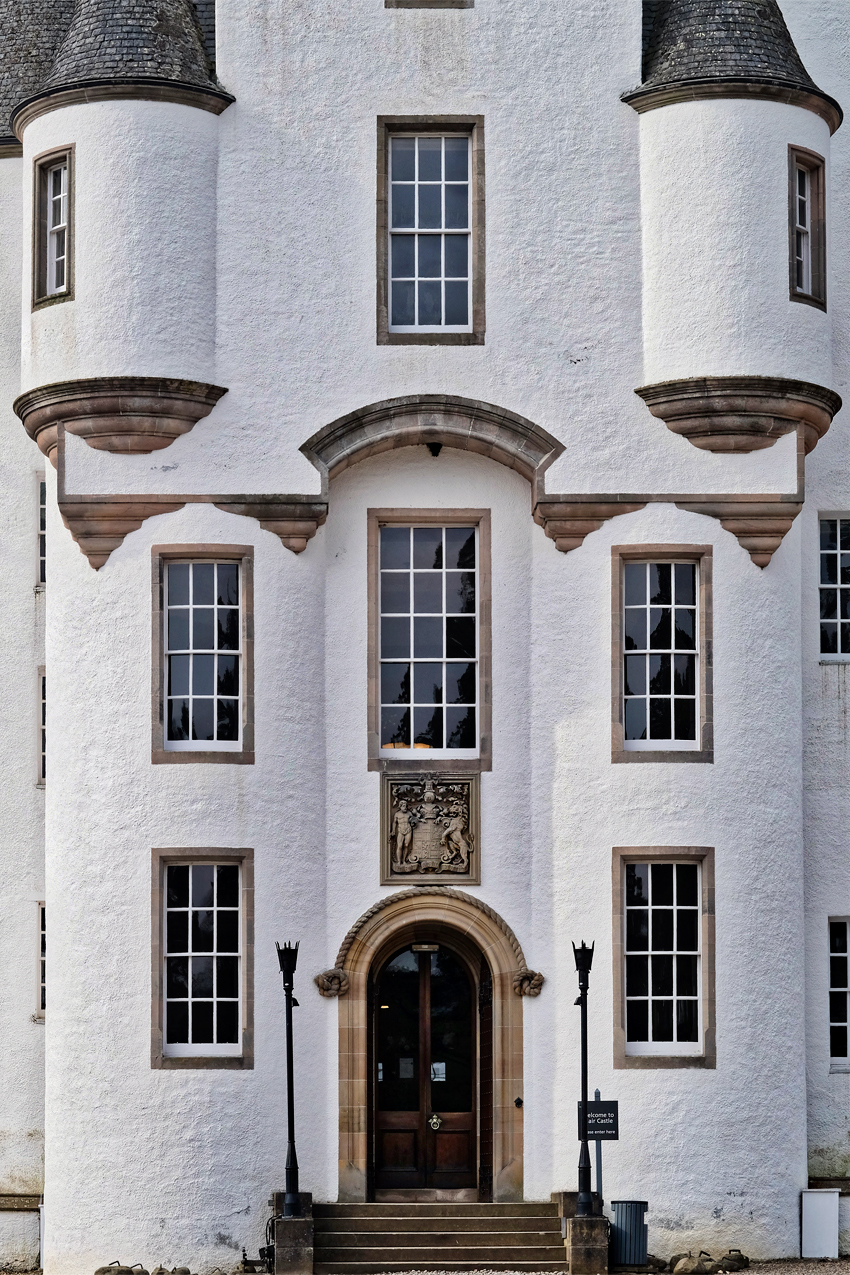 The oldest sections of Blair Castle date from 1269.
The oldest sections of Blair Castle date from 1269.
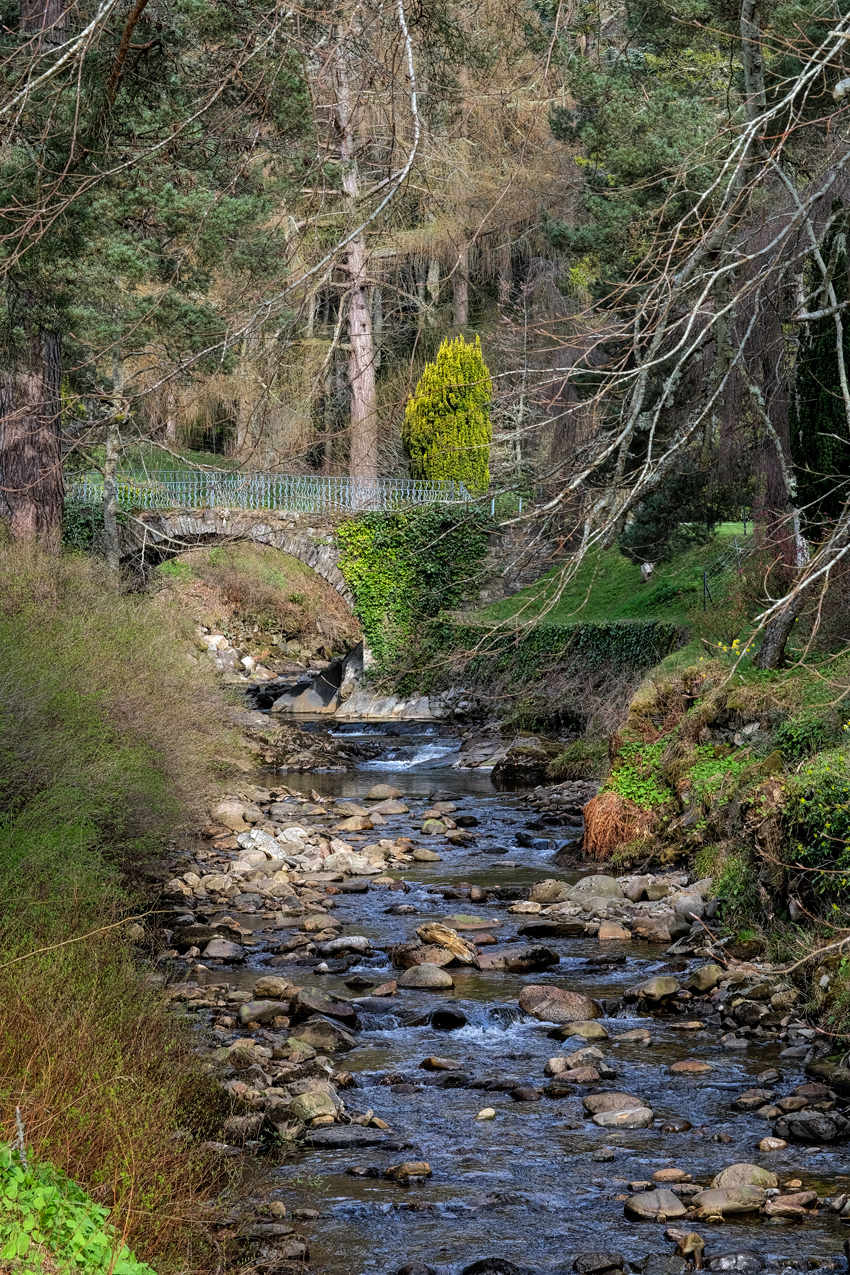 A lovely burn (creek) ran along the side of the castle.
A lovely burn (creek) ran along the side of the castle.
 Like many castles in Scotland, there have been many renovations and much remodeling over the centuries.
Like many castles in Scotland, there have been many renovations and much remodeling over the centuries.
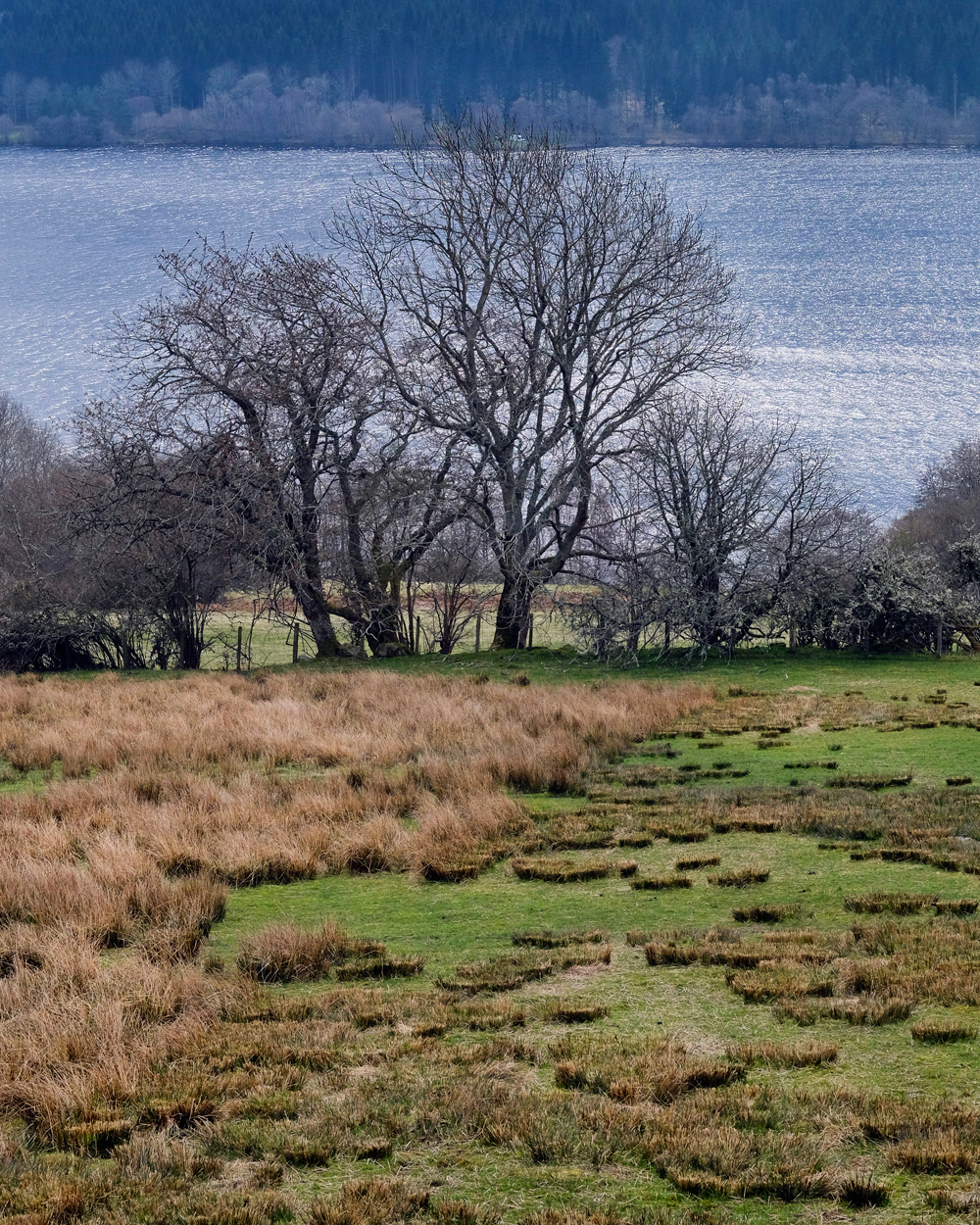 Our route took us along the souther edge of the Highlands, and along Loch Tummel.
Our route took us along the souther edge of the Highlands, and along Loch Tummel.
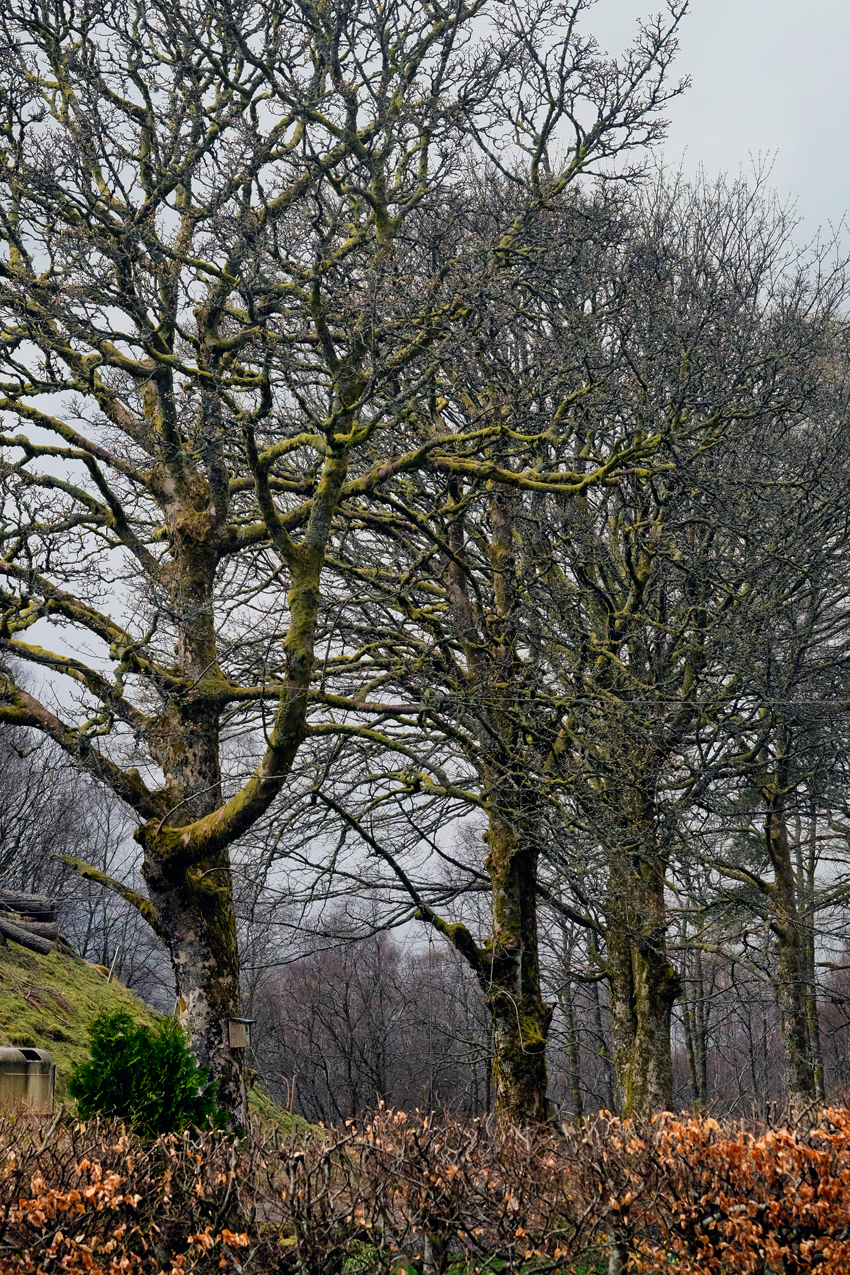 Although it was early April, Spring had not yet reached Scotland.
Although it was early April, Spring had not yet reached Scotland.
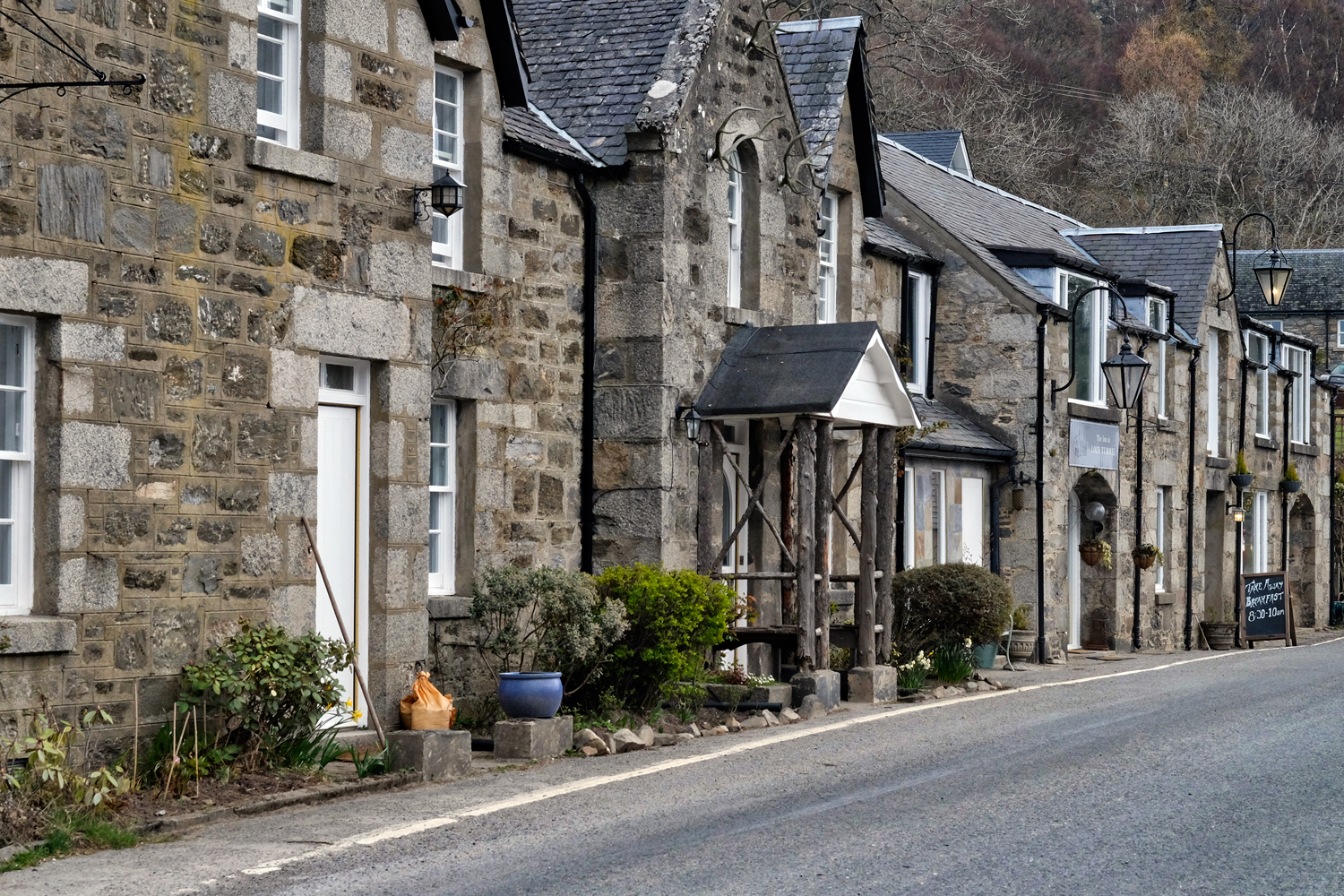 Way out in the countryside, people still built their homes as row houses . . . a statement of the power of the Scottish Lairds as much as anything I guess. Here, along Loch Tummel.
Way out in the countryside, people still built their homes as row houses . . . a statement of the power of the Scottish Lairds as much as anything I guess. Here, along Loch Tummel.
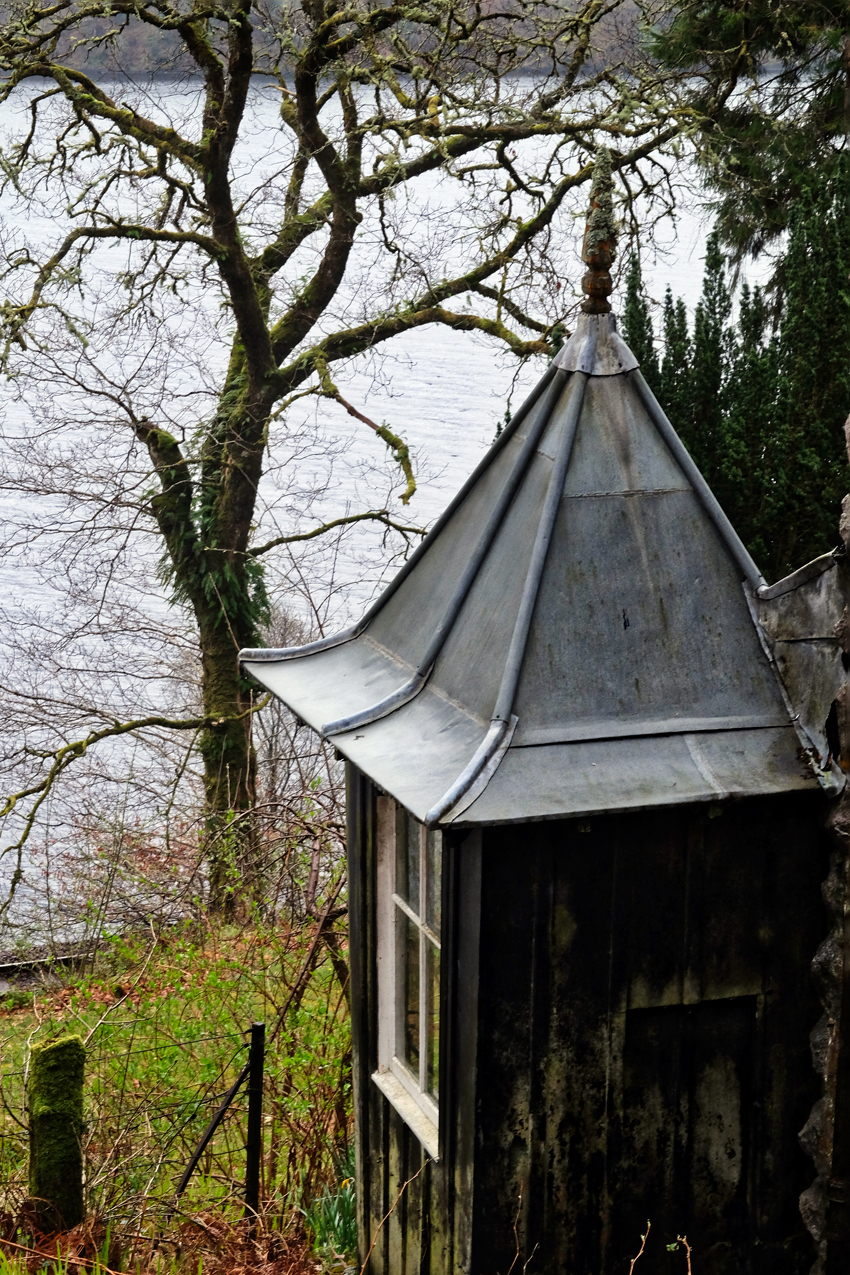 Along the bluff above Loch Awe.
Along the bluff above Loch Awe.
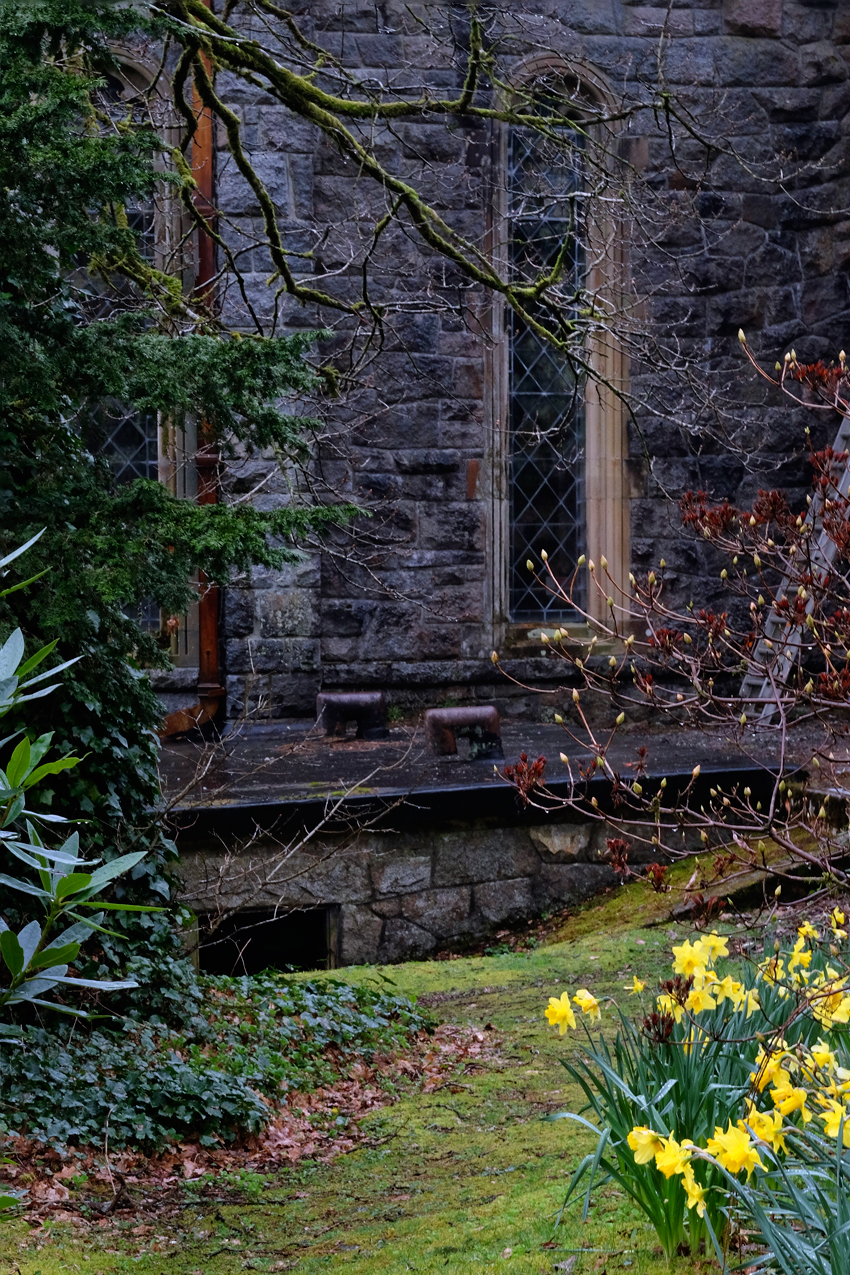 Lovely.
Lovely.
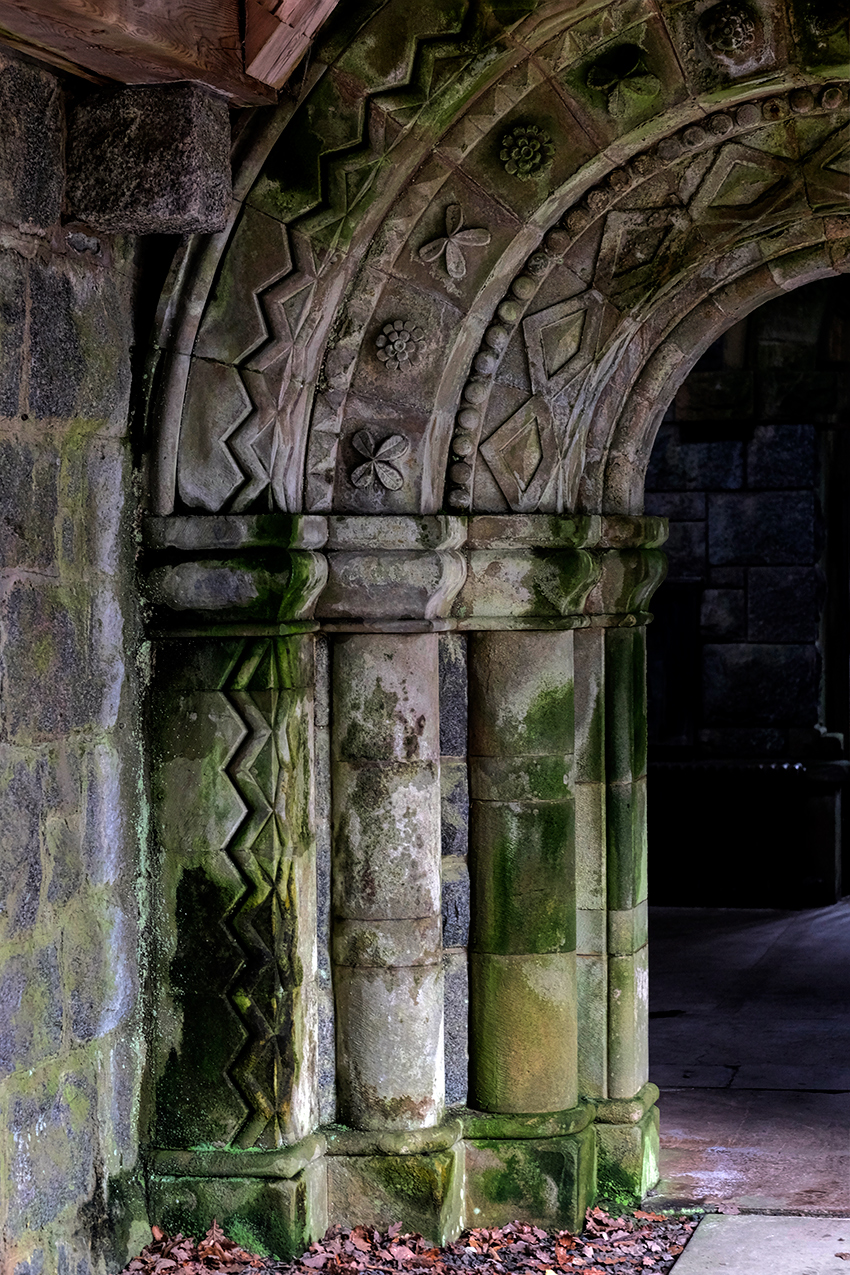 I wanted to take our Thai visitors to a magical place . . .
I wanted to take our Thai visitors to a magical place . . .
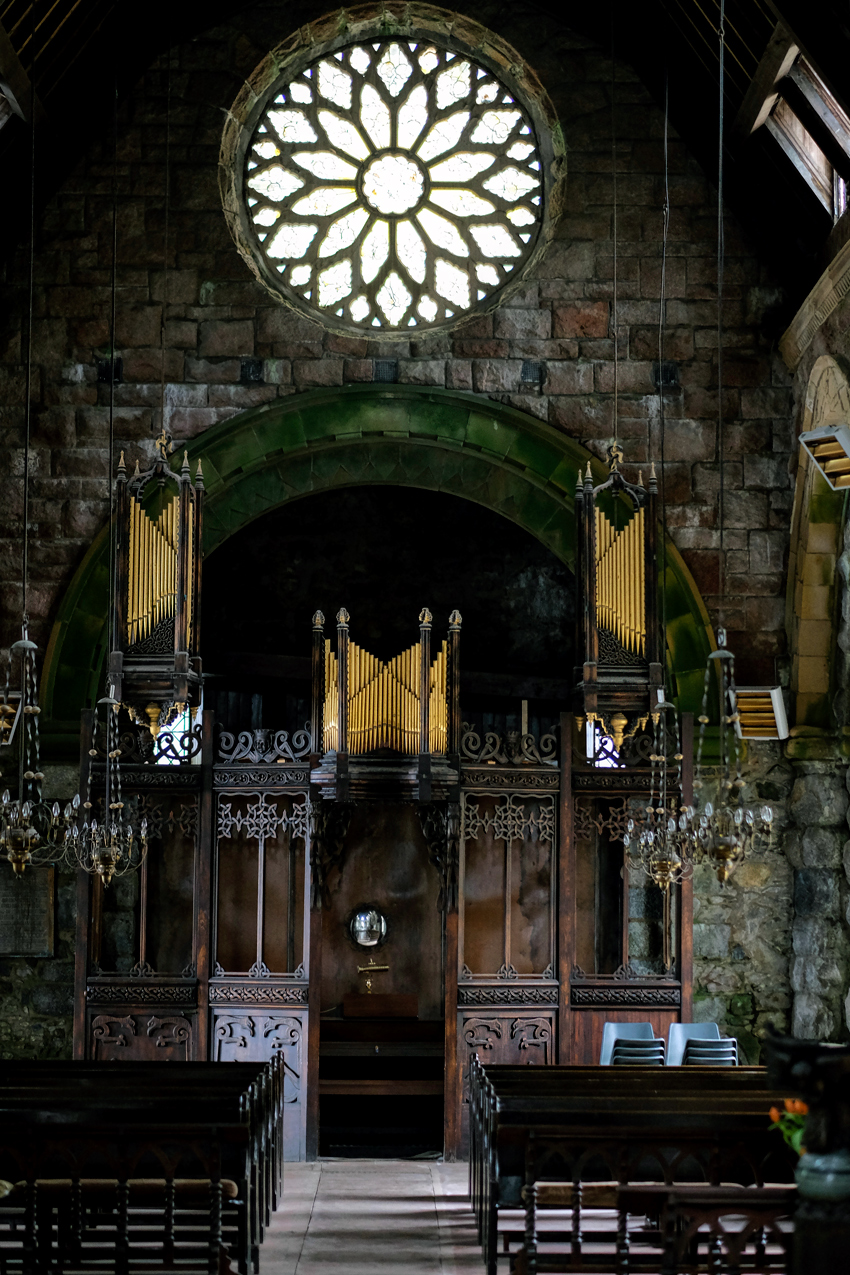 I wanted our visitors to see one of my favorite chapels in Scotland, Saint Conan's Kirke on the shores of Lach Awe.
I wanted our visitors to see one of my favorite chapels in Scotland, Saint Conan's Kirke on the shores of Lach Awe.
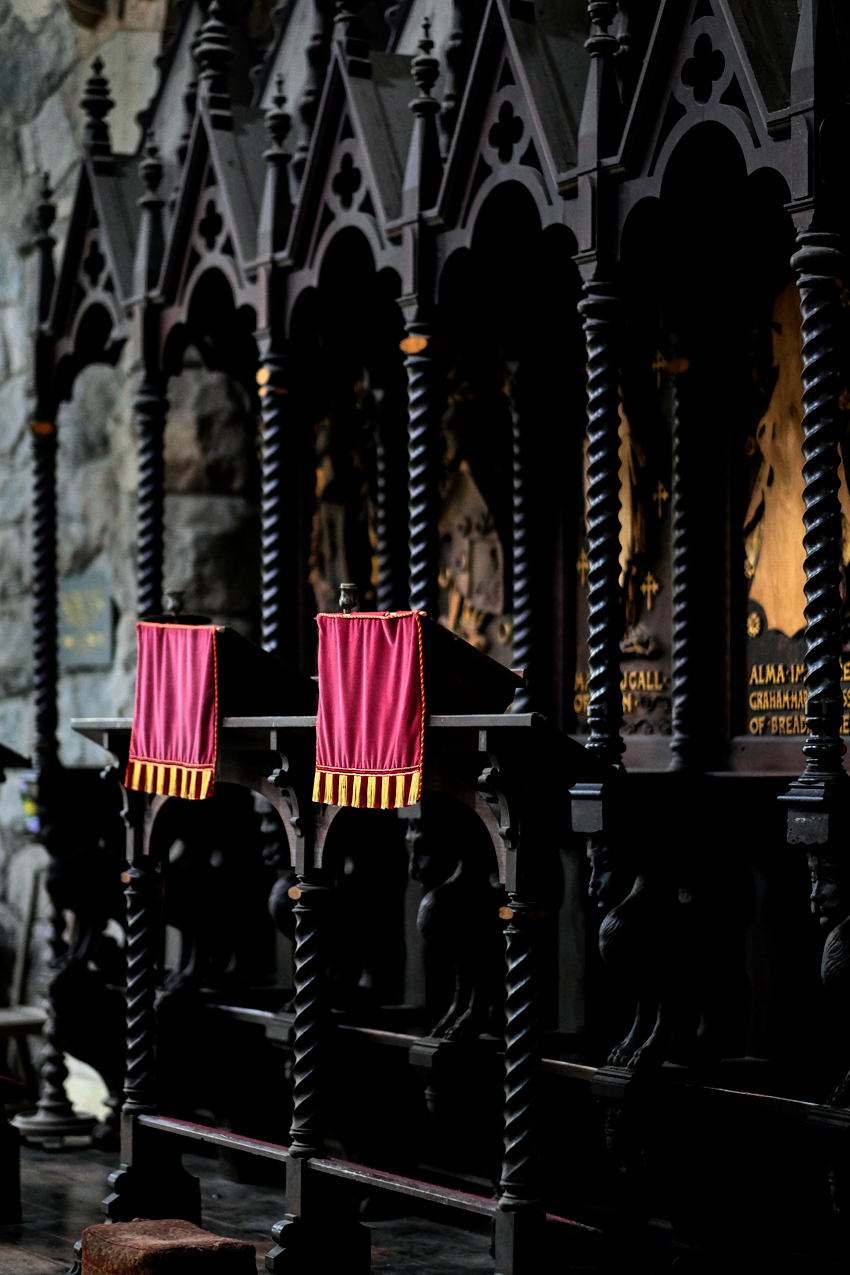 Saint Conan's Kirke is interesting because all the local Clans had a seat of representation in the chapel.
Saint Conan's Kirke is interesting because all the local Clans had a seat of representation in the chapel.
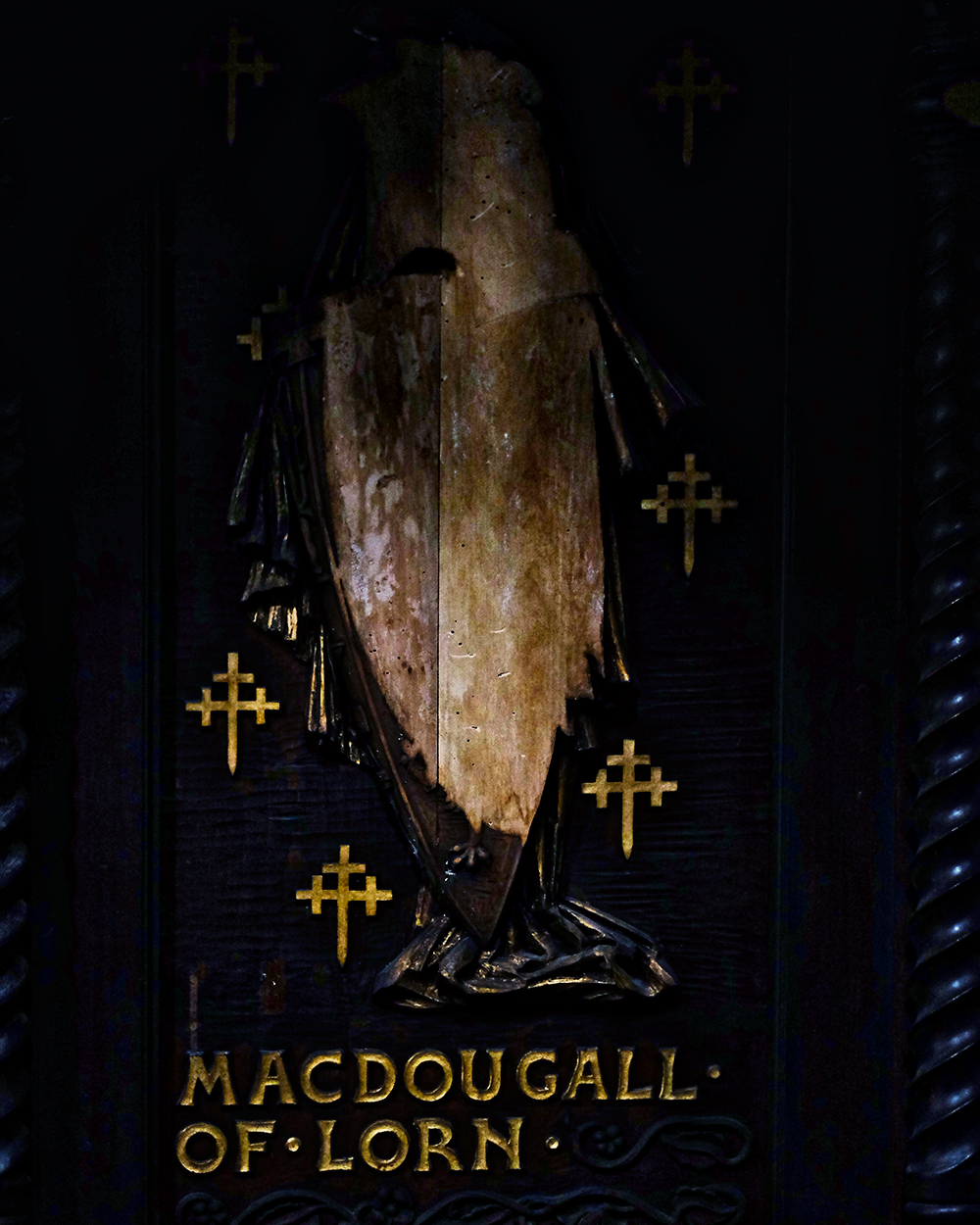 The Clan seats were reserved with their coat of arms. Fascinating cultural artifact.
The Clan seats were reserved with their coat of arms. Fascinating cultural artifact.
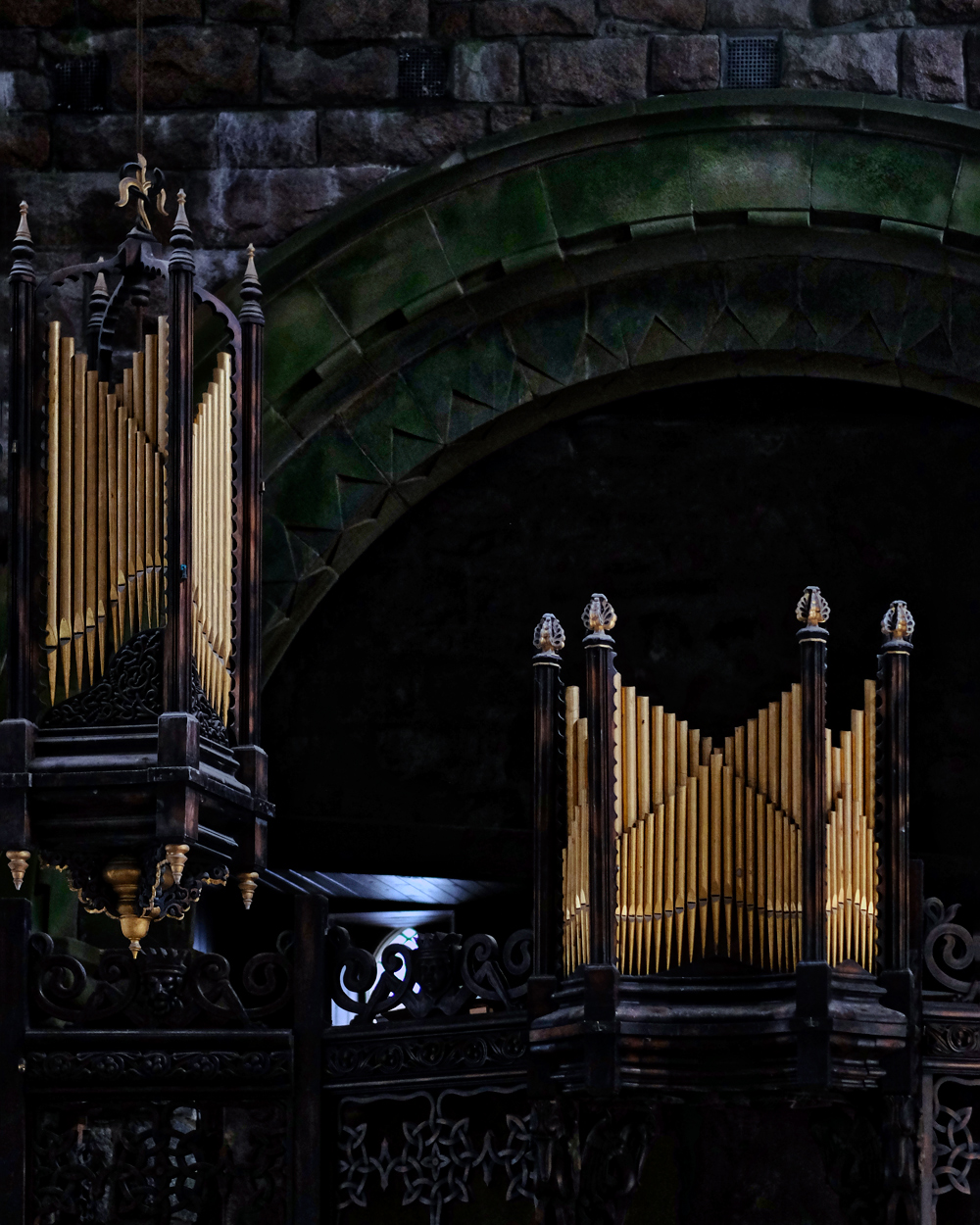 A beautiful pipe organ filled one side of the chapel. I would love to have been there to hear it play.
A beautiful pipe organ filled one side of the chapel. I would love to have been there to hear it play.
 The crypts of nights and clan leaders lined the chapel.
The crypts of nights and clan leaders lined the chapel.
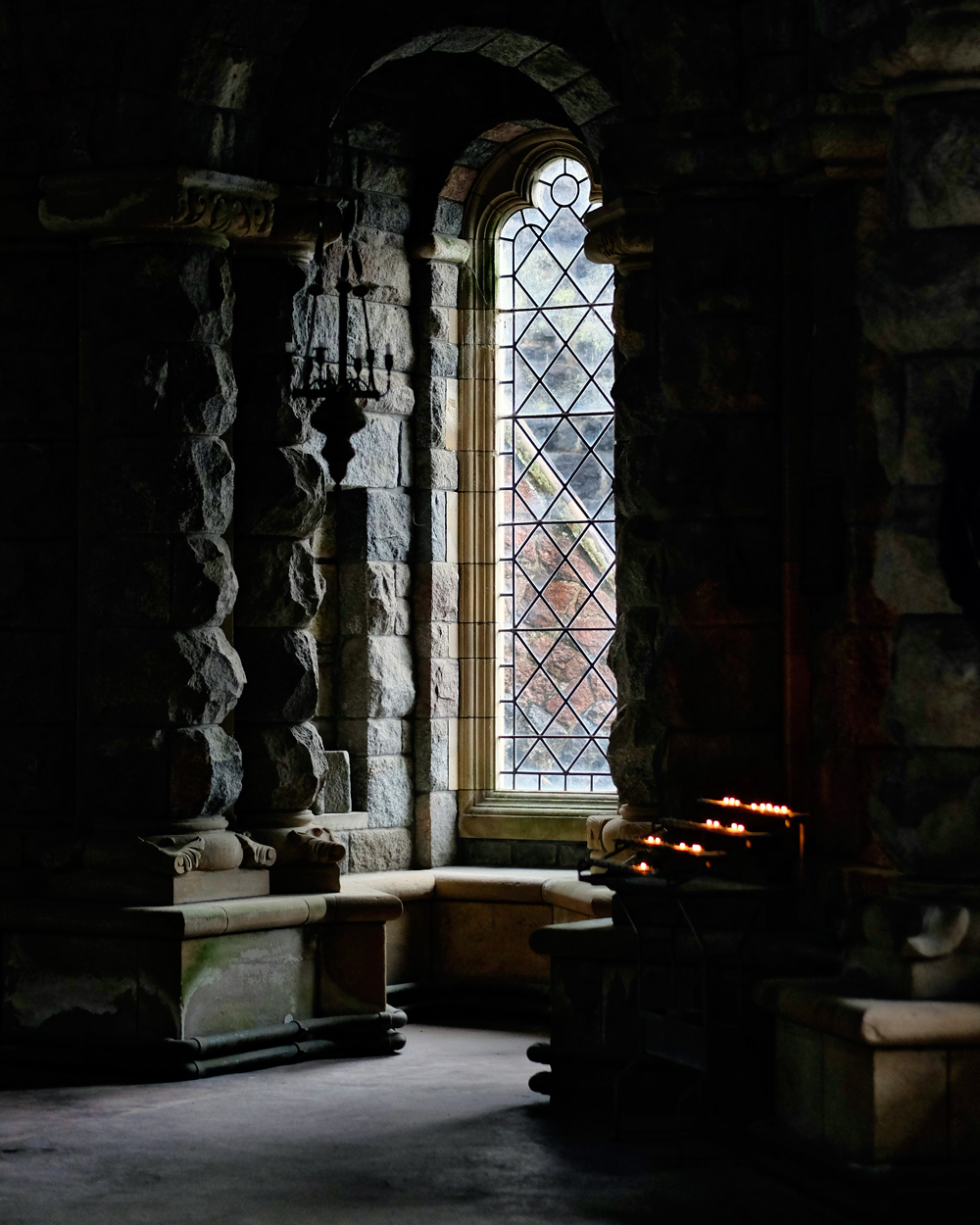 The Saint Conan's Kirke chapel interior with many moods.
The Saint Conan's Kirke chapel interior with many moods.
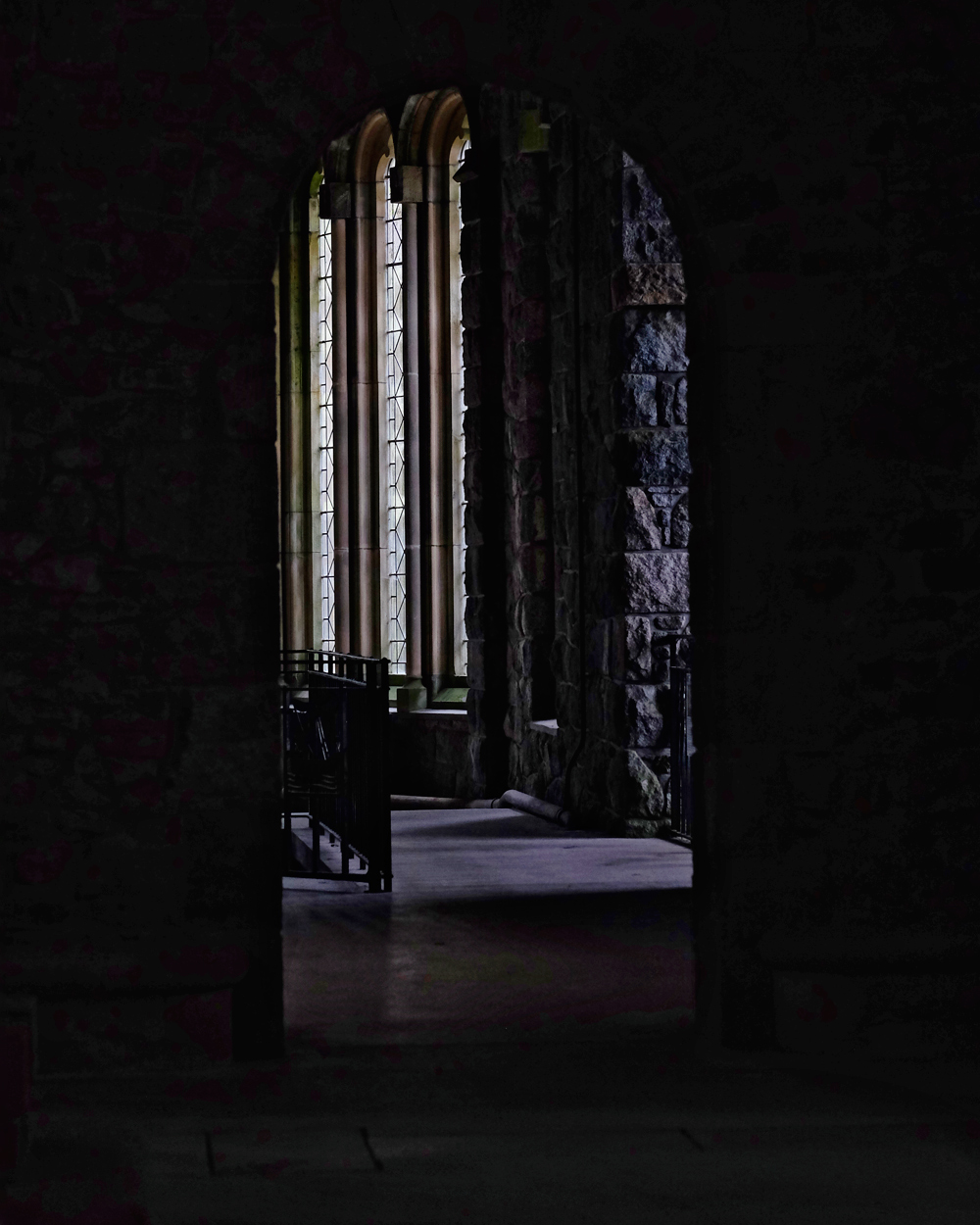 A dark, cloudy day . . .
A dark, cloudy day . . .
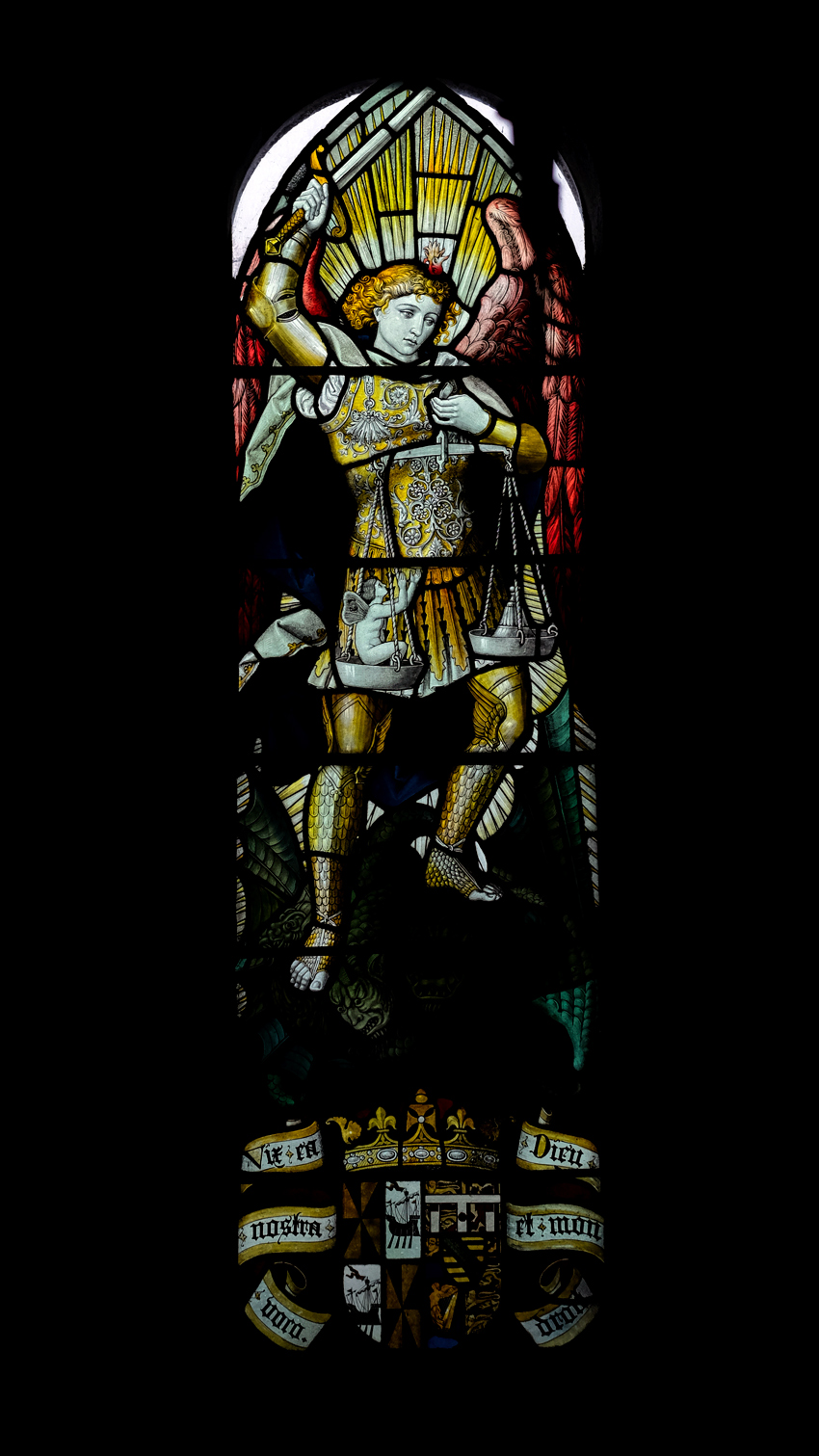 There was some fine stained glass there as well.
There was some fine stained glass there as well.
 A very stylized effect.
A very stylized effect.
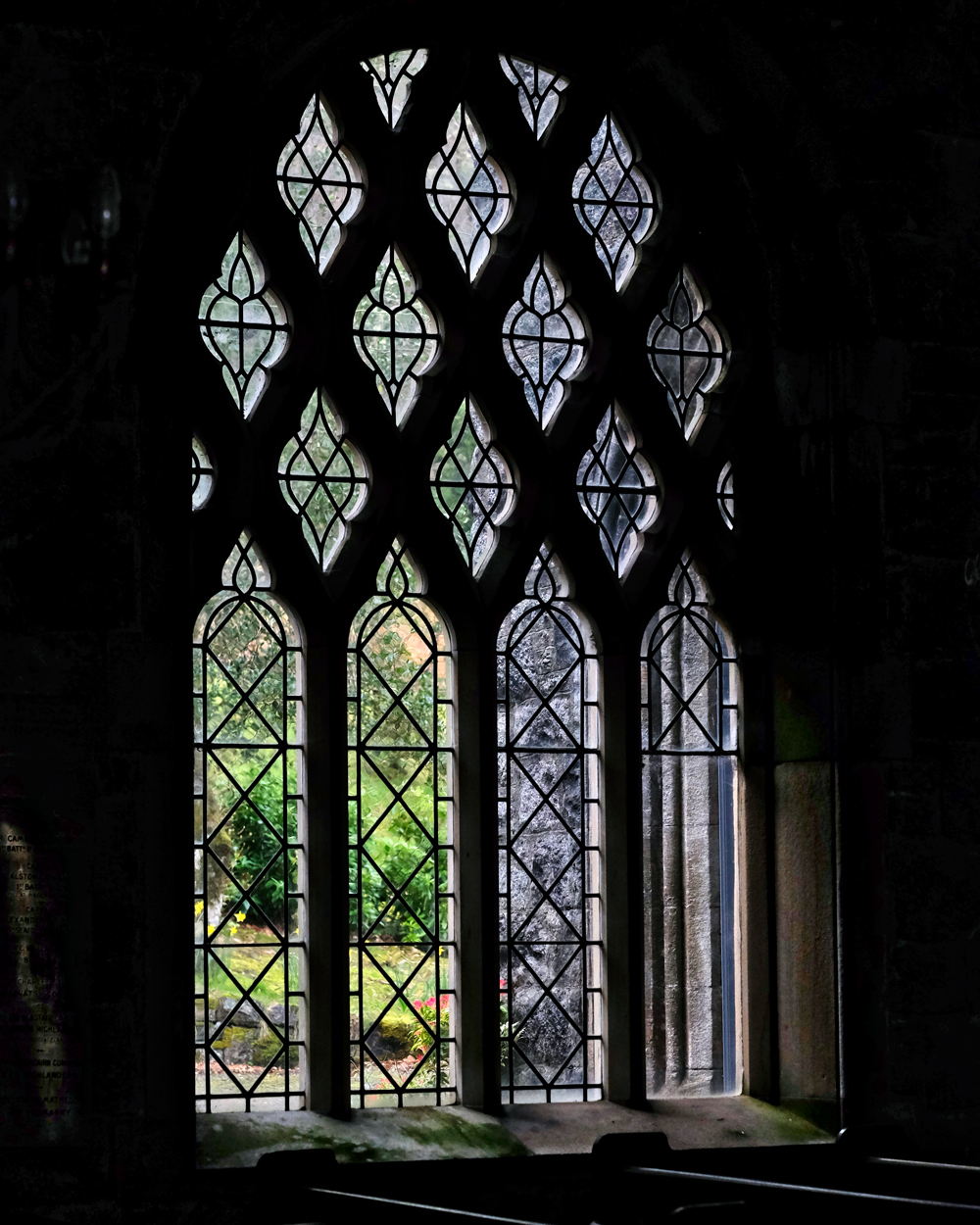 A wonderful window to the world . . .
A wonderful window to the world . . .
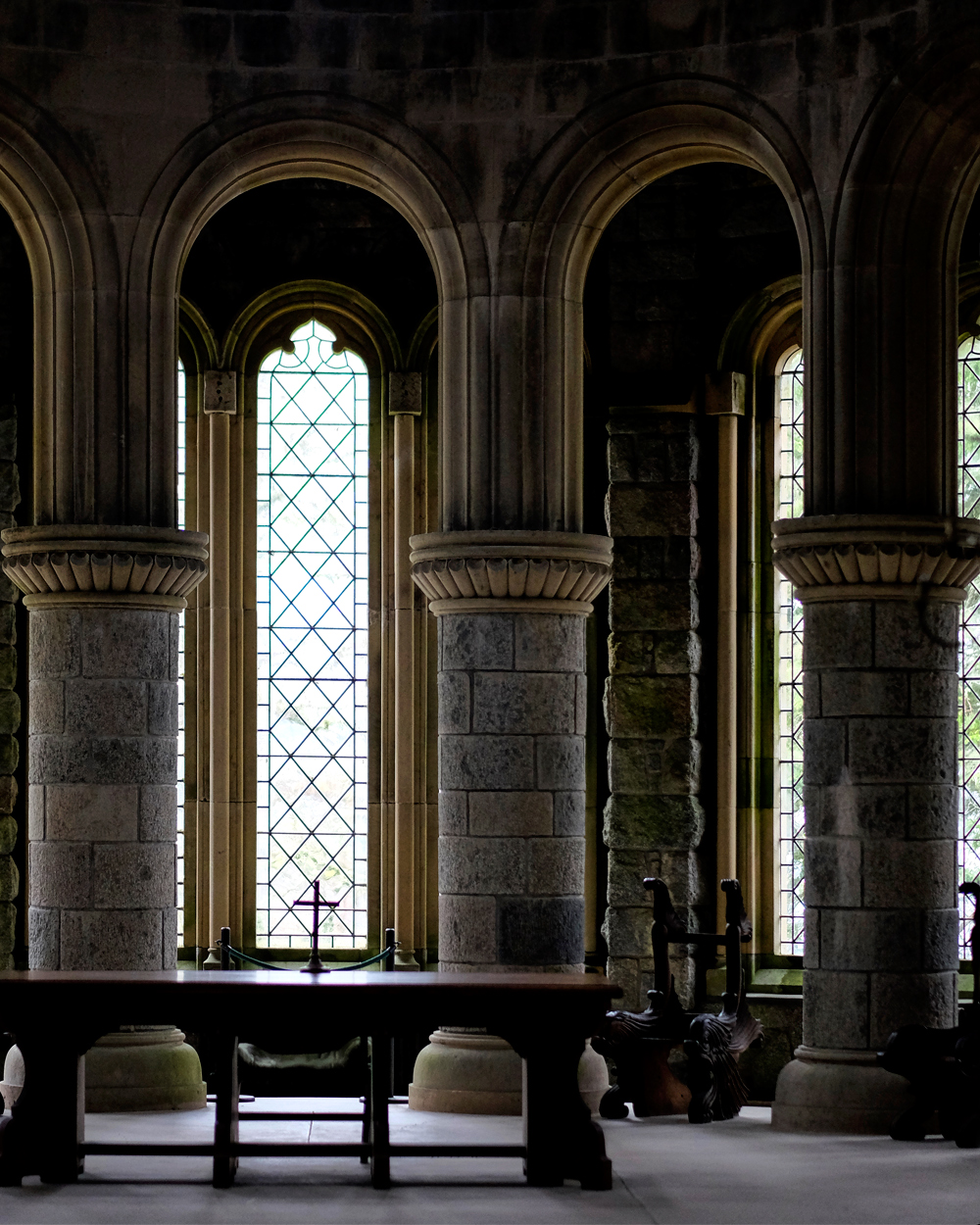 Simple, straightforward furniture.
Simple, straightforward furniture.
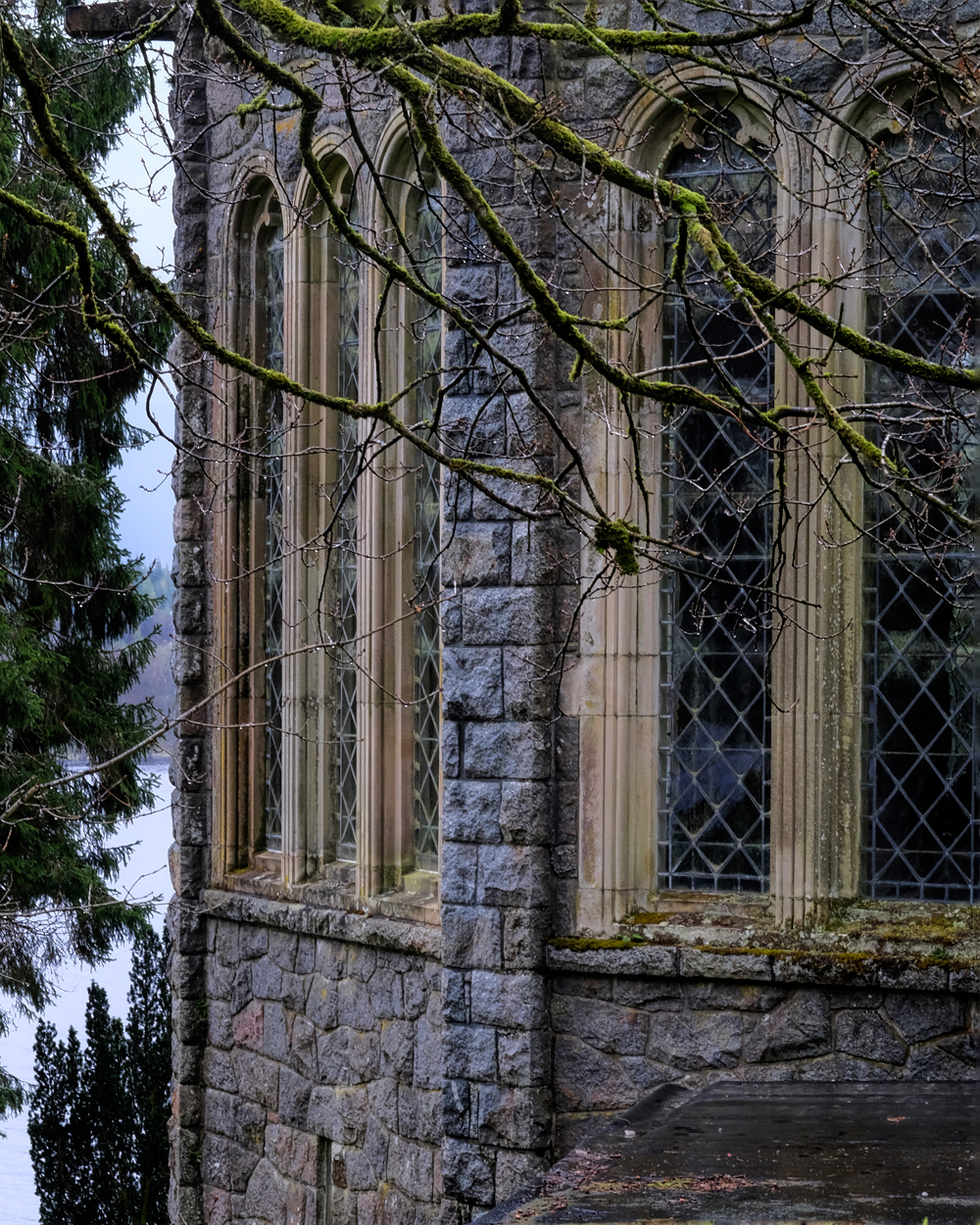 Saint Conan's Kirke.
Saint Conan's Kirke.
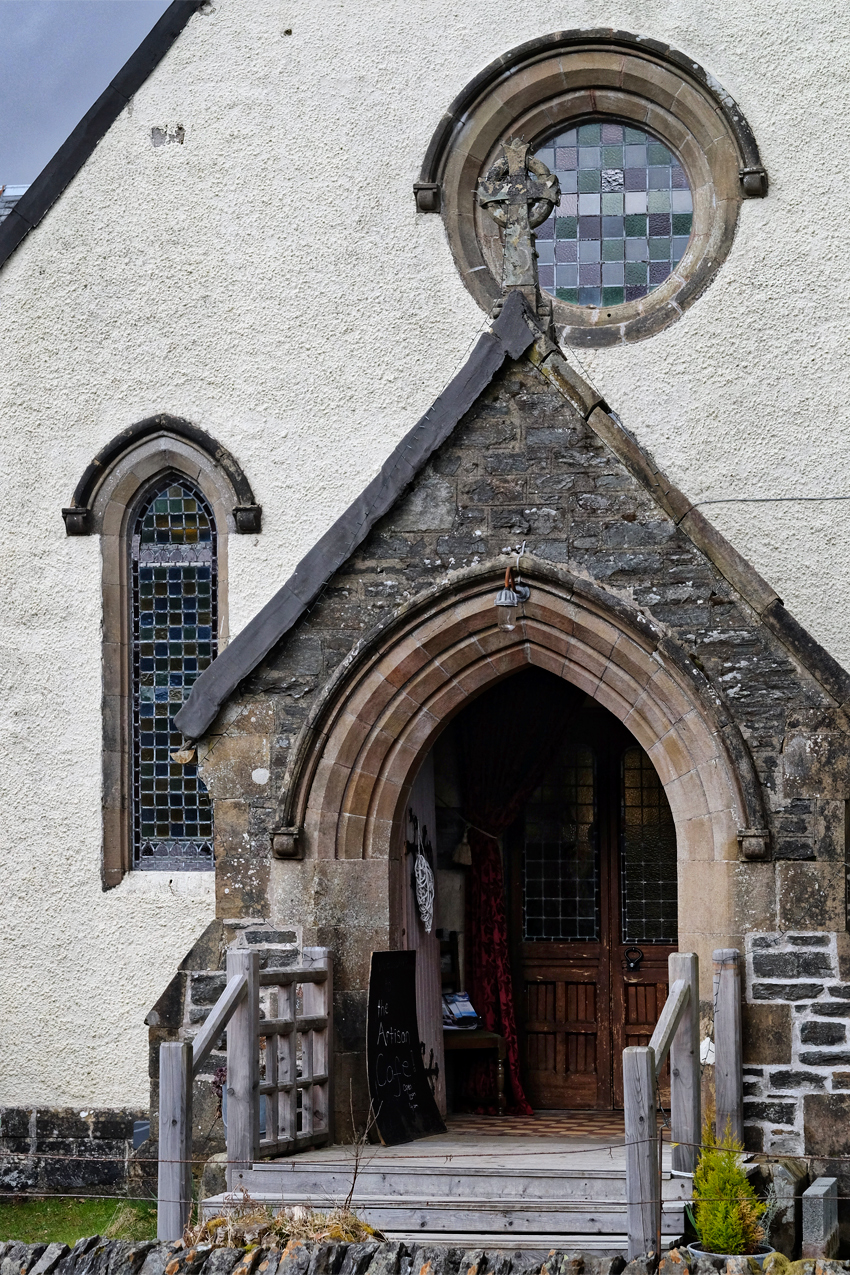 Not all churches are churches. This old rural church has been converted to a cafe . . . we stopped for coffee, tea and, of curse, scones.
Not all churches are churches. This old rural church has been converted to a cafe . . . we stopped for coffee, tea and, of curse, scones.
 The cafe retained many original features of the church.
The cafe retained many original features of the church.
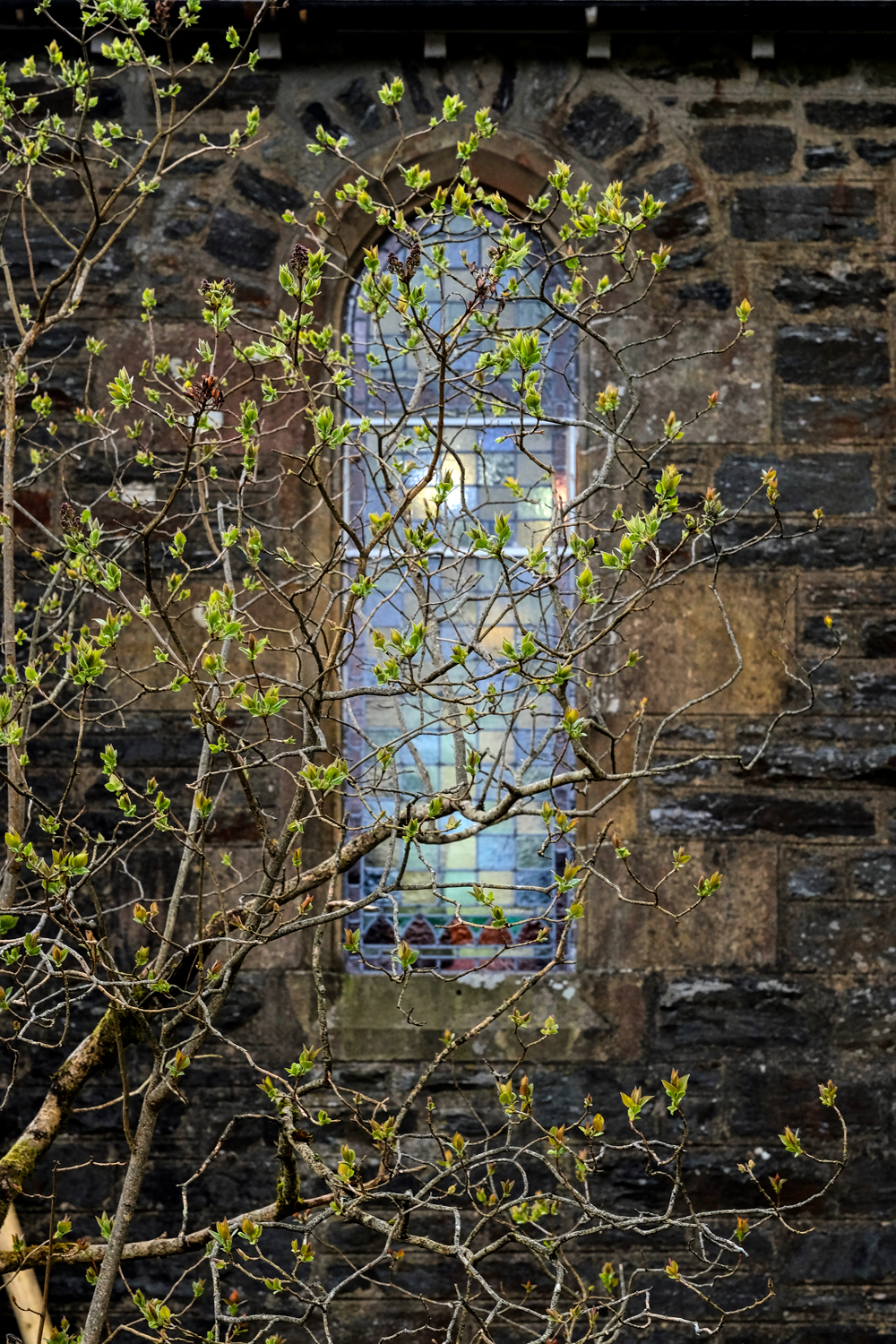 The very beginning of Spring . . . and the first buds.
The very beginning of Spring . . . and the first buds.
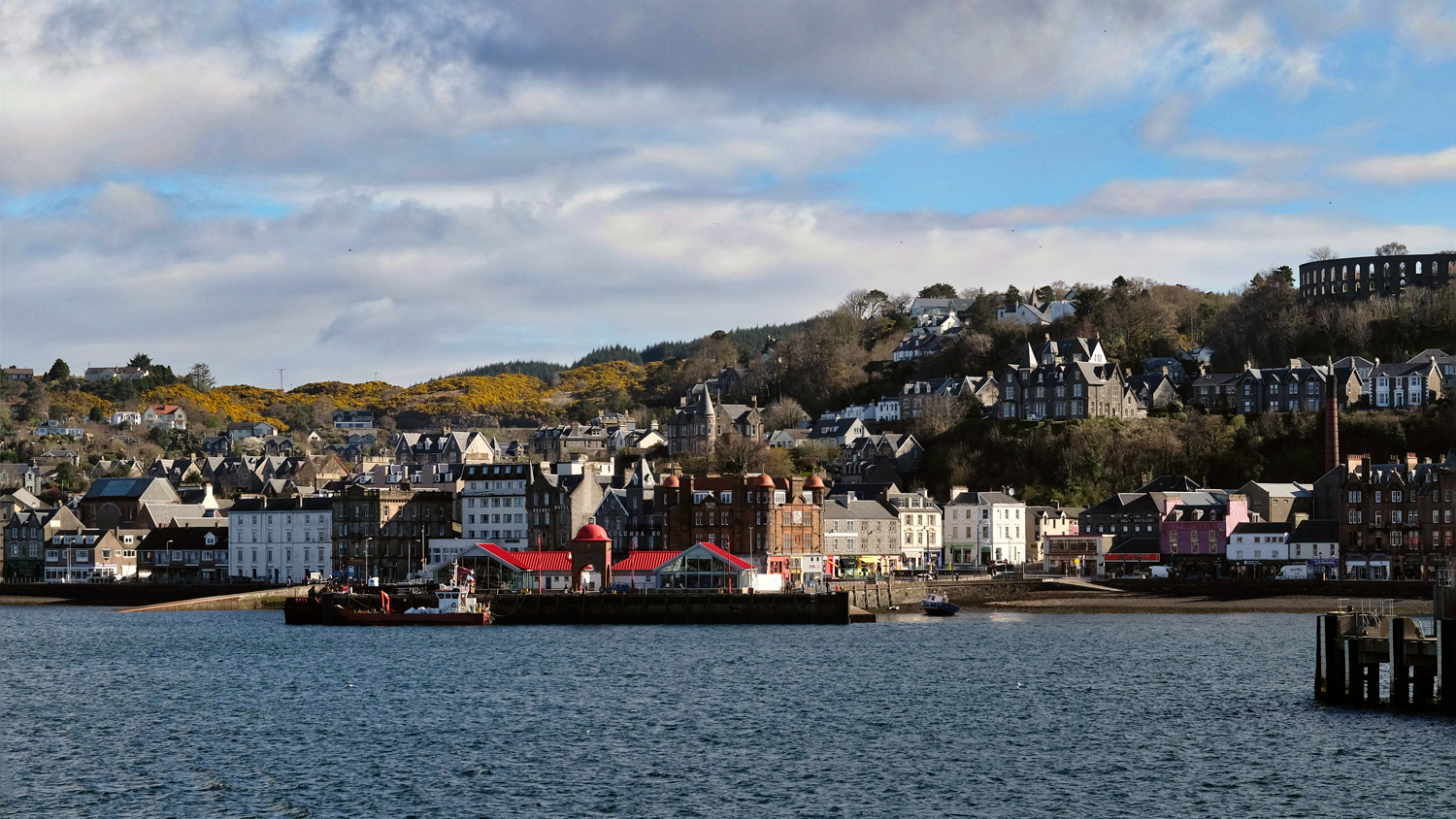 We arrived in the old harbour town of Oban. It is a favorite place of ours to visit, not just because of the ferries we have taken from here, but because our favorite restaurant to have fresh oysters is there (front and center on the dock with the bright red roof). "The best oysters in the world" - my wife says.
We arrived in the old harbour town of Oban. It is a favorite place of ours to visit, not just because of the ferries we have taken from here, but because our favorite restaurant to have fresh oysters is there (front and center on the dock with the bright red roof). "The best oysters in the world" - my wife says.
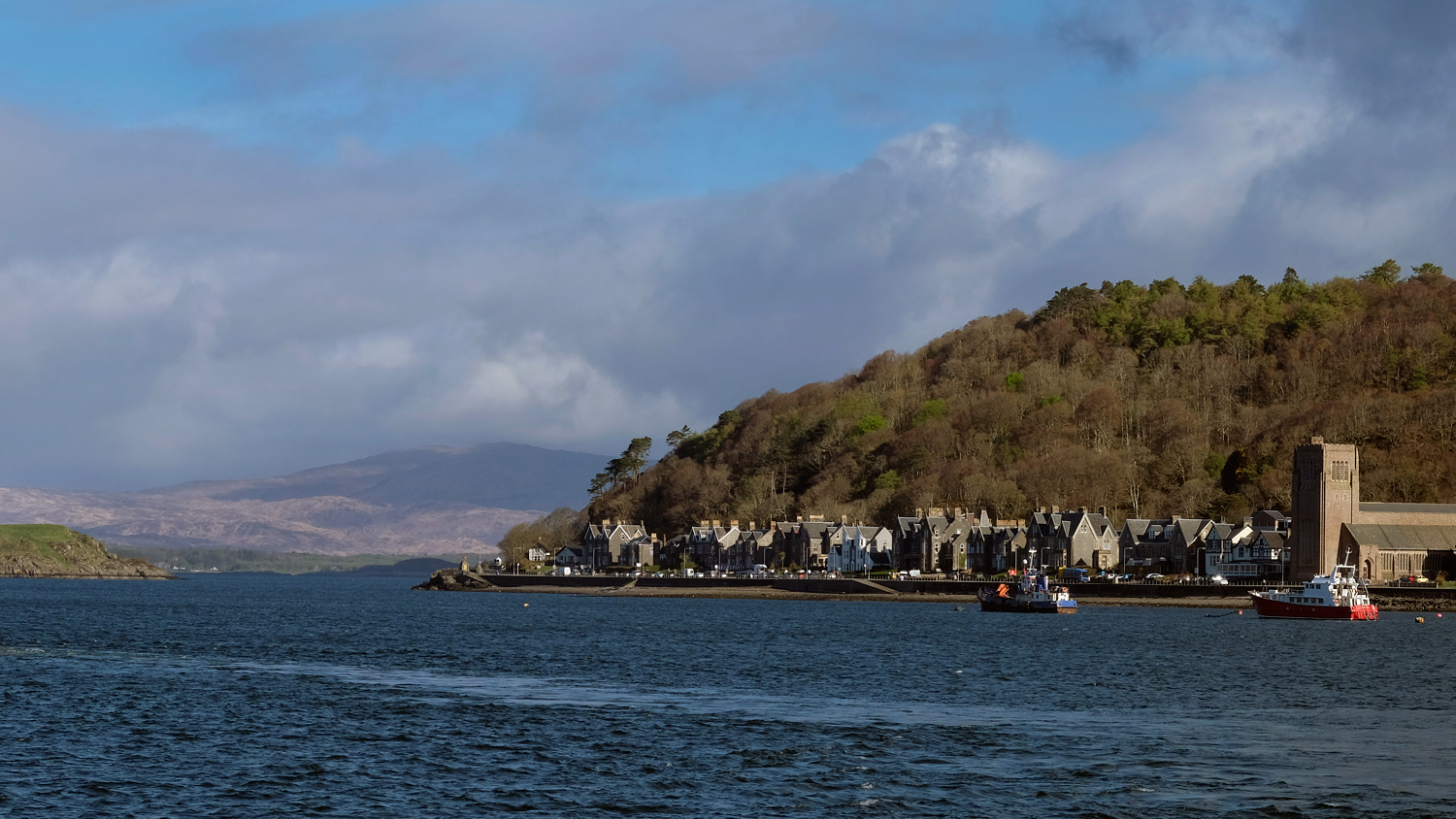 We checked into a nicely restored old seafront hotel (the only white one in the row of guesthouses and B&Bs).
We checked into a nicely restored old seafront hotel (the only white one in the row of guesthouses and B&Bs).
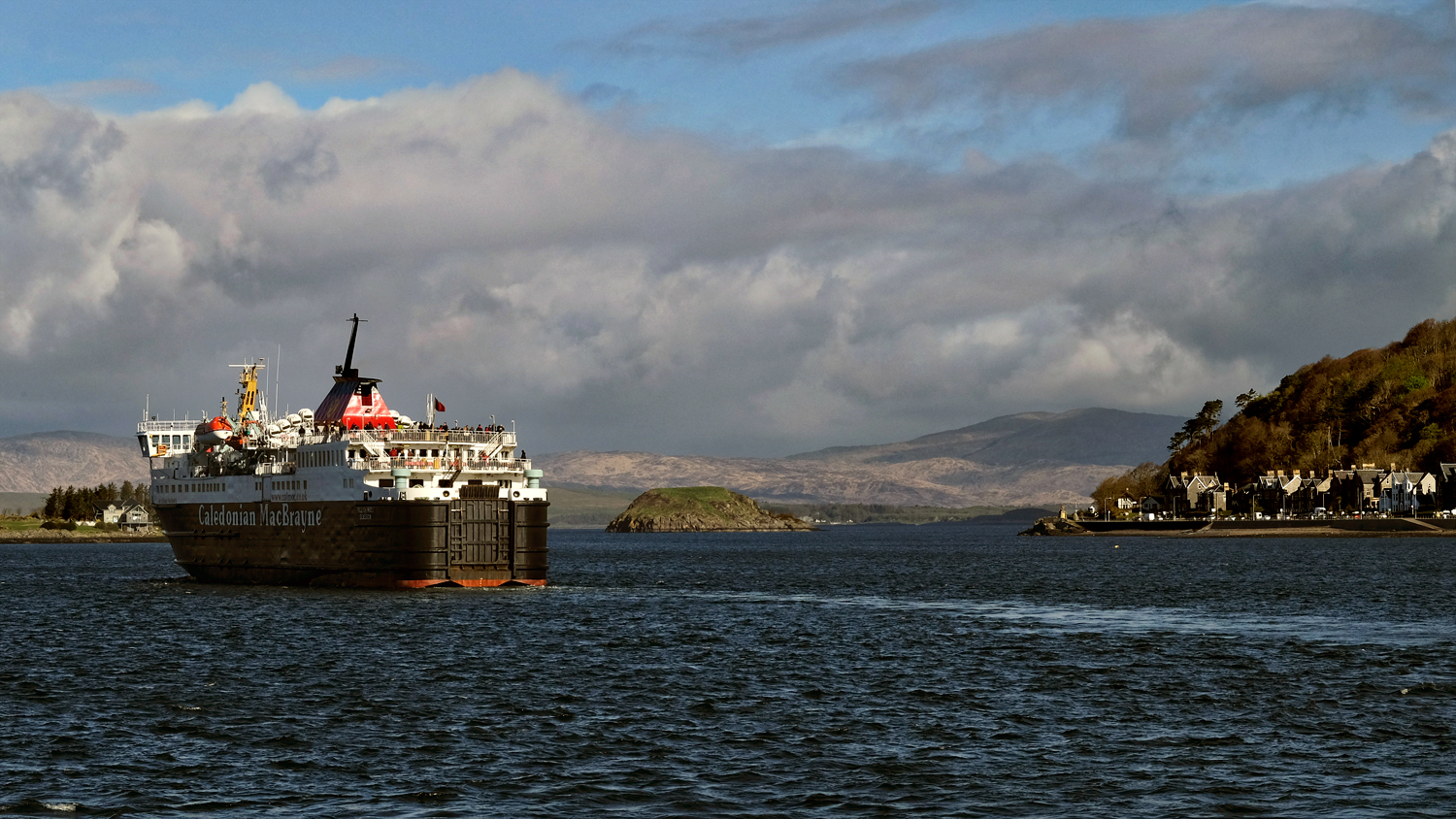 Ferry service to many of the western isles of Scotland originate from Oban.
Ferry service to many of the western isles of Scotland originate from Oban.
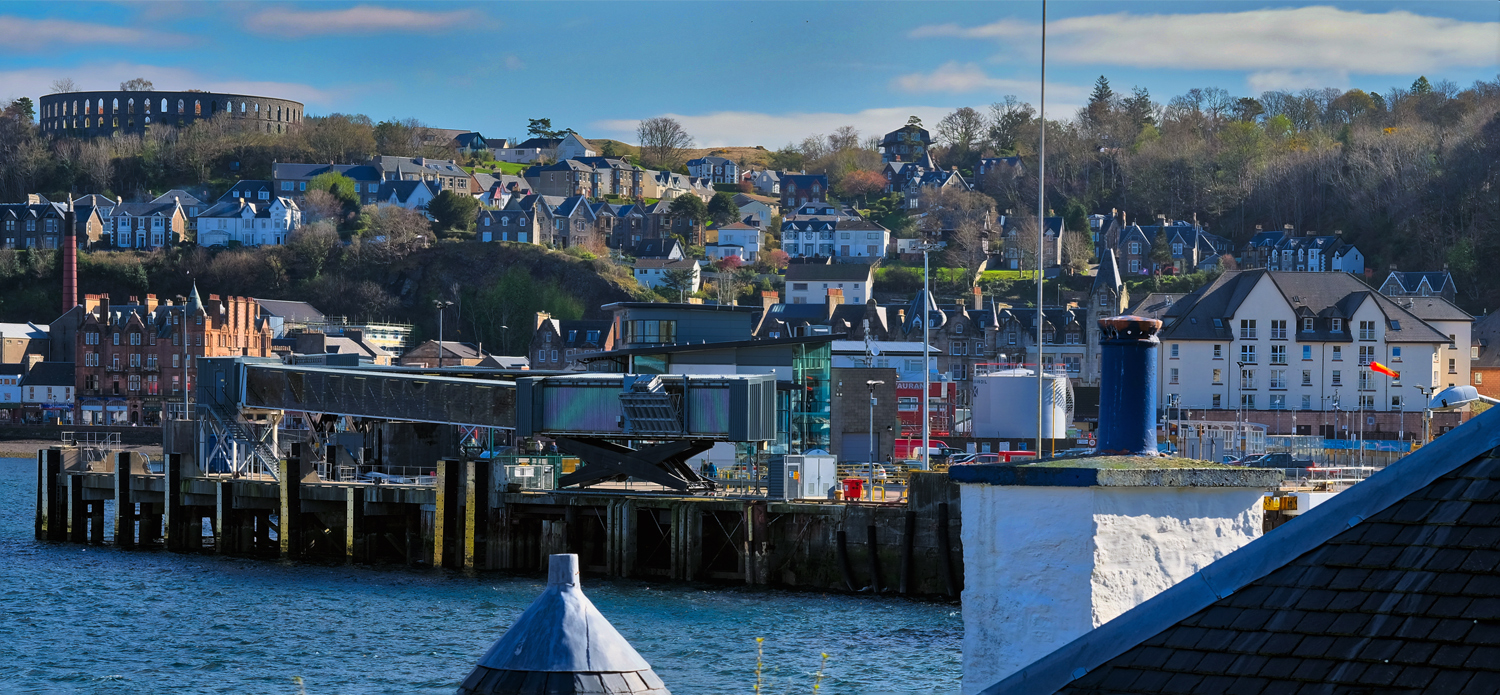 The Oban Ferry Terminal (foreground) where we departed for the Isle of Mull. That is a fake ruin on the horizon, a folly, built in Victorian times when ancient ruins were fashionable to have in your city.
The Oban Ferry Terminal (foreground) where we departed for the Isle of Mull. That is a fake ruin on the horizon, a folly, built in Victorian times when ancient ruins were fashionable to have in your city.
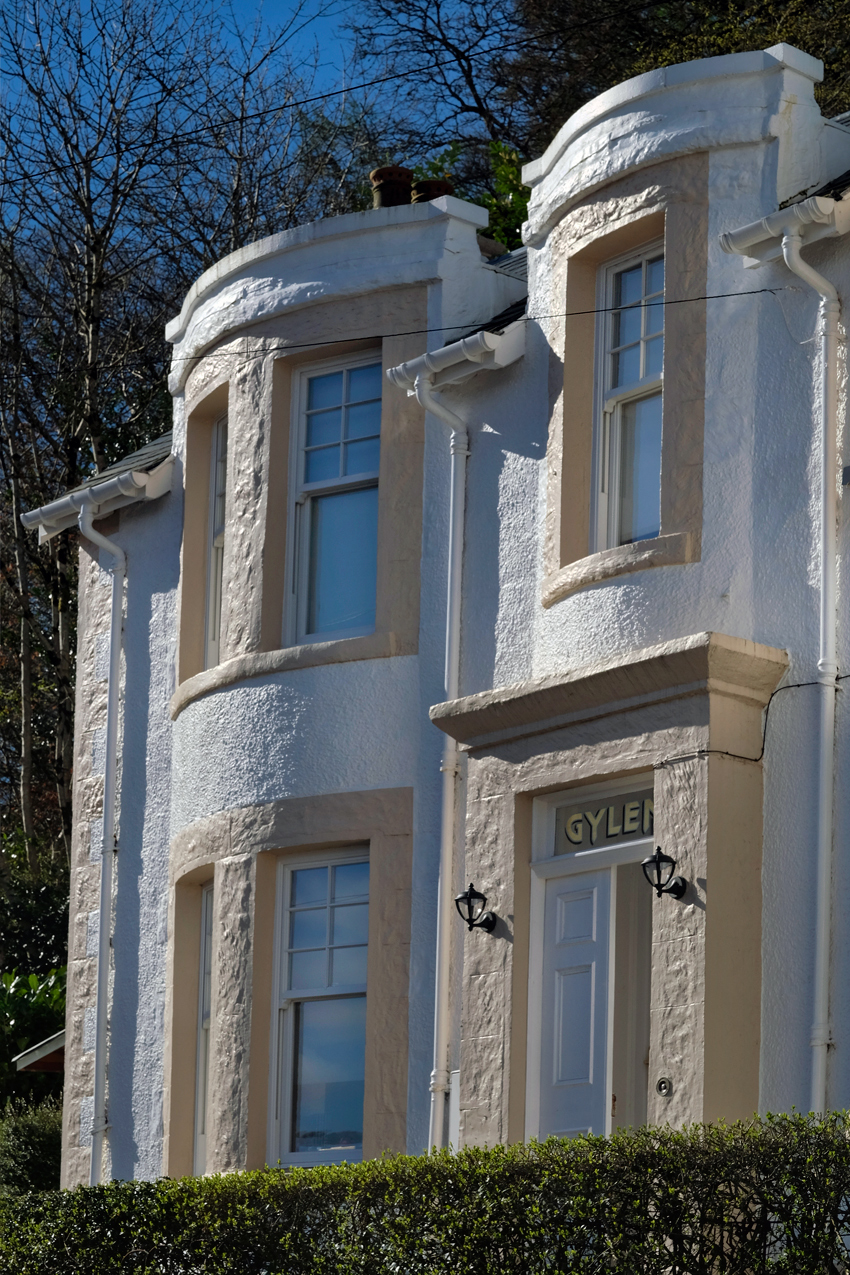 Oban has some fine old architecture. Here, Gaylen House.
Oban has some fine old architecture. Here, Gaylen House.
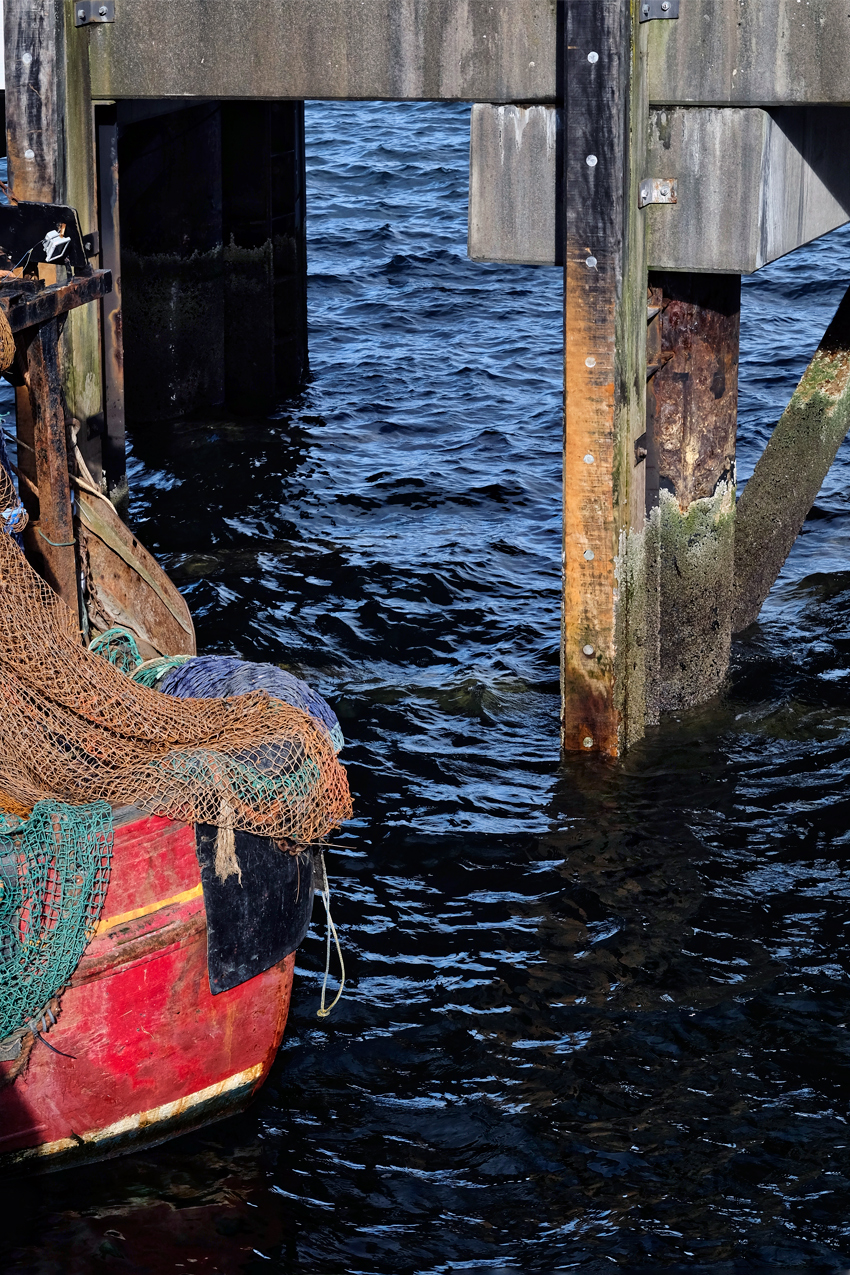 Down along the pier, Oban harbour.
Down along the pier, Oban harbour.
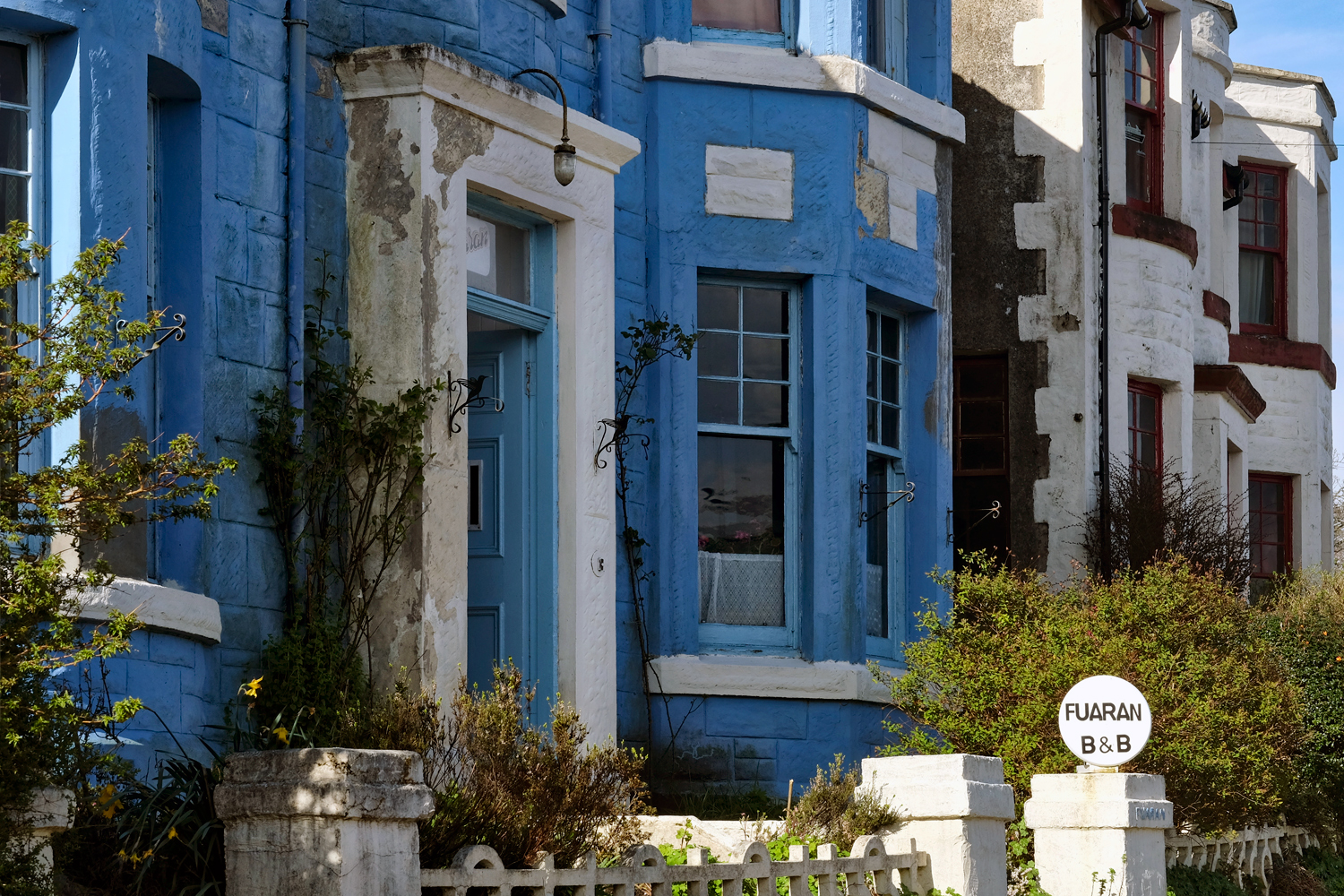 A row of old Oban harbour side B&Bs.
A row of old Oban harbour side B&Bs.
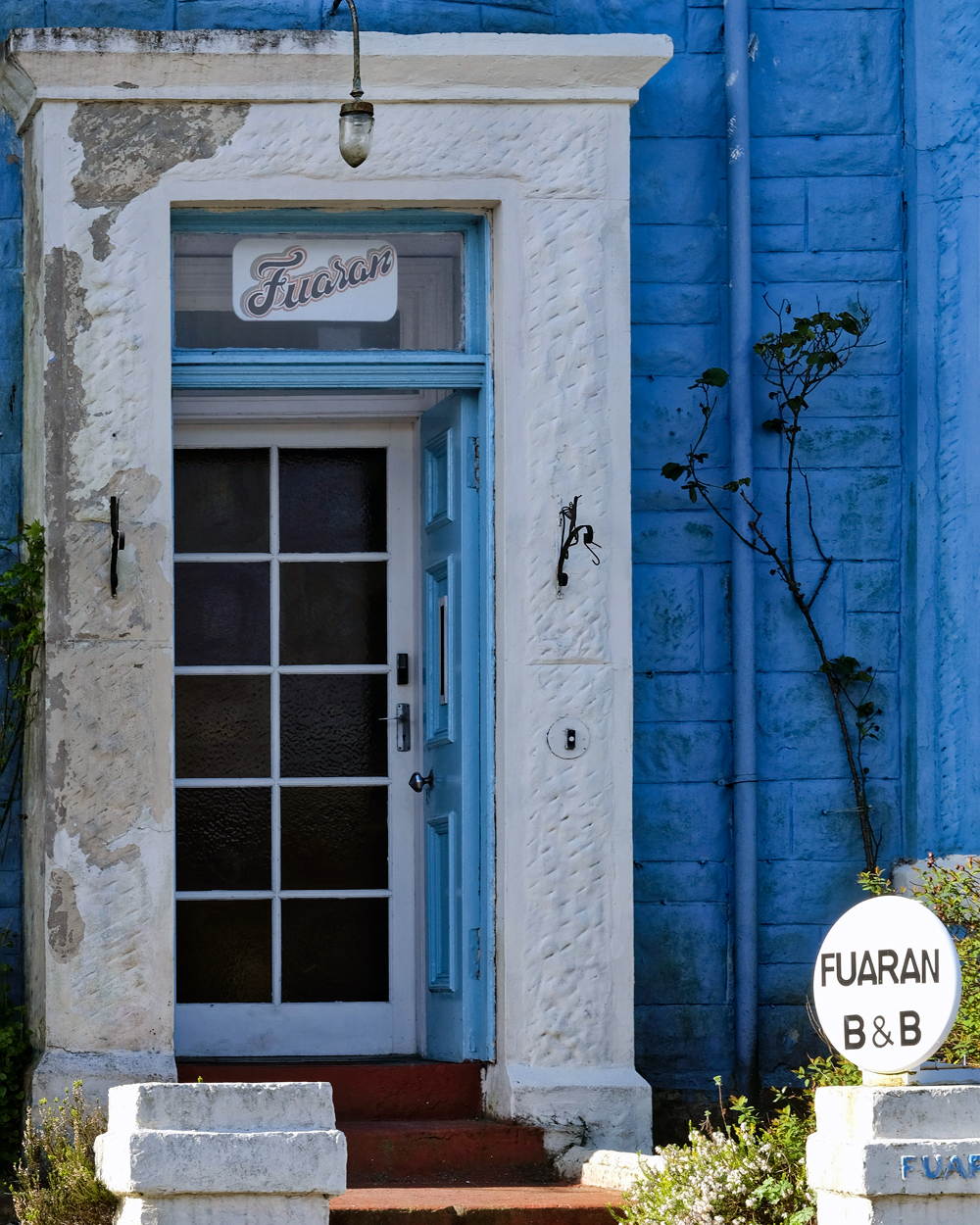 Quaint, weathered, old world charm.
Quaint, weathered, old world charm.
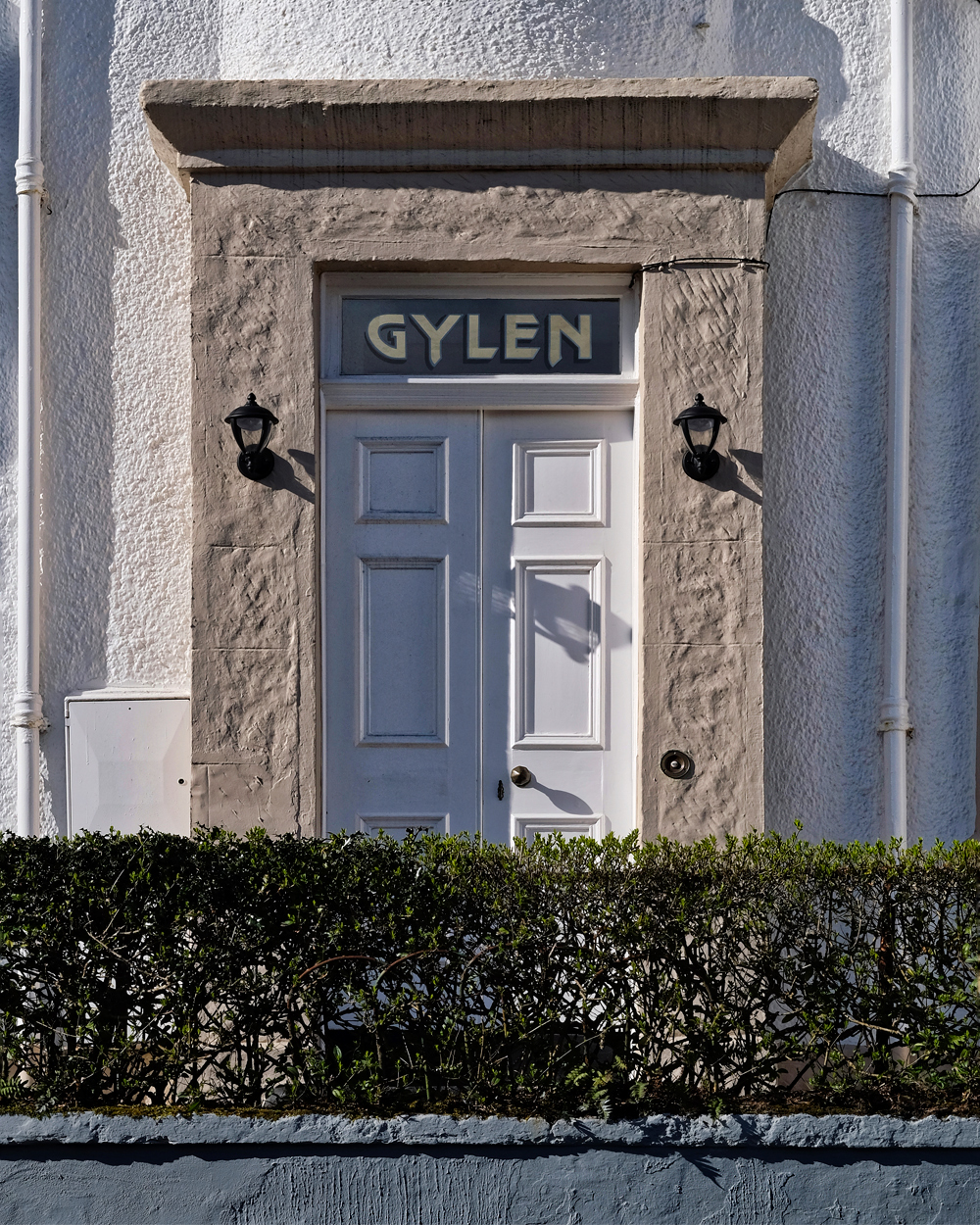 Weathered charm.
Weathered charm.
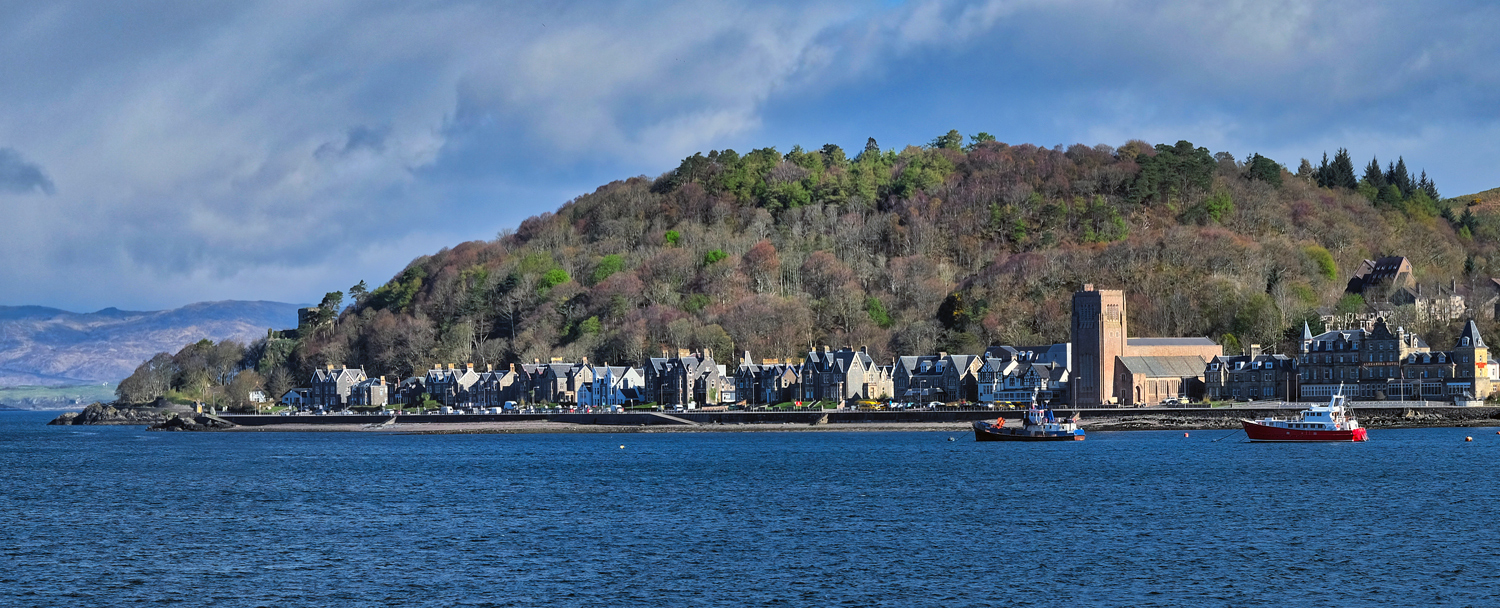 But Oban was just a stopover . . . our destination was across the water . . . the Isle of Mull.
But Oban was just a stopover . . . our destination was across the water . . . the Isle of Mull.
 The ferry that took us to the Isle of Mull as it arrived in Oban.
The ferry that took us to the Isle of Mull as it arrived in Oban.
 The views from the windy deck of the ferry were breathtaking!
The views from the windy deck of the ferry were breathtaking!
 The rugged hills of the Isle of Mull.
The rugged hills of the Isle of Mull.
 The Isle of Mull in a nutshell . . . a sea economy and culture.
The Isle of Mull in a nutshell . . . a sea economy and culture.
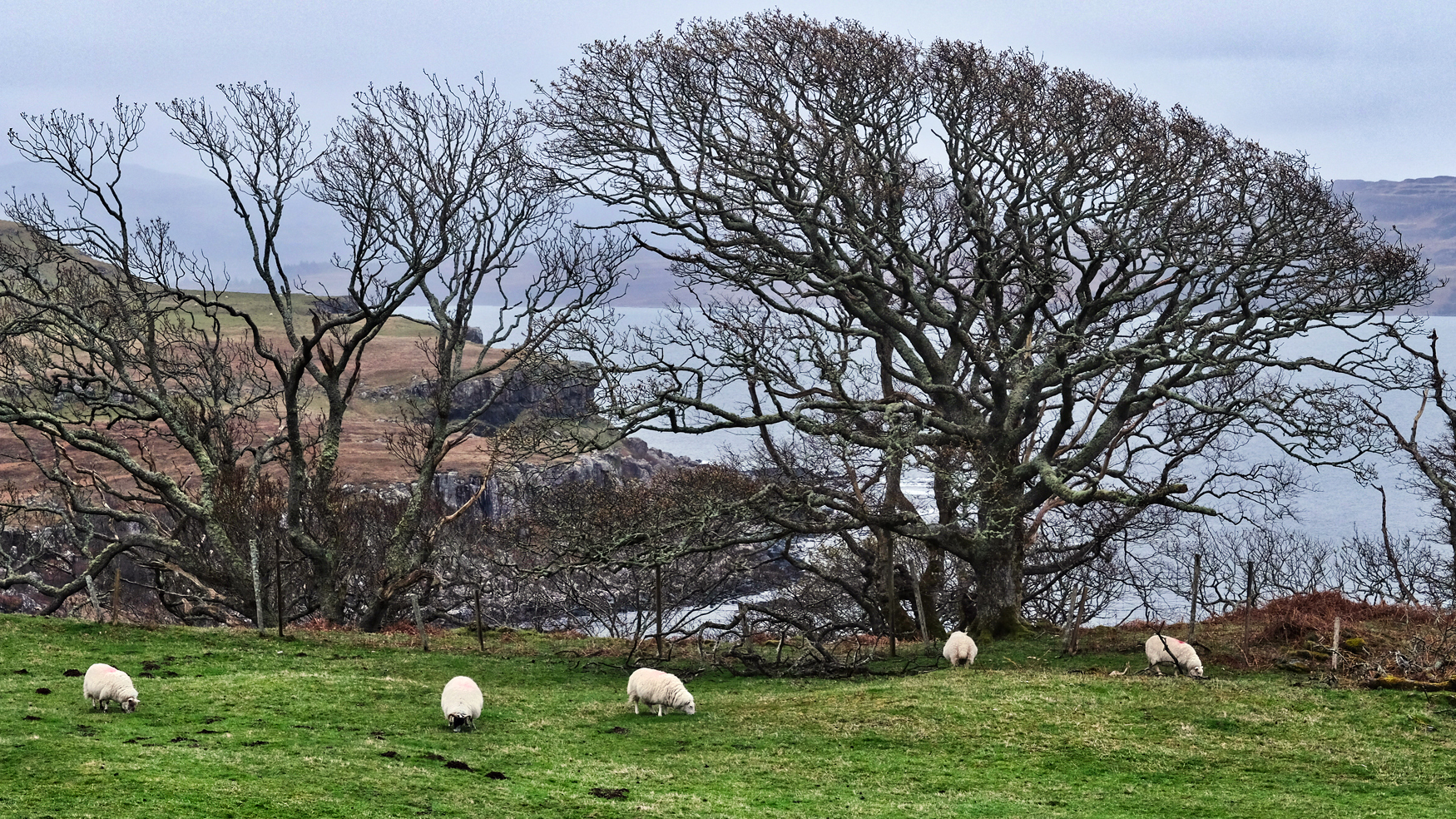 Friends and family visiting from Thailand means an opportunity for a road trip somewhere I have never been. The Isle of Mull, and it's atmospheric and moody landscapes and quaint seaside villages beckoned . . .
Friends and family visiting from Thailand means an opportunity for a road trip somewhere I have never been. The Isle of Mull, and it's atmospheric and moody landscapes and quaint seaside villages beckoned . . .
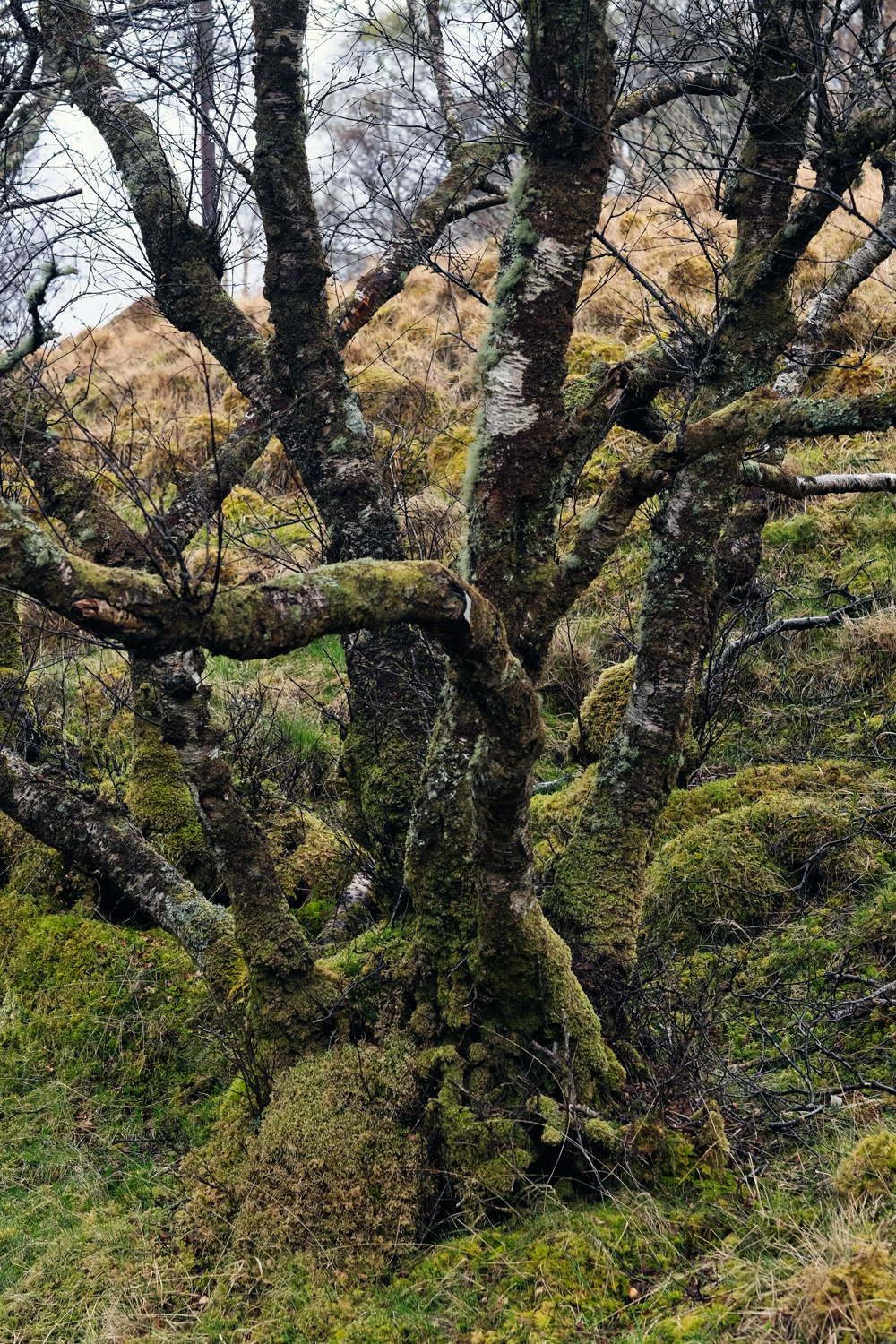 The west coast of the Isle of Mull is wet, wet, wet.
The west coast of the Isle of Mull is wet, wet, wet.
 Thick, wet moss of the west coast.
Thick, wet moss of the west coast.
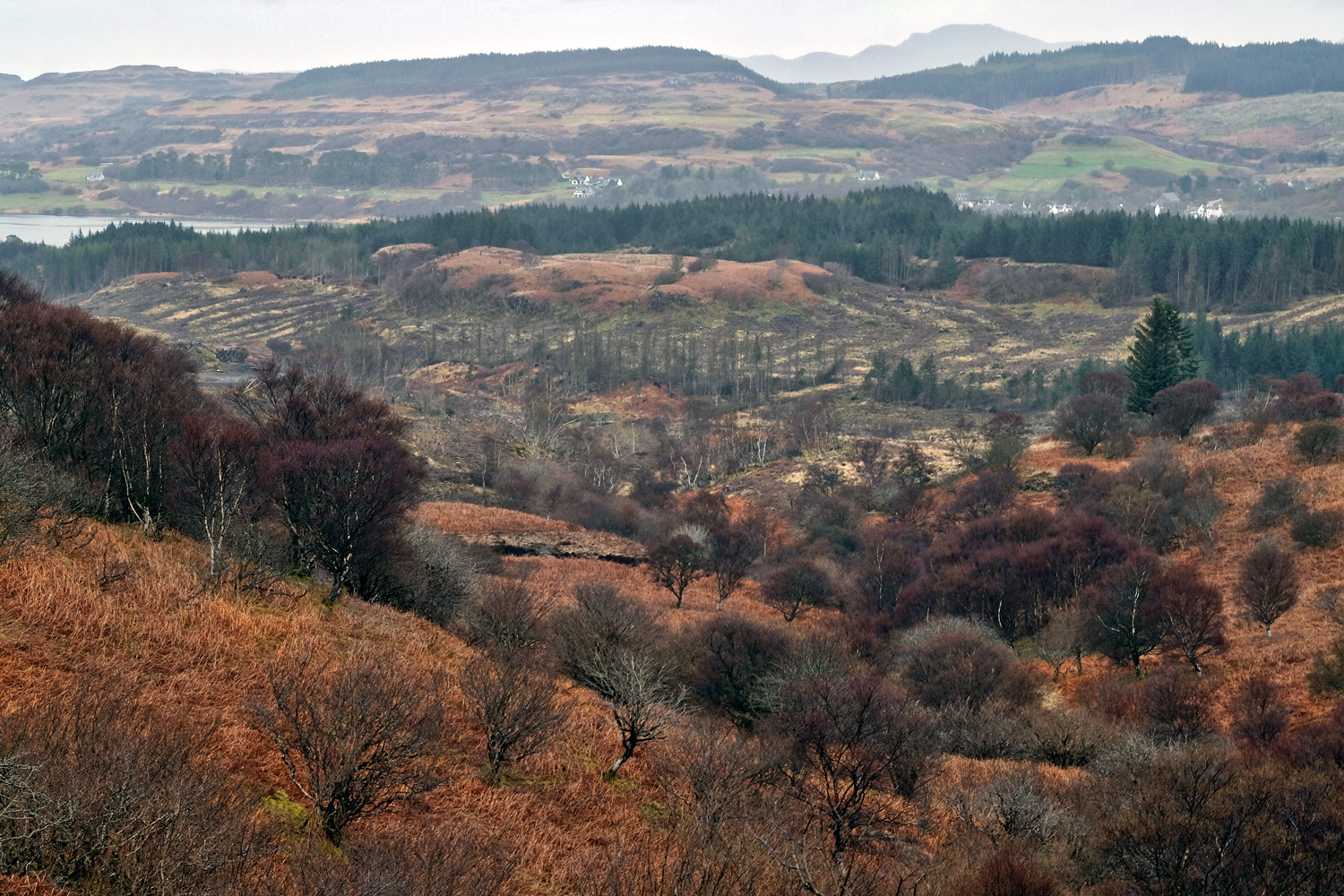 Early April 2017 . . . always very damp Isle of Mull. The dampness on a cloudy day certainly brings out the color of the decomposing autumn foliage. A view from a hill.
Early April 2017 . . . always very damp Isle of Mull. The dampness on a cloudy day certainly brings out the color of the decomposing autumn foliage. A view from a hill.
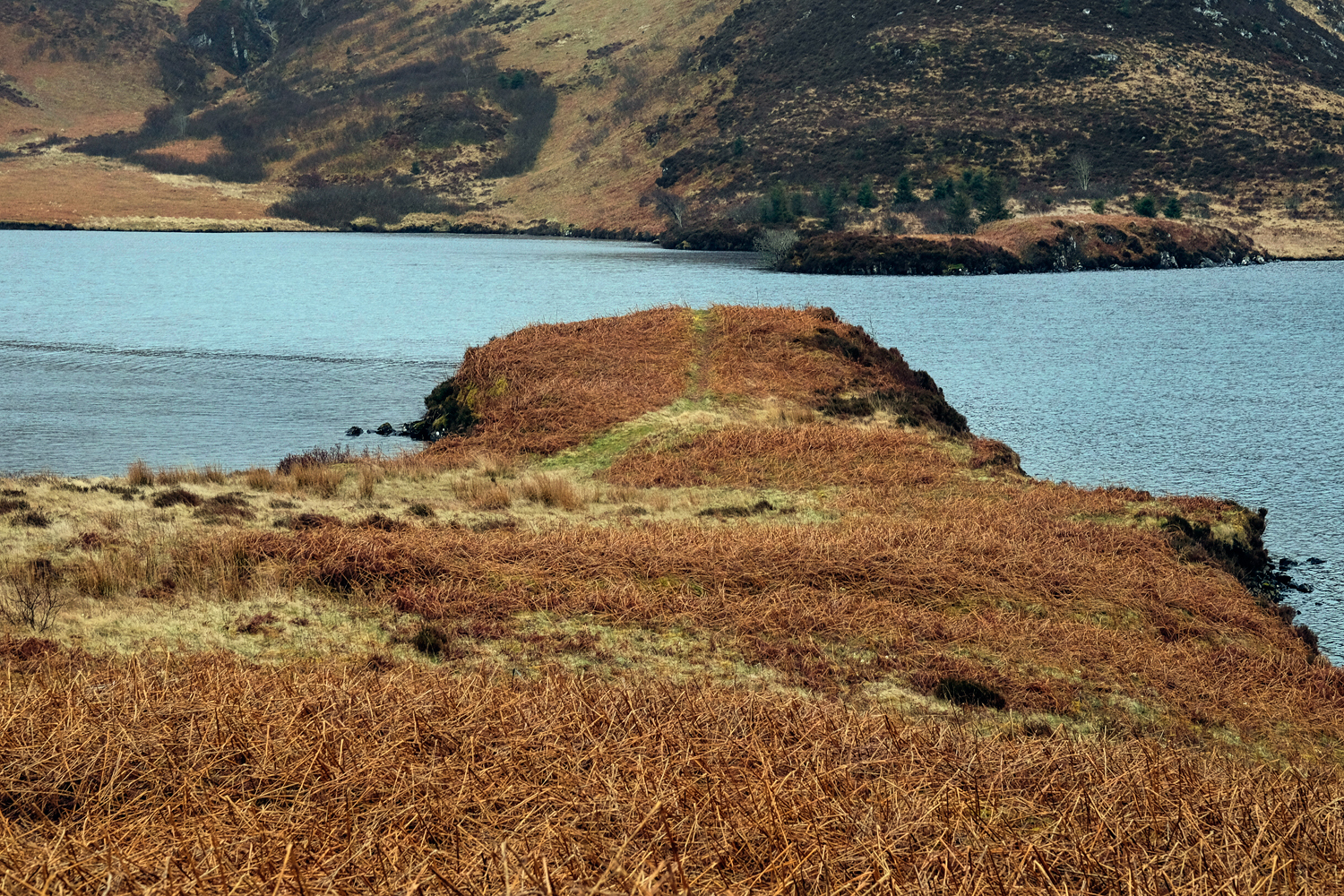 The sea invades the land around the whole of the Isle of Mull.
The sea invades the land around the whole of the Isle of Mull.
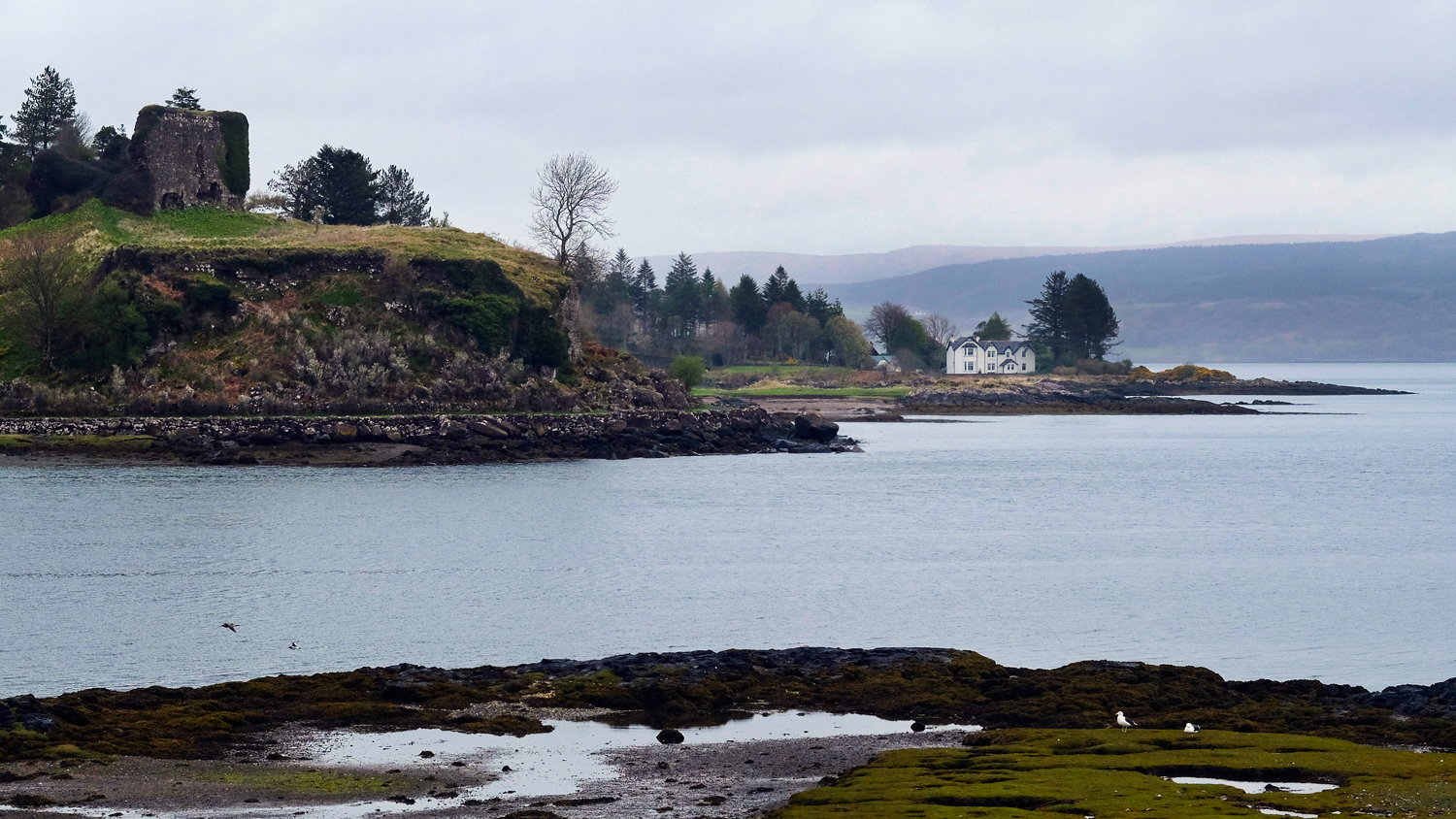 When we saw a castle ruin we would stop for photos.
When we saw a castle ruin we would stop for photos.
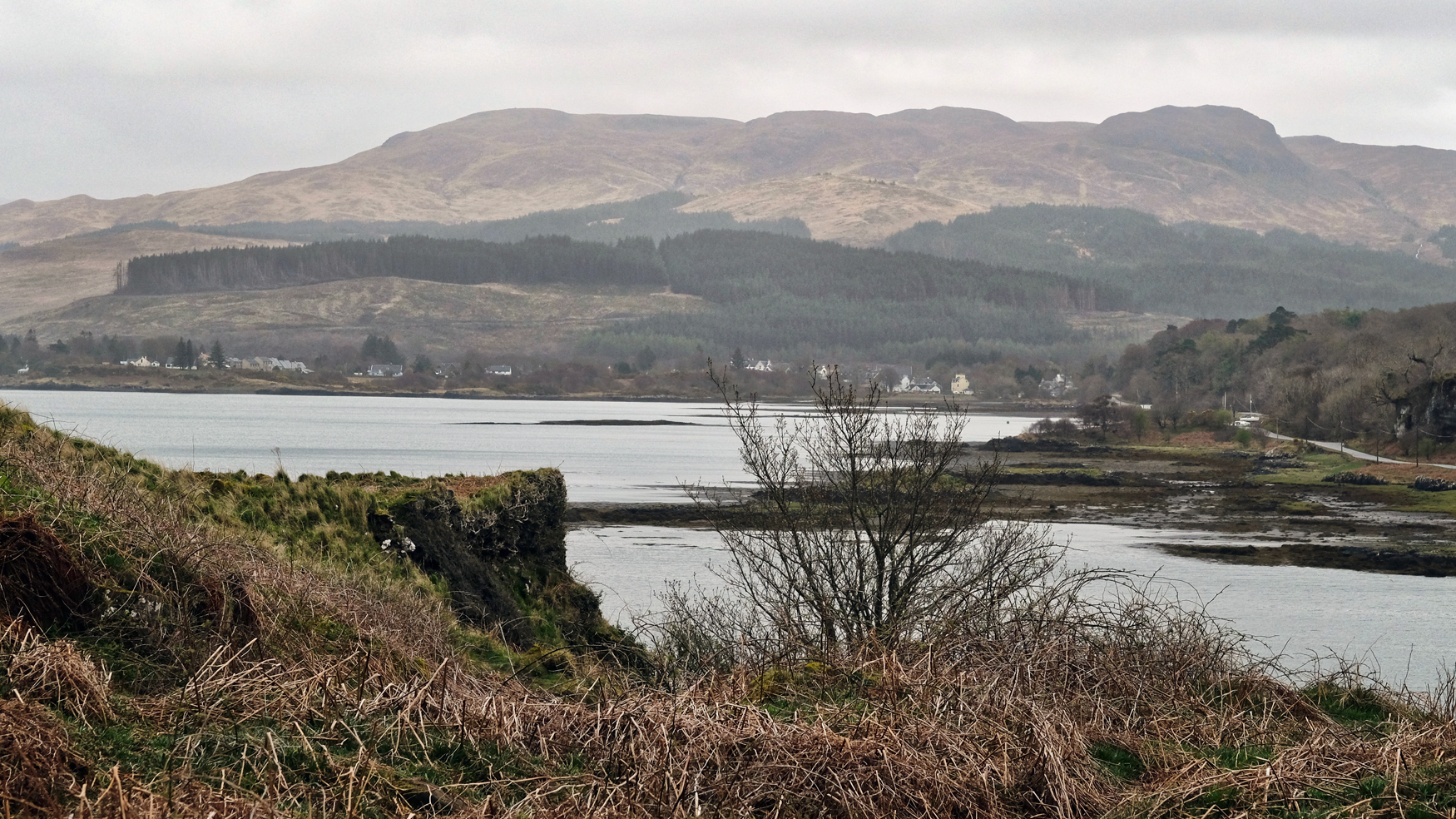 We stopped often and walked out to points of interest and to gaze upon the fantastically moody vistas.
We stopped often and walked out to points of interest and to gaze upon the fantastically moody vistas.
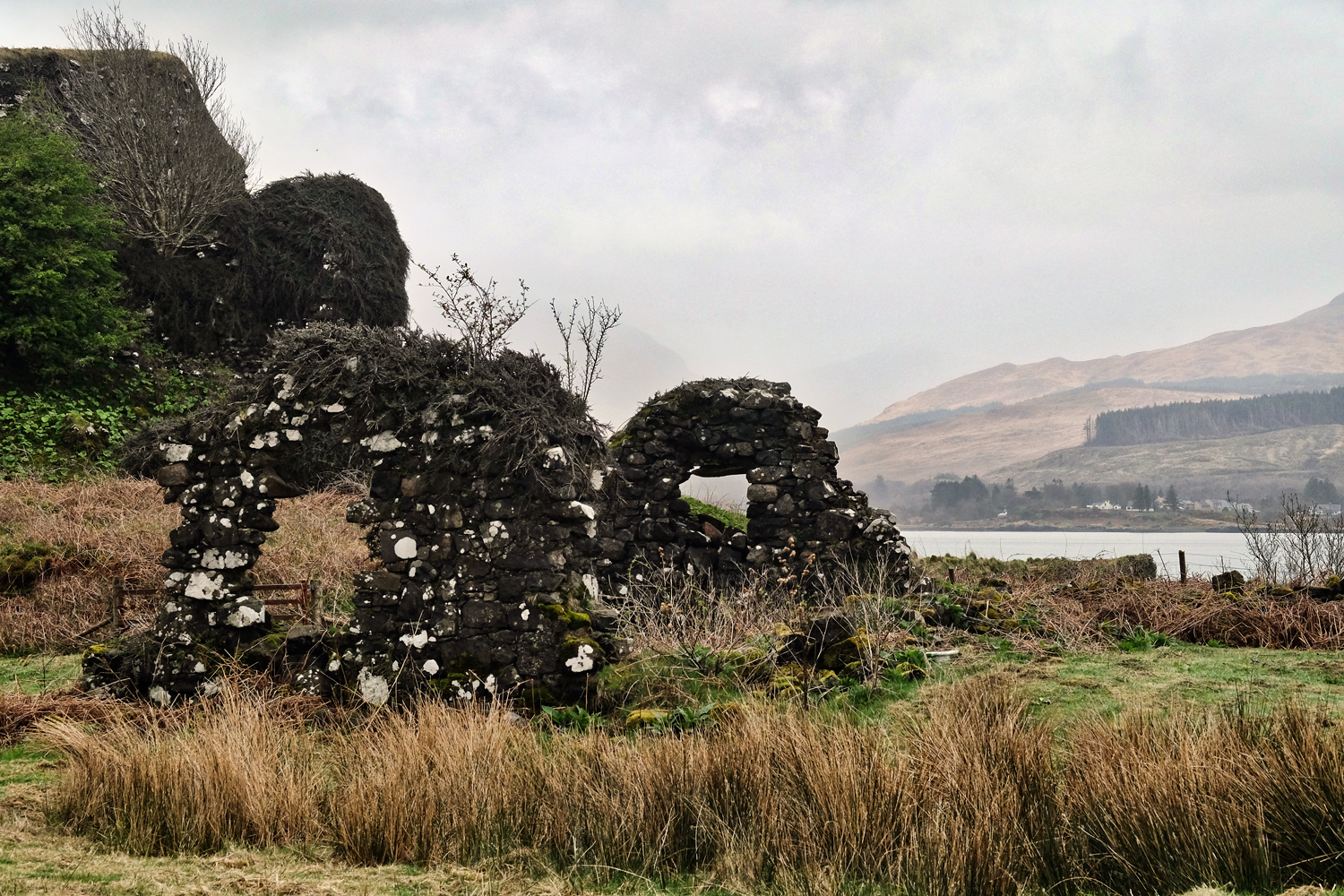 As is true for all of Scotland, there are always castle ruins to explore.
As is true for all of Scotland, there are always castle ruins to explore.
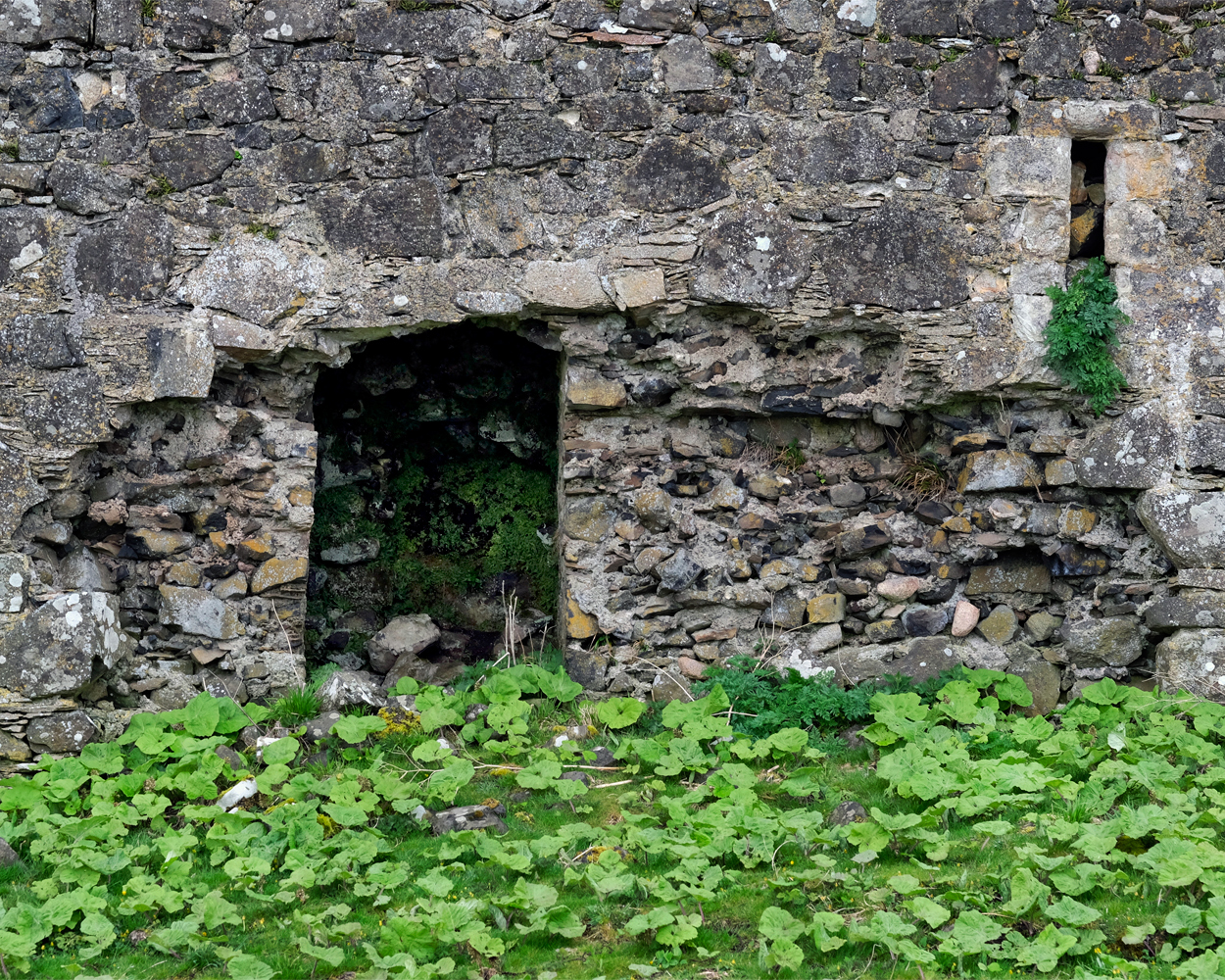 Castle ruins everywhere. These are the ruins of 14th century Aros Castle.
Castle ruins everywhere. These are the ruins of 14th century Aros Castle.
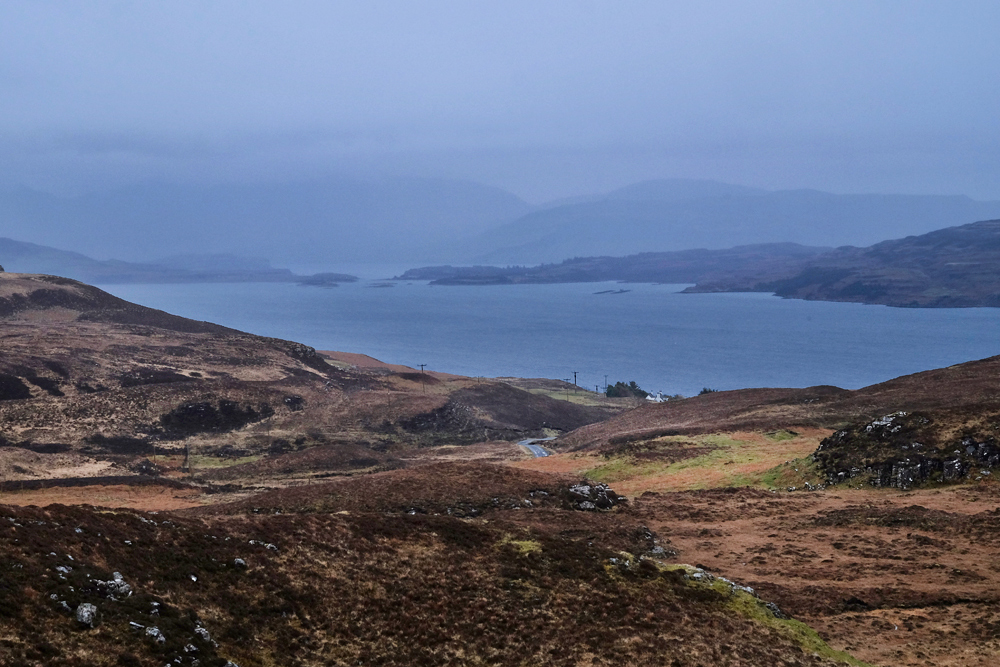 Isle of Mull always presents a strange, otherworldly view.
Isle of Mull always presents a strange, otherworldly view.
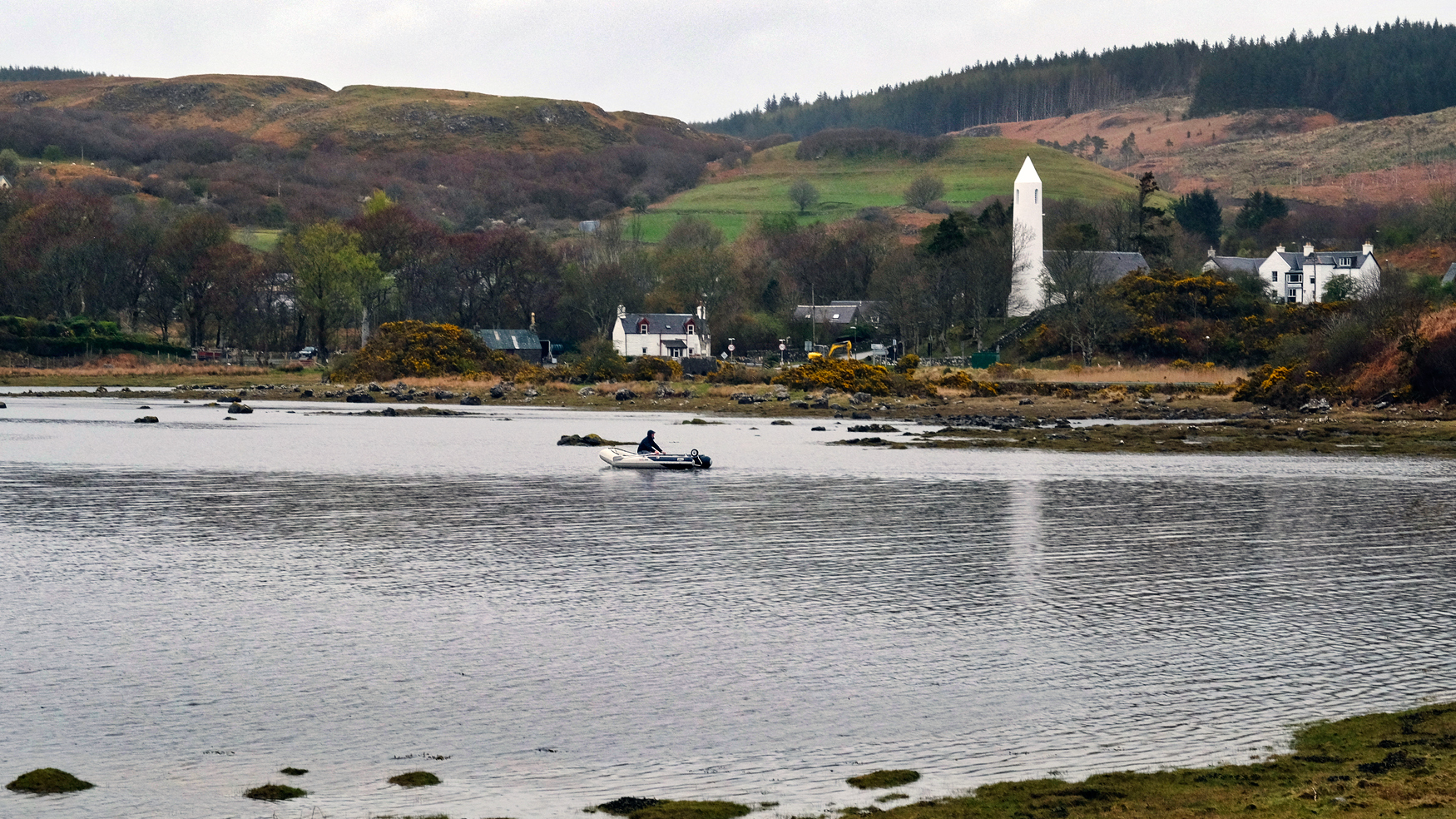 A fisherman out on an Isle of Mull inlet.
A fisherman out on an Isle of Mull inlet.
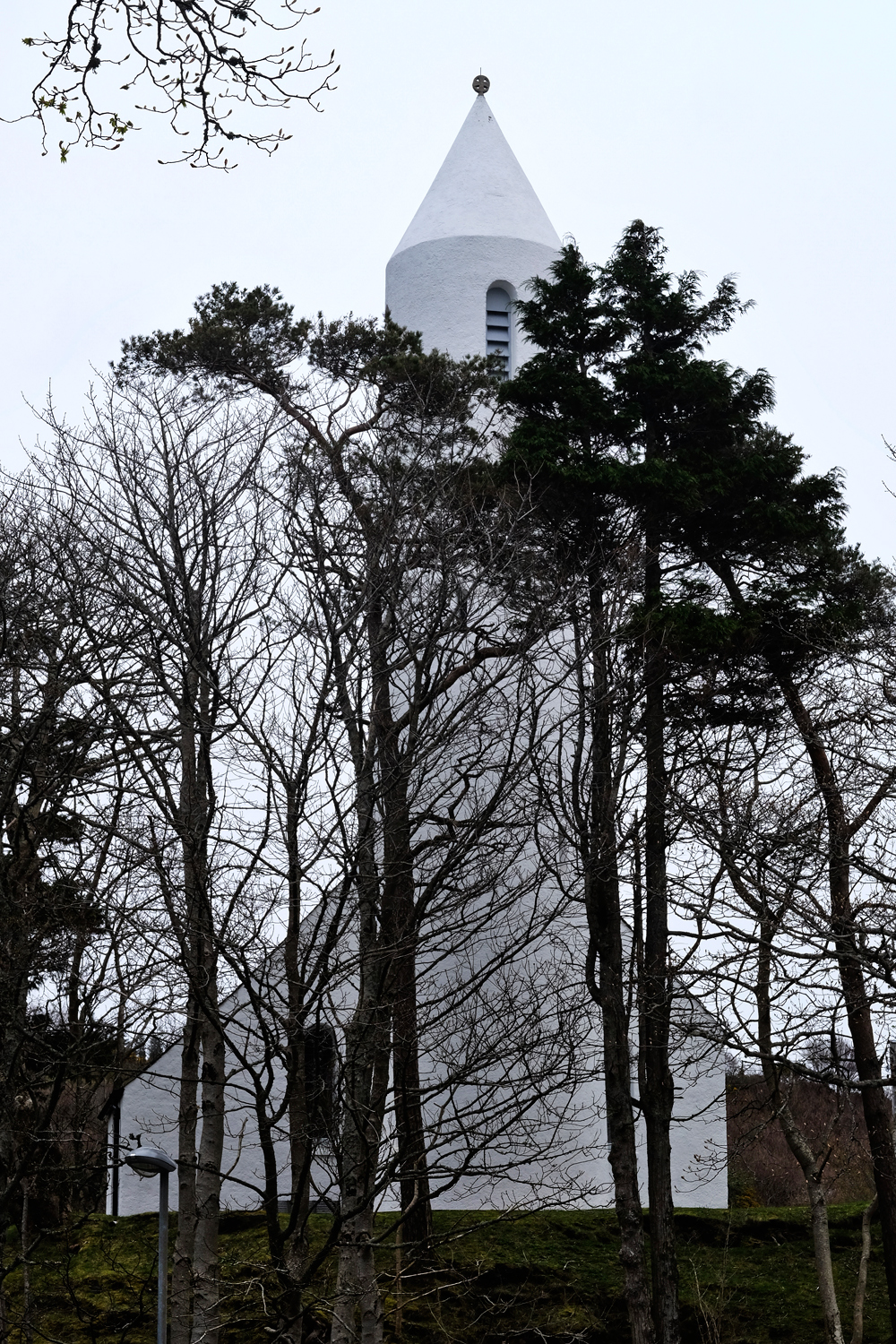 Small villages dot the inlets.
Small villages dot the inlets.
 This church was in a style I had not seen before in Scotland.
This church was in a style I had not seen before in Scotland.
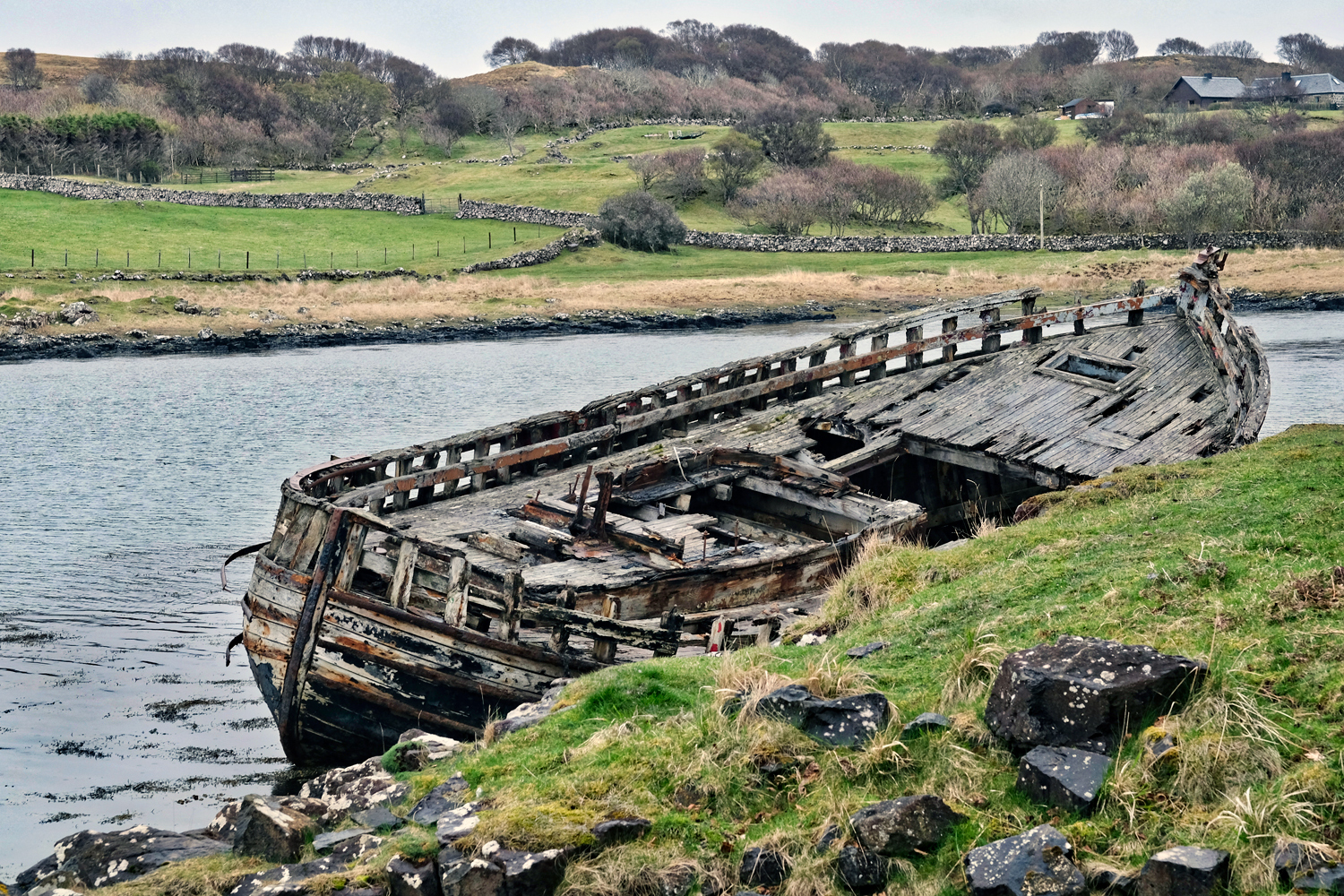 Abandoned and weathering ship on the Isle of Mull.
Abandoned and weathering ship on the Isle of Mull.
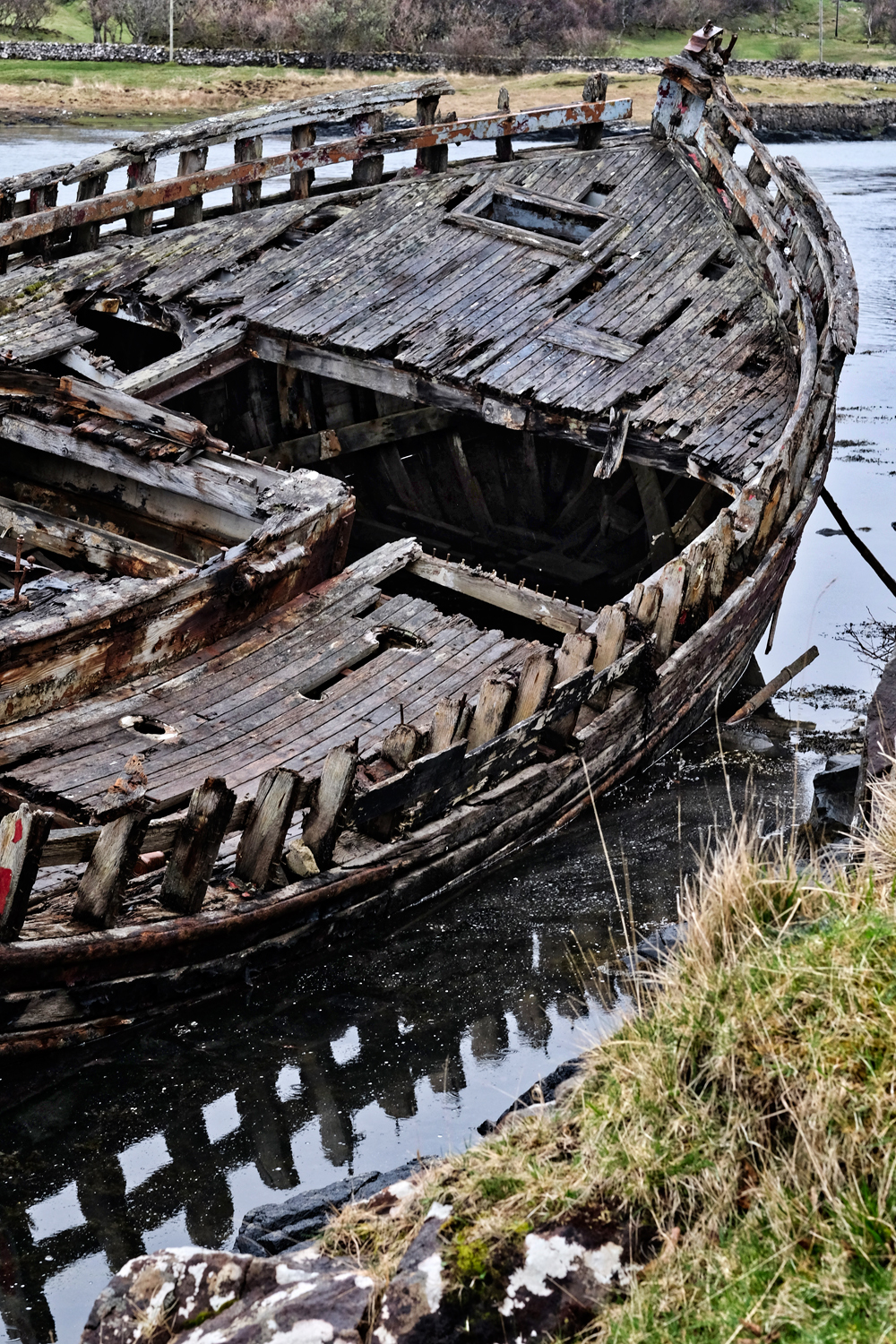 The dampness from a light drizzle brought out the color, pattern, detail, and complexity of the old rotting ship.
The dampness from a light drizzle brought out the color, pattern, detail, and complexity of the old rotting ship.
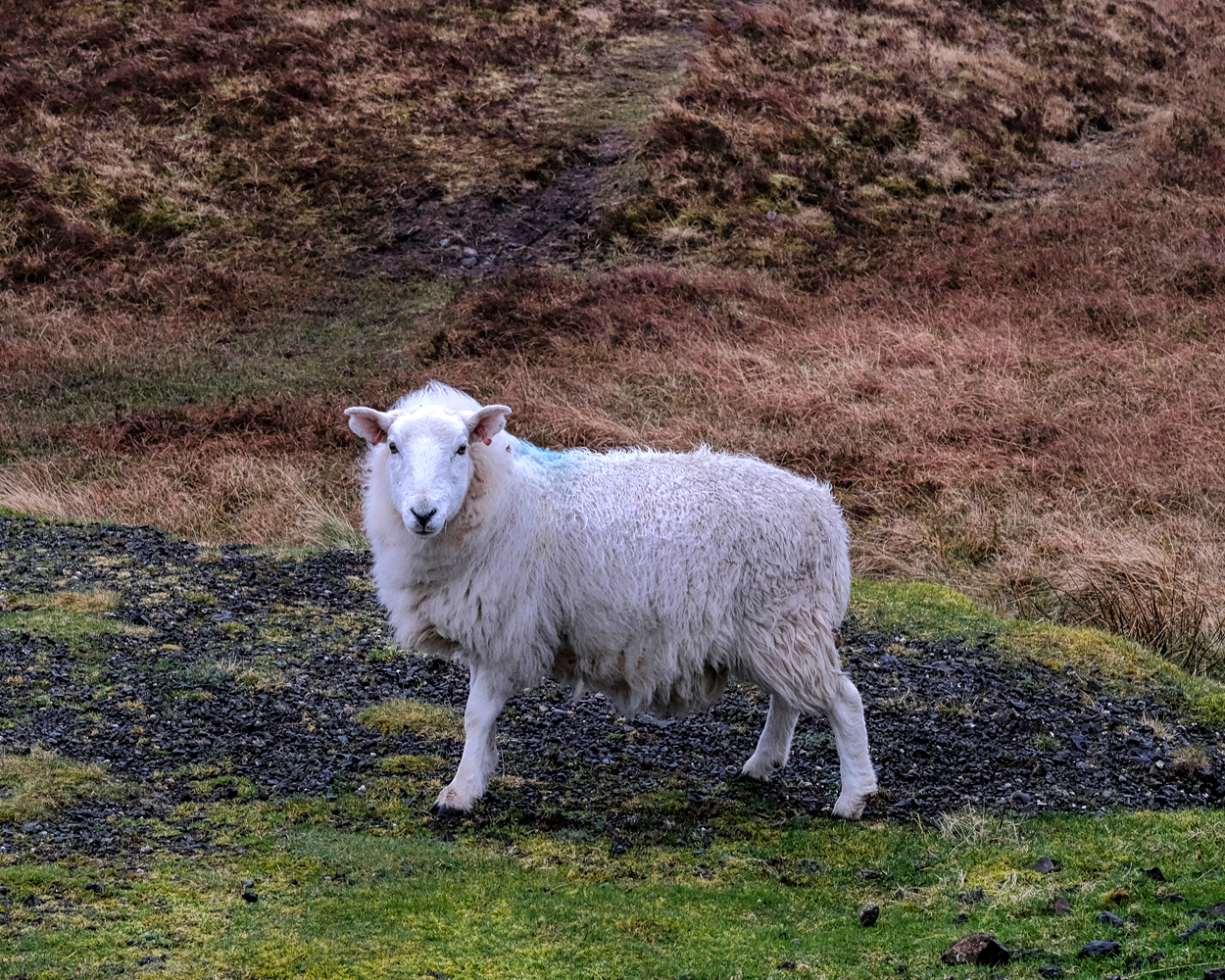 Sheep everywhere. Very wet sheep.
Sheep everywhere. Very wet sheep.
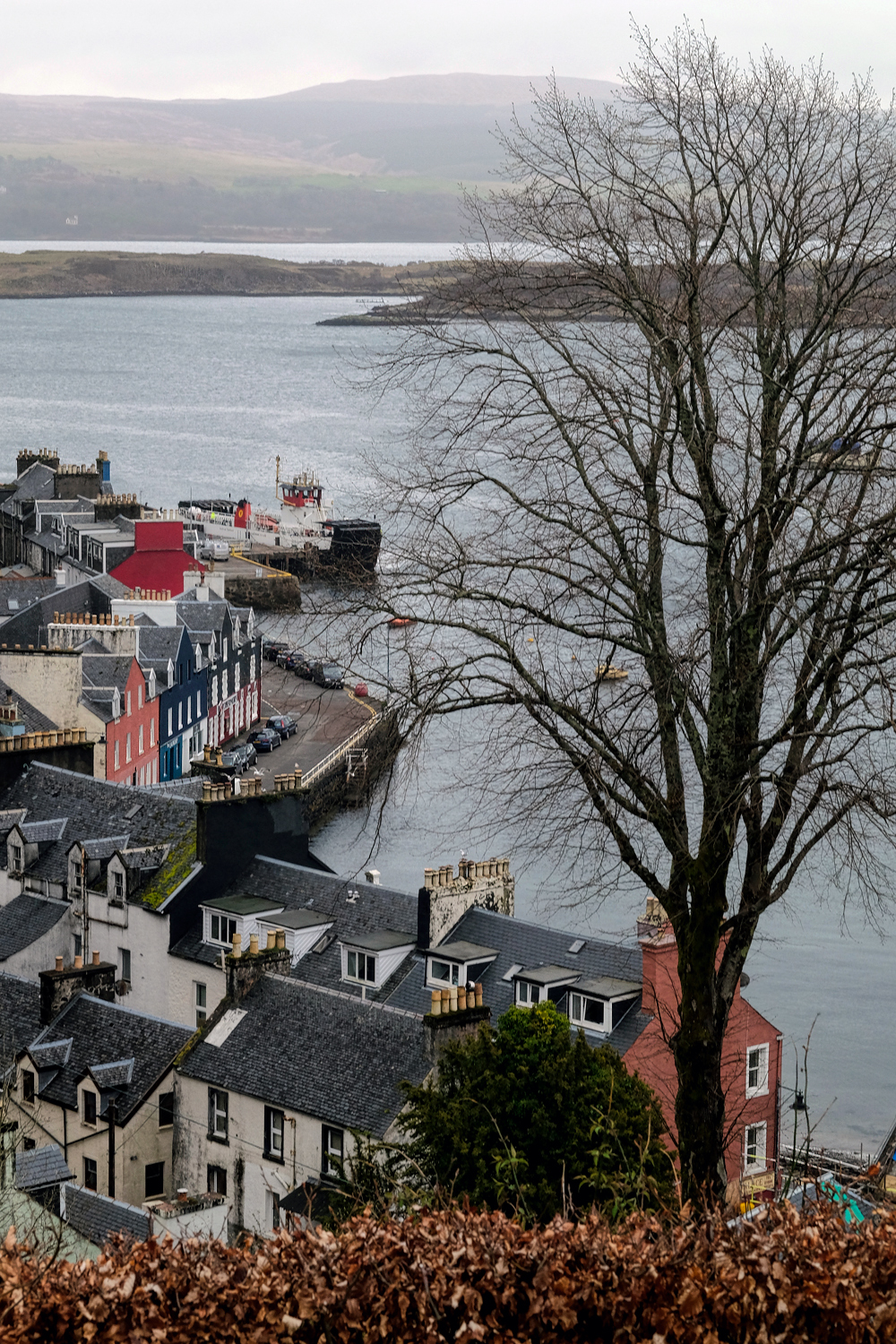 View from our hilltop B&B of the sweet 'town' of Tobermory.
View from our hilltop B&B of the sweet 'town' of Tobermory.
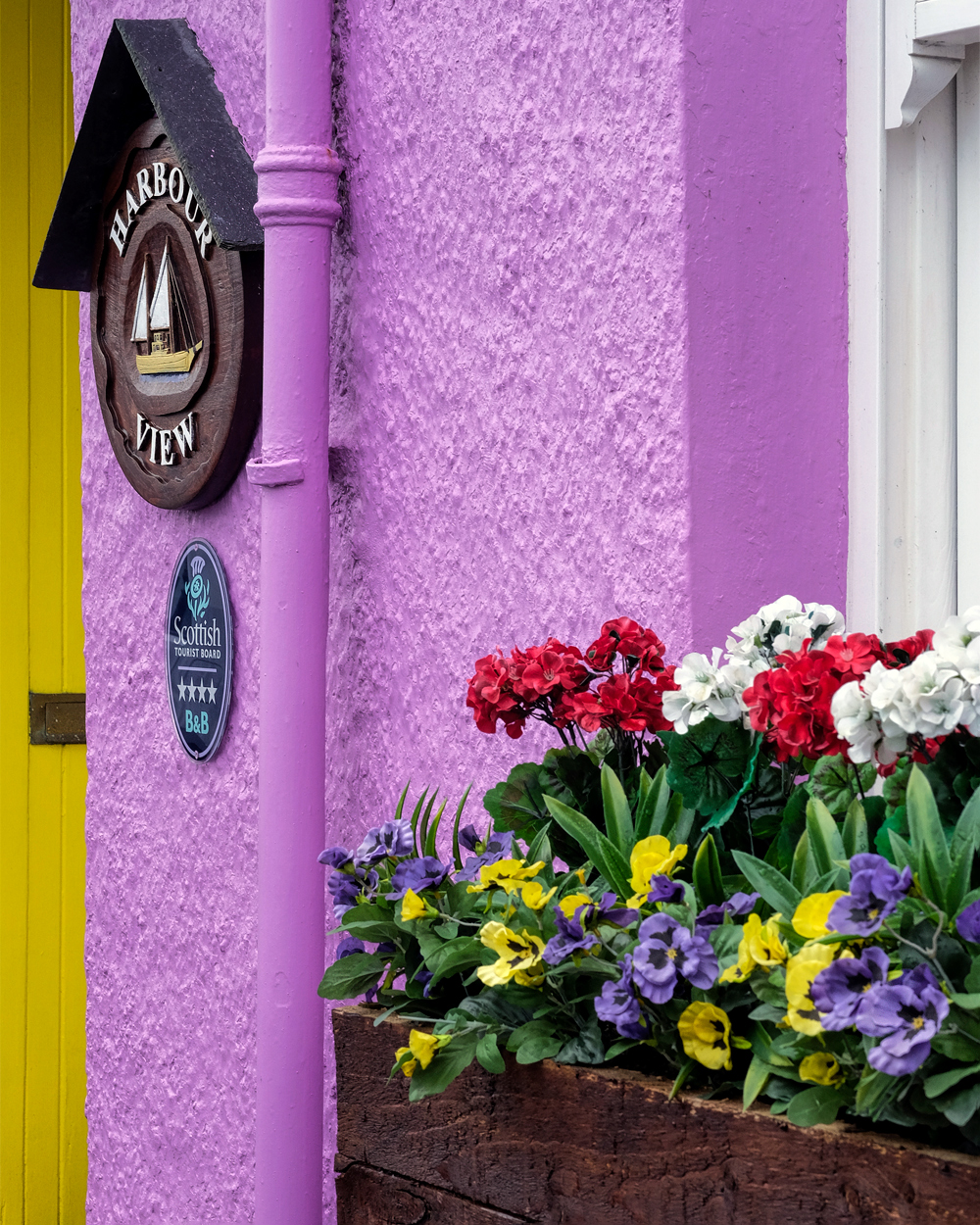 Our very sweet B&B, The Harbour View, was was run by a Scot and a Thai! Our Thai visitors were able to have Thai breakfast!
Our very sweet B&B, The Harbour View, was was run by a Scot and a Thai! Our Thai visitors were able to have Thai breakfast!
 Tobermory, Isle of Mull, has to be one of the most picturesque villages I have ever seen!
Tobermory, Isle of Mull, has to be one of the most picturesque villages I have ever seen!
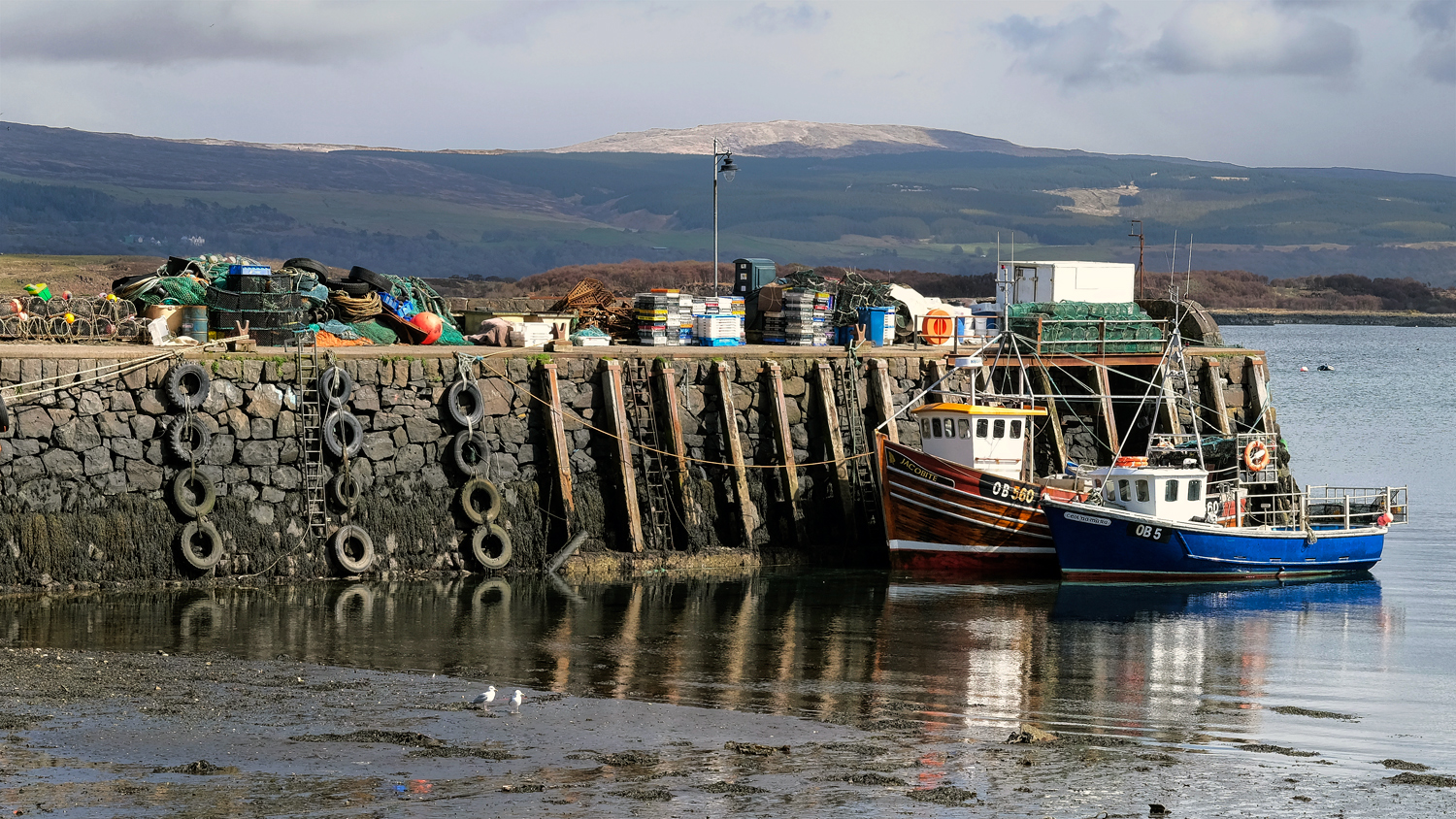 Not only a photographer's dream . . . Tobermory is a painters dream as well.
Not only a photographer's dream . . . Tobermory is a painters dream as well.
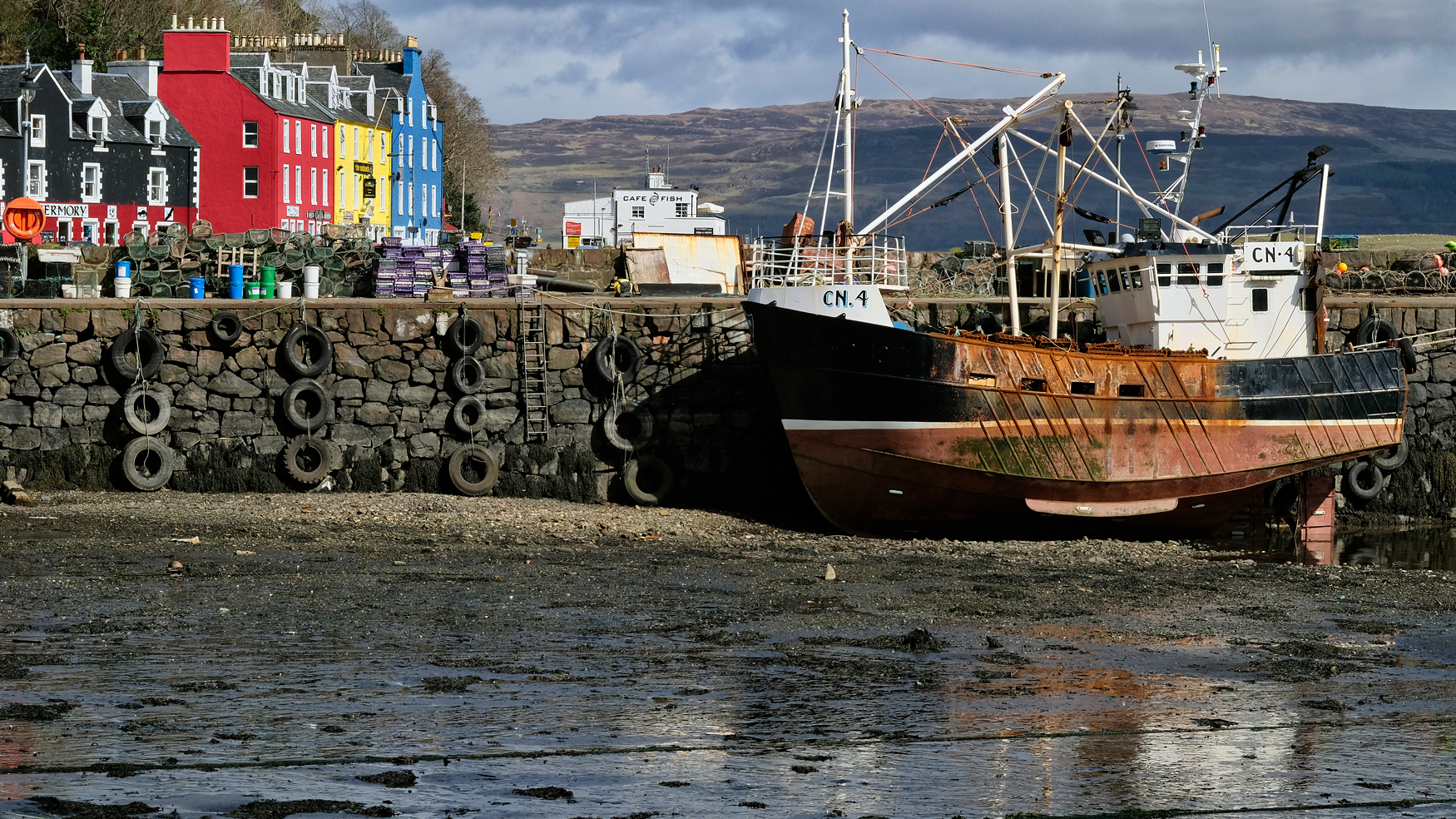 Simply Beautiful.
Simply Beautiful.
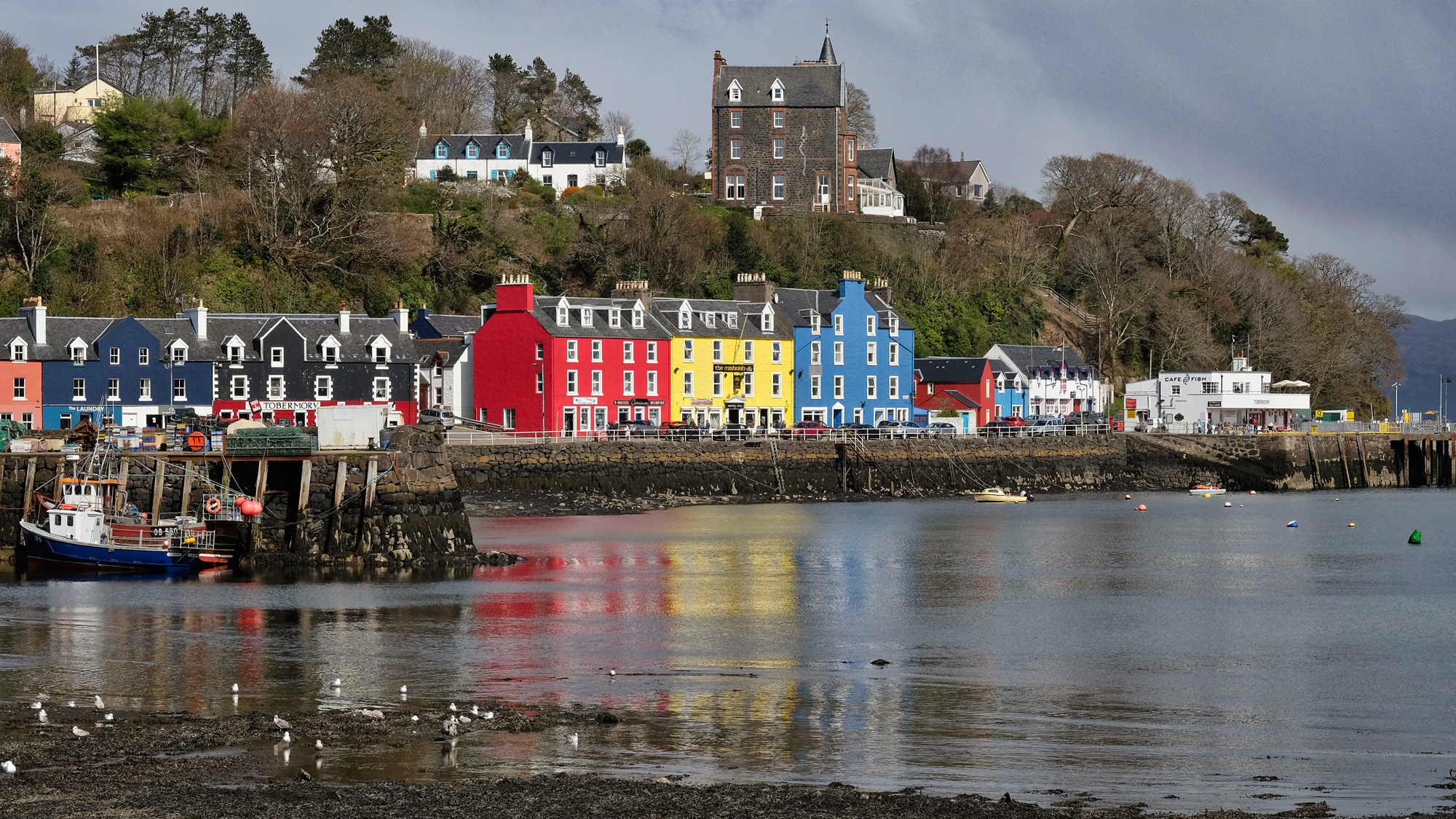 Low tide, Tobermory, Isle of Mull, Scotland. April, 2017.
Low tide, Tobermory, Isle of Mull, Scotland. April, 2017.
 Half of the harbour village of Tobermory.
Half of the harbour village of Tobermory.
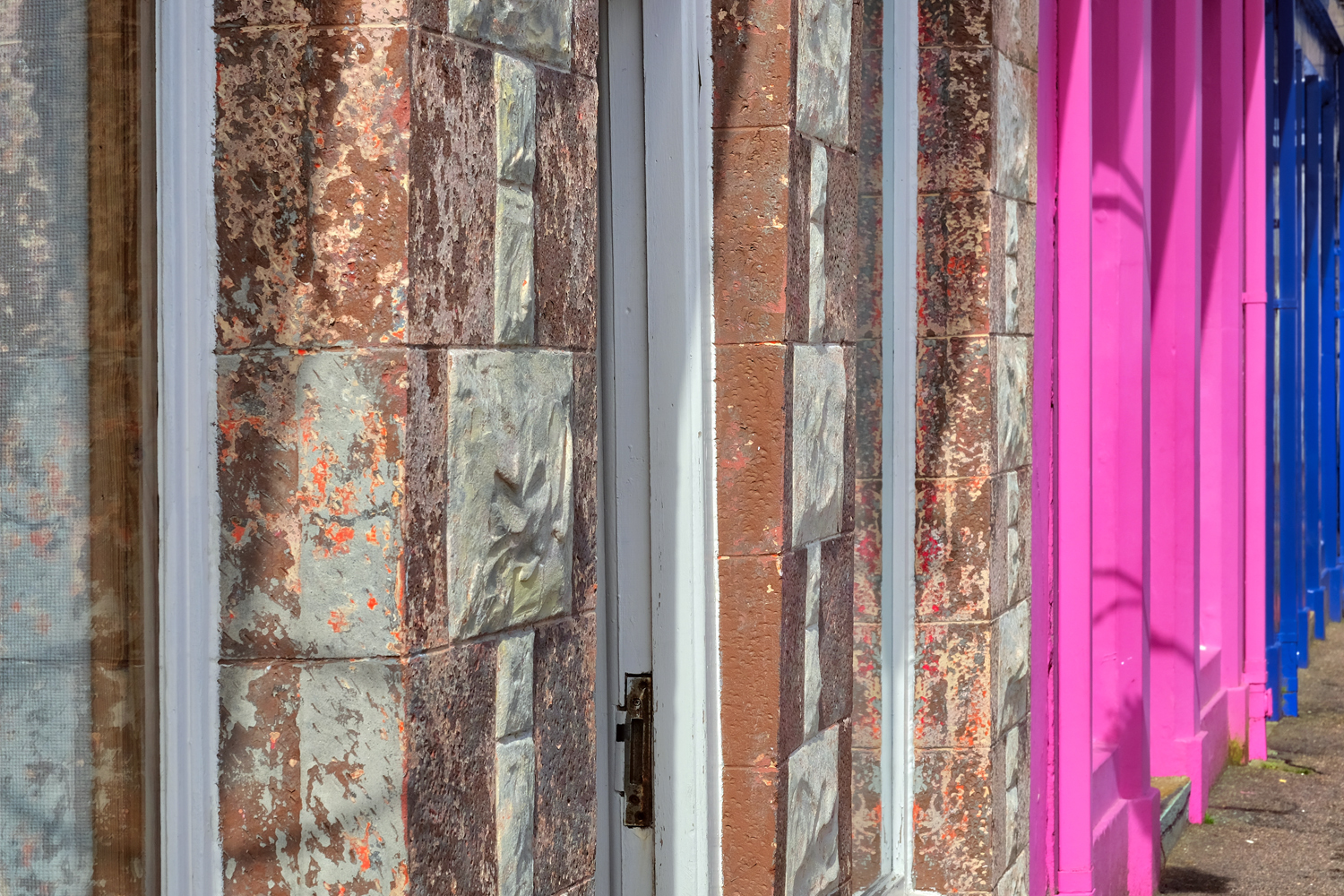 Walls along the colorful streets of Tobermory.
Walls along the colorful streets of Tobermory.
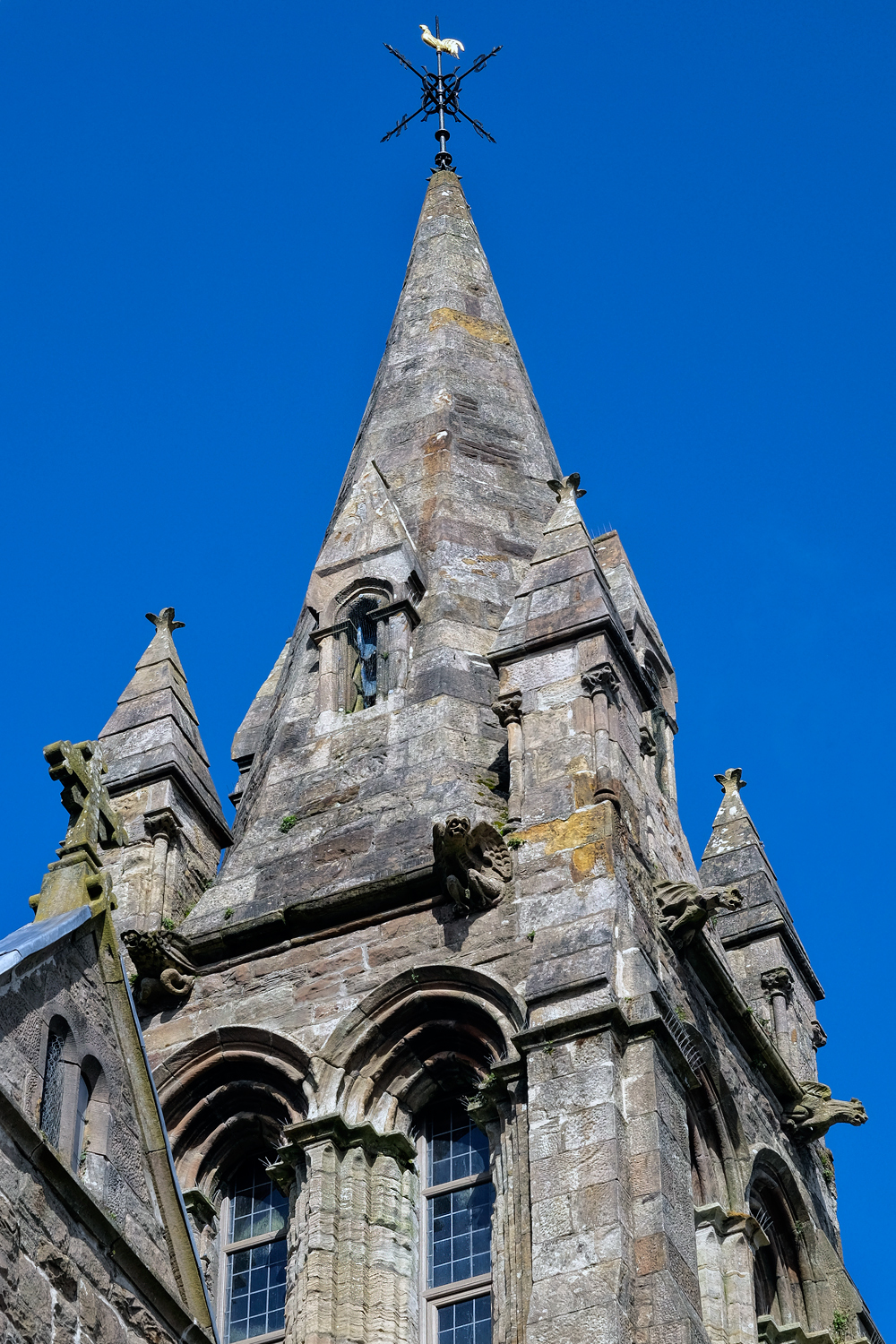 The old Tobermory church steeple against a perfect blue sky . . . in the western isles of Scotland . . . in April. Impossible.
The old Tobermory church steeple against a perfect blue sky . . . in the western isles of Scotland . . . in April. Impossible.
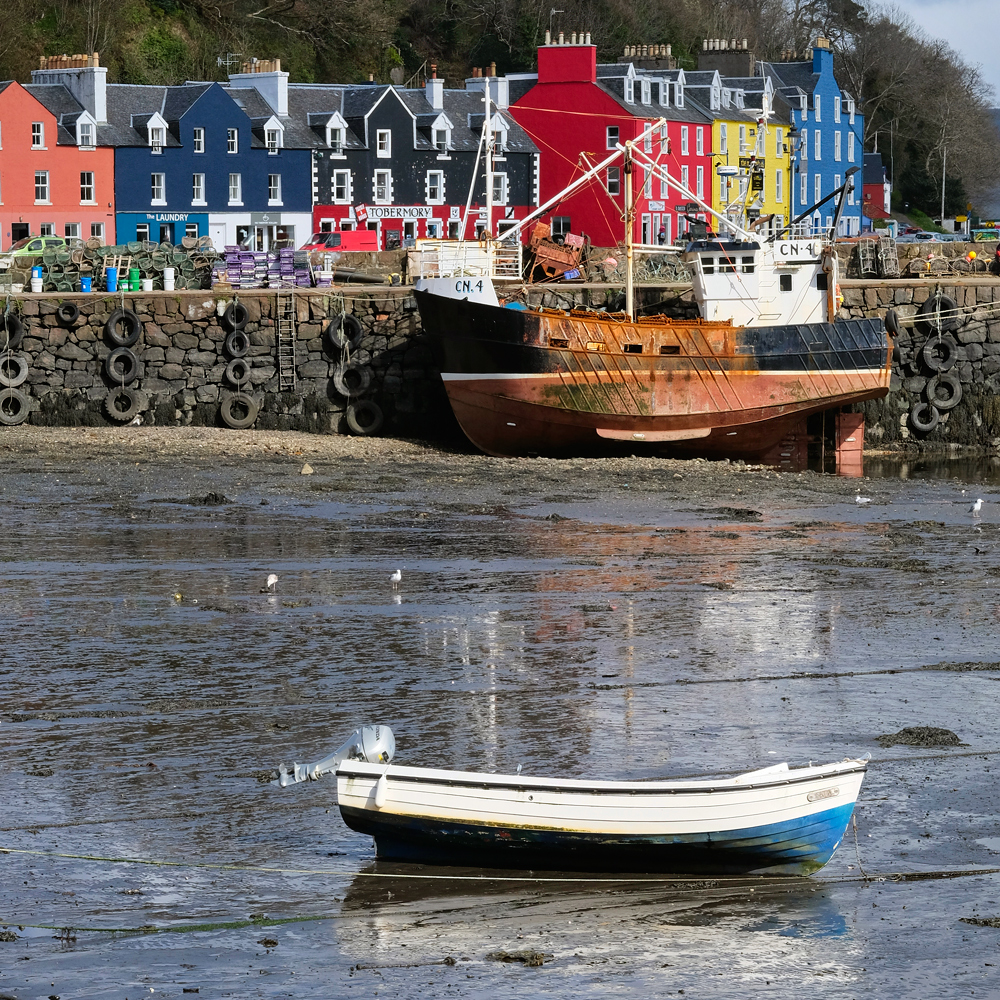 I never tire of this view.
I never tire of this view.
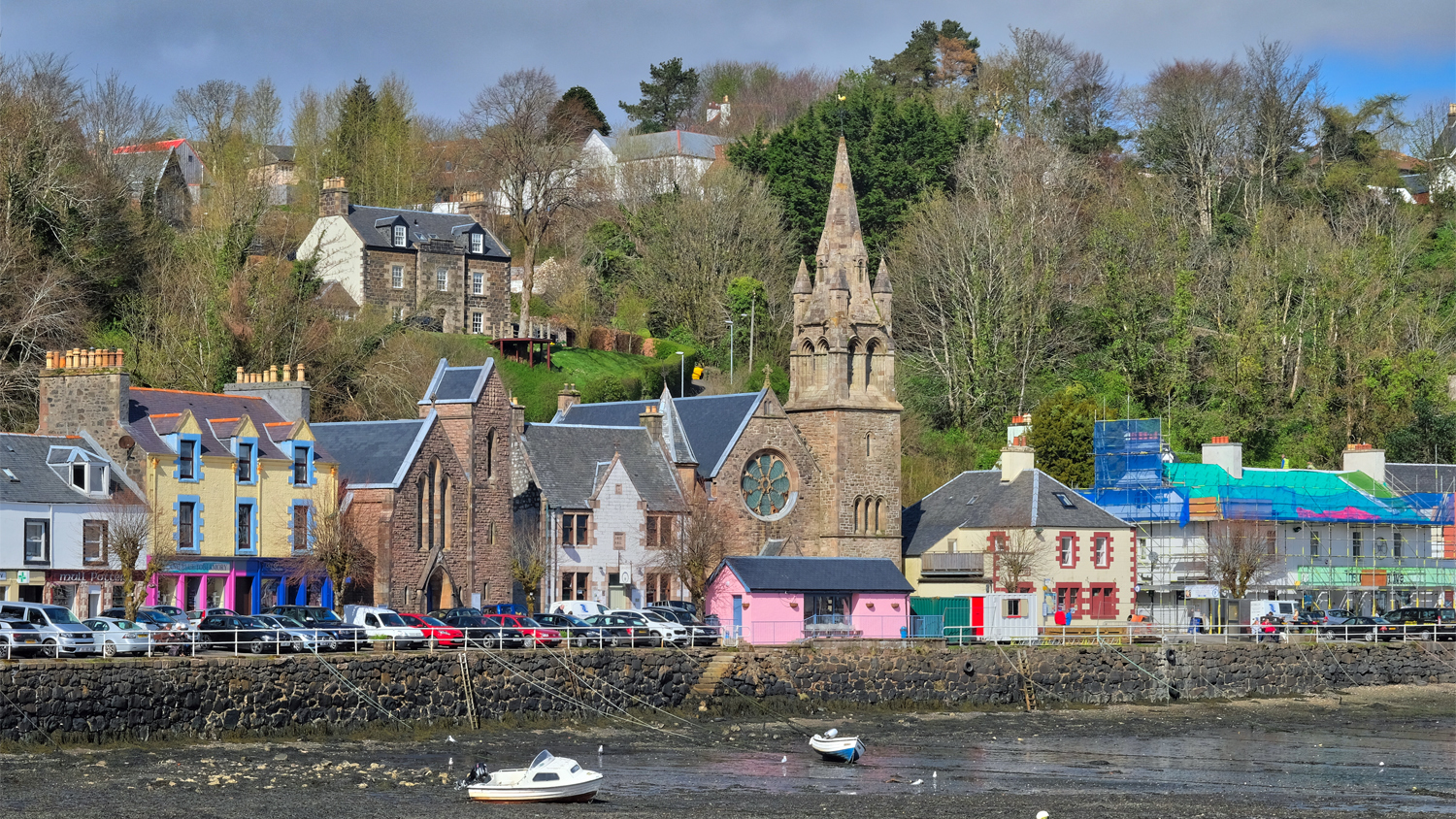 The small pink shed next to the harbour sold excellent ice cream. Our B&B was on the hill above the village.
The small pink shed next to the harbour sold excellent ice cream. Our B&B was on the hill above the village.
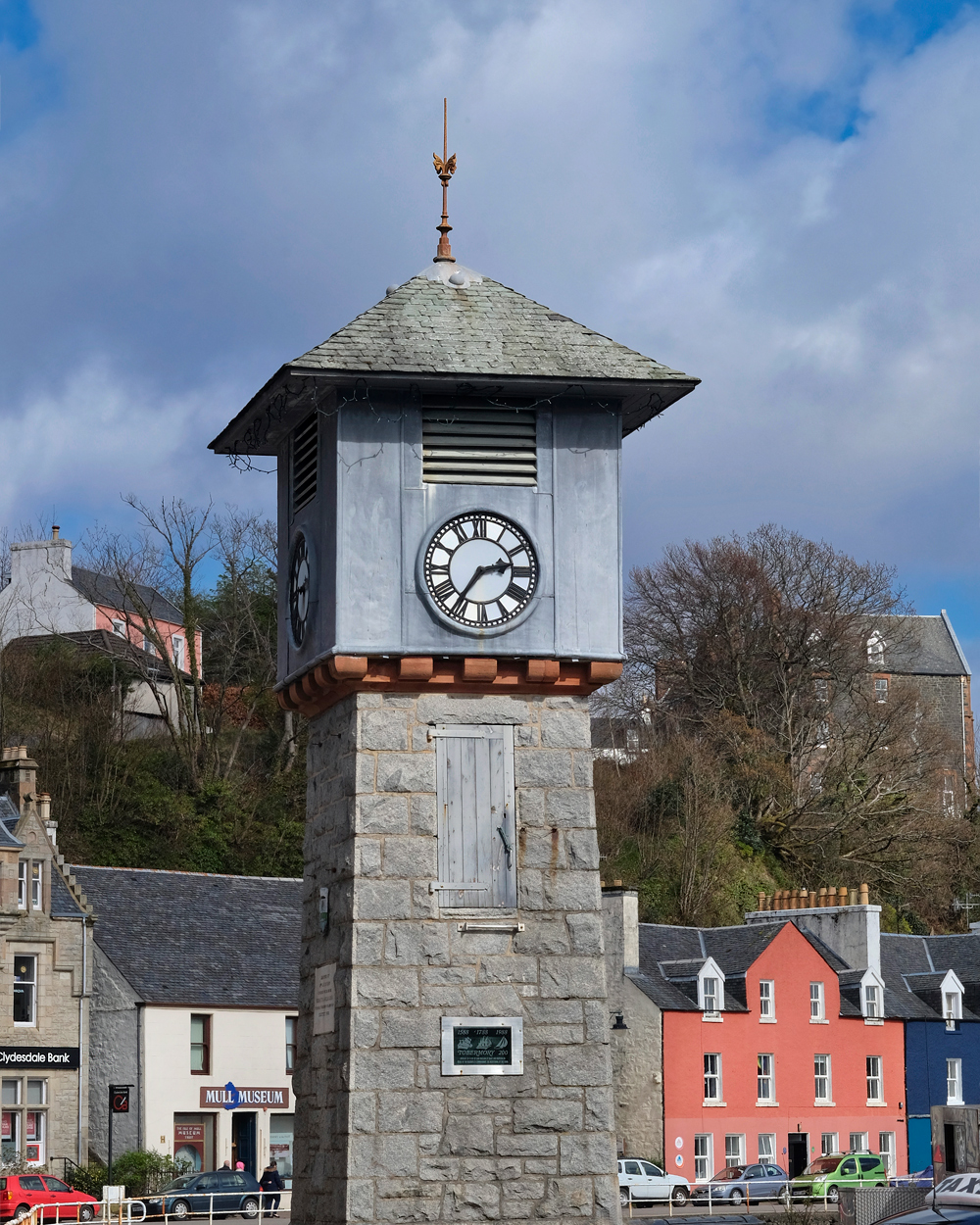 The old Tobermory town clock.
The old Tobermory town clock.
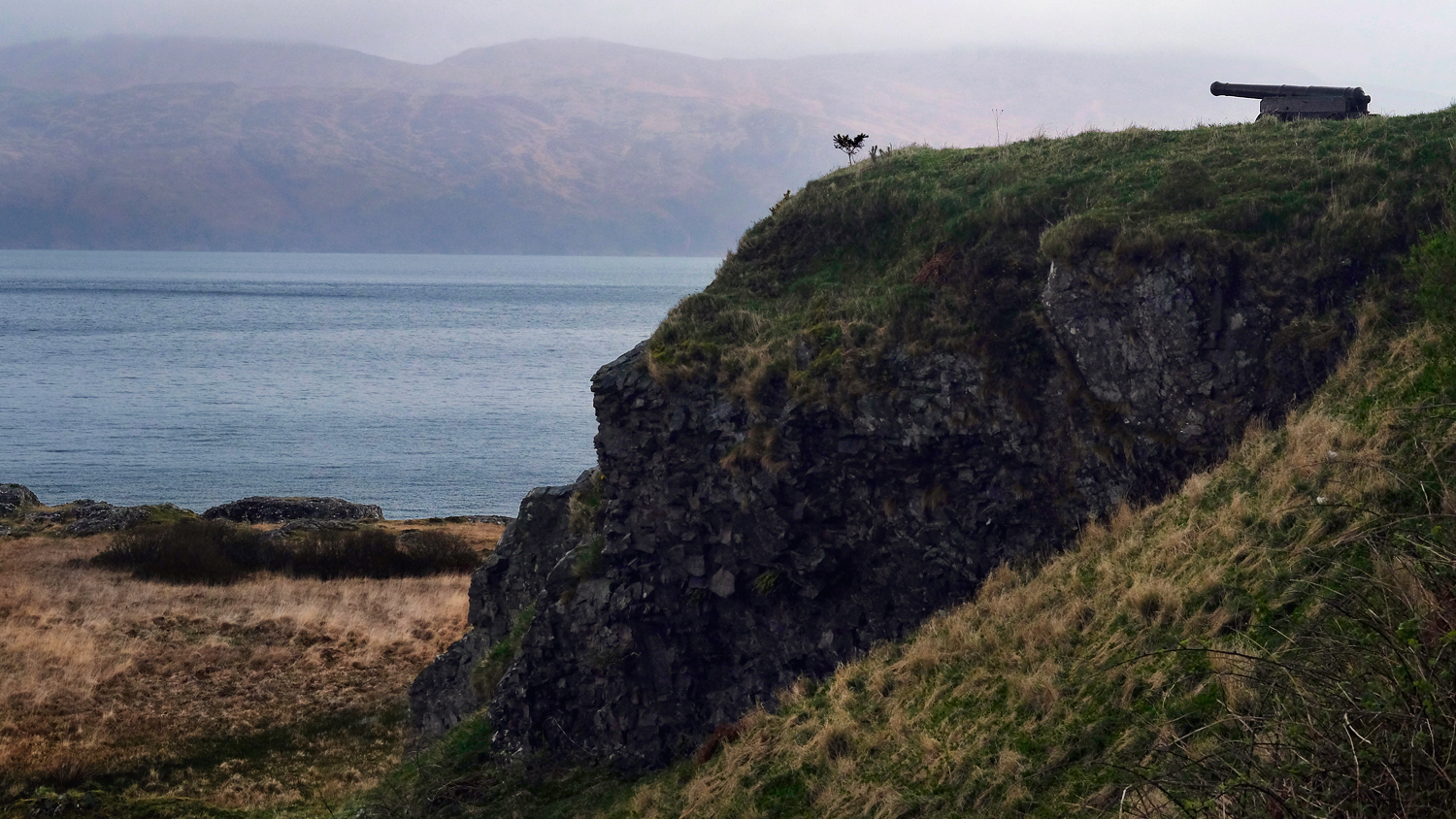 History marks itself.
History marks itself.
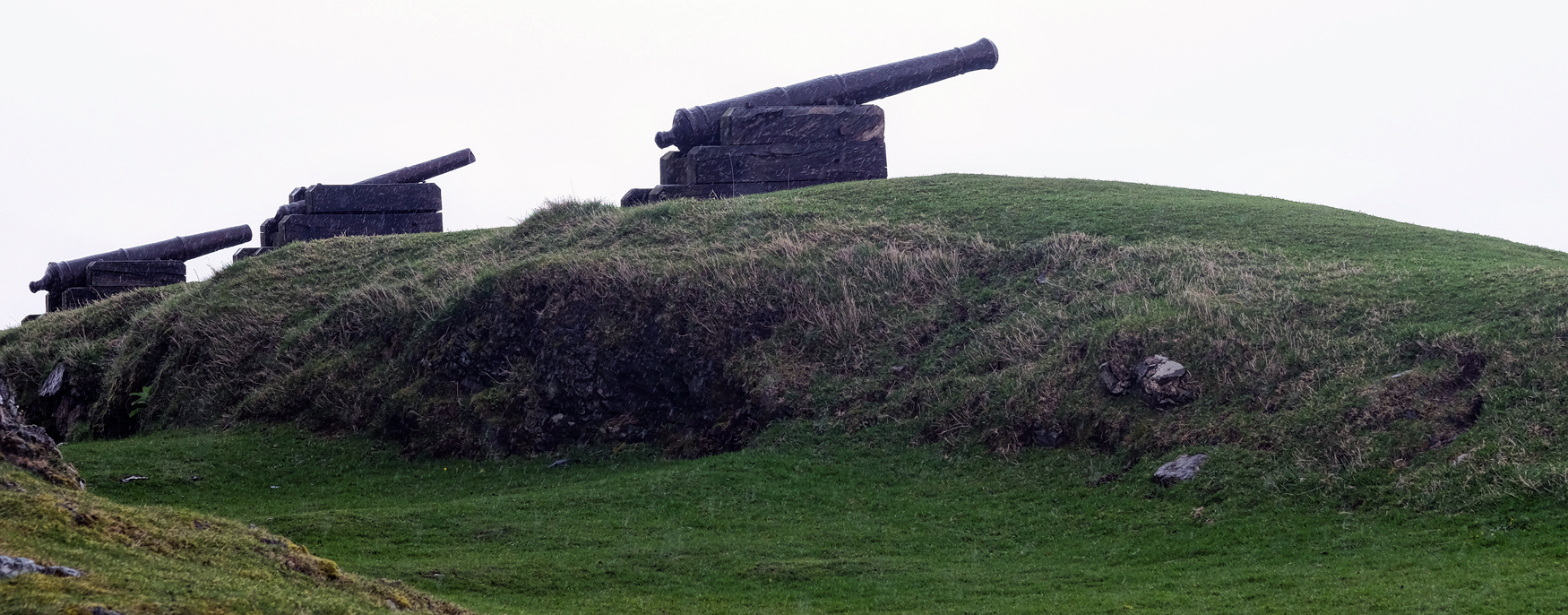 Ancient battles fought and castles defended near here.
Ancient battles fought and castles defended near here.
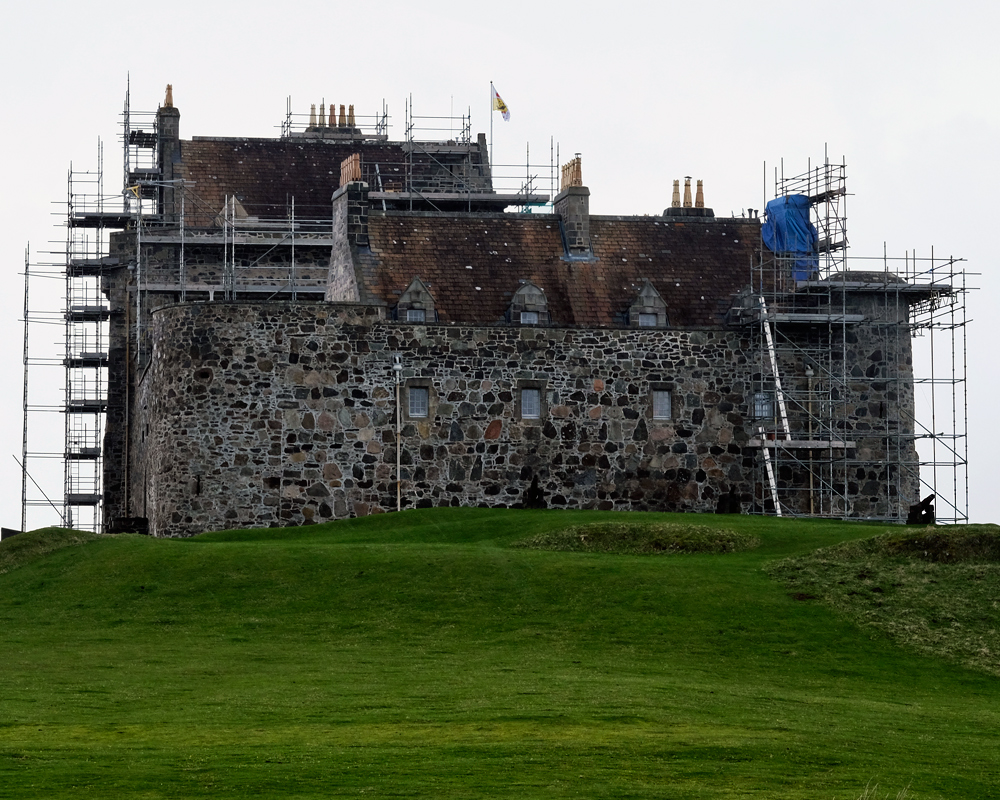 Castle Duart (c1350) under renovation.
Castle Duart (c1350) under renovation.
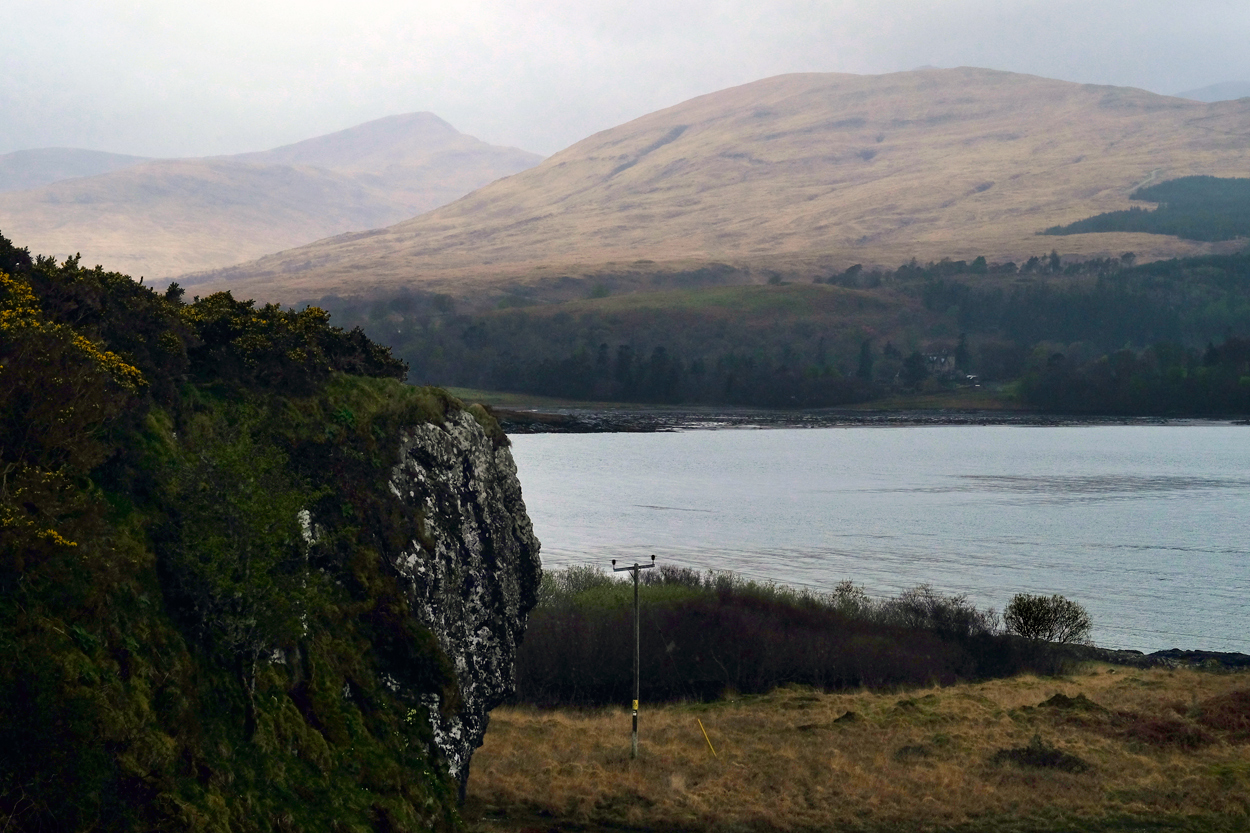 The atmospheric view from Castle Duart on a cold, rainy day on the Isle of Mull.
The atmospheric view from Castle Duart on a cold, rainy day on the Isle of Mull.
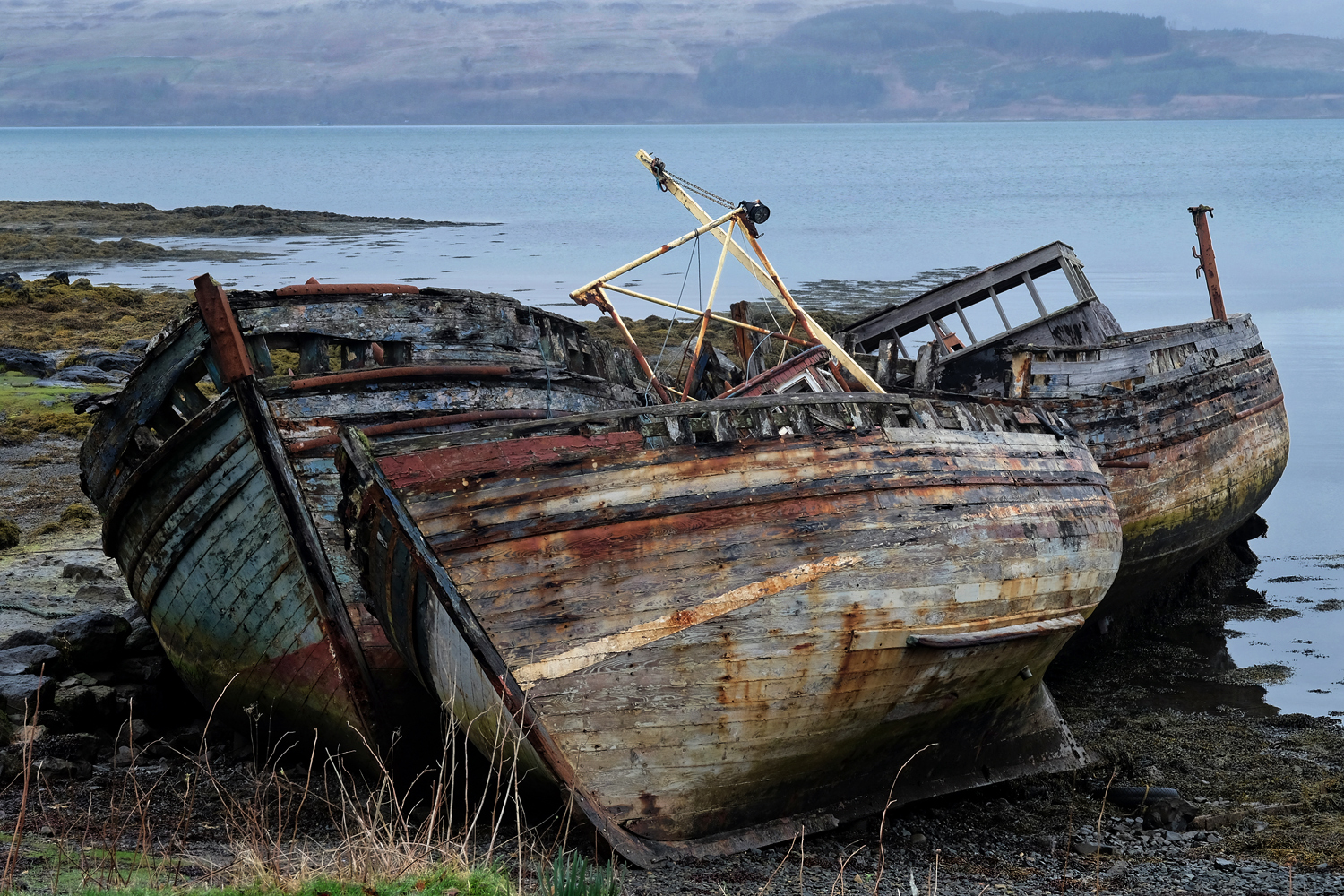 Then, around a bend . . . . a photographer's dream come true!
Then, around a bend . . . . a photographer's dream come true!
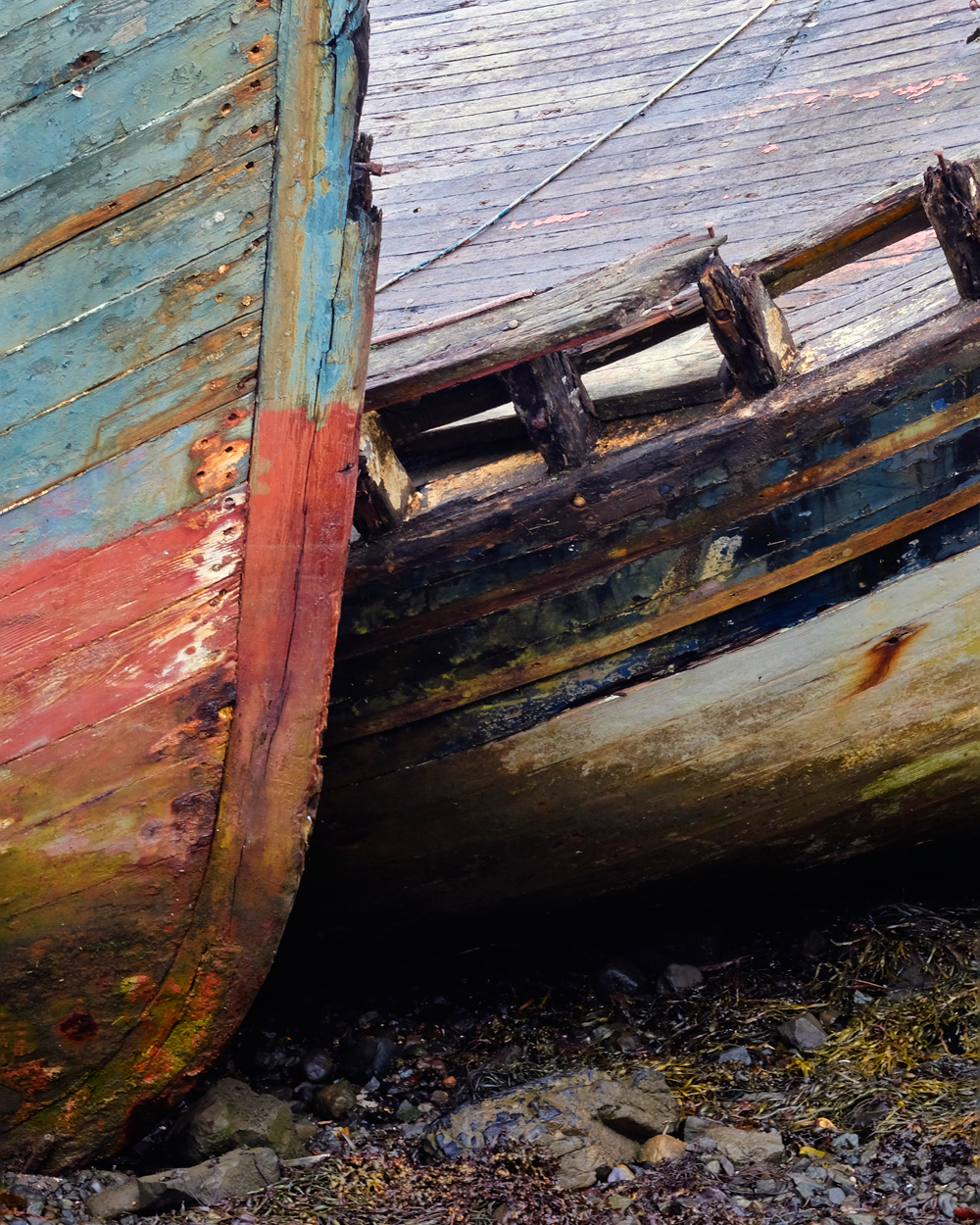 Fantastic patina of age and deterioration.
Fantastic patina of age and deterioration.
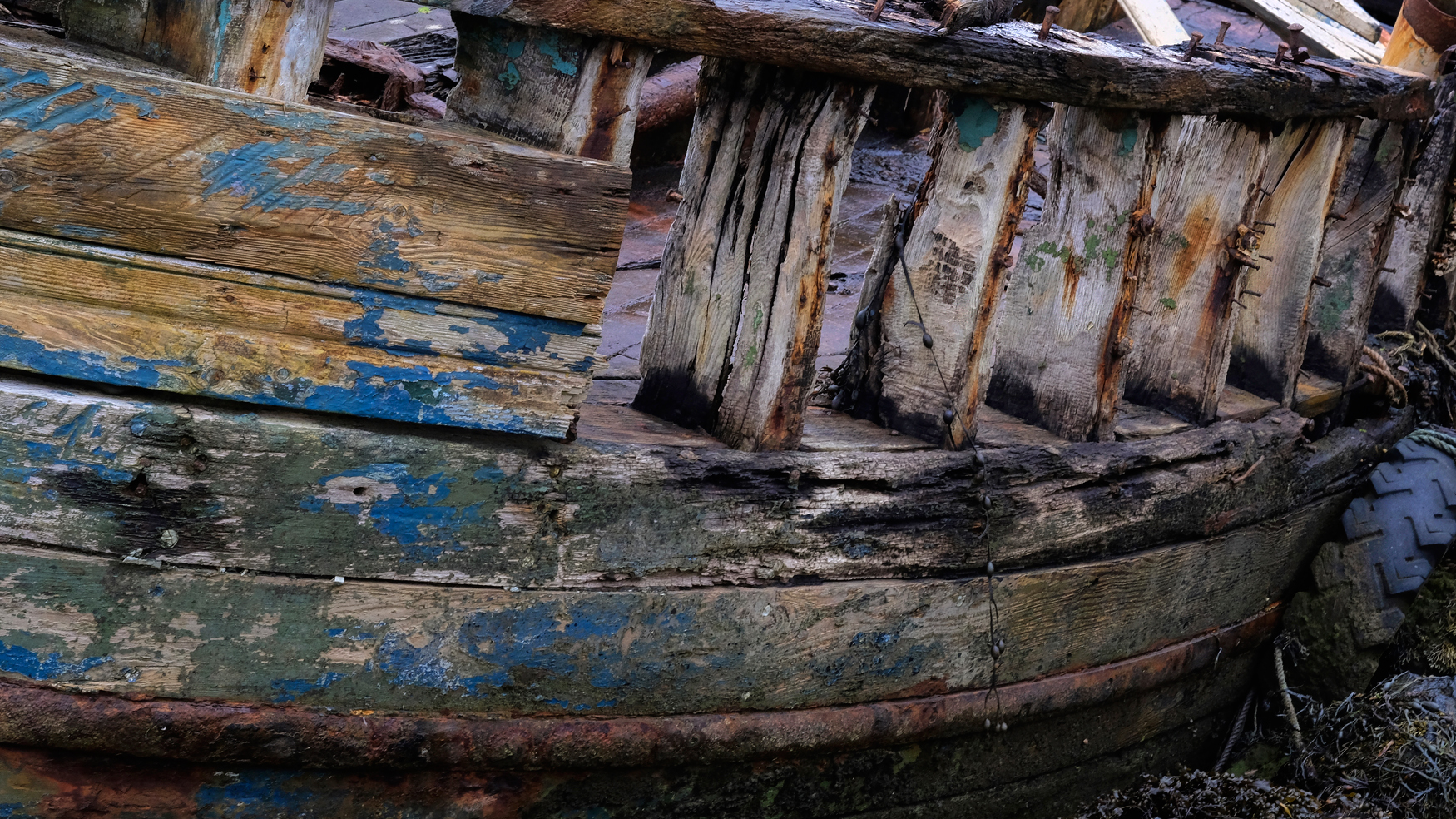 Abandoned after years of service.
Abandoned after years of service.
 There are no bad light days in photography . . . .
There are no bad light days in photography . . . .
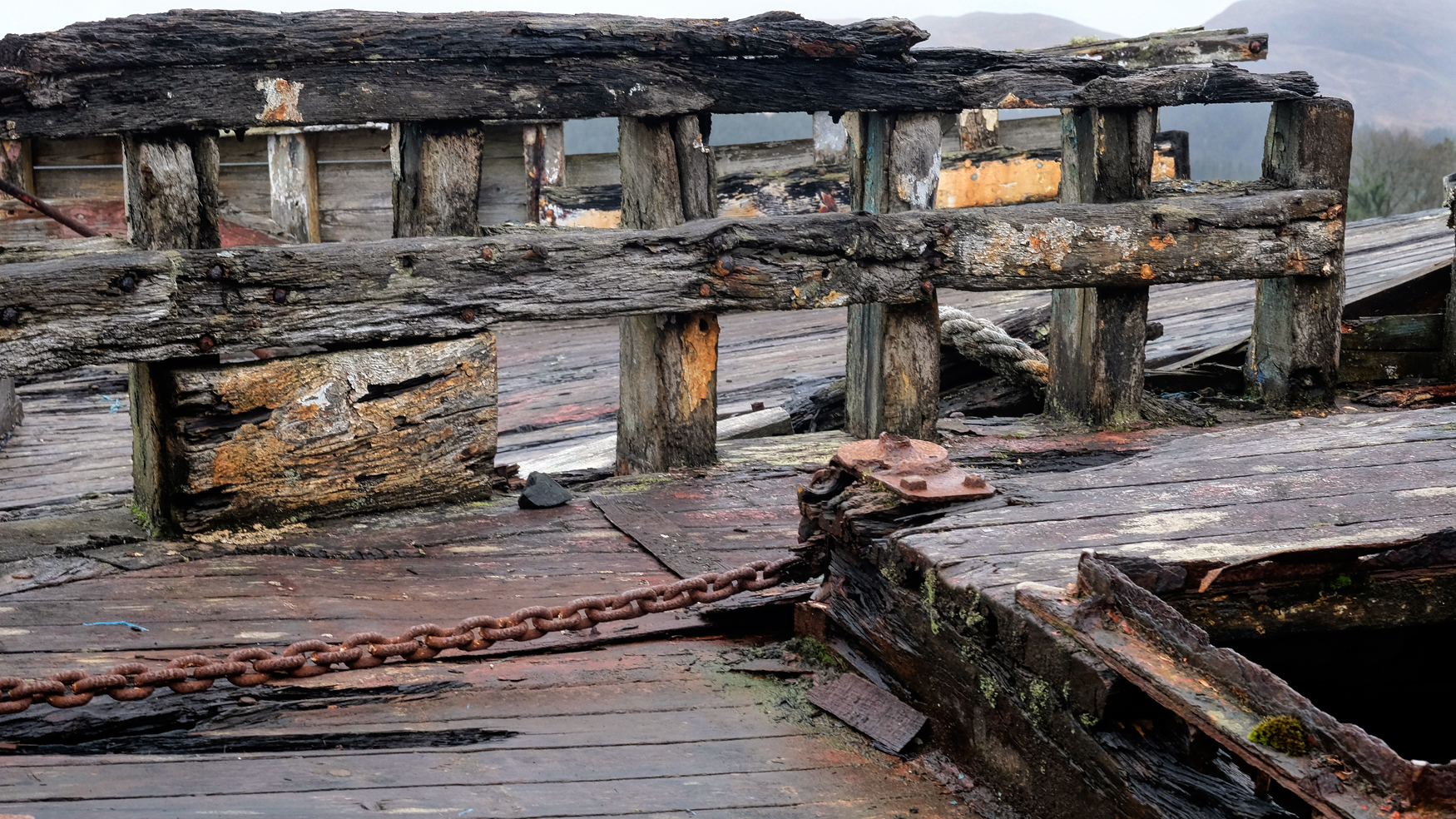 Not too long before this ship completely disappears. I wonder if this is an Aberdeen Trawler.
Not too long before this ship completely disappears. I wonder if this is an Aberdeen Trawler.
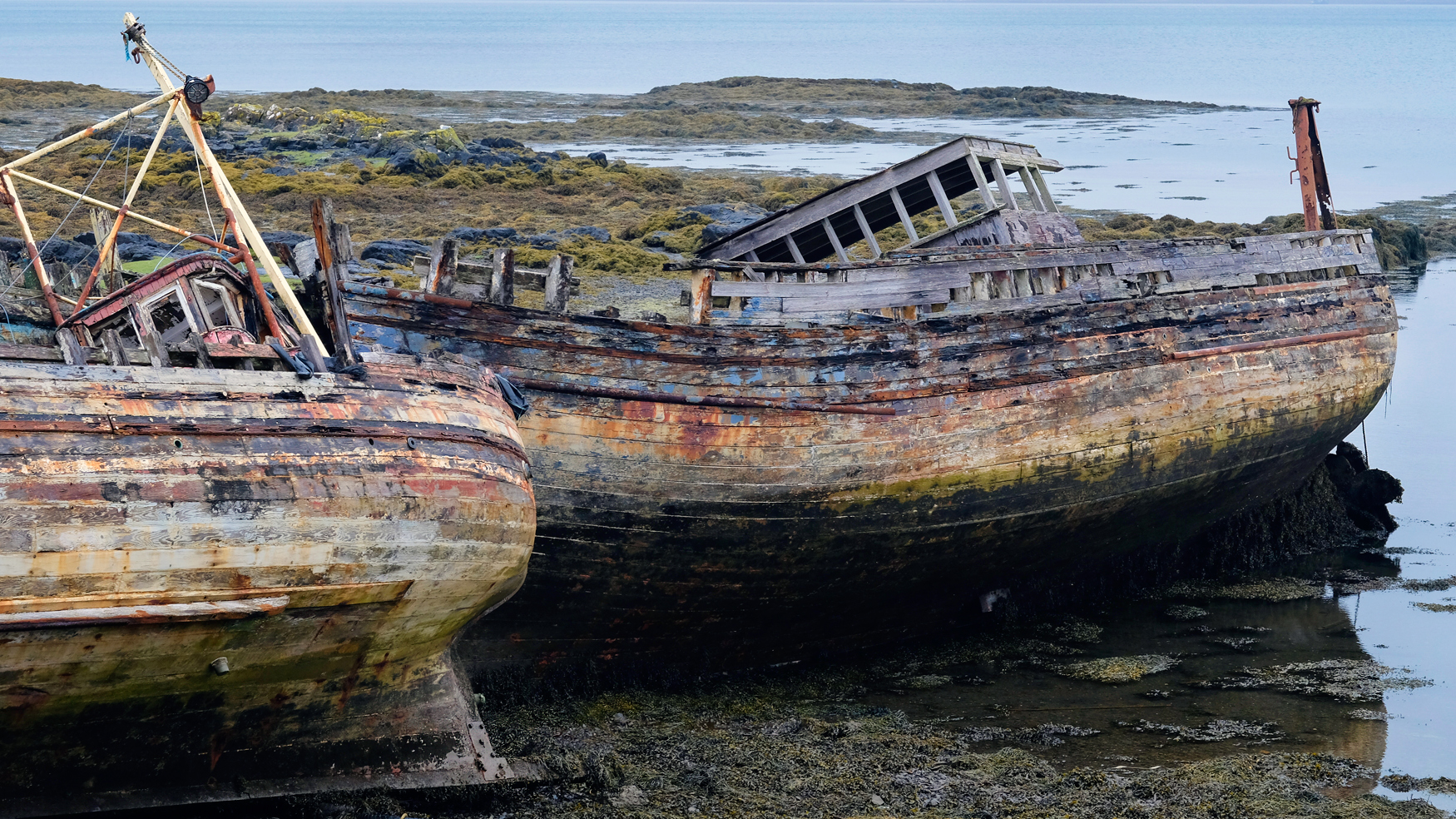 Three old fishing trawlers abandoned.
Three old fishing trawlers abandoned.
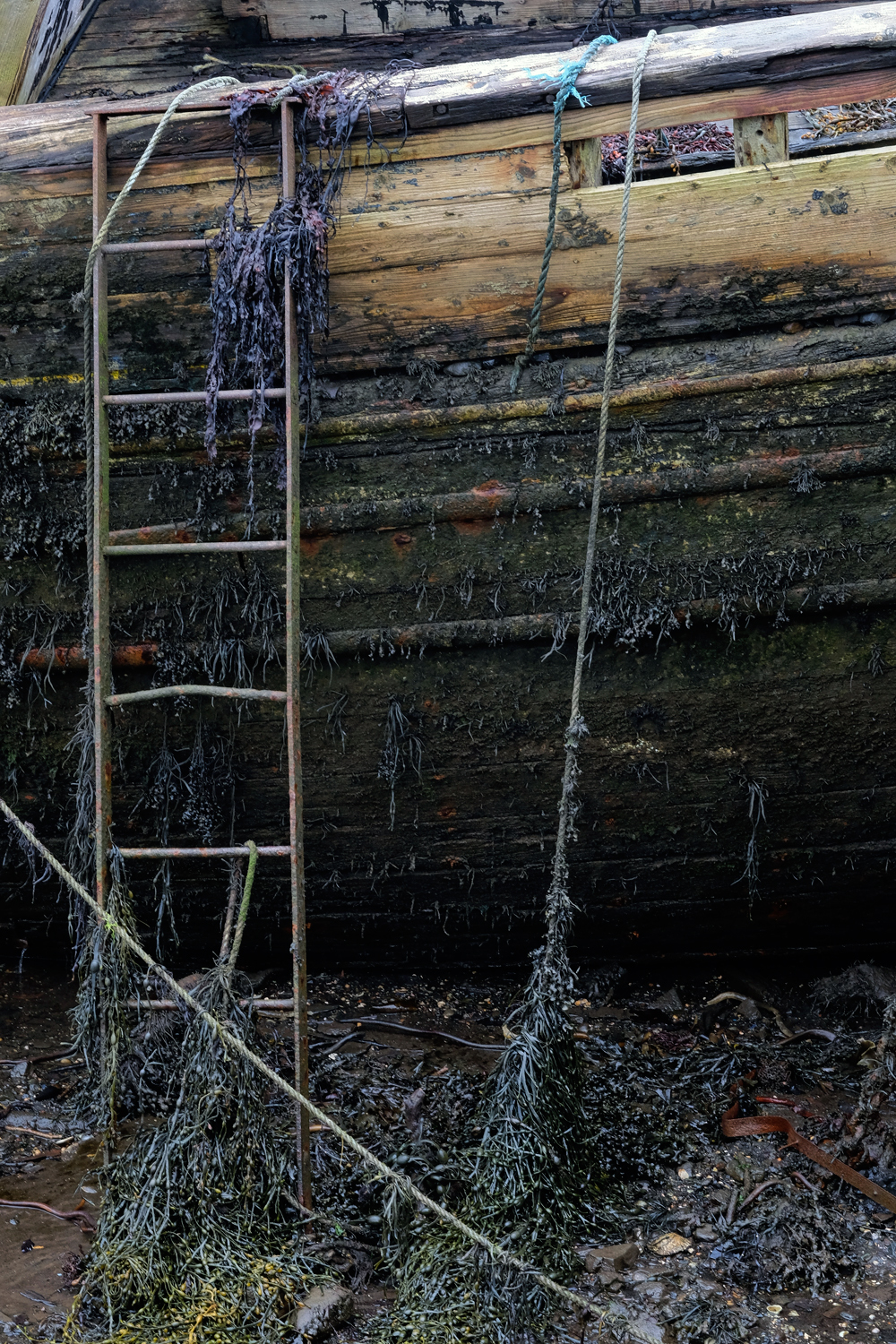 Nature taking over.
Nature taking over.
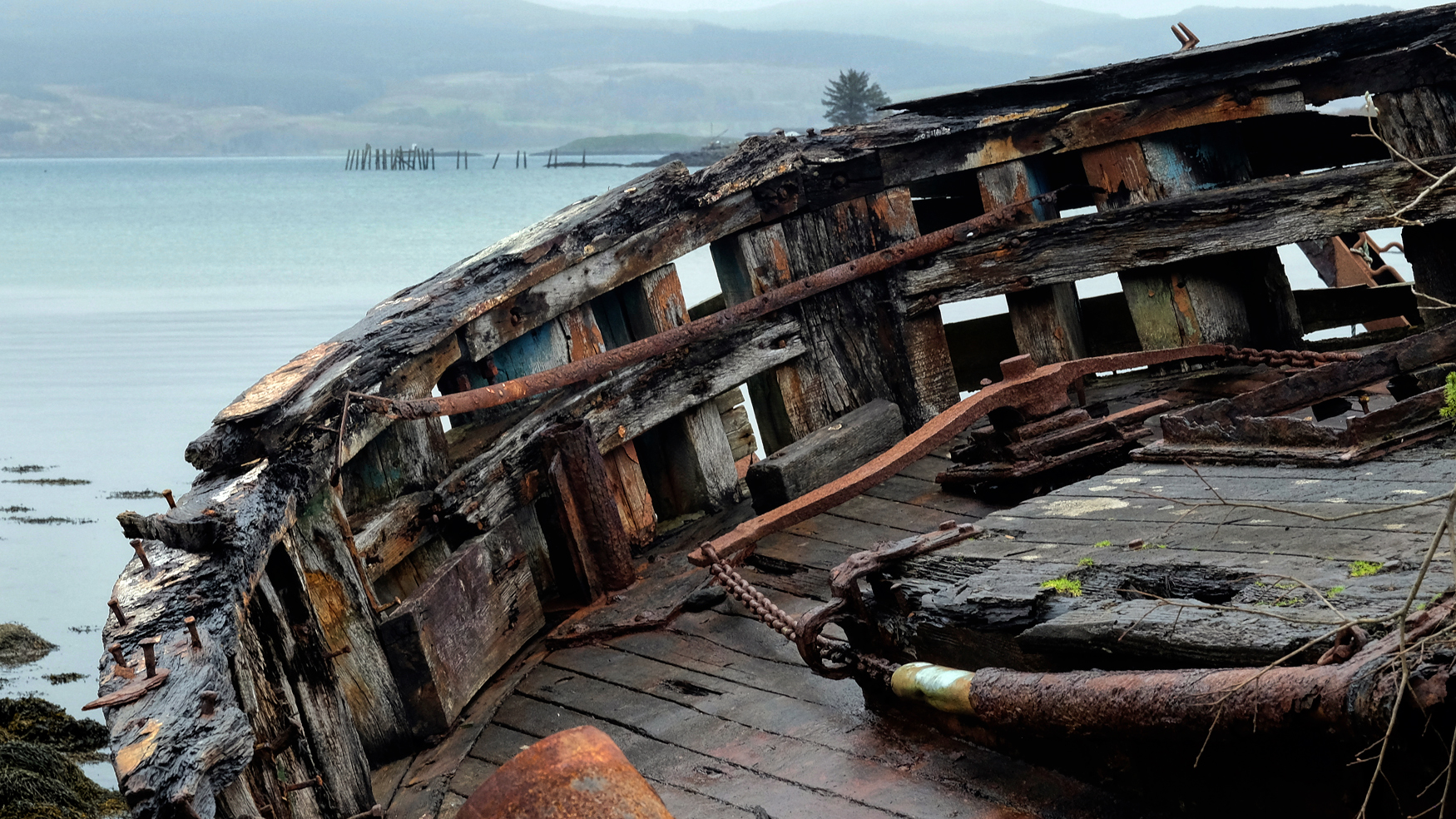 Fishermen worked these decks for how long?
Fishermen worked these decks for how long?
 Always a view of sea and rising hills.
Always a view of sea and rising hills.
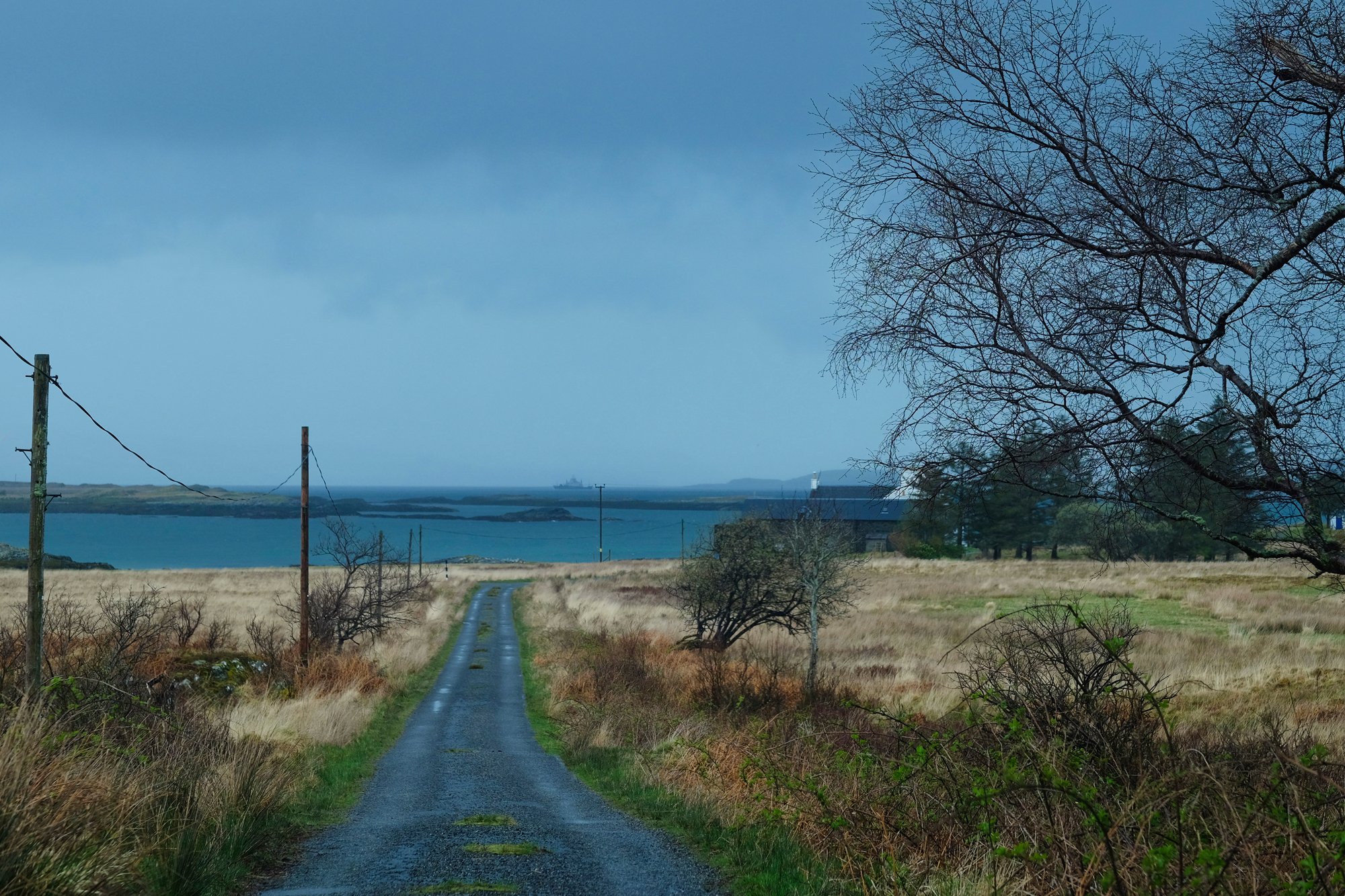 On another day . . . sun and blue sky along the tiny roads . . .
On another day . . . sun and blue sky along the tiny roads . . .
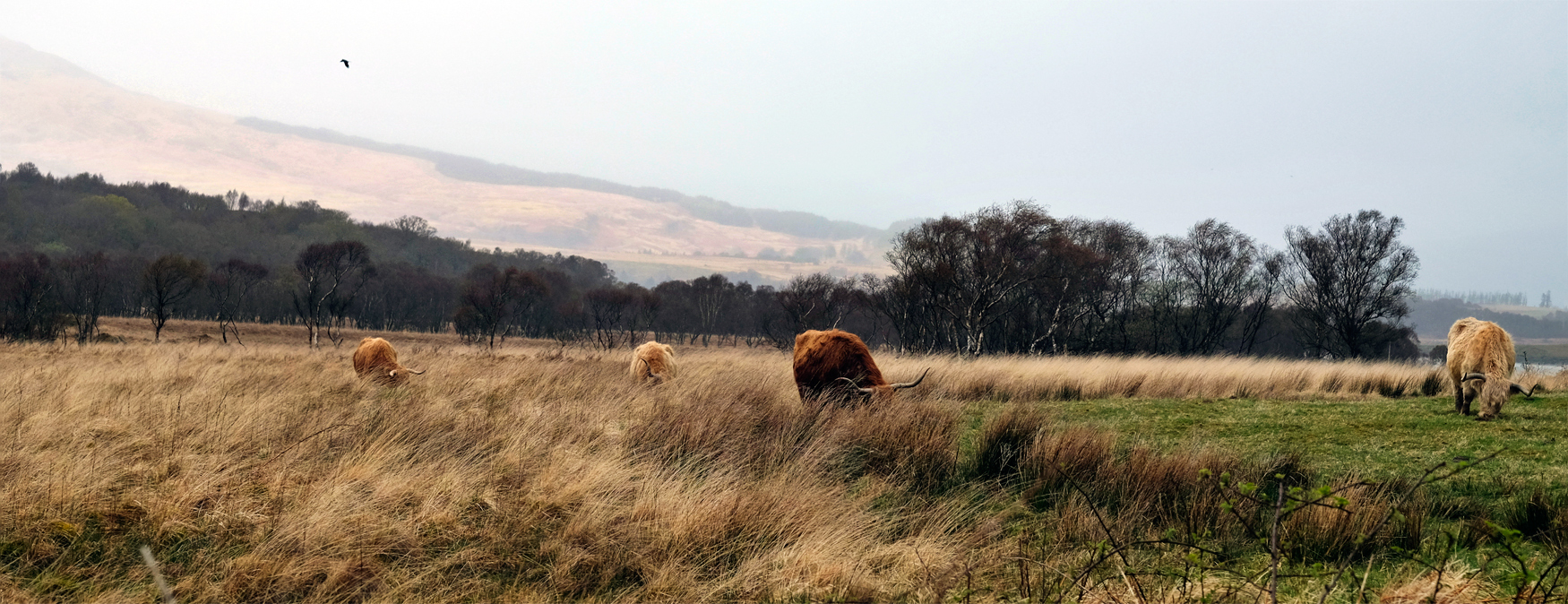 Cattle and sheep augment the fishing industries of Mull. These are Highland cows.
Cattle and sheep augment the fishing industries of Mull. These are Highland cows.
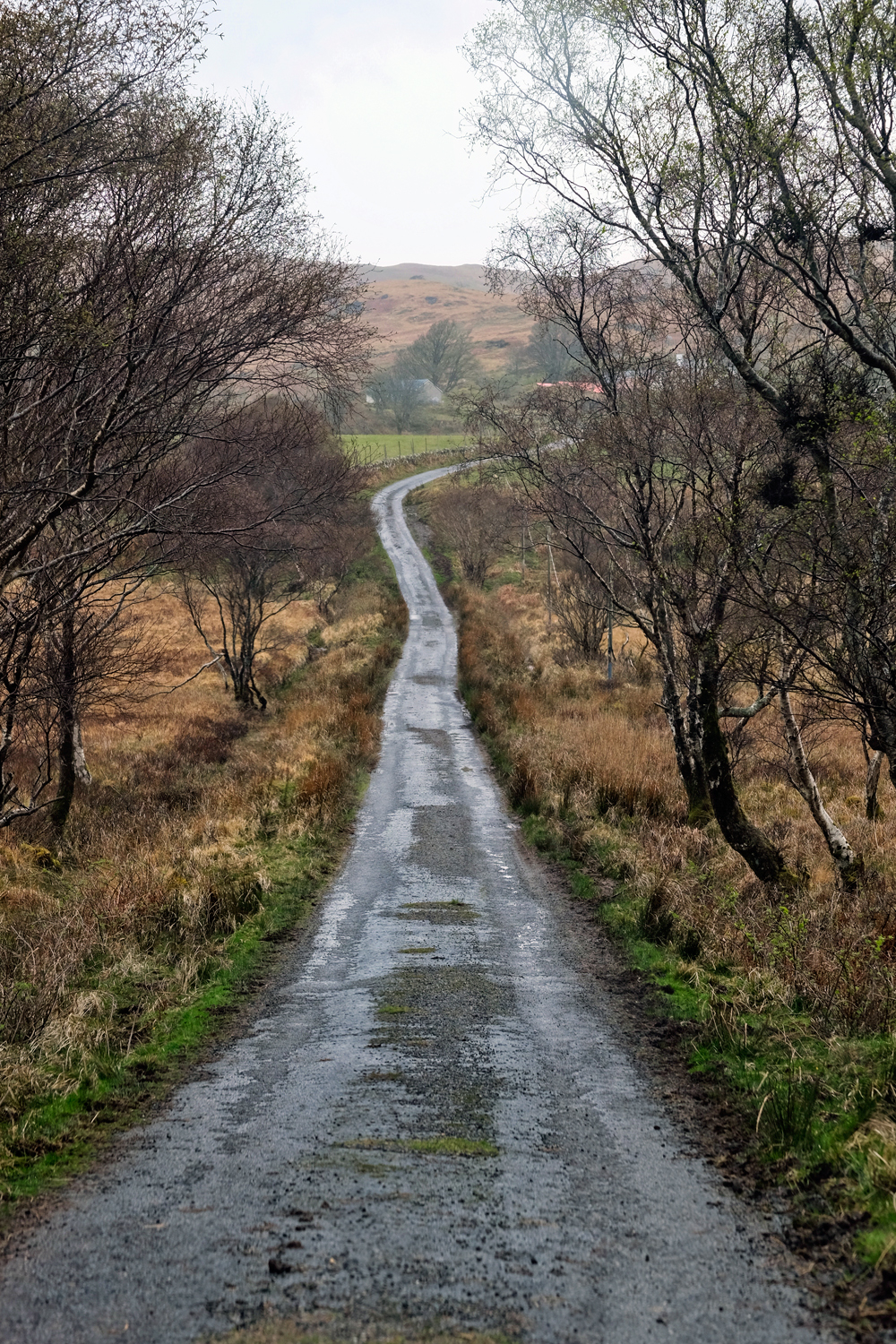 We meandered along these small roads using Google maps to guide us to points of interest.
We meandered along these small roads using Google maps to guide us to points of interest.
 After a long drive in the rain on tiny roads, we reached a small valley rimmed with low clouds and this austere church.
After a long drive in the rain on tiny roads, we reached a small valley rimmed with low clouds and this austere church.
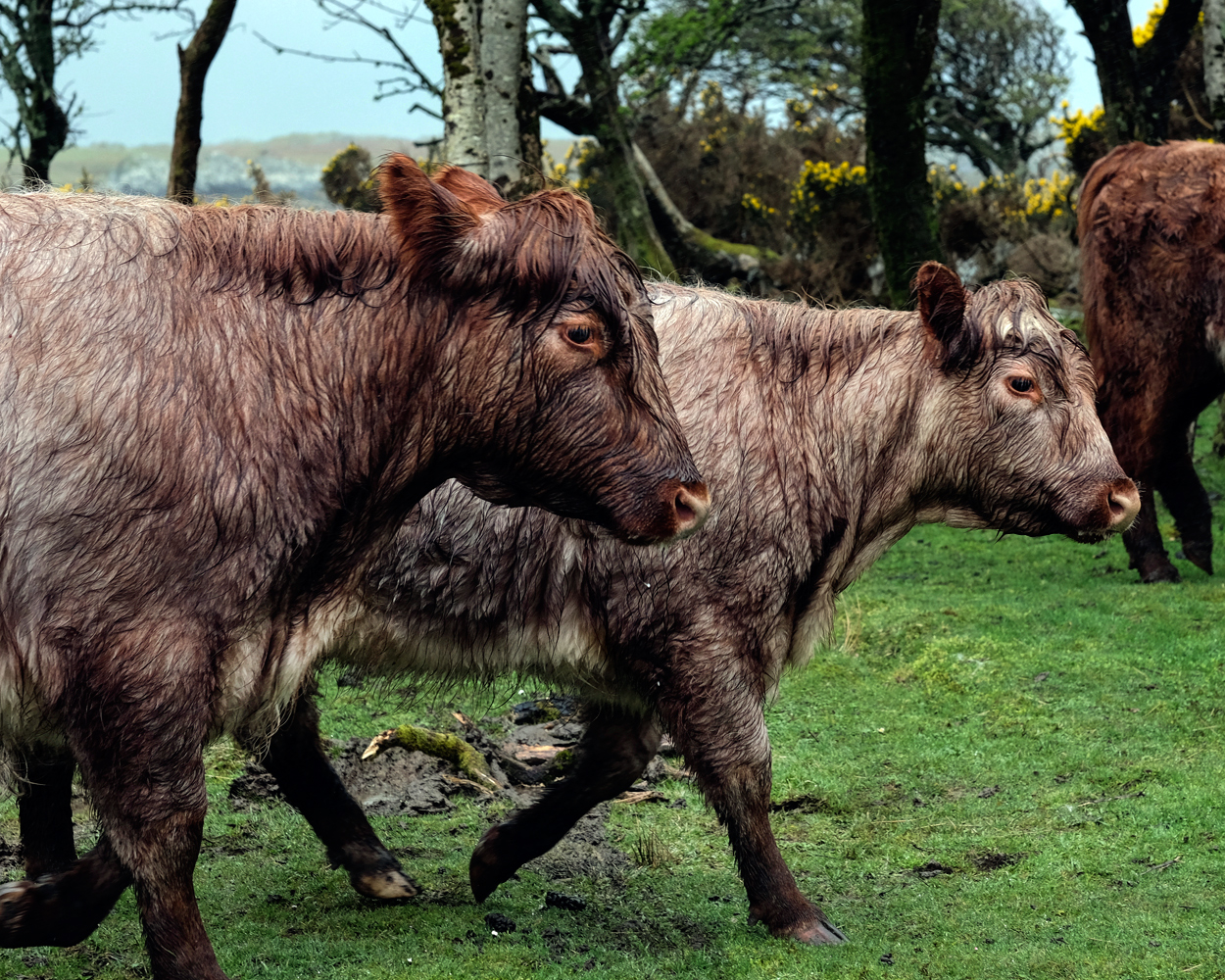 The rain came and went on all days. These cattle were very wet!
The rain came and went on all days. These cattle were very wet!
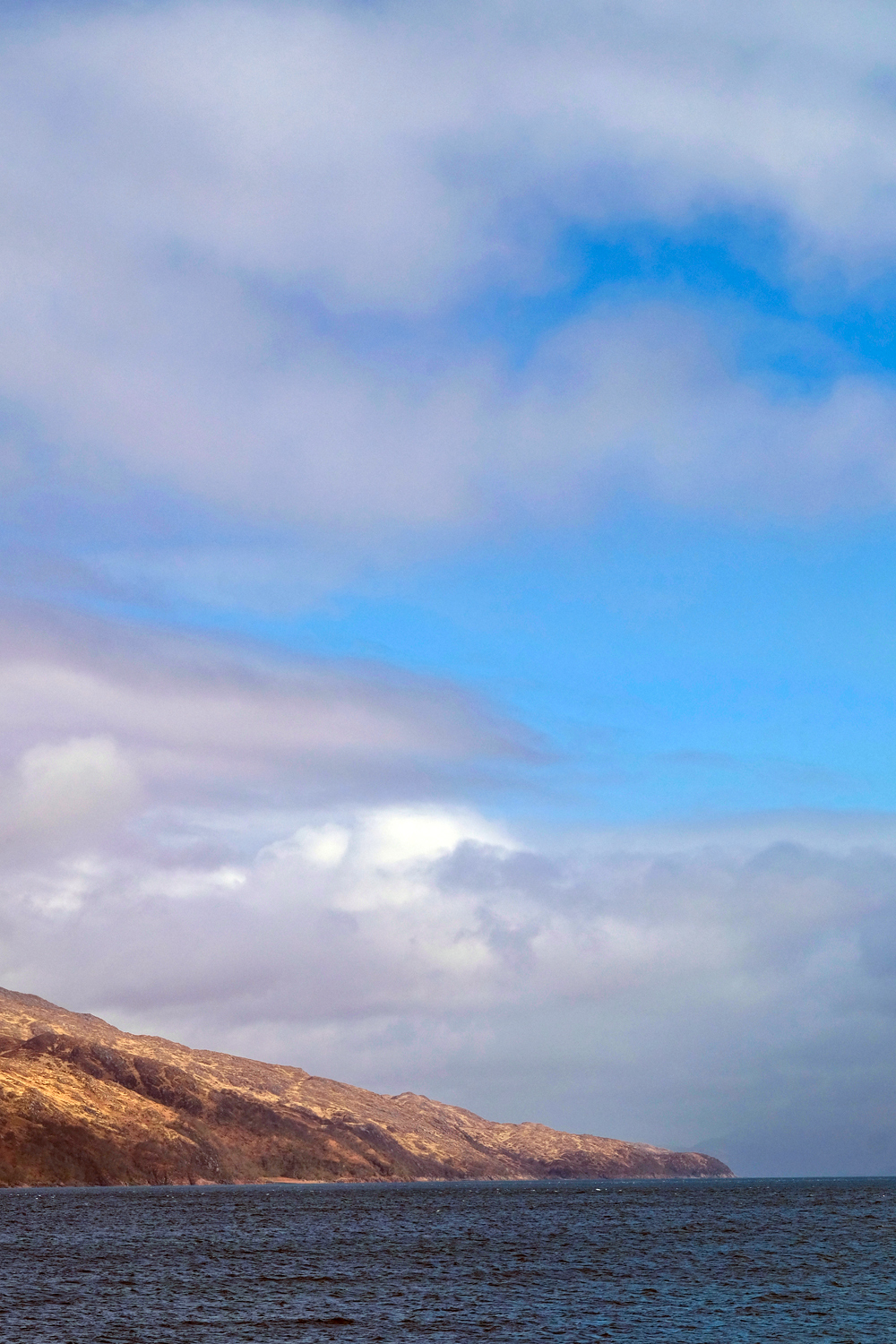 The morning we were leaving the Isle of Mull the weather turned wonderful . . . of course!
The morning we were leaving the Isle of Mull the weather turned wonderful . . . of course!
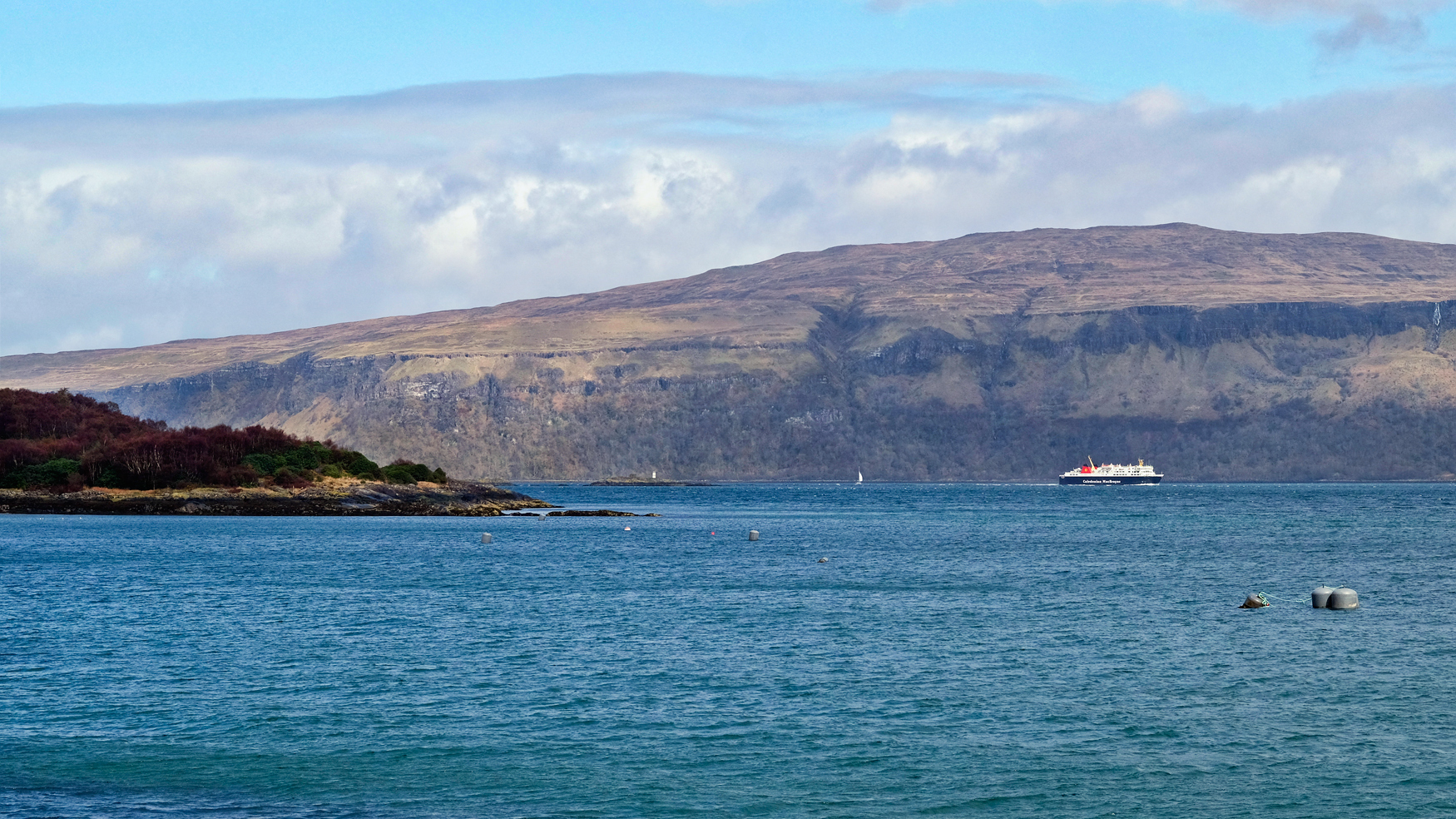 Ships to and from the Outer Hebrides pass through the Sound of Mull. We took one of these ferries there last year.
Ships to and from the Outer Hebrides pass through the Sound of Mull. We took one of these ferries there last year.
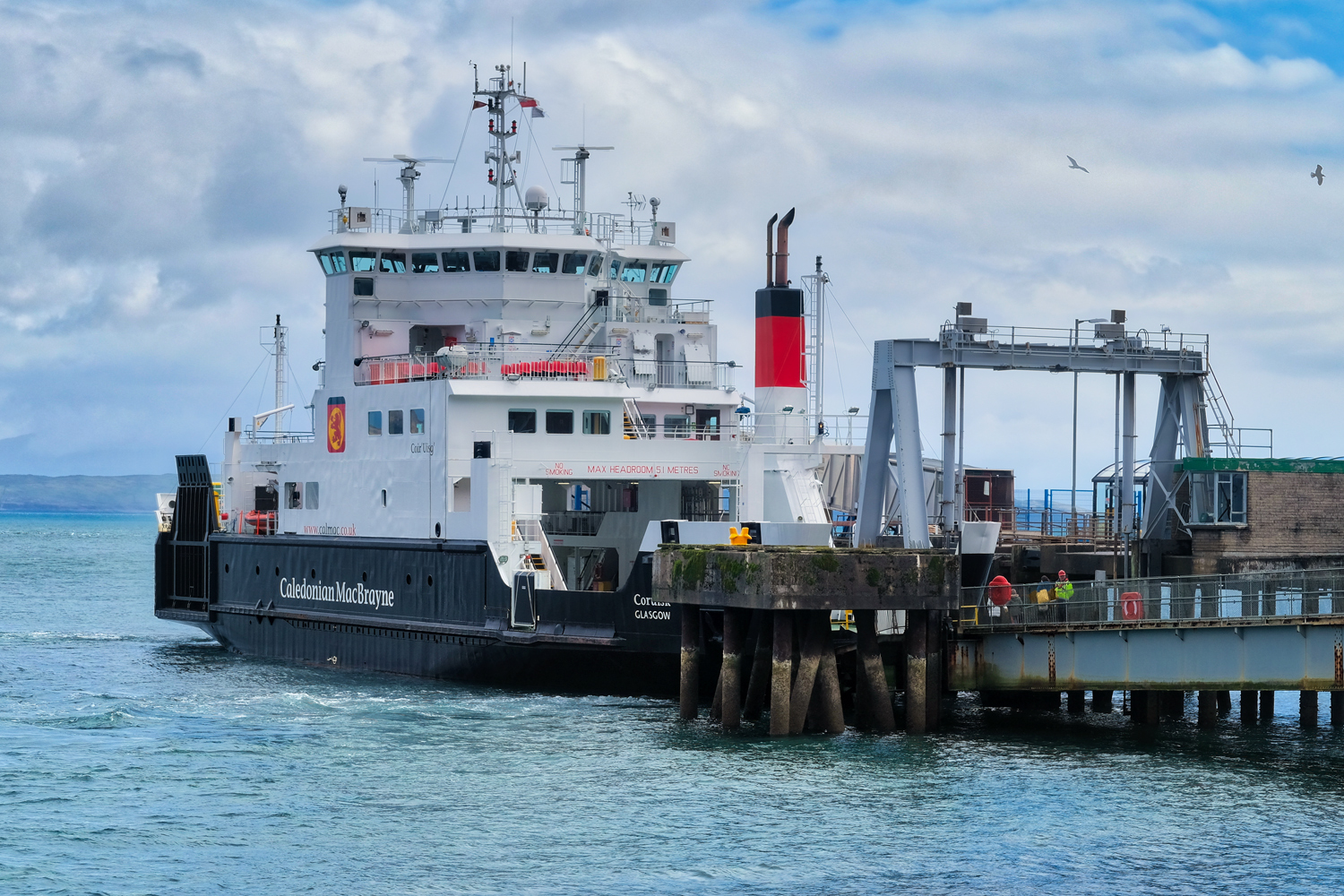 We boarded our ferry back to Oban on a beautiful morning.
We boarded our ferry back to Oban on a beautiful morning.
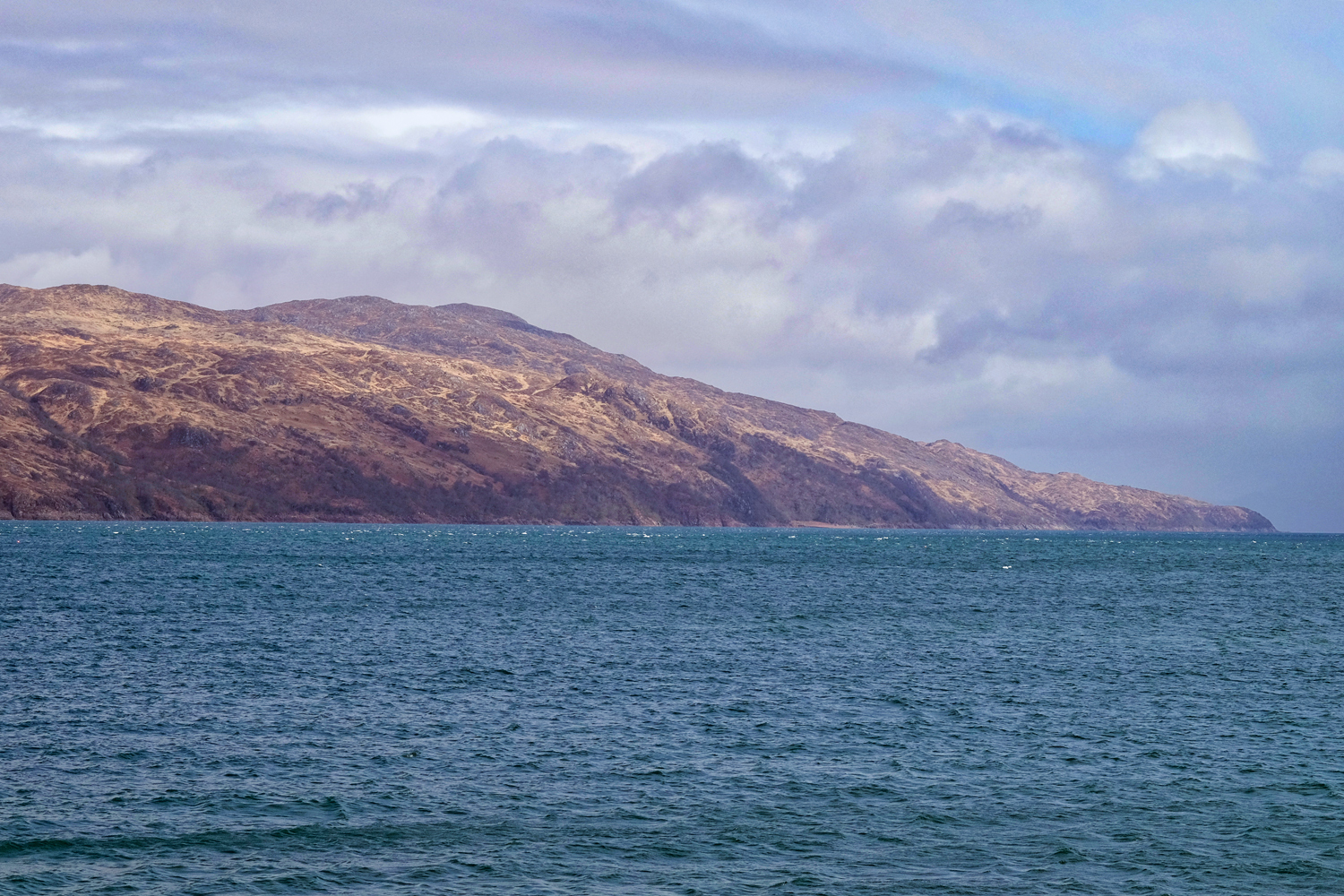 It was a smooth passage home.
It was a smooth passage home.
